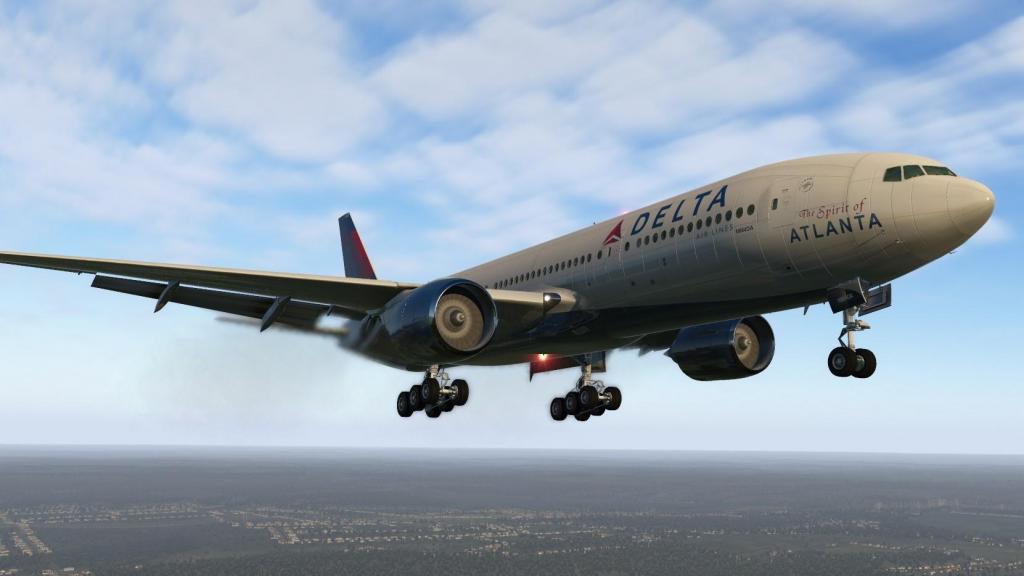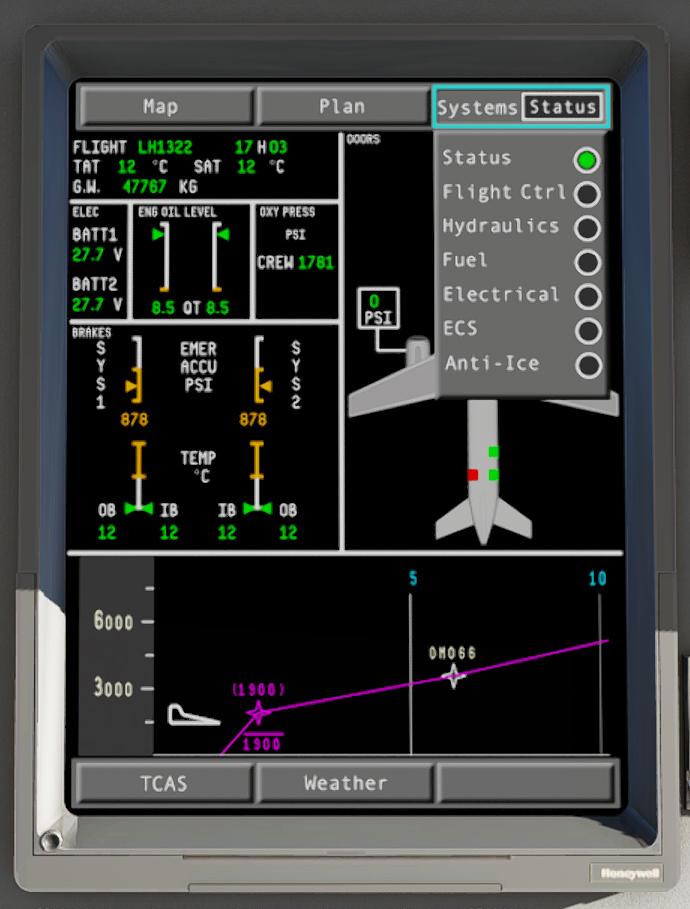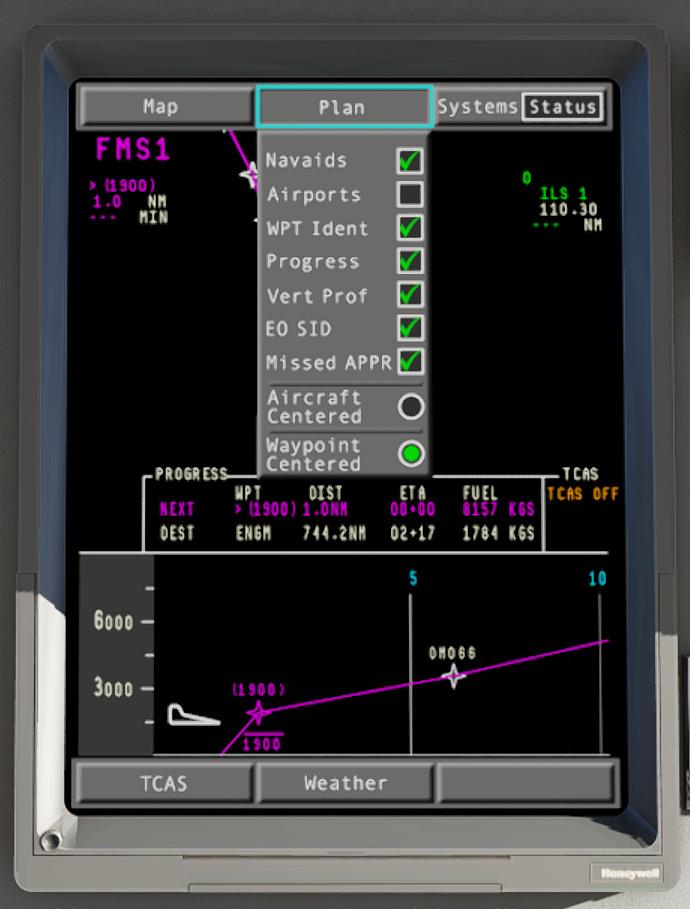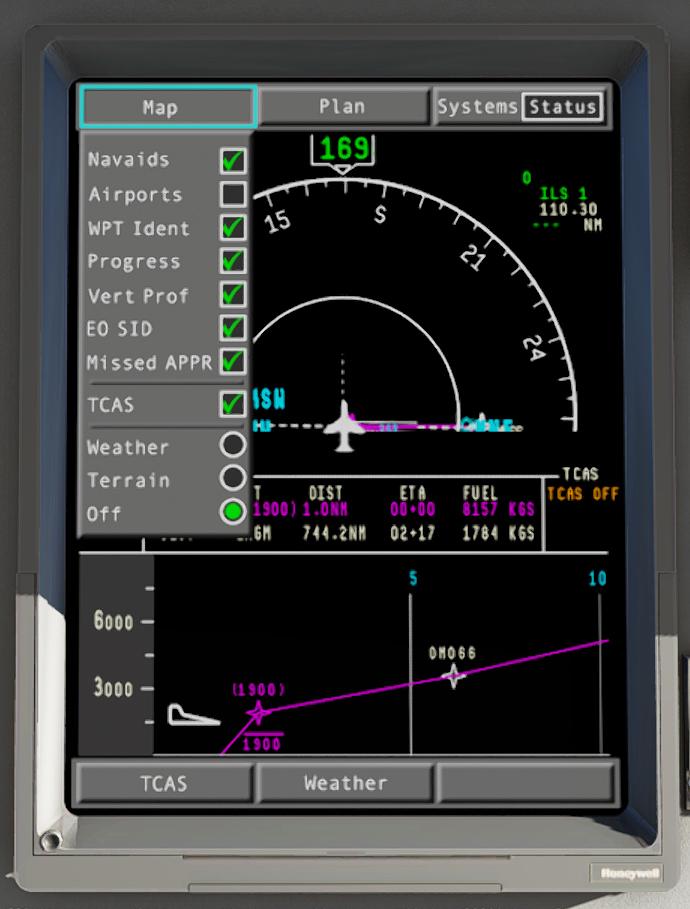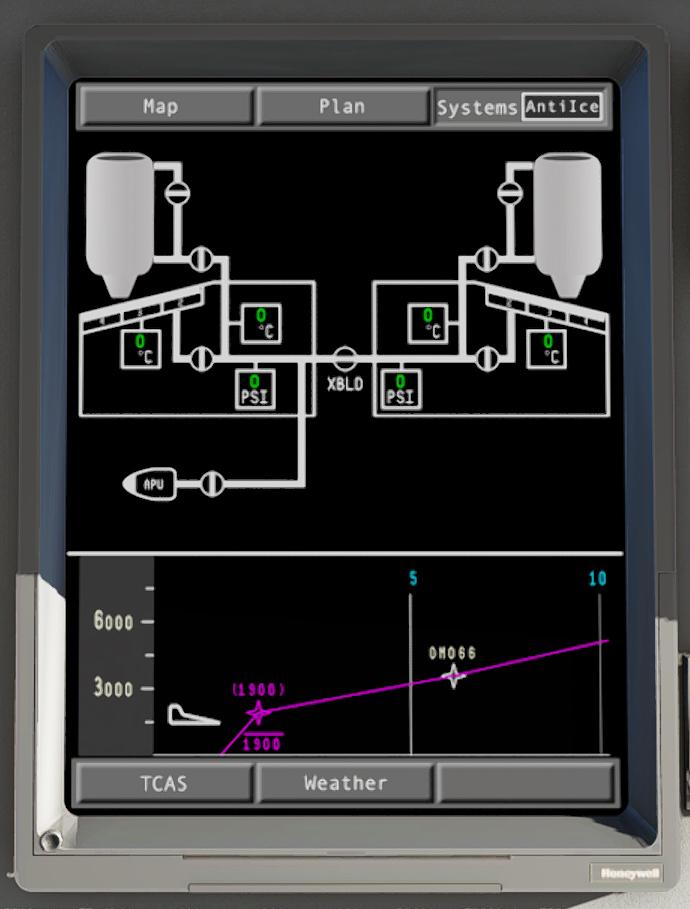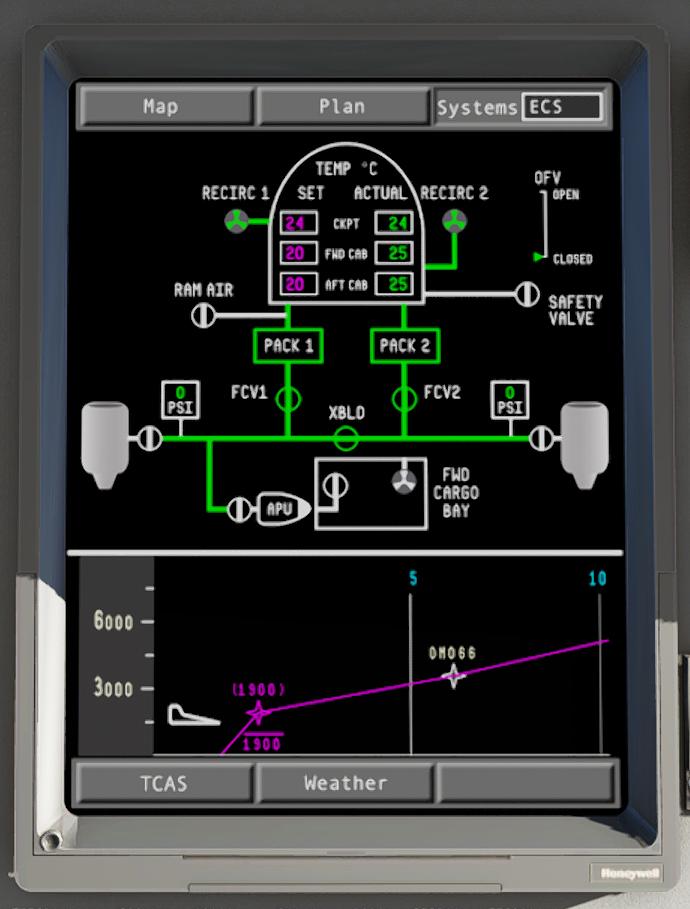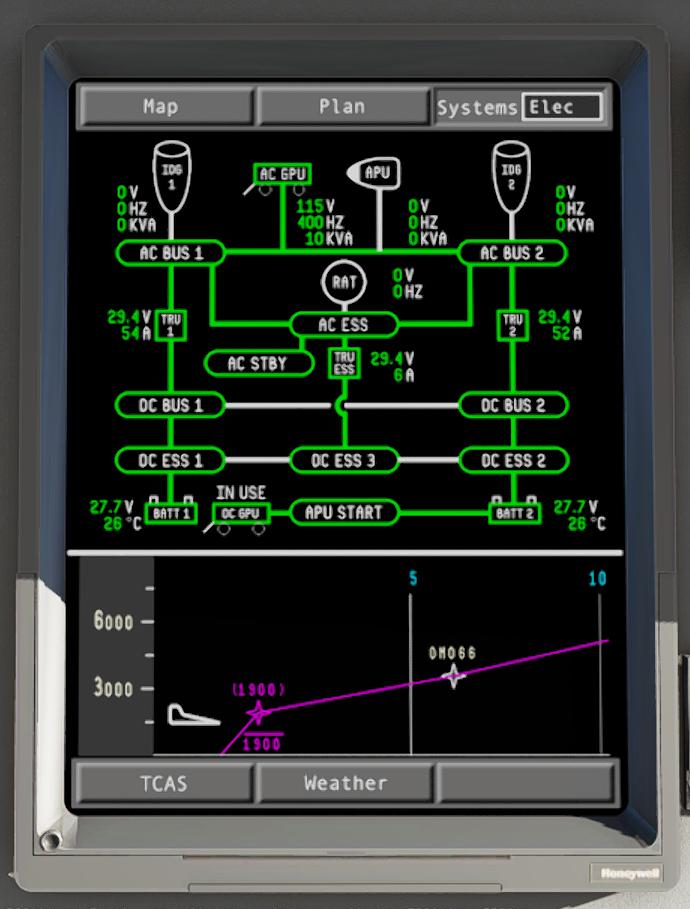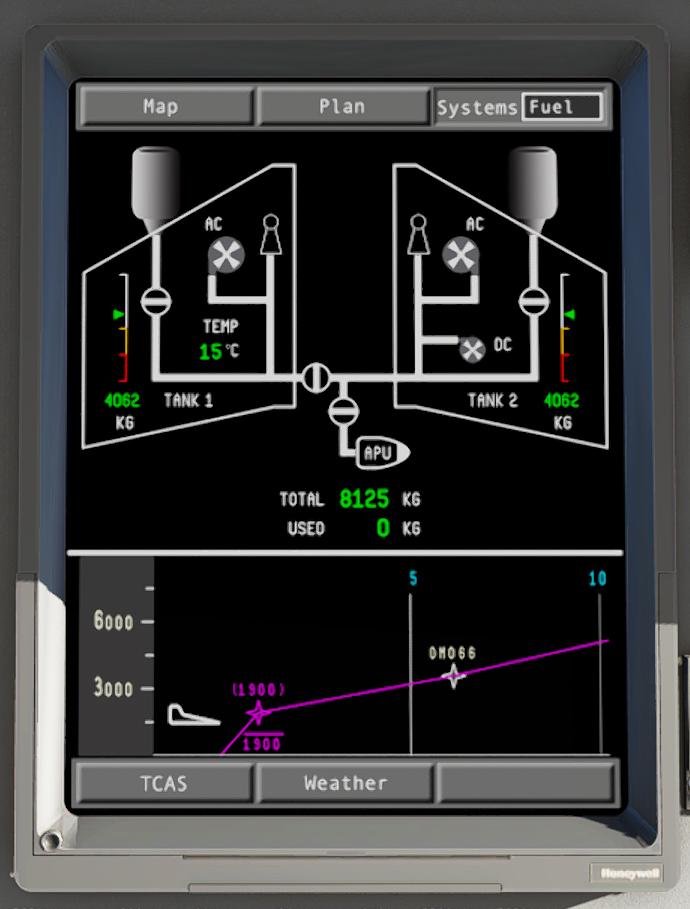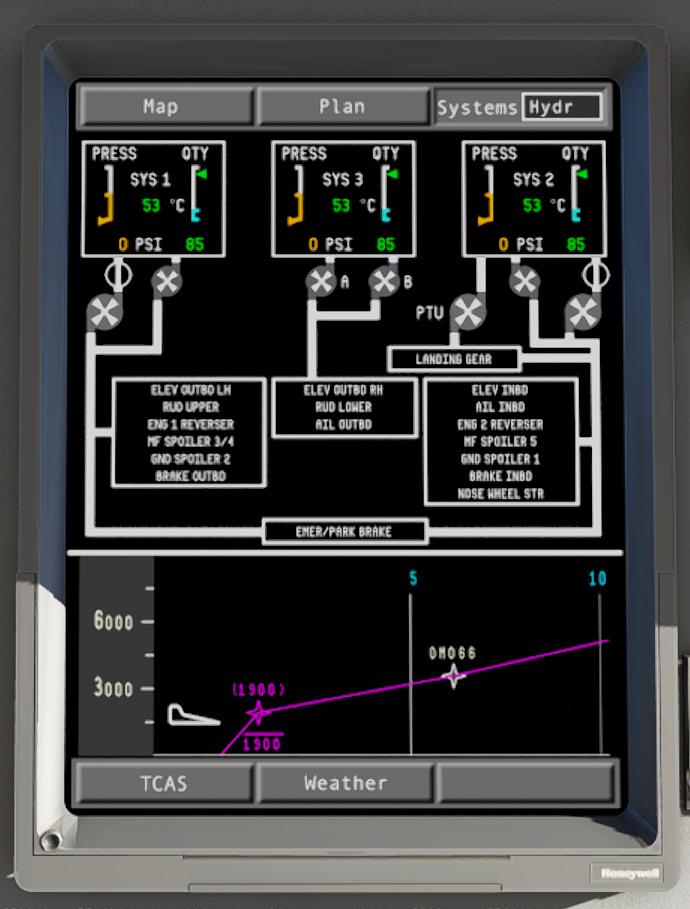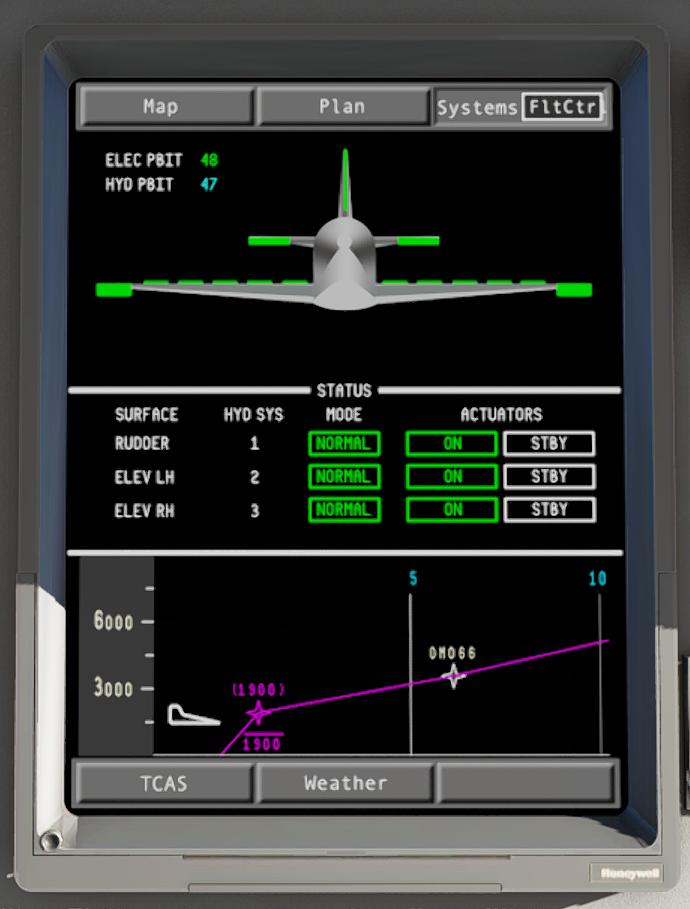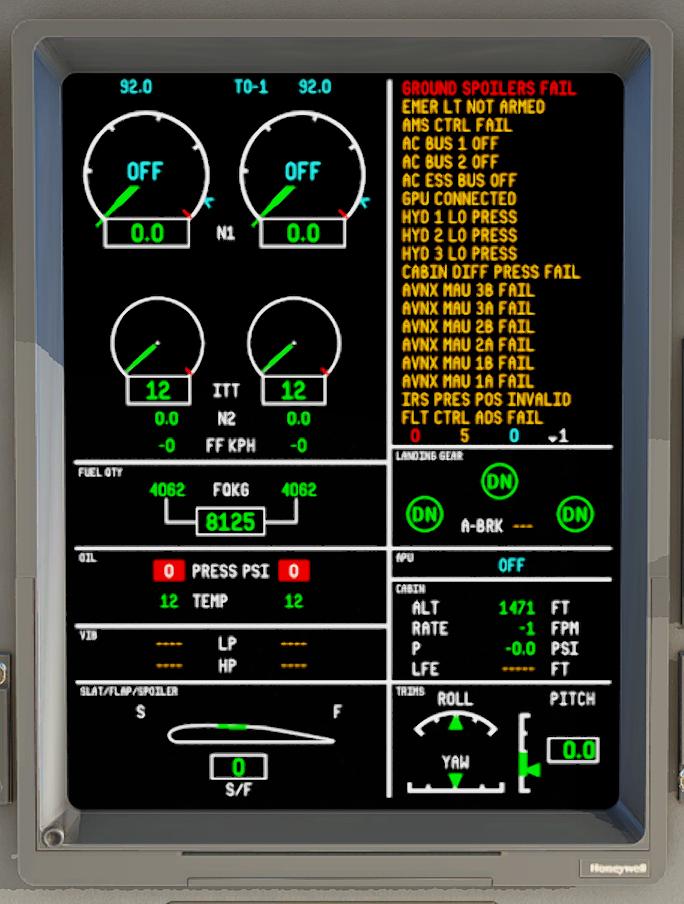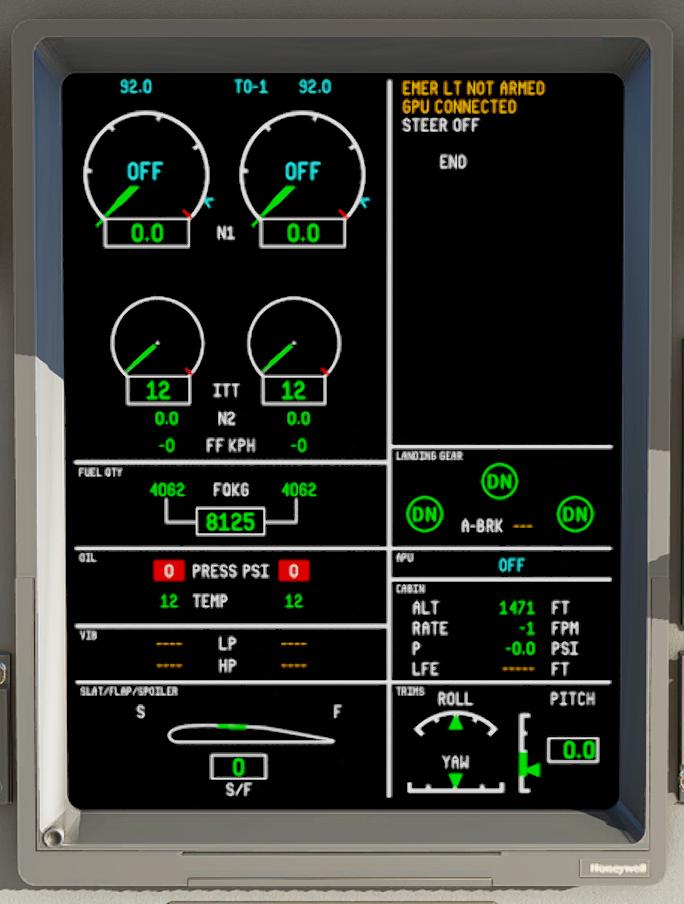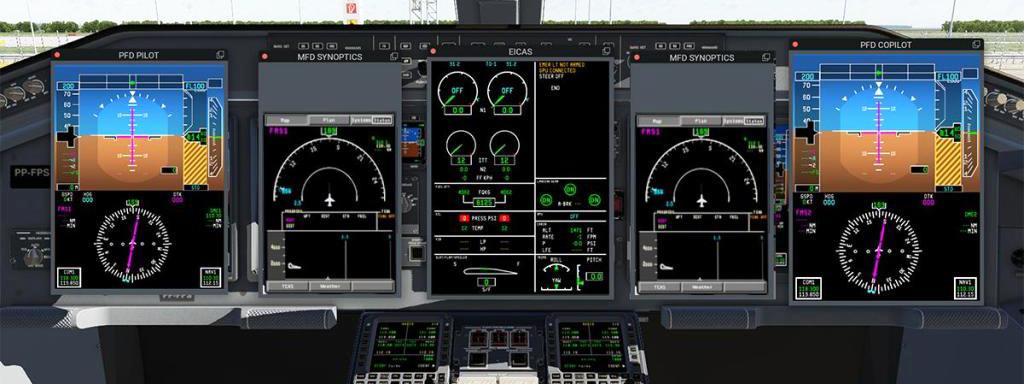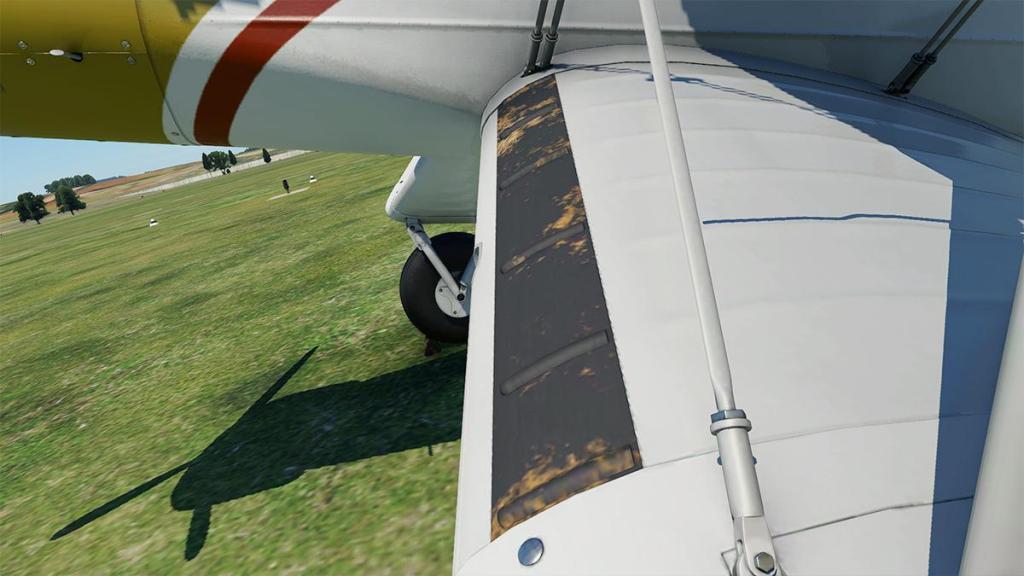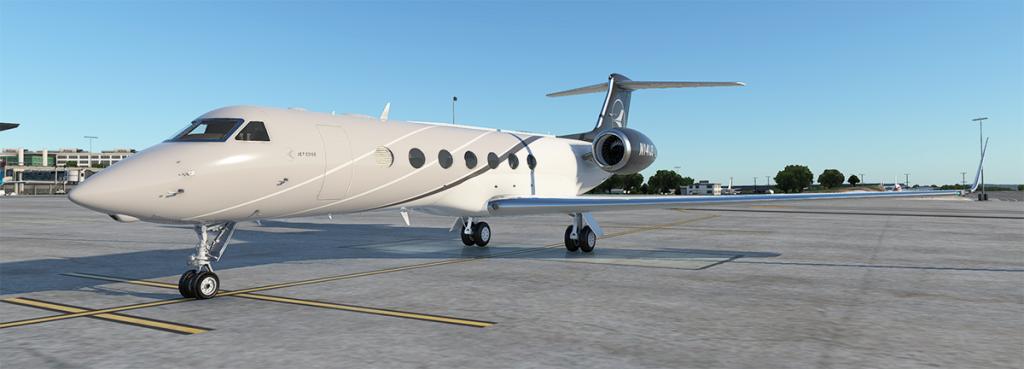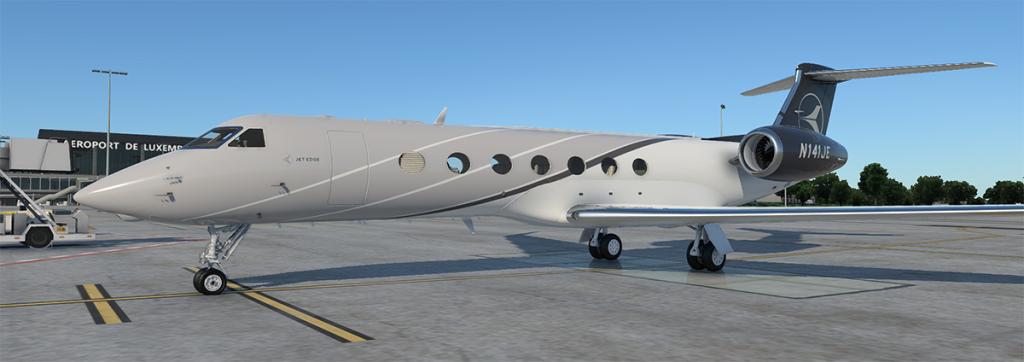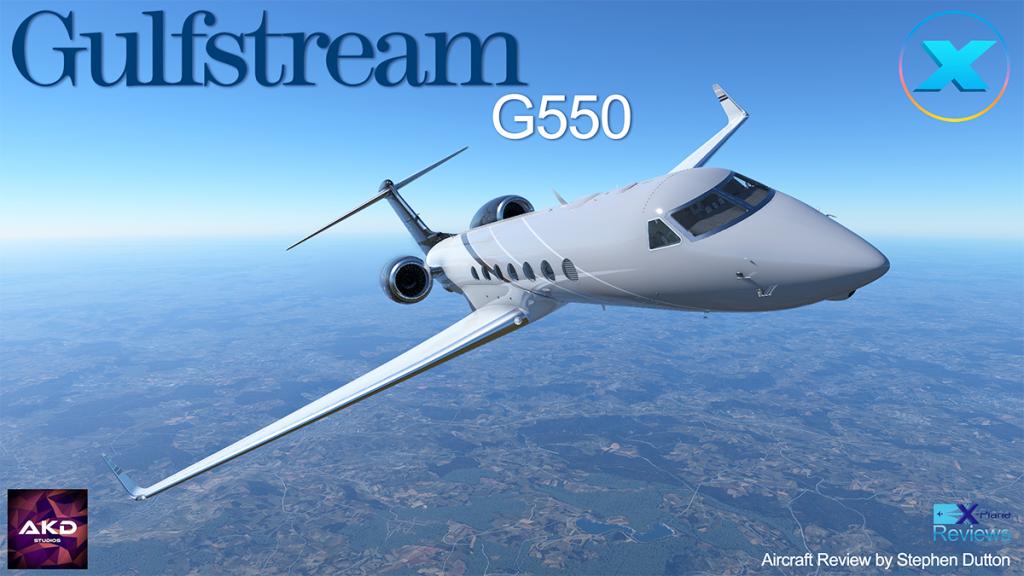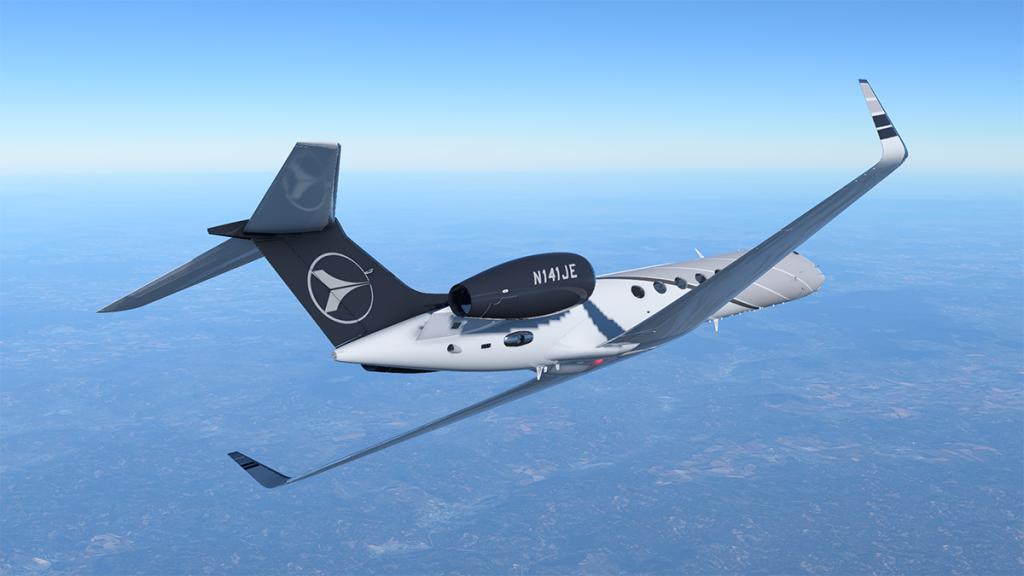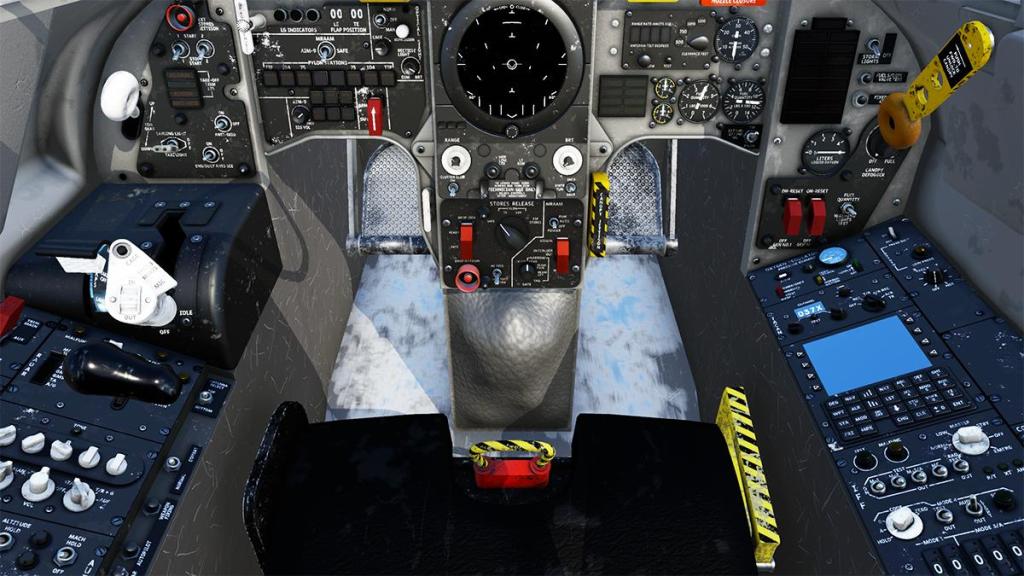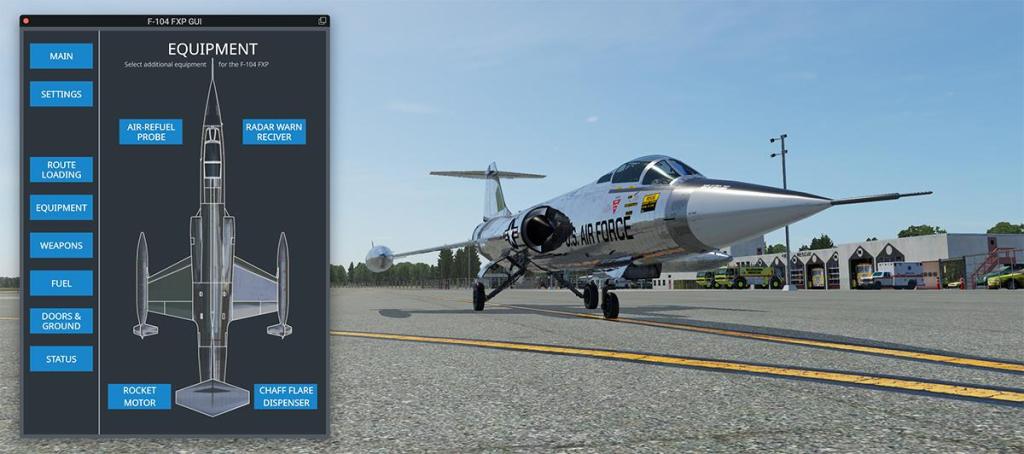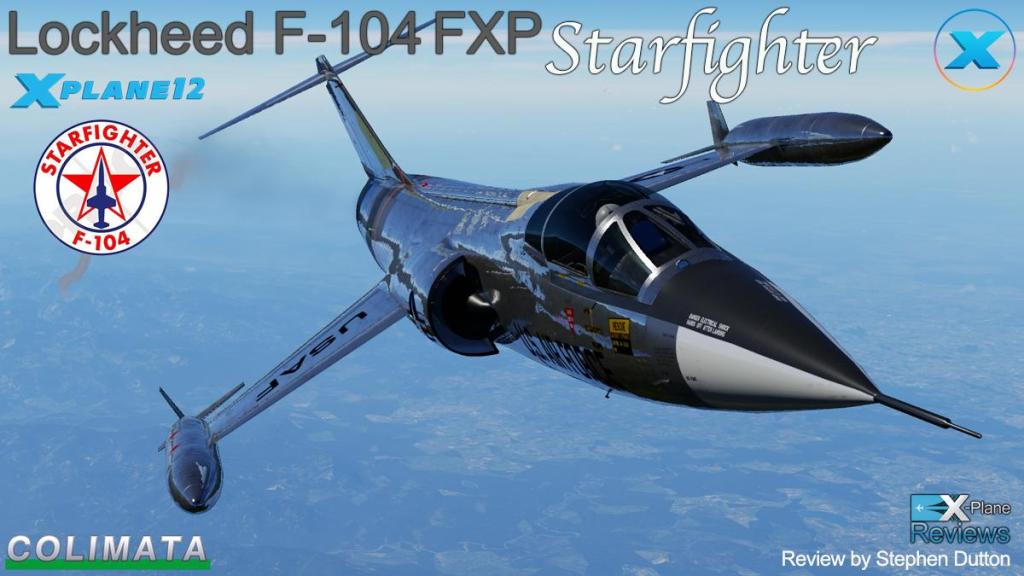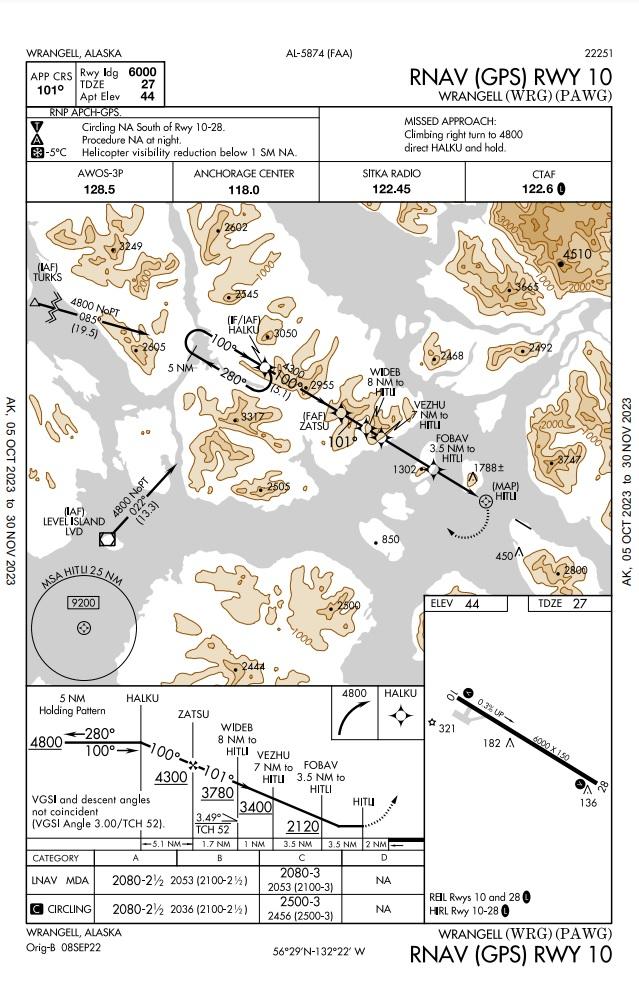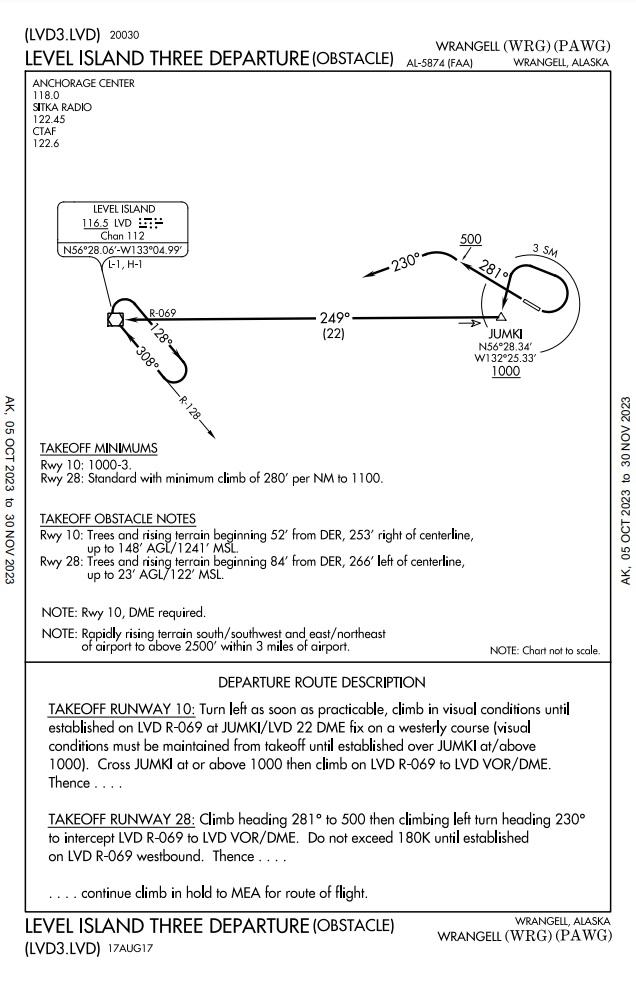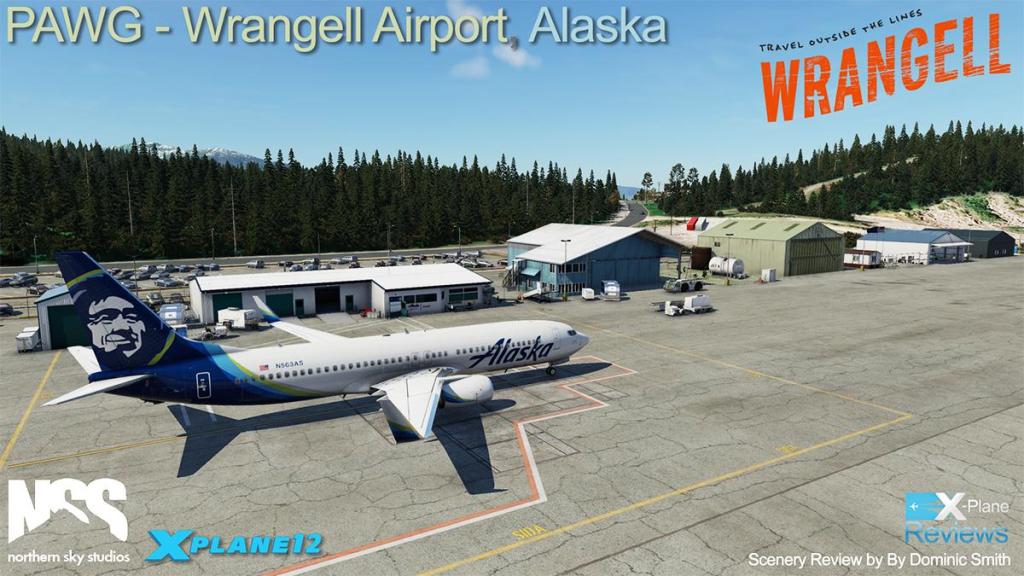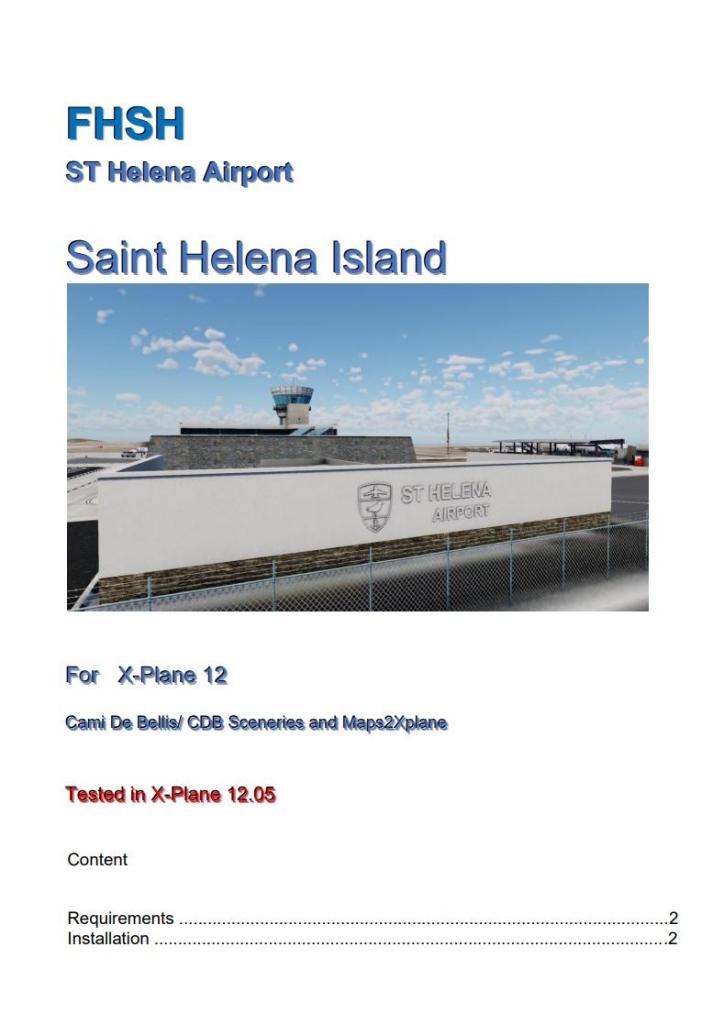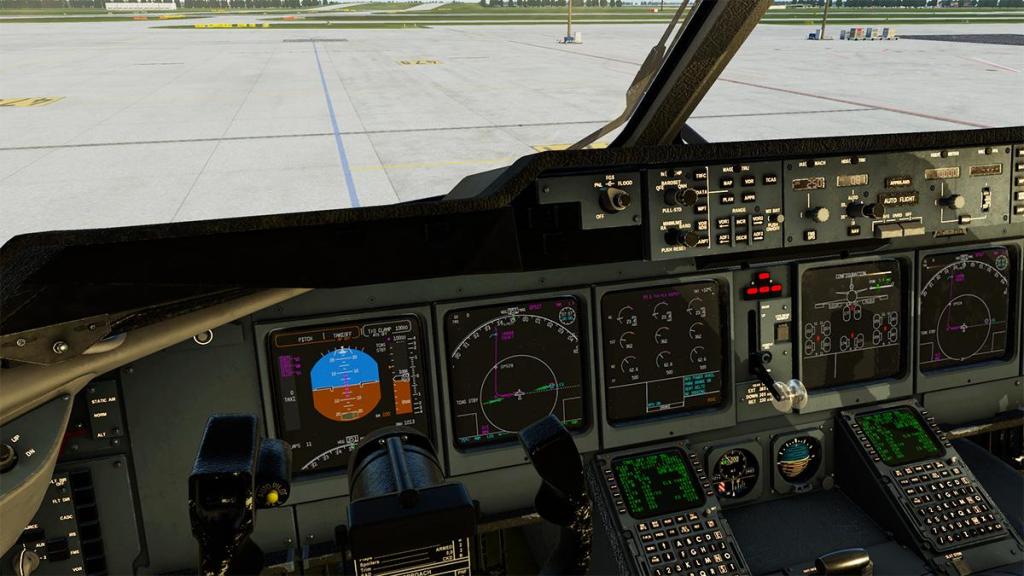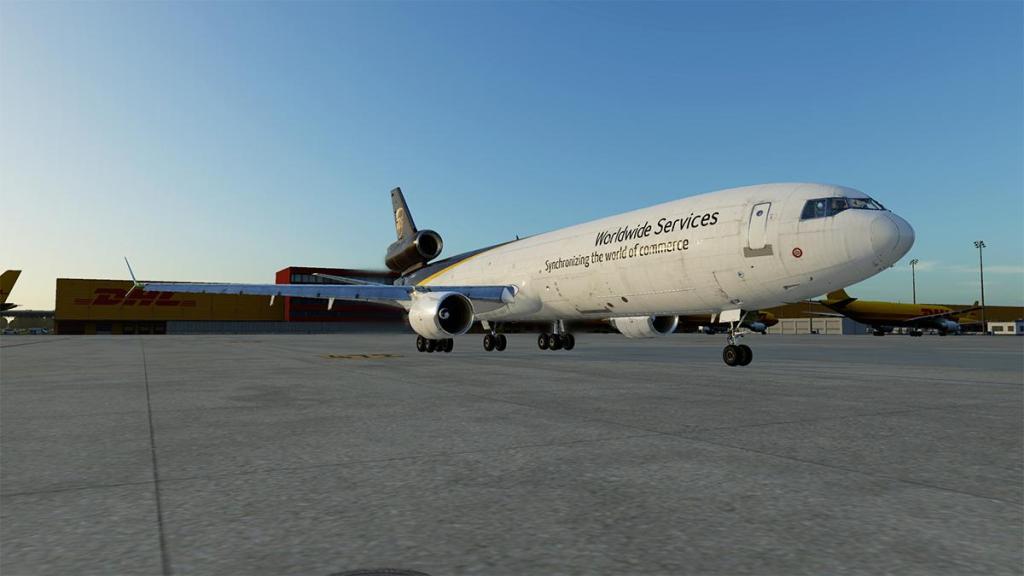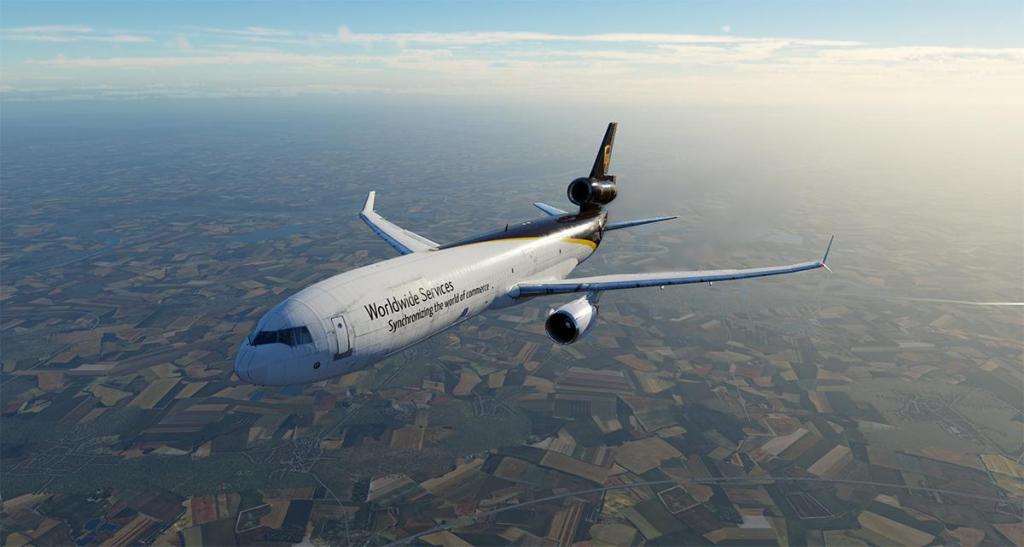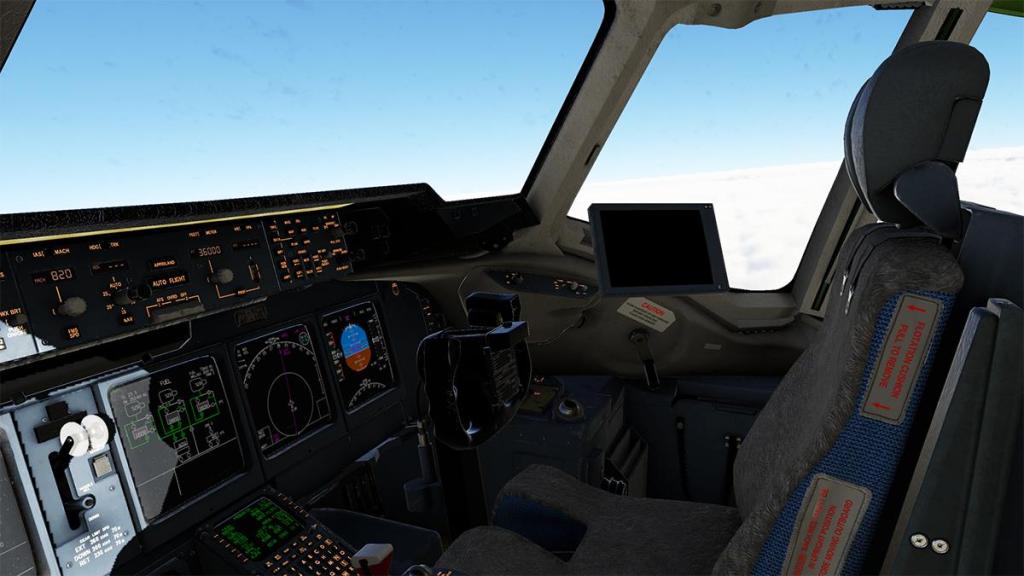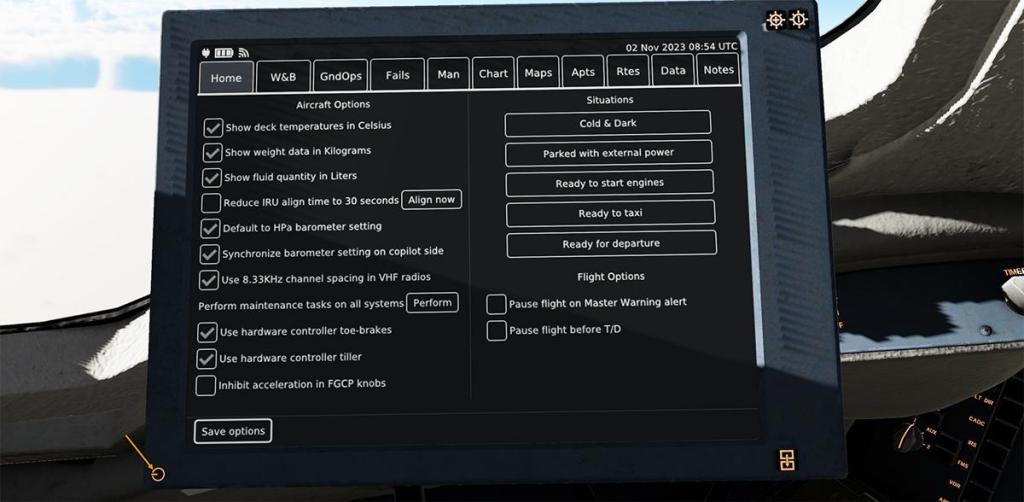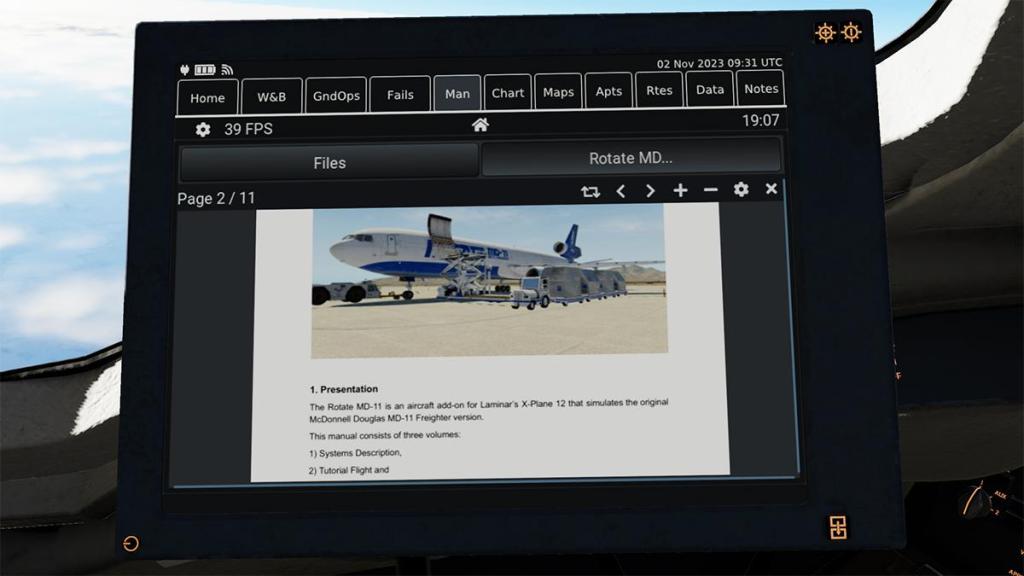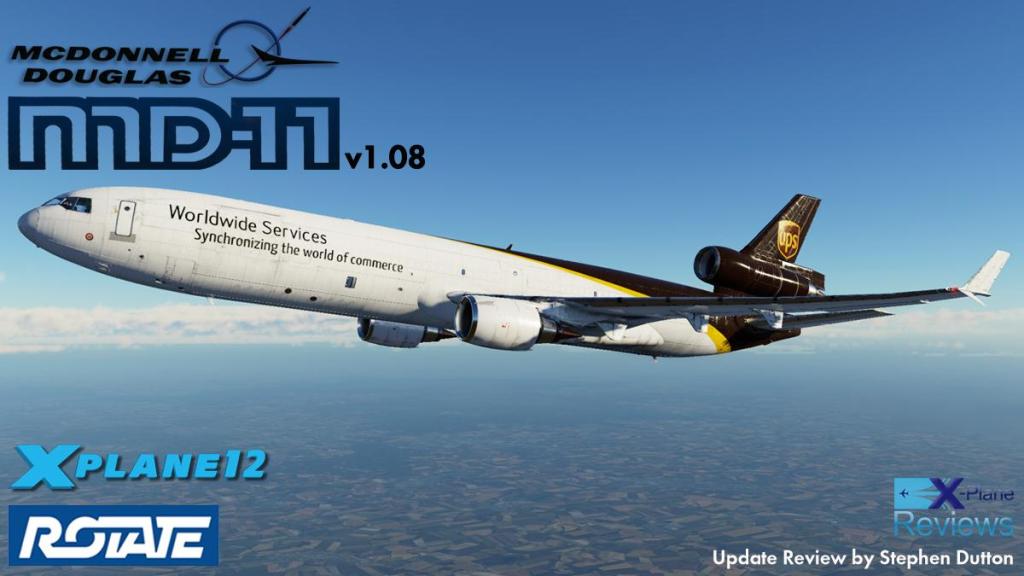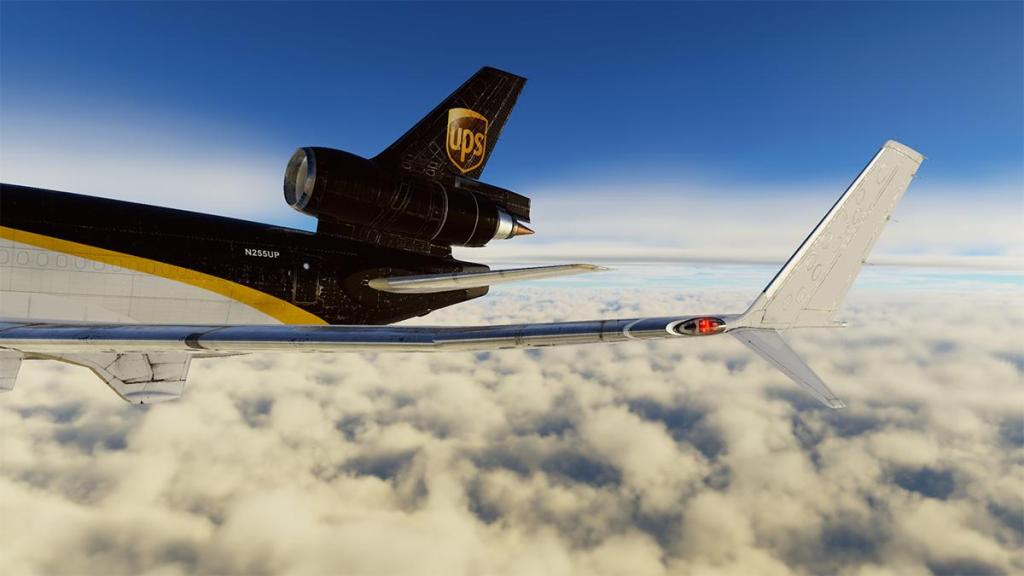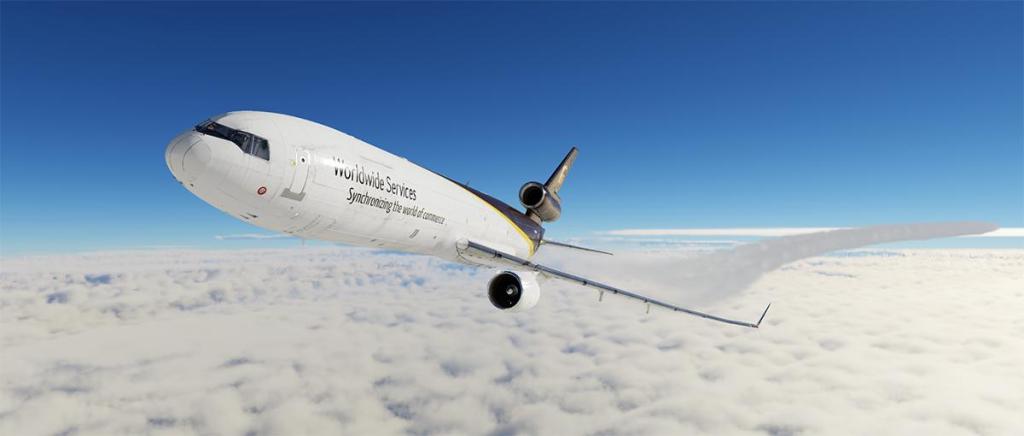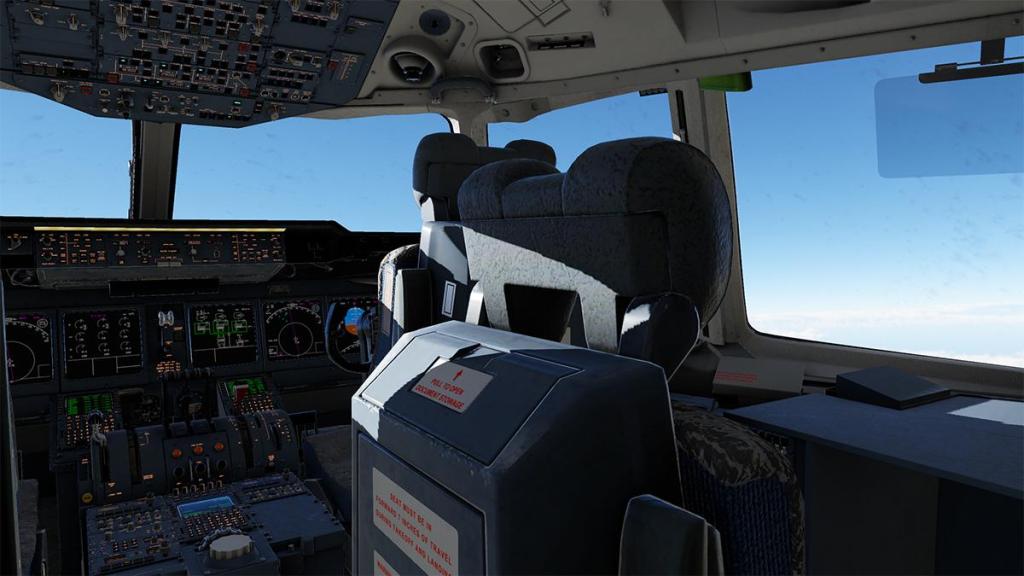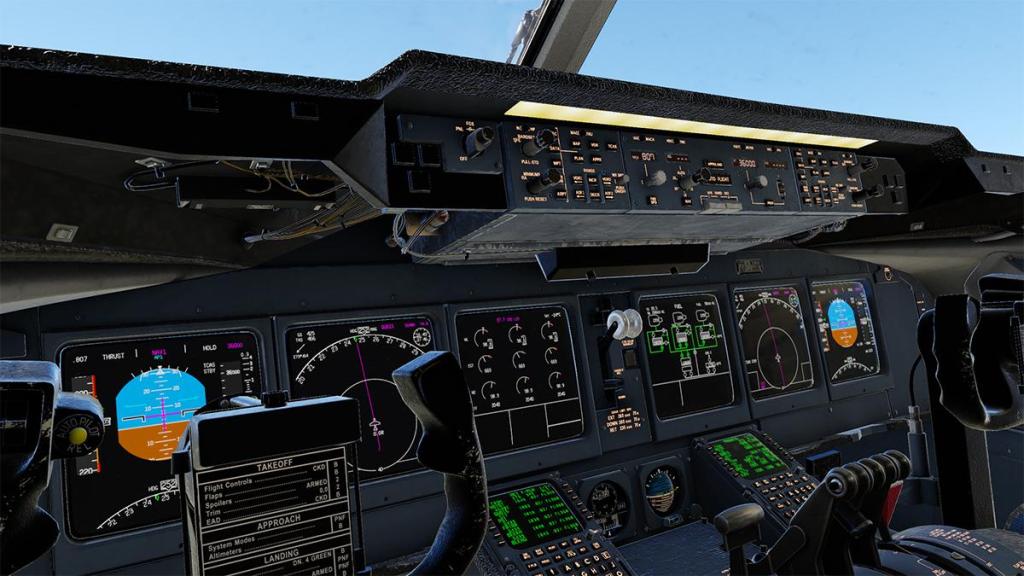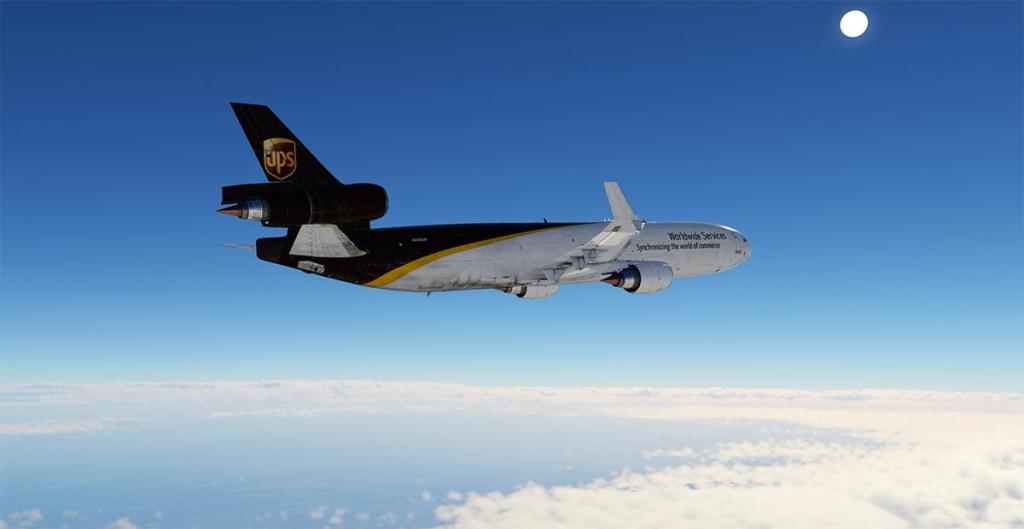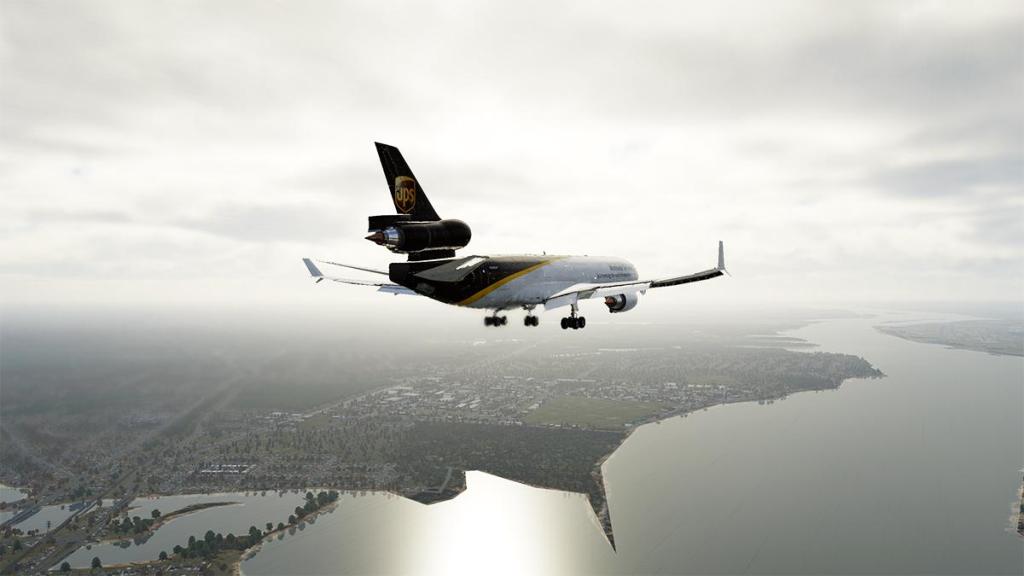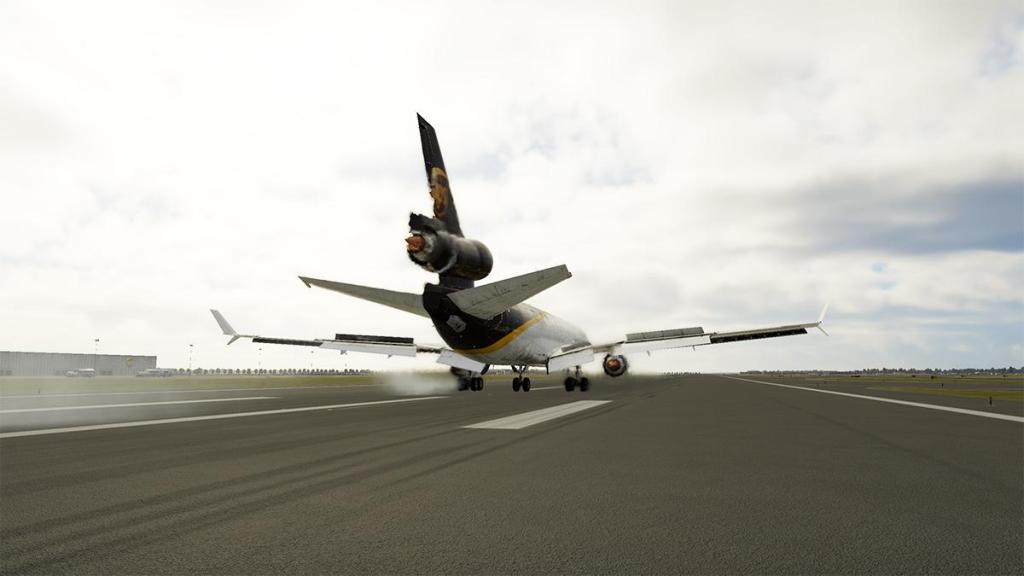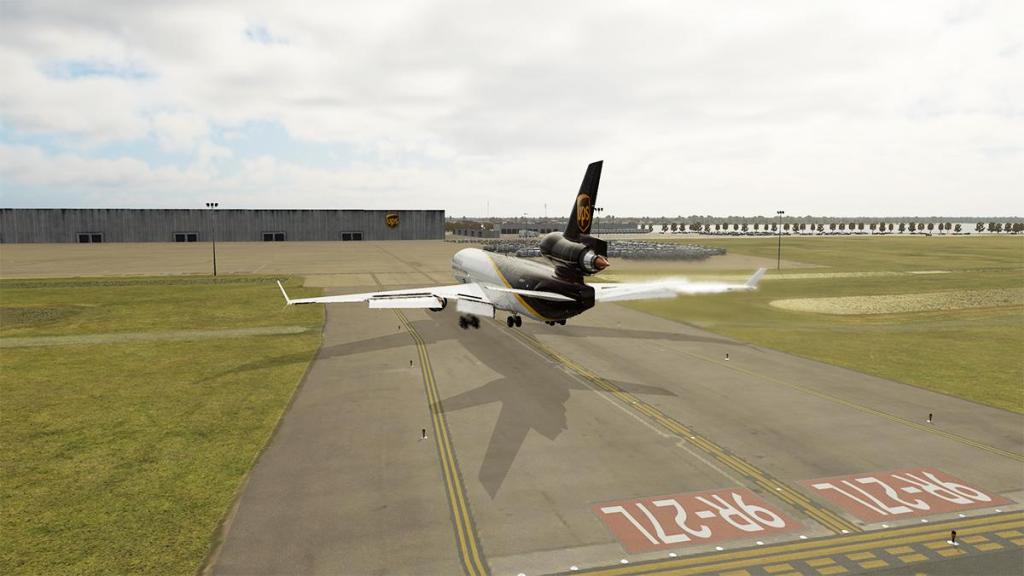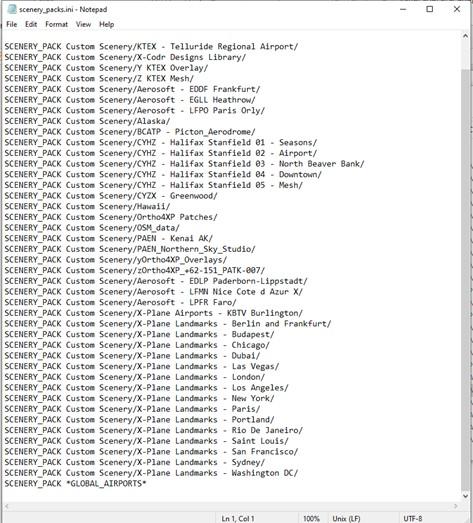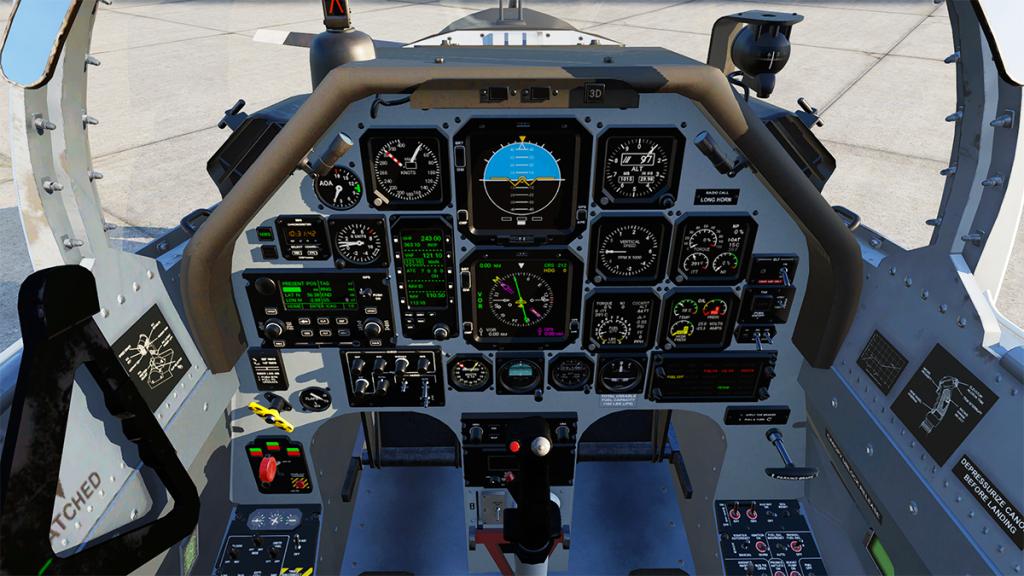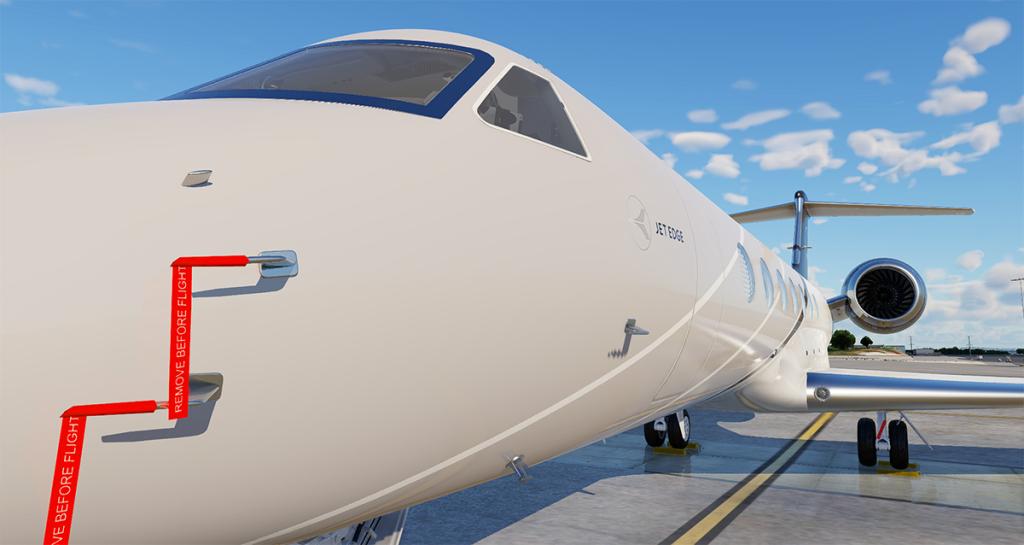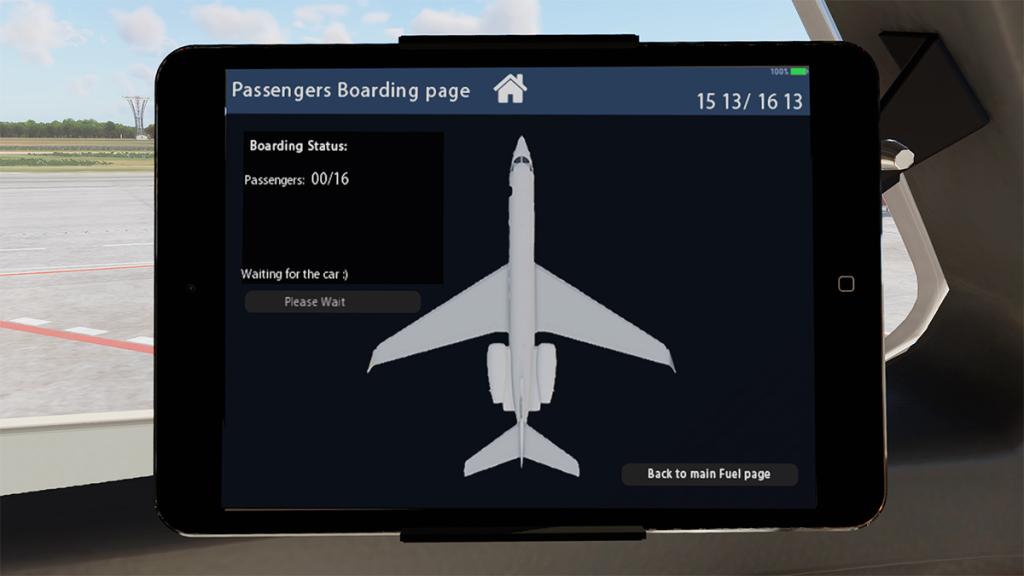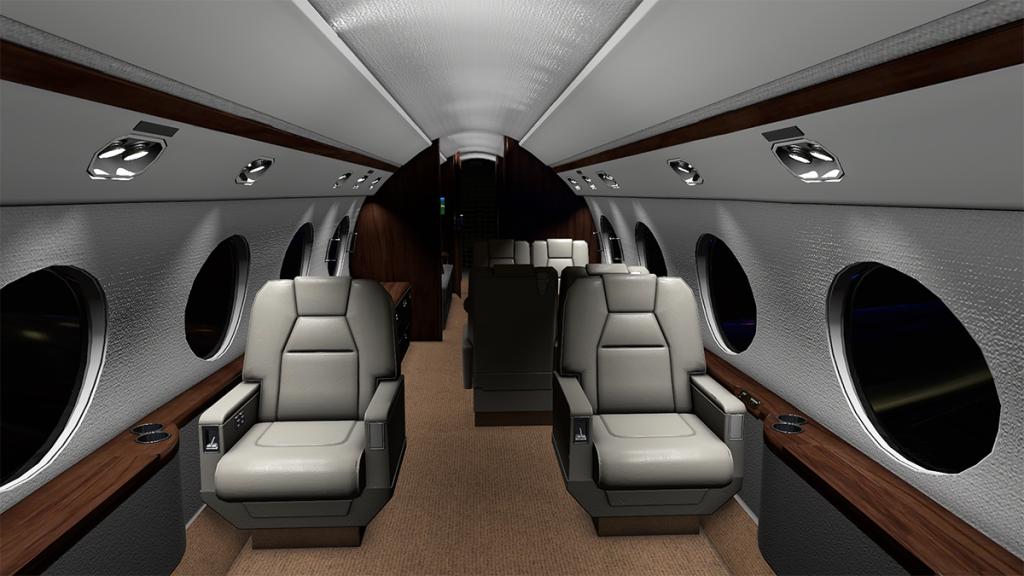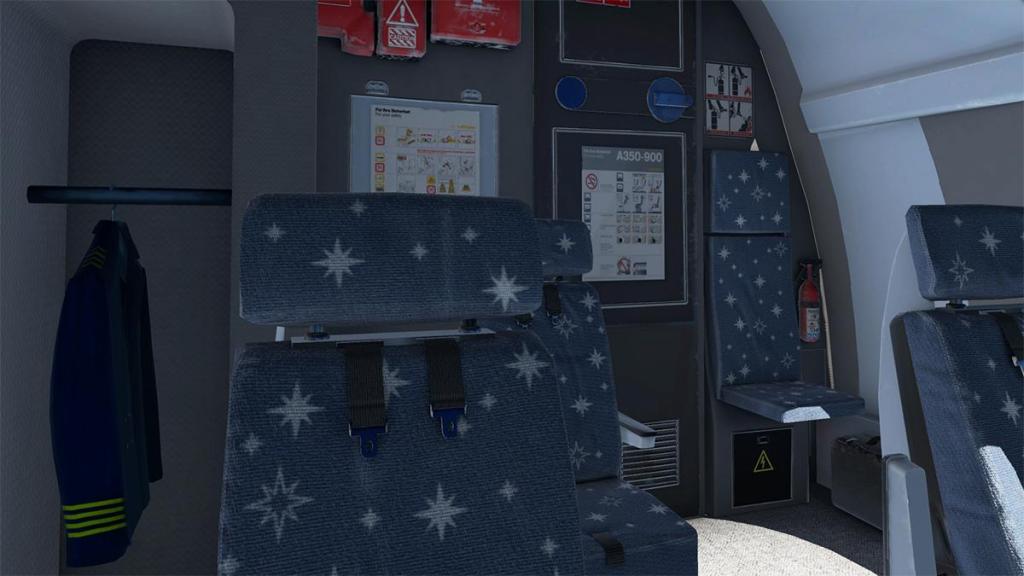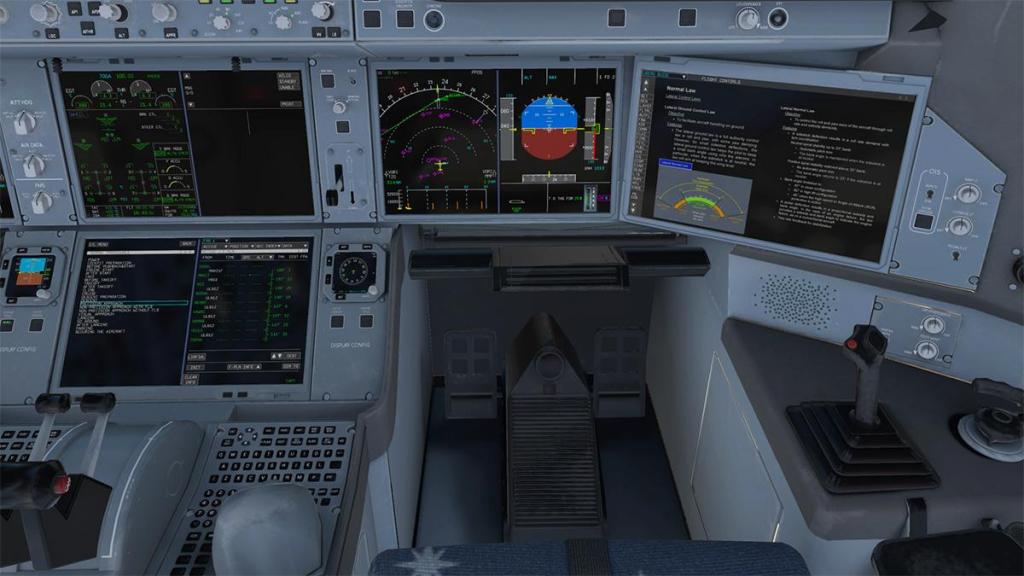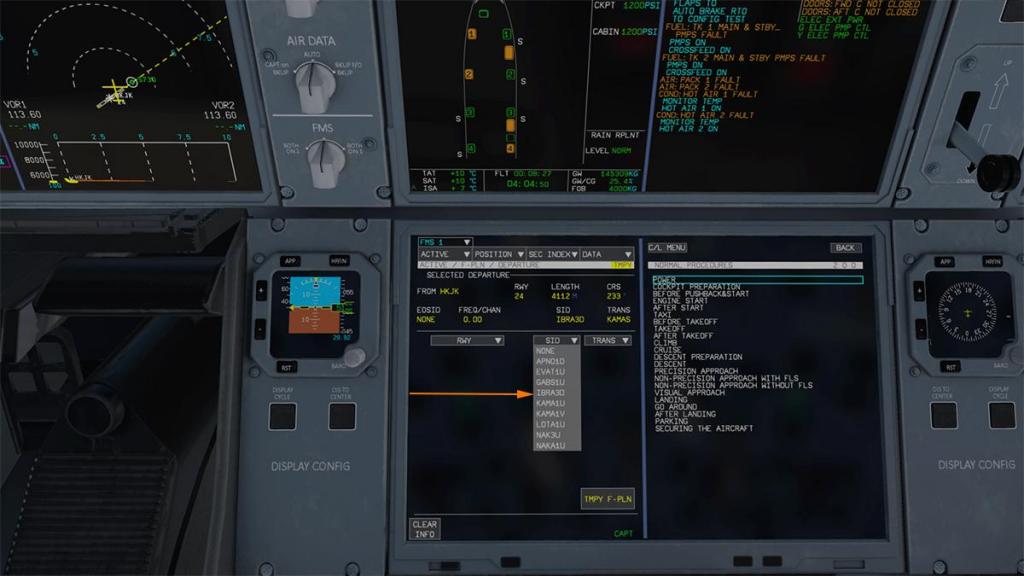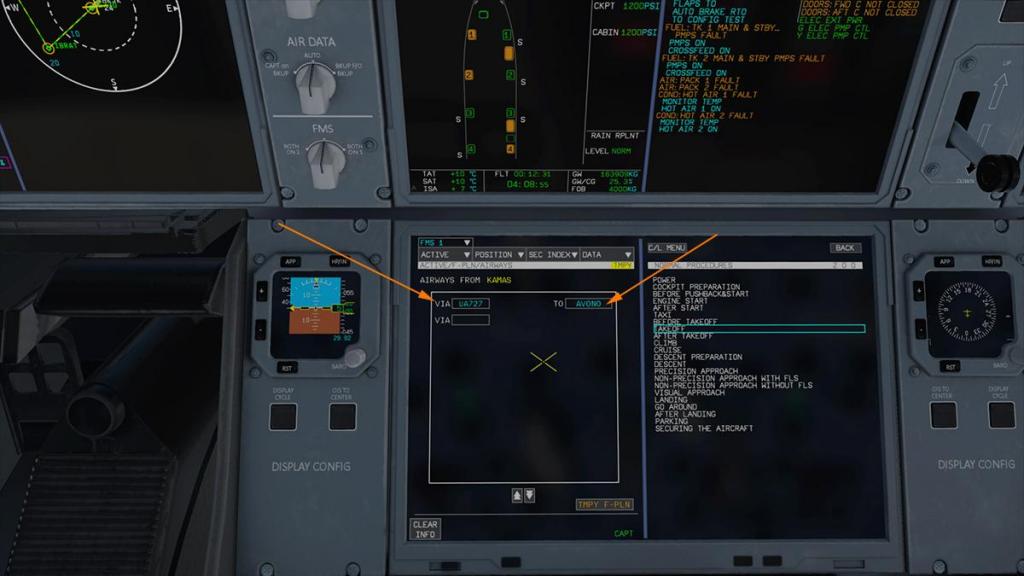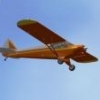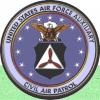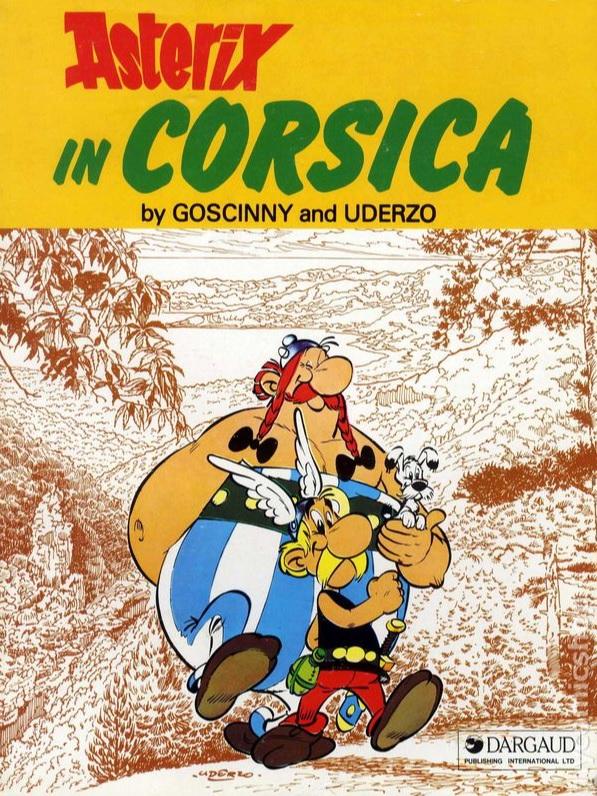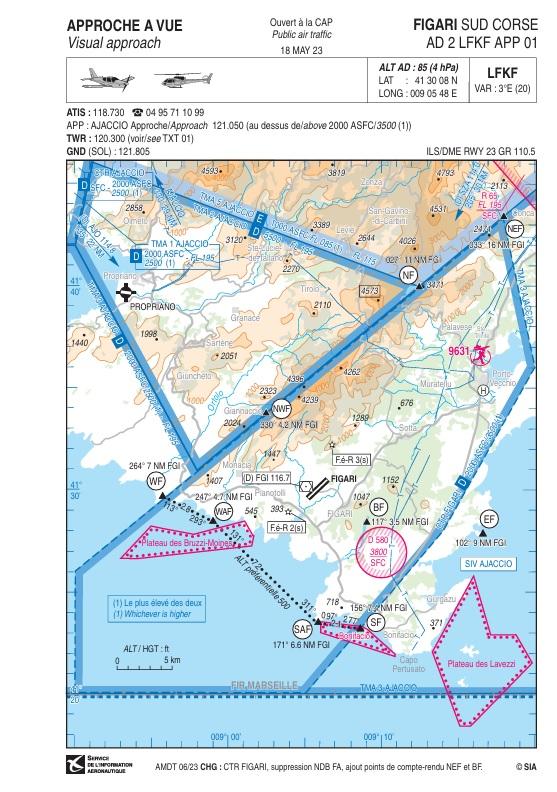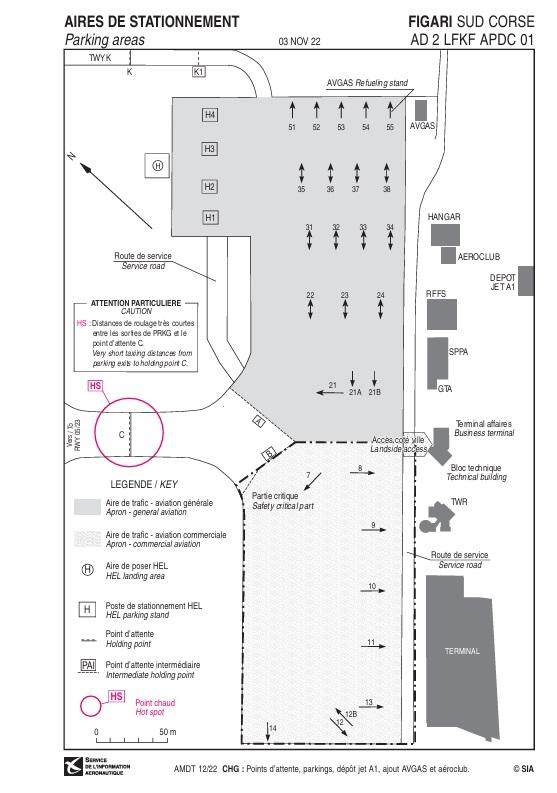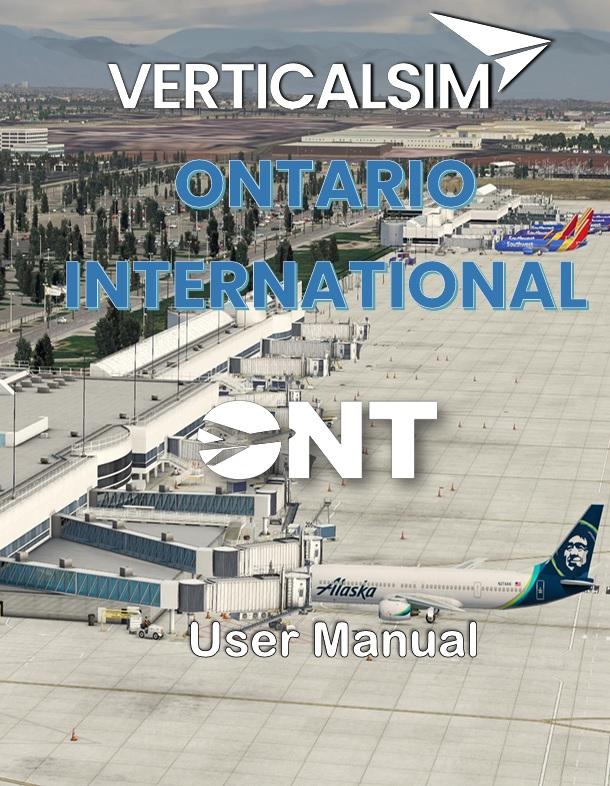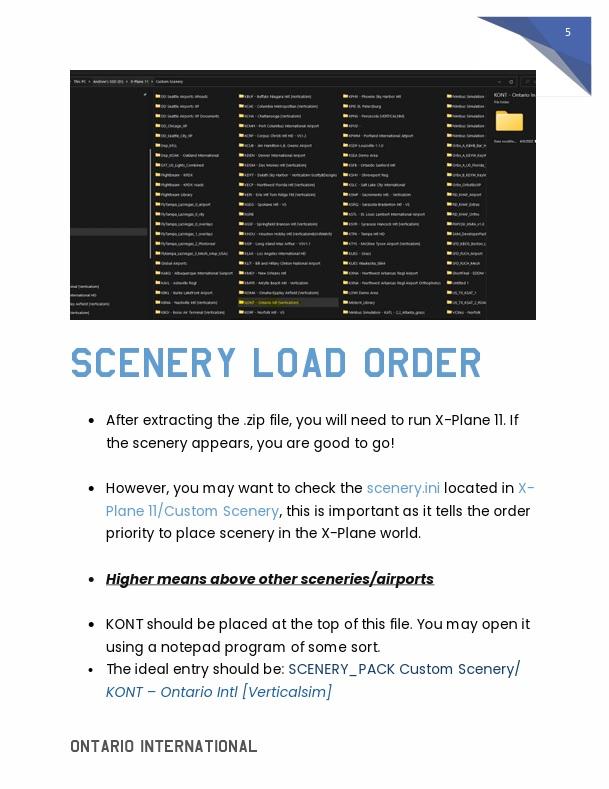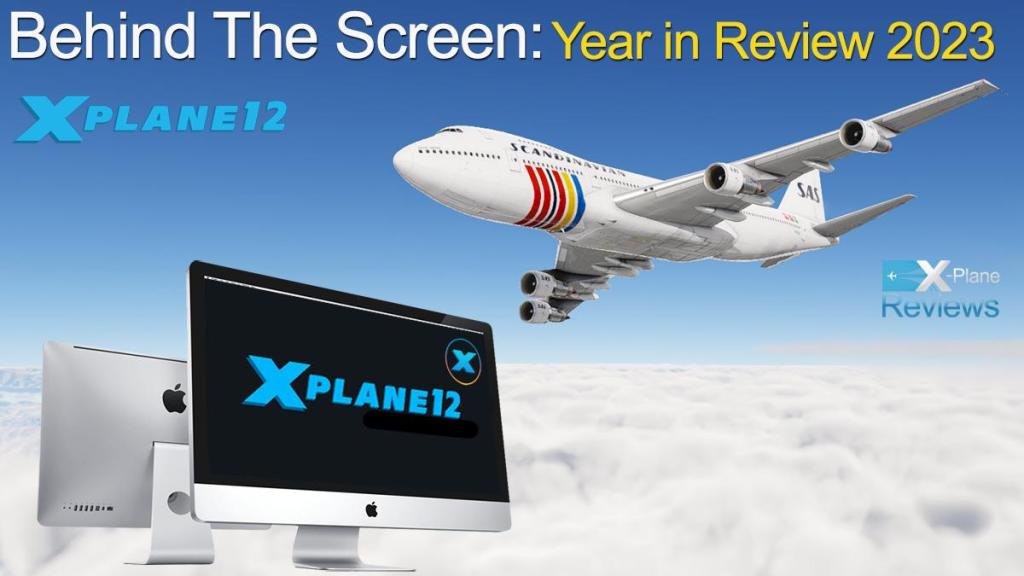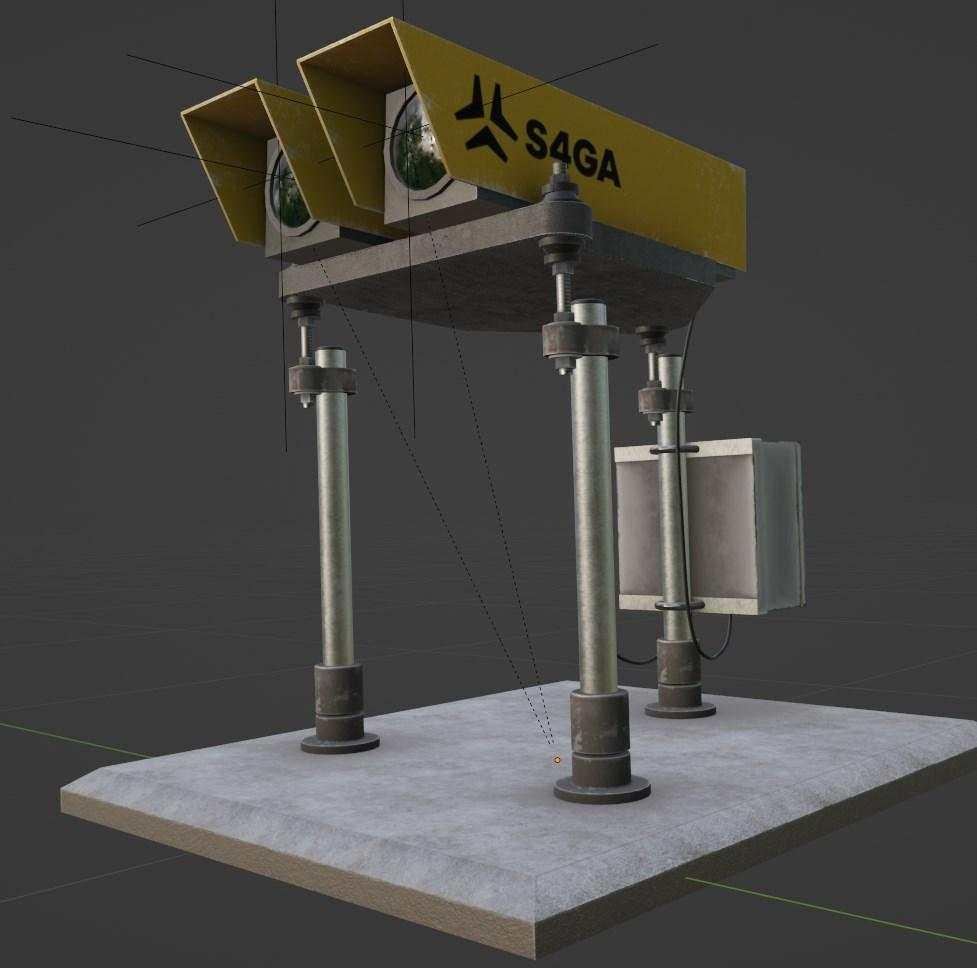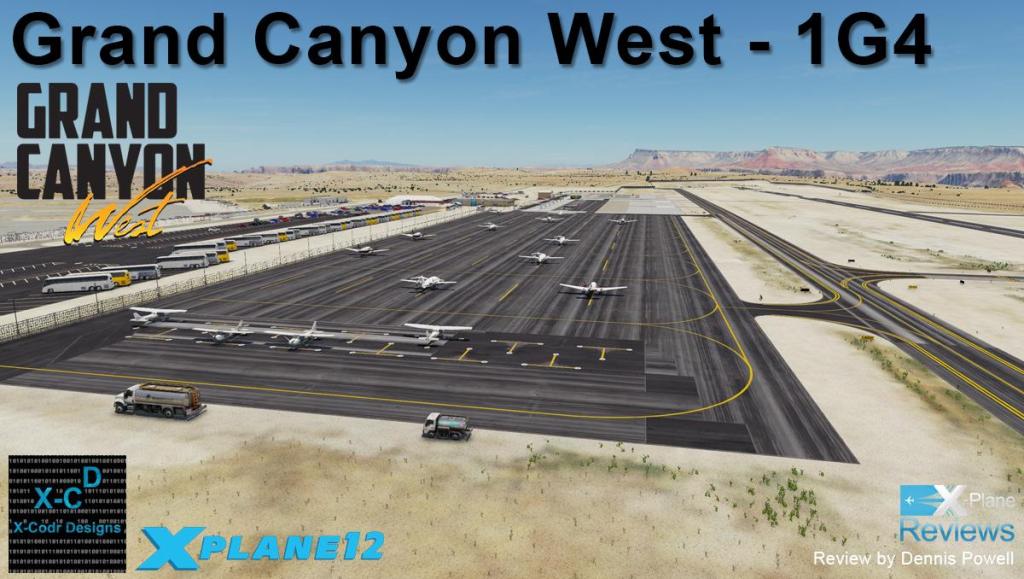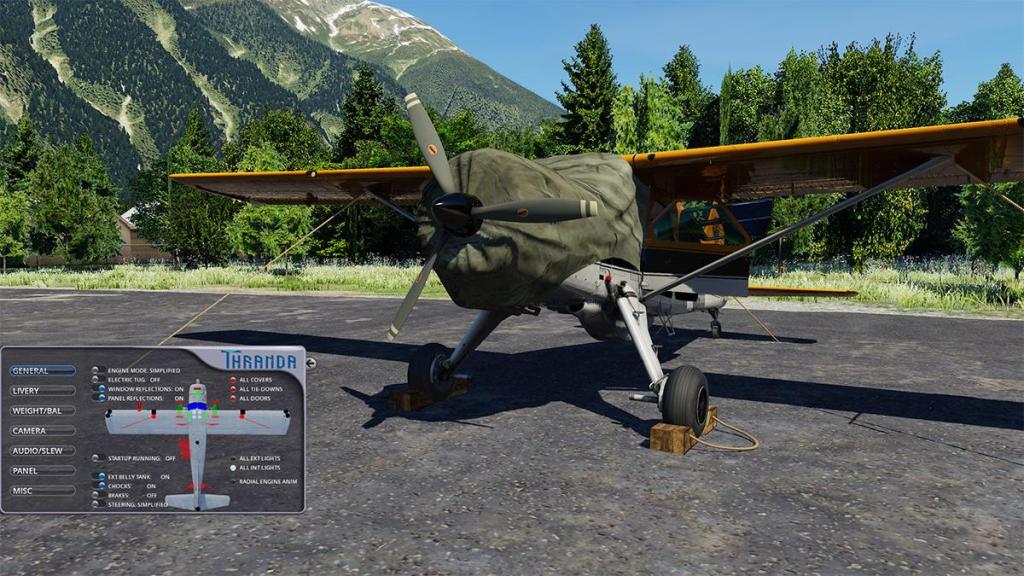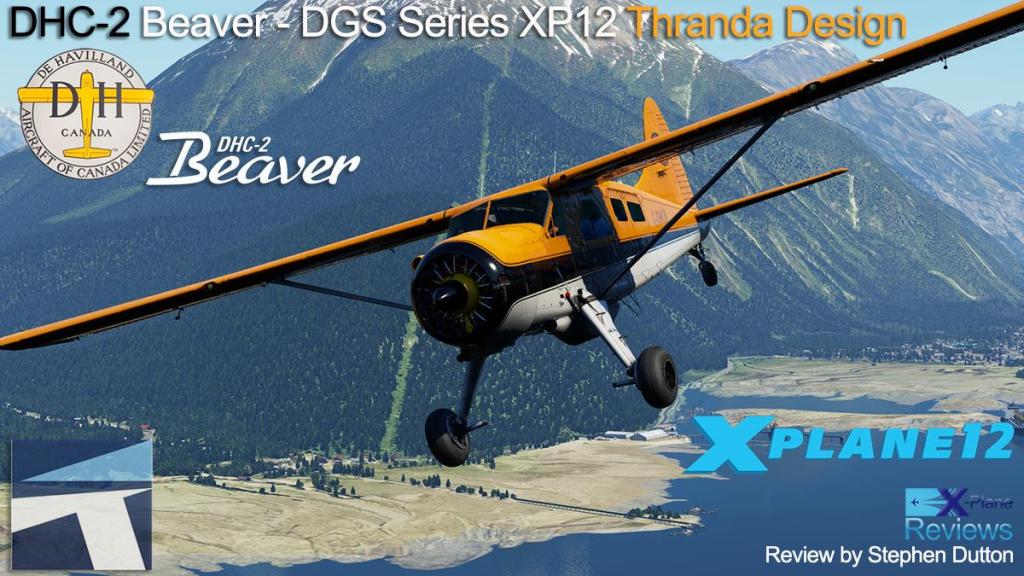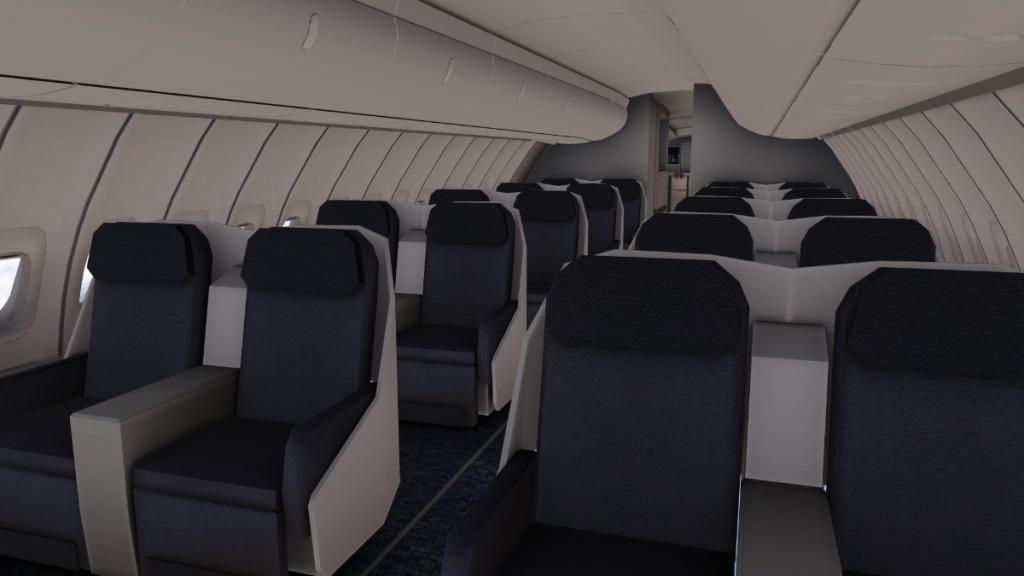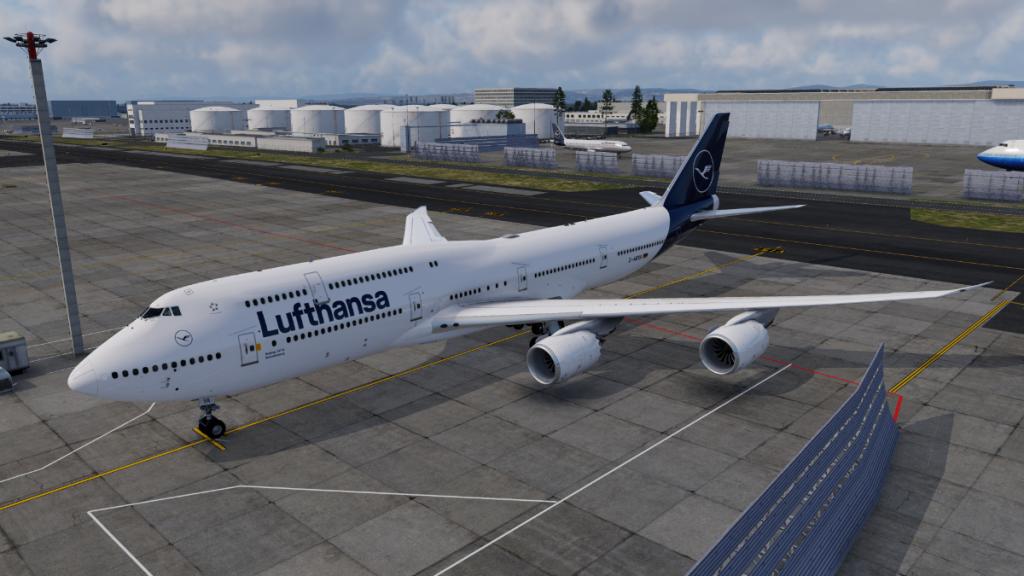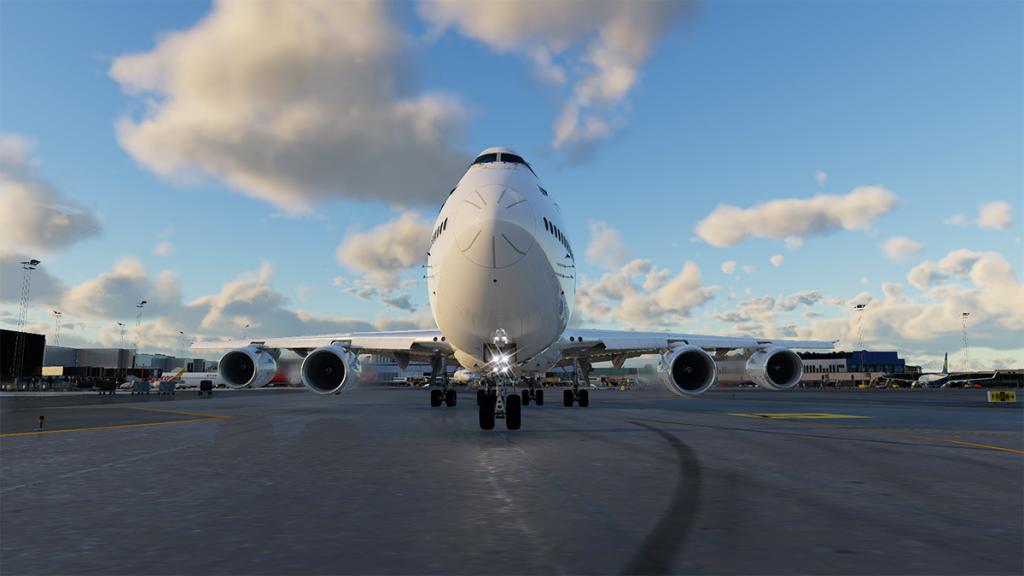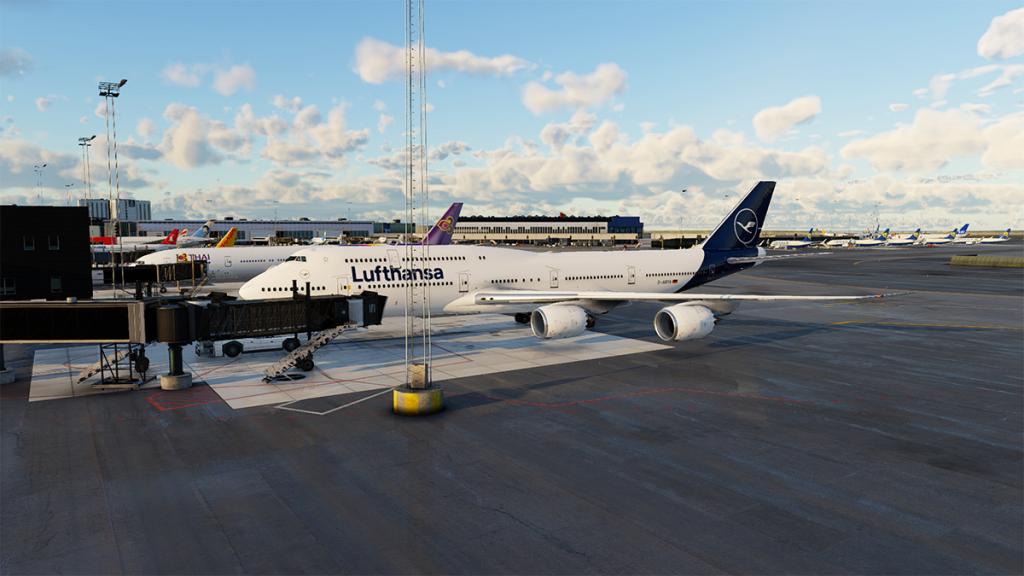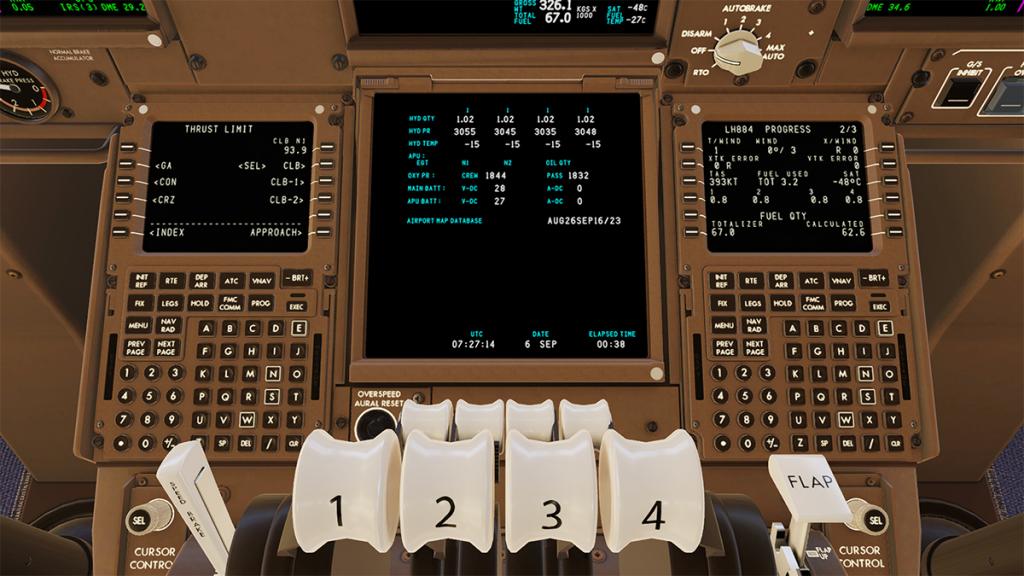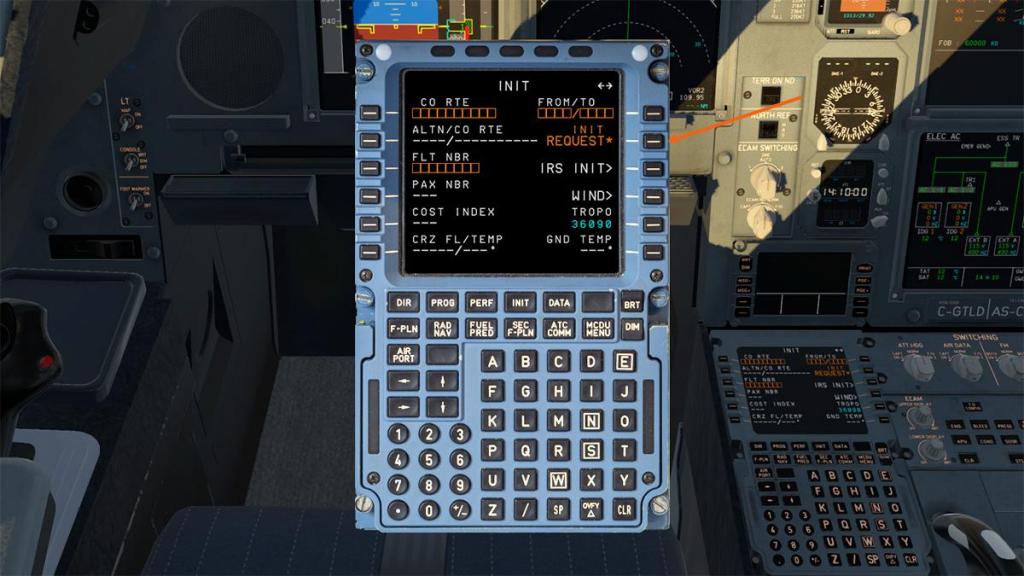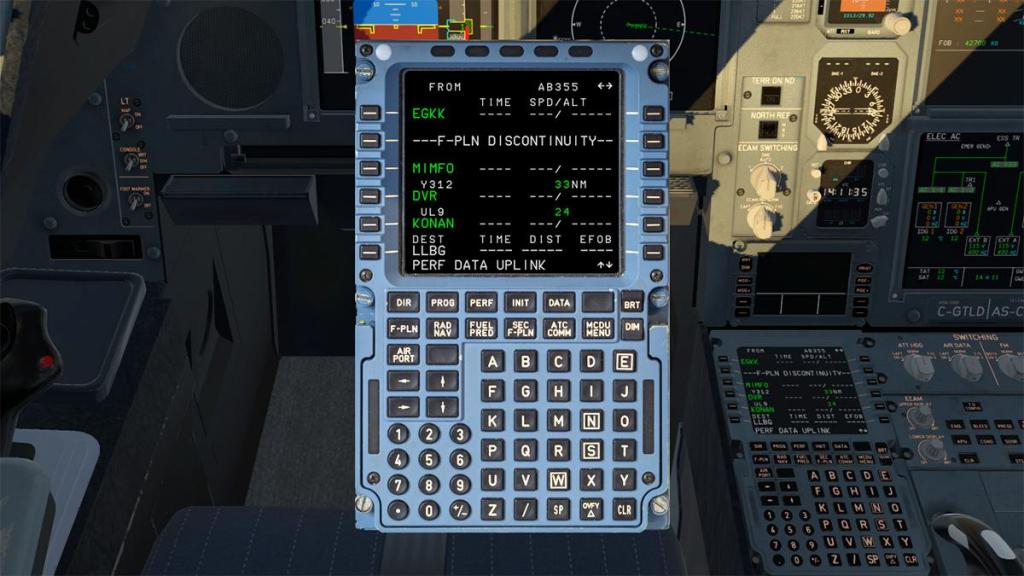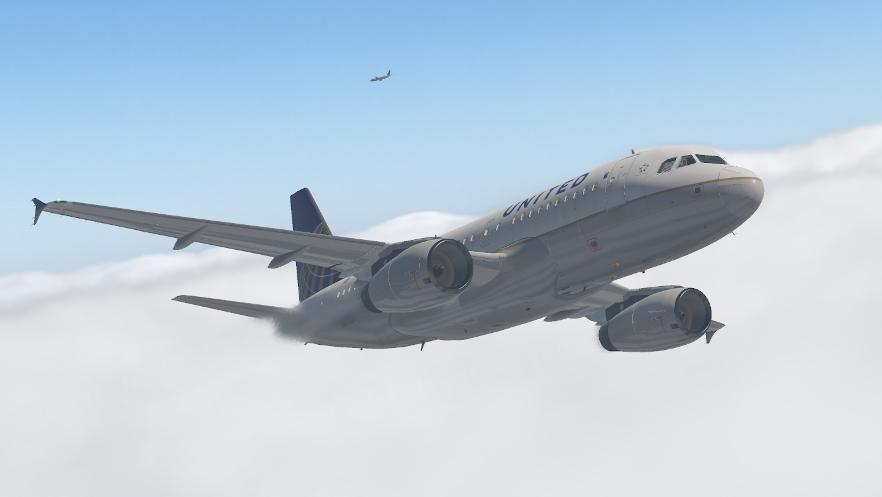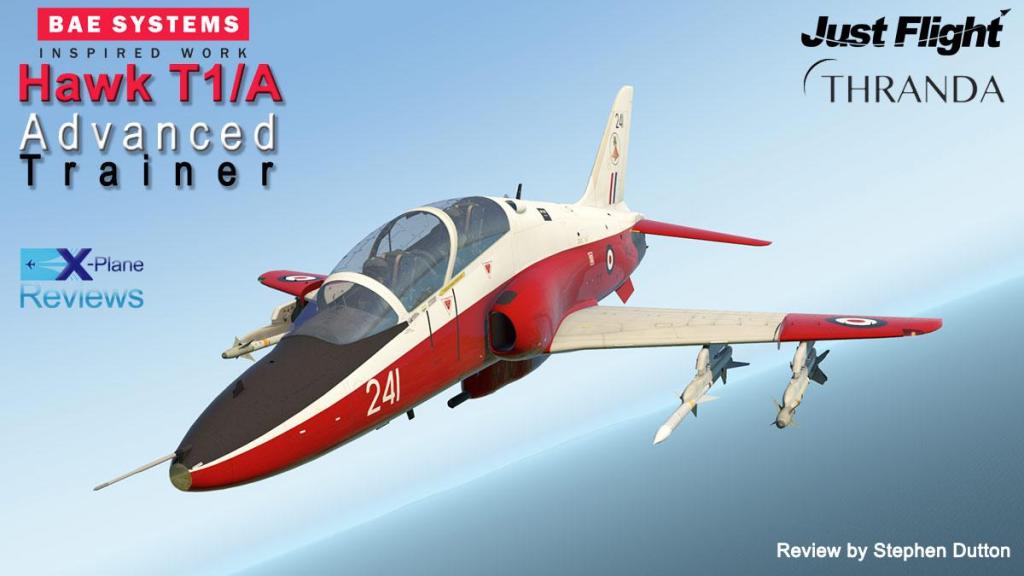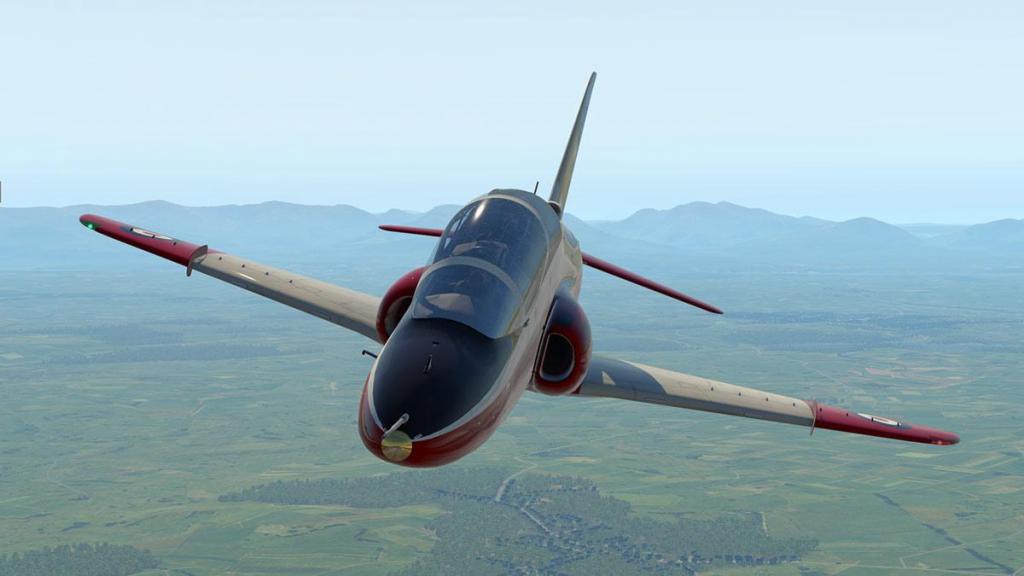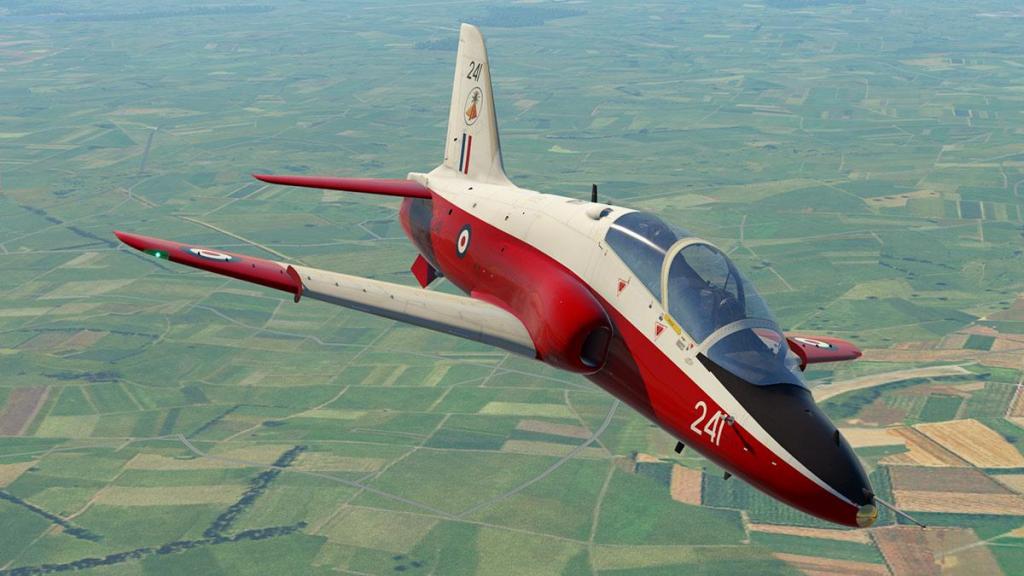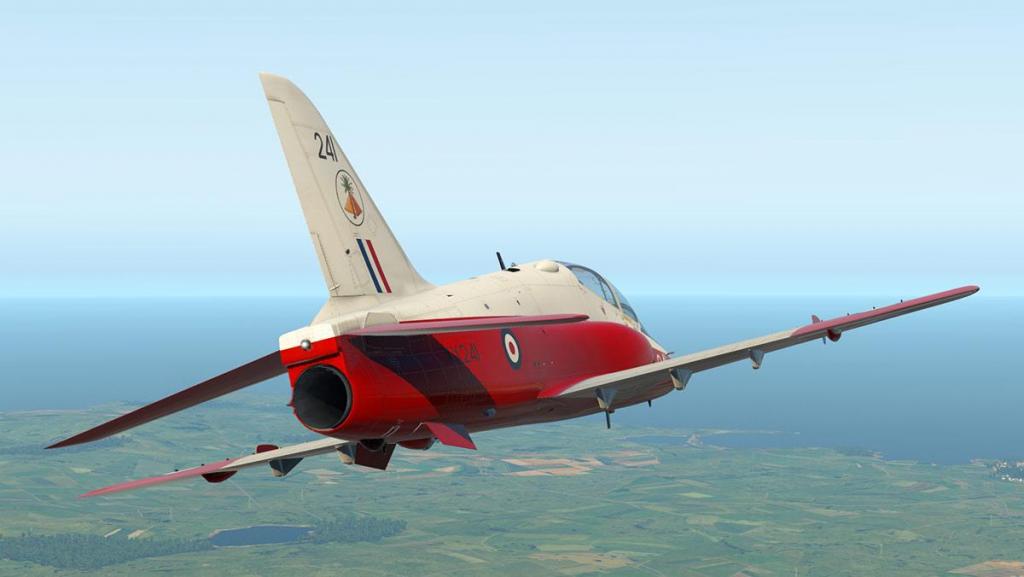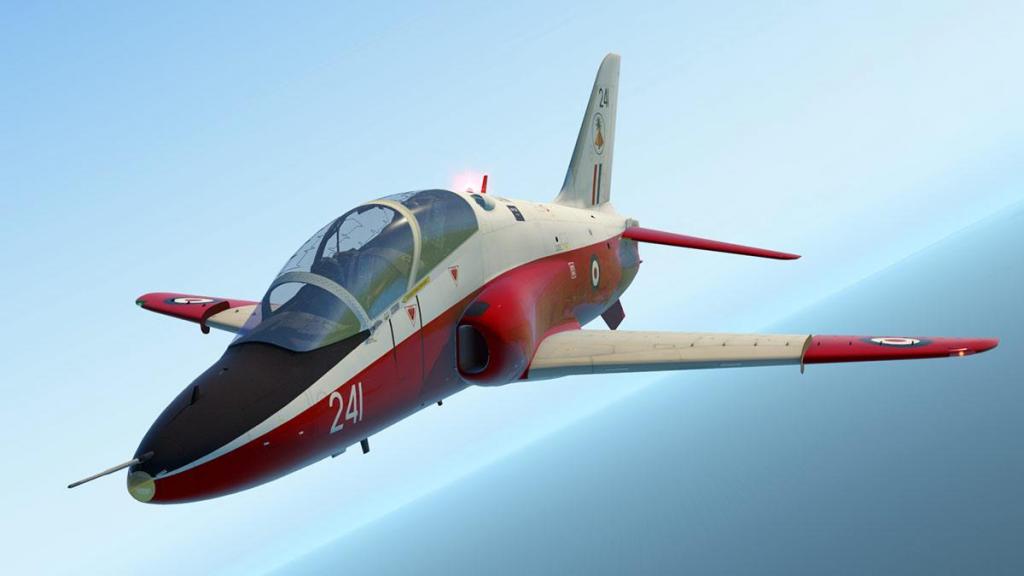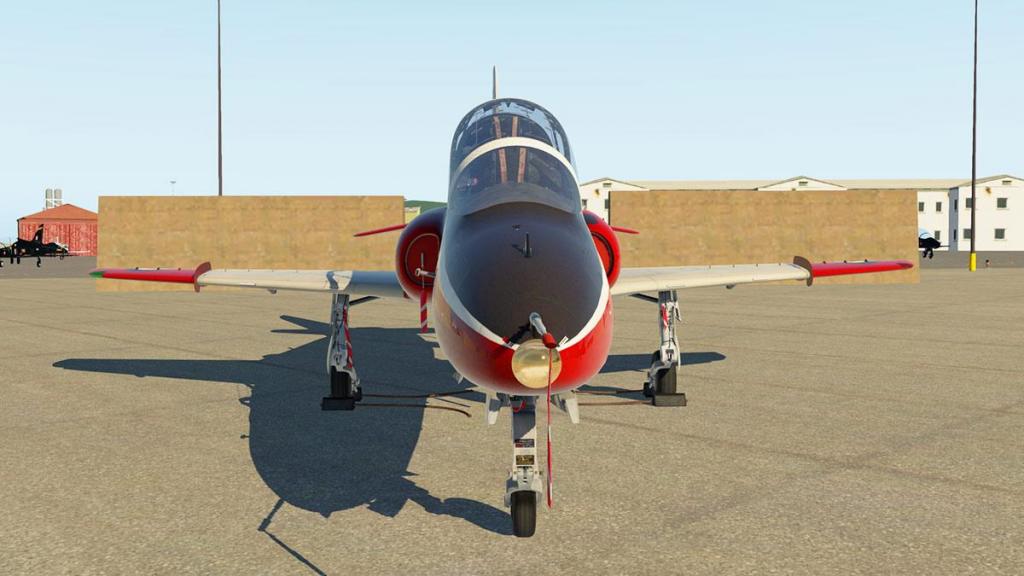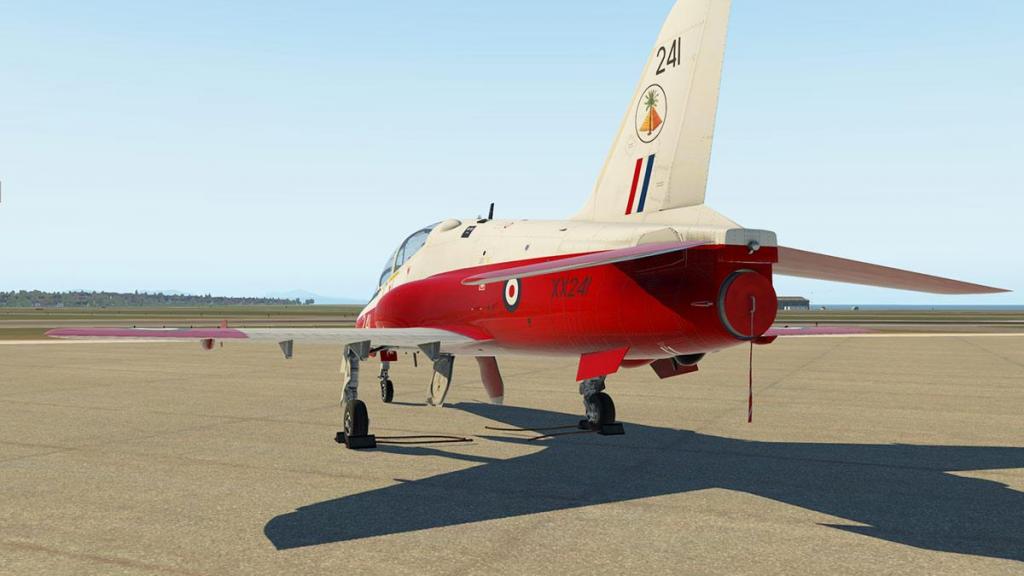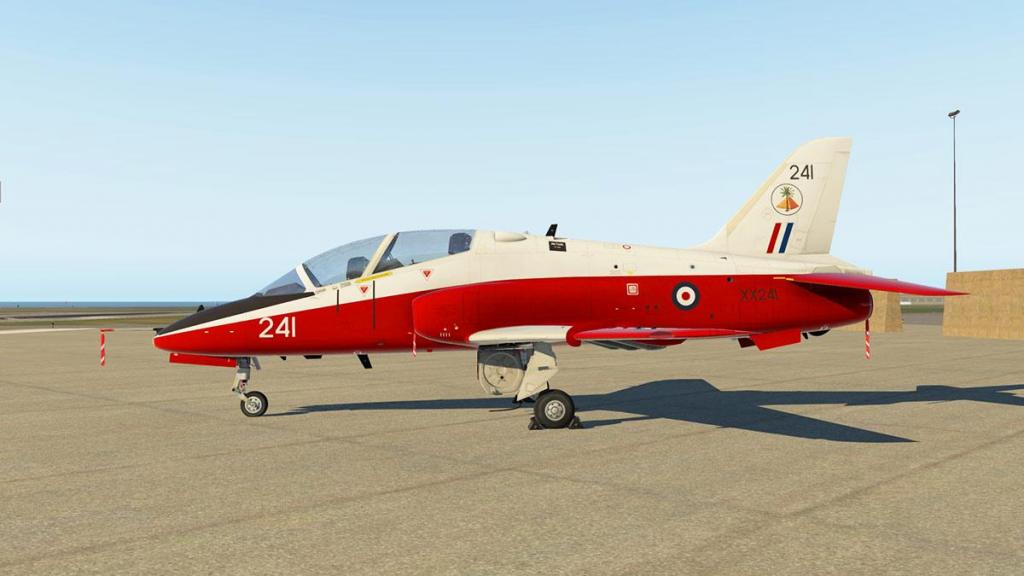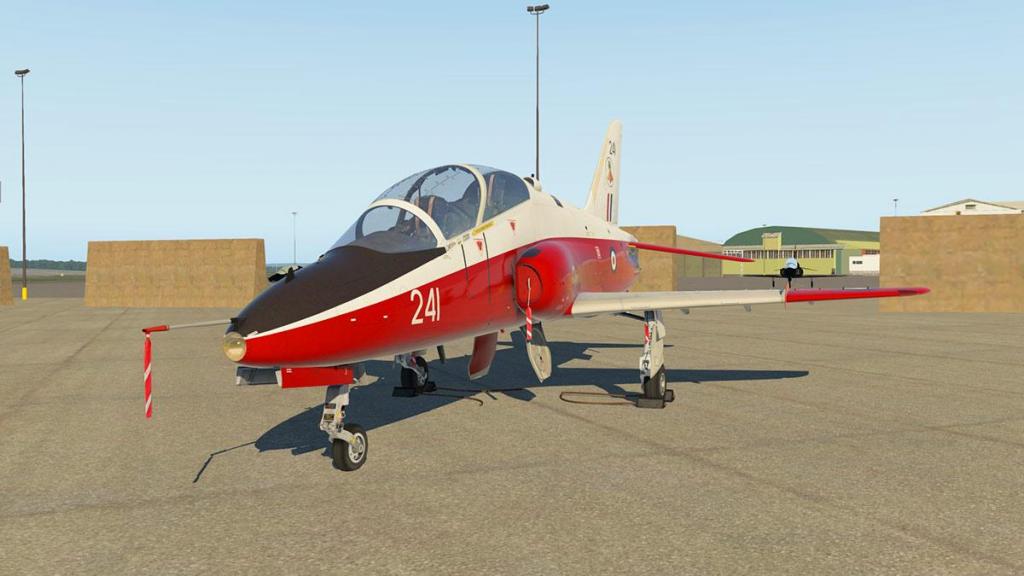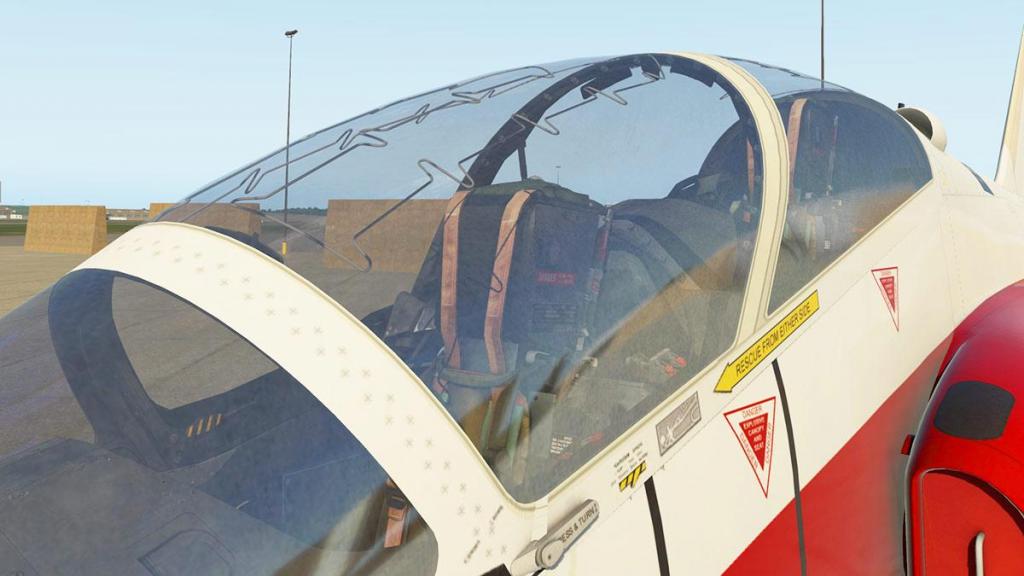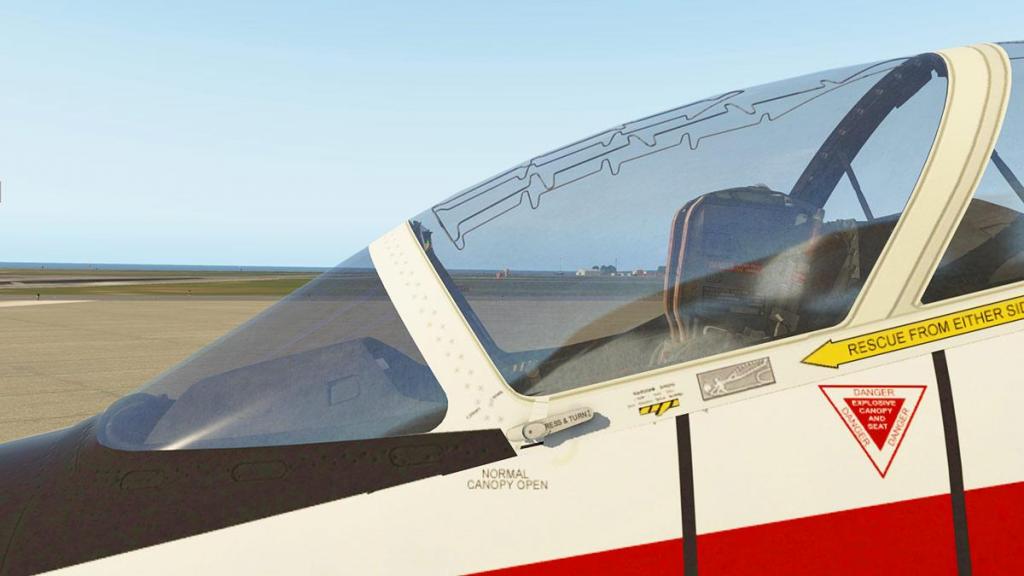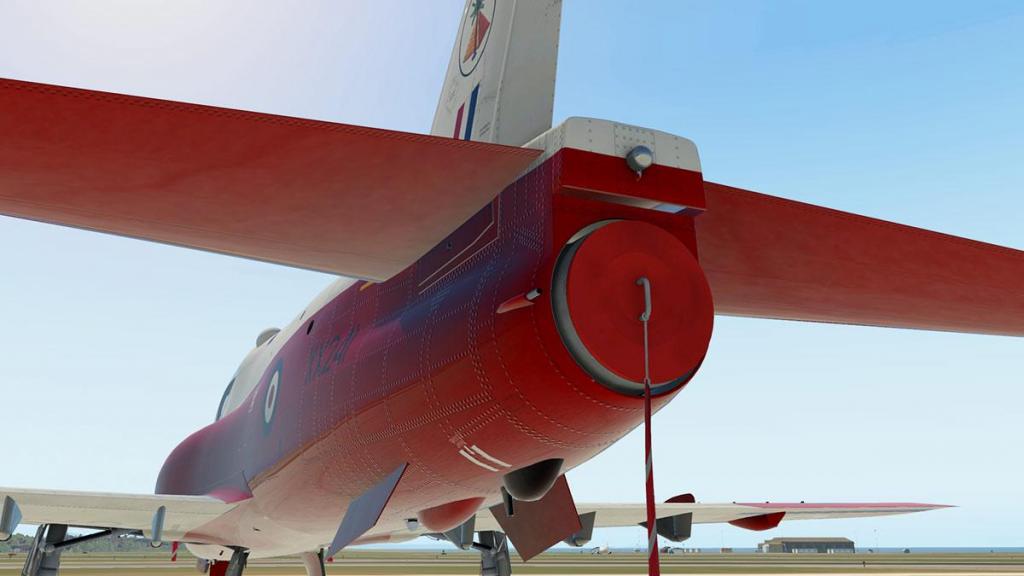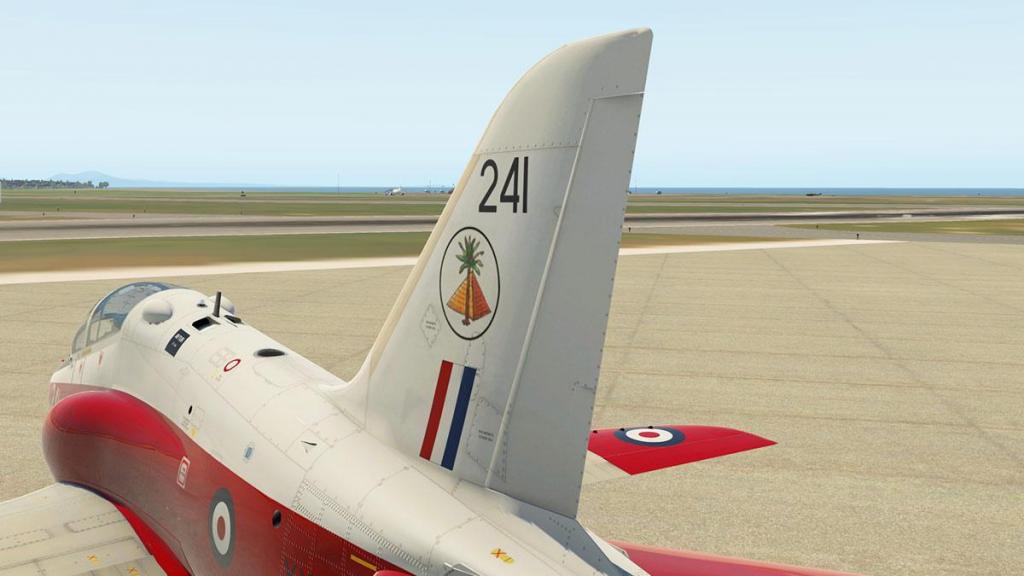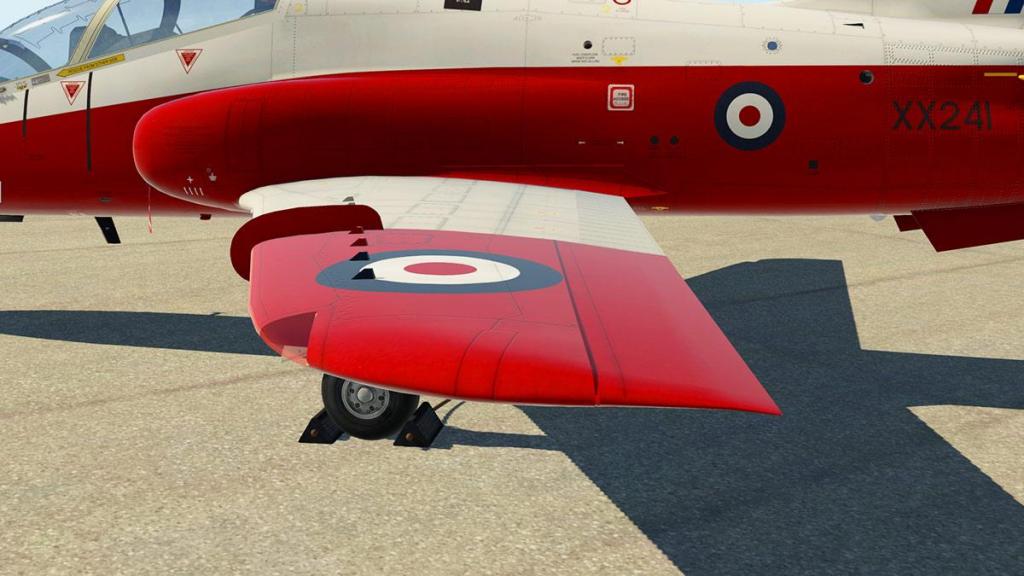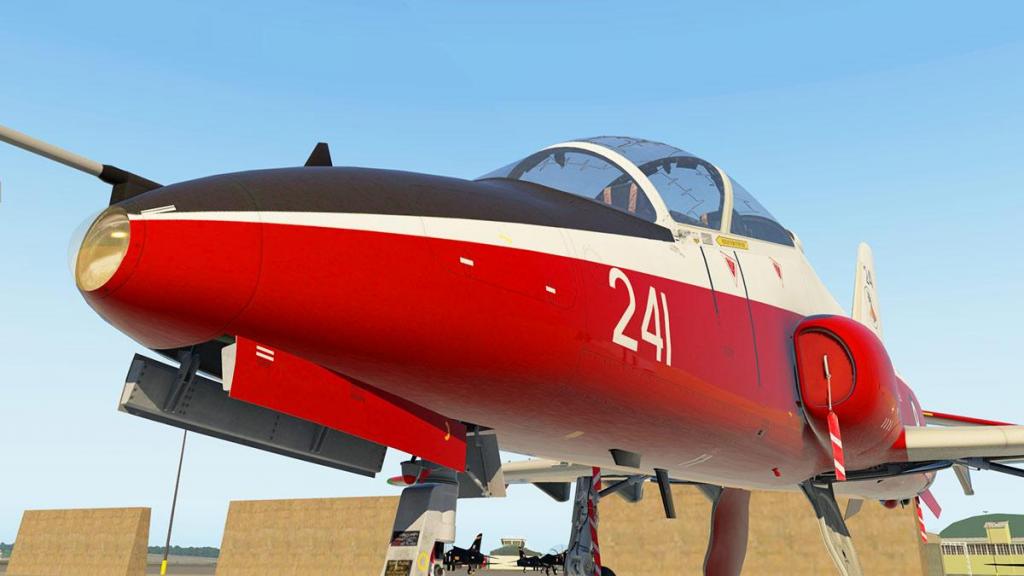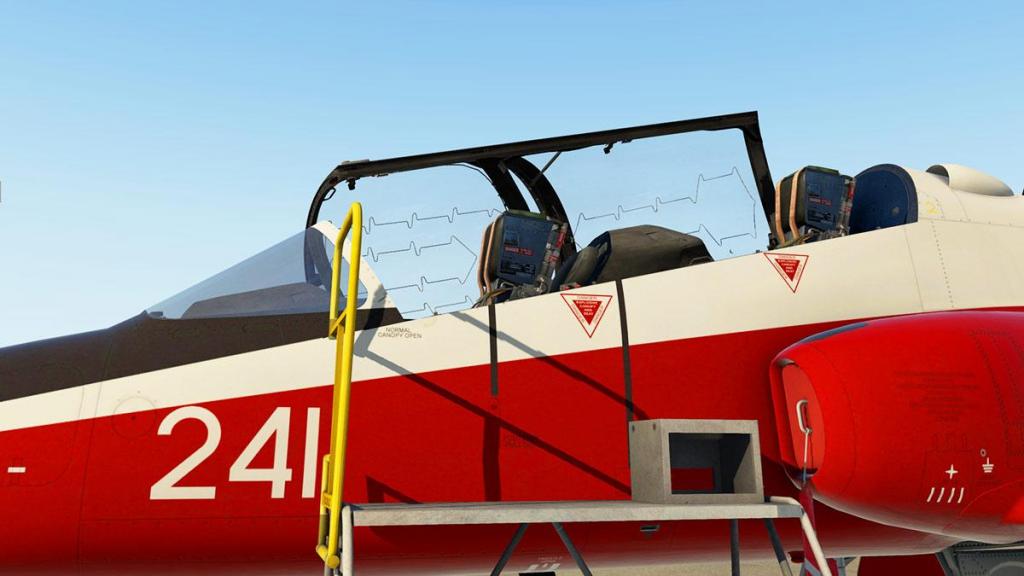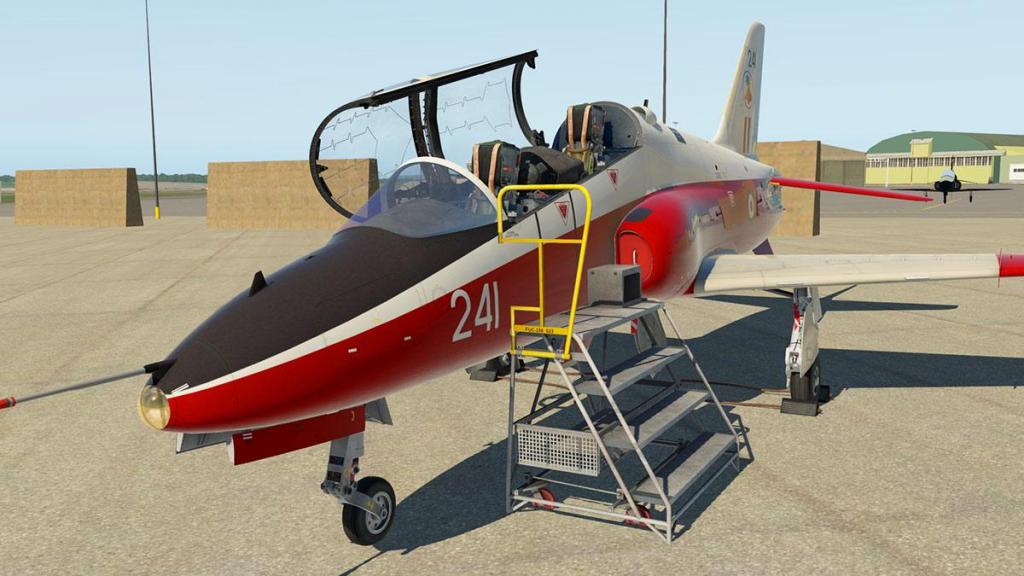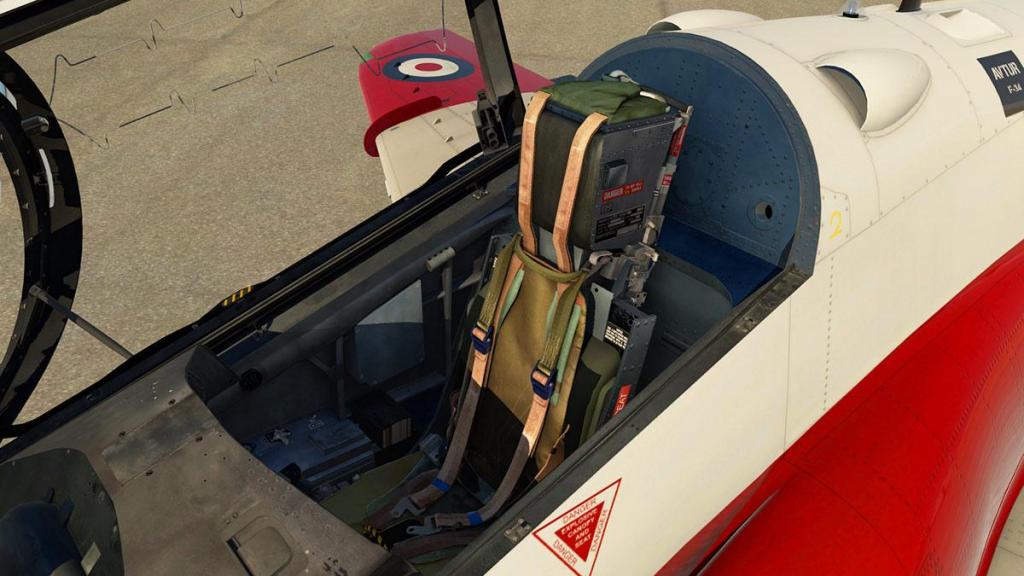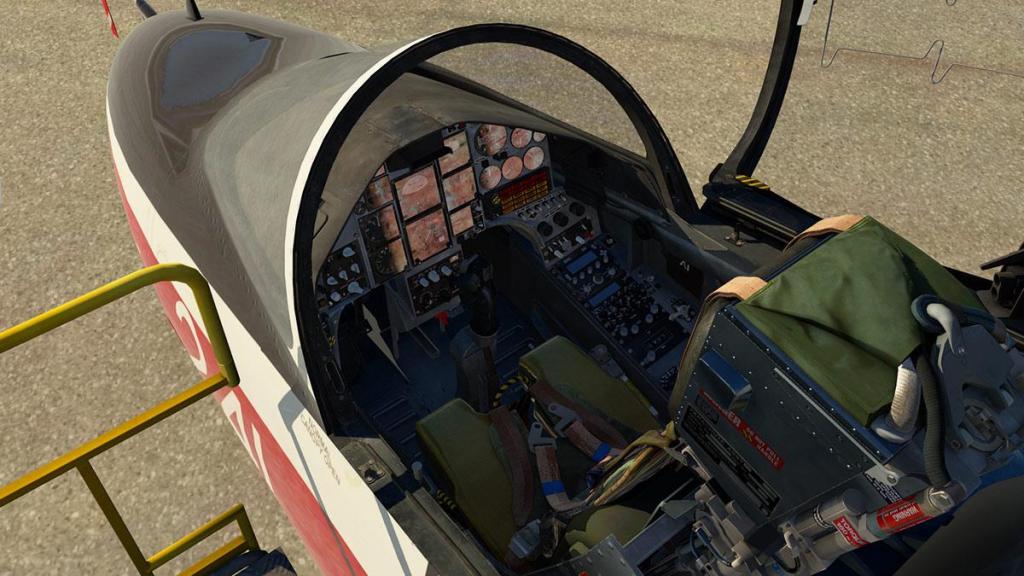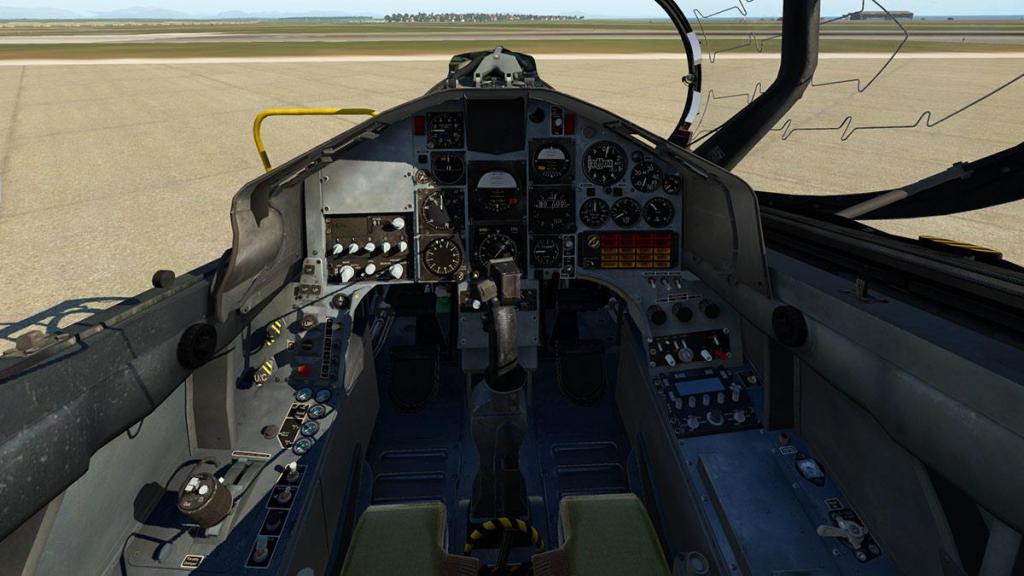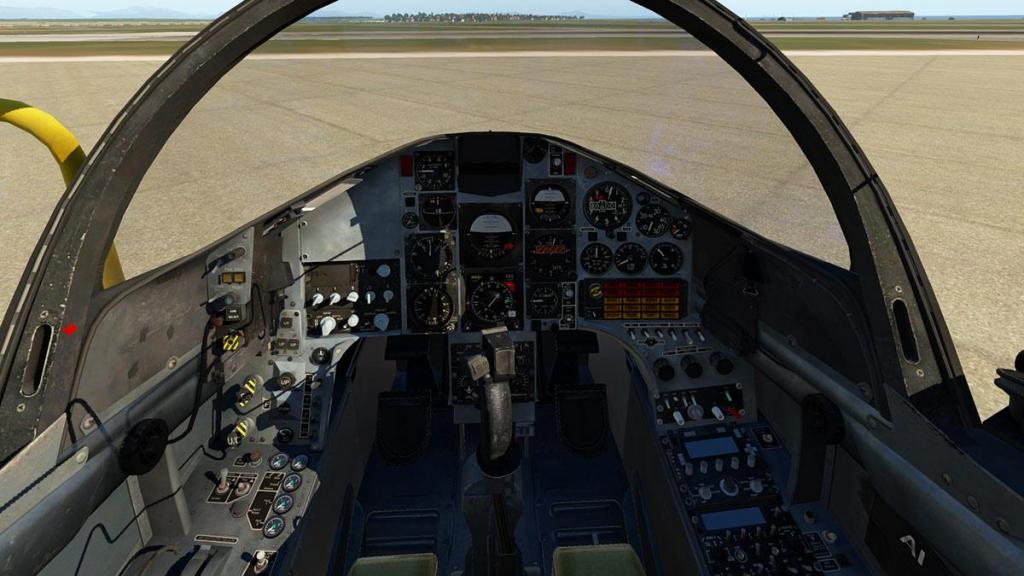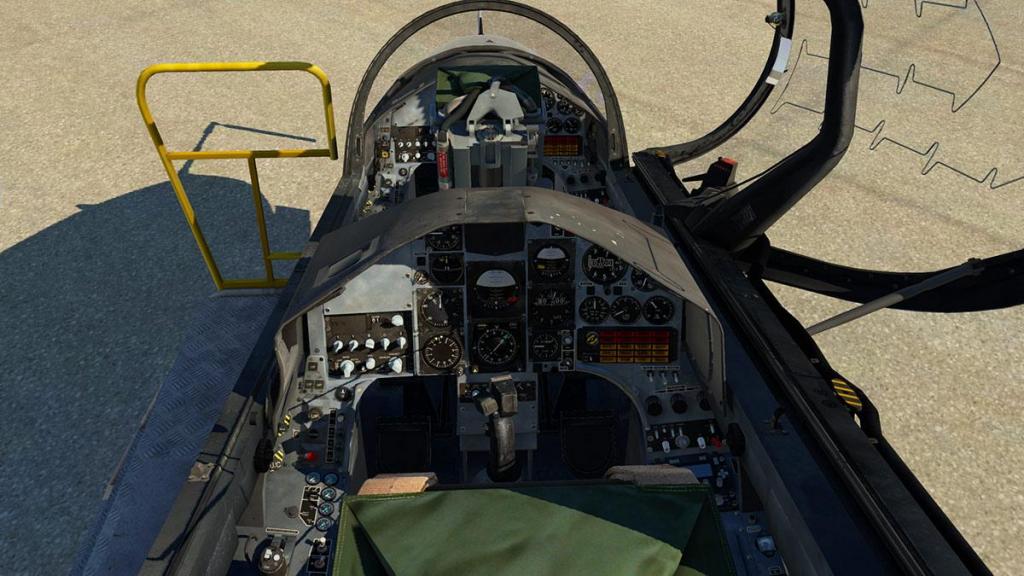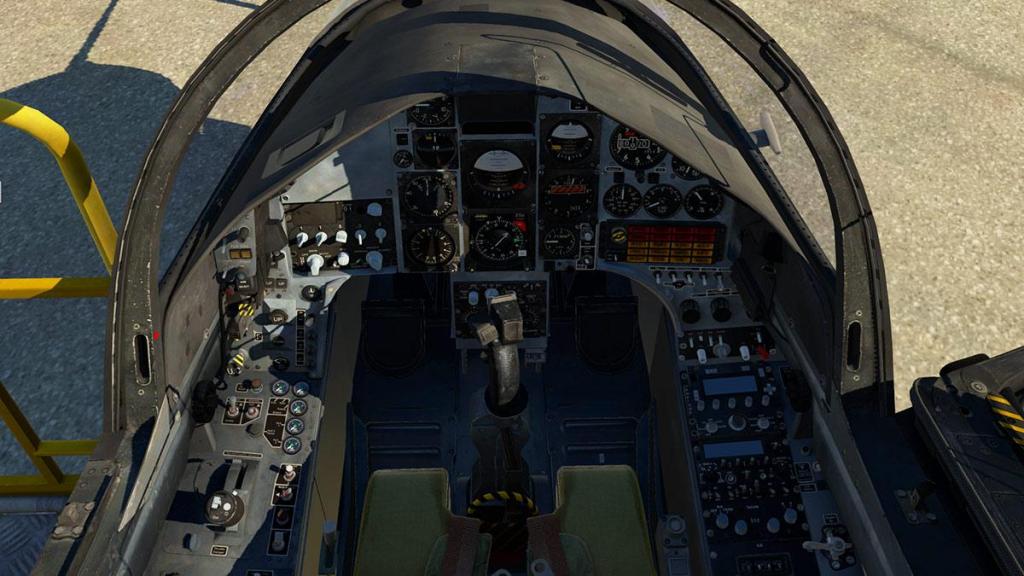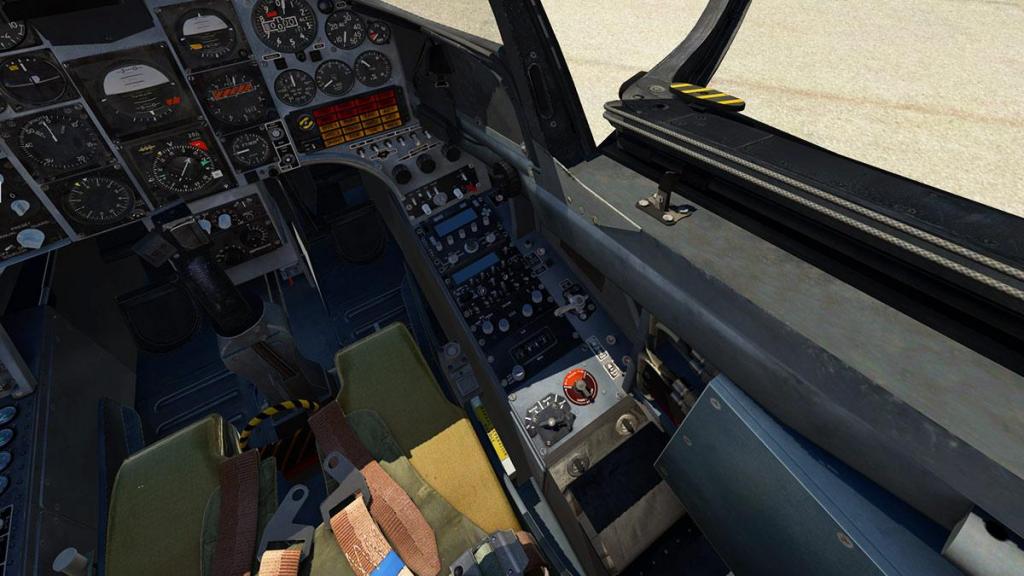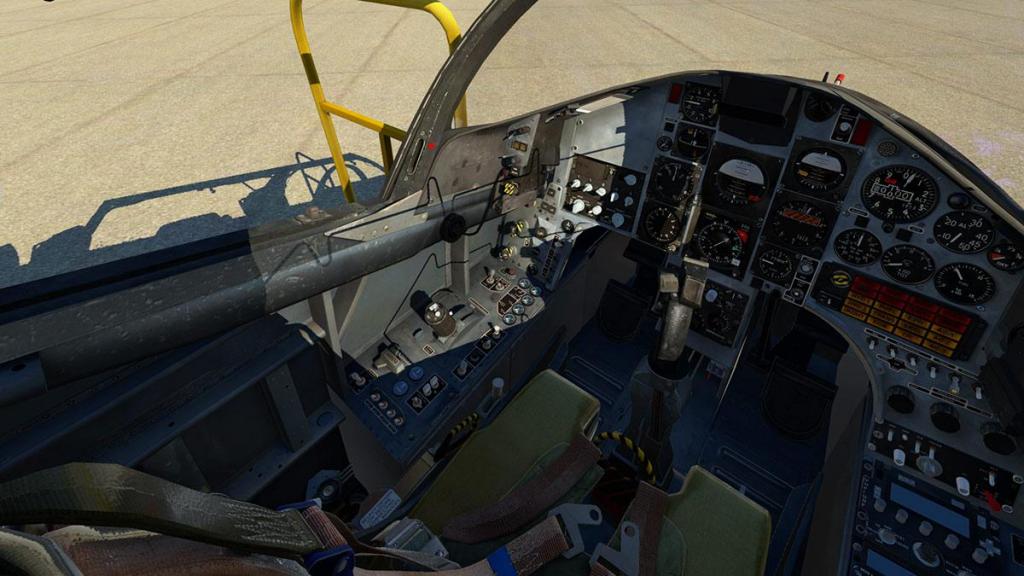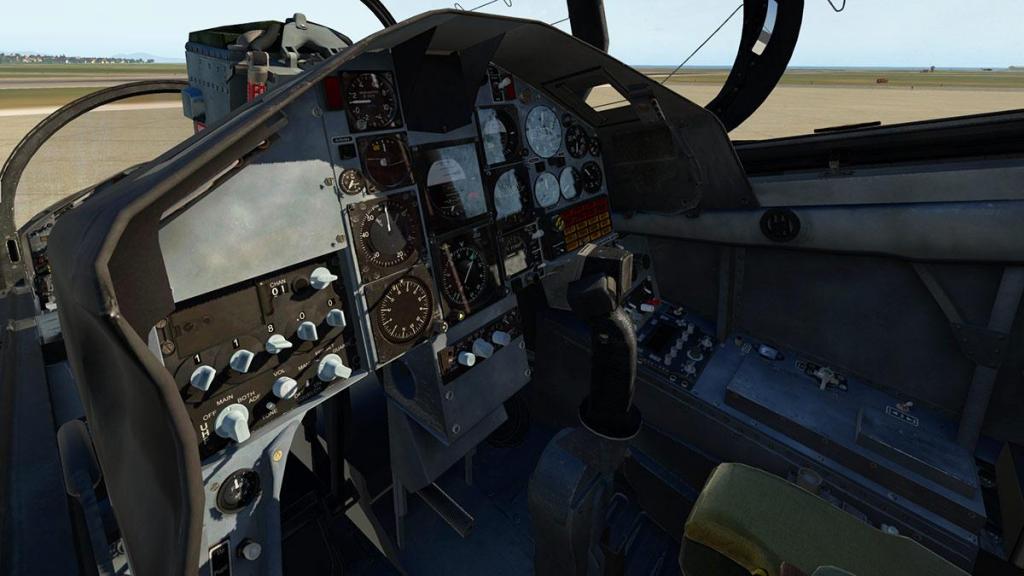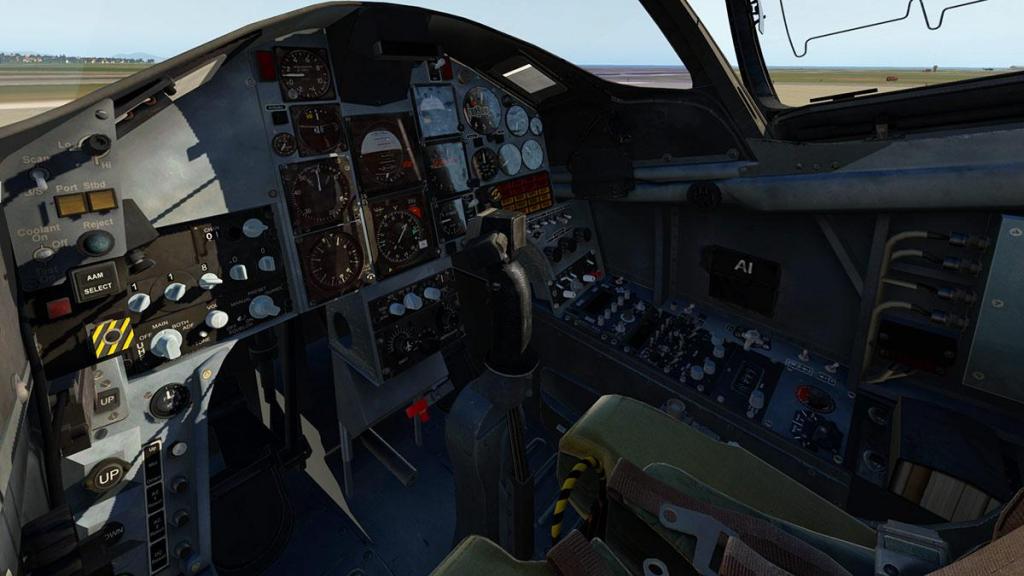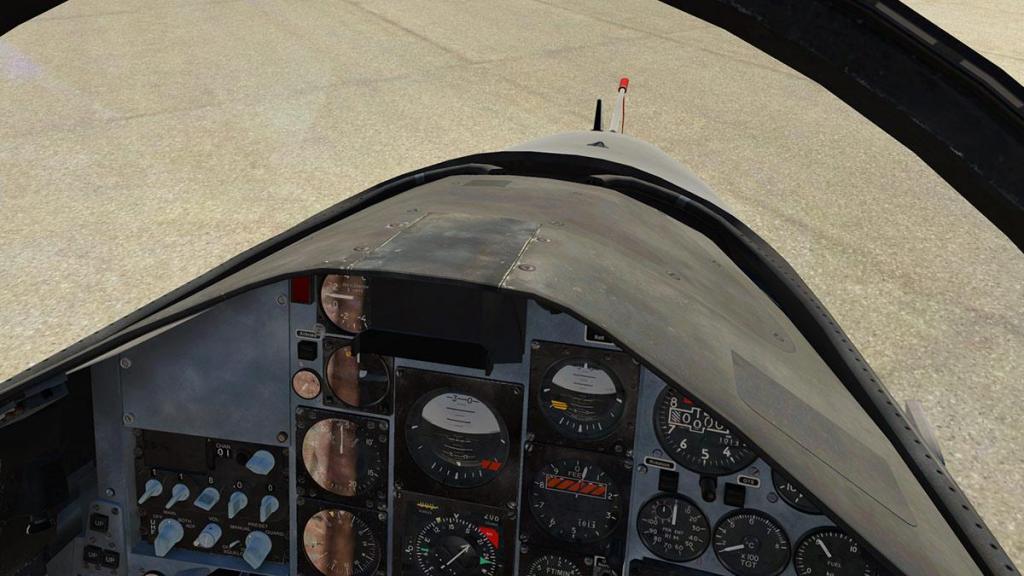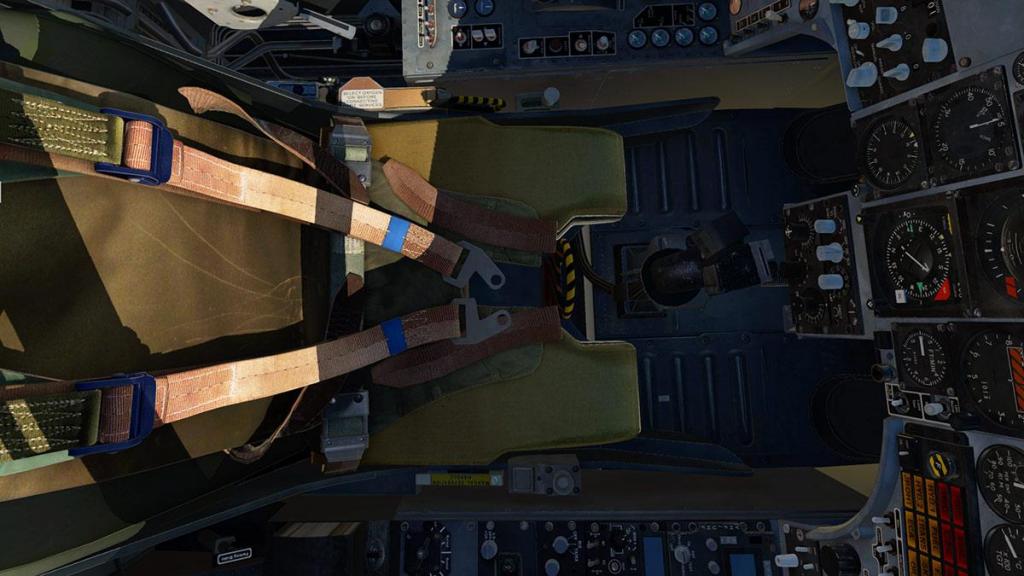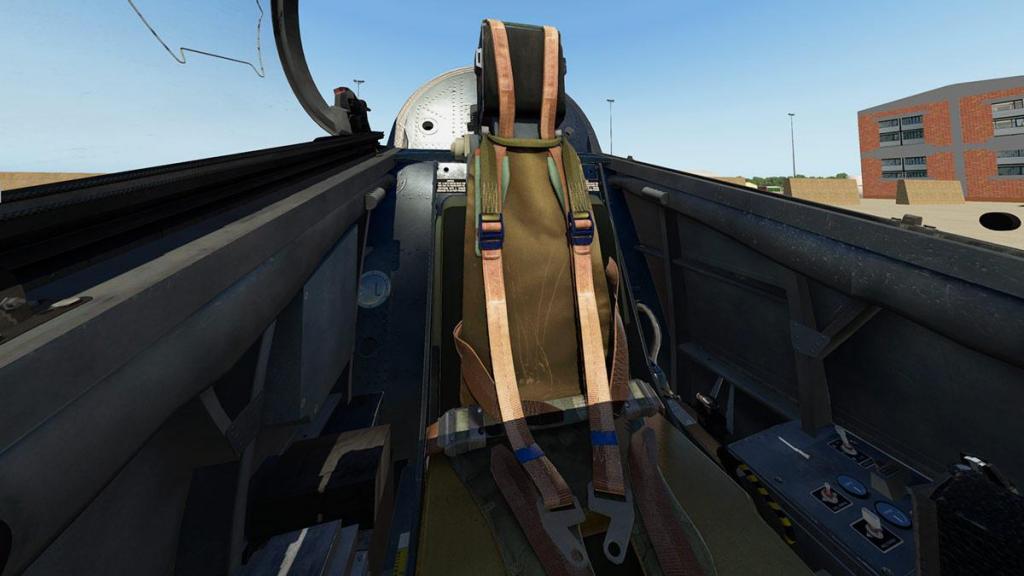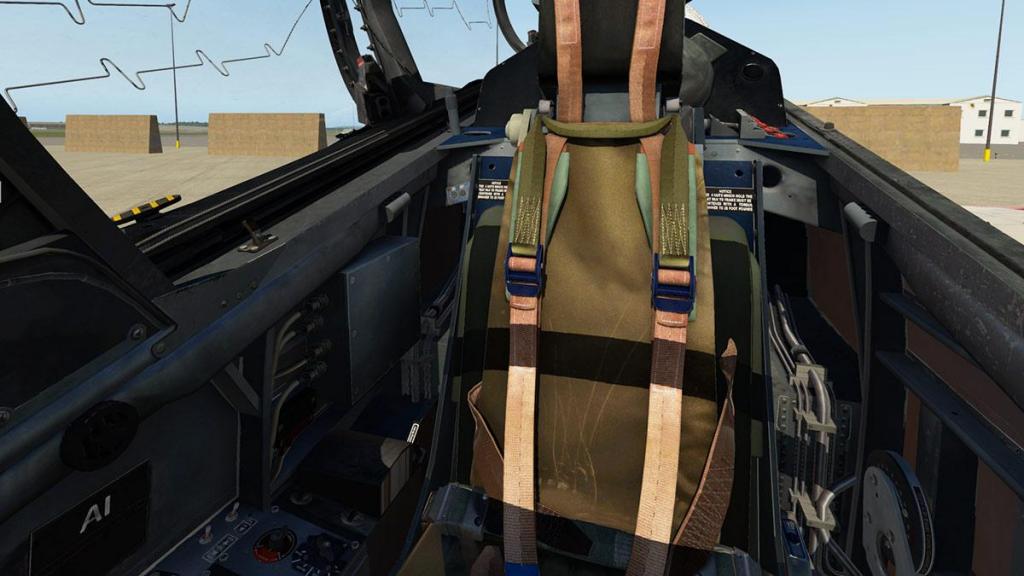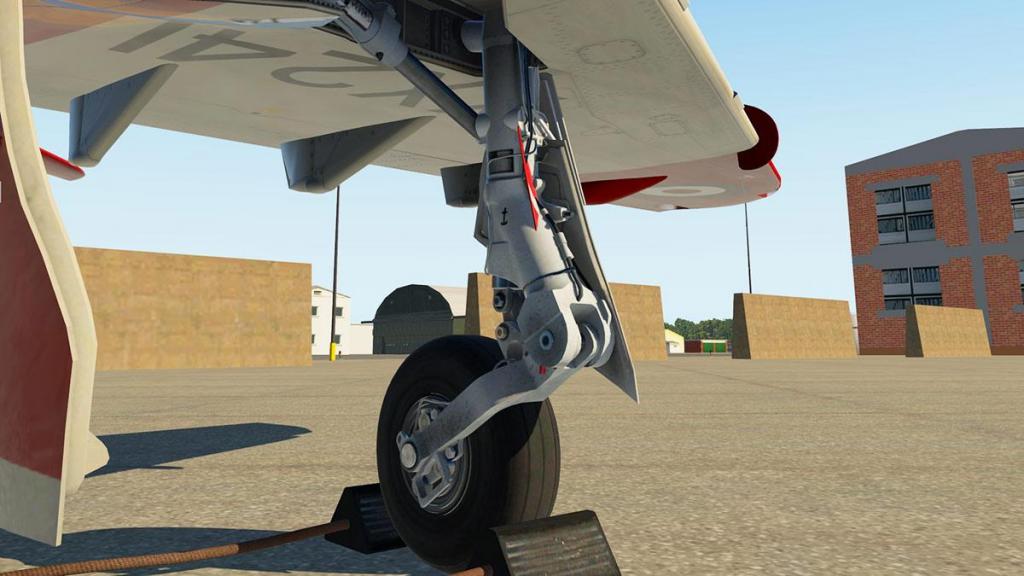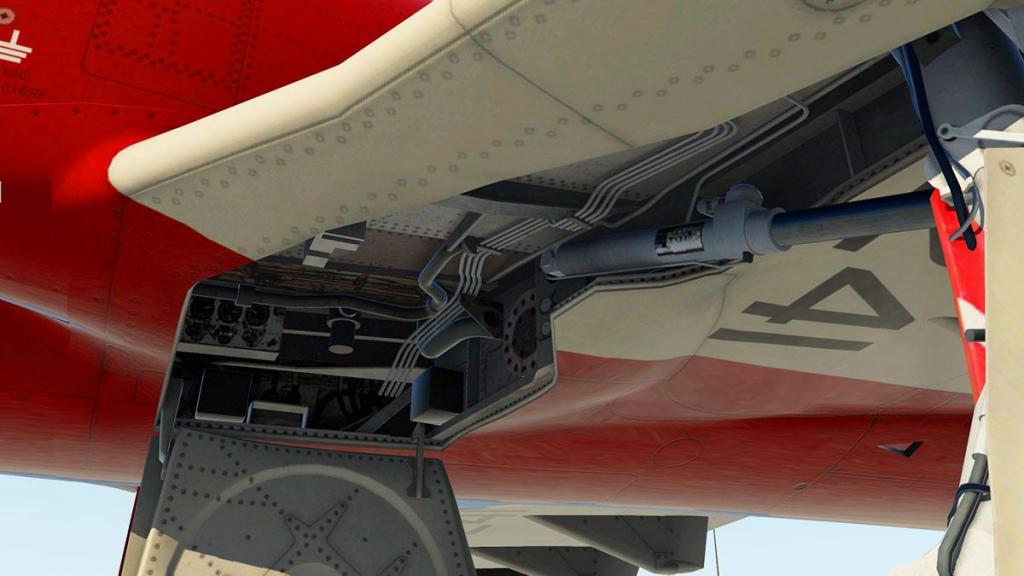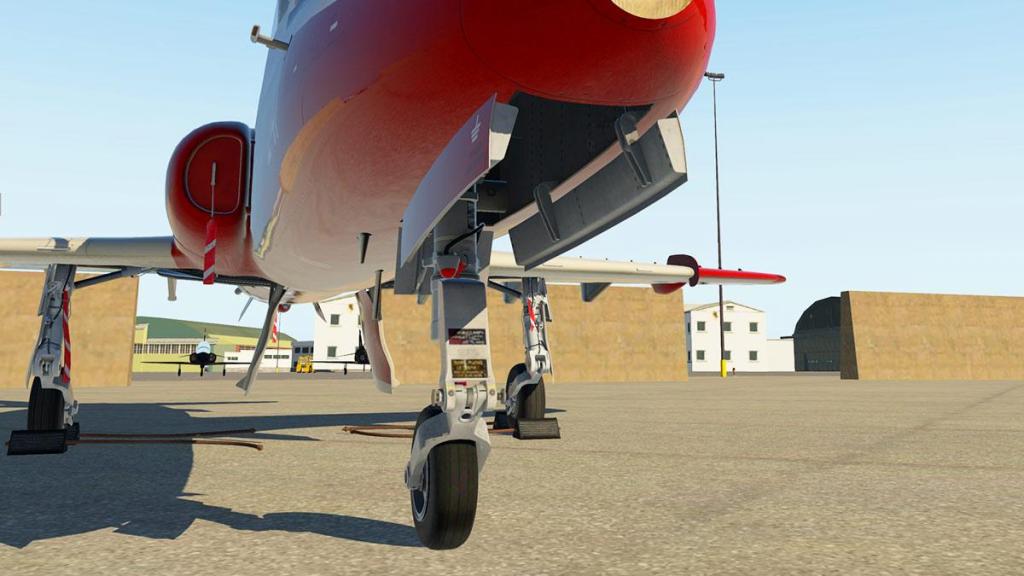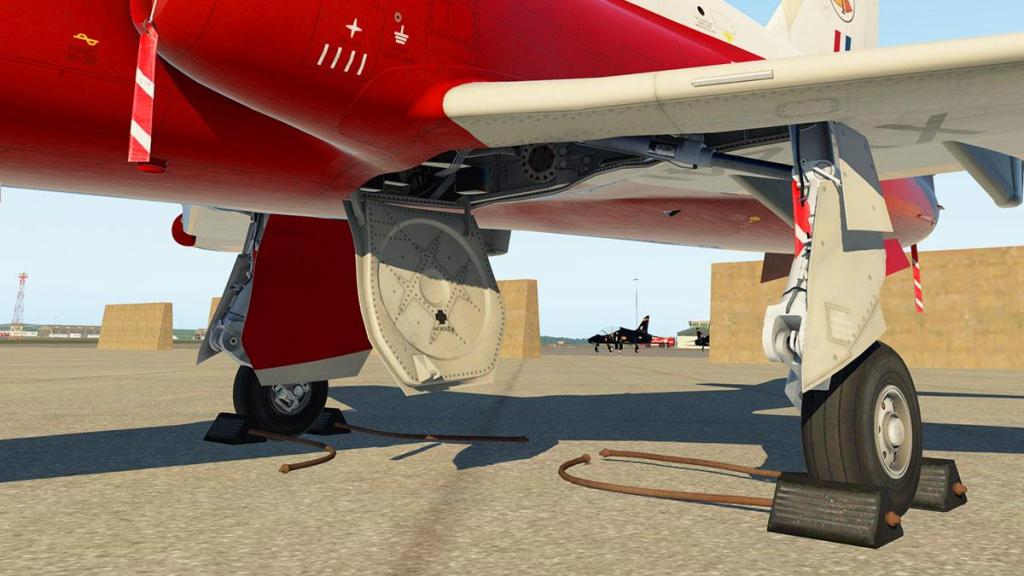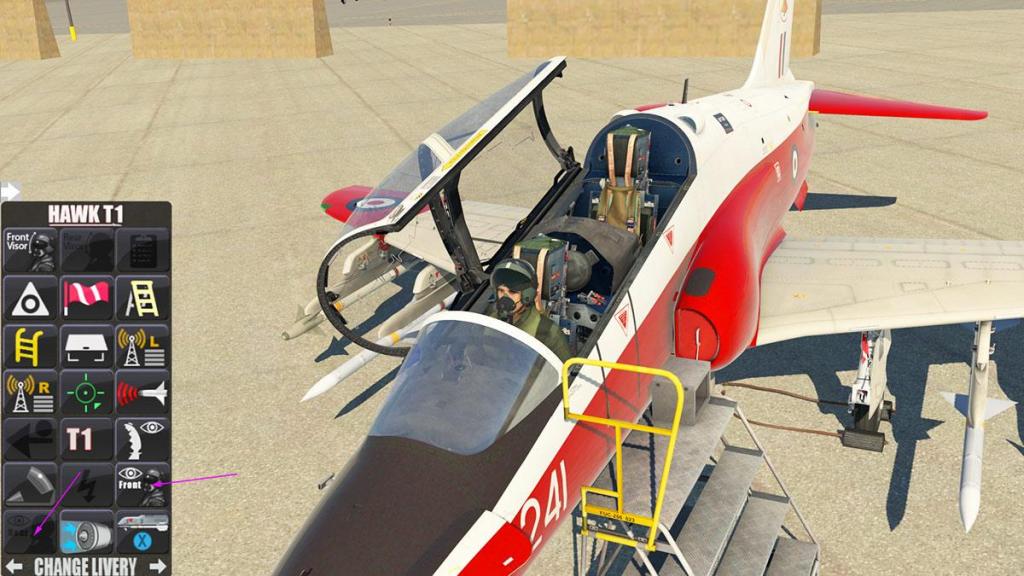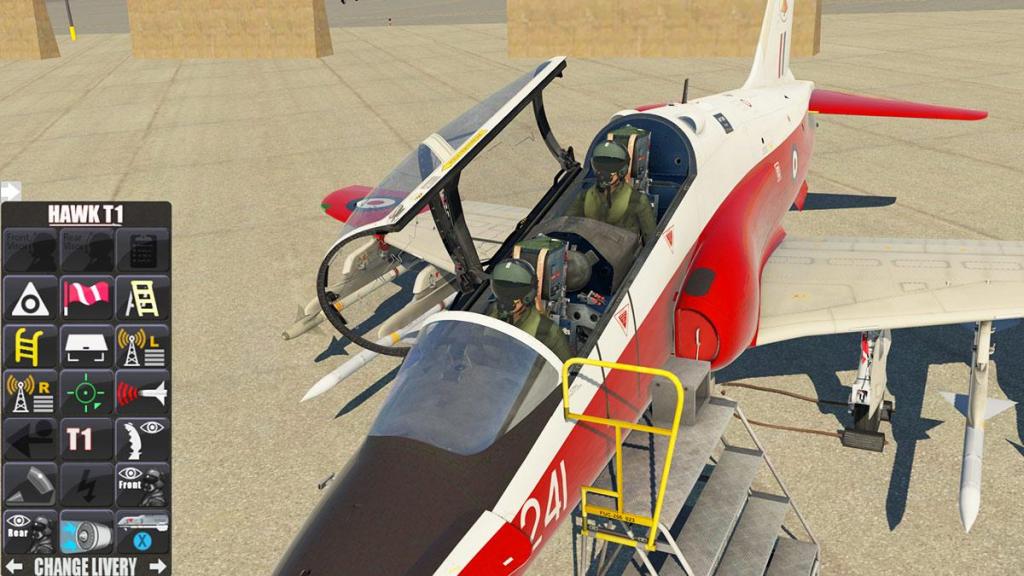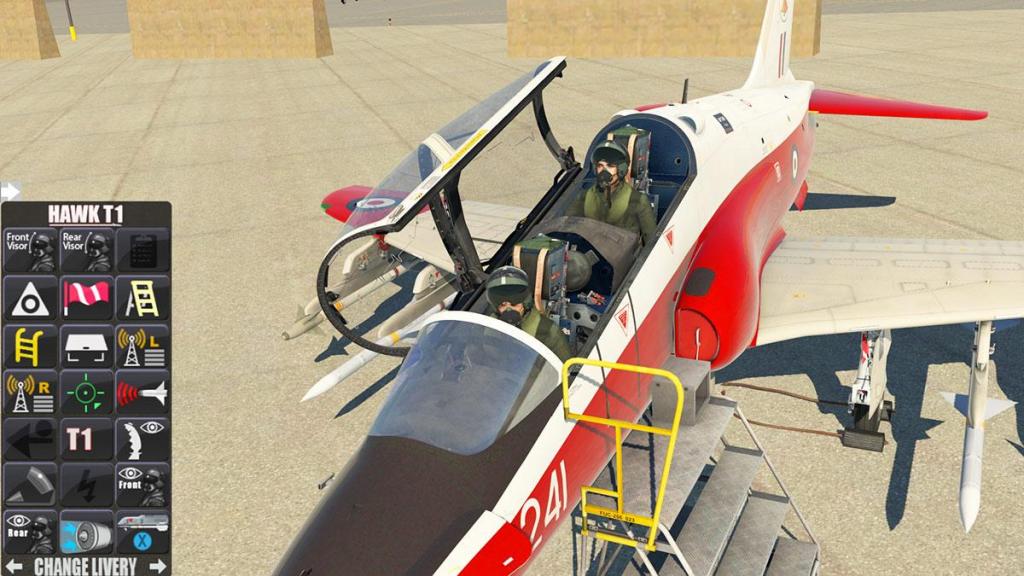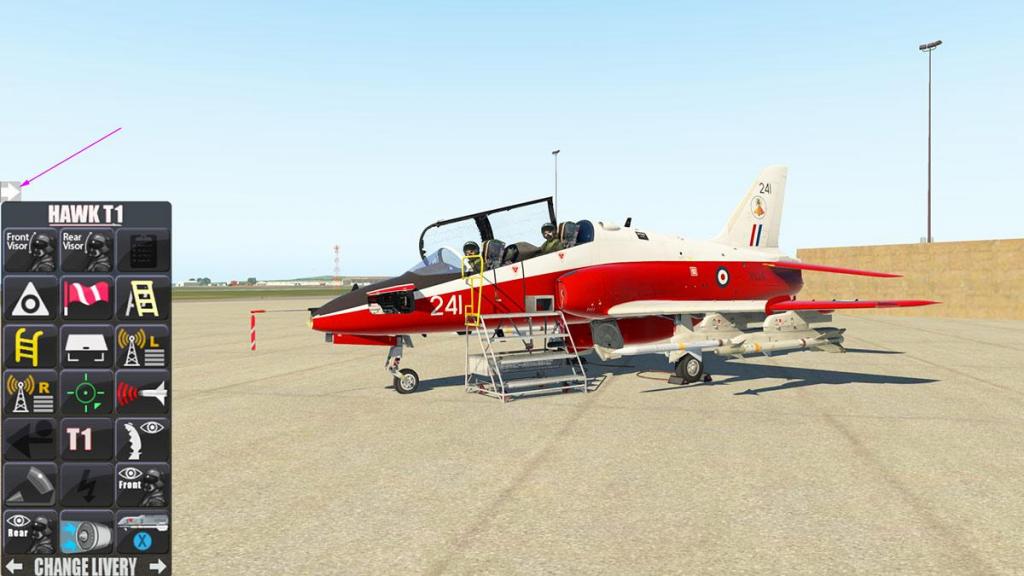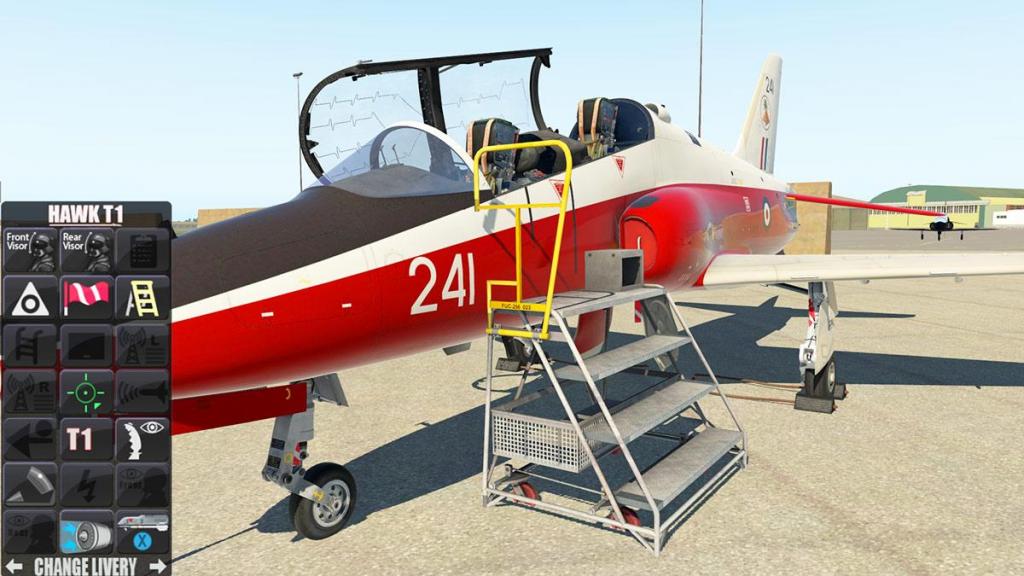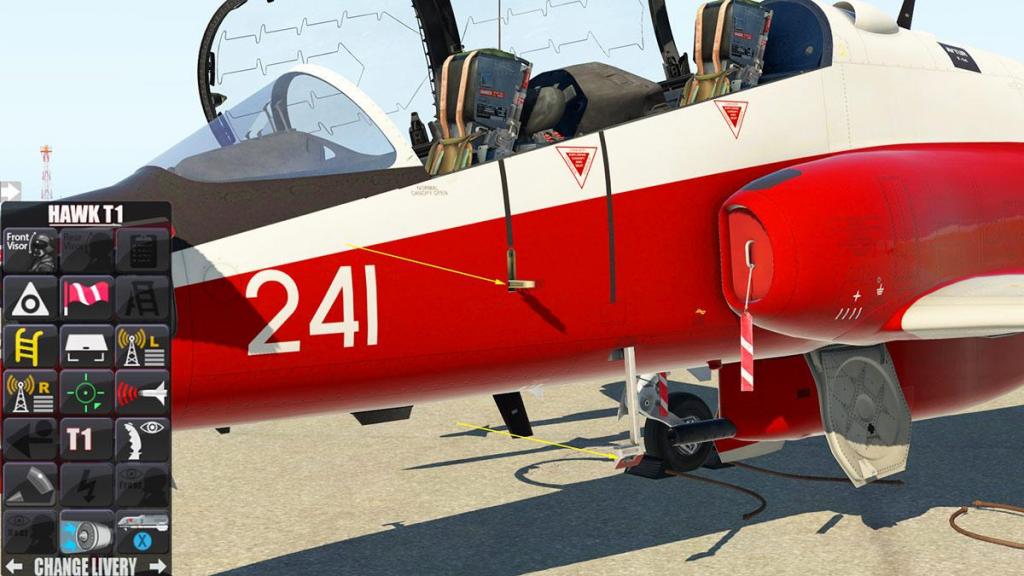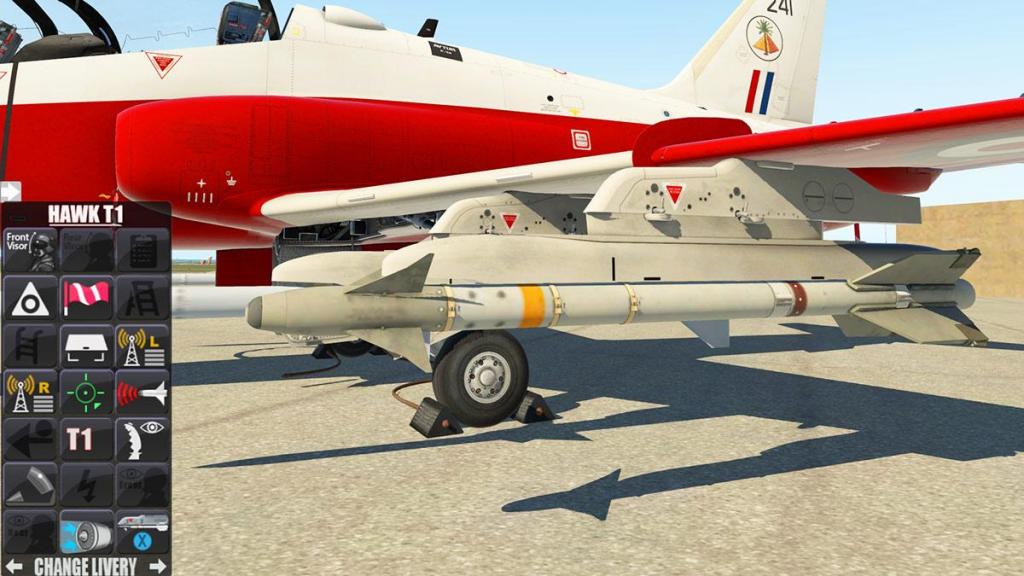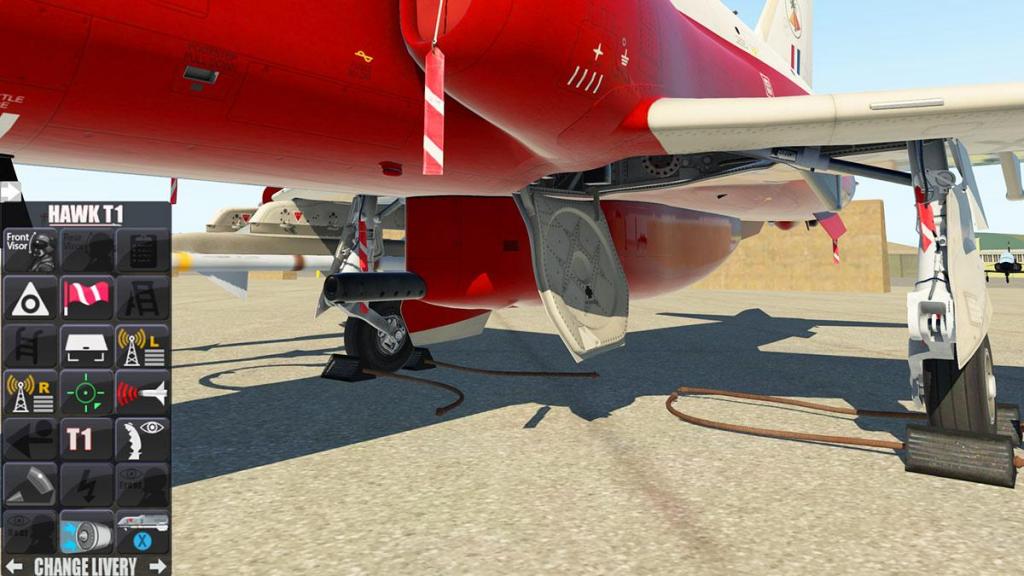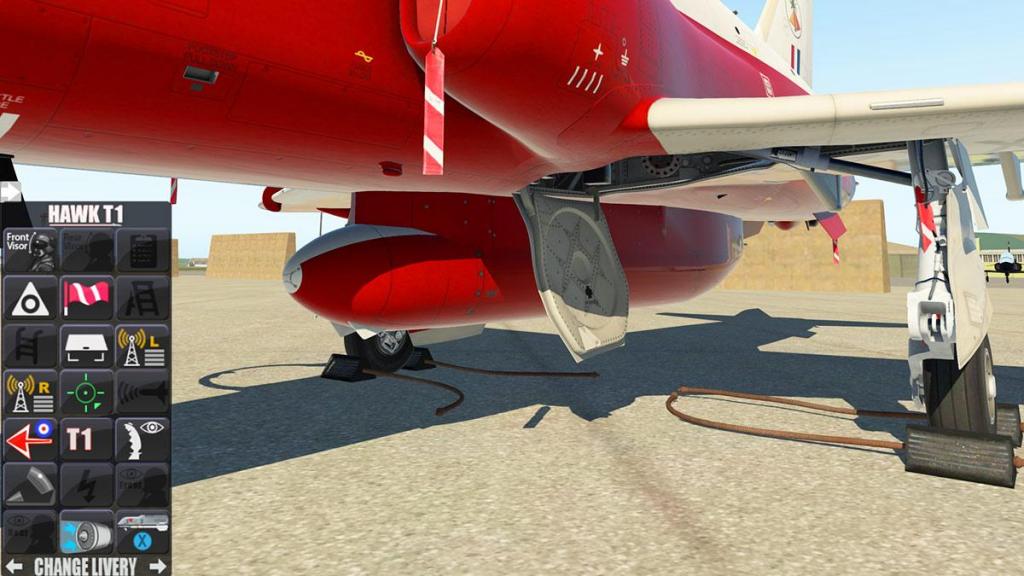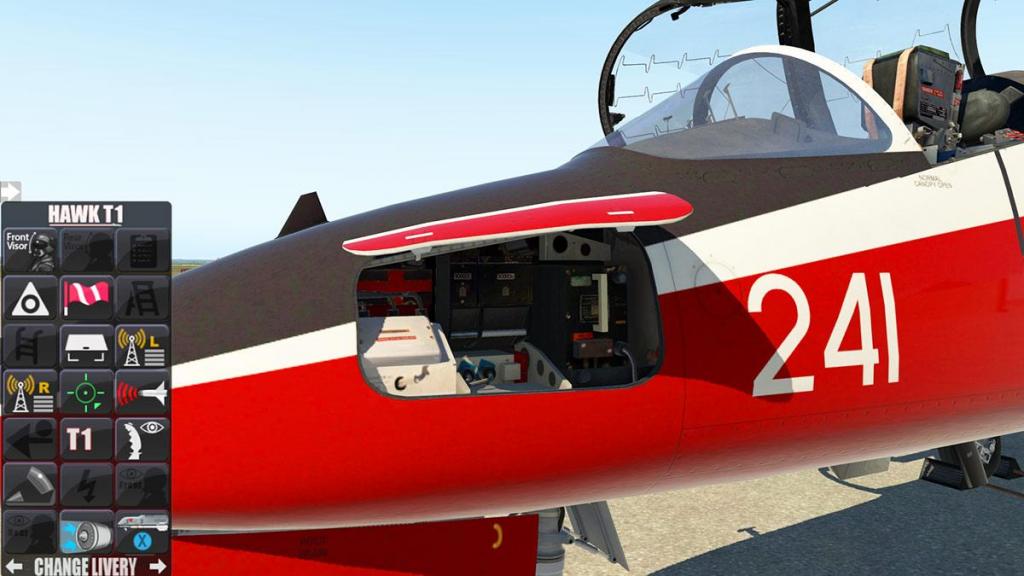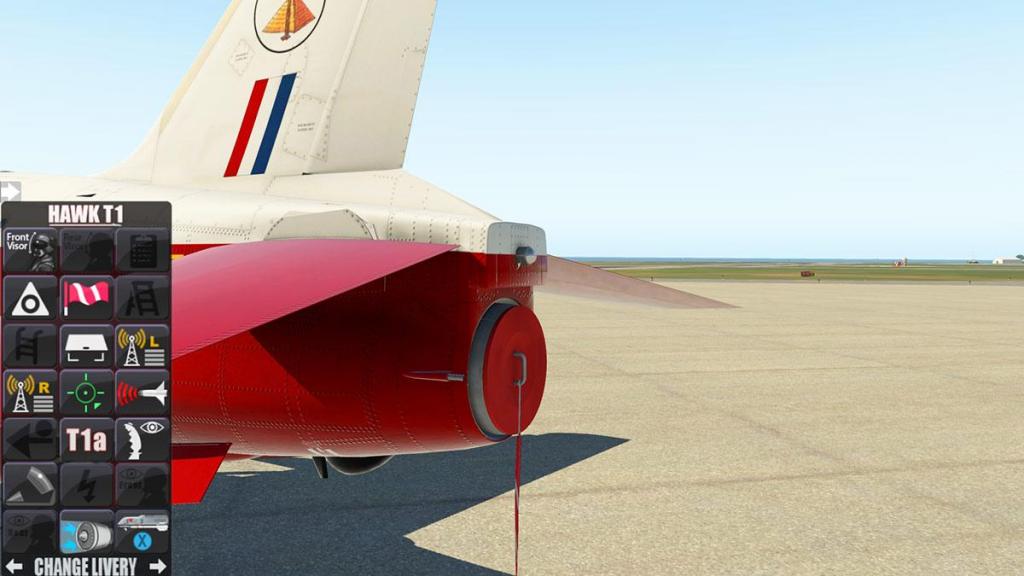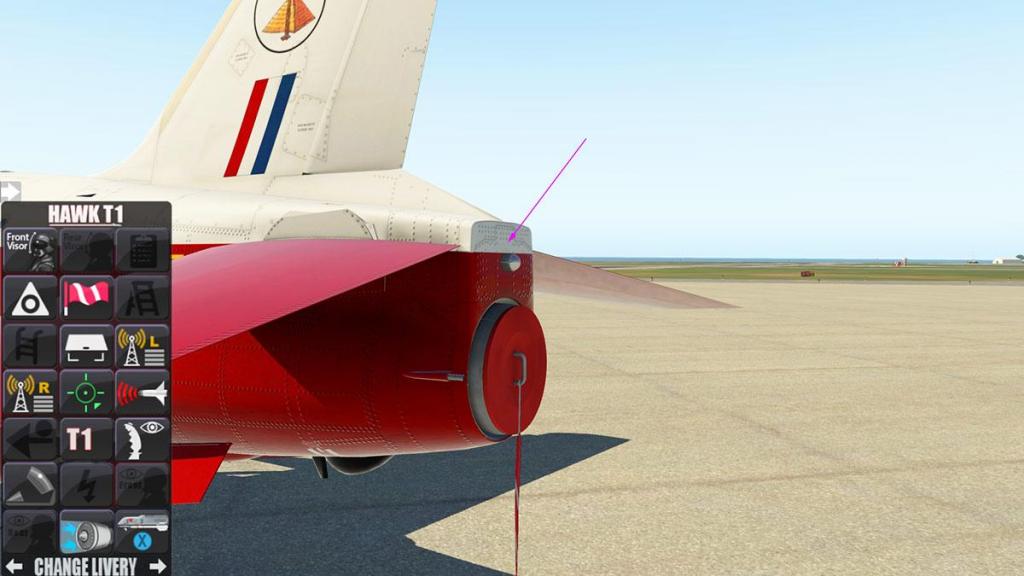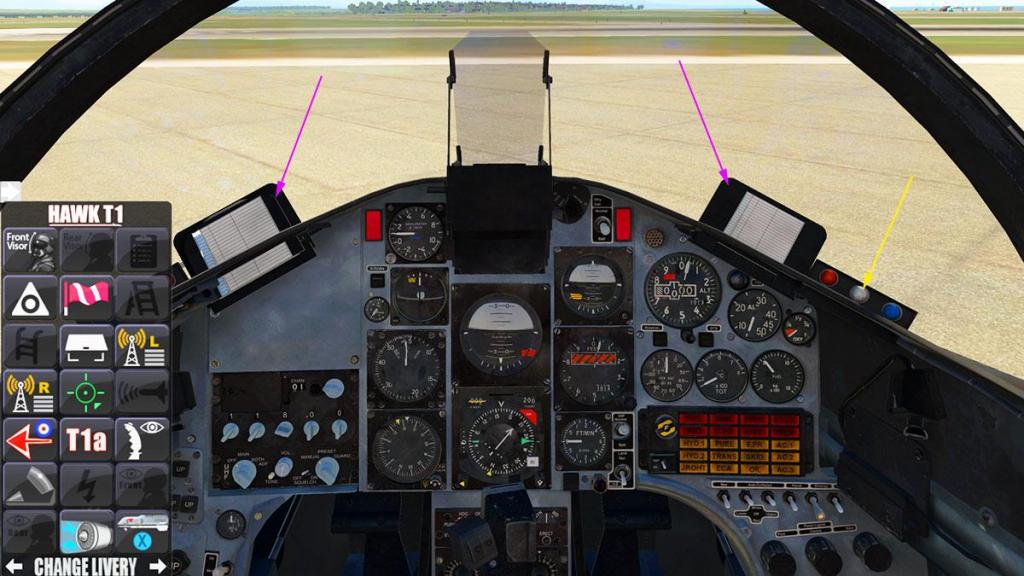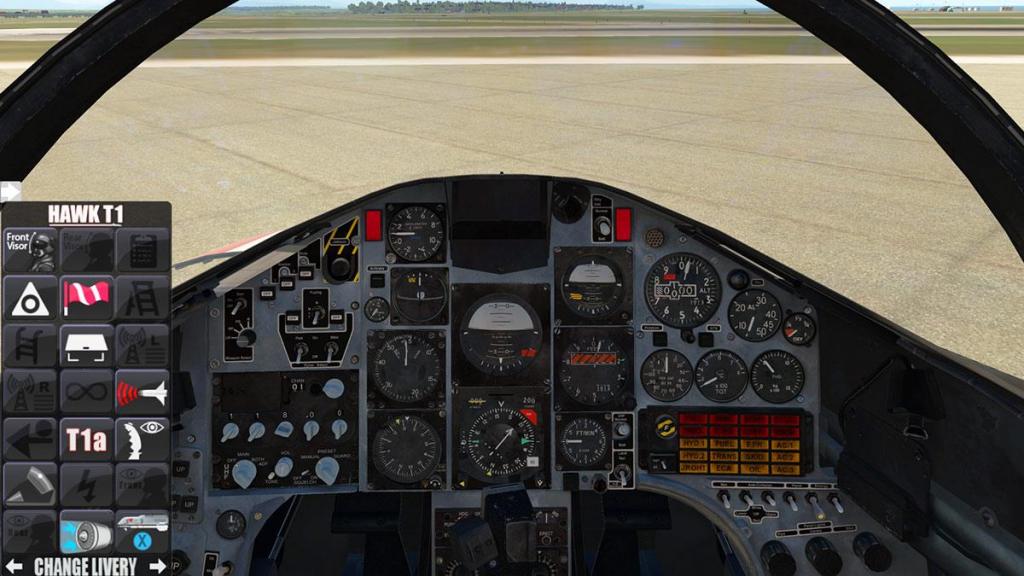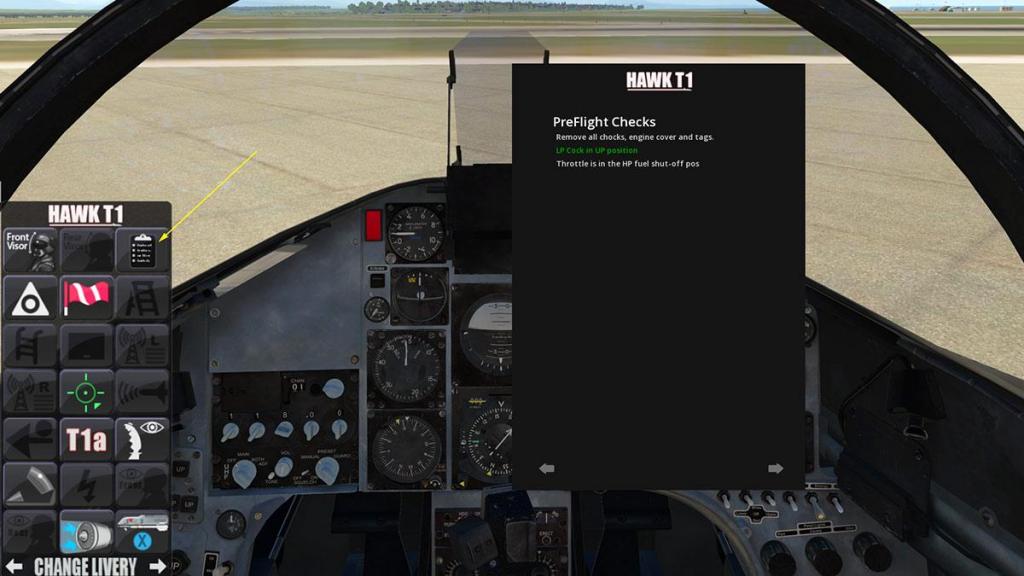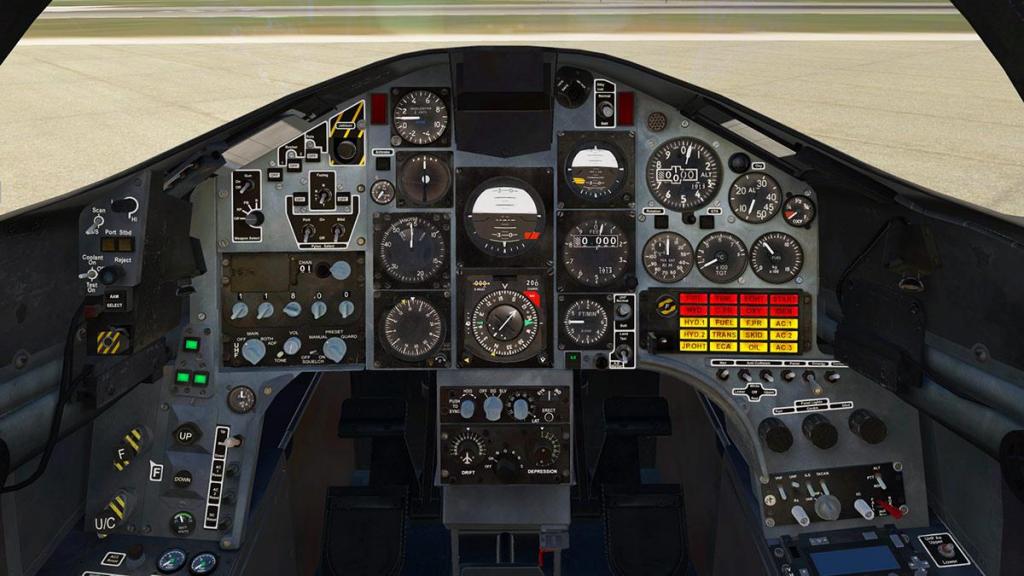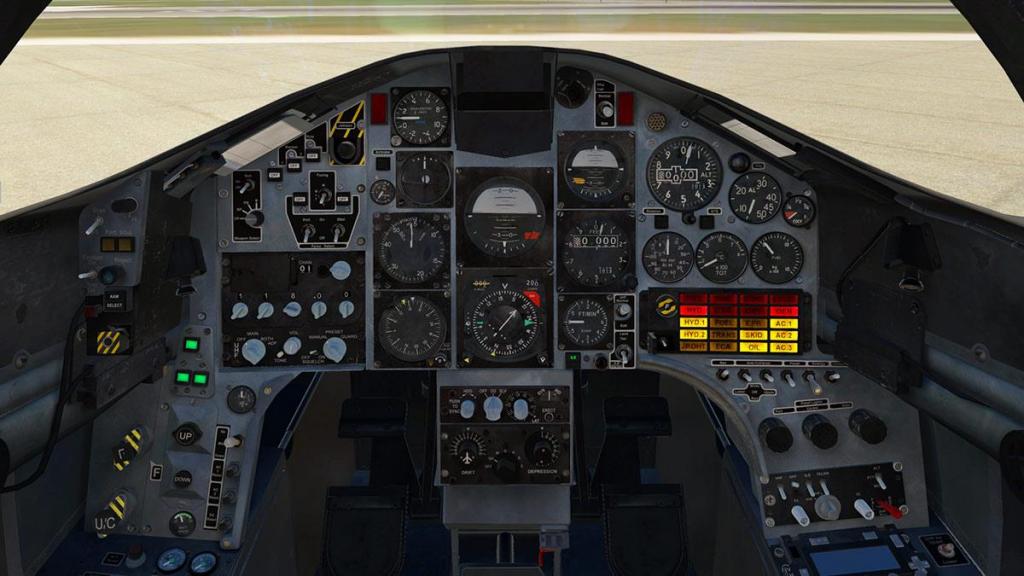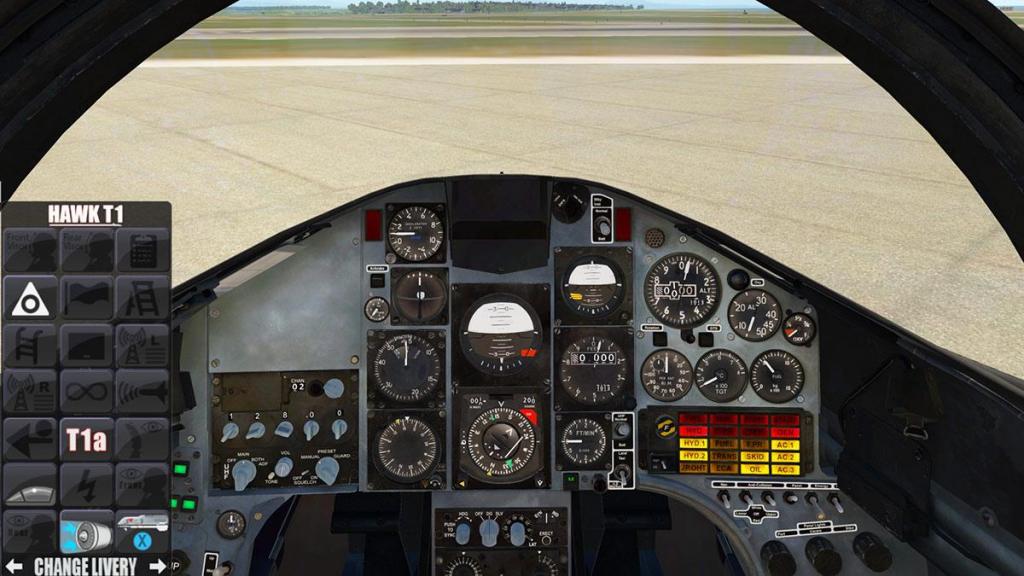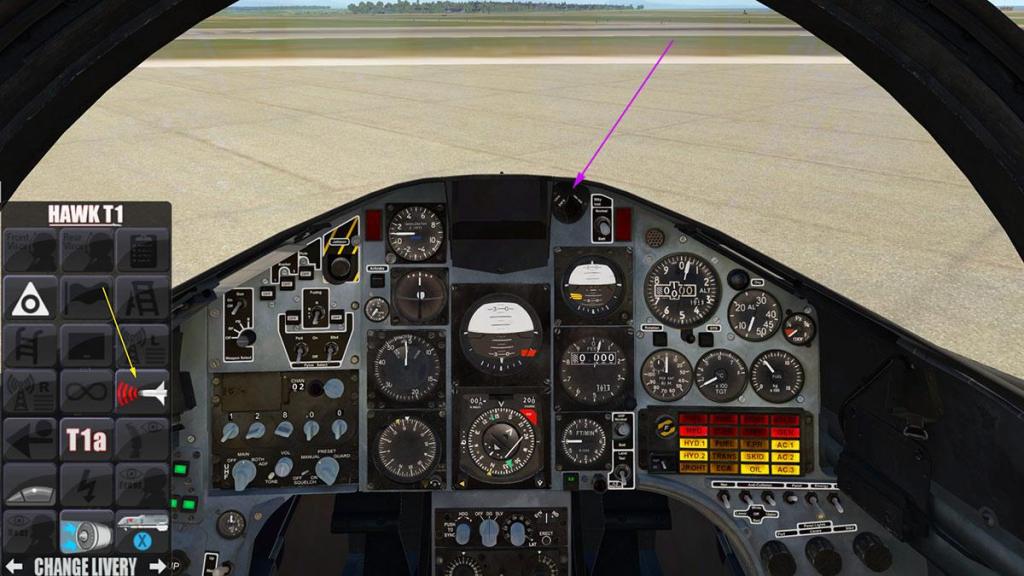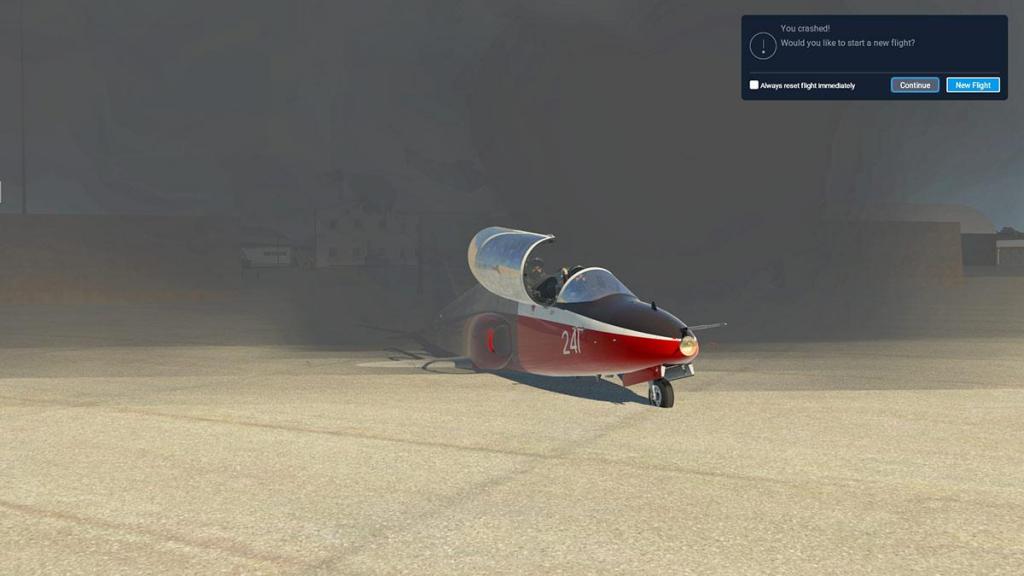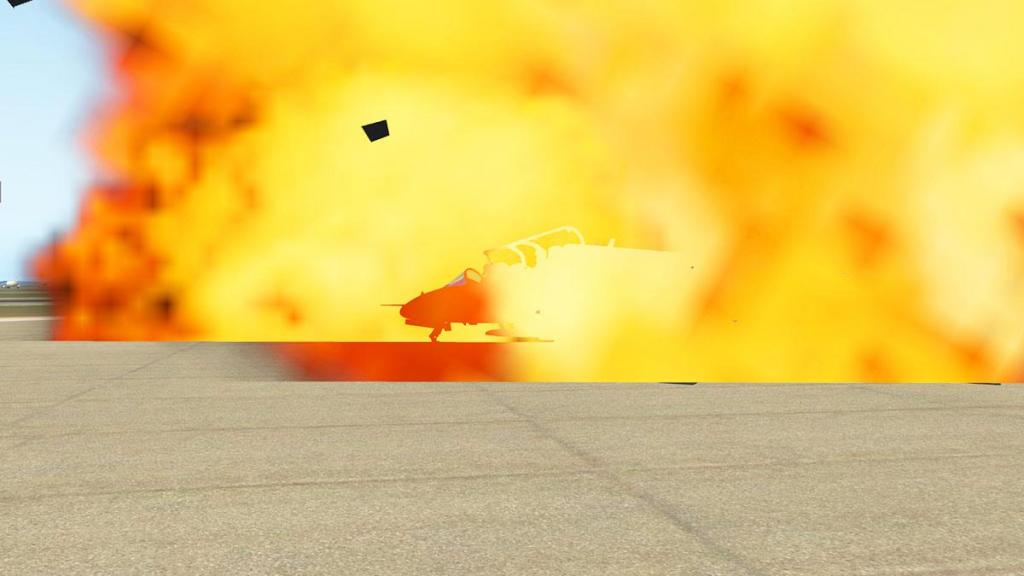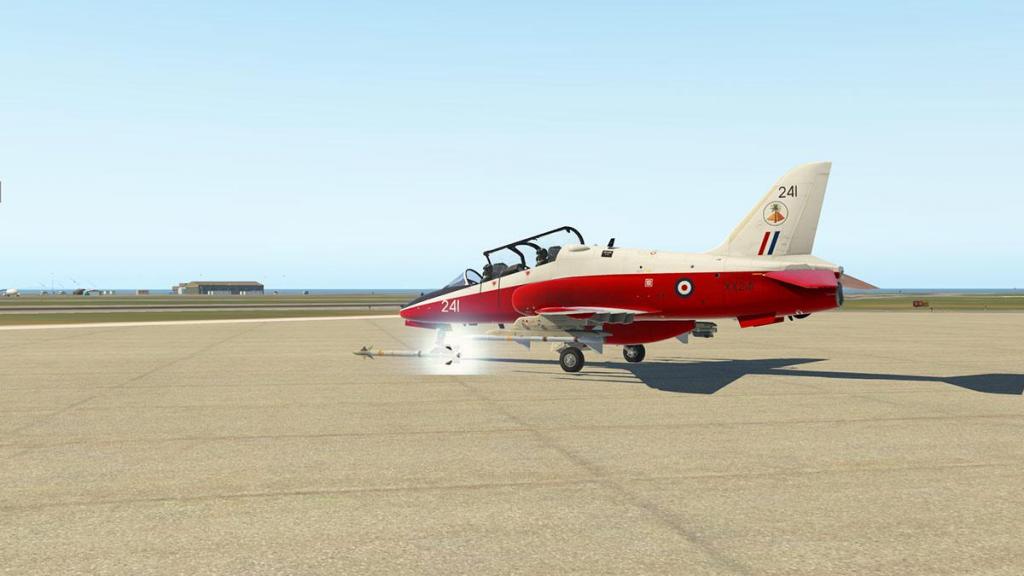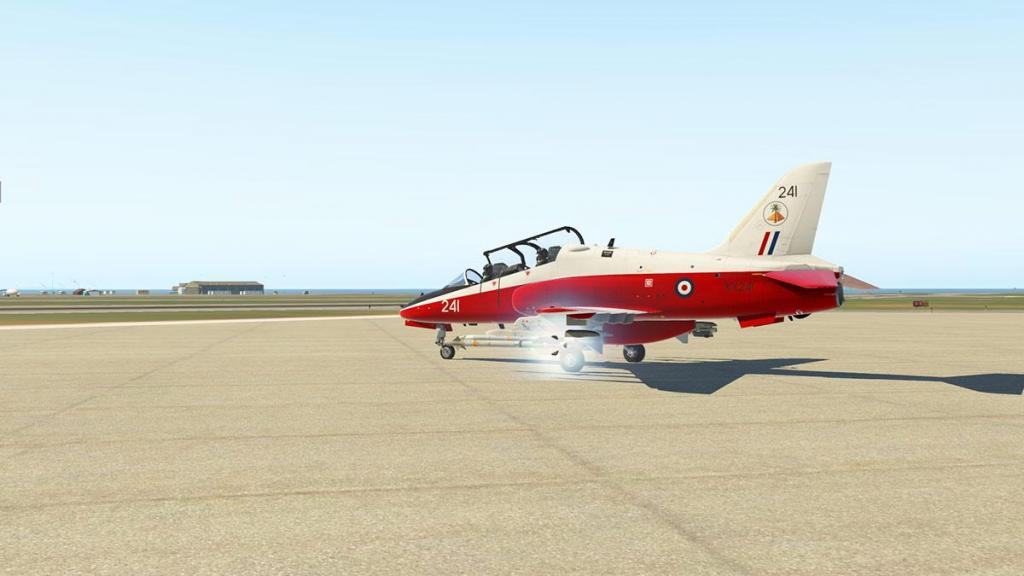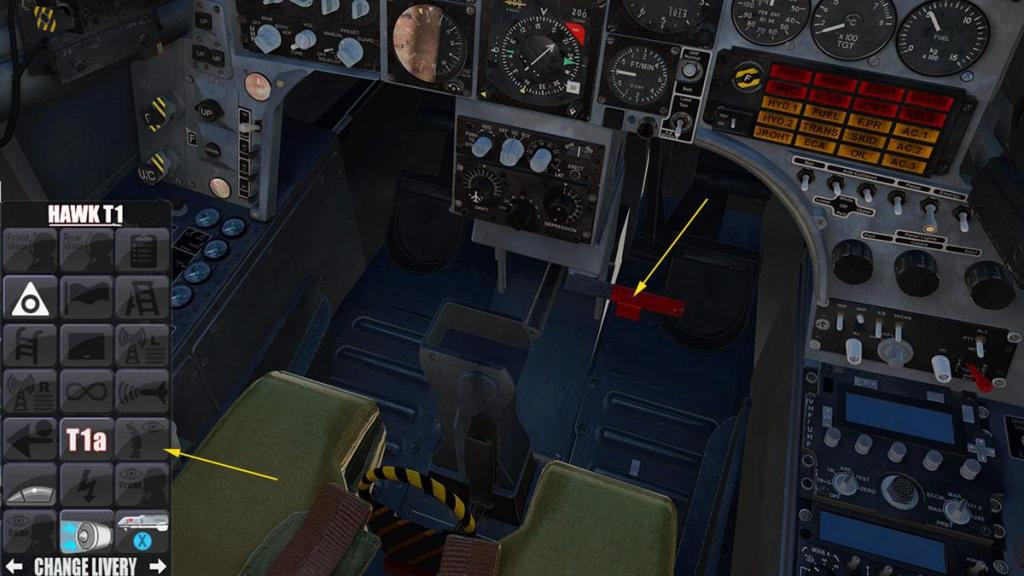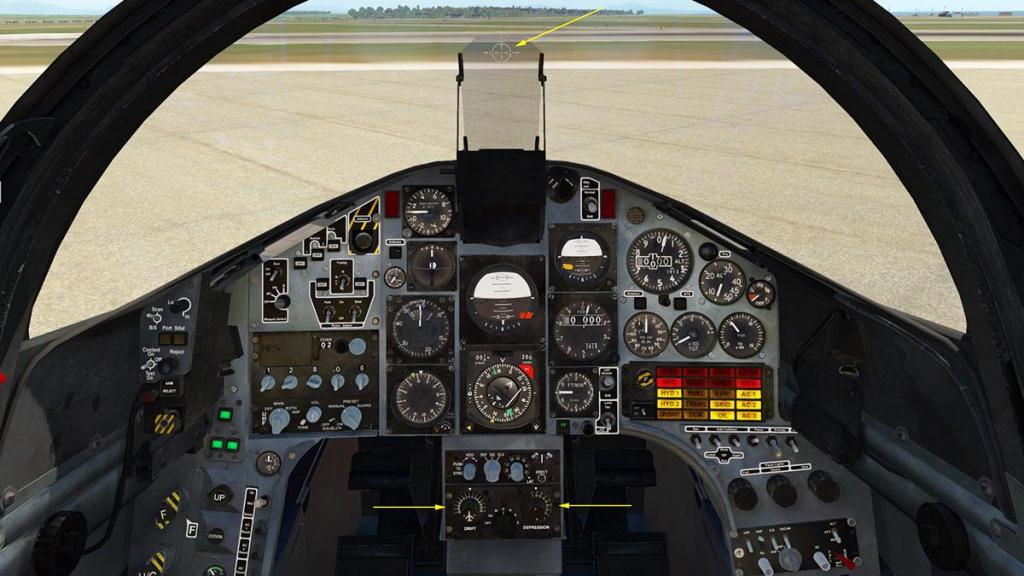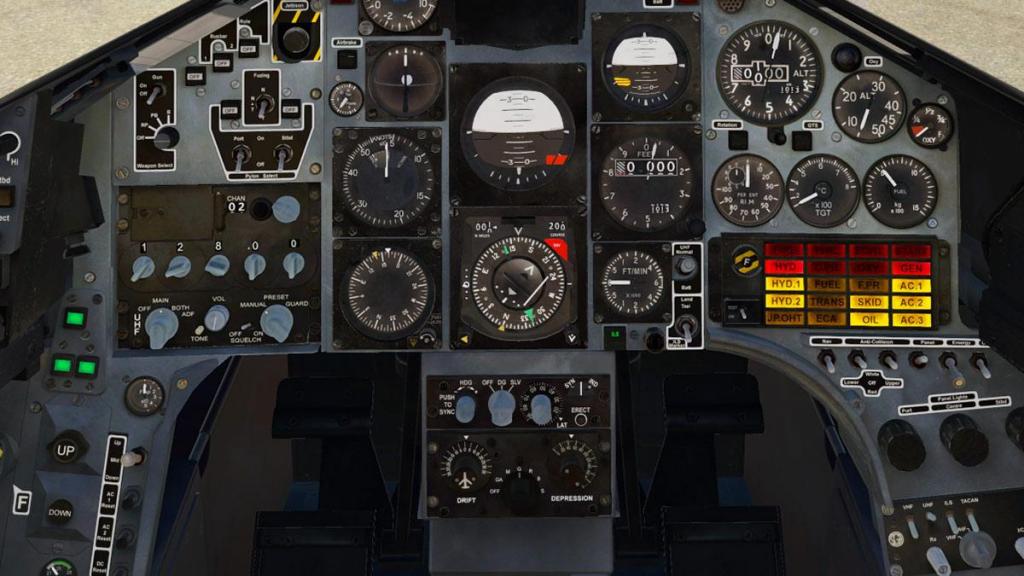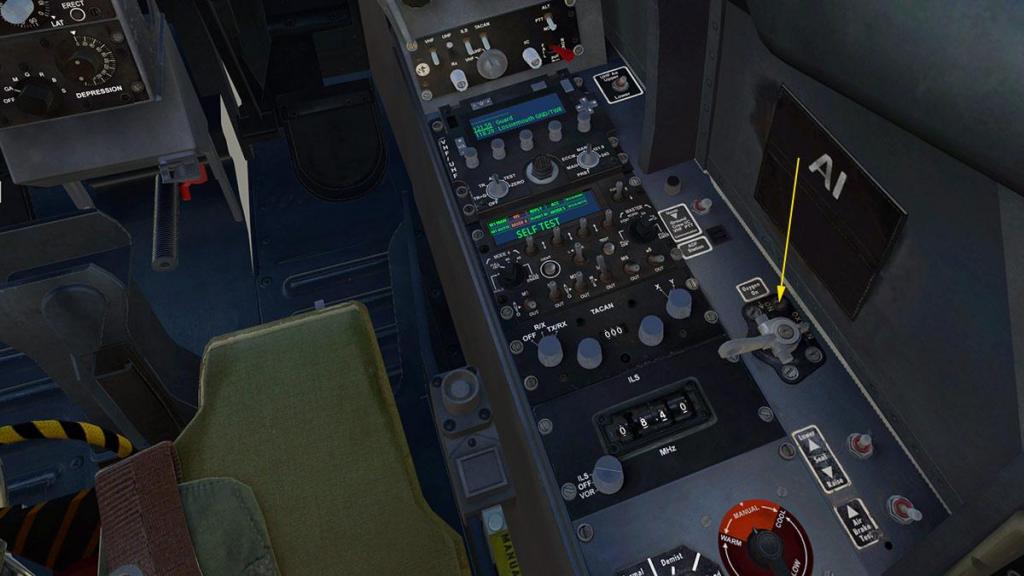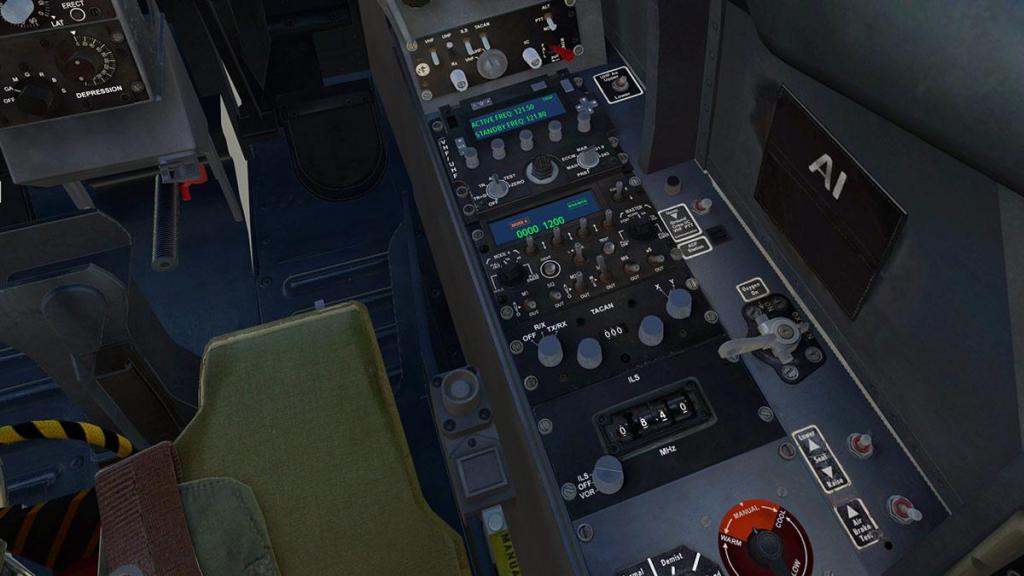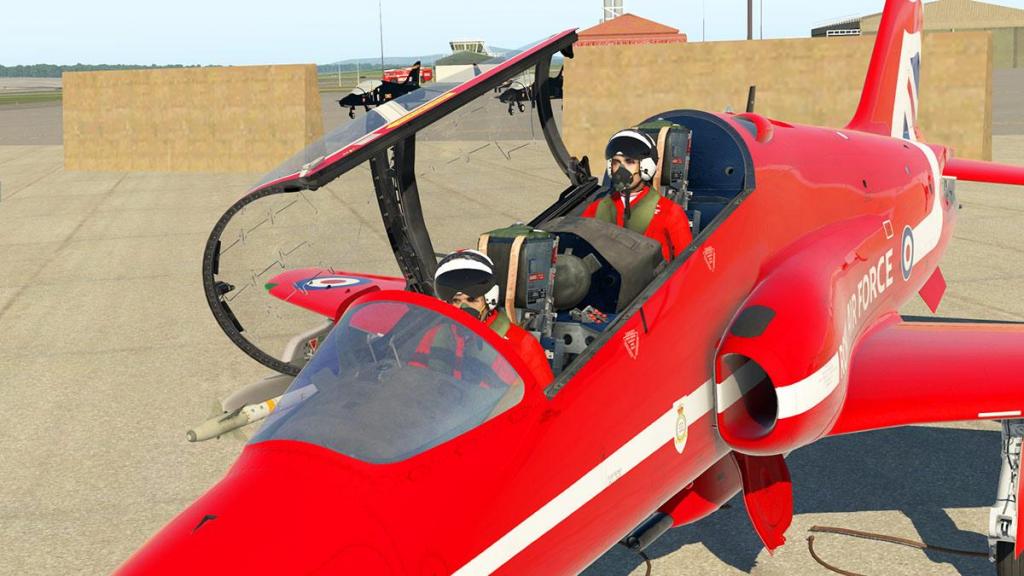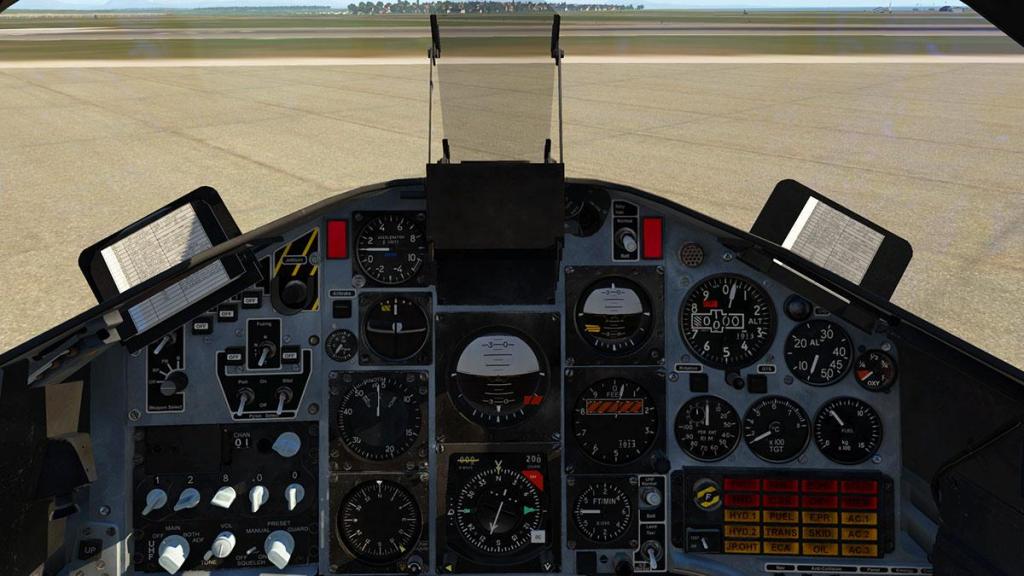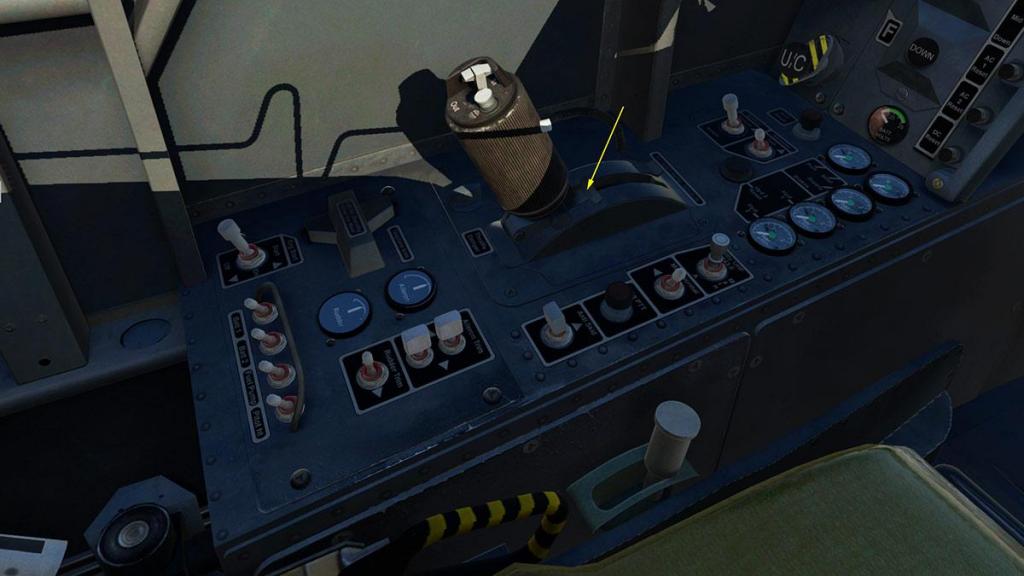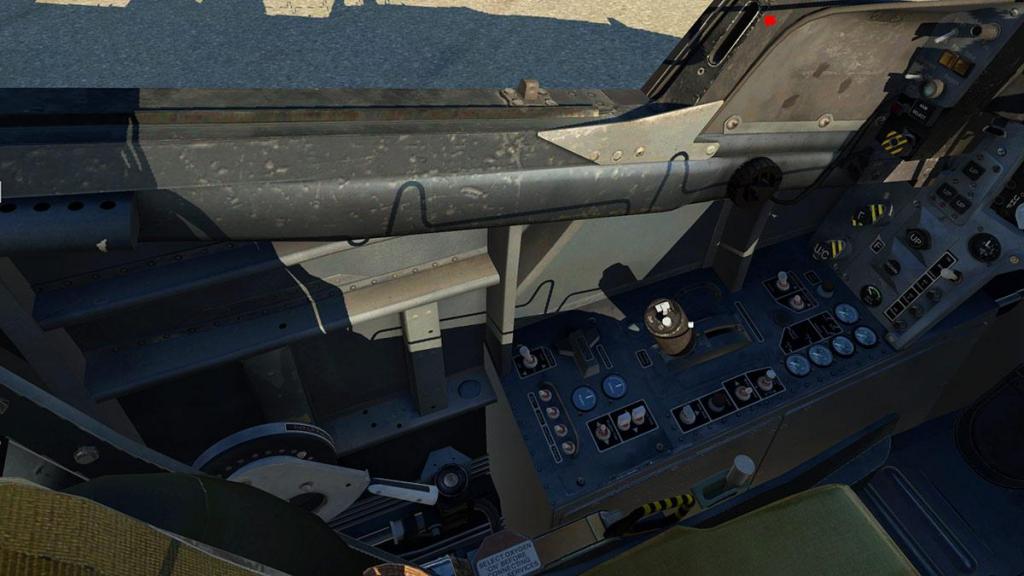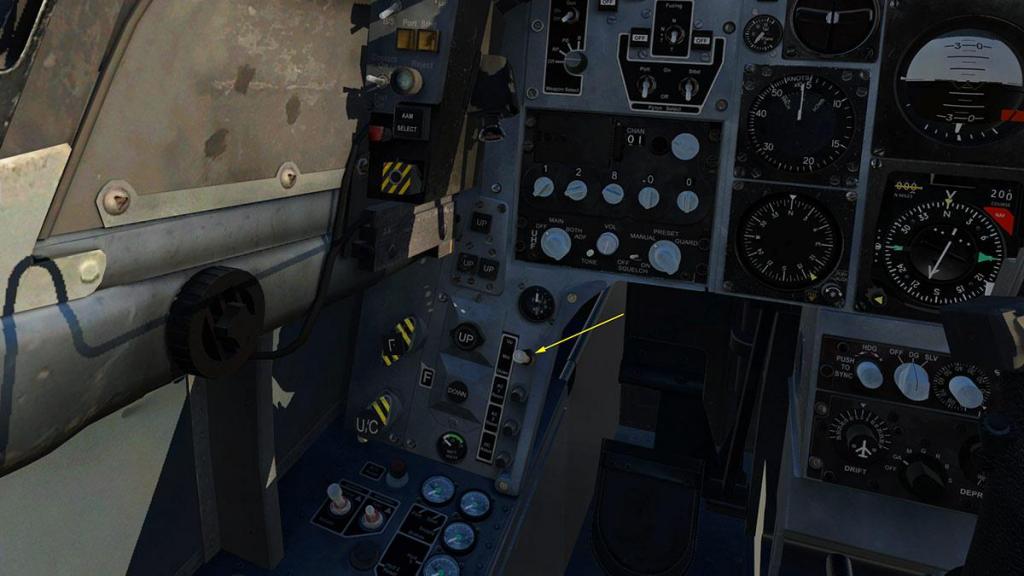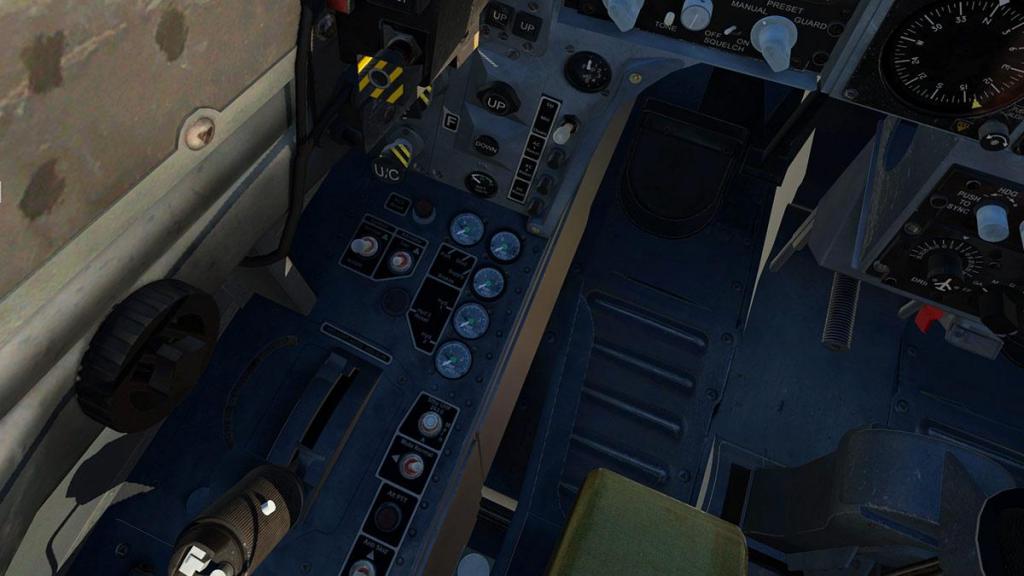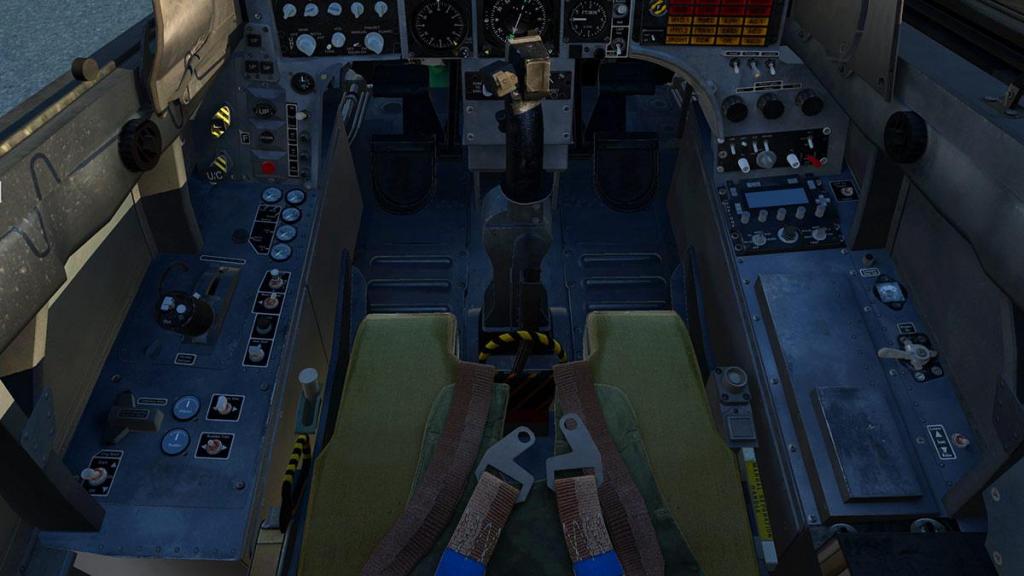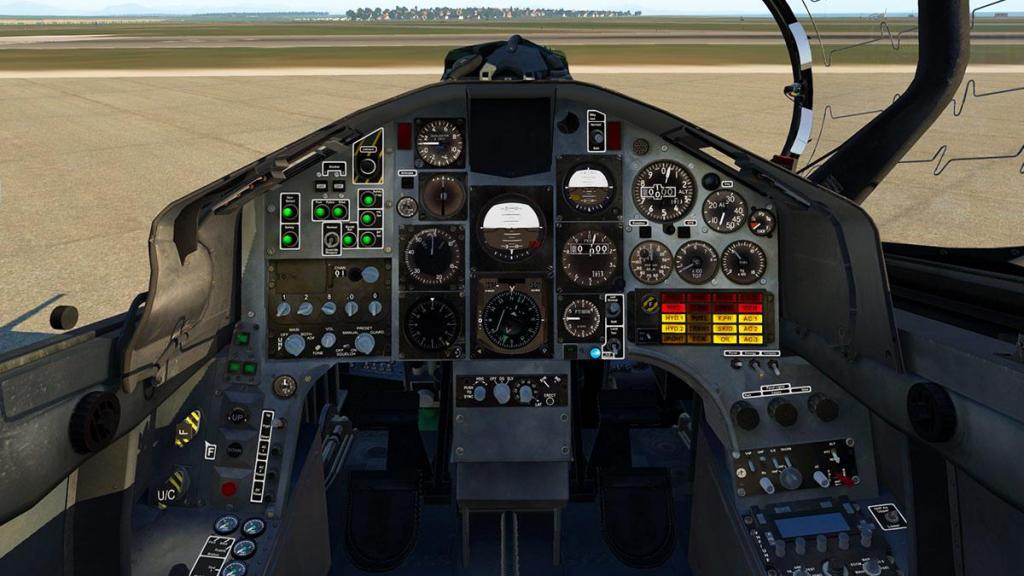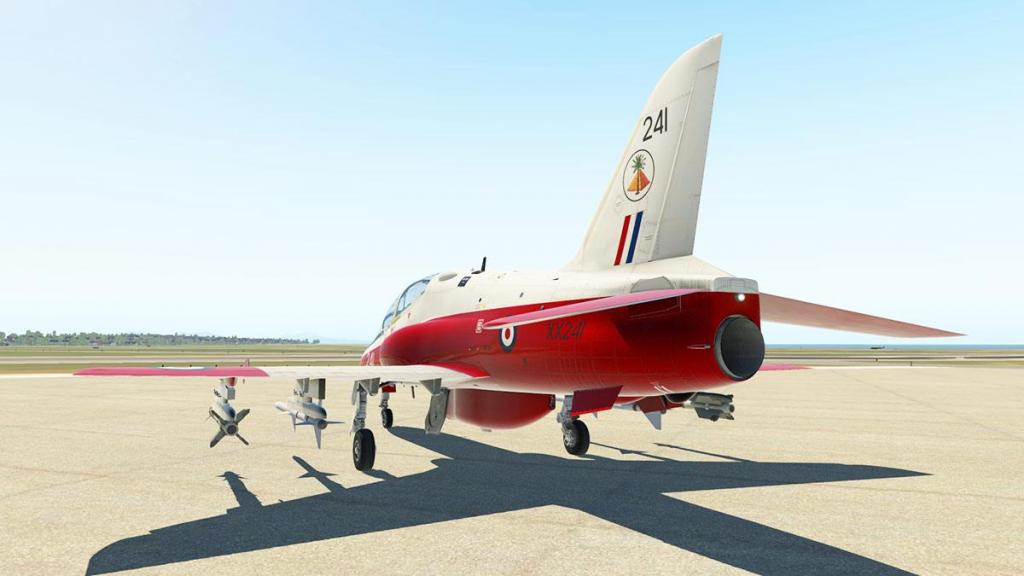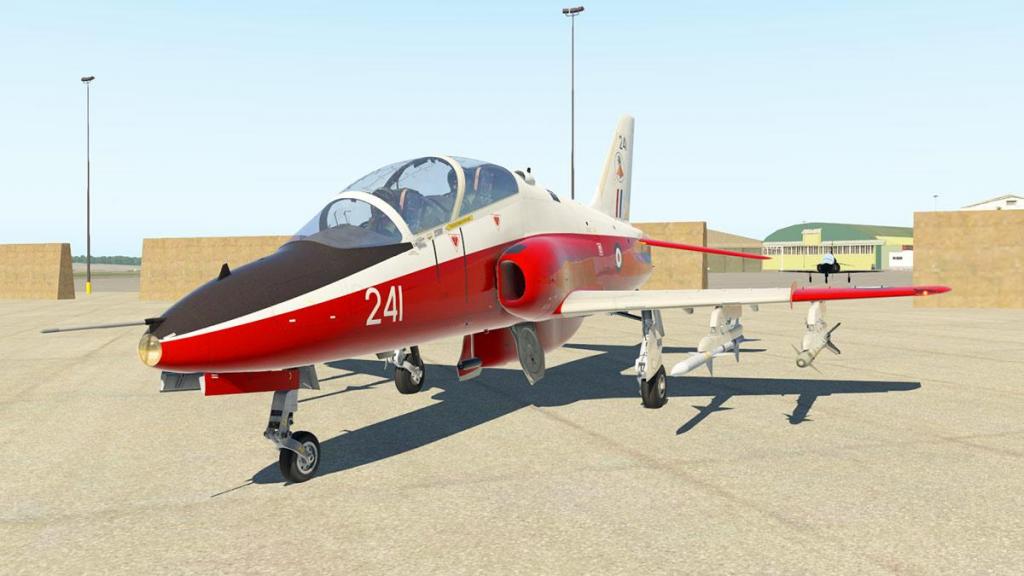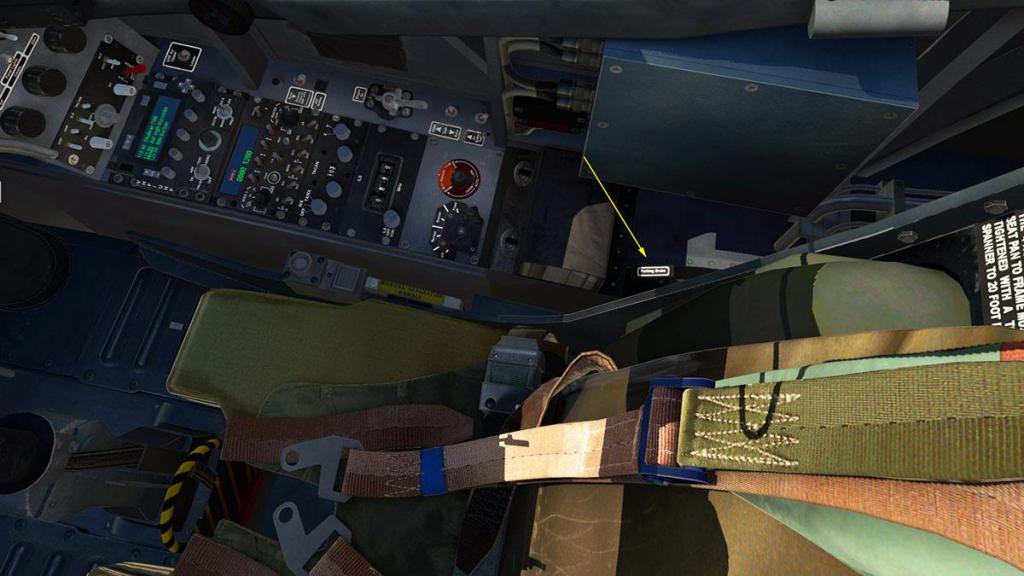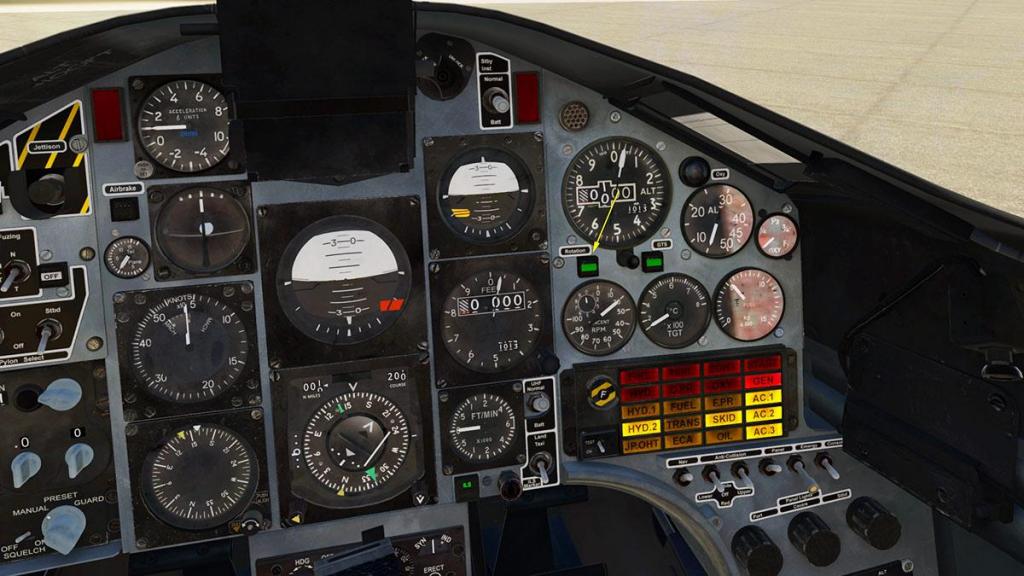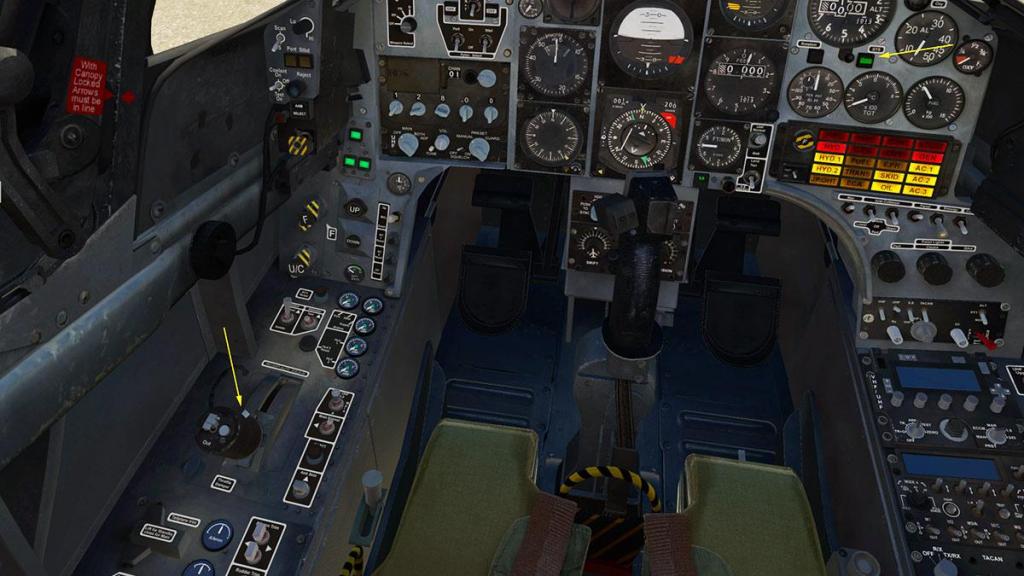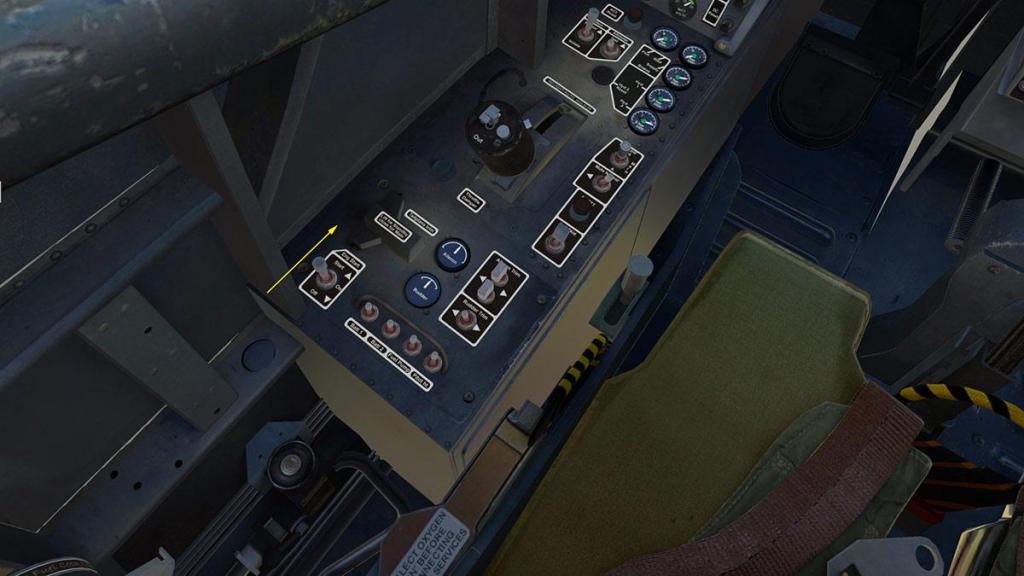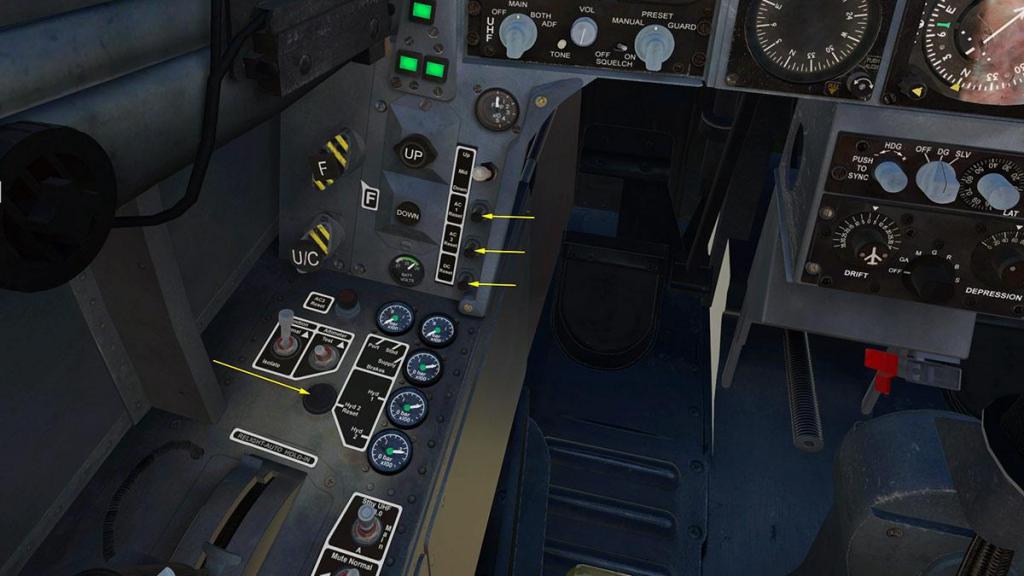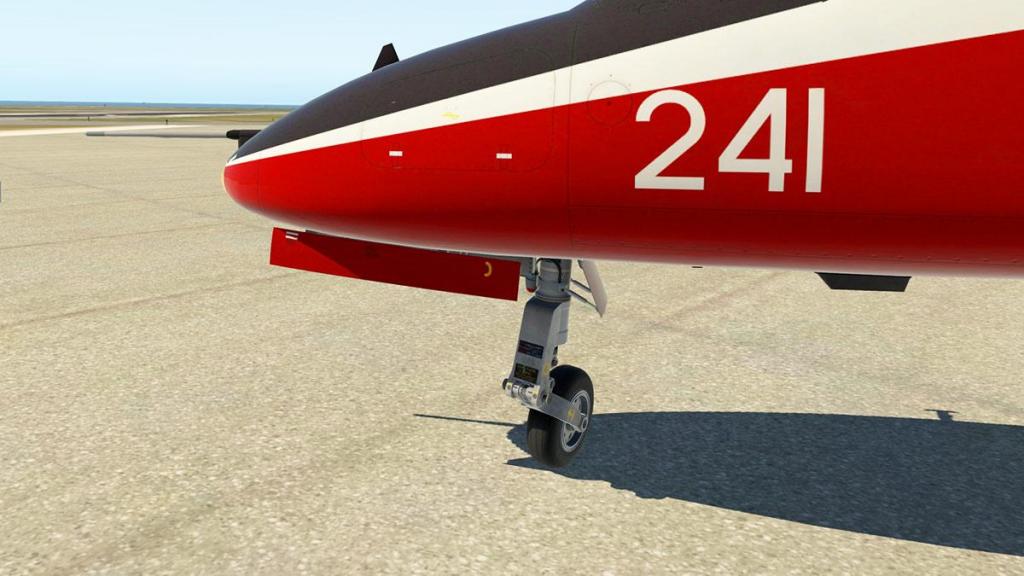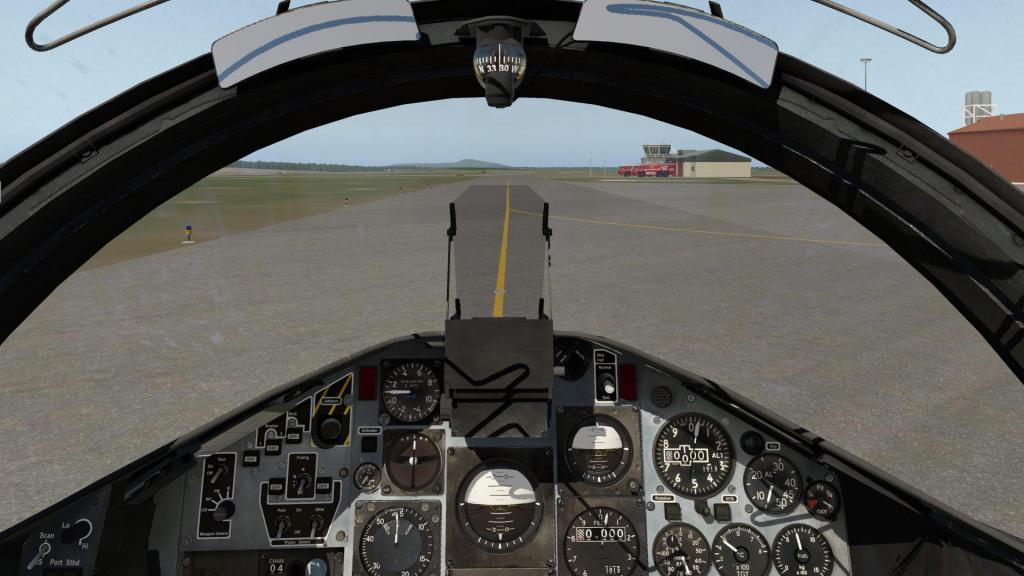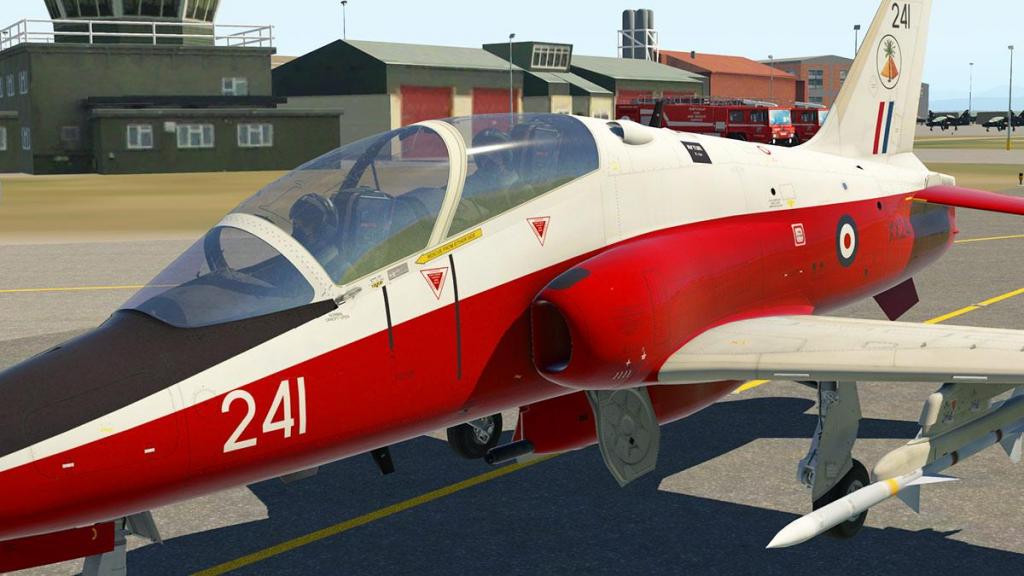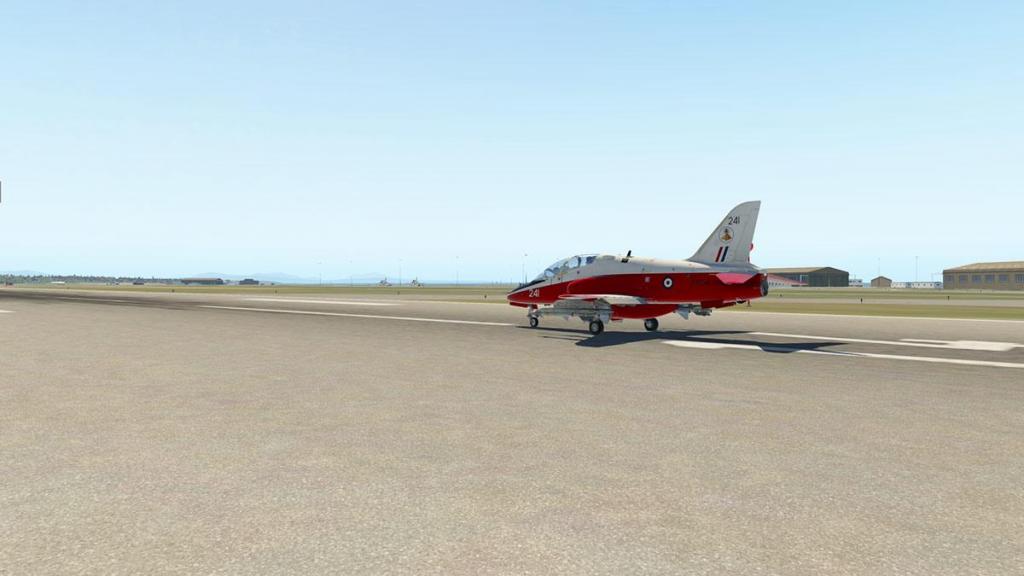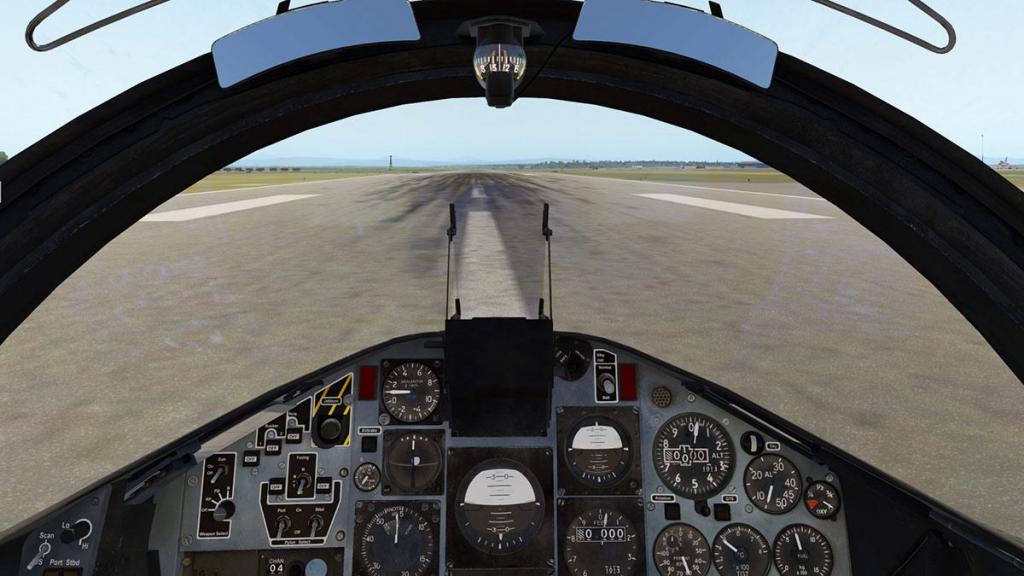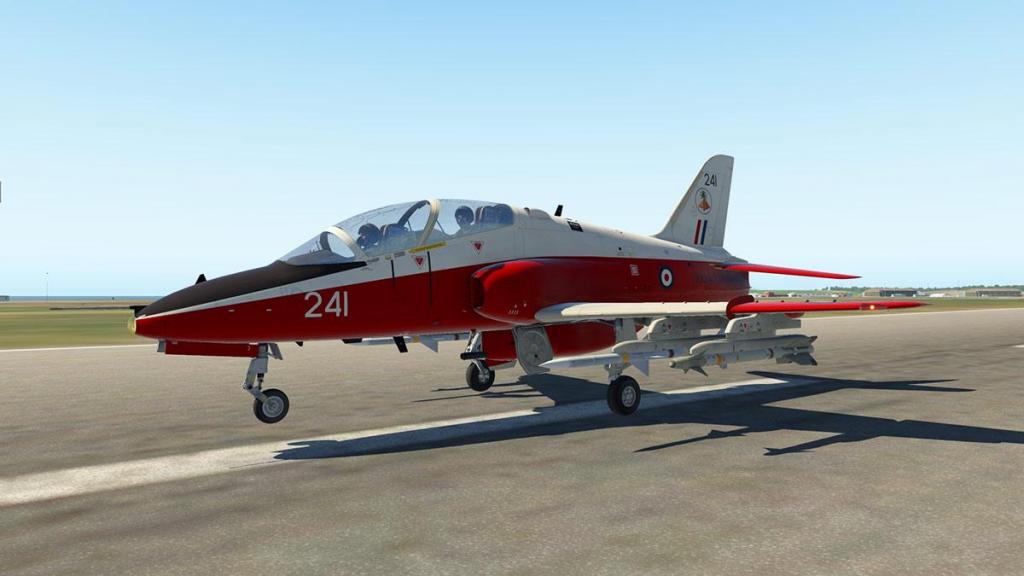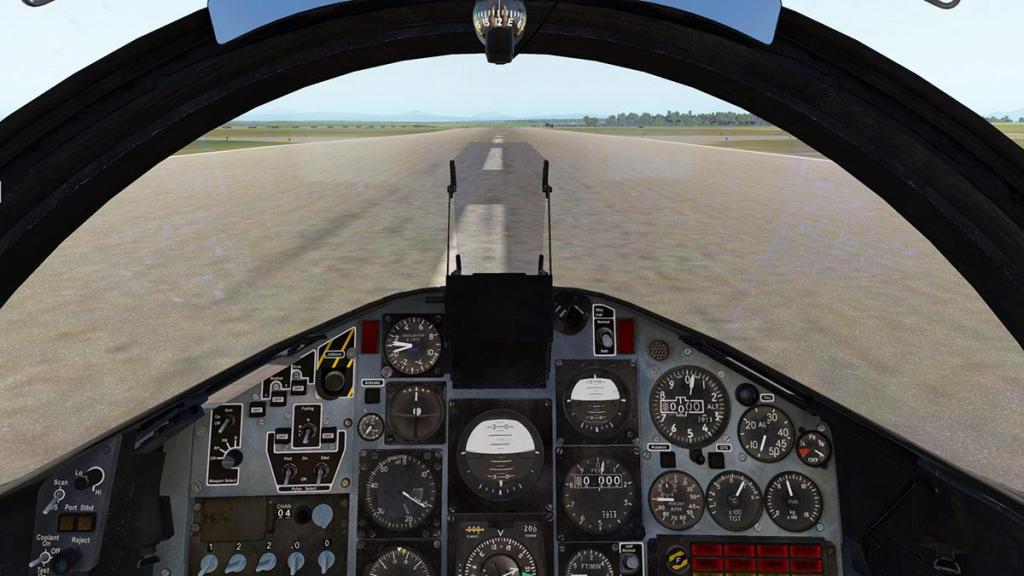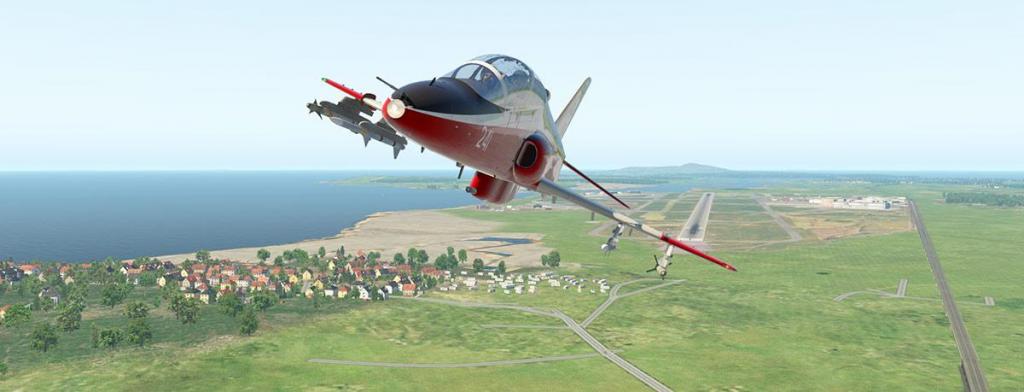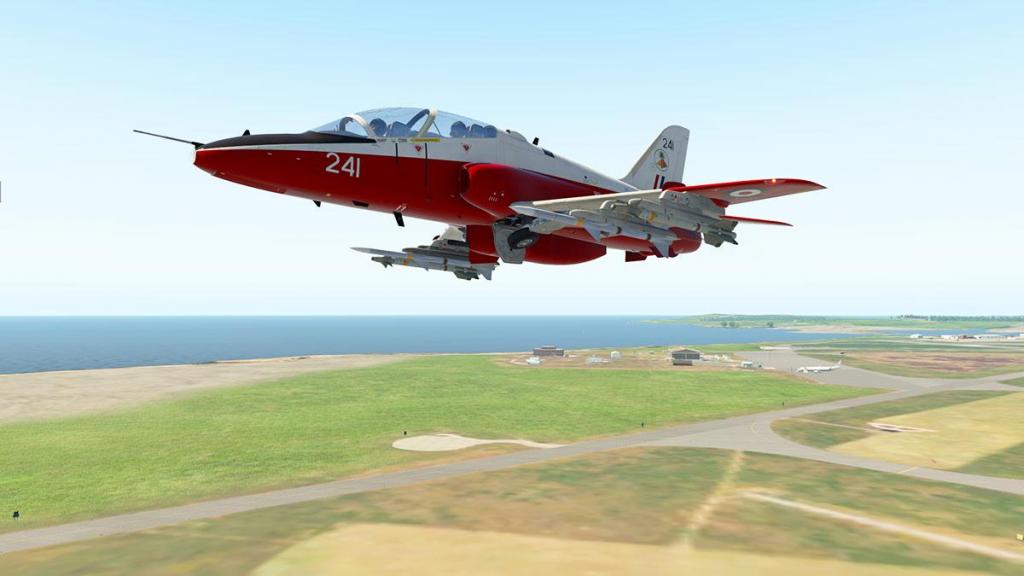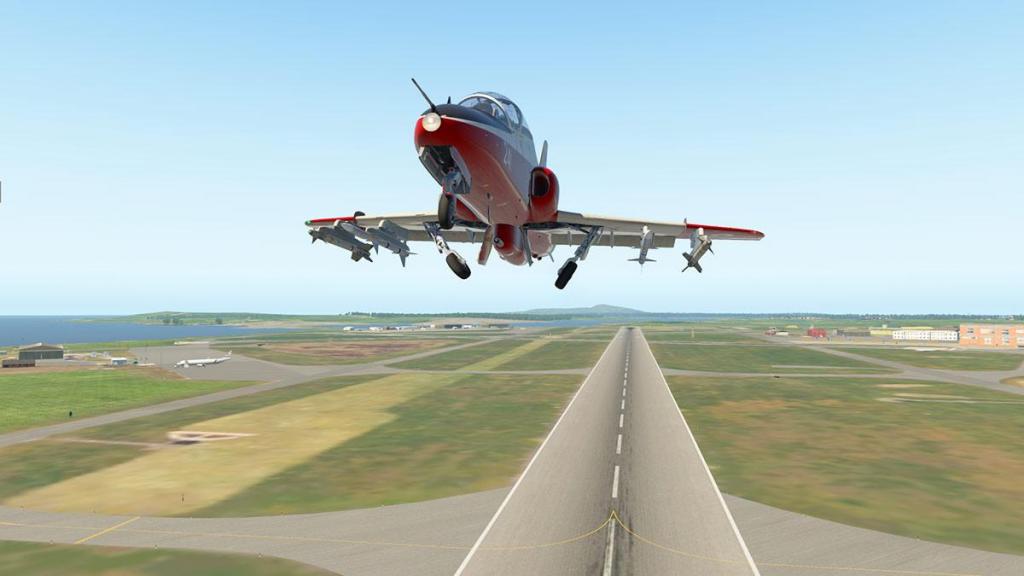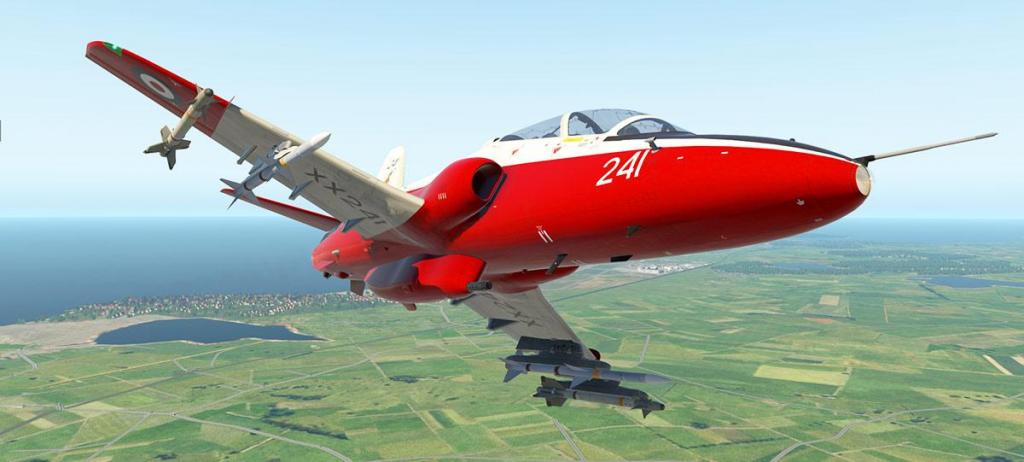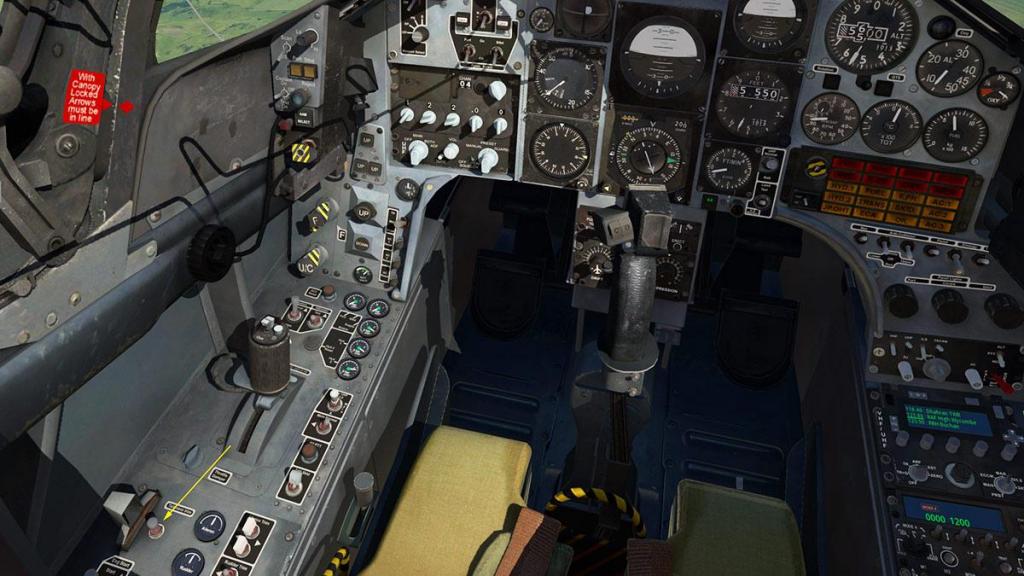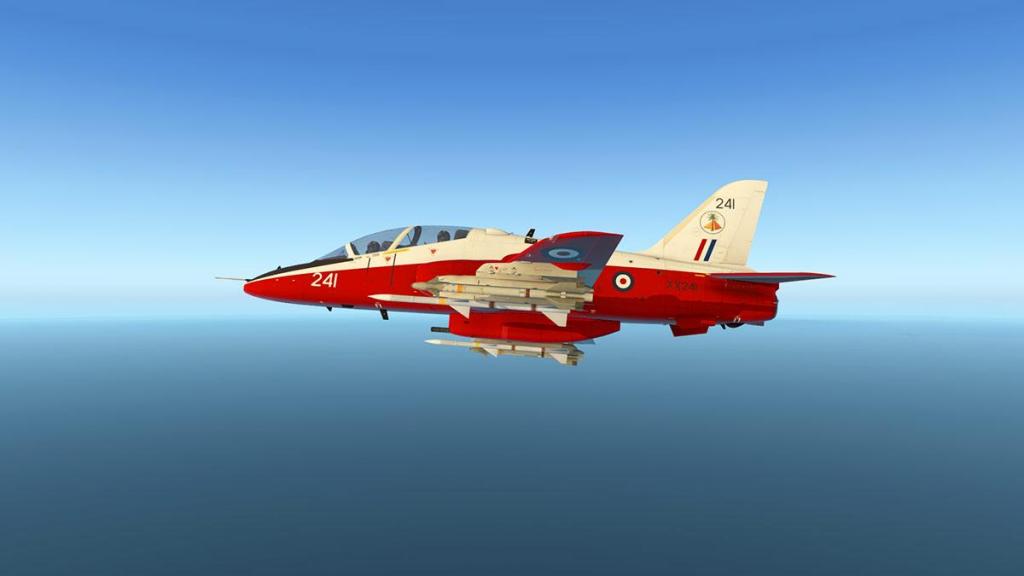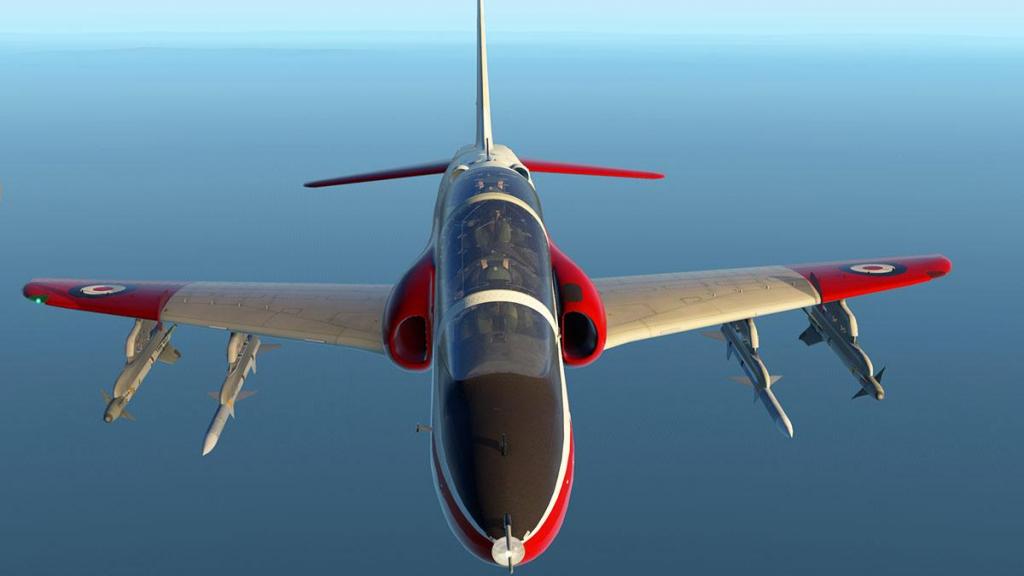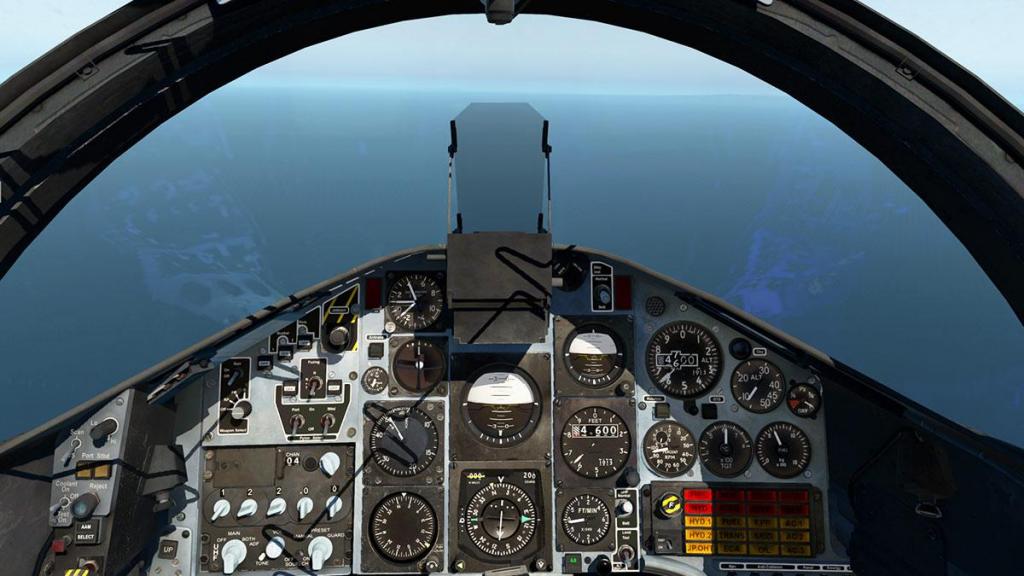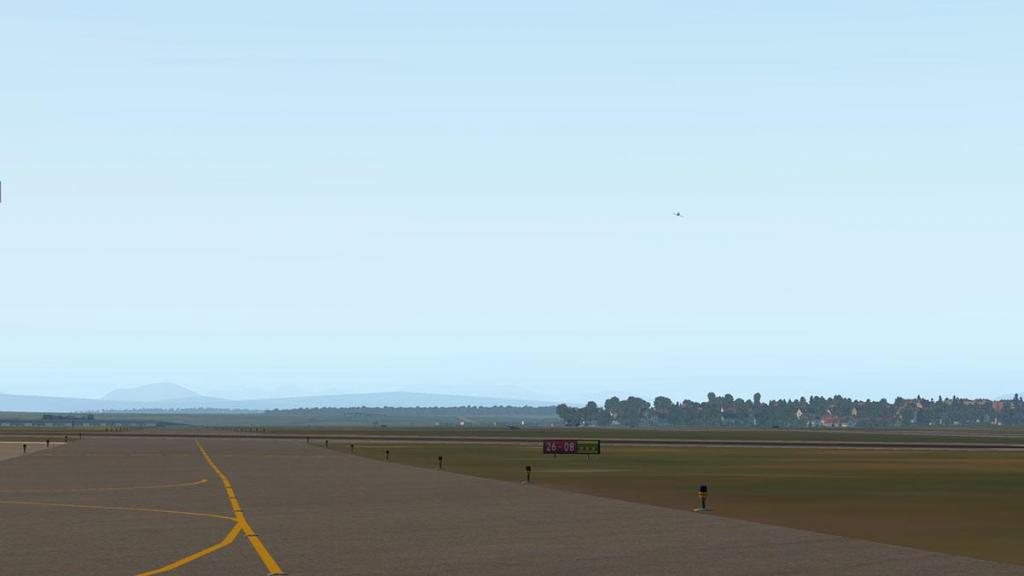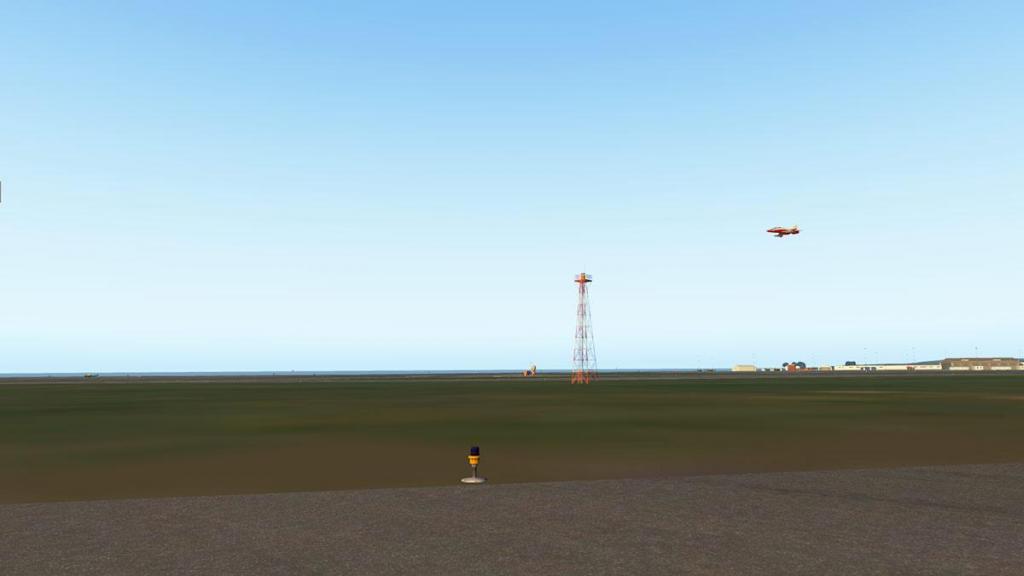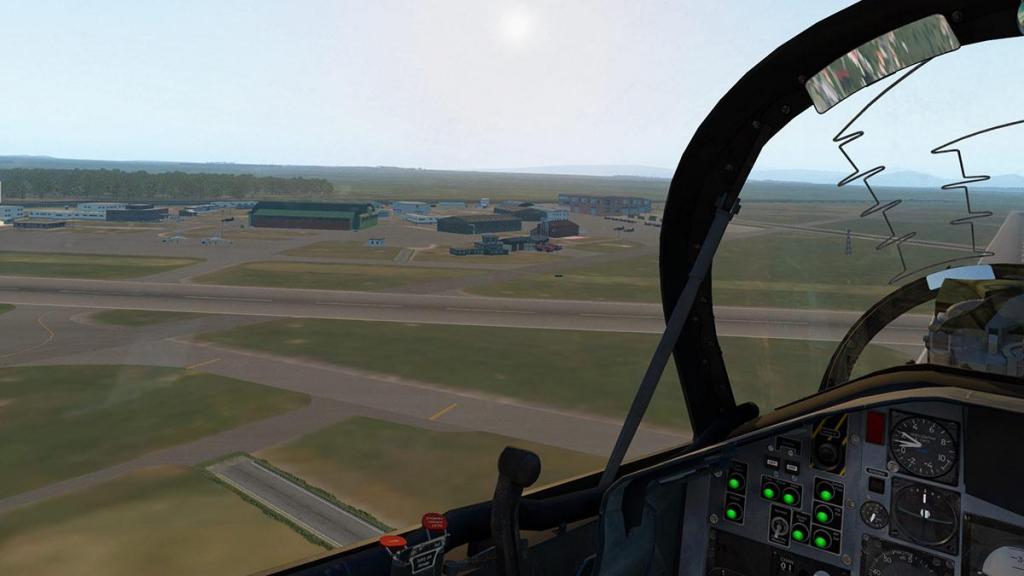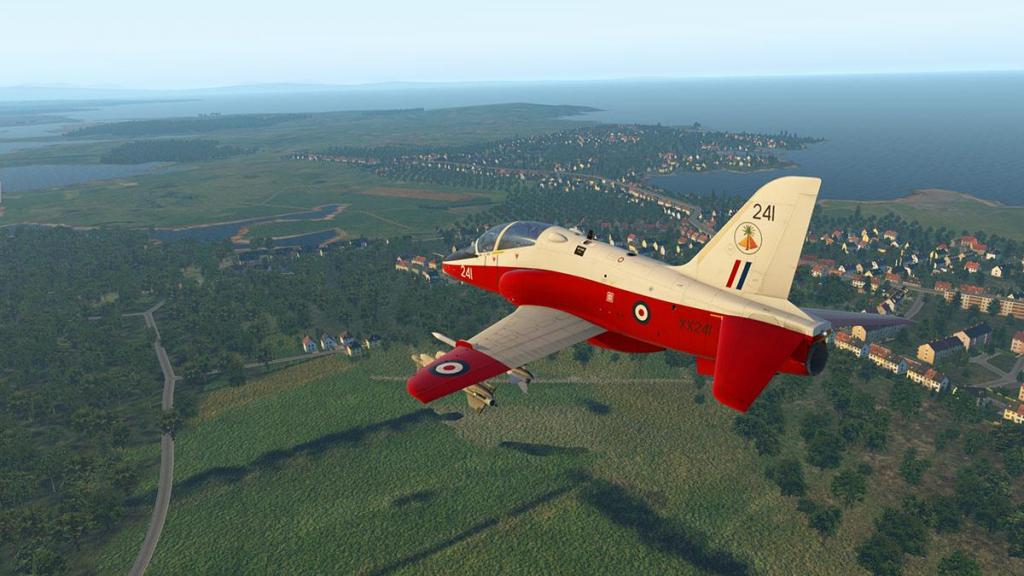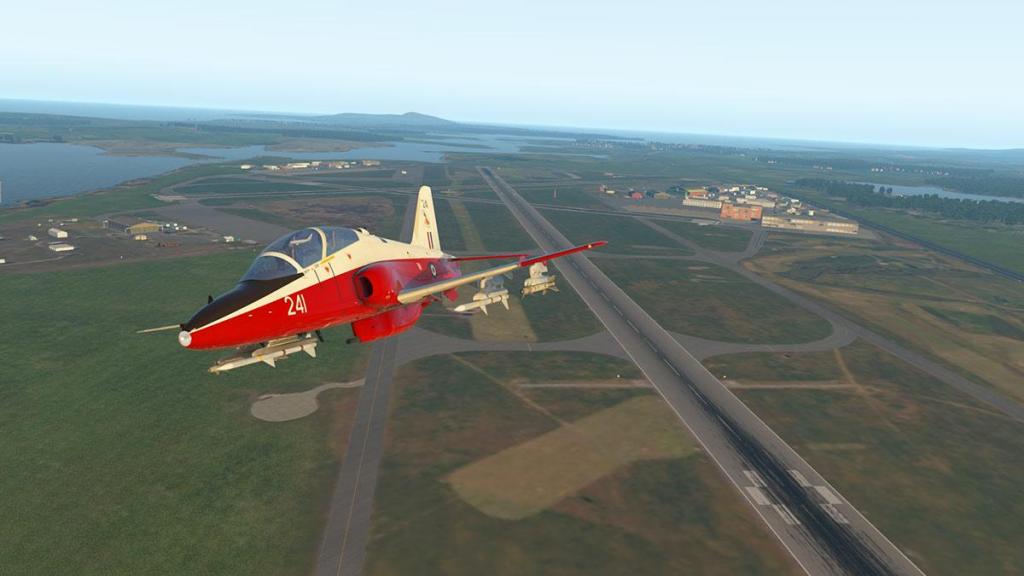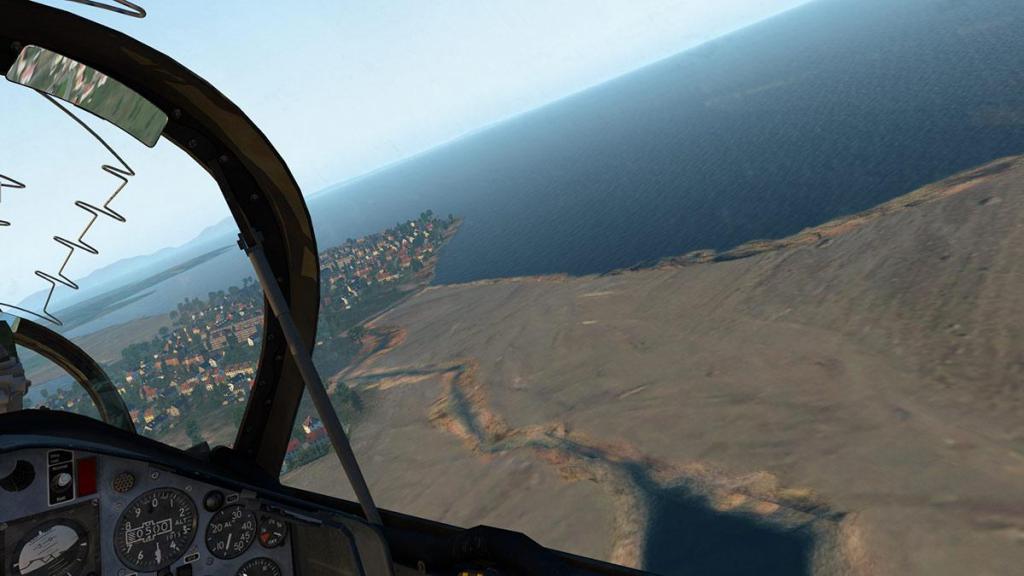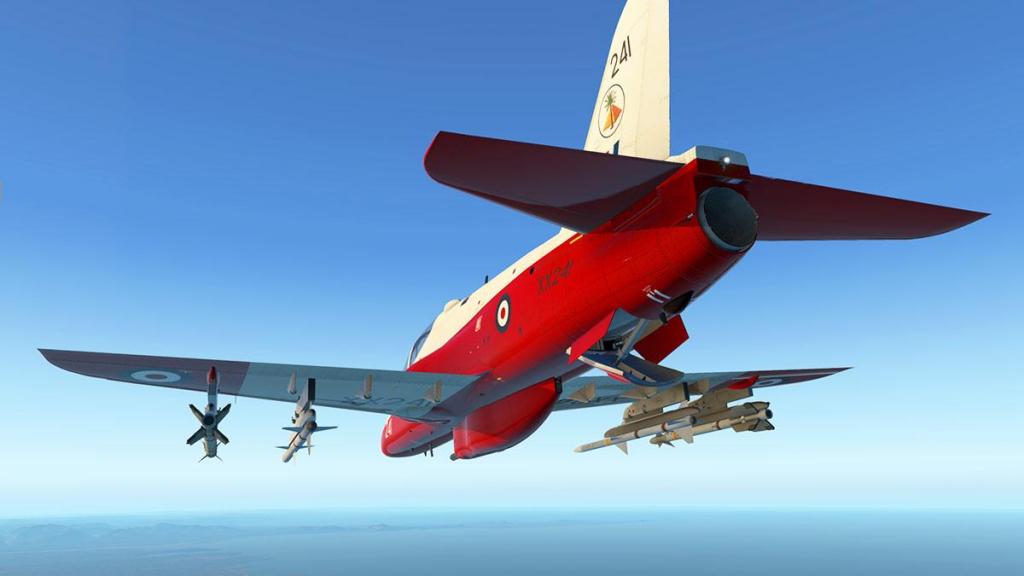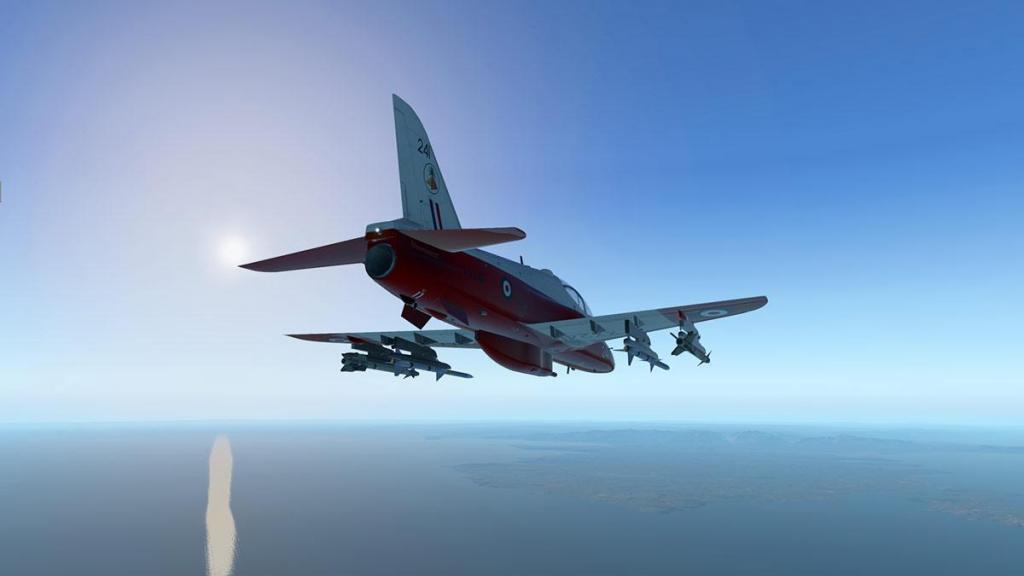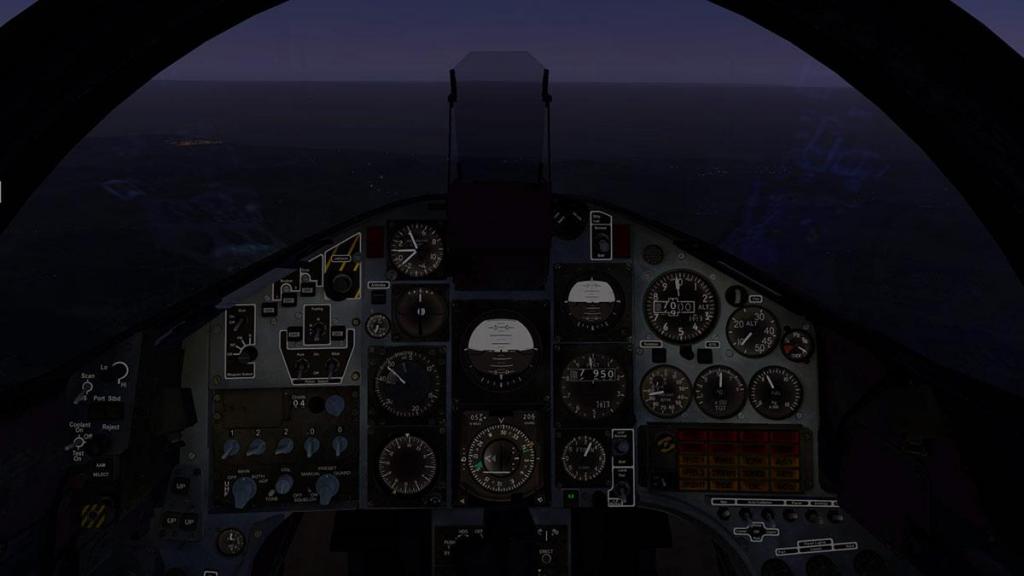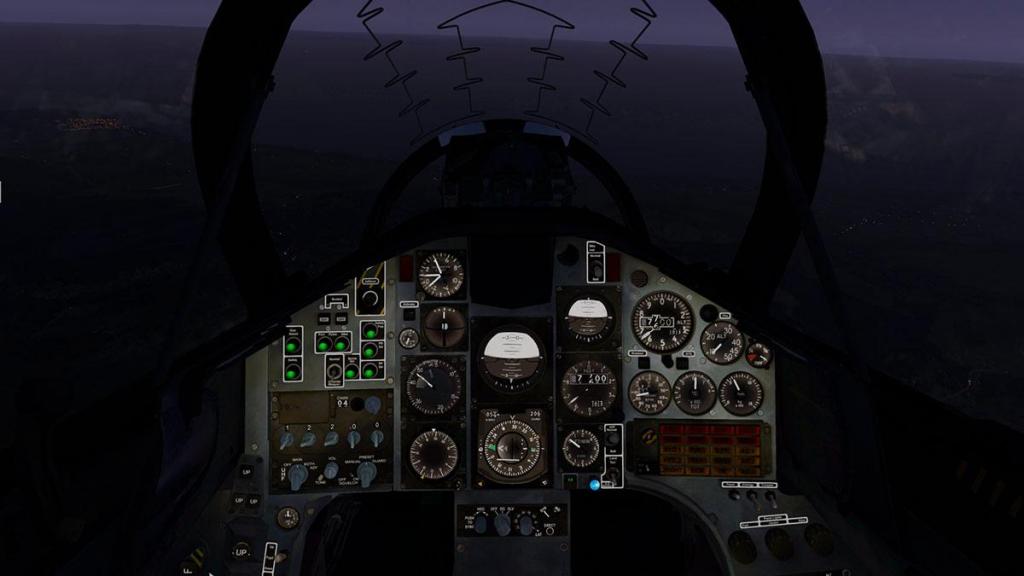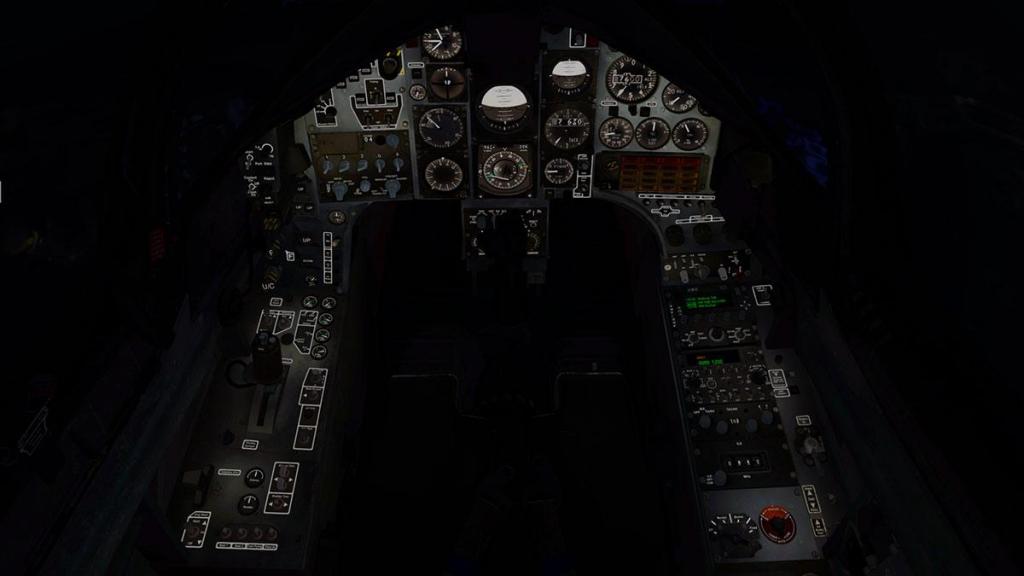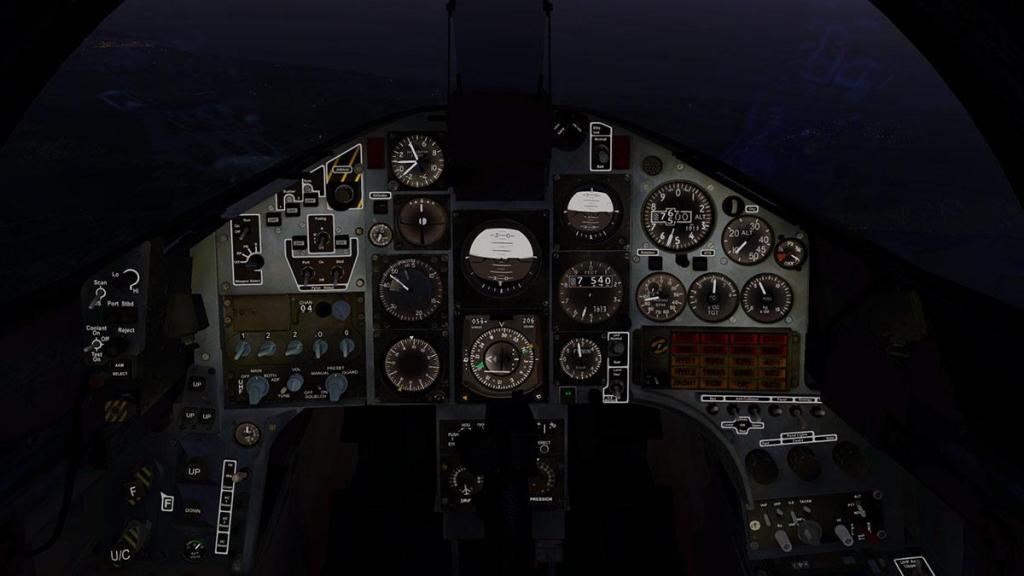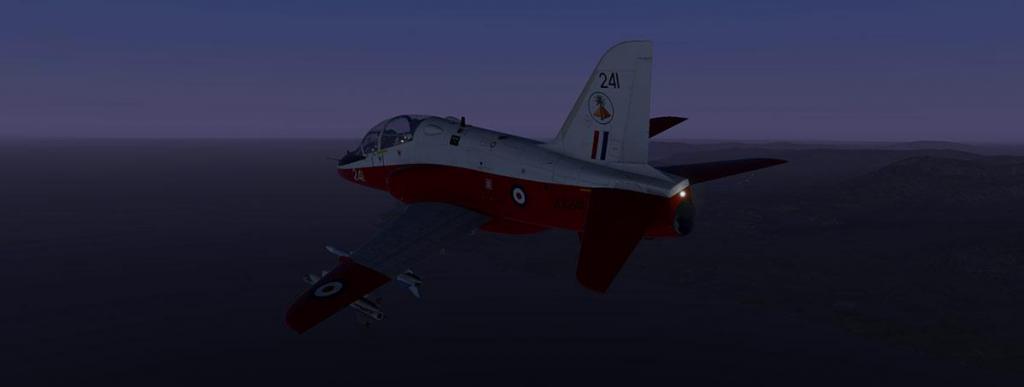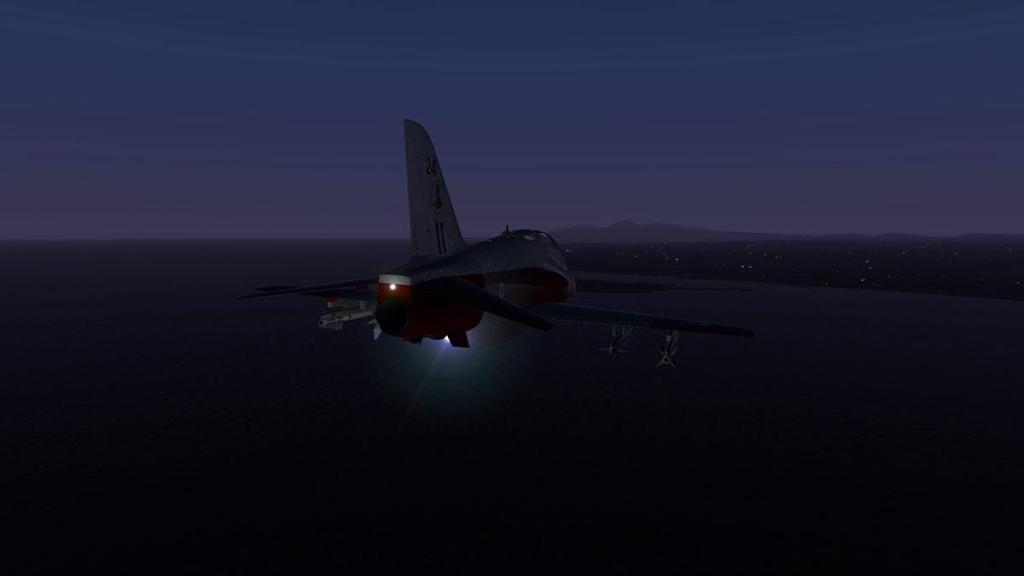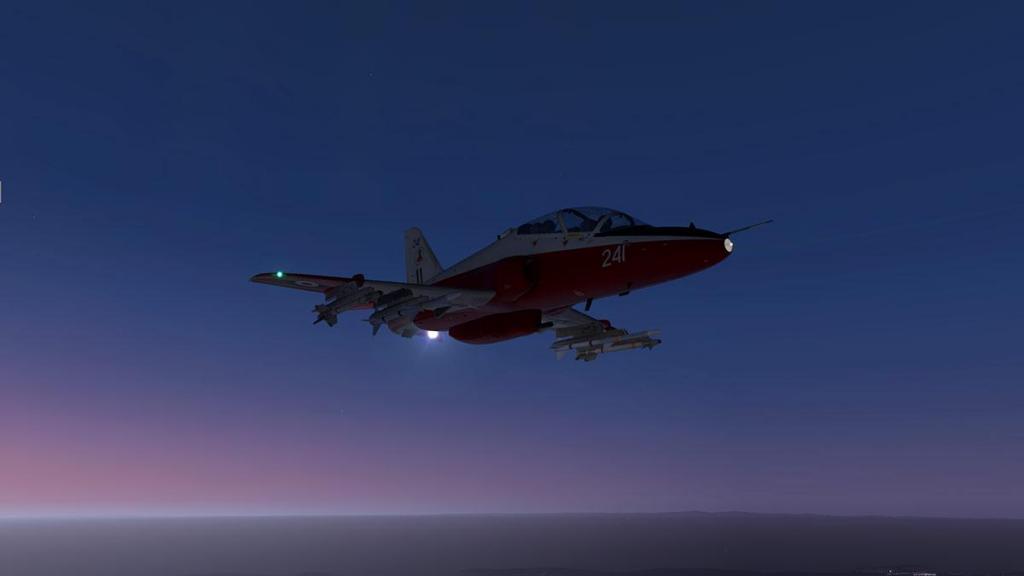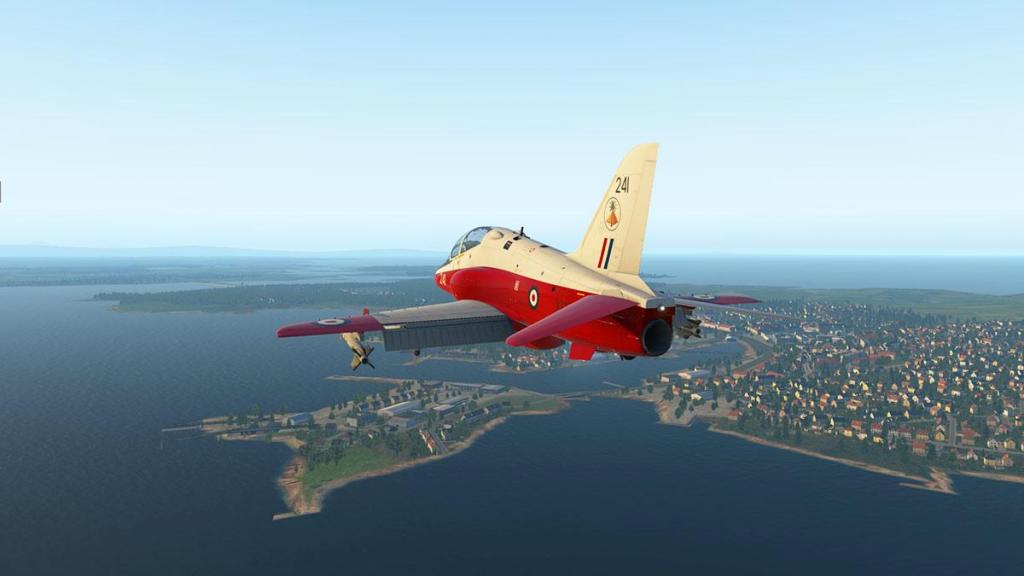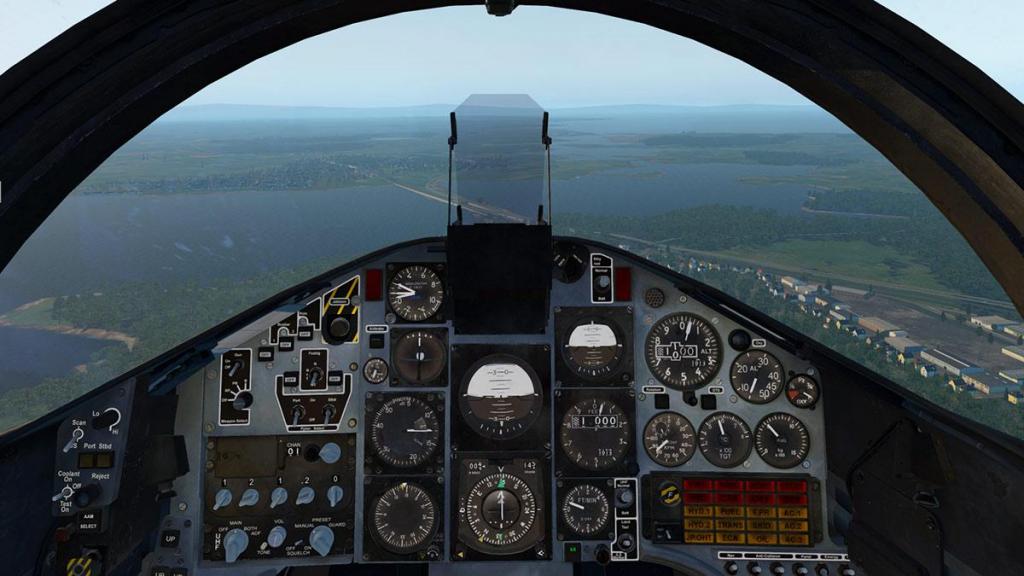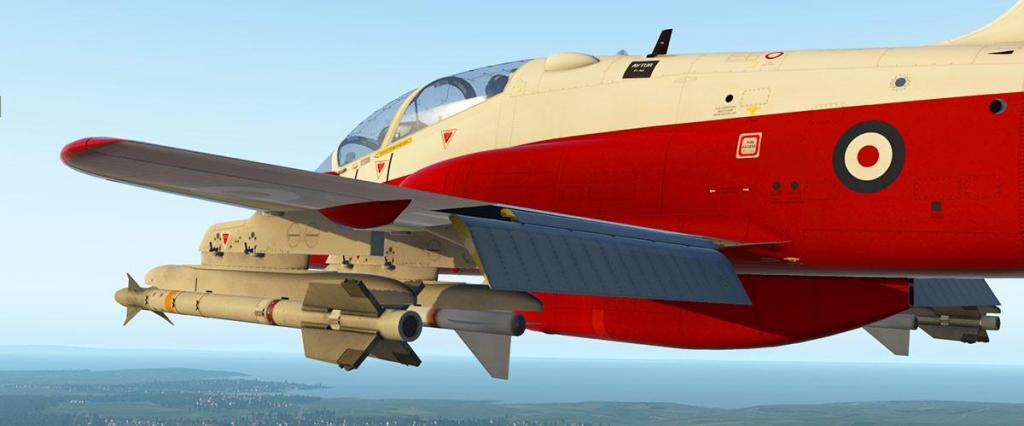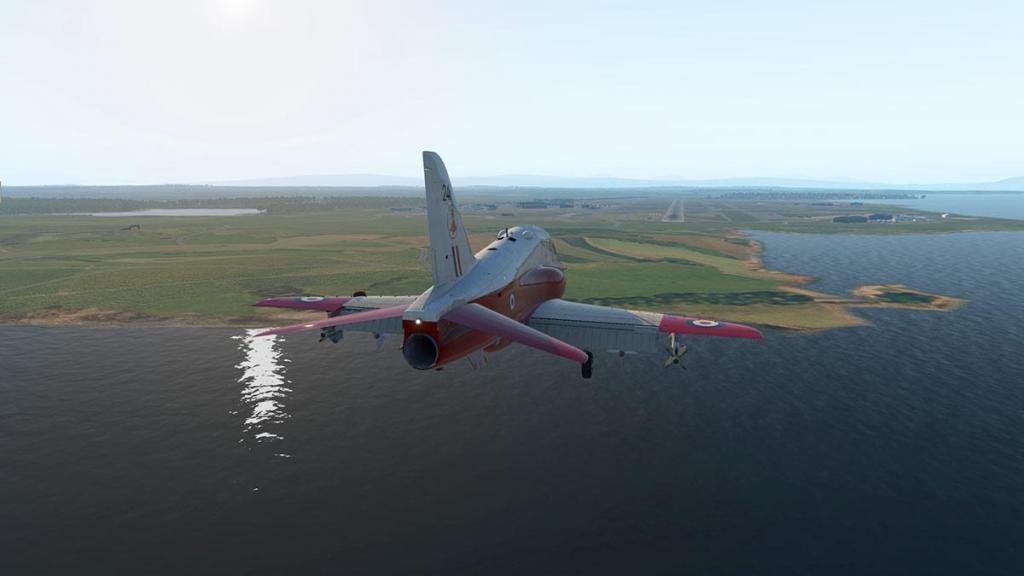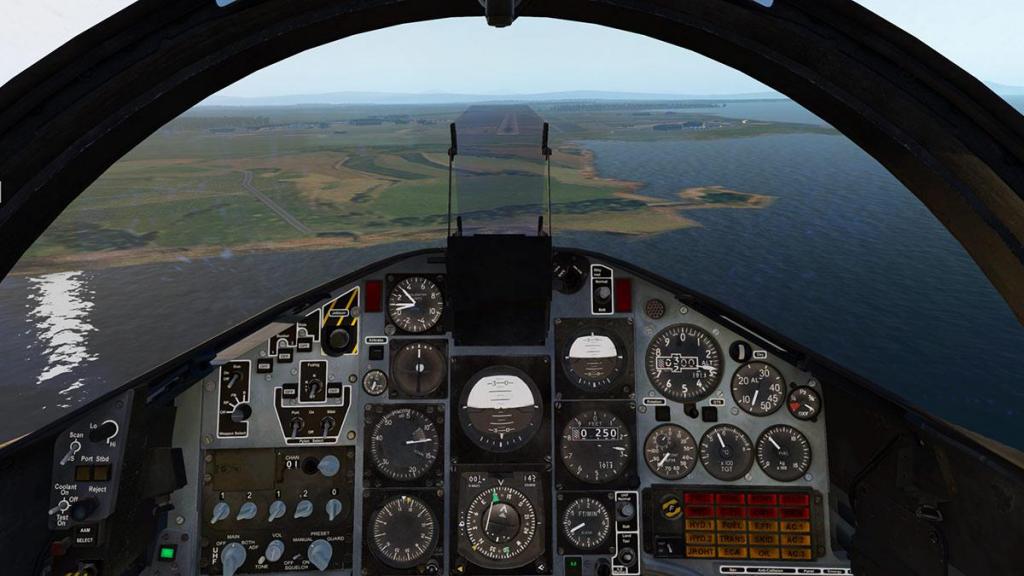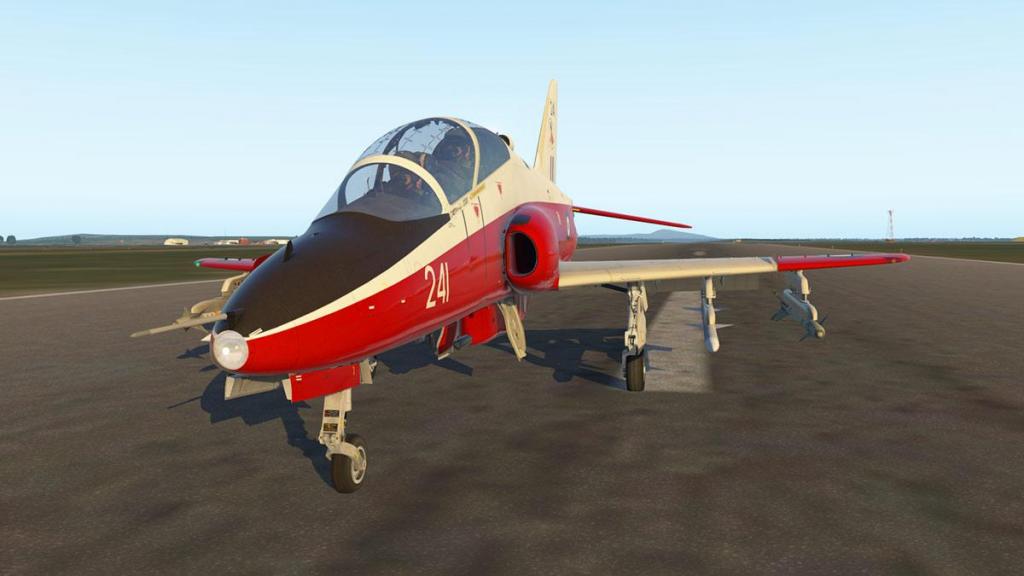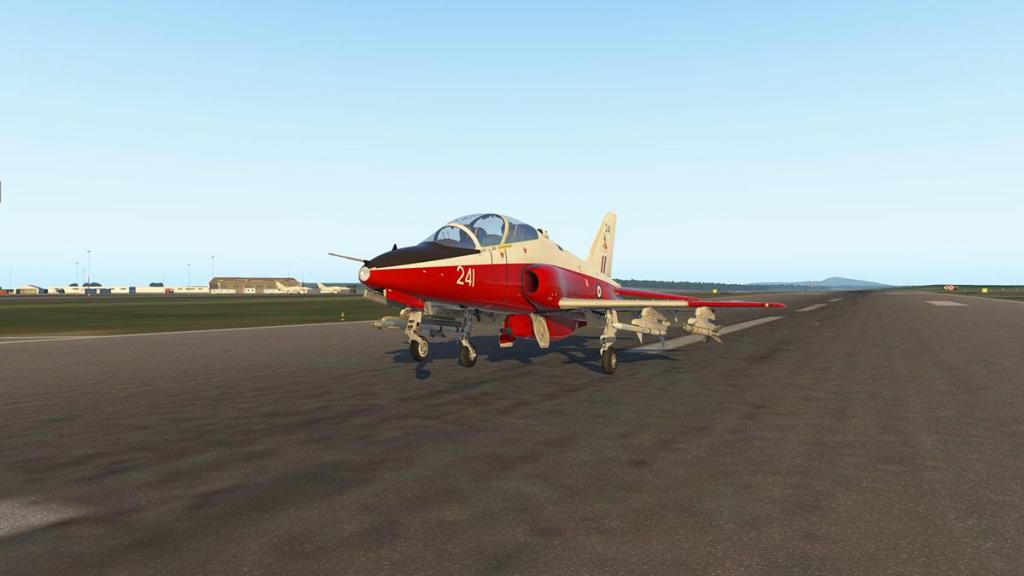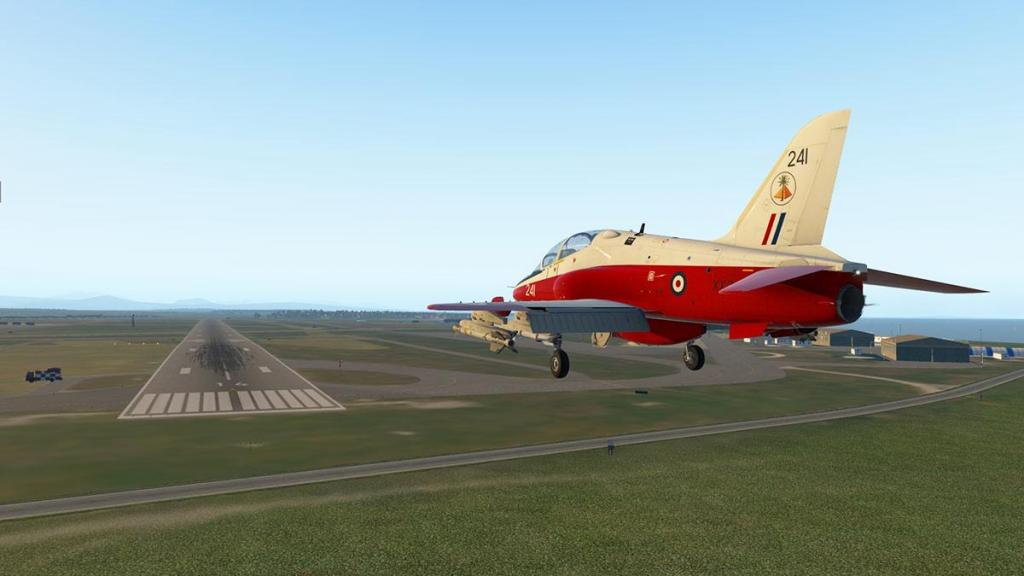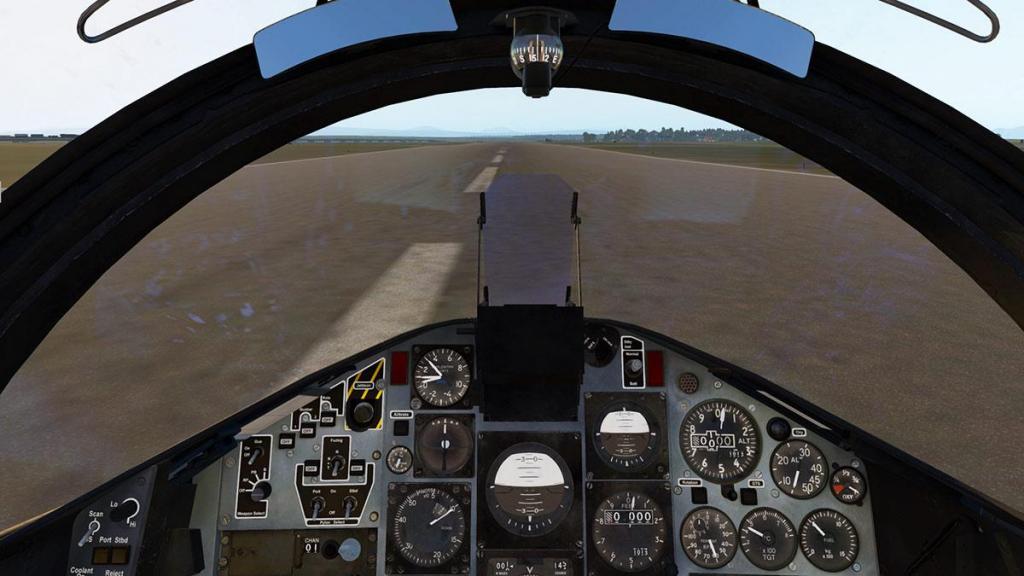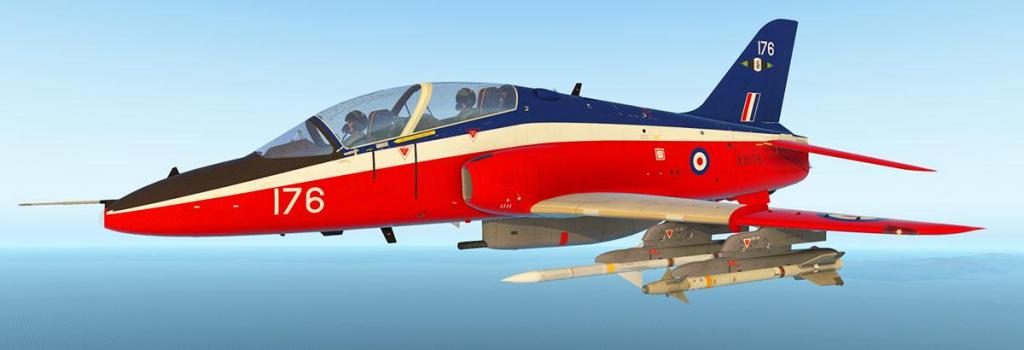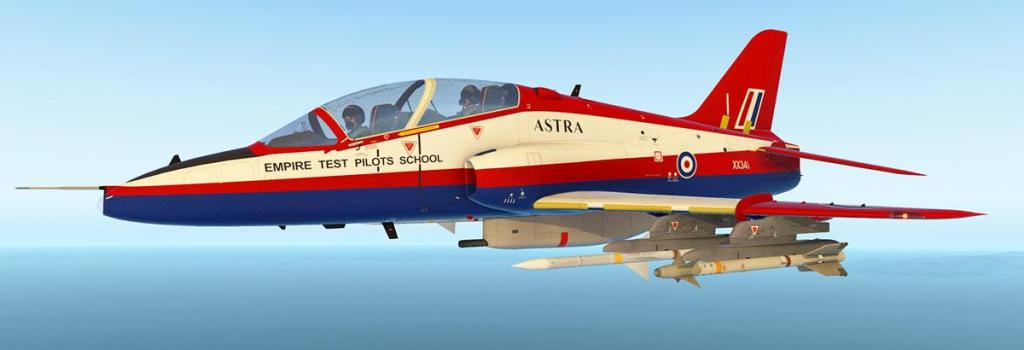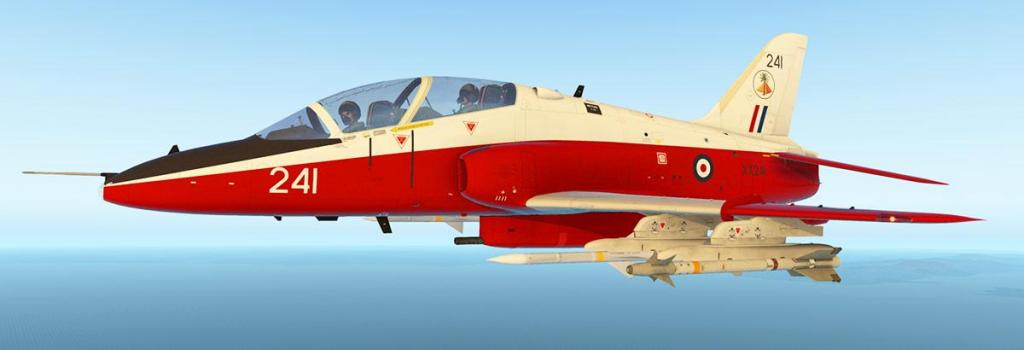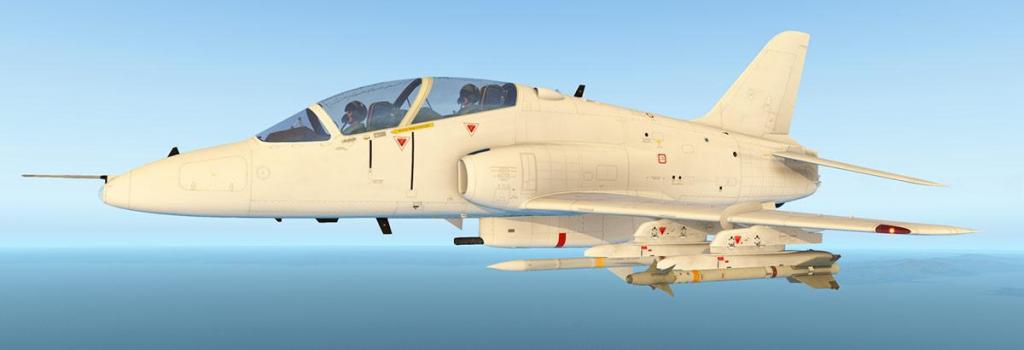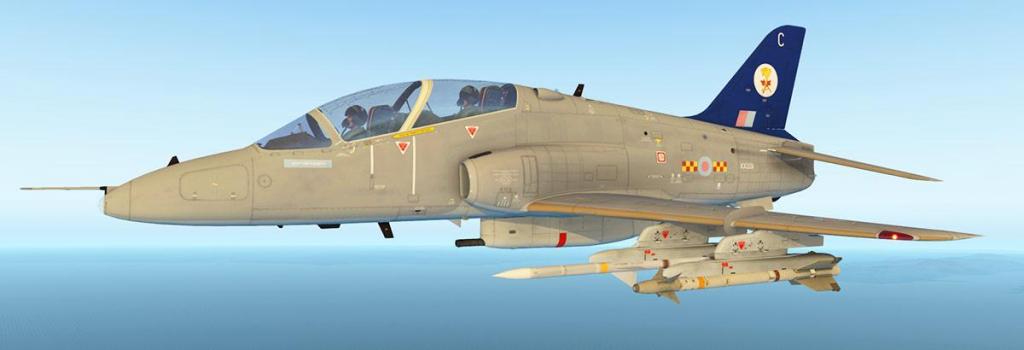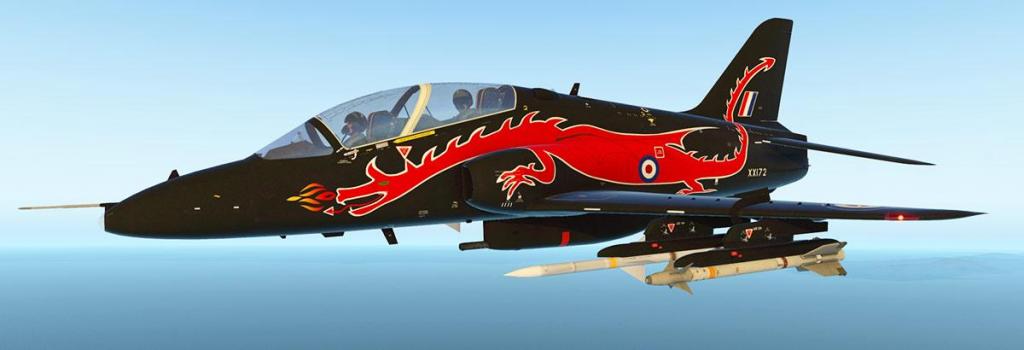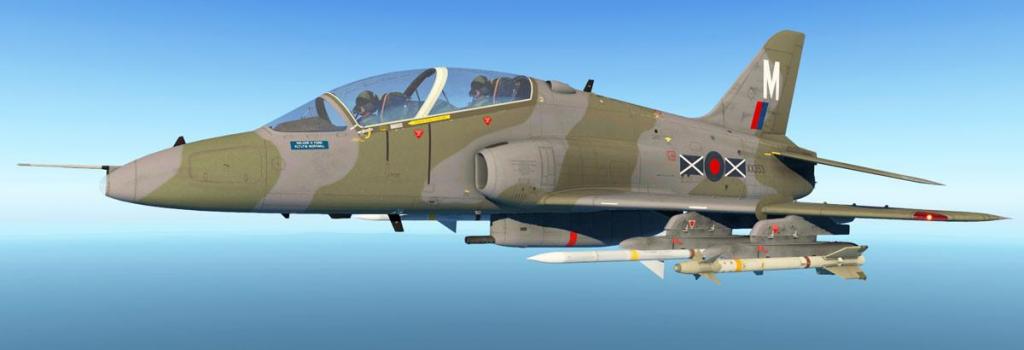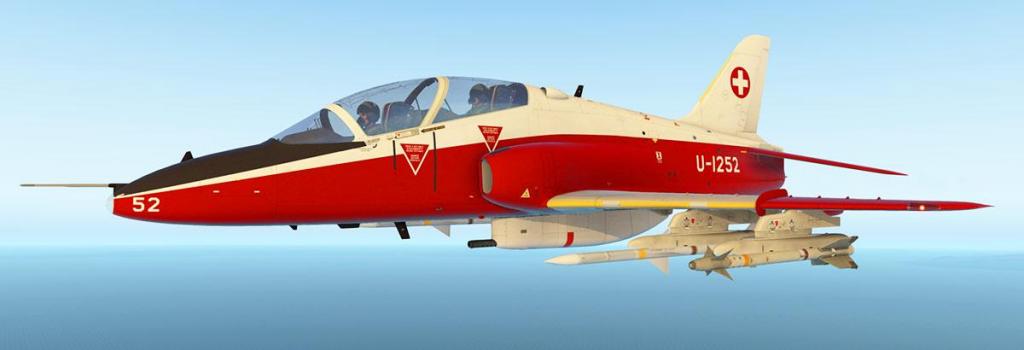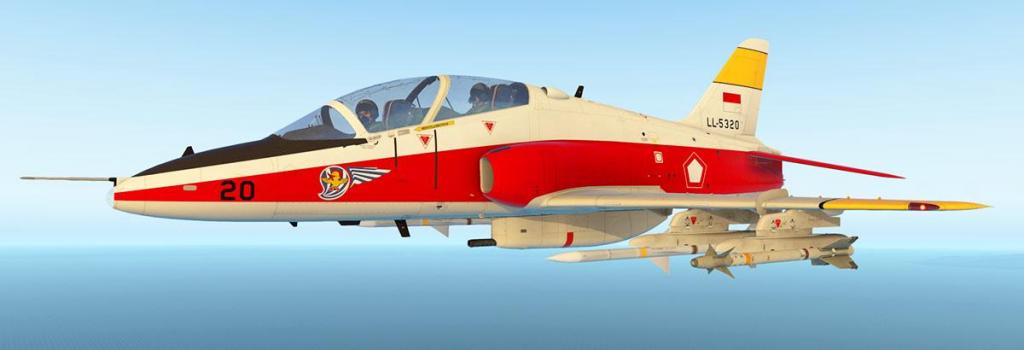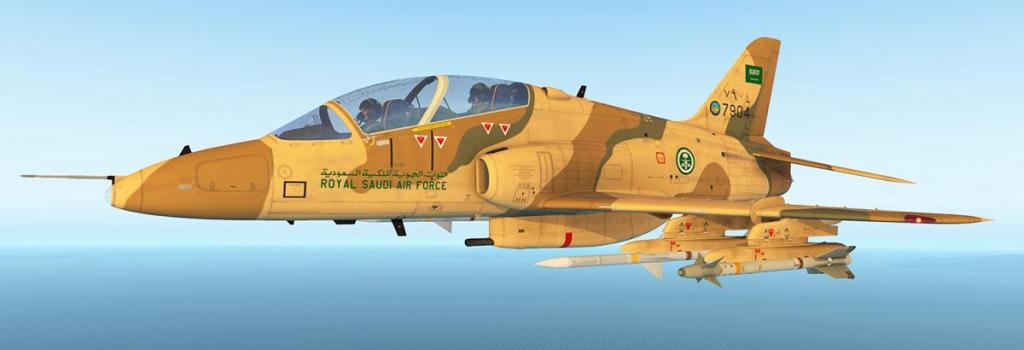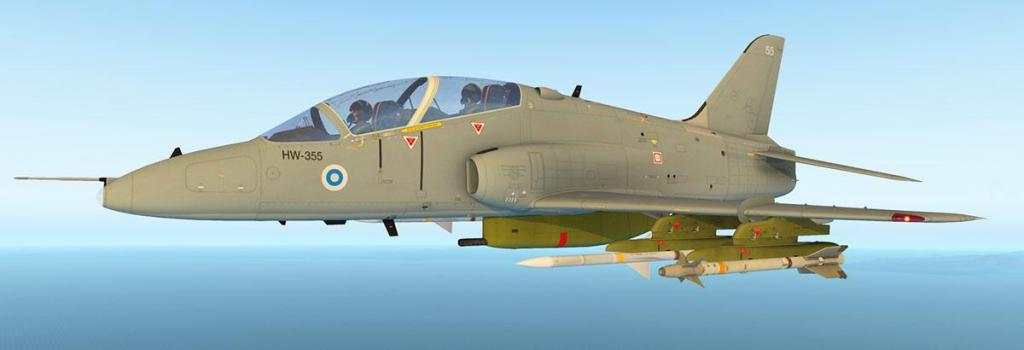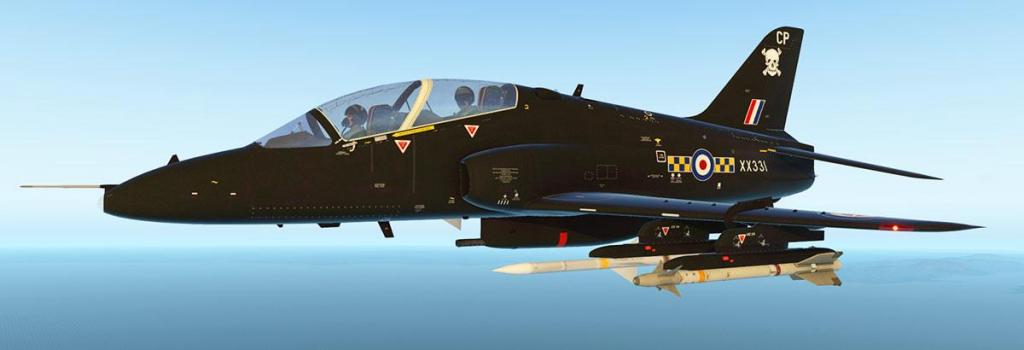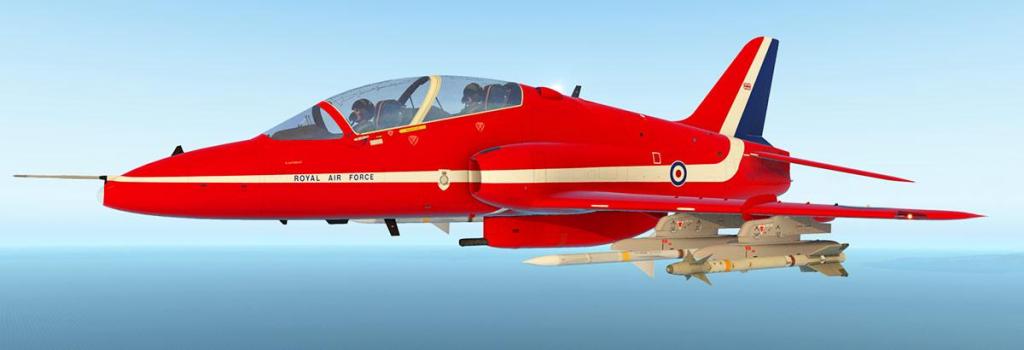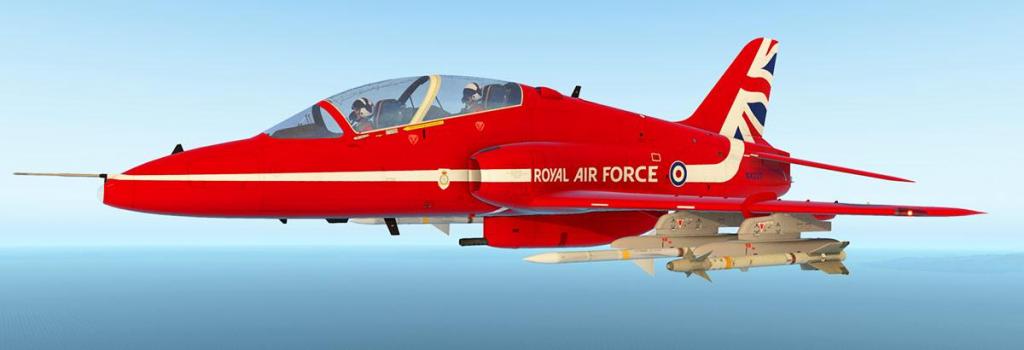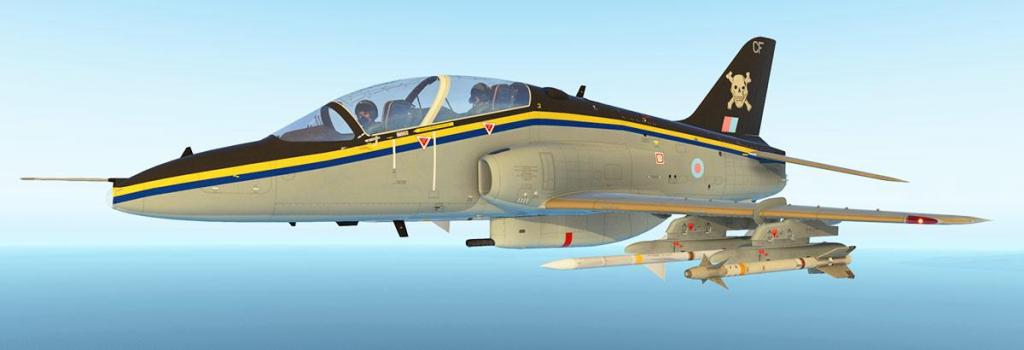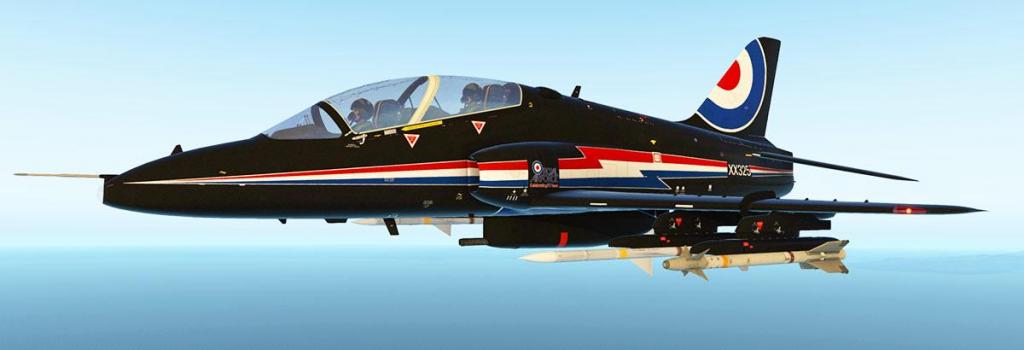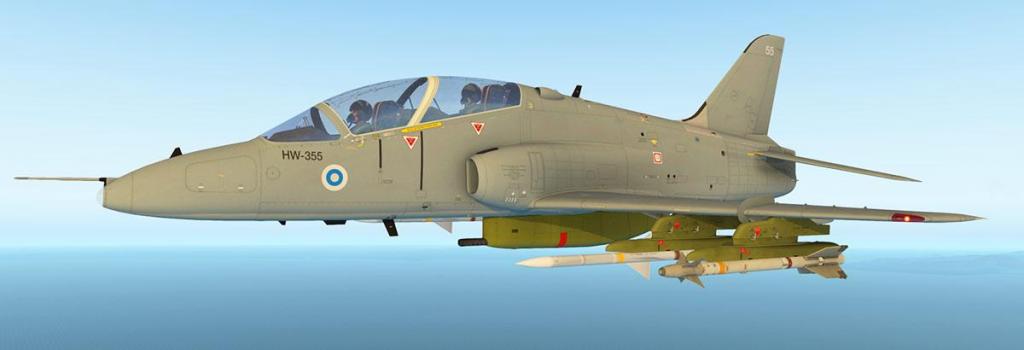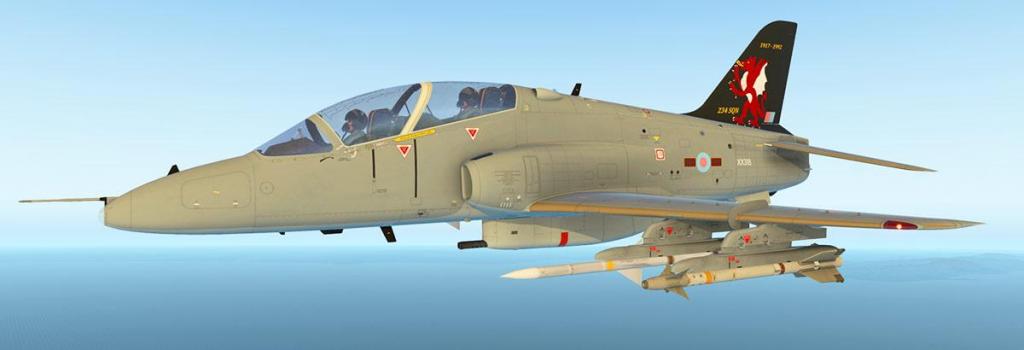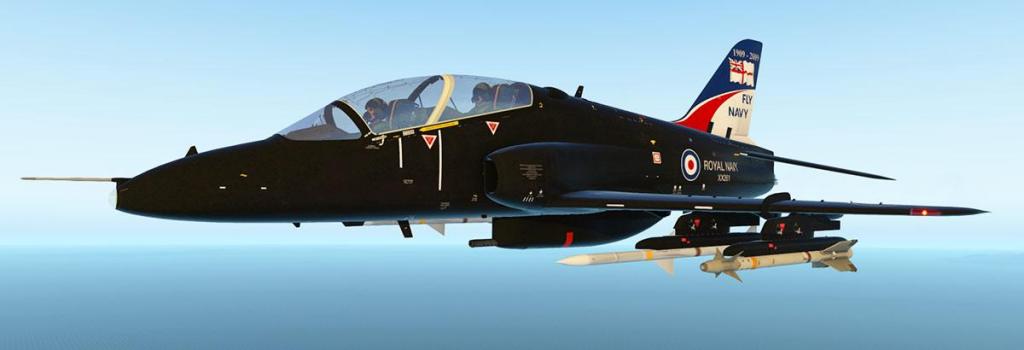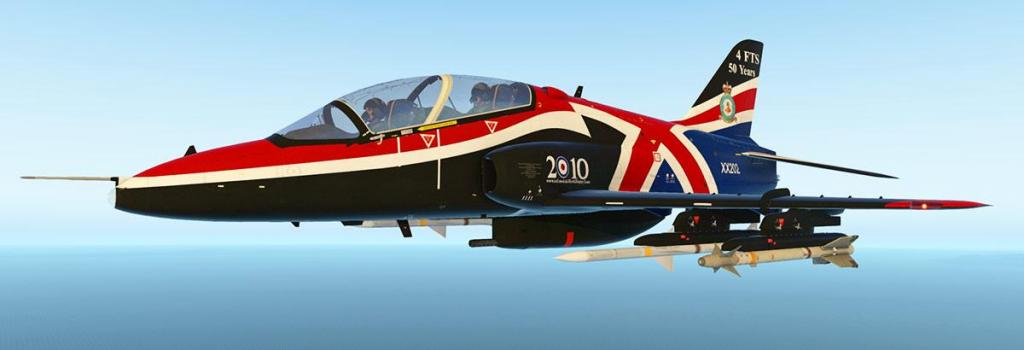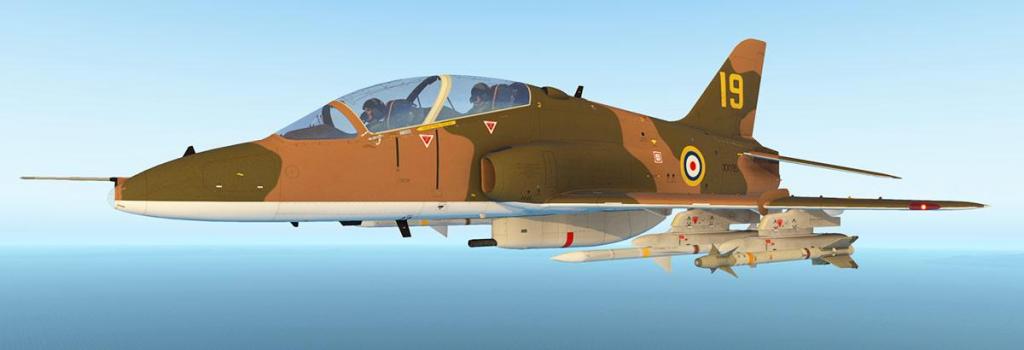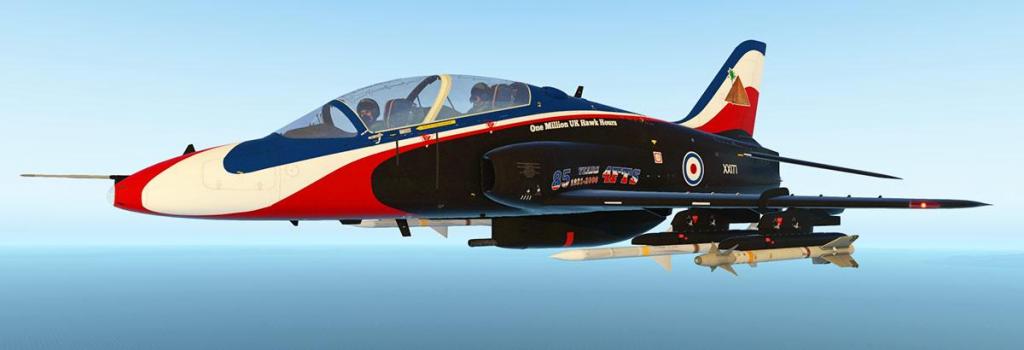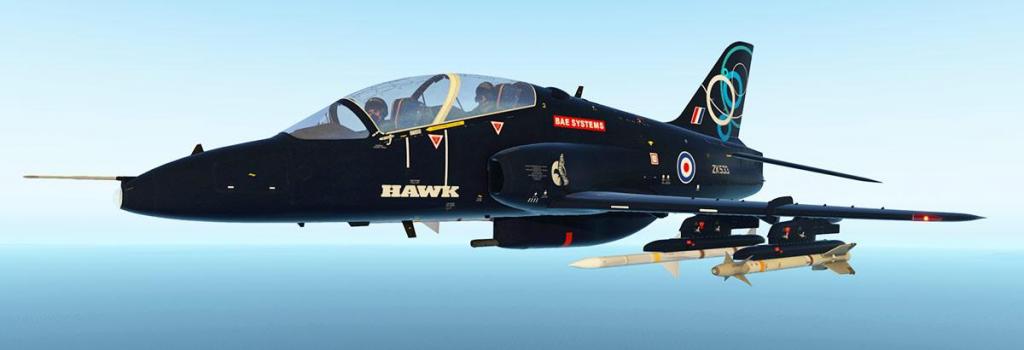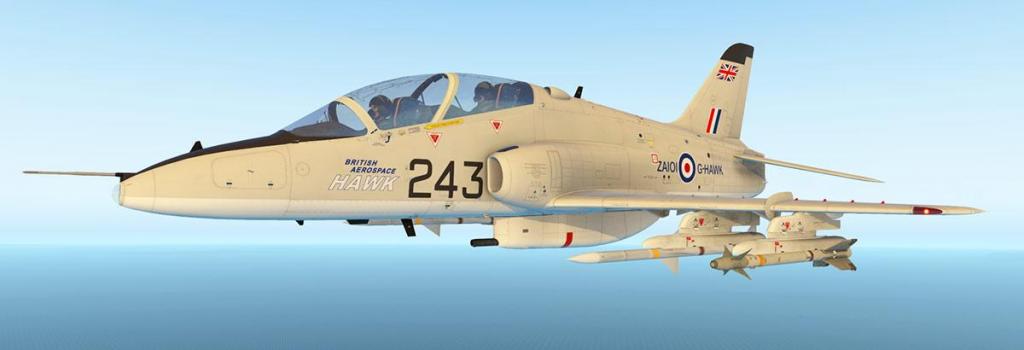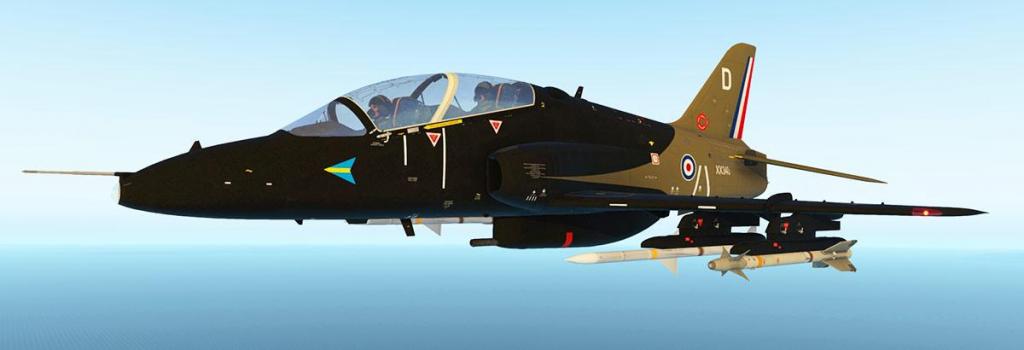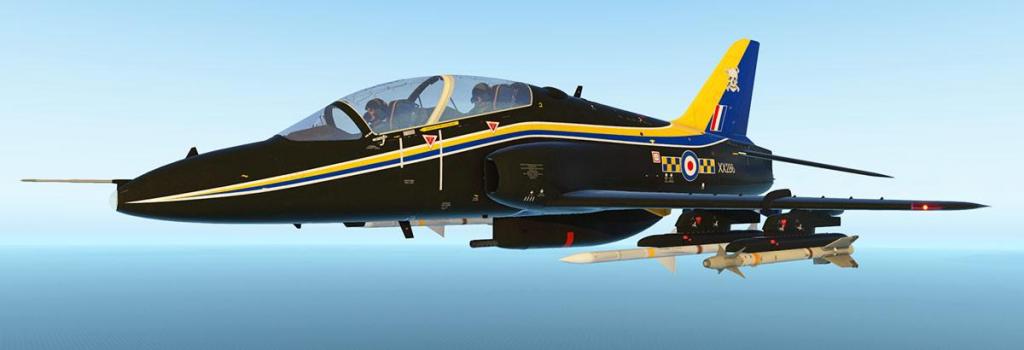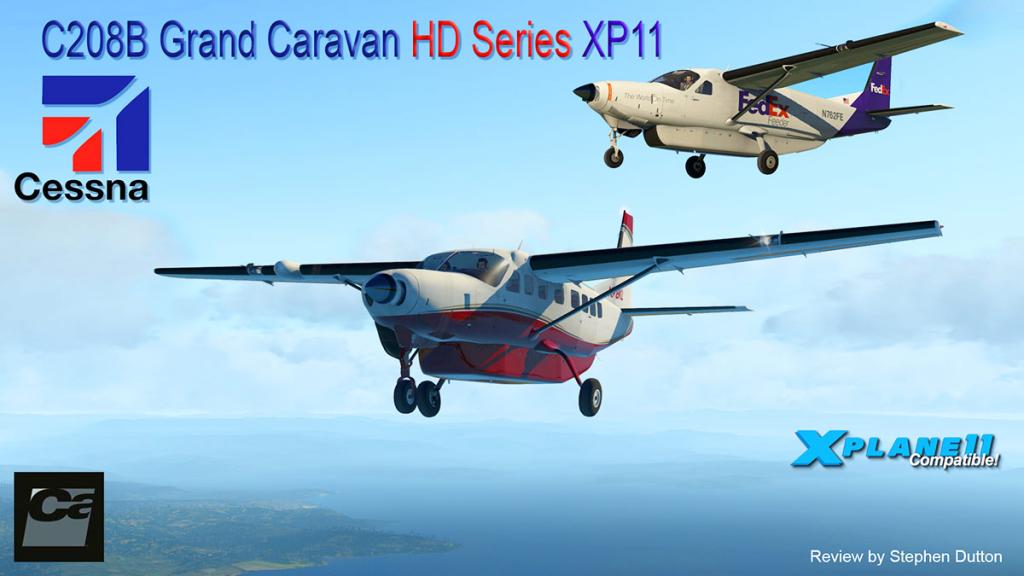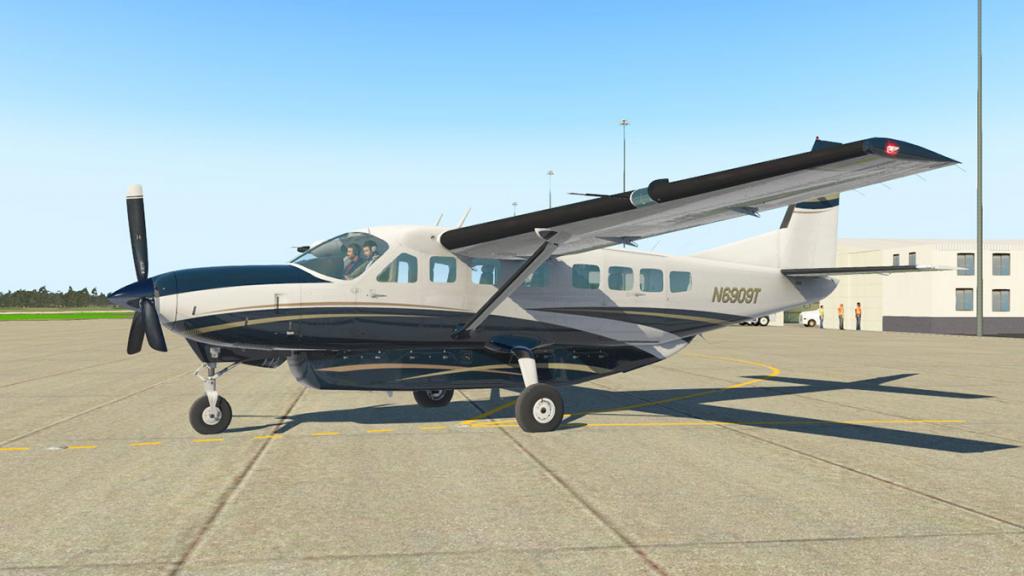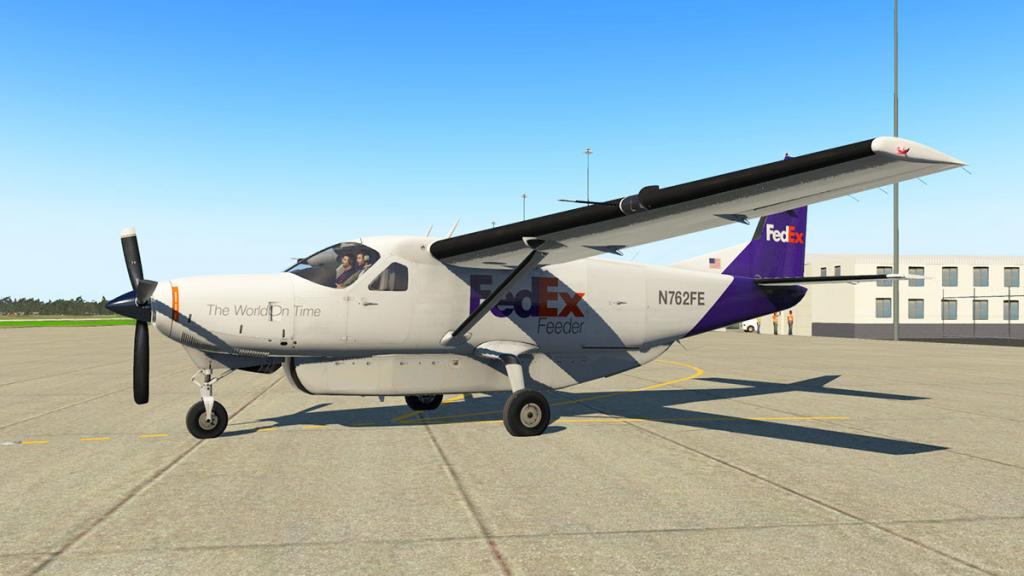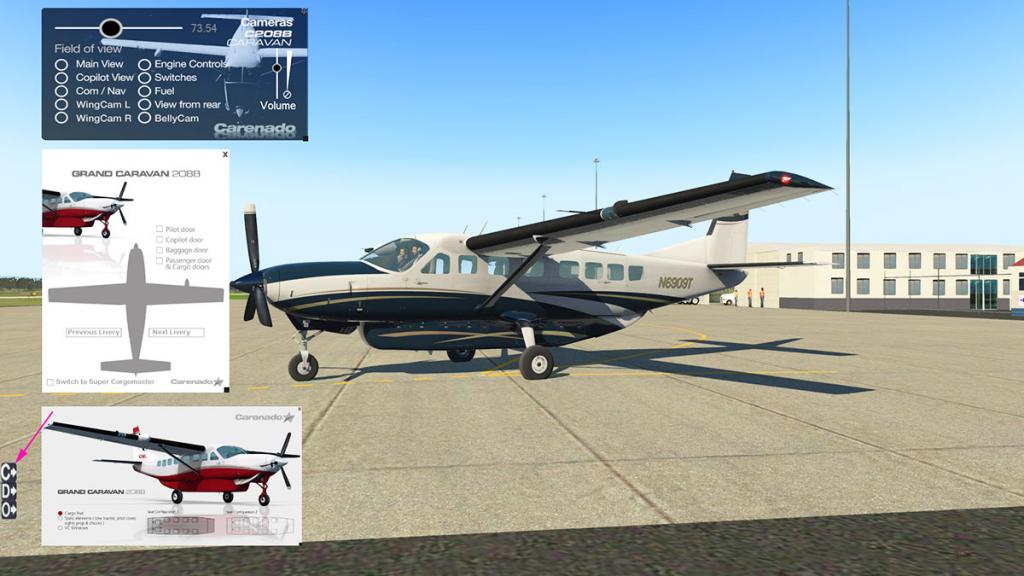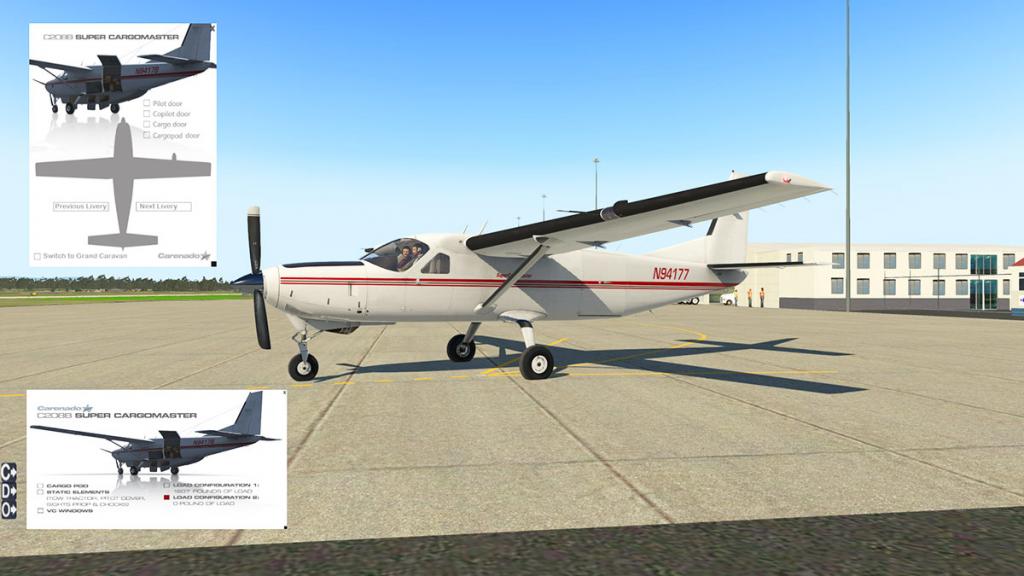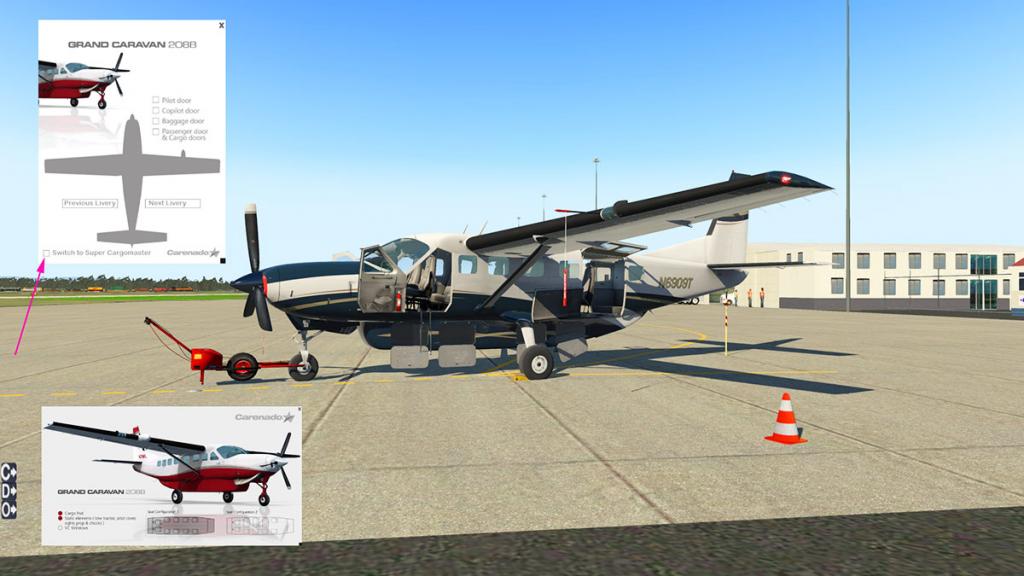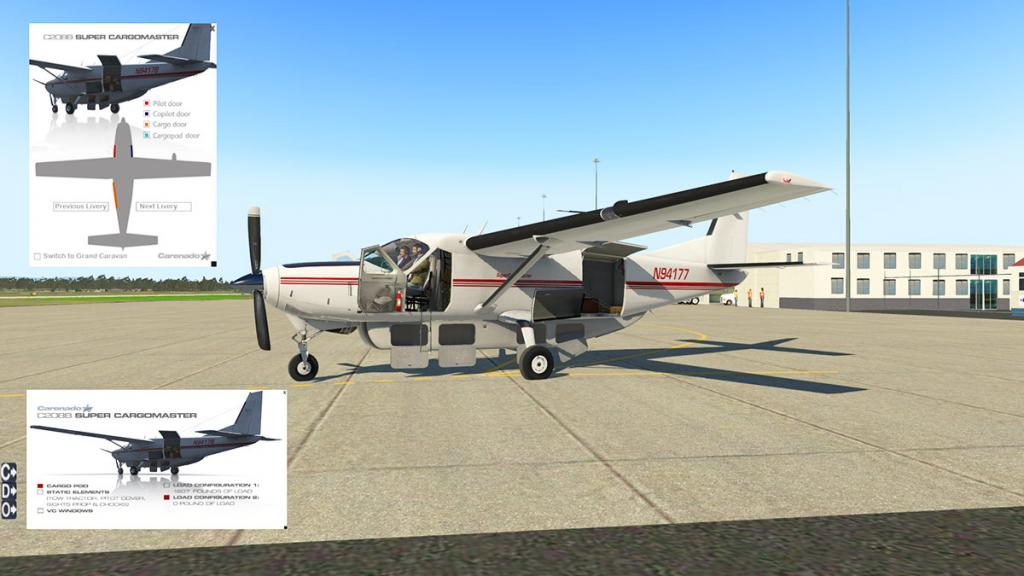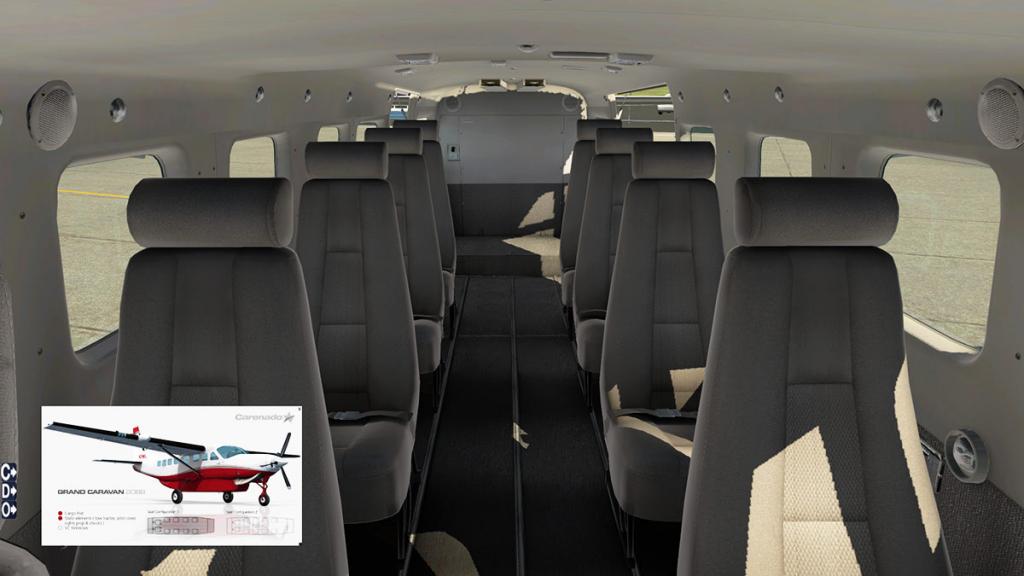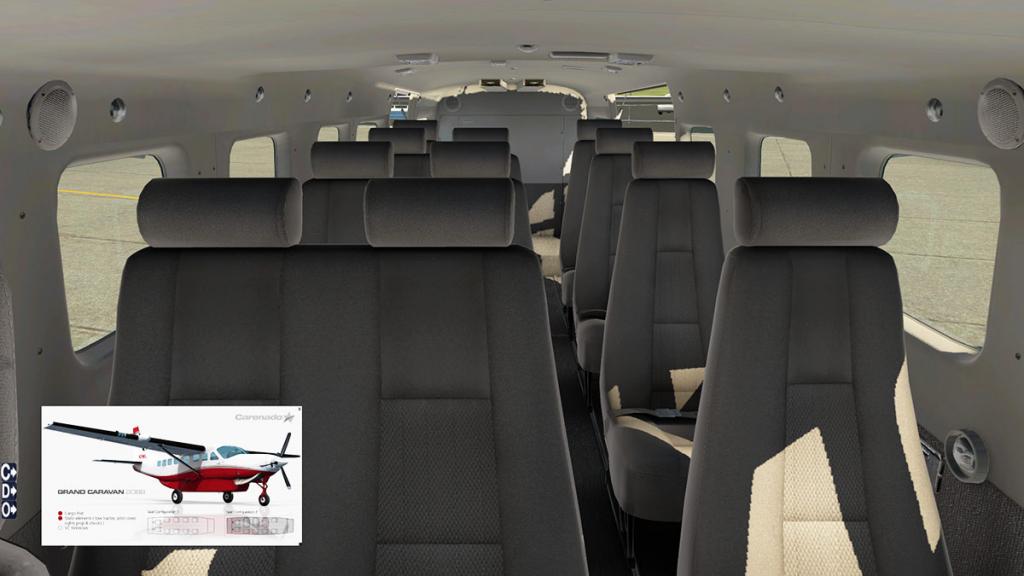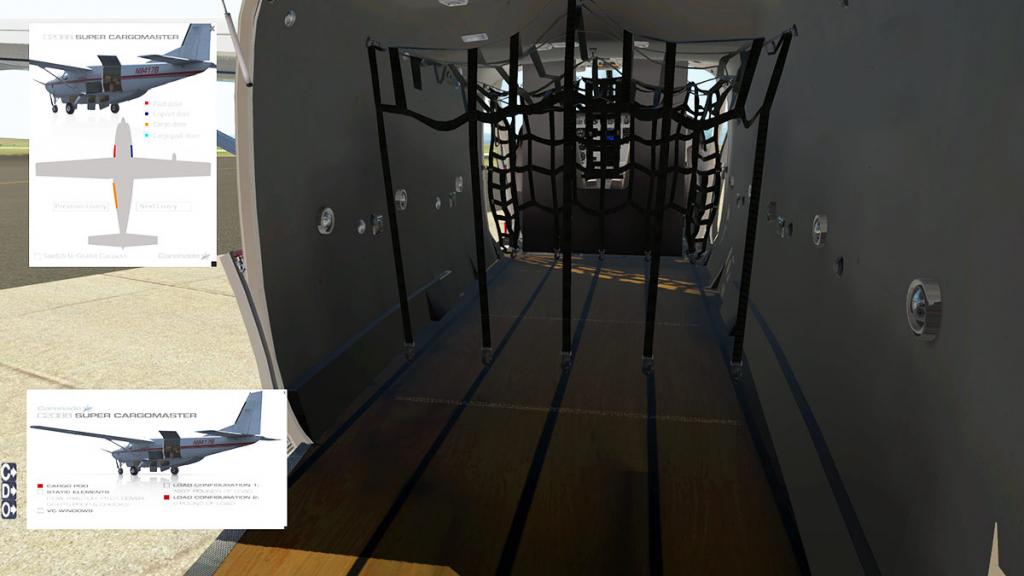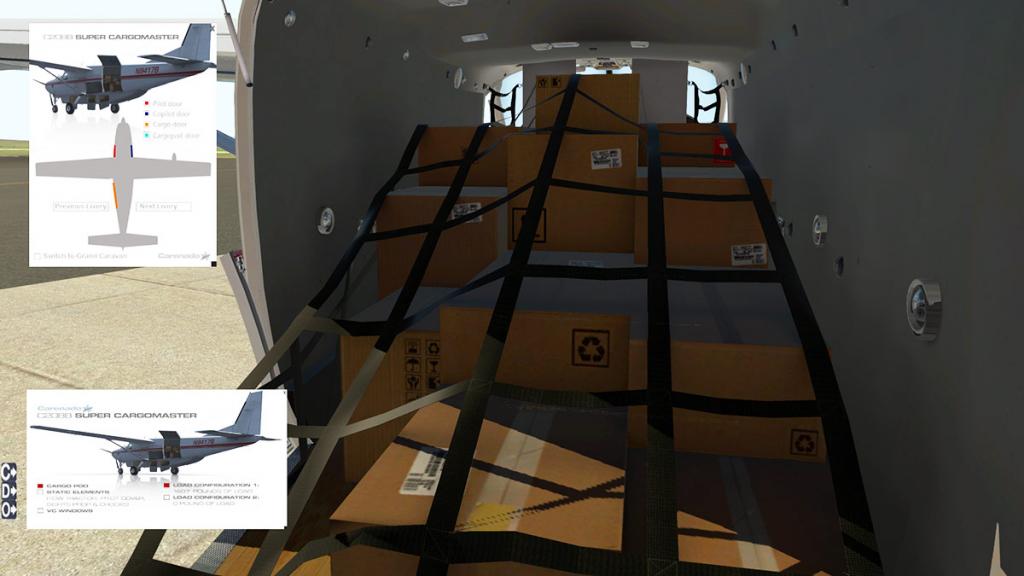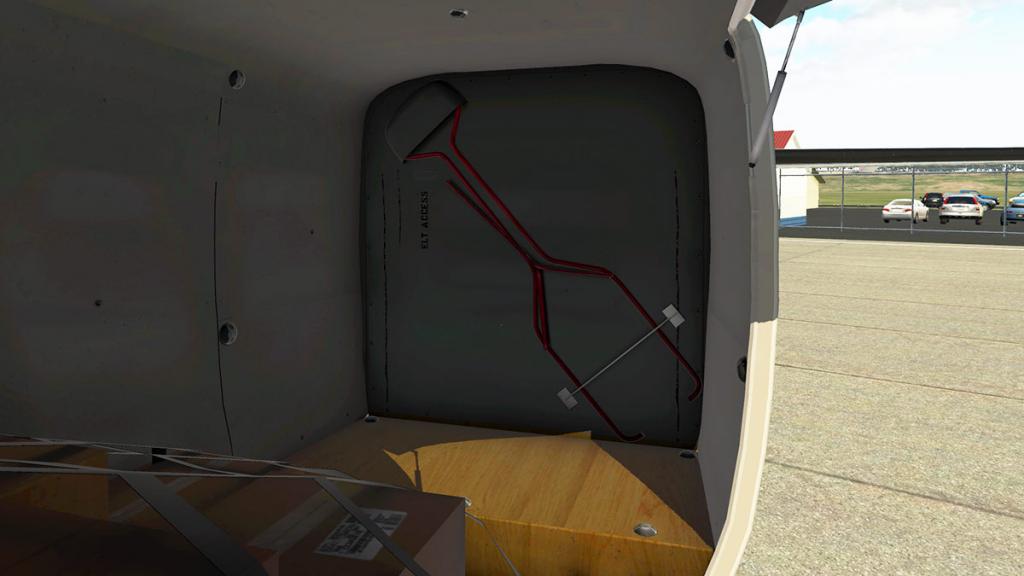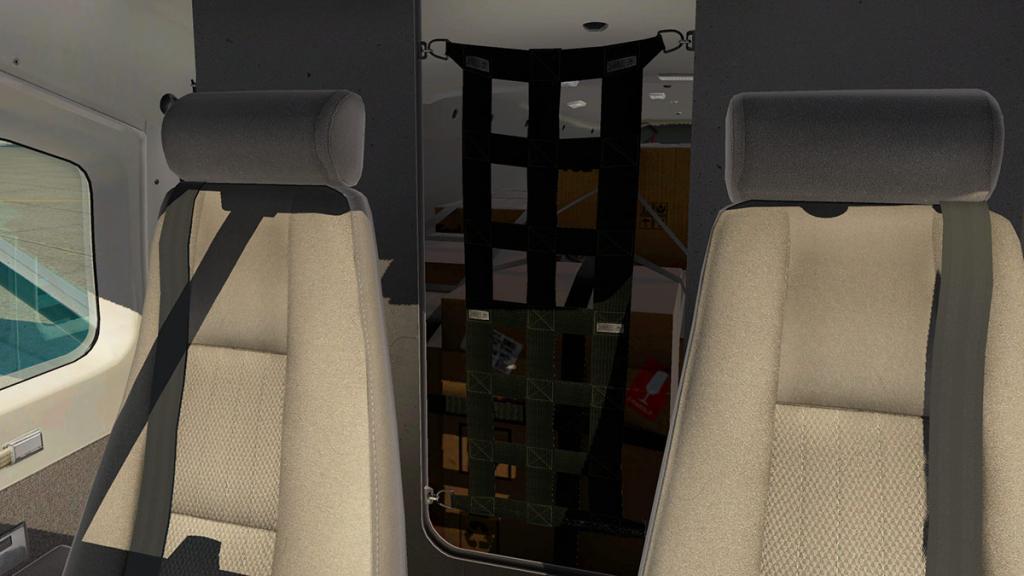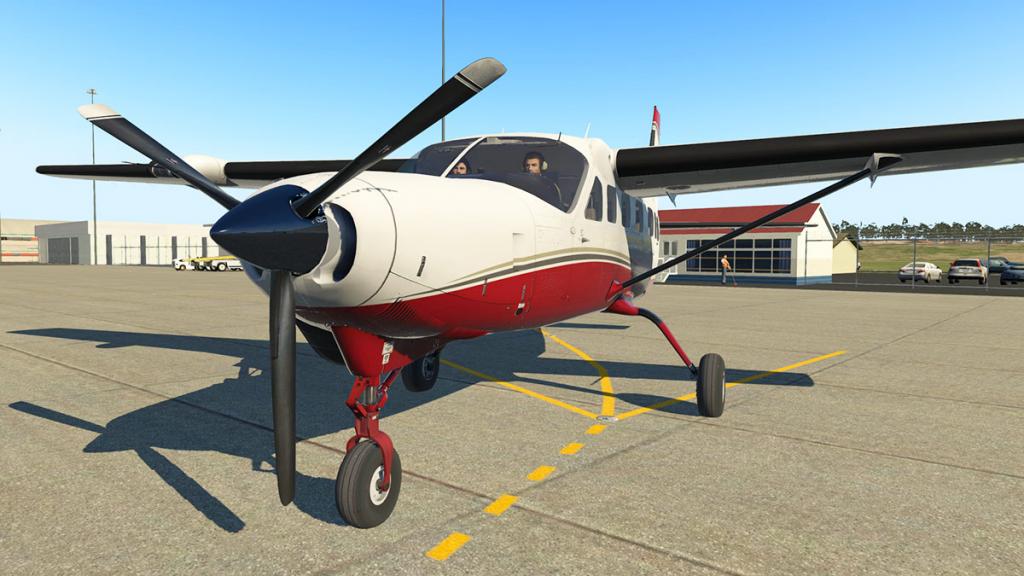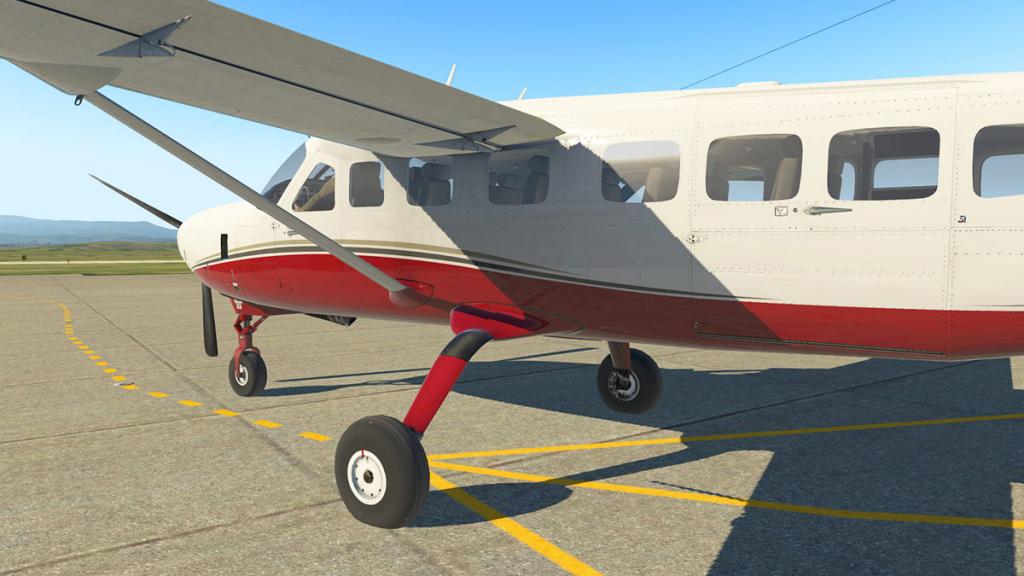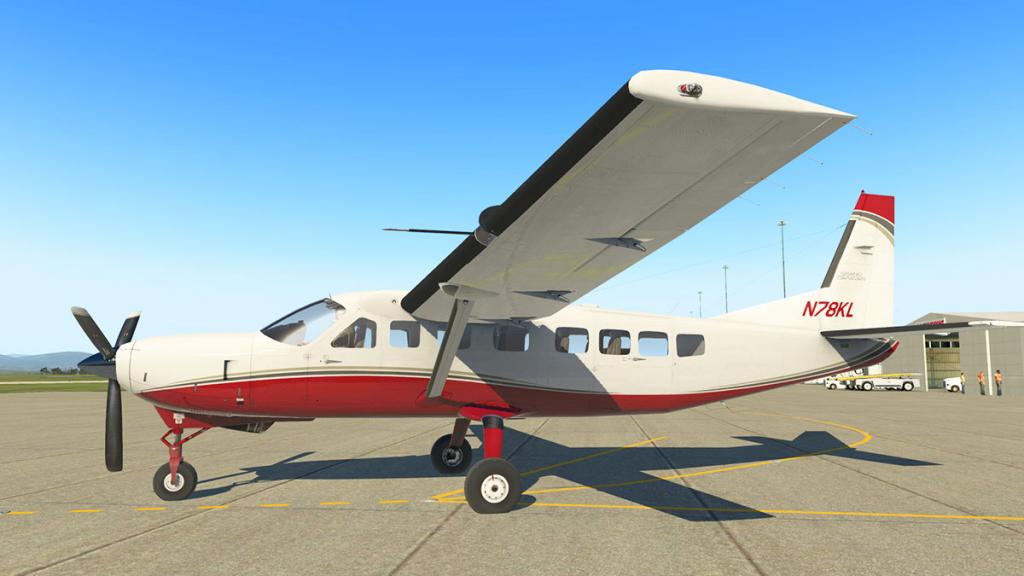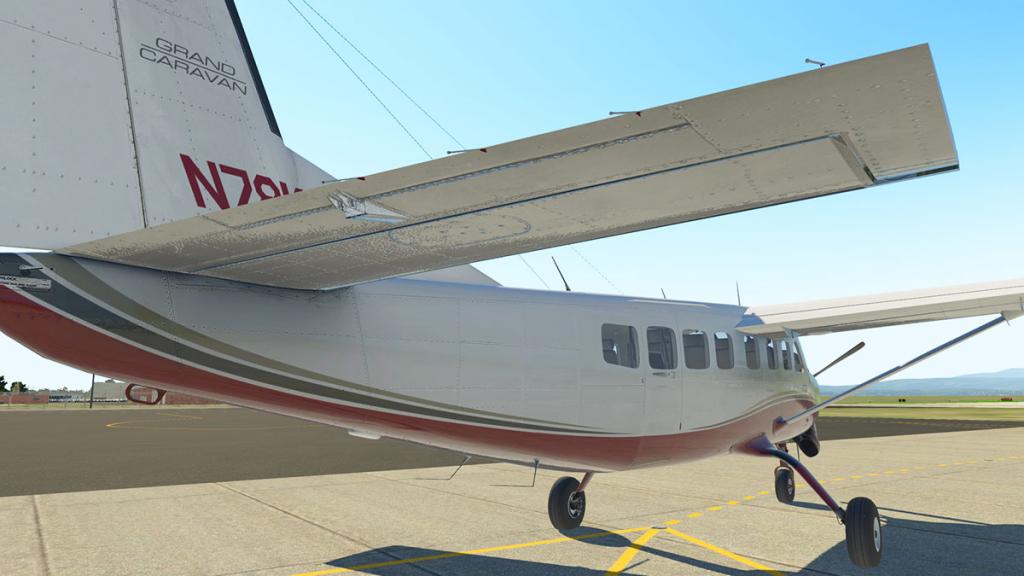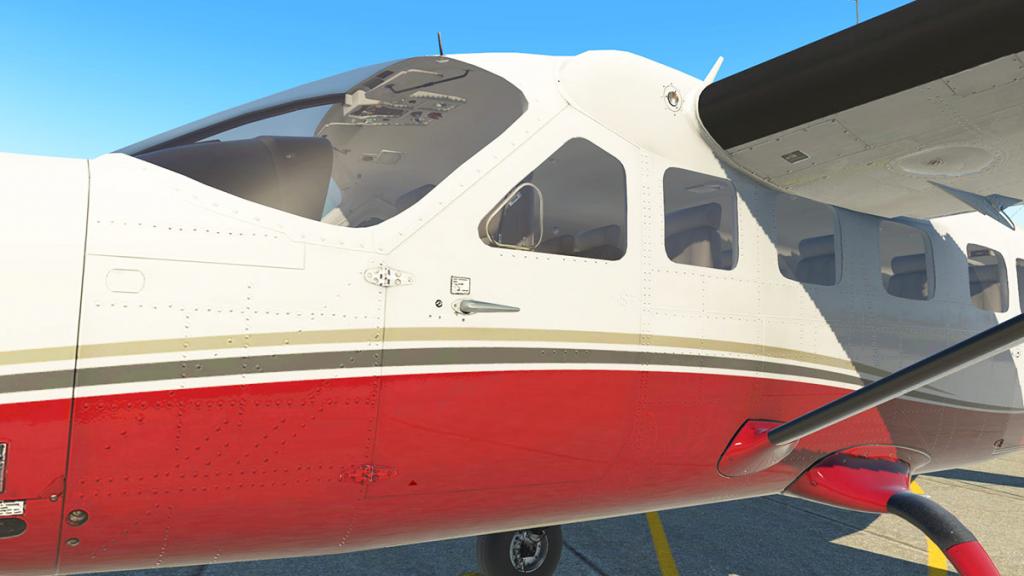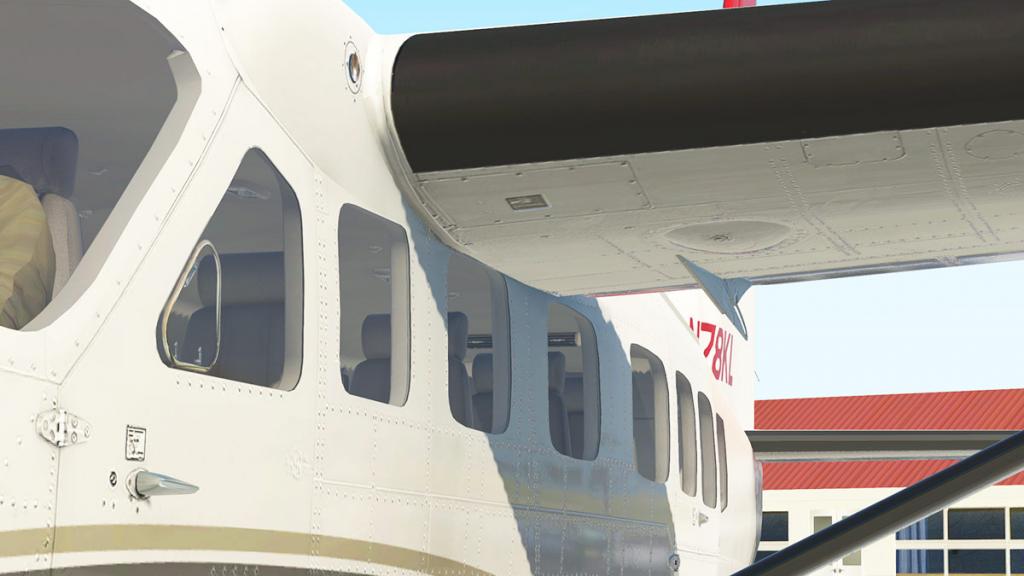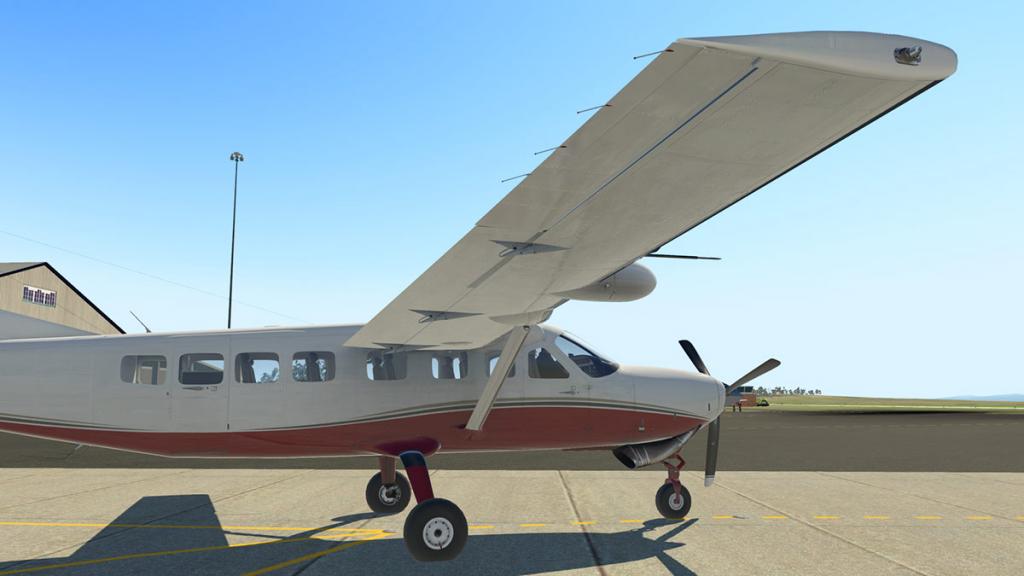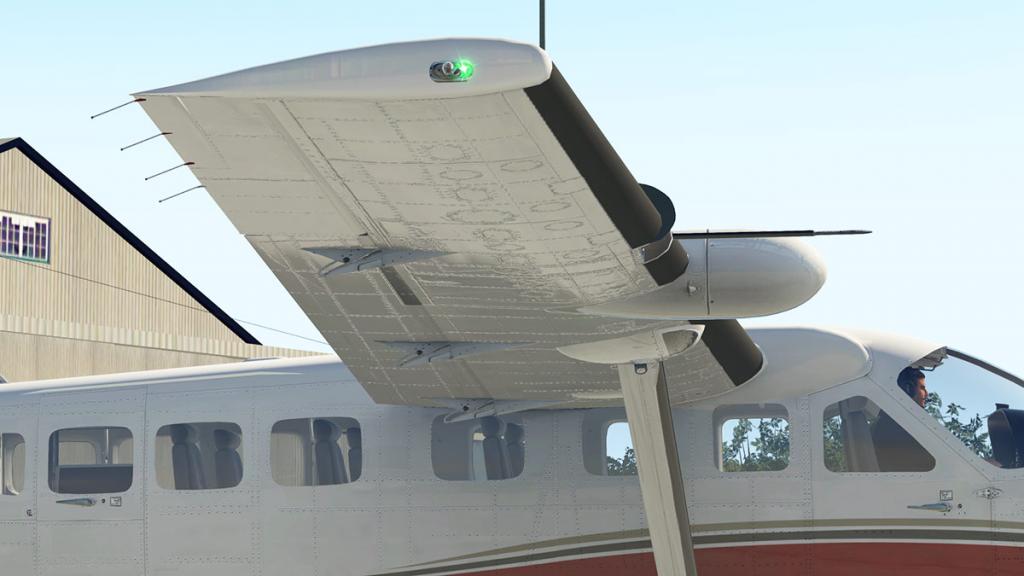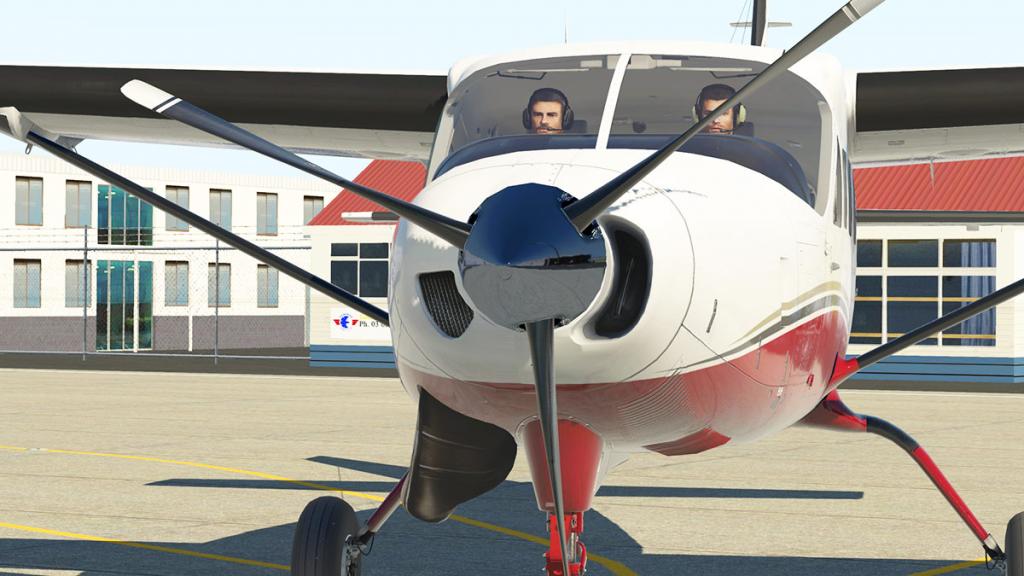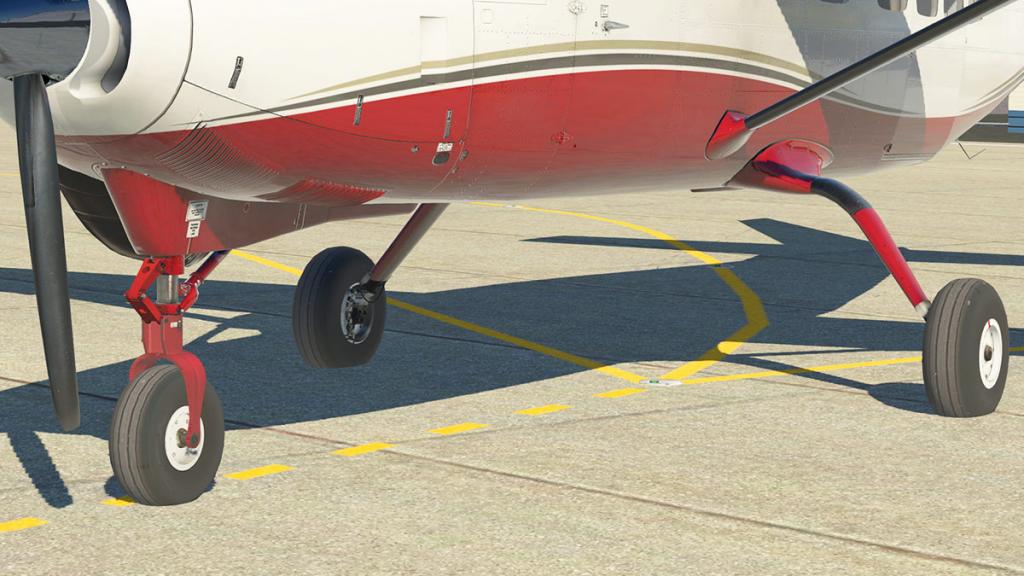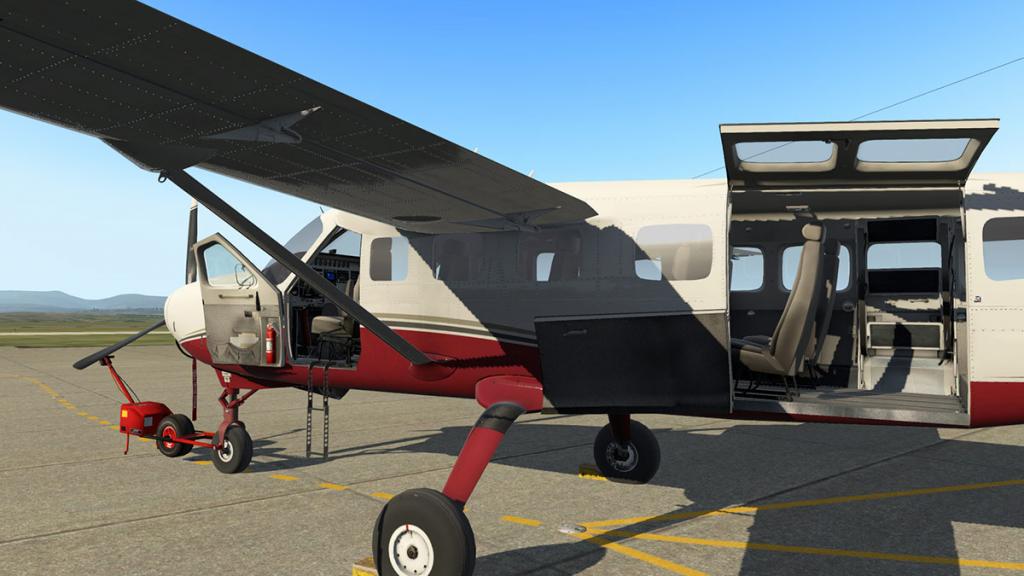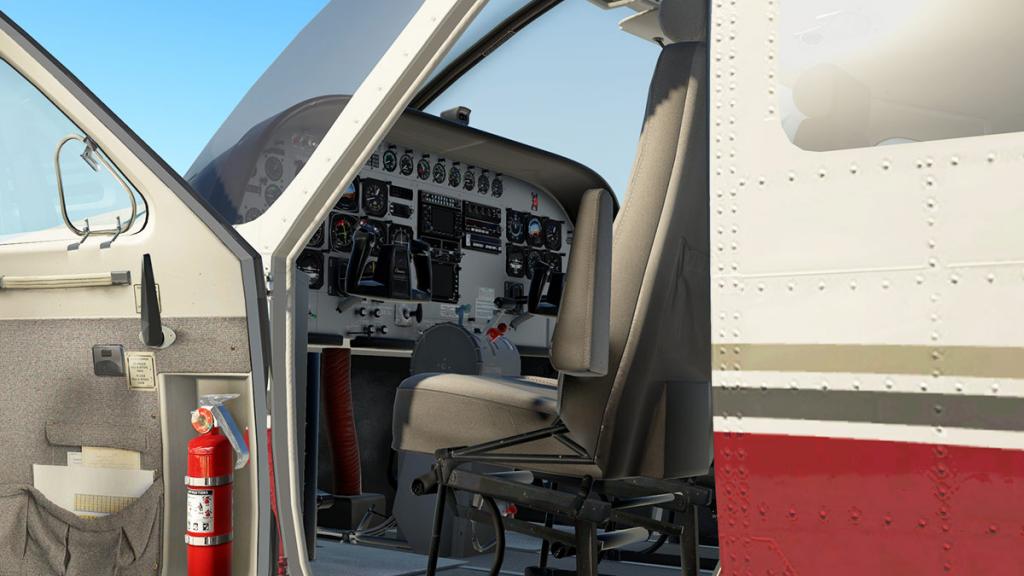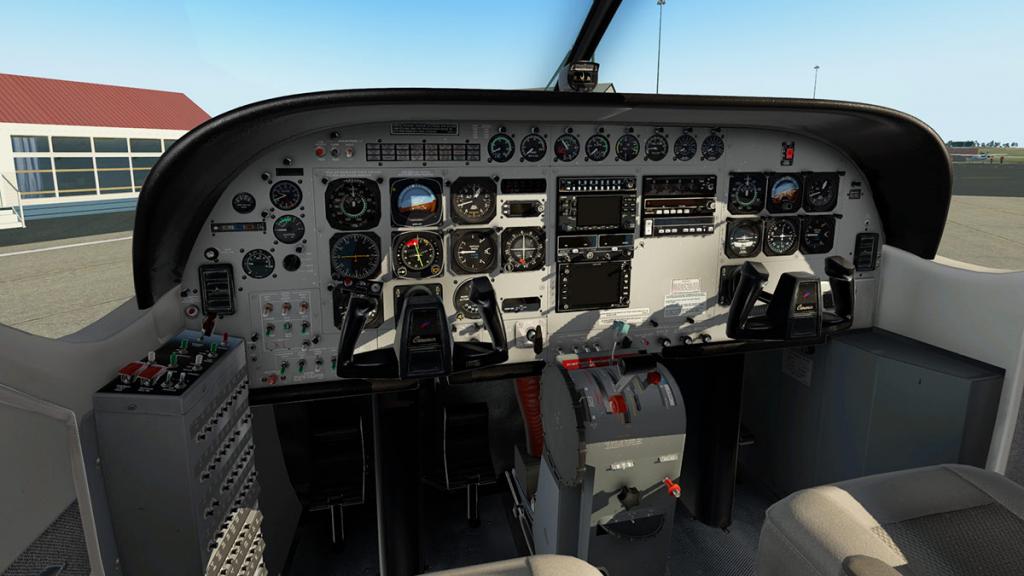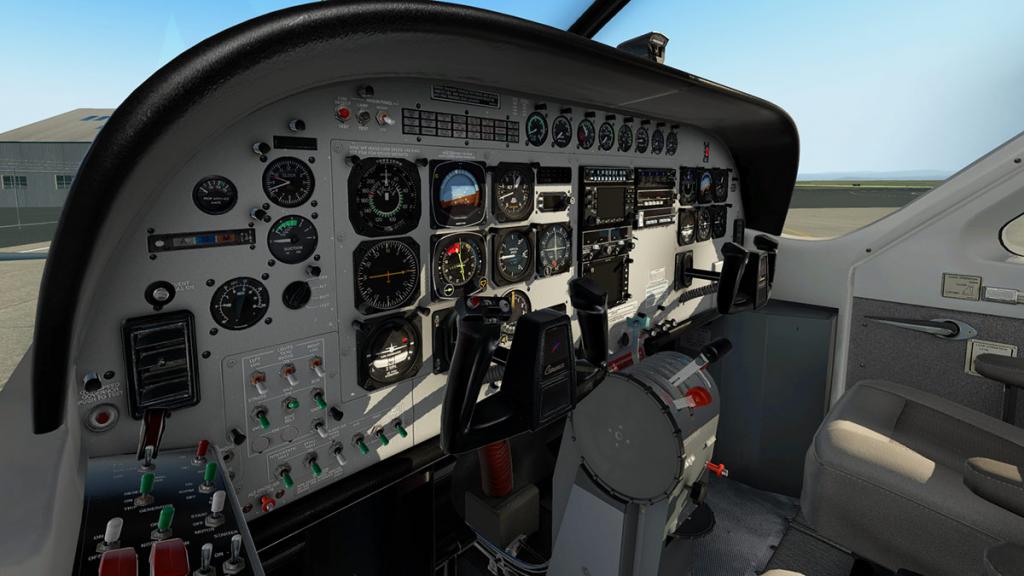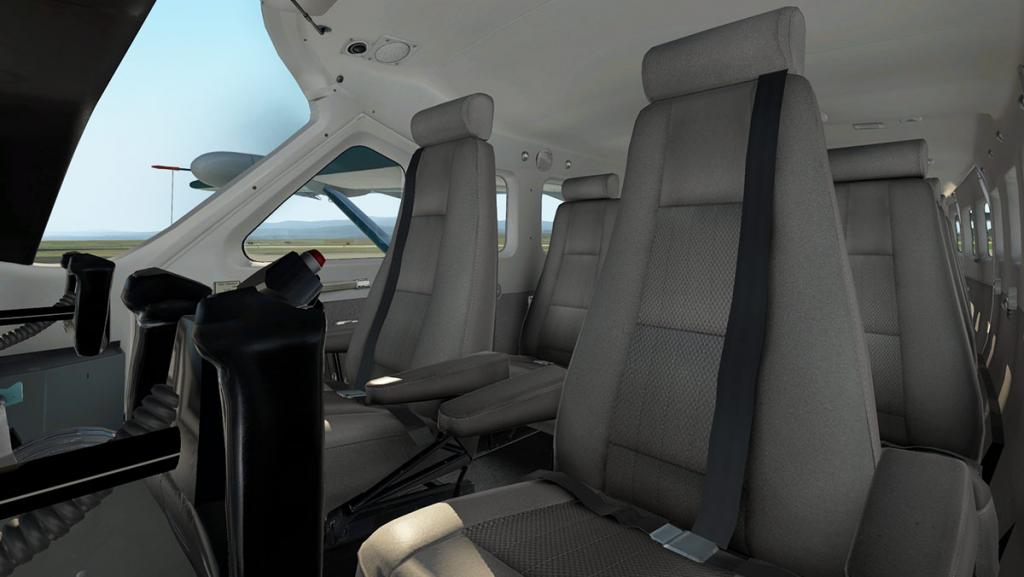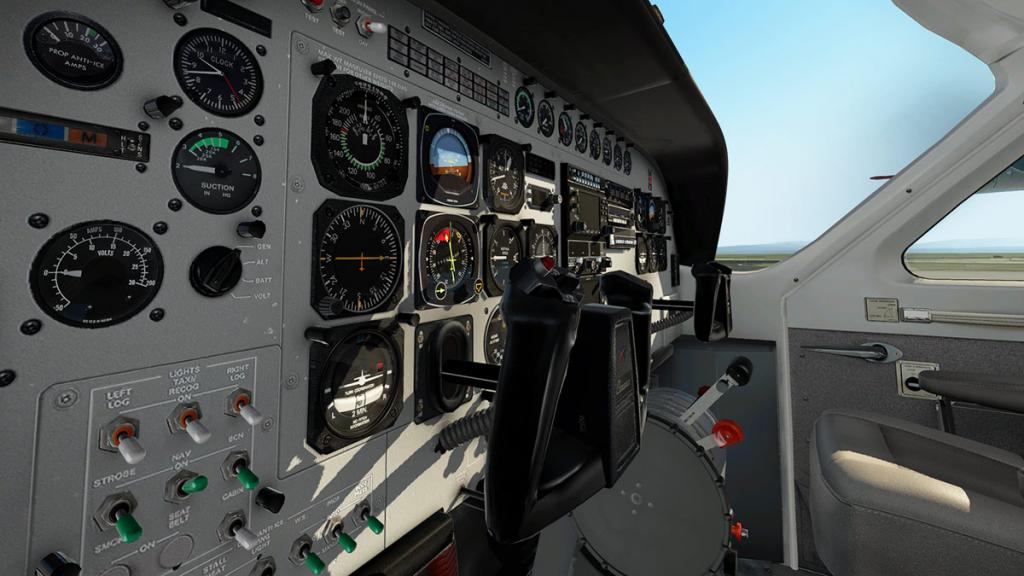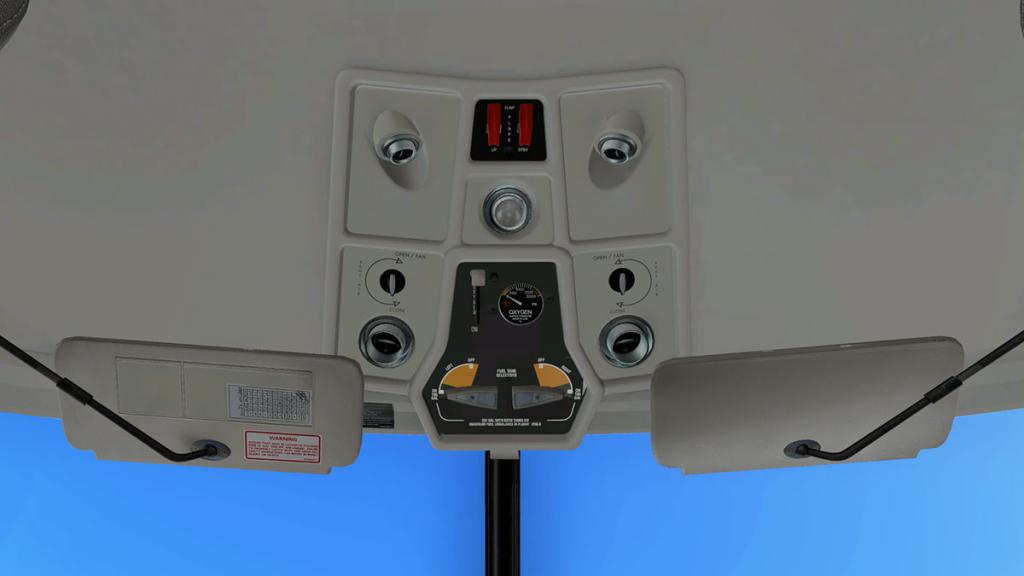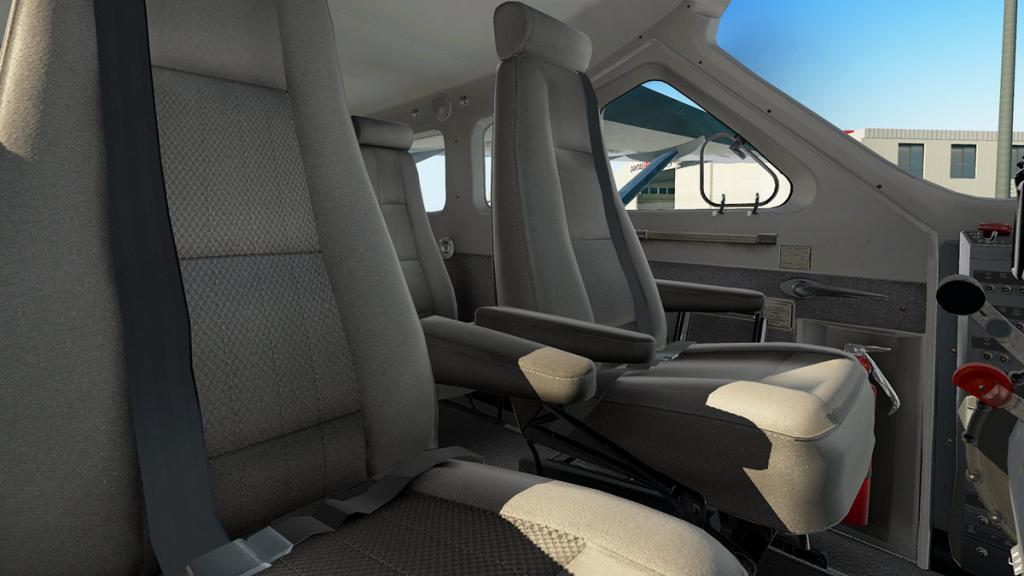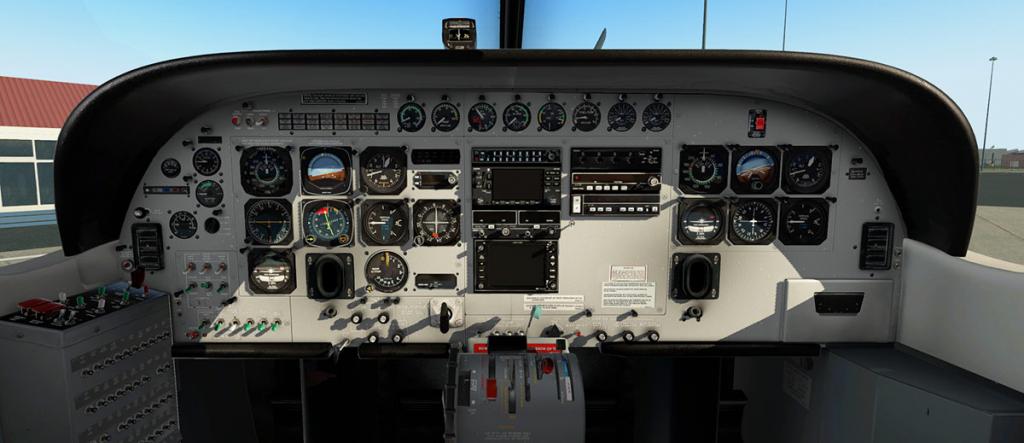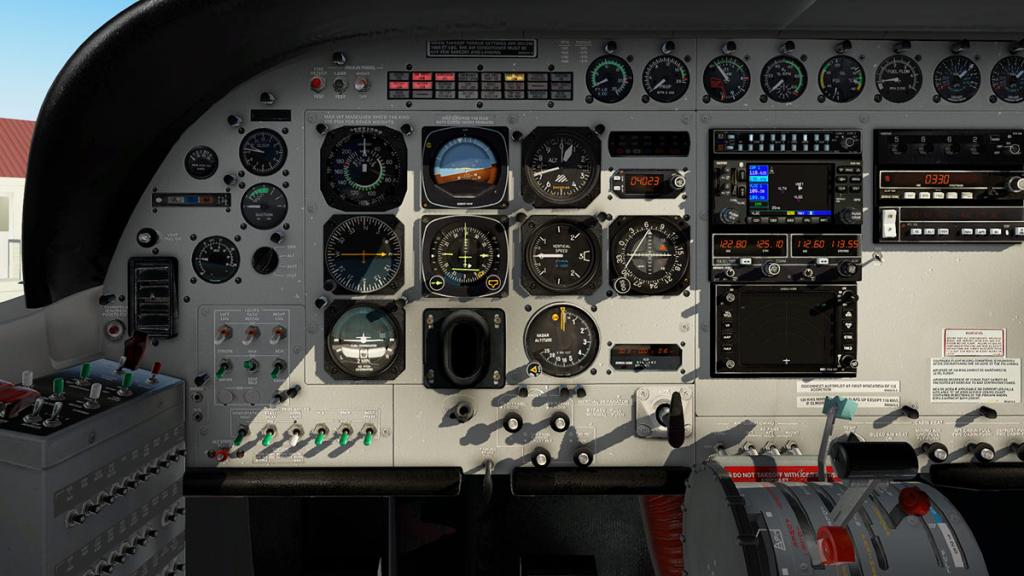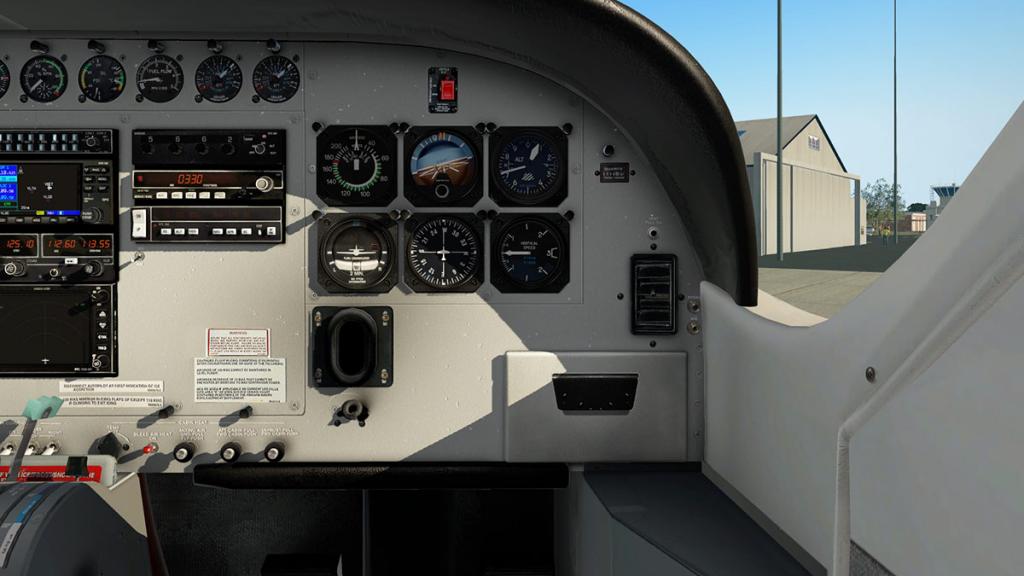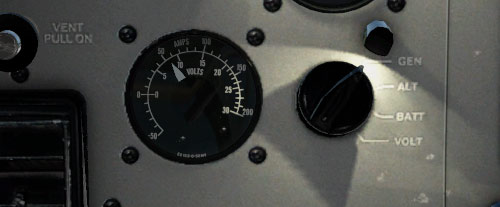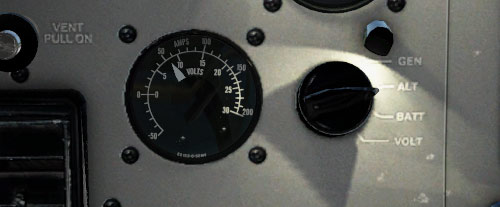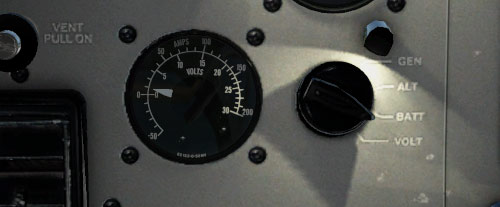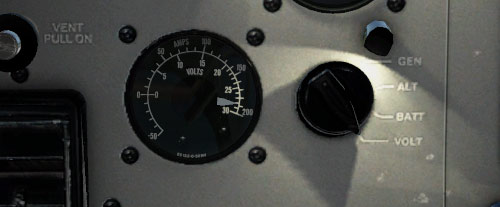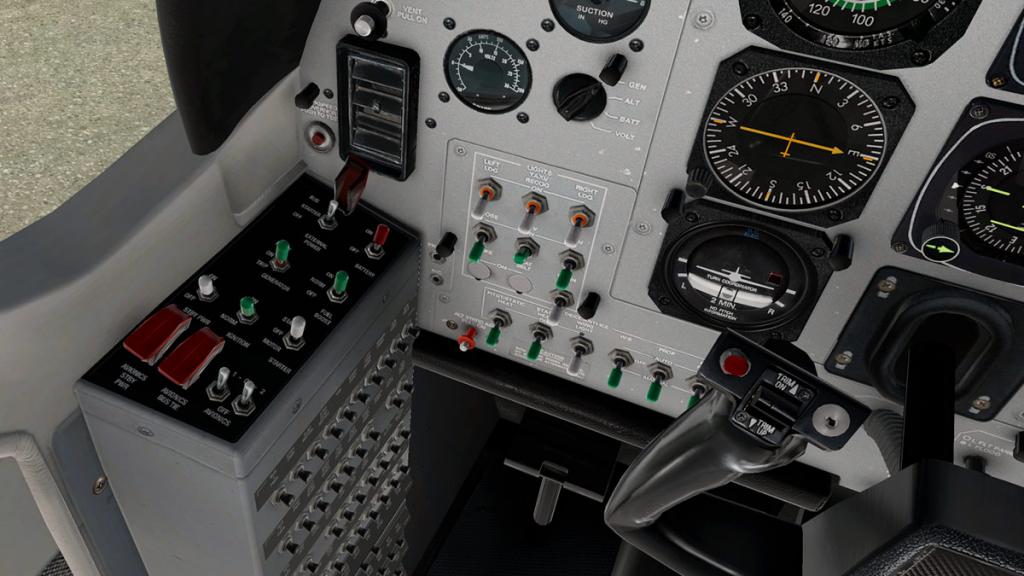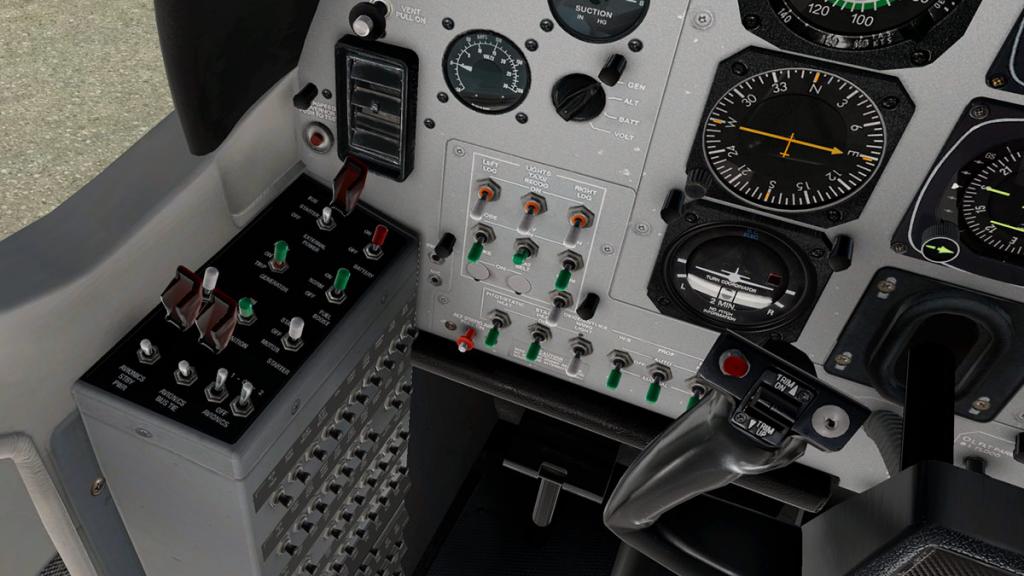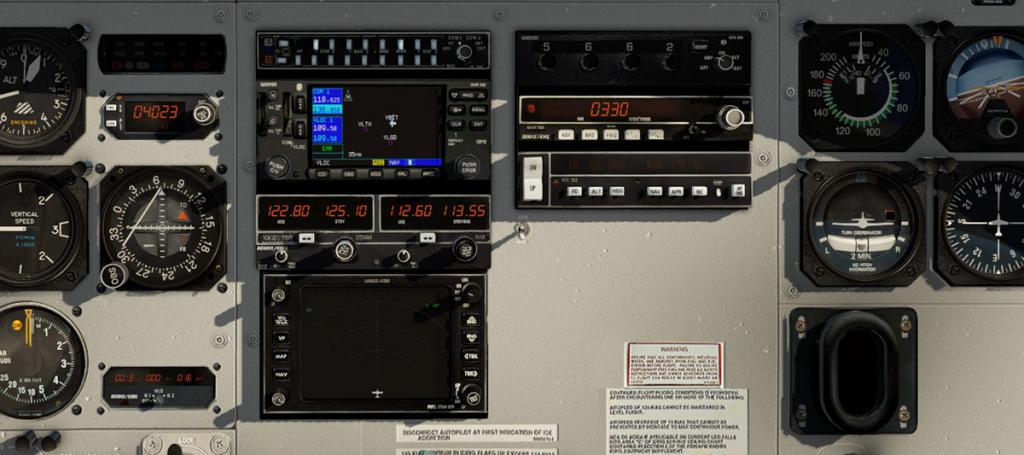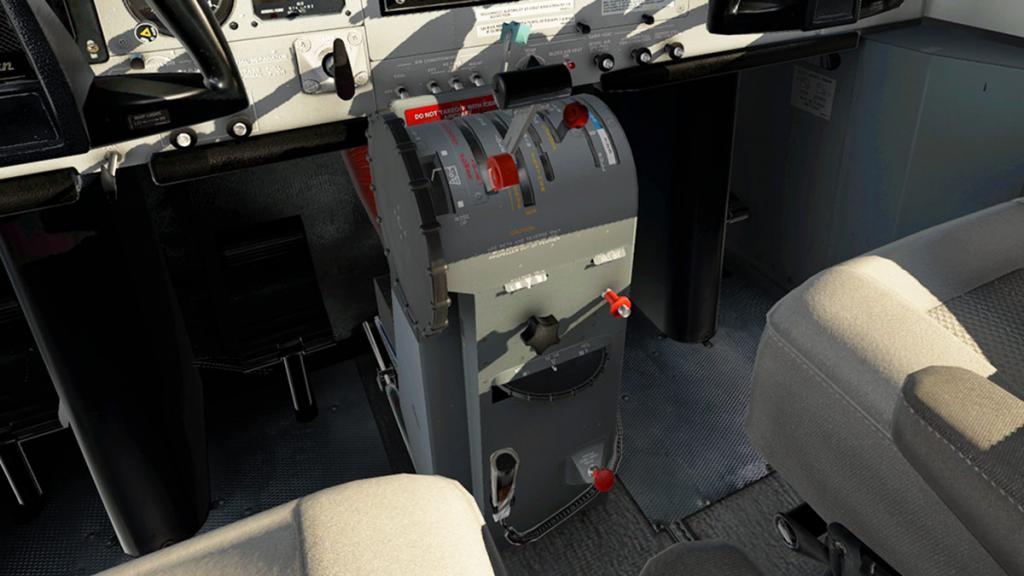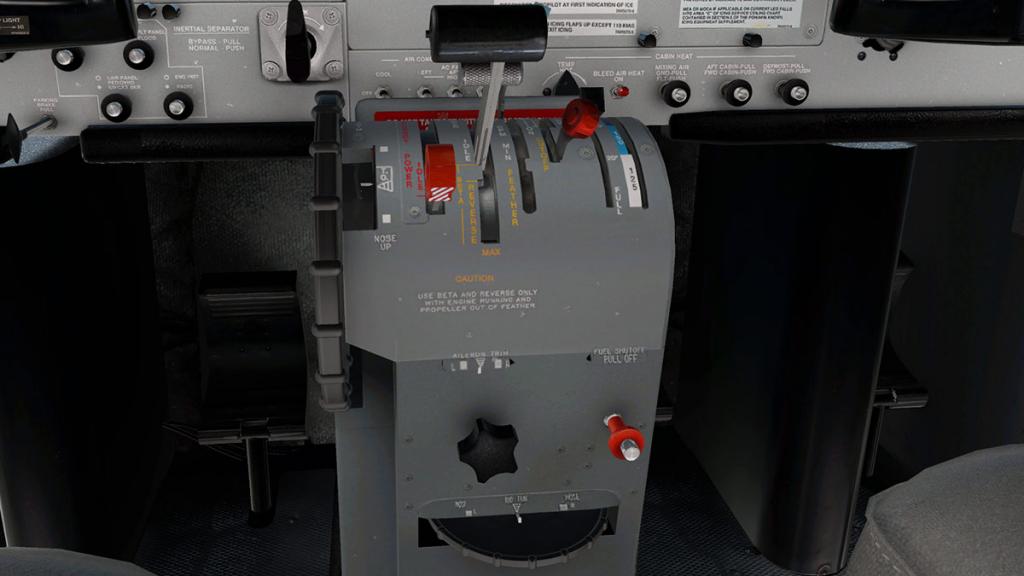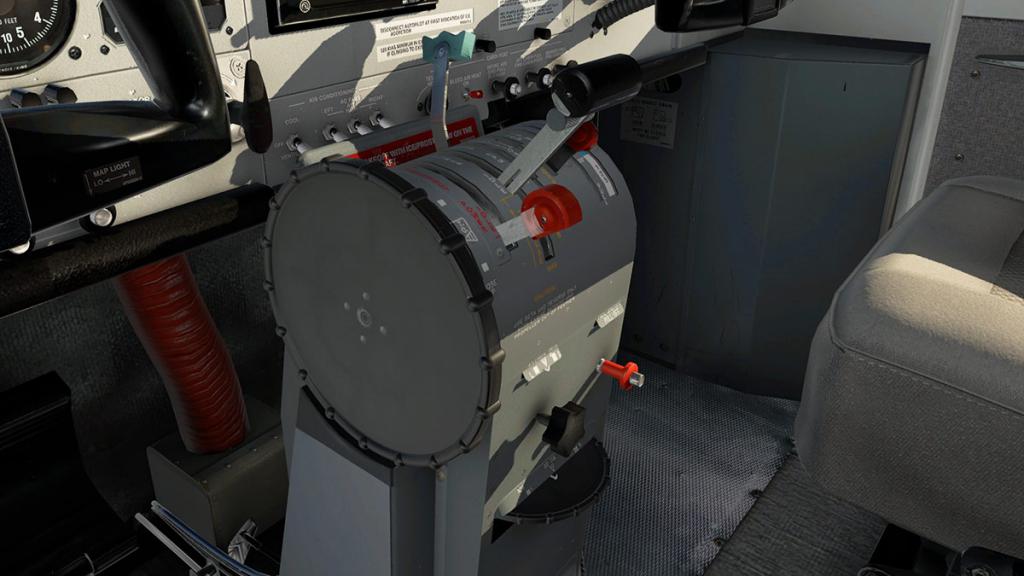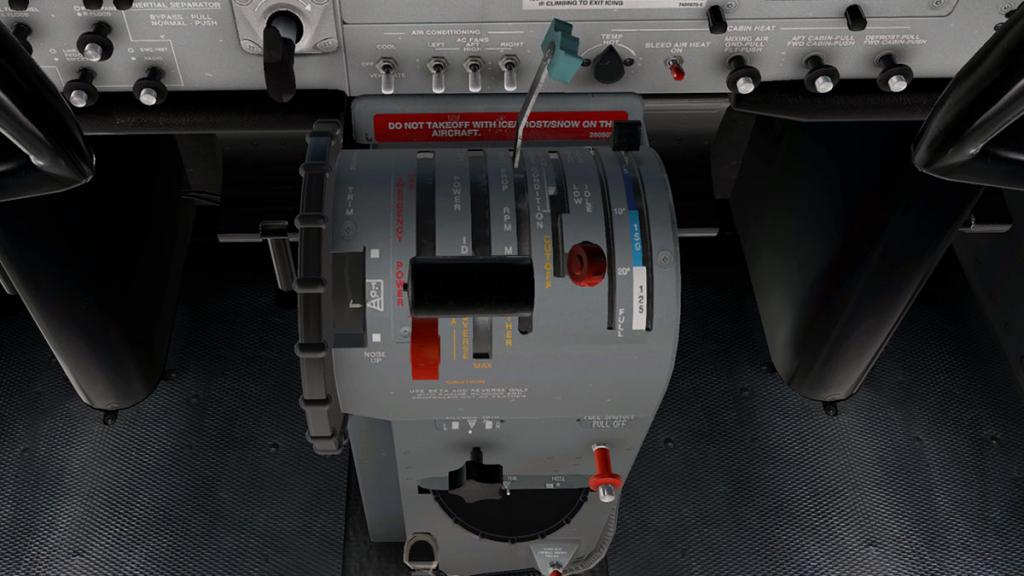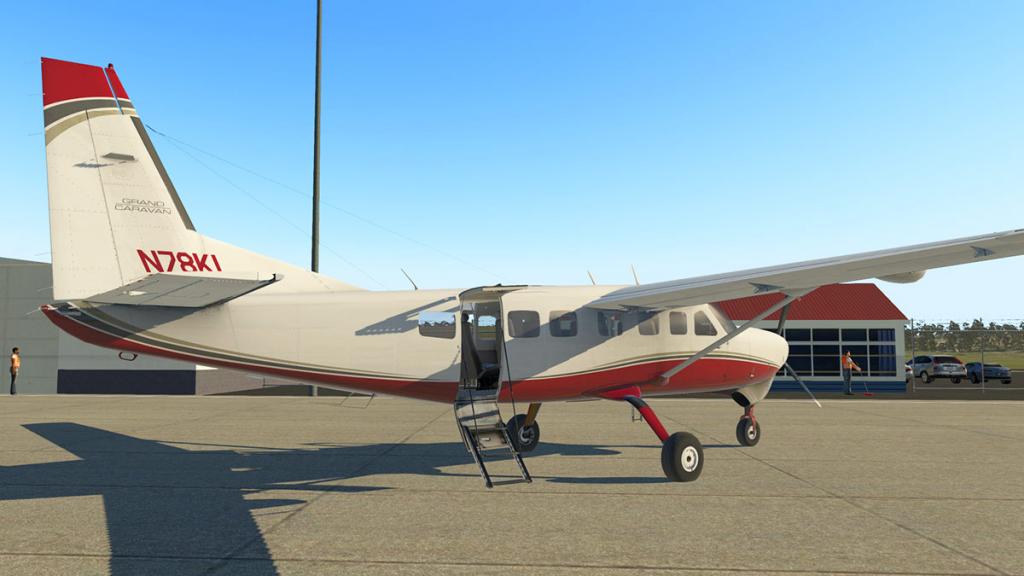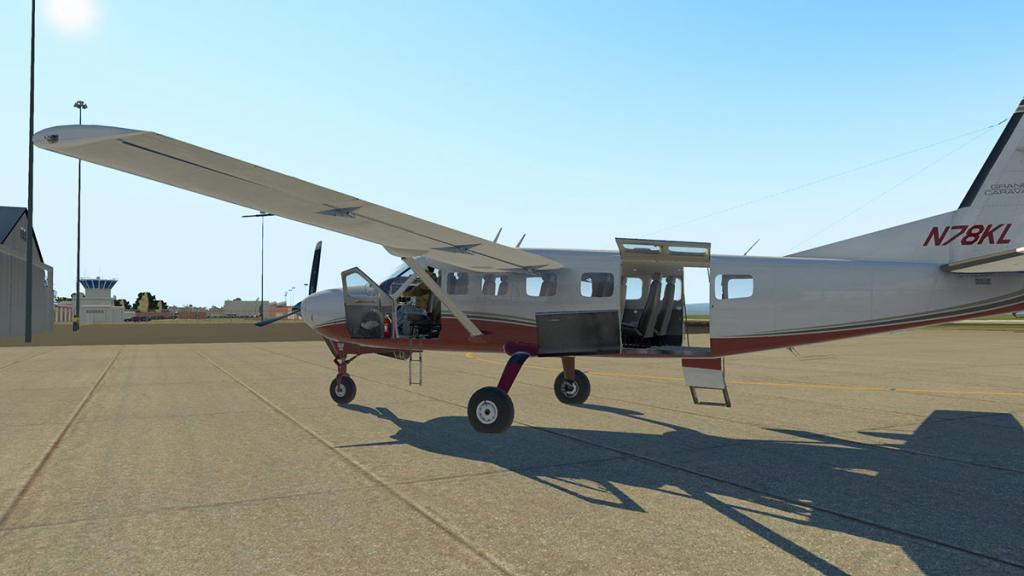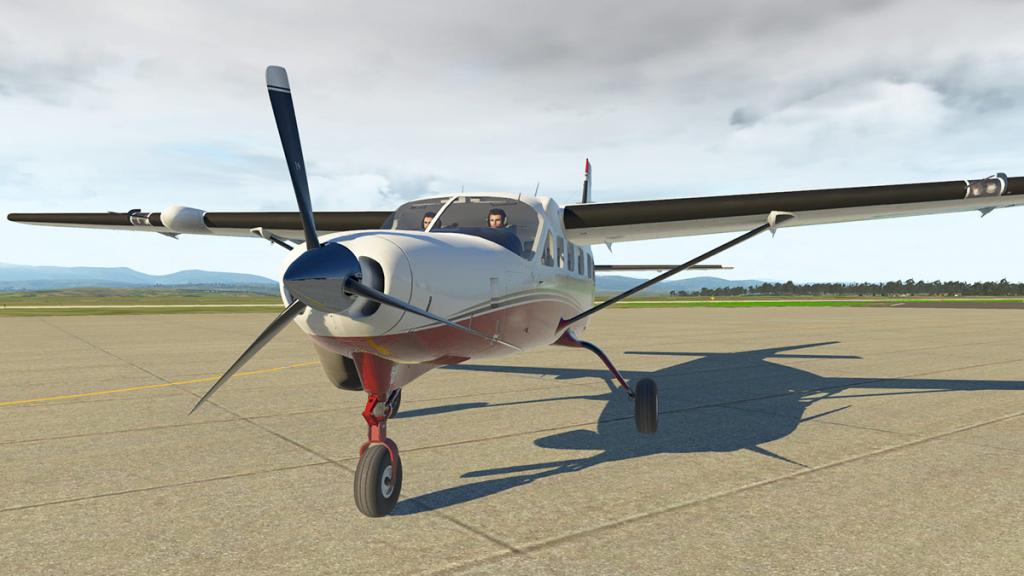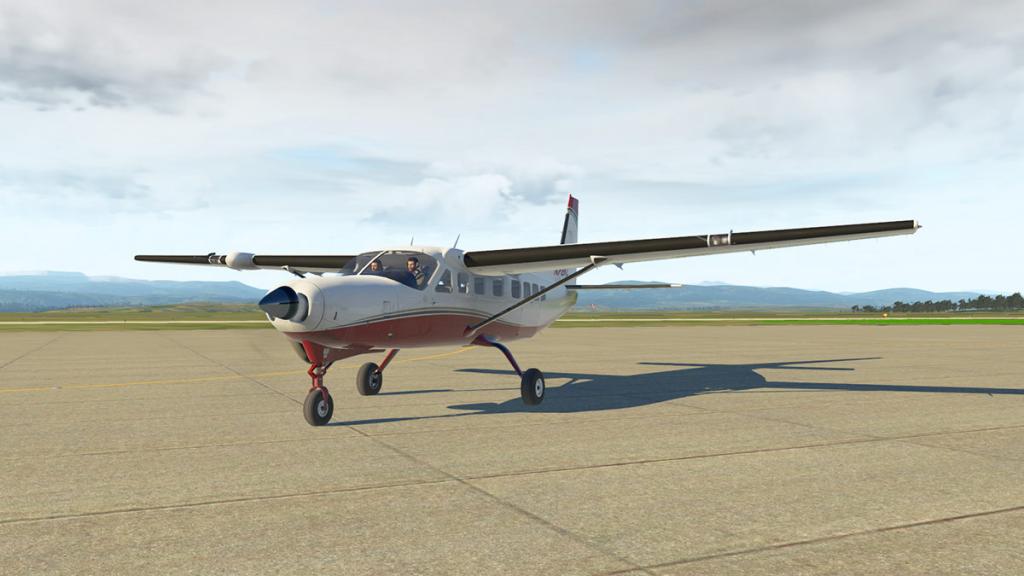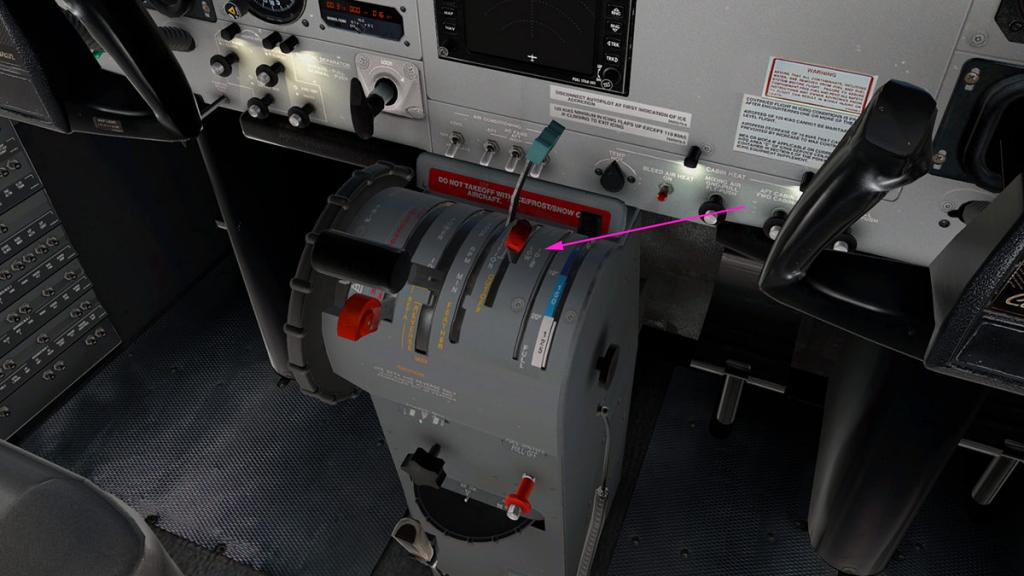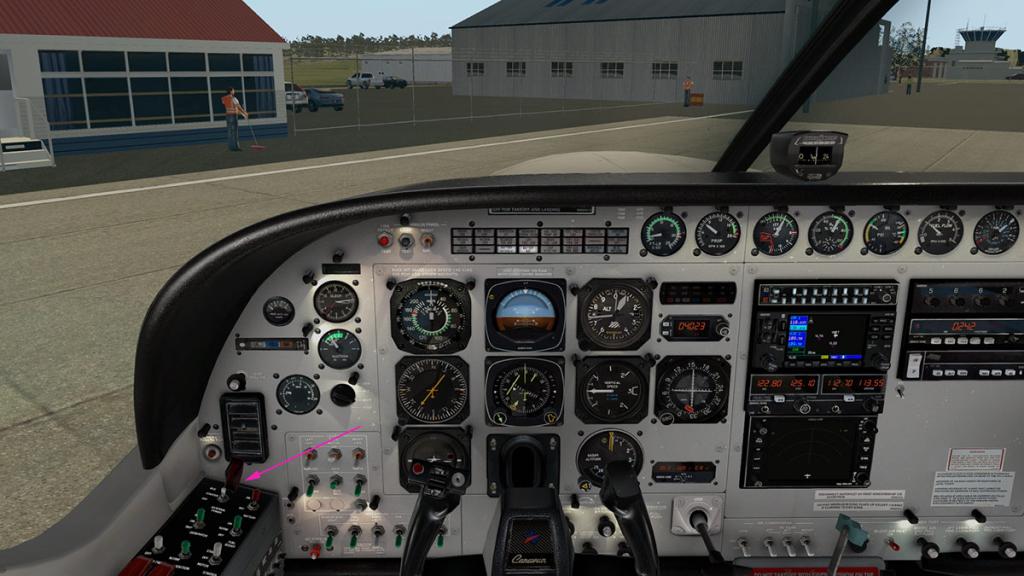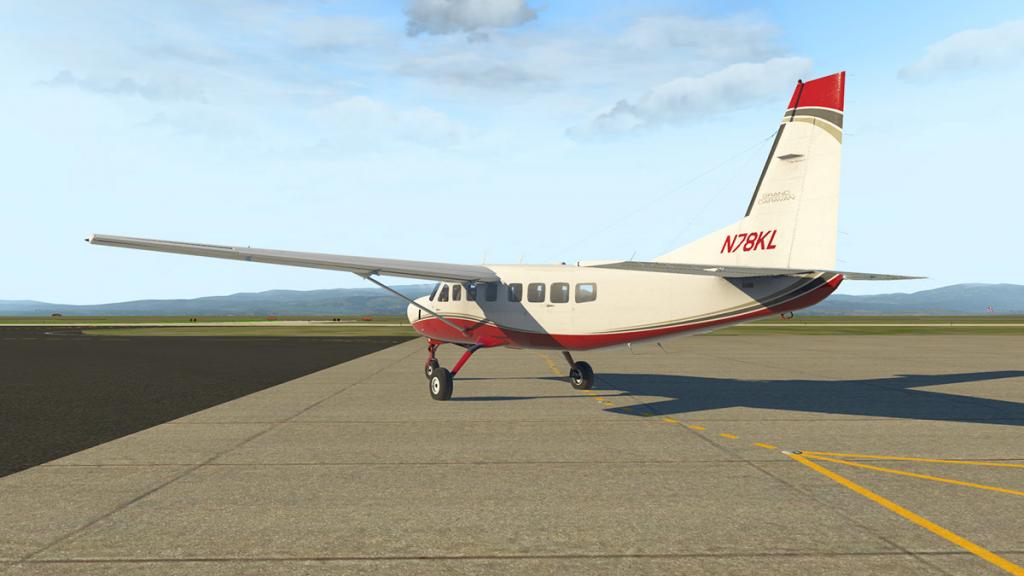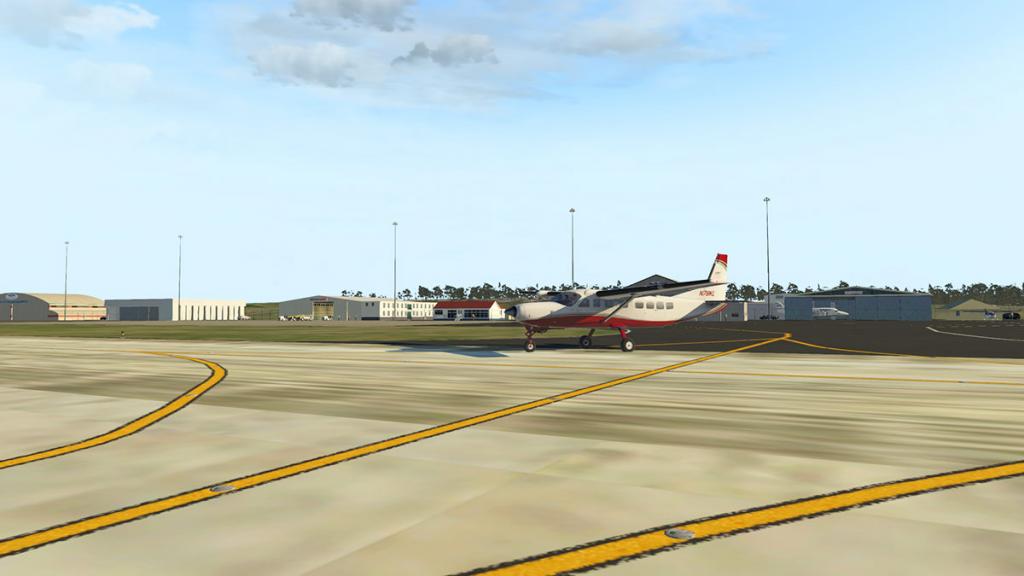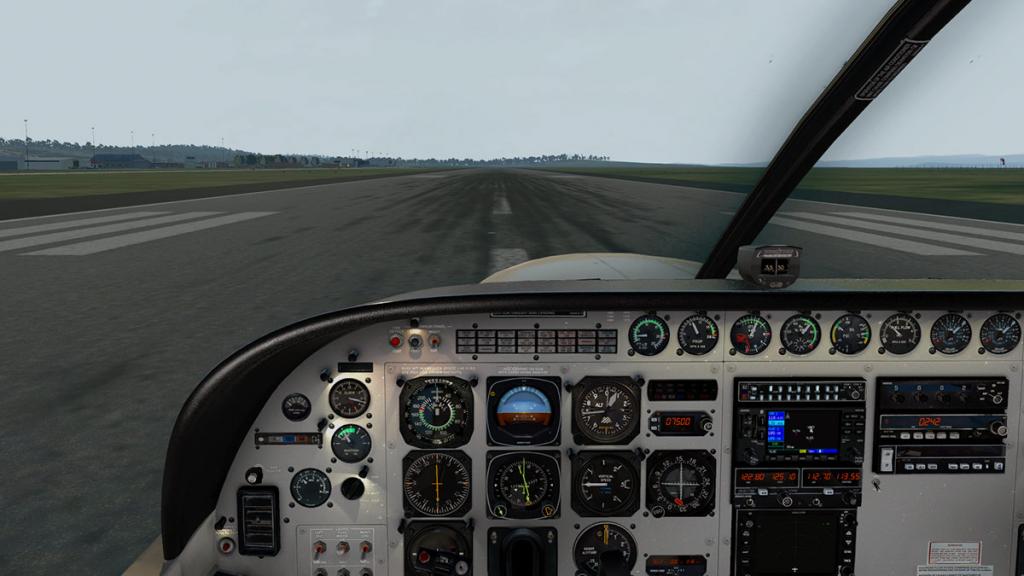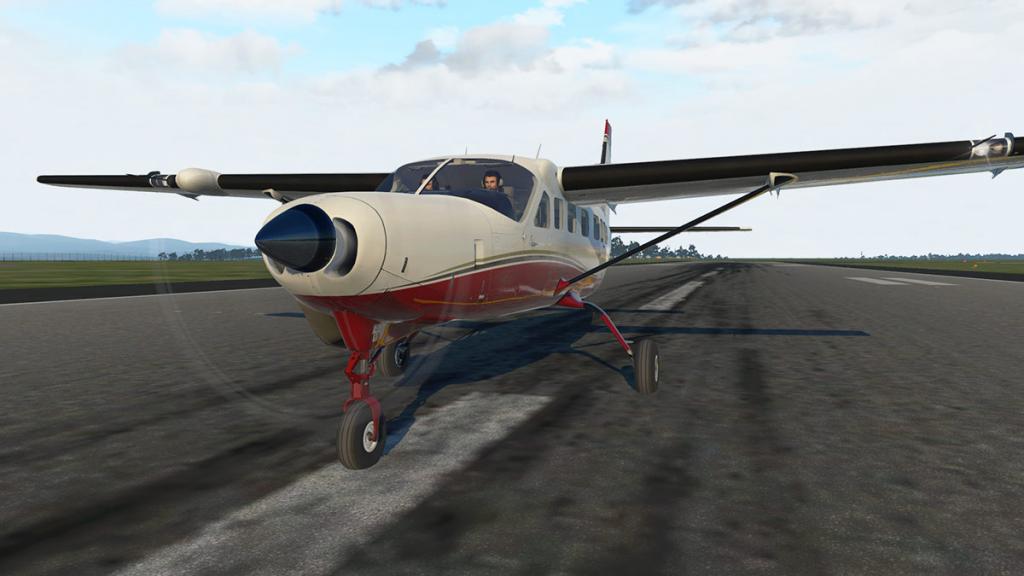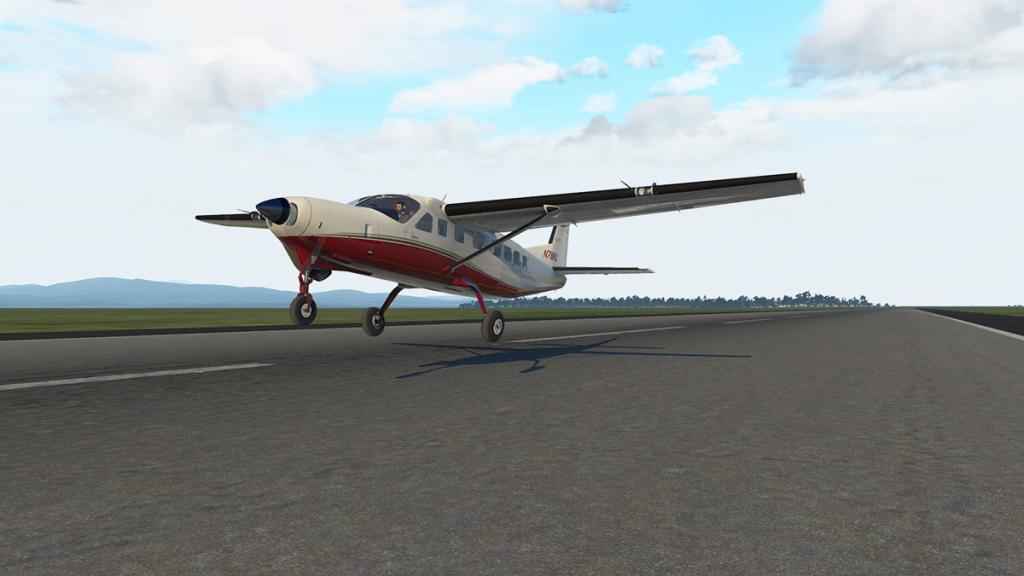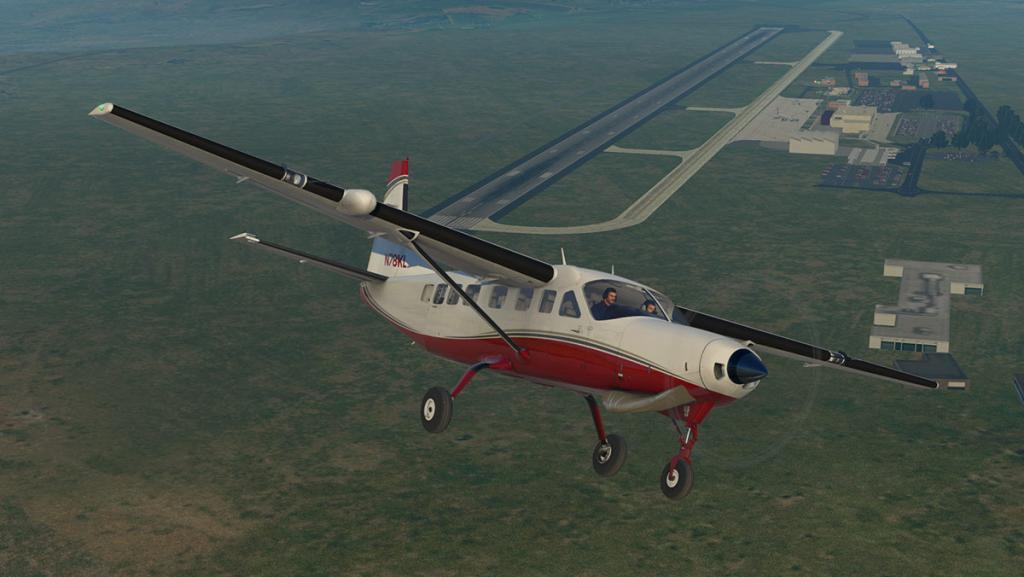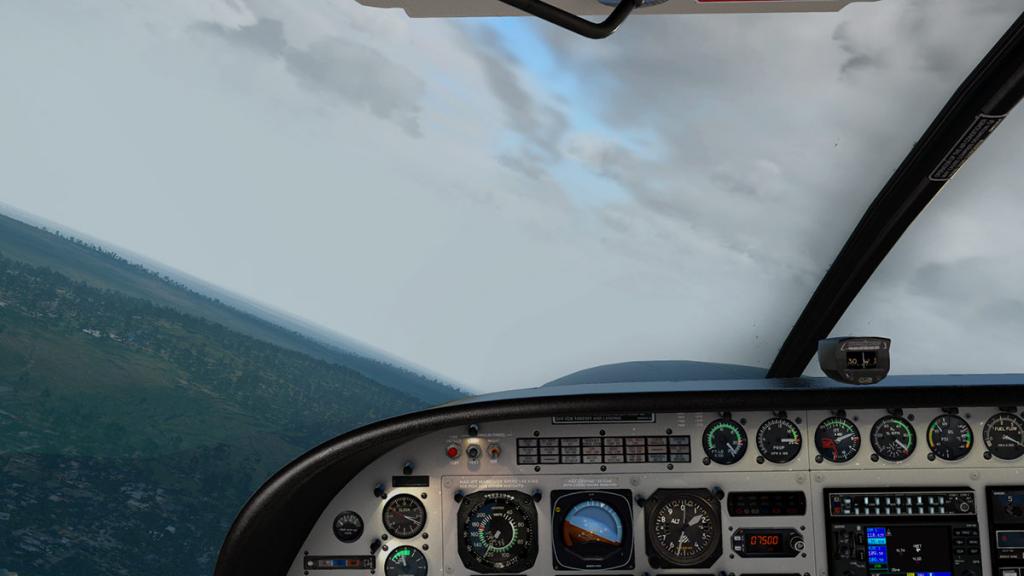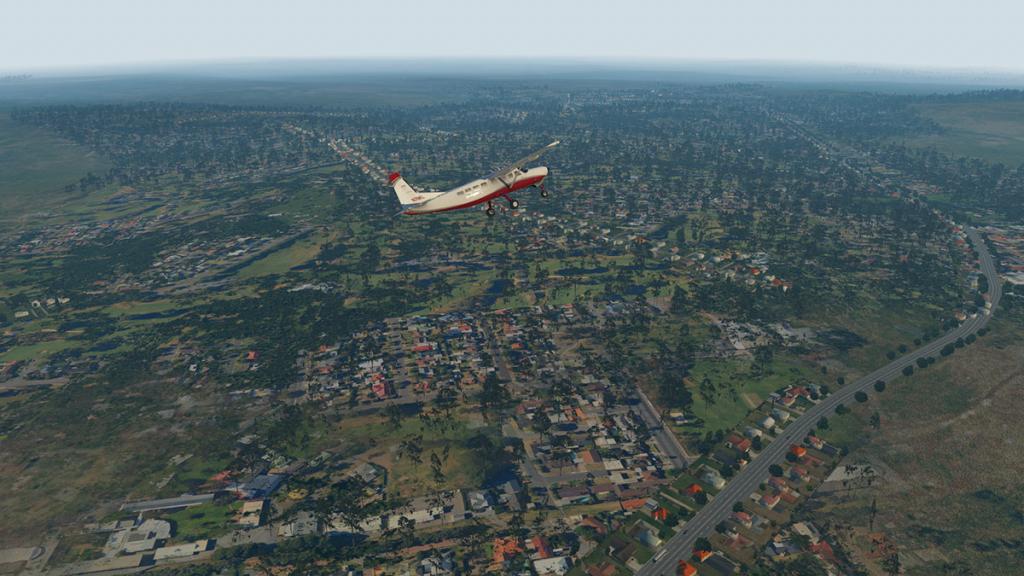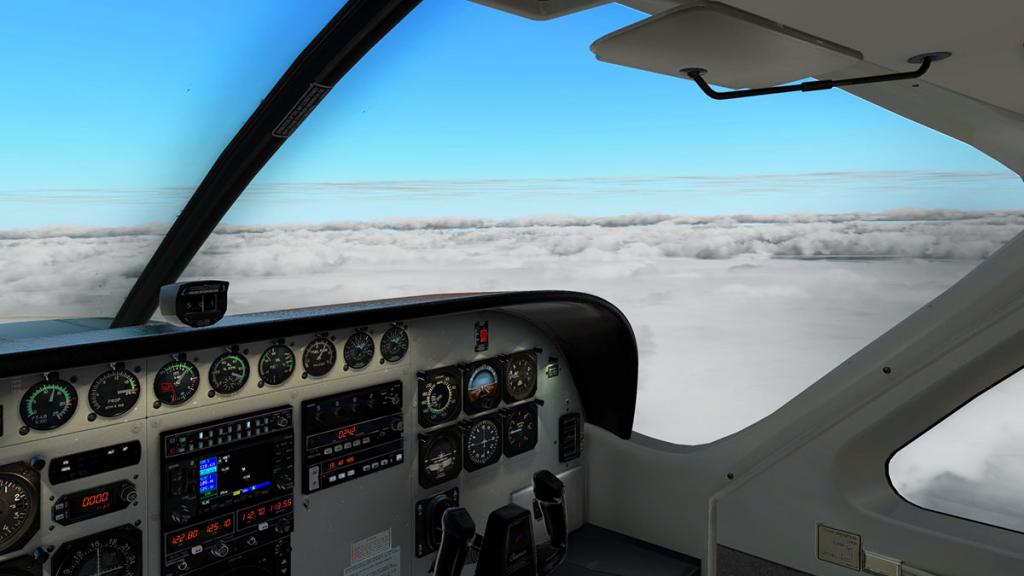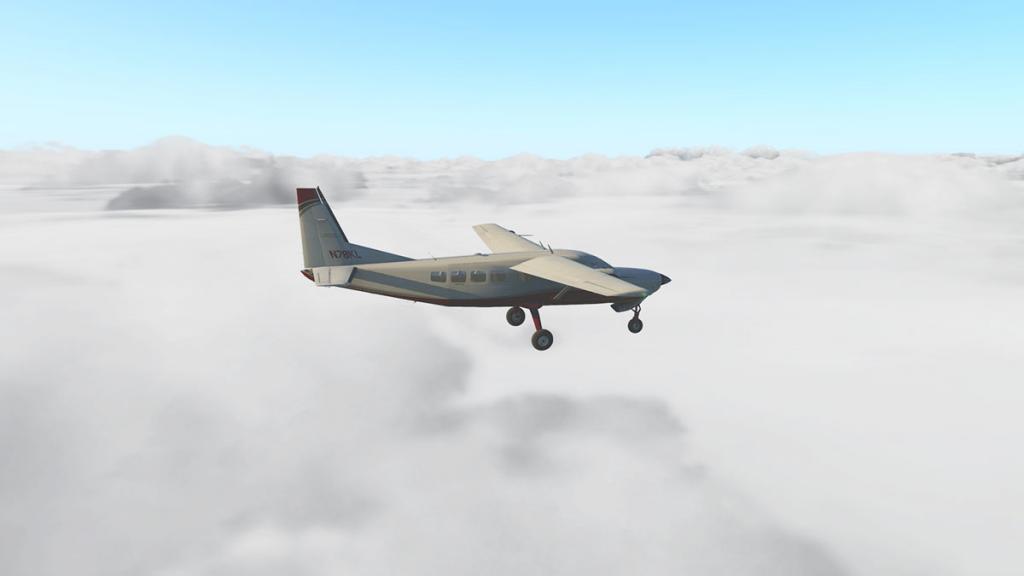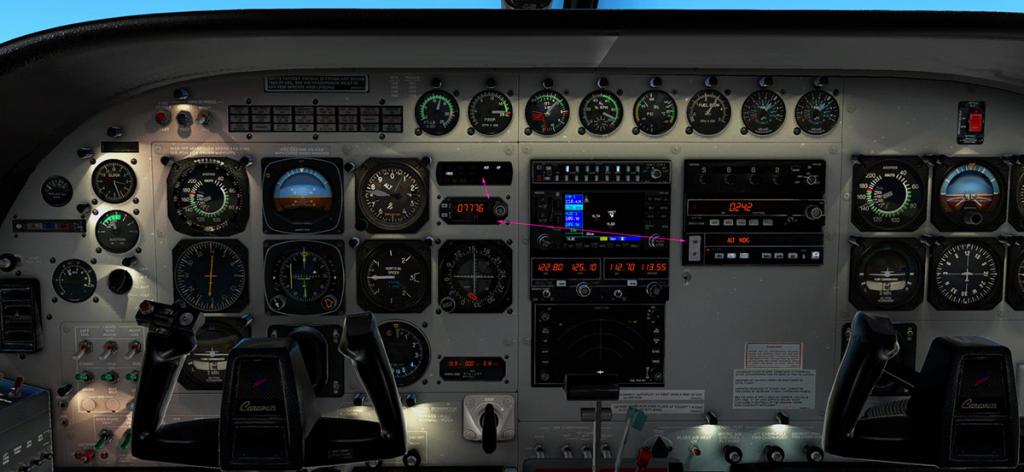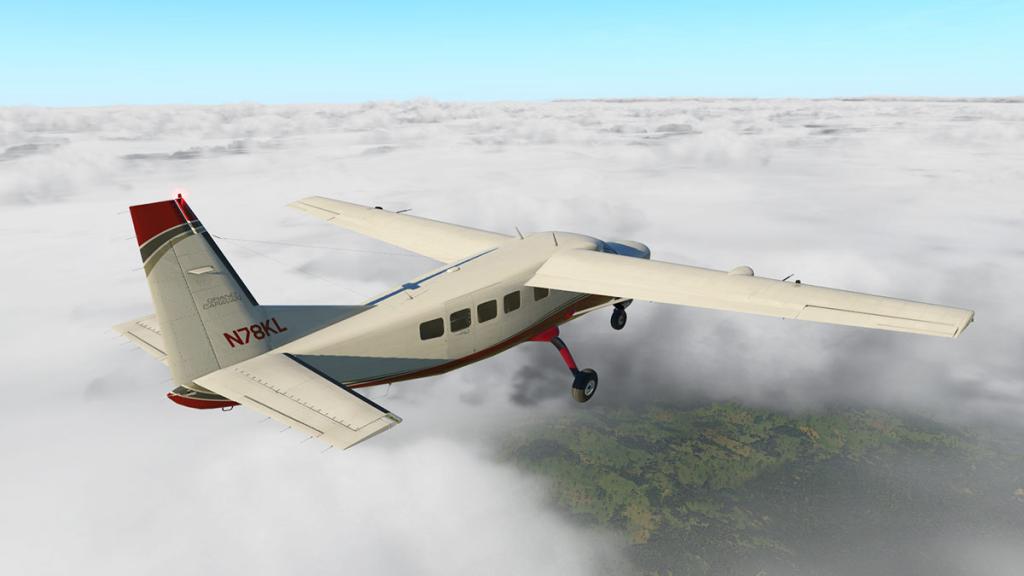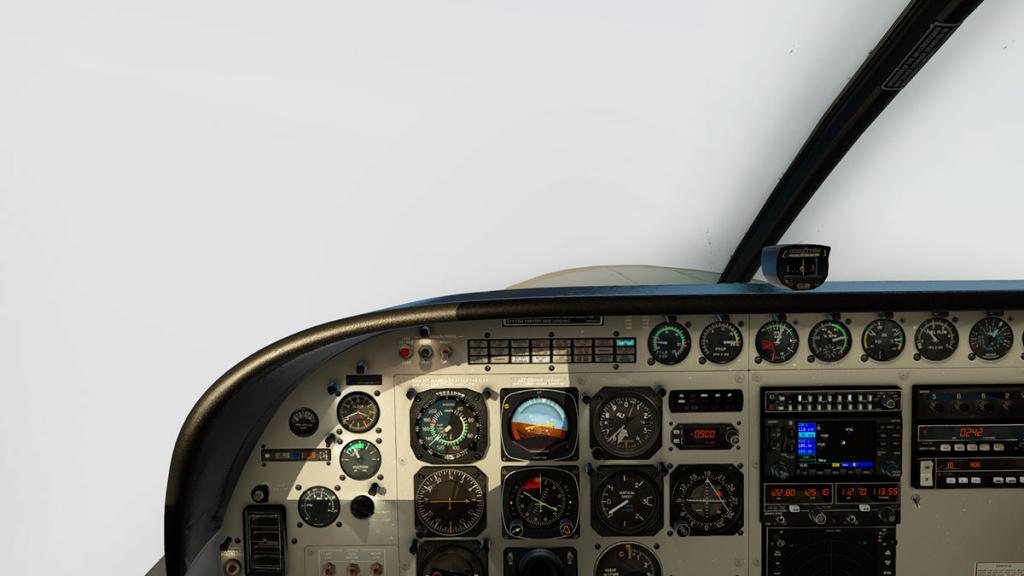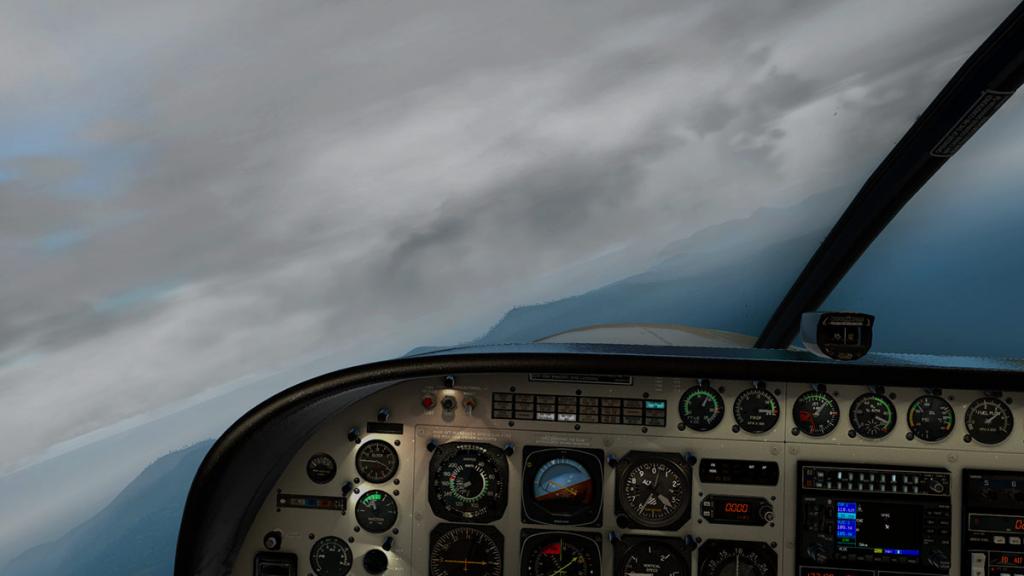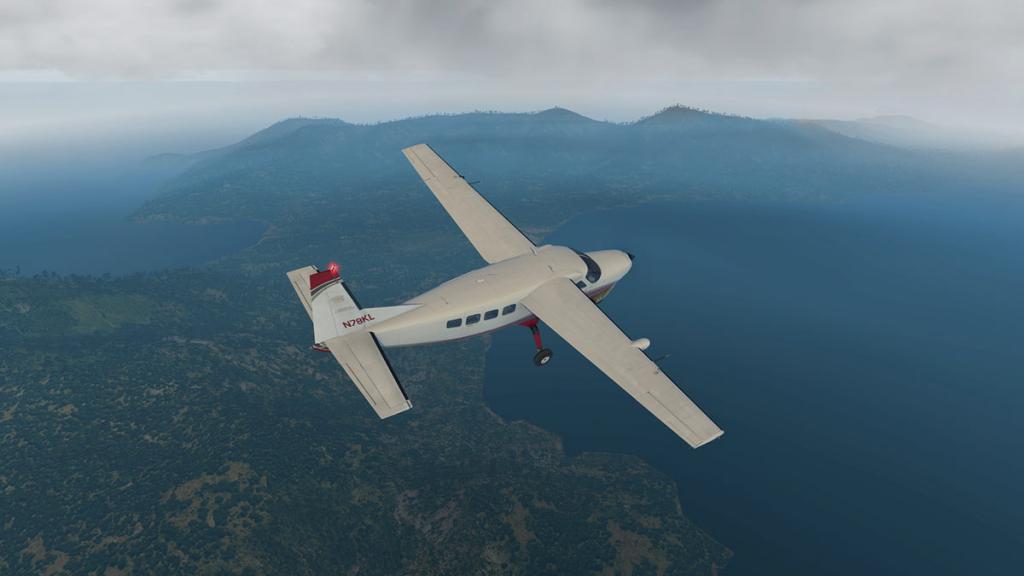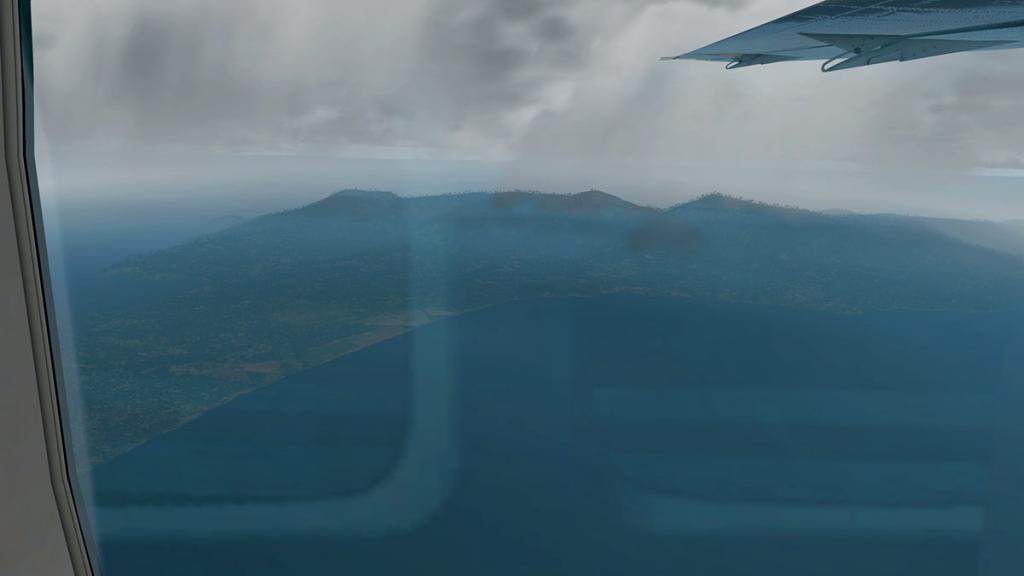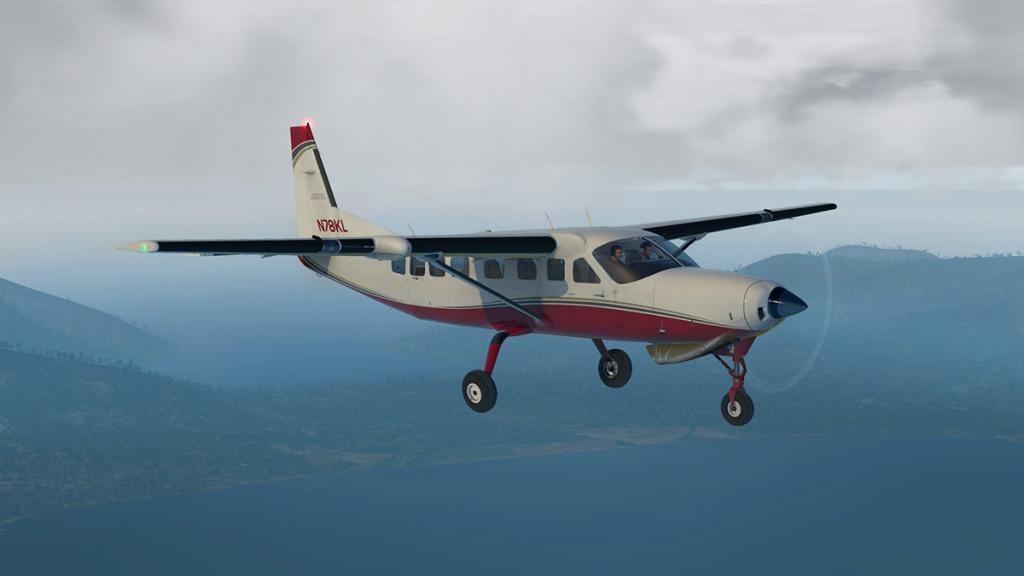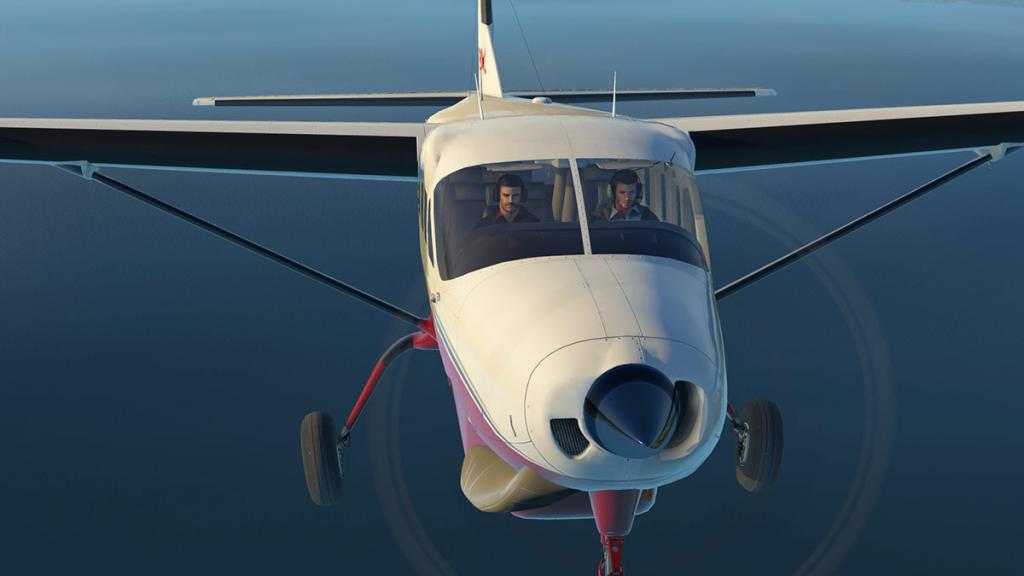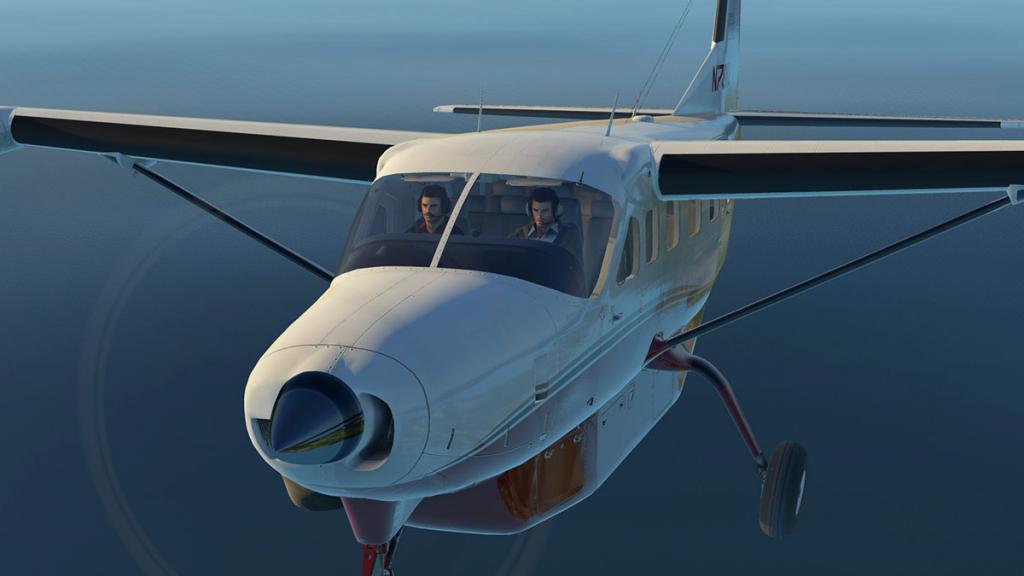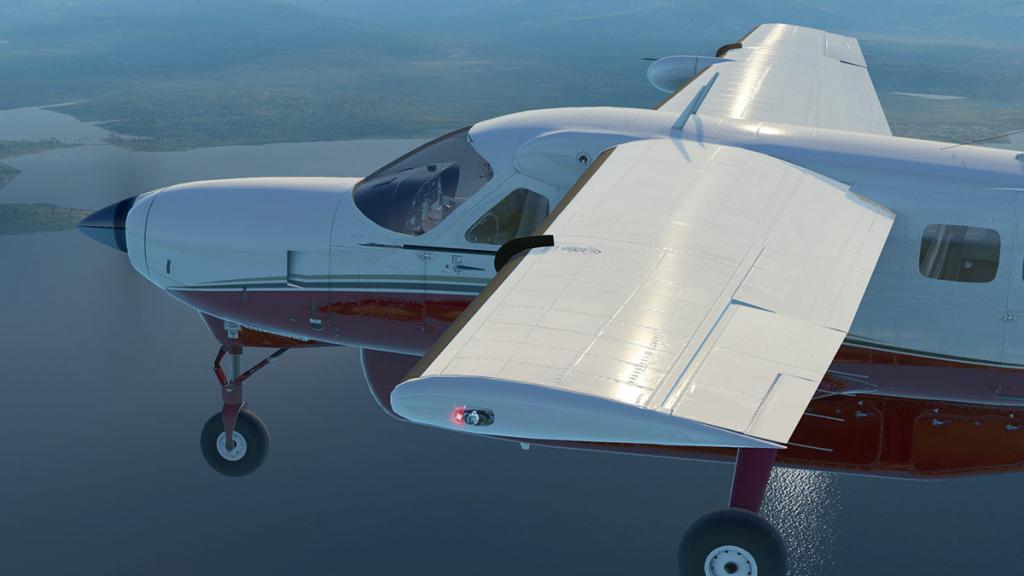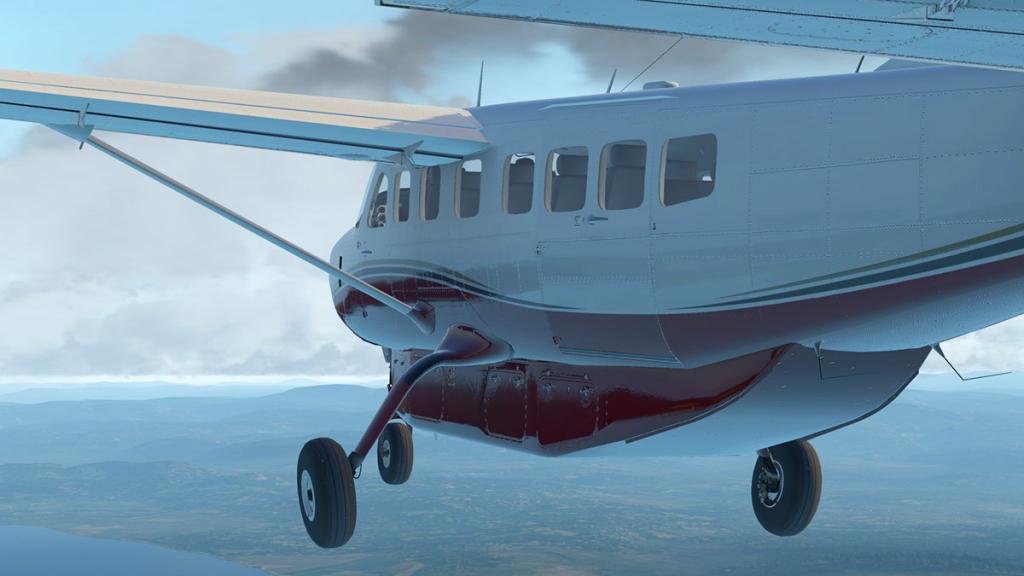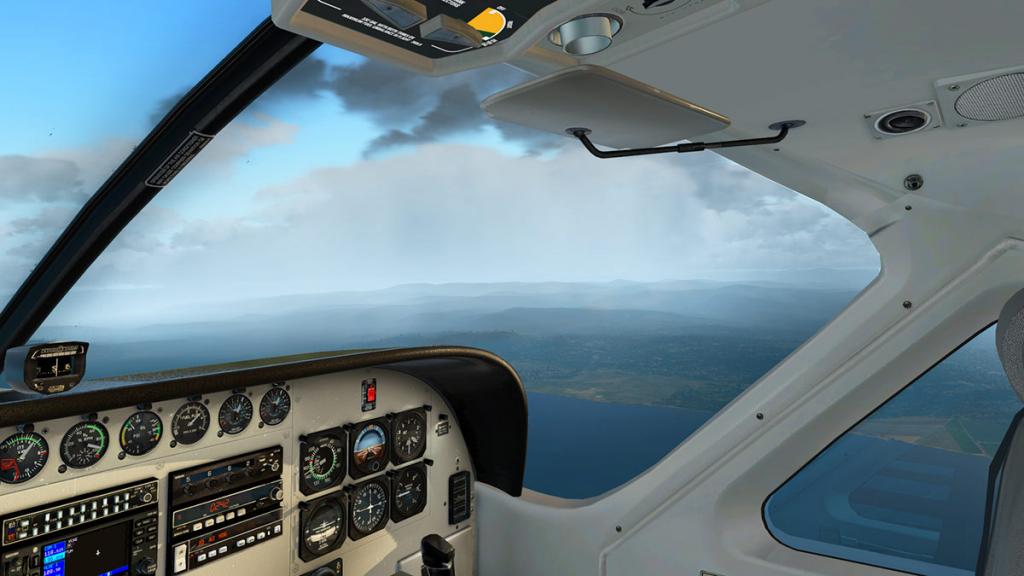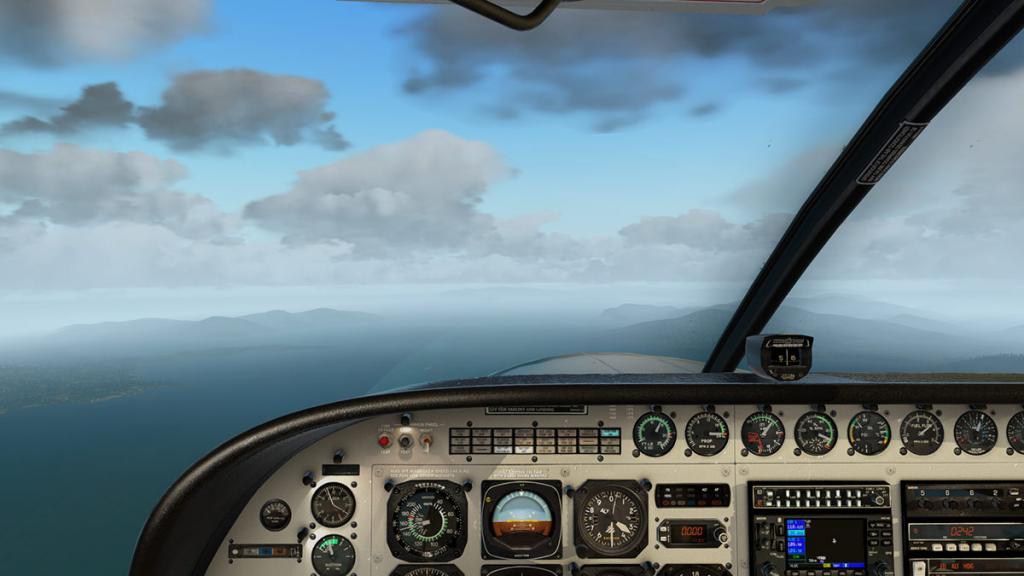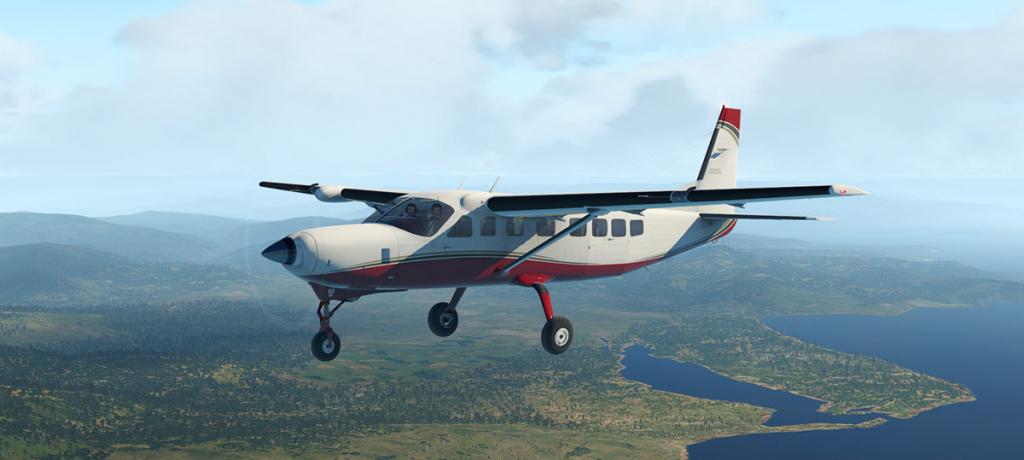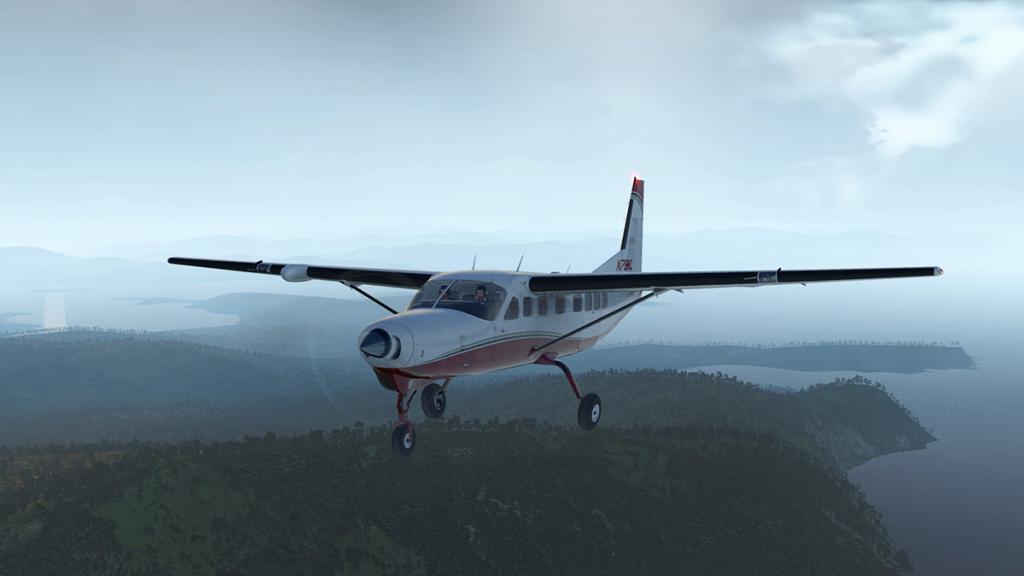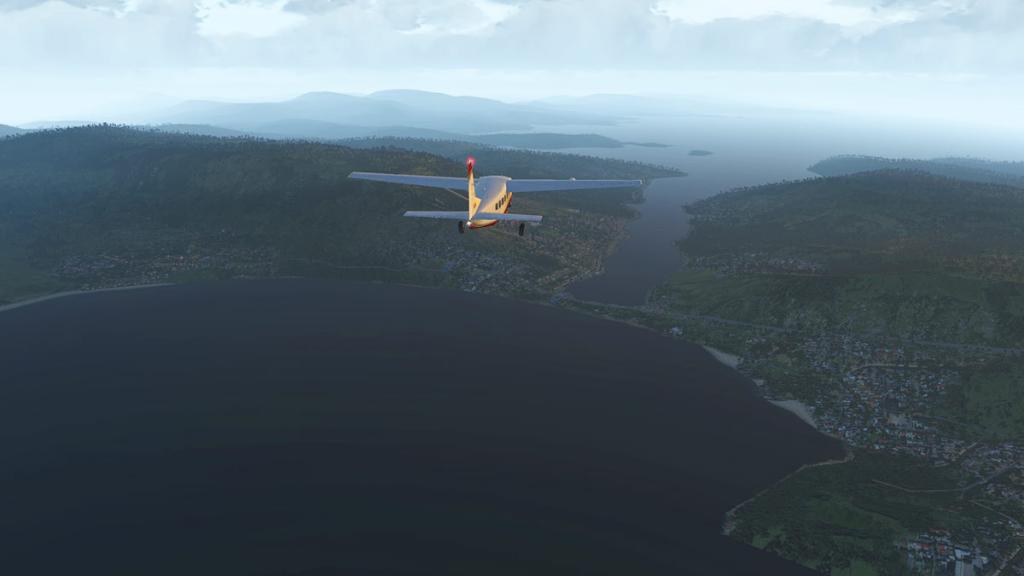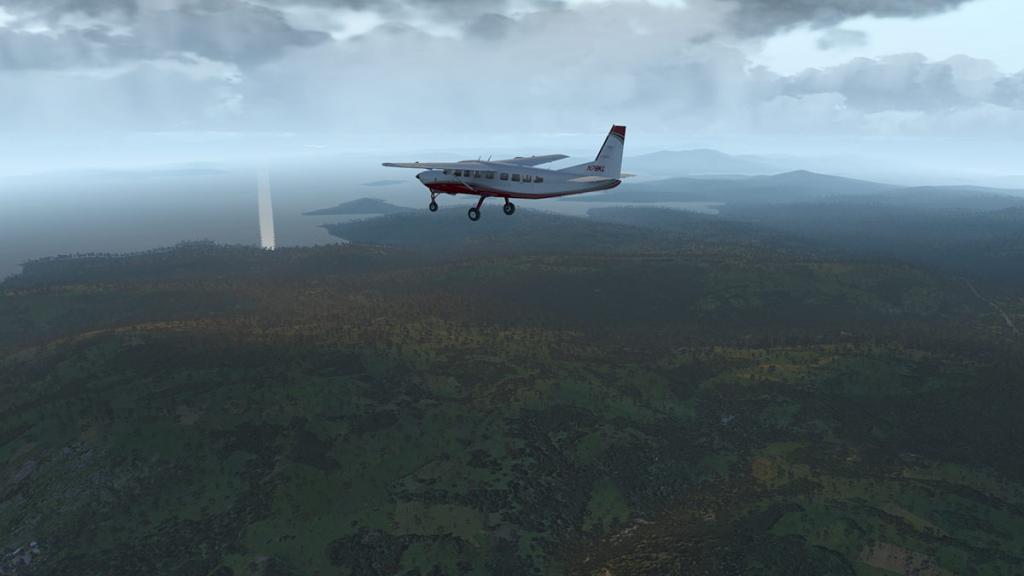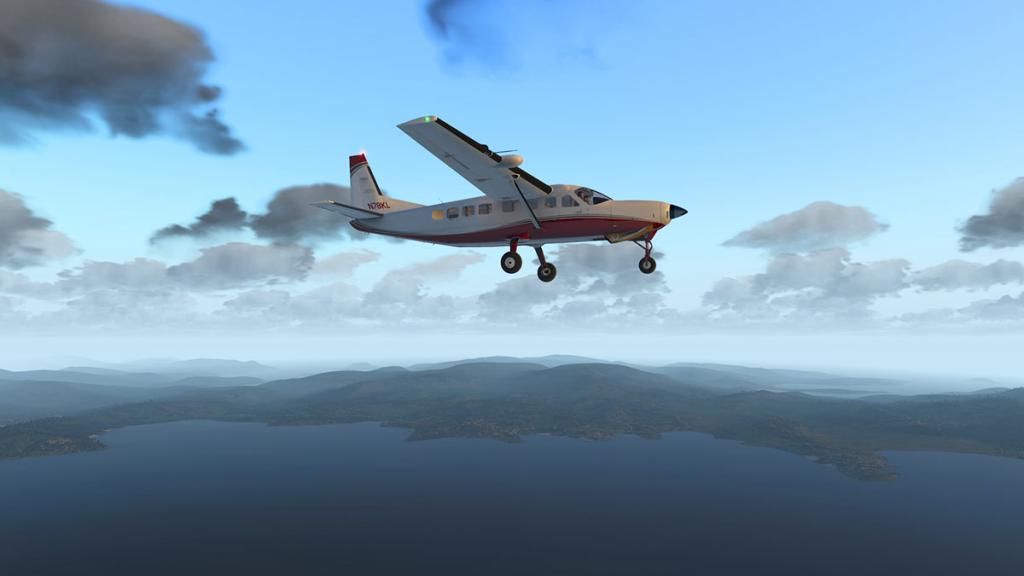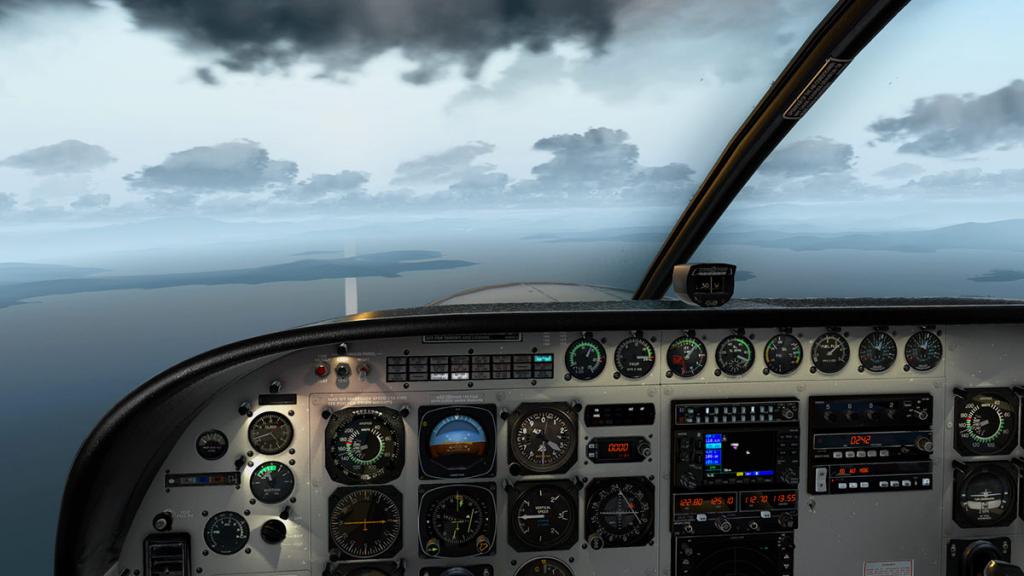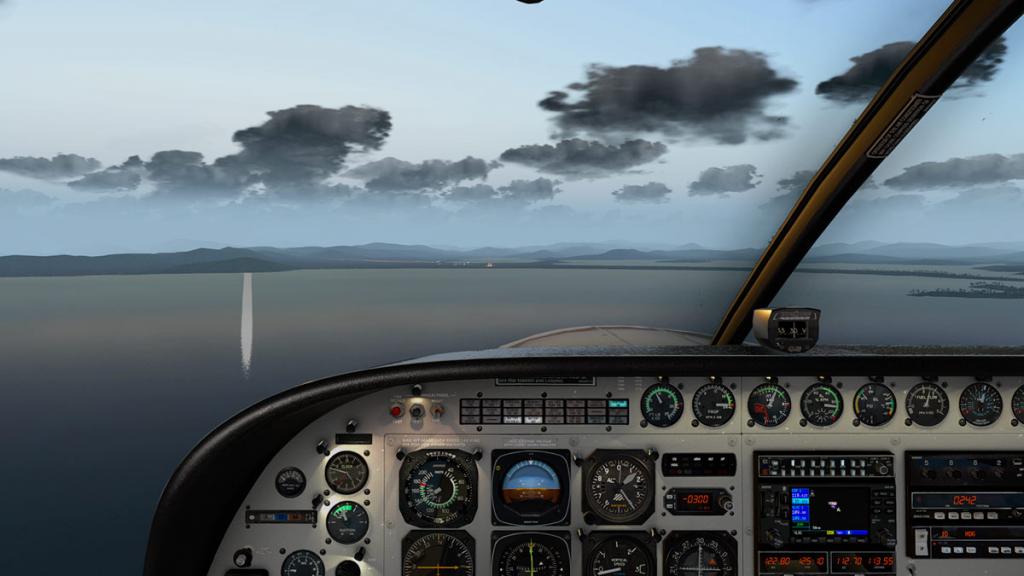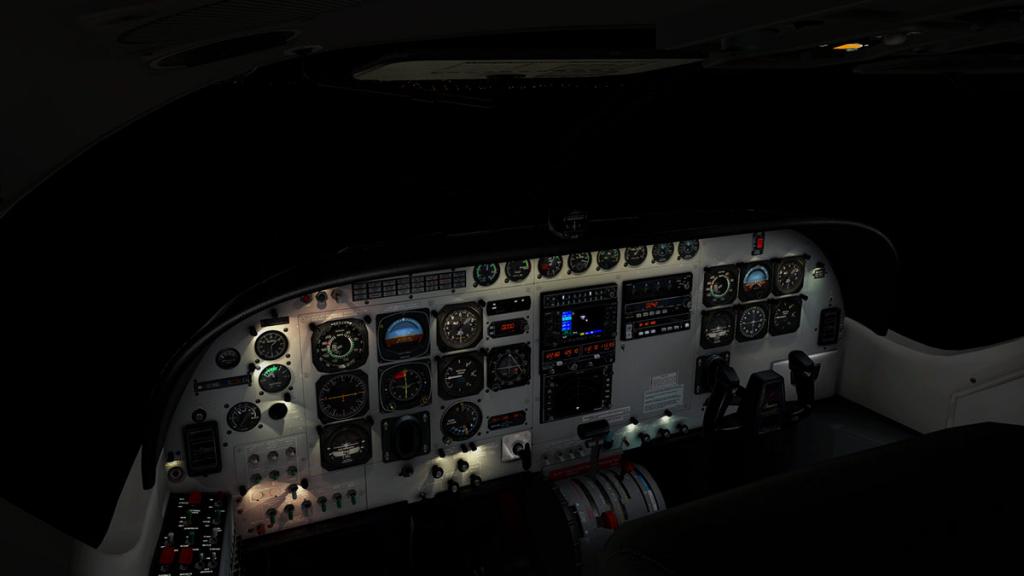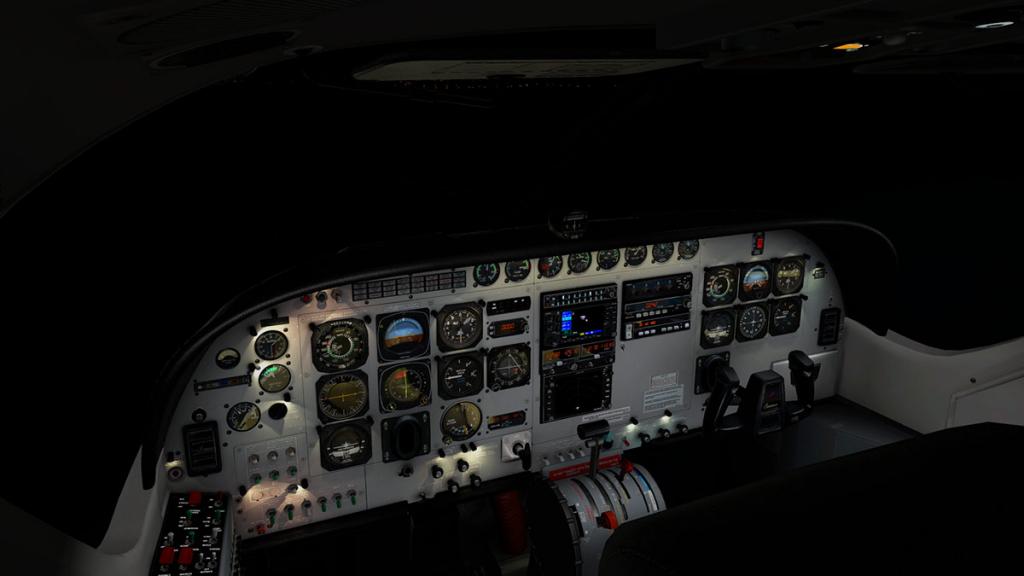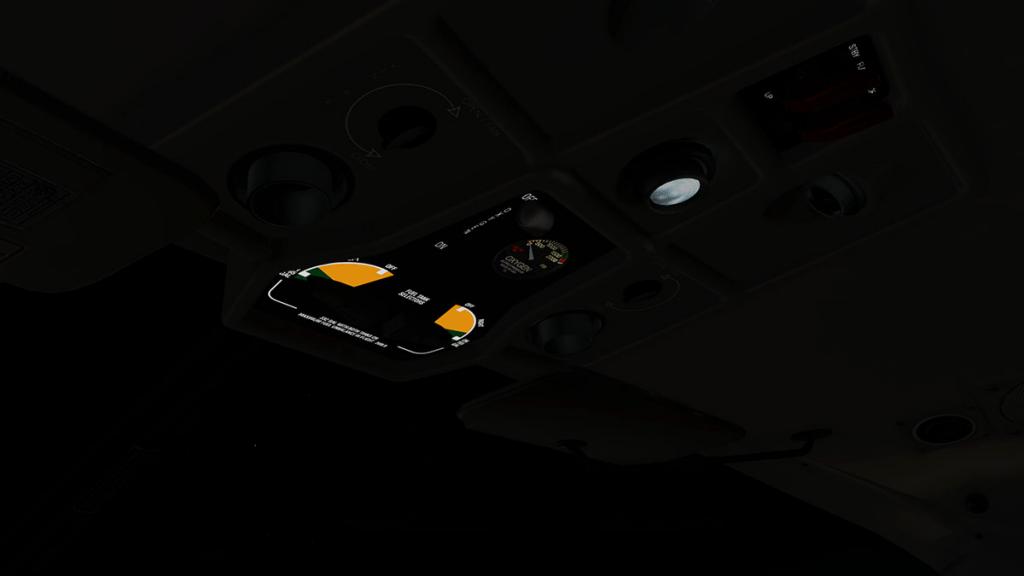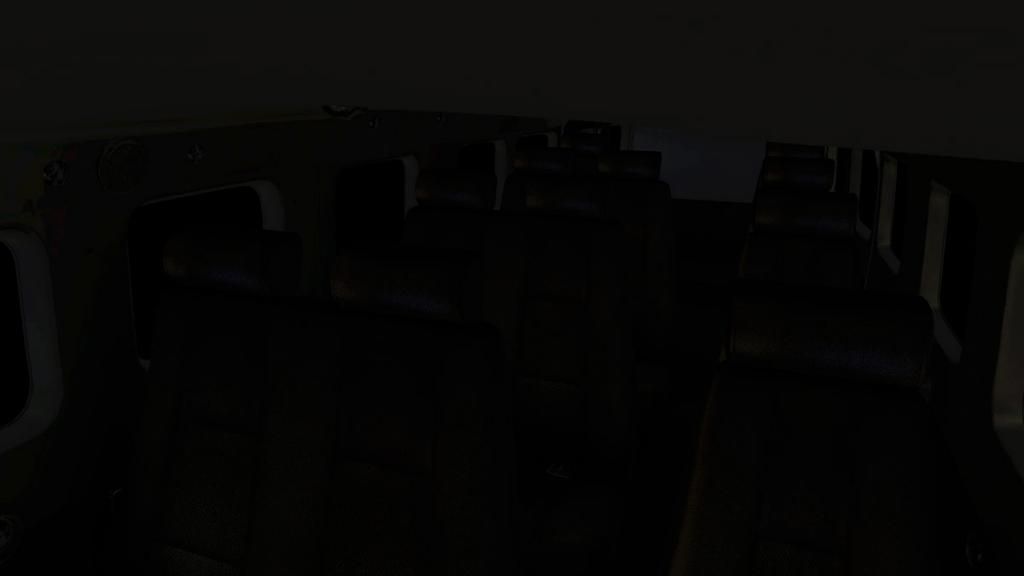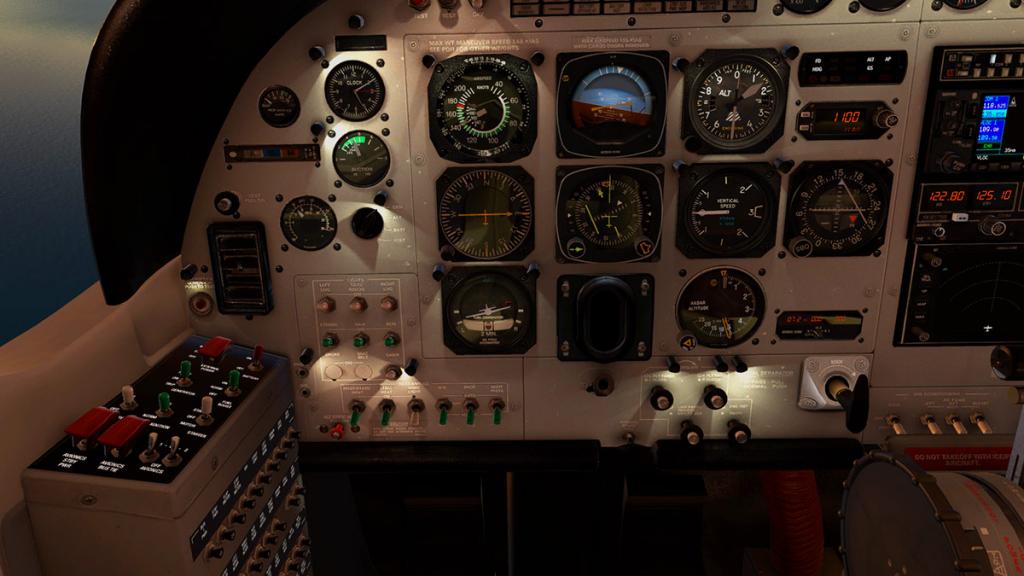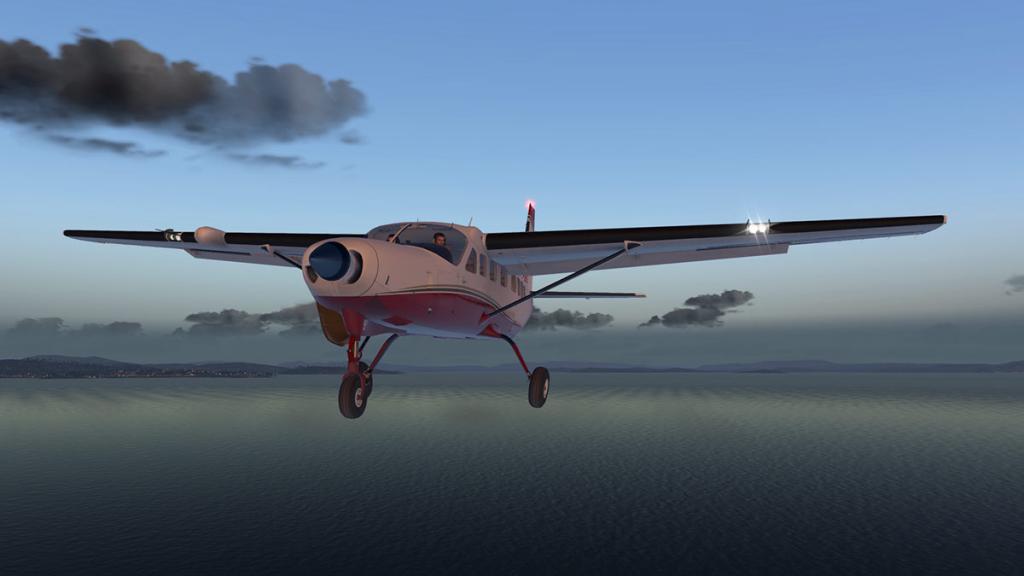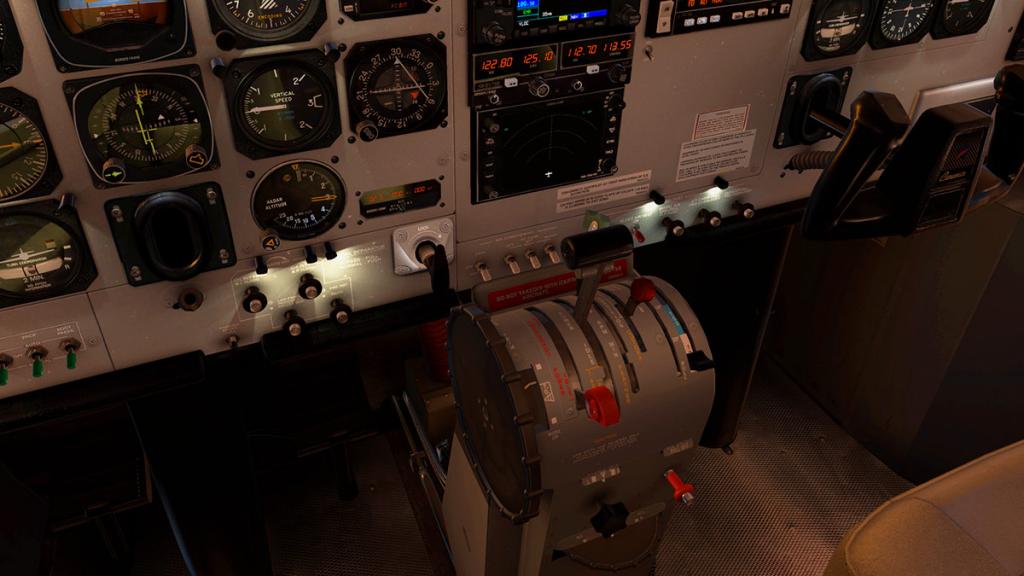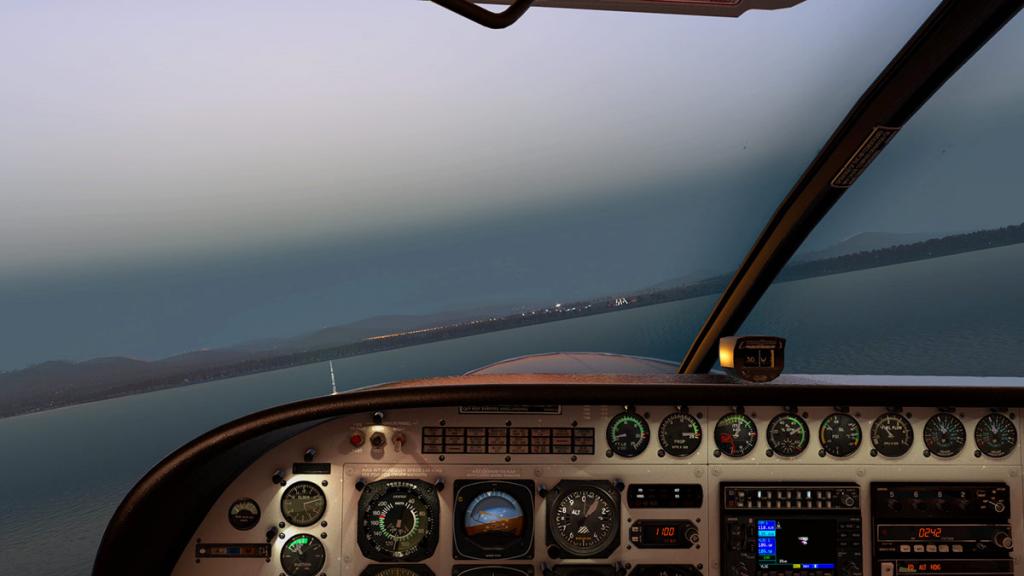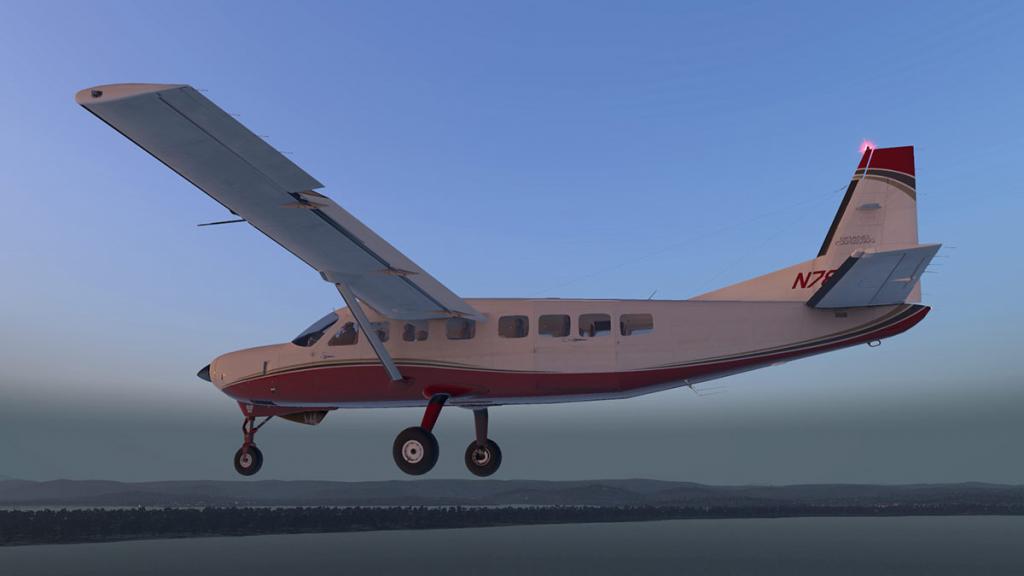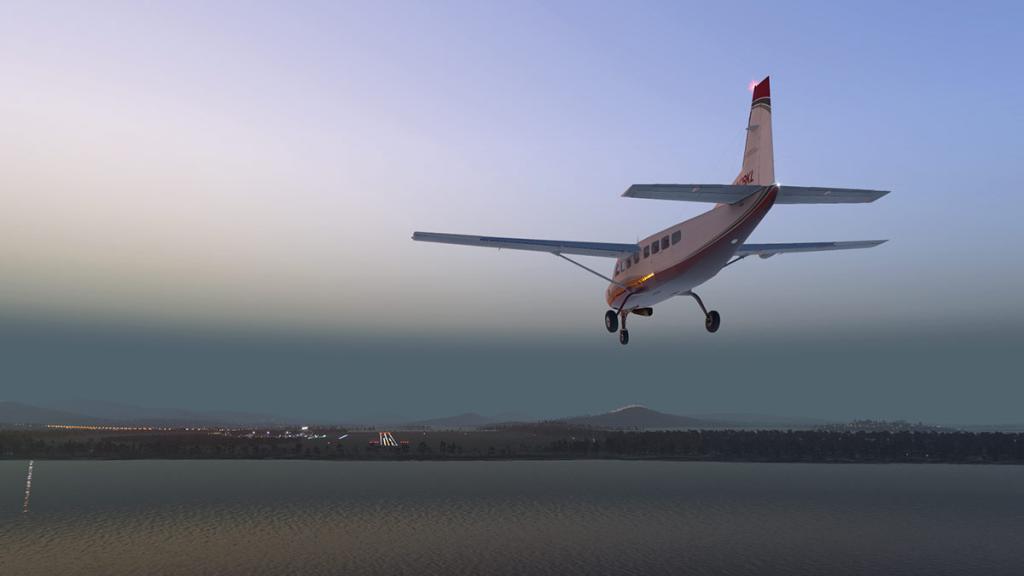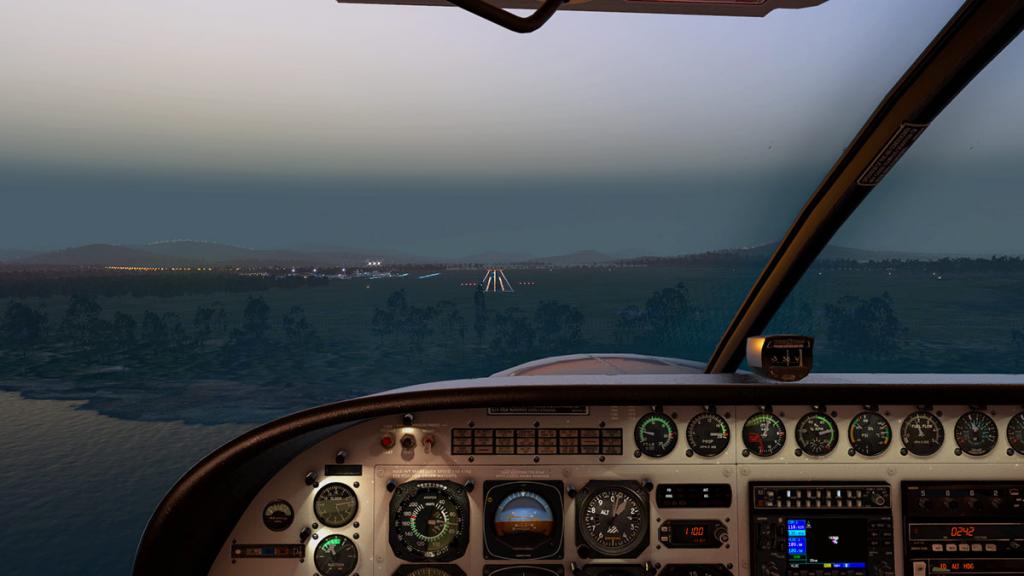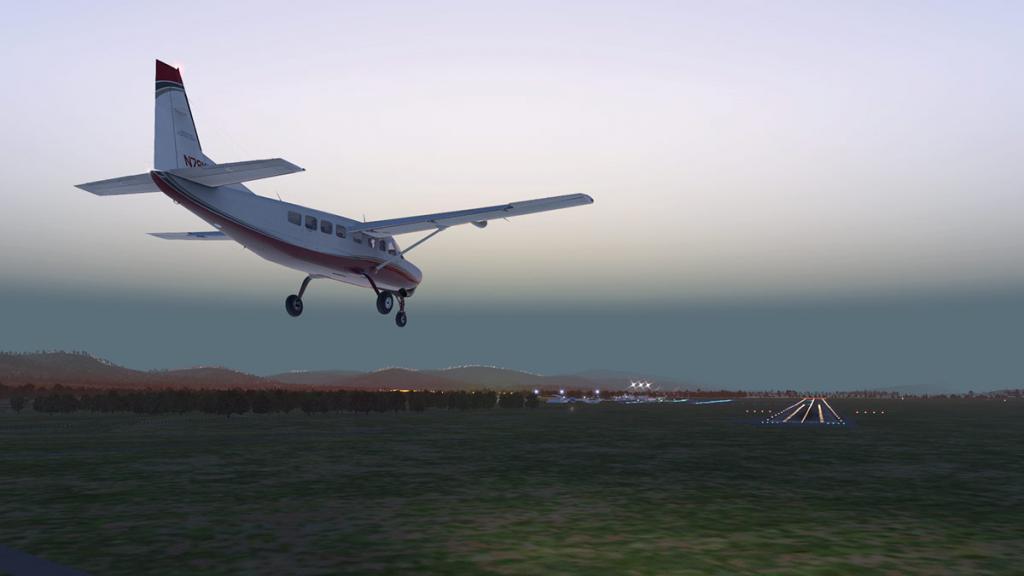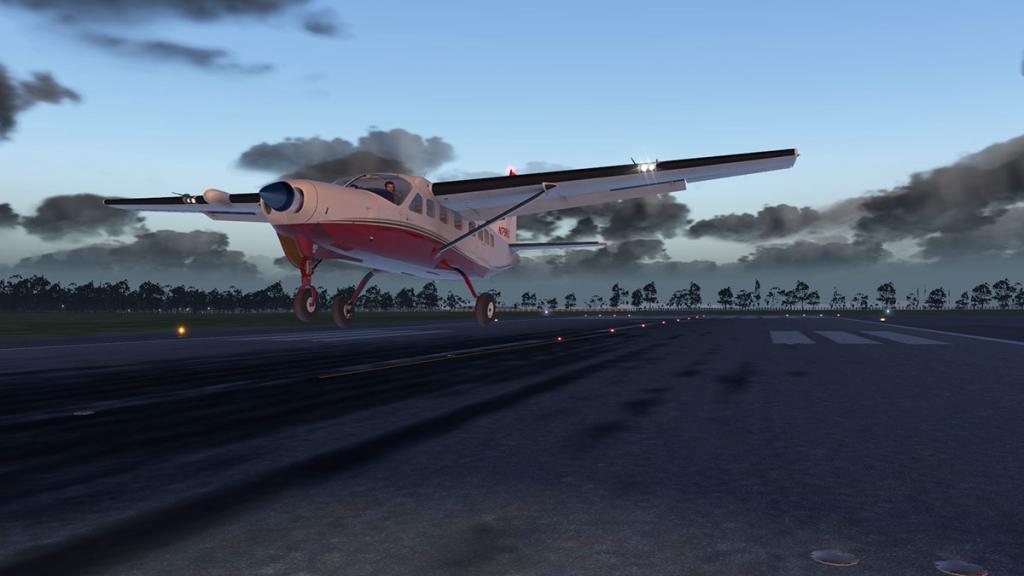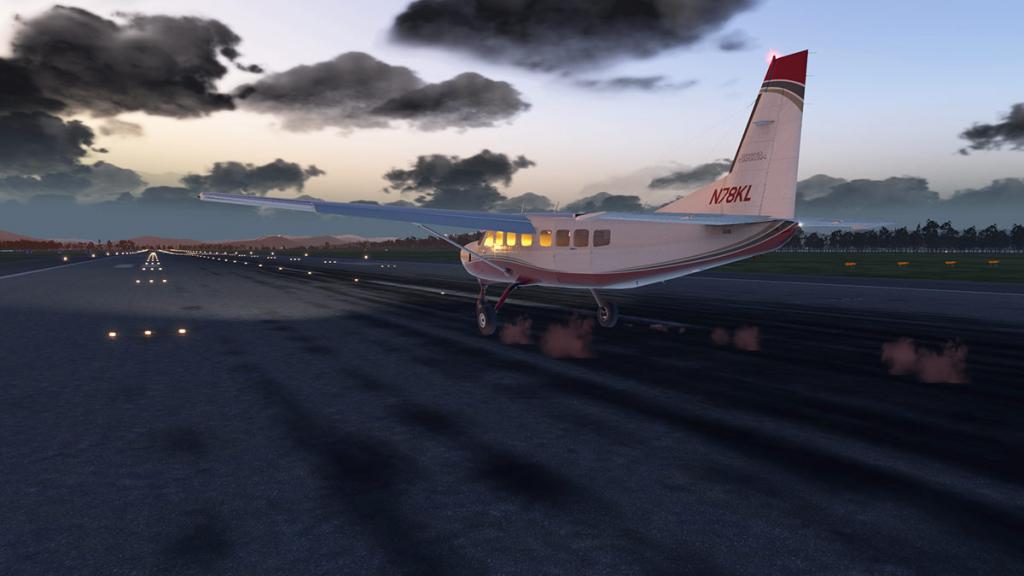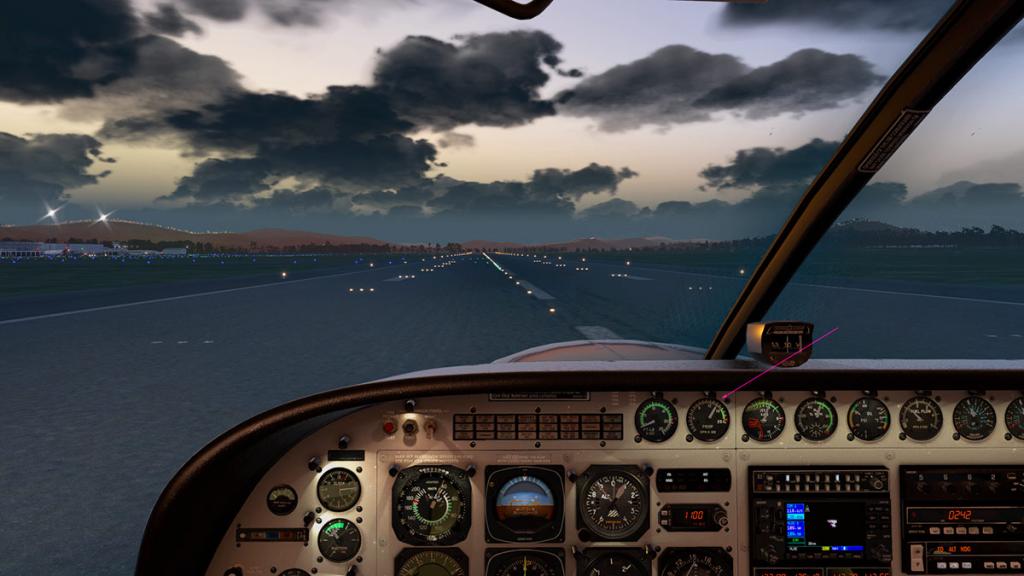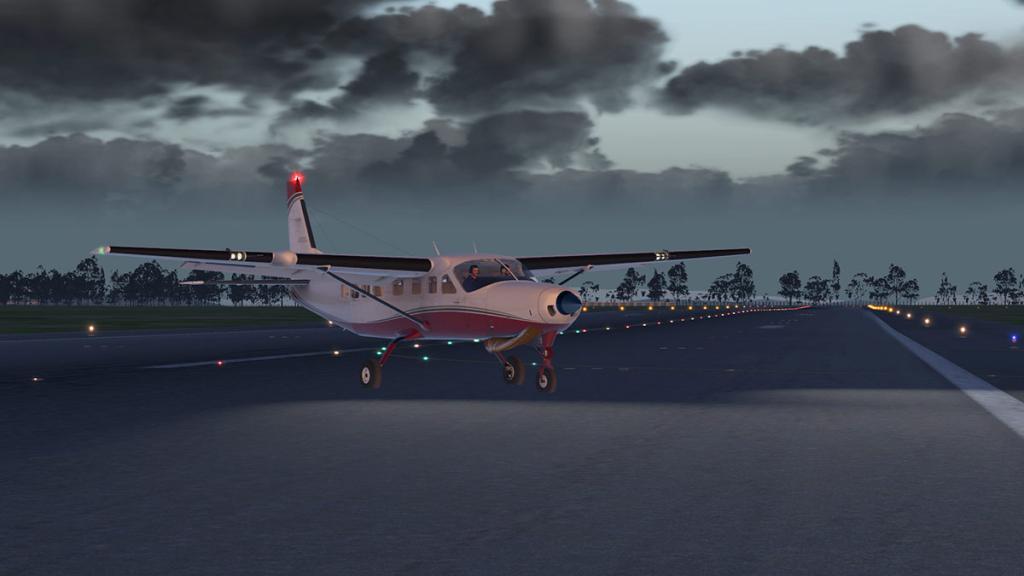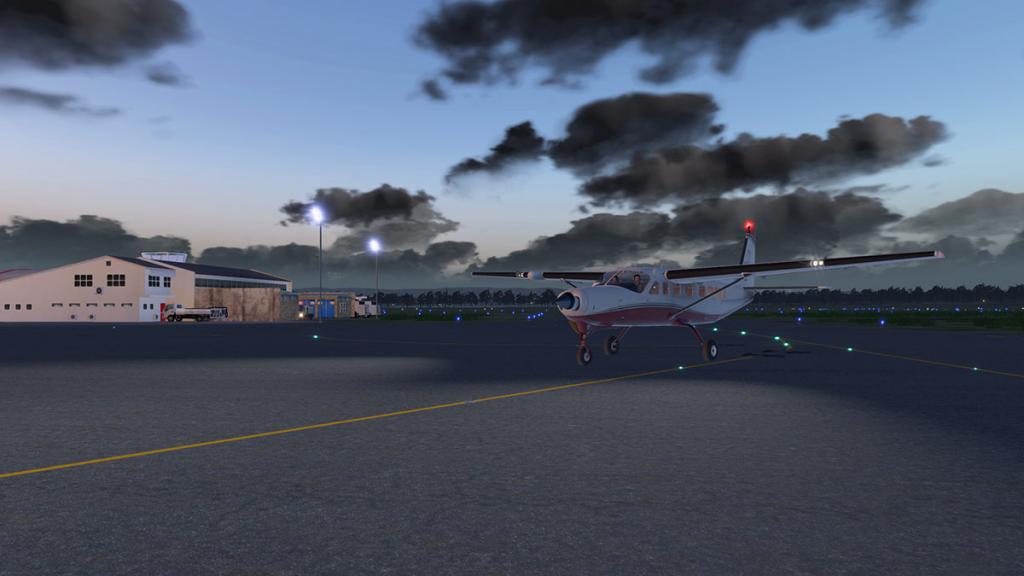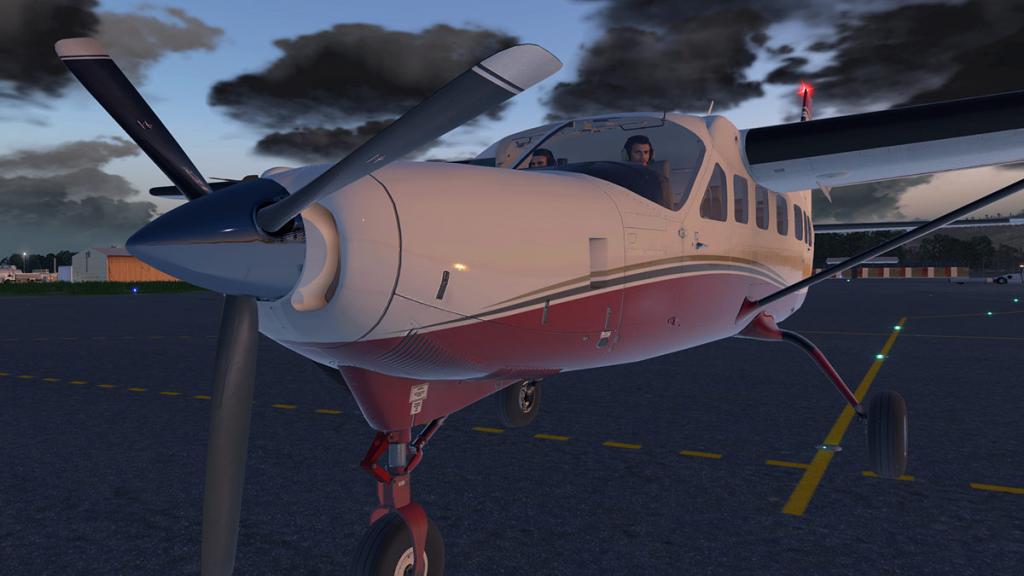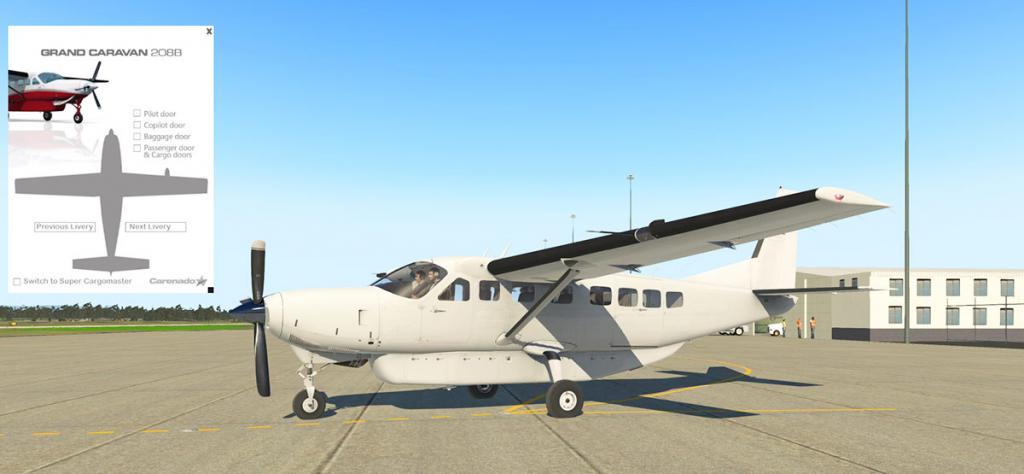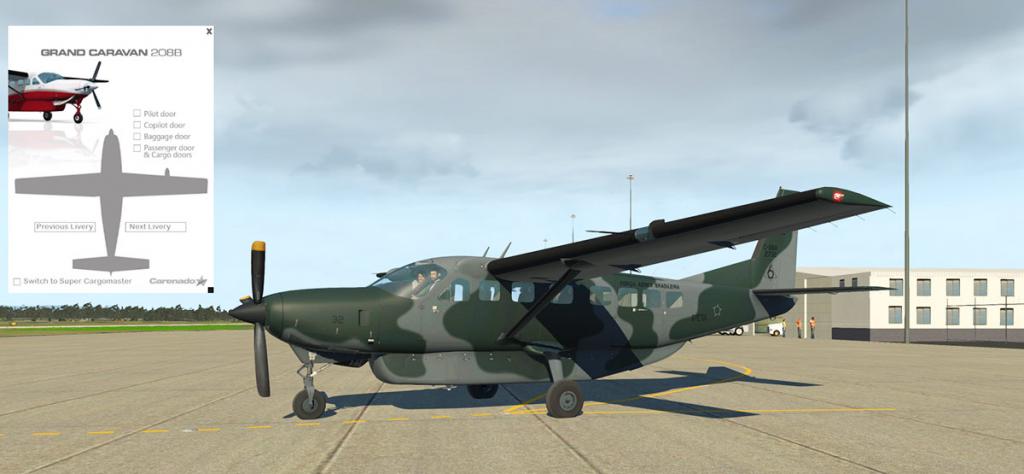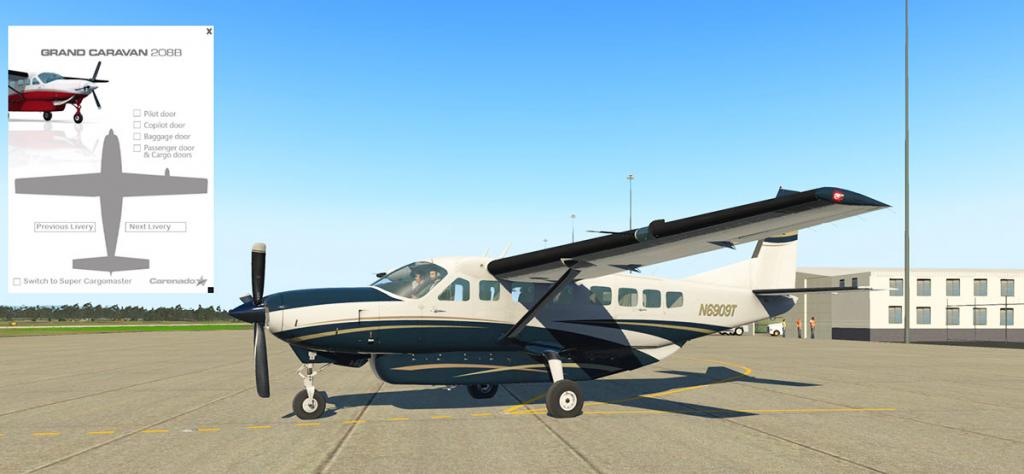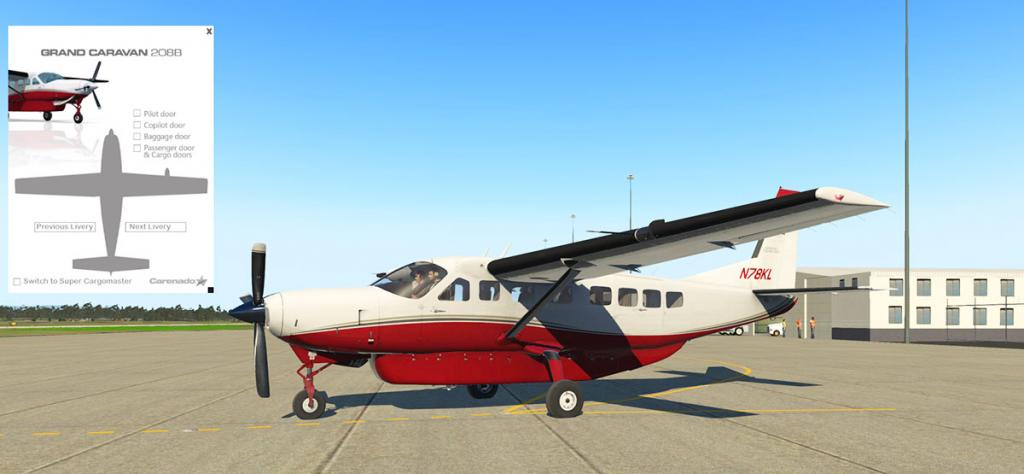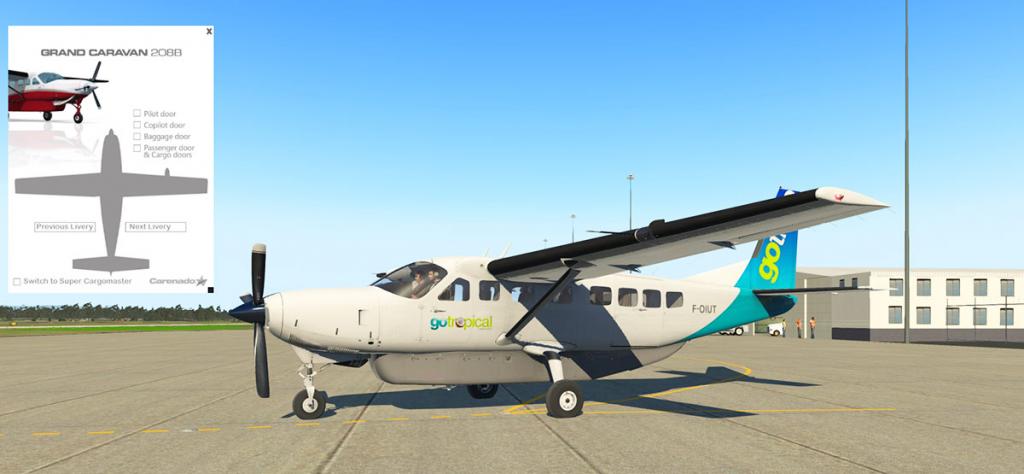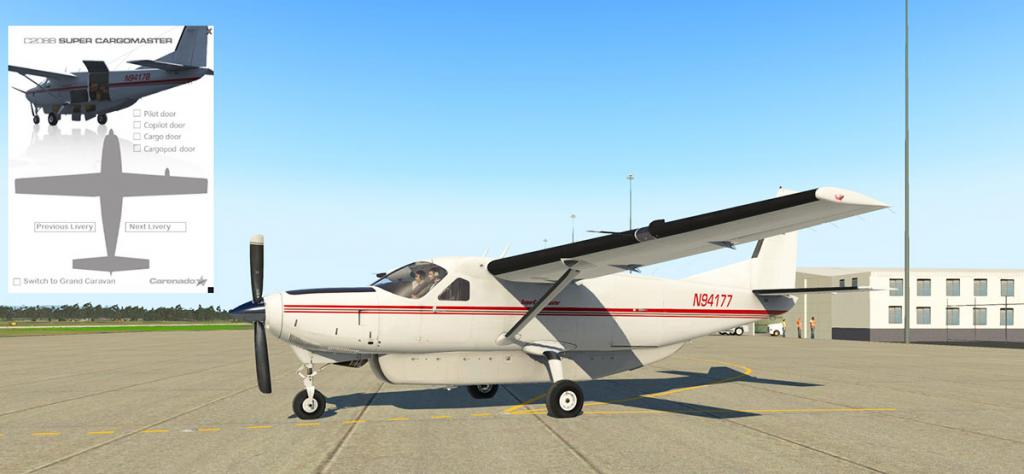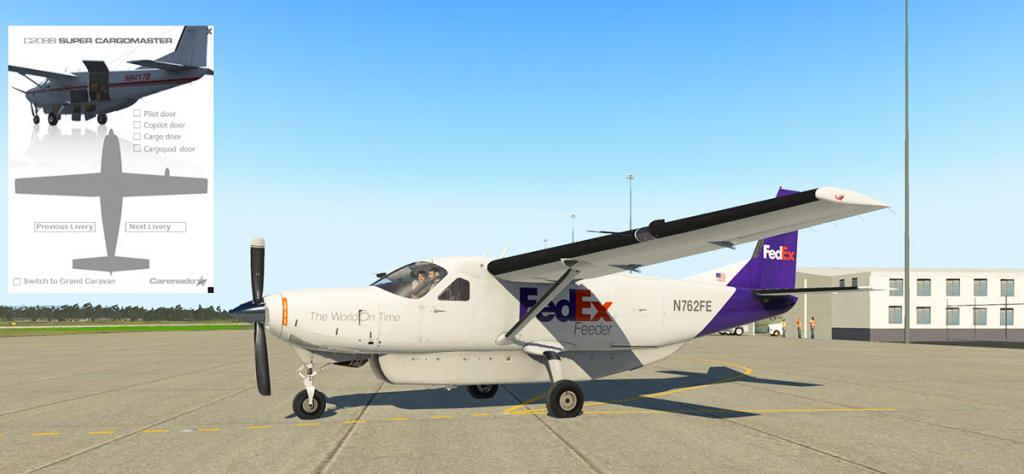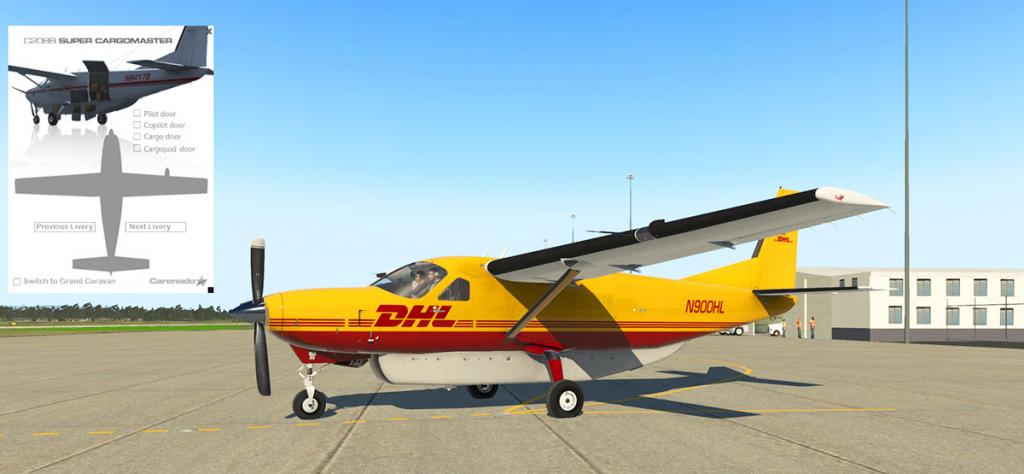Leaderboard
Popular Content
Showing content with the highest reputation since 10/07/13 in all areas
-
Behind the Screen : April 2023 On average over a 20 to 30 year commercial flying career, professional pilots will fly usually about 4 to 5 types of aircraft, first in the right seat, then a command in the left. I'm not counting their non-professional activities like private general aviation, gliding or even to the extreme of aerobatic flying. This is the core total of flying airliners, either domestic or international. Do pilot's have to be more flexible in today's aviation industry? that is a big question, because, say in the 60's you could fly aircraft types from the BAC-1-11, progress to a Trident, then a Vickers VC10, then a Boeing 707 or a Boeing 747 Jumbo, or even on to the supersonic transport in Concorde. That career road would be far harder today, as you would mostly jump between types of the same design, say start in a A319, move to a A320, then a A321 and now an A321LR, you are progressing, but mostly on the same type, not "Types' of aircraft. Same with the A350 or Boeing 787 Dreamliner. Progress to each aircraft type would mean going back to class, instruction, training and finally the hands on evaluation that you could handle the new machine, a jump from say the VC10 to a Boeing 747 would be a large challenge, but nothing like the jump from a VC10 to Concorde, of which most crews of the supersonic transport were nominated from. Today the line between a A320, to a A321, is not as large, and a conversion would be in weeks rather than the months like in the past. Compare that to X-Plane, or with being a reviewer. God knows how many "Types" of aircraft and let us even include even the "weird" strange machines at that. Obviously I have lost count, but a thousand over 12 years is a rounded off figure, maybe even more than that, so you have to be pretty adaptable. Like driving a car, aviation still has it's basics in controls and instruments, so you can be "so called", adaptable. But unlike driving a car on a road, aviation machines comes with a lot of different variations, weights and sizes, again you have to be adaptable. A lot of Simulator users will also mostly stick to one type, or a variation of that type, a lot won't even progress from say a Single-Engined aircraft to a Twin-Engined aircraft, never mind a Commercial Jet. Another crowd will only fly heavies, big airliners, but most will usually use the Two-Hour rule of flying a Boeing 737 (Zibo) or Airbus A319/A320/A321 (ToLiSS), fair enough. Me I do like variety, always have, call it a challenge if you will, I couldn't be a reviewer otherwise. But I do have my core "Top Ten" aircraft that I fly personally, a few General Aviation machines, but mostly Airliners, the bigger the better. Also there is the aspect of getting "back into the groove". You would think with all that reviewing experience and skills, that I would easily slide into the seat and fly the aircraft like a pro, yes... well no, it is not as easy as that. One big bonus of doing reviews in that when a new aircraft or type is released, you do what I call a "Deep Dive". Reviewing in detail allows you to spend a lot of time on that aircraft, sometimes weeks, study it, understanding all those minute details. Then to learn to fly it correctly... then pass on the information of what has been learnt to you the users of the X-PlaneReviews site. You would think that in say six months when the same aircraft from the same developer comes around with an update, with all that intimate knowledge learnt earlier, I should simply slide into the same seat and fly it again perfectly like the total professional I am, except that is very far from the truth. I even make copious notes, the Concorde review notes went for sixteen pages, yet I still need to revisit and revise them all every time to step back into that cockpit. And here is the thing... My first flight back in that seat is usually atrocious, totally laughable... a professional, mostly a joke in watching my efforts. At least I don't have a check captain sitting over my shoulder rating my poor flying abilities, and ready to give my career the total thumbs down. Let's be clear, that is with the complex complicated detailed aircraft we are talking about here, sure I can pilot a GA around a circuit or two with my eyes closed, but something happened in X-Plane around eight years ago when basic PlaneMaker aircraft went to Plugins. Now the systems are real world duplication, so is now the way you also fly the aircraft in real world conditions in the Simulator. Triggers... notes can give you triggers, and then you fly the aircraft and then release all that the stored information in your brain, it does come back to you quite easily, but some machines do have their peculiar idiosyncratic natures, not only in their systems, but their flying characteristics as well, say the Dash Q400... One flight will release the learnt peculiar tricks on using and handling the machine, the notes help, but going over the learnt procedures and you will soon fall back into that aircraft category groove. I'm an odd one as well. I just won't jump in and go flying (unless there is a reason), I go through the whole set of procedures from "Go to Woe", more so with an update (or upgrade) to cover the changes in the new updated/upgraded version, the differences between the Old and the New. That second flight (basically the review flight) is usually "Back on Song", not flawless, but back in tune with the aircraft, the third flight has to be flawless, if not there is something wrong or something has been changed? The only thing about this process, it is time consuming, two flights take time, three flights is in days to do a review, but you internally and personally have to know you have everything right, in the interaction between yourself and the aircraft before reviewing. That is why I don't like a lot of VideoJocks, watching them power through procedures and incorrect flying, and missing SOP's (Standard Operating Procedures) makes me cringe by in the amount of mistakes made, some are very good, and yes even I can learn from a real line pilot doing video Simulations, but most are "Cowboys", and have bad habits that are being passed on to the unsuspecting junior (learning) Simulator users in picking up and using the same poor methodology. Okay, I come from the strict school of being serious, and a lot of users reading this will say, Hey, lighten up, it's supposed to be "Fun" it's only a "Game", but my approach is strictly professional, if you want to "Fool" around and wizz upside down in a A320 (yes looking at you Austin Meyer) then your looking at the wrong personality type, to me "Professional", means being very good at what you do and to not fool around with a 80 Ton aircraft. Simulation was created as learning tool for real world pilots, we are just lucky, and if you have enough computer power, to be able to do the "EXACT" same things as the real world pilots do, that for me is where the excitement comes from, and my on line experiences. Out of the "Thousands" of aircraft I have reviewed, a few go into my own personal hanger, the ones that are very special, but also fit my own personal flying needs, I keep the list to like I mentioned to around ten aircraft, but it is about four to five of those aircraft are what I use consistently, again these aircraft are also required to have a shakedown regularly, and the same process of a "trigger" flight and then a regular flight are required to get me again "Back in the Groove". I know these aircraft intimately, and yet I still need to reset my brain to fly them correctly, lose one or two that has happened with the X-Plane 11 to X-Plane 12 transition and you feel a bit lost without them (both will be released for X-Plane 12 within the next month). Again I will stress that regular repeatable flying is still required to keep your skills in prime shape, yes it is more (even relaxing) fun than the serious approach of reviewing aircraft, but still serious in the way you approach in flying the aircraft professionally. To make it "Fun", is to set up a few scenarios, I have two. The first is a real world day's flying, usually three sectors between regularly used airports (quality sceneries), In Australia say the "Triangle". Brisbane to Melbourne, Melbourne to Sydney and finally Sydney back to Brisbane, all in a days work and following real world services. It's more tricky than you think to fly on real world times and turnarounds with the same aircraft type. Exhausting as well, but that is what real world pilots do everyday, but it is fun to coordinate the lot together... The second is real world airport hopping. Start a service from say Barcelona and fly to Copenhagen, then from Copenhagen to Dubai (combining European to International with different aircraft types), then Dubai to Hong Kong, then Hong Kong to Los Angles and so on... if you wrap up a sector in say New York, then the next time you fly you restart in the same place, say, New York to Copenhagen, and hey, you have flown around the world with real life timetables and the same aircraft types used on the real world routes... both above scenarios are based on real world flying, but for me a fun factor as well. But all learnt during these travels, goes back into the reviewing, and the consistent practise on aircraft types means your skills are kept at a high level. This April "Behind the Screen" edition, looks a bit into how I fly and do reviews, but also shows you the amount of practise it requires to keep your flying skills at a high level, same as the real world pilots... I like to think so, dedication is everything in life. See you all next month. Stephen Dutton 2nd May 2023 Copyright©2023 X-Plane Reviews5 points
-
News! - Announcement : Boeing 787-9 coming from FlightFactor FlightFactor announced last month that a completely new aircraft to add into the line up of a B777, B767/B757 twins, A350 and the Airbus A320 Ultimate is coming from the development house. This aircraft is the Boeing 787-9 Dreamliner and details are noted that the B787 will reach new heights in complexity, usability and have a variety of features. We are also taking our 3D and texturing to the next level with ever more detail in and out of the cockpit. The first cockpit renders have been produced... It is the first all new aircraft from FlightFactor since the A320 Ultimate, but FlightFactor note the B787 will be closer to the B757/B767 in design than use the Chromium Embedded Framework (CEF) than on the same A320U aircraft... either way there will be a lot of expectations and a quality delivery expected on this aircraft as the CEF development was a long and testing one, but also the coming B787 at a study grade level will be a big shot in the arm for X-Plane with the MSFS onslaught. FlightFactor also noted "v2 plans for other models are simultaneously on the way, we just don't want to reveal it all at once! " that will be the v2 Boeing 777 and the v2 A350. I would expect the v2 B777 even before the end of 2020, but not the v2 A350 as the v1 just went with a serious upgrade with version Advanced v1.6 just being released, so that aircraft will certainly be a mid or late next year release, but an upgraded Boeing 777 (the current version is now seriously old) will keep the punters more than happy until the Dreamliner arrives. Overall FlightFactor has noted that with this aircraft it wants to take simulation to the next level.... exciting times. Images courtesy of FlightFactor ______________________________________________________________________ News by Stephen Dutton 15th September 2020 Copyright©2020: X-Plane Reviews (Disclaimer. All images and text in this review are the work and property of X-PlaneReviews, no sharing or copy of the content is allowed without consent from the author as per copyright conditions)5 points
-
Aircraft Modification : Rotate McDonnell Douglas MD80 Series IAE V2500 Engine The McDonnell Douglas MD80 Series MD-80 was the second generation of the DC-9 family, originally designated as the DC-9-80 (DC-9 Series 80) and later stylized as the DC-9 Super 80 (short Super 80). It was a stretched fuselage, enlarged wing, and was powered by higher bypass Pratt & Whitney JT8D-200 engines. The MD80 Series made its first flight on October 18, 1979, and was certified on August 25, 1980. In response to the environmental concerns that began in the 1970s, Pratt & Whitney began developing a new version of the JT8D engine, designated the JT8D-200 series. Designed to be quieter, cleaner, more efficient, yet more powerful than the earlier -15, -17, -11 and-9 series on the DC-9. The -200 Series power-plant was re-engineered with a significantly higher bypass ratio (1.74 to 1) covering the 18,500 to 21,700 pound-force (82 to 97 kN) thrust range and became the standard engine in powering the McDonnell Douglas MD-80 series. This is the engine on the Rotate McDonnell Douglas MD88. It's a long thin (still low) higher-bypass engine with clam-shell reversers. Mango Studios have done a modification (MOD) to change this JT8D-200 engine to the later bulkier IAE V2500 Series engine. The look and feel of the V2500 modification is really well done, with high quality 4K Textures and new PBR (Physical Based Render) effects, the quality and installation is simply excellent. Internal exhaust detail is totally authentic, with the correctly fitted outer fins for the correct airflow around the engine pod. The V2500 does not have the clam-shell thrust reversers, but the same arrangement like on the A320, were as the full cowling door opens for the thrust reversal. This aspect is very nicely done here as well, nice operation, with great internal detail of the air vent grid and internal mechanism. This IAE engine was installed on the next stretch of the MD80 Series, third generation of the DC-9 family in the MD90. The engines were notably mostly installed on the MD-90-30 Series with the IAE V2525-D5 engine, with the option of upgrading to the IAE V2528 engine. The V2500 Series is a two-shaft high-bypass turbofan engine built by International Aero Engines (IAE) which also powers the Airbus A320 family. This engine also has an option to add 3,000 lbf for use in Hot & High conditions if needed by activating a switch in the flight deck. The V2525-D5 is fitted with different mounting hardware and accessory gearboxes to facilitate the rear MD-90 T-Tail installation, than say the under wing pylon of the A320. First look at the larger style of the IAE engine and as the MD90 Series had later the enhanced MD-90s glass cockpit, you could say it is the Boeing 717 aircraft, but it's not, as the 717 (MD95) had Rolls-Royce BR700 family engines installed, not IAE Engines. Important to note that with this modification, there are no IAE Engine sounds, strangely odd as Mango Studios are well known for their Sound Packages, and the quite different IAE engine note would have been a nice feature, but it has been noted by the developer IAE sounds are coming real soon. The performance of the Rotate MD88 is not changed either, so any power (V2525-D5 111.20 kN (25,000 lbf)) and fuel-efficiency benefits of the IAE are not available with this installation. Installation Tutorial It is a slightly tricky installation, to switch the original JT9D-200 to the IAE V2525-D5. In the downloaded "IAE V2500 Engine Model" pack there are four three folder items; liveries, objects and a paintkit (psd)... there is also a manual supplied. First you have to "duplicate" the original Rotate-MD-80 aircraft, and add into the title "IAE" From the package objects folder you transfer the 12 files to the MD-88 IAE "objects" folder, and replace (overwrite) the noted 4 files with the new files. Now for the tricky bit... You have to go and open up the X-Plane-planemaker application (in your X-Plane root folder), and open up the MD-80-IAE aircraft (acf) file. Under the banner menu "Standard" is the "Objects" selection. You have to scroll to the bottom of the objects tool, and then using the "ADD" button, insert THREE new layers... Far right on each layer is a slot to insert the file, with the selection button to the left of the slot... then insert the three new objects (V2500_I.obj, V2500_r.obj, N1_fast.object) in the MD-80 IAE "Objects" folder... into the correct slot, then "Save" (File) the changes. If correctly done, then the new IAE powerplant should be seen on the main planemaker page... and the MD-80 IAE aircraft is now ready in the X-Plane Configuration menu. Although there is a folder called "liveries", they are actually only the MOD files FOR the liveries, not the completed new livery. So you will still need the original "livery" to add in the MOD livery files... Each livery folder includes four files; md80_cola_der.png, md80_cola_izq.png, V2500_l.png, V2500_r.png and all four are transferred to the said livery "Objects" folder... Again you will be asked to overwrite two of the object files. You have to do this same process for ALL the liveries provided. Note the livery "Delta retro" is in fact Delta Old, or the default livery? Five livery conversions are provided; Allegiant, Delta (Old), JAL, Lion and Scandinavian. All look excellent, and note how the larger engine can highlight the decals. If you want to update another favorite livery, there is a paintkit (photoshop) provided, the paint kit covers the L & R engines, so you also have to still add in two files "md80_cola_der.png" and "md80_cola_izq.png" to each new set of the new livery conversion into the same objects folder. In the air the IAE V2500 conversion looks amazing! X-PlaneReviews - Rotate MD80 X-Plane 12 update review is here... Aircraft Upgrade Review : McDonnell Douglas MD-88 Pro X-Plane 12 by Rotate Summary This is a modification to change the Rotate MD80 (MD88) from the original install JT8D-200 engine to the later bulkier IAE V2500 Series engine as found on the Airbus A320 Series. The IAE engines were notably mostly installed on the MD-90-30 Series with the IAE V2525-D5 engine, with the option of upgrading to the IAE V2528 engine. Mango Studios have provided a modification kit to change the over the engines by duplicating a Rotate MD80 aircraft and installing the V2500 engine via X-Plane planemaker application, it's not too hard to do, and the tutorial is above. Also provided are MOD files to change five liveries to match the new engine installation and paintkit to do your own changes on other liveries. This modification really gives you a more modern looking MD Series aircraft, sounds for the IAE are coming soon as well to highlight the package from Mango Studios, that will also be noted here when available. Simply... a big yes, I love the Rotate MD80 in X-Plane 12, this conversion gives you another engine version to widen the aircraft's appeal and only for less than US$6, so a big yes, yes and it comes more flying options with the Rotate MD80 Series... winner, winner. _____________________ Yes! the Mango Studios MD-80 IAE V2500 Engine Add-on is currently available from the X-Plane.Org Store here : Mango Studios MD-80 IAE V2500 Engine Add-on Price is US$5.99 The Rotate MD-88 Pro X-Plane 12 is required for this add-on. Requirements The Rotate MD-80 is required for this add-on. Download Size: 415 MB Current version: Initial Release (May 9th 2024) Documentation Manual provided by Mango Studios is a bit basic, hence the Tutorial here in this review Manual.pdf _____________________ Aircraft Modification Review by Stephen Dutton 9th May 2024 Copyright©2024: X-Plane Reviews Review System Specifications: Windows - 12th Gen IS1700 Core i7 12700K 12 Core 3.60 GHz CPU - 64bit -32 Gb single 1067 Mhz DDR4 2133 - PNY GeForce RTX 3080 10GB XLR8 - Samsung 970 EVO+ 2TB SSD Software: - Windows 11 Pro - X-Plane Version 12.09rc5 Plugins: JustFlight-Traffic (X-Plane.OrgStore) US$52.99 : Global SFD plugin US$30.00 : RK Apps XPRealistic v2 - US$34.99 Scenery or Aircraft - LIRF - Airport Rome XP by Aerosoft (X-Plane.OrgStore) - US$25.99 (Disclaimer. All images and text in this review are the work and property of X-PlaneReviews, no sharing or copy of the content is allowed without consent from the author as per copyright conditions) All Rights Reserved4 points
-
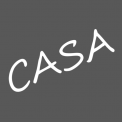
Aircraft Comparison : Boeing 777 vs Airbus A350
AirbusMan and 3 others reacted to BernardoCasa for a topic
Aircraft Comparison : Boeing 777 vs Airbus A350 As you can see by the title, today we are going to compare the Boeing 777 and the Airbus A350 for X-plane 11, both Boeing and Airbus biggest twin-engine aircraft. The Boeing 777-200LR Worldliner is the long range variant from the 777 family, with a maximum range of 8,555 nm (15,843 km). This variant has increased MTOW, three optional auxiliary fuel tanks and wingtips. Equipped with GE90 engines it produces up to 230,000 pounds of thrust combined. Exactly 60 have already been delivered and its main operators are Delta Air Lines and Emirates, with each one operating 10 aircraft. The A350 XWB is Airbus newest aircraft. The A350-900 has a maximum range of 8,100 (15,000 km) and a MTOW of 280 tons. The -900 was designed to compete with the B777-200ER/LR and 787-10, and eventually giving airlines the option to replace their older A340-300/500 with a newer and more fuel-efficient aircraft. It is equipped with two Rolls-Royce Trent XWB engines each producing up to 84,200 pounds of thrust. The A350 family is considered to a success, with 930 orders and more than 360 already delivered, being its main operators Singapore Airlines (48) and Etihad Airways (54). FlightFactor Aero is well known for their study level aircraft, with system depth being their main focus, and the A320 Ultimate and 767 Professional being a good proof of that. With that in mind you would expect a high-quality add-on from FlightFactor with great systems, so in today's comparison we are going to discover if that is true when we talk about the B777 and A350. Now we are going to decide which long-haul aircraft is the best for you Exterior modeling Both aircraft will be using custom Delta liveries that can be found in Xplane.Org Boeing 777 Worldliner Professional At a first look the exterior model is quite nice even though it needs some improvements. The fuselage may look strange with that lines, however you won't notice them most of the time. The windows are transparent, showing the 3d cabin inside. Probably the best part of the exterior modeling are the GE90 engines, they look awesome. The fan blades have a very nice glossy touch. The engine running animation is very good too. The landing gear and wings are nicely modeled. In general, the exterior is good, even though some improvements are welcome, especially in the fuselage and empennage. However, you won't find many problems if you don't search for them. Airbus A350 XWB Advanced You will notice that in many cases the A350 is the opposite from the B777, and exterior modeling is one of them. Usually the first thing you notice when looking at the outside of a plane is the fuselage, and the A350 fuselage is well done, it has a glossy and reflective surface (due to the livery I am using, the fuselage doesn't appear to be glossy), transparent windows and very nice wingtips. Instead of having very good modeled engines like the 777, the A350 engine modeling isn't that great, in fact it is not good or bad, it is the minimum you would expect from a 50 dollars plane. The animations are very nice and realistic, but the engine modeling, especially when it isn't running, is far away from perfection. The wings are nicely modeled and they look very good from the outside, however, they look a bit strange from the inside. The landing gear is great and doesn't appear to have any modeling problem. As you can see, the exterior modeling is good, even though it has its pros and cons, and you won't be disappointed. Like the 777, the A350 also needs some improvements. Extra features In this section we are going to talk about other extra features like doors, ground services and many other things. Starting with ground service. Both aircraft have this functionality, with one being better than the other. You can use the 777 ground service by clicking the menu icon in the top right corner. There you will find the ground services vehicles and objects as the doors open/close buttons and many more. Note that the ground service is very simple and only the doors indicated by an arrow can be opened. The ground service feature is more extensive in the A350, even though it is a bit simple, and can be accessed through the Cpt Outer OIS. It is important to note that all doors can be opened, a great advantage over the 777 which increases the realism. The plane at gate option sets a stair at the 4L door. There is one thing that looks strange in both planes, the wing flex. In the 777 is a little bit weird in some situations, like deploying the speed brakes after landing, resulting in some strange wing moves. The A350 wing flex problem is different and you will notice it while taxing and applying brakes. Another problem from the a350 is the wheels animations, which appear to be too slow. The 777 has a kind of engine shake, which is very nice to see from the cabin. Cabin Both aircraft have a 3d modeled cabin, divided in economy, business and first-class. Usually a 777 economy class is configured in a 3-4-3 configuration, which isn't the case FlightFactor 777, equipped with a 3-3-3 configuration. The business class seems very old, and the first-class has a nice bar. The A350 cabin is more modern than the 777 one. The economy is also equipped with a 3-3-3 configuration, with every seat been equipped with IFE screens. Configured in a 2-2-2 configuration the business class has wider and more comfortable seats. The first-class in the A350 is also equipped with a bar, providing great luxury to the passengers. There is a very nice detail in both aircraft, which is the crew resting compartment. This is a place that pilots and flight attendants rest when it's the other crew members shift. The first photo is from the 777 and the second from the A350, respectively located in the front and back of the aircraft. As you can see, the cabins are pretty well modeled and look nice, but in the end, the A350 cabin looks a bit better. Cockpit Probably the most important section in this comparison, it's in the cockpit that everything happens. While reading this part of the comparison, you will notice that most of the similarities and opposites are here, starting with the cockpit door, only the 777 has a close/open animation. Boeing 777 Worldliner Professional Possibly your first thought about the 777 cockpit will be: It seems very outdated. Yes the textures and some of the 3d modeling aren't great, you can't deny that, but when you start flying the plane they don't seem that bad. The overhead panel is very nice, as well as the aisle stand panel, where the 3d modeling is good and textures aren't bad. The night lighting is very beautiful and distinctive in 777, making it a very nice aircraft to fly at night. Its green color isn't common between other planes. It has many light knobs, this way you can try many lighting configurations before finding the best one for you. Airbus A350 XWB Advanced At first glance, the A350 cockpit may look better than the B777, especially using textures replacement mods, which will be linked at the end of the comparison, however, there are many better-modeled cockpits out there. Everybody knows that the A350 is a very modern plane and all its 6 big screens will attract your attention while flying it. It has the Airbus style overhead panel, but its pedestal is different from any type of aircraft, having some similarities with the A380. The autopilot panel is almost identical to the A380. The night is very well done, and gives the plane a modern touch, more than it already is. Systems FlightFactor says that what sets their models apart is the system depth, so we can expect good systems, we can't compare the A350 ou 777 with the A320 due to the price difference, so good systems is the least we should expect. Boeing 777 Worldliner Professional Starting with the FMC. It is fully functional, you can plan your route, insert SIDS and STARS and make performance calculations. The FMC is well done and you shouldn't have problems with it. The only thing that could be improved is individual screens, so you could leave one FMC in the LEGS page and the other at the VNAV page. As you can imagine, all knobs and switches at the overhead panel work. All the essential switches are working in the aisle stand panel. Last but not least, autopilot, it has some small issues like not turning off the disconnect alarm, but it still manages to take your plane from A to B. Another improvement that needs to be done is adding individual NAV screens, with this feature you would be able to set one screen with map and the other with app, using different ranges. With that in mind we can conclude that the 777 systems aren't perfect, but still in a high standard just like expected. Yes, they need some improvements, but still manage to have the hard work done. Airbus A350 XWB Advanced Probably the most known issue in the A350 systems is the FMC, where you can't insert SIDS and STARs. This is the main problem involving the A350 but there is a tool that solves this problem. It is named SimpleFMC and when used in conjunction with Simbrief flight planning tool, will give you the ability to completely program your route. As you can see, the A350 has some issues involving route programming, even though it can be simply solved and FlightFactor announced an update to fix that (will talk more about this update later). However, performance calculations and weight configuration is very complete in the A350. The best way to do that is by using the Cpt Outer OIS screen. Almost all switches and knobs work, both in overhead panel and pedestal. The autopilot works perfectly and you shouldn't expect any problem related to it. It is important to note that the taxi camera isn't working. We can conclude that none of the aircraft systems is perfect. At the moment, the 777 systems are slightly ahead, which gives you the feeling of a more complete aircraft. However, the A350 is a newer plane, leaving many opportunities to improve and add many new features, and if this happens, the A350 systems may get better and more advanced than the 777 systems. Sounds Each aircraft has its particularities. Generally we can assume that the 777 are better than the A350 sounds, especially when you talk about the engines. Starting with cockpits sounds. Both aircraft have nice sounds here, probably the A350 ones are a bit better, even though none of them is bad. However, when we start talking about the cabin sounds, you may get disappointed. They are the same all the time, it doesn't matter if you are in the front or back of the plane, they won't change. The flaps and landing gear operation sounds are nice, just what you would expect. The engine sounds are the ones you will most notice while flying a plane, and they are the reason for the 777 have better sounds than the A350. While you are in the cockpit or cabin, both planes have good sounds, even though they could be way better. But when you change for the outside view you will instantly notice the difference. While both engines are idle you already can tell a difference, you may think that this is obvious because they are different engines, but the difference is already there. However, things start to get better when you accelerate them, both sound nice, maybe a little better in the 777, but when the engines are at full power you will notice that the A350 isn't very nice, emitting a low and kinda soft noise. The 777 is the complete opposite, at full power the engines are screaming and give you the feeling that you flying the real aircraft. Blue Sky Star, most known as BSS, provides a sound pack for the 777 at the price of 20 dollars, increasing your immersion with the aircraft. Will be linked at the end. Other features Here I will list things I didn't mention yet. Checklist: Both aircraft have a checklist that tells you exactly what you should do. Cabin Announcements: You will find this feature in both aircraft. There are more than 20 default announcements. Pushback: This feature is implemented in both planes, however, I recommend using the Better Pushback plugin. Conclusion As I said earlier, we would find the best long-haul aircraft for you. After reading my comparison you may have already decided the best one for you, but if you still can't choose one I will help by listing the main features. Boeing 777 Worldliner Professional -Very well modeled engines -Fuselage is good, but needs improvements -Has 3d cabin -Cockpit a little bit dated -Good systems -Better sounds (BSS package available) -Price: $59,95 Airbus A350 XWB Advanced -Better modeled fuselage -Beautiful 3d cabin -Better cockpit textures (using texture replaceament mod) -Ok systems -Good cockpit sounds, engines could be better -Price: $49,95 Note that FlightFactor said that would release an update for A350 this month and it would include the implementation of SIDS and STARS as well as a huge graphical improvement. This update would make the A350 way better. It would be nice to see BSS making a sound package for the A350, it would take the aircraft to a pretty high standard. If after all this you can't decide yet, you should take my advice. Both aircraft are equaly good, each one has pros and cons, and the best thing you could do is: buy the one you like more in real life, it is simple. Notice that you won't be disappointed with these two great aircraft by Flight Factor. I won't tell my personal choice because that may induct you. Greetings Thank you for reading this comparison! Feel free to leave your comment. This is my first review for this incredible site that has been making the best reviews for X-plane for a long time. I want to thank Stephen for giving me this incredible opportunity and providing everything I needed to make the comparison. ______________________________________________________________________ Both aircraft are available in X-Plane.Org Store here: Boeing 777 Worldliner Professional Price is US$59,95 Features: Officially licensed By the Boeing © Corporation Accurate dimensions based on 2D and 3D drawings supplied by Boeing © Professional systems - Fly the 777 like a pro Systems designed to work like the thing - Accurate flight model tuned by pilots - Comprehensive Manuals Fully Functional FMS - Plan your routes like a real pilot Custom designed Flight Management Computer, integrated with other plane systems Custom programmed LNAV logic for terminal procedures Custom designed Navigation Display Tterminal procedure database with RNAV approaches and transitions VNAV managed climbs and descends Takeoff and approach speed calculation Custom autopilot modes for autoland Optimum cruise performance and step climb calculation True-to-life radio navigation with procedural-, route-, and navigation support auto-tuning Custom programmed FMC navigation using GPS-, radio- or inertial navigation with individual position errors and management of actual and required navigation performance Magnetic, true and polar grid course reference Alternate airports, diversion and arrival management Ground proximity warning system using real sounds FMC can be used on external touchscreen or tablet, optimized for the new iPad Incredible 3D modeling - the best eye-candy Amazing virtual cockpit with crisp details - Dynamic reflections Custom 3D sounds and Announcements Add-ons: Push-back truck, Fuel Truck, Passenger bus and Emergency slides ... On-Screen Menus: Configuration and loading menu, Quick Zoom Superb night lighting in cockpit. Requirements X-Plane 11 or X-Plane 10.50+ - 64 bit required Windows, Vista, 7 / 8/ 10 (64 bits) or MAC OS 10.10 (or higher - OSX 10.9 will not work), Linux Ubuntu 14.04LTS or compatible (older versions are not supported) 2GB VRAM - (4GB VRAM Recommended)- 1Gb available hard disk space Current version : 1.9.12 (last updated Jan 30th 2018) ___________________________ Airbus A350 XWB Advanced Price is US$49,95 Features: Superb 3D Modeling Complete Virtual cockpit in high-resolution Fully animated in and out -High-Resolution Textures Ground equipment support including stairs, loaders, passenger buses, GPUs etc. 3D people inside and outside the plane - Nicely modeled cabin Scroll wheel support for switch manipulation Advanced Systems Fully customized aircraft systems: electric, hydraulic, air conditioning, ADIRU Fully customized ECAM monitoring system with all screens and functions included Fully functional airbus style alert system with multiple status and procedural lists Fully functional interactive airbus electronic checklist system Airbus A350/A380 unique interfaces with dozens of screens and hundreds of function Fully customized and unique MFD (multifunctional display) system with most of flight planning pages implemented in a new graphical interface, as well as FCU and radio backups just like on the real plane Full OIS screen system with options, ground equipment control, passenger and cargo loading, and even a full user's manual inside the plane. Old style MCDU and fully functional aux instruments as backup Custom failures Advanced Fly-by-Wire and Flight systems Full FBW with Highly realistic implementation of the Airbus normal laws by QPAC -the most realistic fly-by-wire implementation for desktop flight simulation. Basic SID/STAR implementation using X-plane fms-files that you can create yourself and share with the community. "What you see is what you fly" flight path indication on the ND (i.e. curved trajectories with the turn radius properly computed based on speed and angular turn distance.) Implementation of all Airbus AP modes, except some non-precision approach modes (Selected and managed modes, speed constraints respected, "at or below" constraints in phase climb, "at or above" constraints in phase descent.) Full PFD and ND displays with fully independent display and different data sources for the captain and copilot displays. Independent autopilots Custom 3D Sounds Custom 3D stereo engine sound system Hundreds of system and in-cockpit sounds Interactive flight attendant helper Seven Liveries included in the package Airbus Carbon, Air France, Airbus House colors, Qatar, Lufthansa, United Airlines Requirements X-Plane 11 (latest version) Windows - Mac - Linux - 64bit Operating System Required 1Gb+ VRAM Minimum, 2Gb+ VRAM Minimum. 8Gb RAM Version : 1.5.2 (last updated Apr 24th, 2019) ________________________________________ Aircraft Comparison by Bernardo Casa 21st April 2020 Copyright©2020: X-PlaneReviews Review System Specifications: Computer System: Intel Core I5-9600K 4,30GHz / 2x8 Corsair Vengeance RGB Pro 3200MHz - Gigabyte RTX 2070 - Z390 Aorus Master - Kingston A1000M.2 SSD 240GB Software: - Windows 10 - X-Plane 11.41 Addons: Logitech Pro Flight Yoke/Pedals/Throttle Quadrant - Logitech Extreme 3d Pro Joystick - Sound: Samsung Home Theater System J5500WK Plugins: Environment Engine v1.13 by xEnviro US$69,90 -Scenery Review : Seattle City XP by Drzewiecki Design - Scenery Review : Seattle Airports XP by Drzewiecki Design -KLAX - Los Angeles International 1.01 by MisterX6 (X-Plane.Org) Freeware -SBGL - by AxScenery (AxScenery) Freeware -A350 cockpit textures replacement (X-Plane.Org) Freeware -Better Pushback (GitHub) Freeware (Disclaimer. All images and text in this review are the work and property of X-PlaneReviews, no sharing or copy of the content is allowed without consent from the author as per copyright conditions)4 points -
Free Aircraft Release! : Concorde by Dr Gary Hunter Growing up in the sixties was a time of huge speed advances. The predictions were of New York in 3 hours and Singapore in 7 hours via Bahrain, and then we went far faster again... to the moon. Looking back now it all feels like we lost have something, yes we can afford to travel the world on a few thousand dollars... but the excitement and the sheer feeling of the momentum of advances in technology has now been reduced to smart phones. The real tragedy was that the machines that gave us our biggest breakthroughs were then never advanced forward, there was no Concorde Mk2 or Space Shuttle Mk2. And so there came no advancements on their ideas and weaknesses, like the noise and sound barrier on Concorde and the better insulation tiles for the Shuttle. Instead they were all consigned to museums and with that a negative backward feeling now exists. You know it can be better, as we lived through that now past era of huge ideas and advancement that actually came true and real. But you can still relive a little of what one machine of that era was, in the Concorde. Dr Gary Hunter created a Concorde for X-Plane9®, so yes this aircraft is old now even by X-Plane standards. It didn't fly very well either lately because of the advances of the simulator, so an update to v10.50 was carried out and the aircraft has been gratefully passed over to the X-Plane.Org to be released... yes that is right this Concorde is for free! And no matter which way you look at it this aircraft is still one of the very best looking machines ever built, The modeling is slightly old, but not enough not to make it feel totally outdated. The panel is from an era of X-Plane seasons past, and the instruments are quite blurry. But it is totally functional and does have a 3d Virtual Cockpit. There is also a great engineers station, and you need to watch those fuel gauges, they gulp down fuel like no tomorrow, but hey you are also covering the ground at a one mile every two and three quarter seconds! Full cabin as well with the all important speed Mach numbers and altitude. You are seriously moving at m2.2, you can feel the speed even over the smooth Atlantic Ocean, watching my moving map on my iPad, the aircraft is moving as you are watching it even at a high distance, the Nm counter is clicking over click, click, click fast as well... this is no sub-sonic slow ride to China or as in this ride... to New York. Distances of descent to any airport will need a bigger or longer distance with this machine as it is a long way down from 50,000ft or even 60,000ft if you are game. Liveries included: Blank or Eurowhite, BA Union, BA Landor, BA Flag, AF, AF Retro, Prototype and Singapore. New York and "Look Mum, no Flaps!" drop the nose and the speed to 195knts and you get that over familiar hawk look... The aircraft is surprisingly easy to fly on approach, but watch for a high nose in the air after landing. Concorde is back in New York! ______________________________________________________________________ There is a big thanks to the work of Dr Gary Hunter in creating this X-Plane Concorde, and now passing it over to Nicolas of the X-Plane.Org for you to download... for FREE!, yes just go to the link below (sign in first) and download this Concorde and go.... Supersonic! Yes! the My Planes (Dr Gary Hunter) Concorde is available for download here: CONCORDE Price is Free! Features: Accurate dimensions 2D and basic 3D Cockpit Object-based model, Very detailed model 8 liveries Cockpits have been totally redesigned. Go to the virtual cockpit and move to the center laterally (right arrow key) then translate backward through the aircraft (shift-pagedown key) to see the virtual cabin interior. All cabin windows are in 3D, and the cabin interior is modeled (seats etc). These differences are most obvious when using LIT textures as you can see inside the cabin more easily. Try circling the plane when flying in low level lighting conditions (sunset for example). Updated and tidied up the 3D virtual cockpit a little. The horizon is 3D now but its hard to notice so I may drop it in future versions. All fuselage doors are operable using keys 8 fuel tanks Full 3D Model Regular Concorde and Concorde 'B' included The model B was to have been the definitive airline version of Concorde, produced from airframe number 17 onwards. As production stopped at airframe number 16, the model B never actually took to the air, though much of the design work and improvements were retrofitted to existing Concordes. The most noticeable difference would have been the big wing of the model B, non-afterburning (more powerful) engines and a much greater range. This version also features an airbus style “glass” cockpit. ______________________________________________________________________ Overview by Stephen Dutton 6th October 2016 Copyright©2016: X-Plane Reviews4 points
-
Aircraft Review : Embraer E-190 by Flight Procedures Simulation In July 2023, Flight Procedures Simulation released the Embraer E-195 for the X-Plane 12 Simulator. This aircraft although all new for X-Plane 12, also has a historical connection to the SSG Supercritical Simulations Group E-Jets version, but now called under another name in "Flight Procedures Simulation" (FPS), it is in many ways related to the same aircraft that was earlier released by SSG in X-Plane 11. SSG had released both the E195 and the E190 variants of the Embraer E-Jet, so as the E195 is already available, then the smaller E190 was expected to follow... here it is, and in many ways it is the same aircraft as the E195, but with a few new extra features added into the aircraft. Notable is that the same new features released in the E190, will also be cross-updated to the E195 if you own that aircraft. Actually the E190 variant is the pick of the E-Jet Series, E 170 - E 175 - E 190 - E 195. As it has the best of both worlds, it has a high passenger load (114 seats) as in being slightly shorter (36.25 m (118 ft 11 in), but also comes with a longer range in 2,450 nmi (4,537 km; 2,820 mi) and being able to fly an extra 150 nm than the E195 (124 Seats). The E195 feels long, even tube like, but the E190 is the more better and proportioned aircraft. One of the highlights of the E-195 by FPS, was the very good value price to features and quality, in being set in the mid-$50 price range. In other words you get a lot of quality aircraft for your money. The SSG/FPS also had great value to the featured systems provided, even right back to the early days, then there was a authentic FMS (Flight Management System) as part of the price... most deliver the same now, but that is just to highlight the point of the early advanced features from SSG that other developers didn't provide. The FPS E-190 is obviously almost identical to the earlier E-195, just a little shorter airframe. Both aircraft have been totally revised for X-plane 12. It shows in the quality of the modeling and detailing, that X-Plane 12 "shine" or aura is very evident. Same nice tinted glass and reflections.... the detail is nice, landing light surrounds and lovely flared winglets are also well carved and designed. All wings have the more variable Wing Flex animation for more realism. One area I thought on the E-195 that was clunky, were the internal mechanisms for the leading edge, still the same here sadly, so I disappointed it wasn't attended to... it's just feels a generation behind the current formula of detail in these current intricate leading edge, flap and airbrake combos... as which it is from the earlier SSG E-Jet Series. Undercarriage is very well conceived with highly detailed strut body and pistons, all hydraulic lines are well detailed, as are the scissors.... The side strut, although well done, is still left hanging in the wheel bay with no upper connection, as again on the E-195... this connection should have certainly been fixed by now (on both aircraft)... worse it is so highly visible from many visual angles, certainly on the approach/landing. Engines are the GE CF34-10E with 20,000 lbf (89 kN) thrust, compared to the 8E on the lower E-170/175 Series with only 14,200 lbf (63 kN), both engines are equipped with full authority digital engine control (FADEC). Engine pod detail is again excellent, great intake and the exhaust detailing is very well done. External features include all opening doors, Passenger left forward and aft, right Forward Service door, two Baggage holds and rear Service door. There is a nice GPU (Ground Power Unit) and you have wheel chocks on all wheels. Internal Cabin The E-Jet cabin for X-Plane 12 (E-195) was totally redone, or modernised. It's the same cabin here in the E-190, but it is a nice cabin with some really nice detailing. Seats are modern, as is the upper luggage bins are all also the new style with working Seatbelt/No Smoking signs and lit EXIT signs. Only niggle again are the differently set window shades from open to closed, still something I don't like?... same also is you have these excellent seat-back screens with the Airline logo, a highlight is that the seat colours/logo can also change with different liveries. Front and rear galleys are well done, but not overly meticulously detailed, a bonus for framerate. Cockpit In the cockpit, you could be in the E-195... It's exactly the same, great for your type rating! Both pilot chairs were all new on the E-195, they came with better sheepskin covers and hard-back rears, sadly the armrests are still fixed. (another area I thought would be updated for the E-190). The rear bulkhead was also completely different, and so is the entrance/door, and a modeled (non-working) jump seat on the bulkhead. Overall all the cockpit fixtures and textures have been totally redone with the same colour. Note the nice stitching, and netting rear on the pilot seats. EFB Tablet The Tablet EFB (Electronic Flight Bag) is also the same as the one in the E-195. One tablet each side for the Captain and First Officer and both are not changed in their detail. The Tablet menu screen on the left side is a huge step forward and it is easy to use. When turned off you can then use it as an AviTab, via the button top right of the screen. (plugin required) The Tablets can be added or removed on both the pilot's and the First Officer right side, but you have to select (On/Off) EFB or AviTab from only the left side tablet, but once the mode is selected it works on both as the tablets mirror each other. There are ten icon options across the top of the tablet... The first three options cover the GPU, Chocks and Cabin Lighting selections. The Circular arrows icon is the INIT page that has three options; "Unpowered Cold & Dark", "Powered at the Gate" and "Unpowered And Parked". You select the flight state, then press the green button left to activate that state.... it works well. Fifth Icon is the External options page has two options... "Doors" and "Pushback". You can open and close all six doors noted, but only from here in the Tablet and not manually. The Pushback mode is a bit limited... There is only the option shown to pushback in reverse or forward, brakes have to be off to activate and there is a procedure to follow to turn. Sixth icon is the Payload page... here you can add in your Passenger, Cargo weights... It is a single entry (Payload) entered via the keys 1K/100/10 then you load the aircraft (or compute the load)... you can change from Kgs to Lbs in the lower centre icon. Seventh Icon is Fuel. Basically the same as the payload page, you enter your Block Fuel load, then on pressing Fuel/Defuel it will load/unload the aircraft, the page will also display your fuel trip prediction (but only when you have programmed the FMCU. Eighth icon is the Takeoff Speeds. Here you select the Takeoff mode, or derated power setting (T01/T02/T03) then flap position. It will insert the current (airport) outside Temperature º and the set Gross Weight, then compute the V Speeds, CofG (Centre of Gravity) and Trim position ready to insert into the MCDU Takeoff page. All three set up pages (Payload-Fuel-Takeoff Speeds) are extremely easy and fast to do, so setting up the aircraft isn't going to take ages if you just want to fly. Ninth icon is the Sound page. Seven sliders cover three areas of Engines, Flight Deck and Environment, with a Master slider right. Final and tenth icon is the Options page, divided into "View Options"; Hide Yoke Captain side, Hide Yoke First Officers side, Hide Outside Pilot Figures and Show F.O. Side Tablet. "System" Options include; Link Baro Instrument Settings and Pause 10 NM to TD, again the Weights from KG to Lbs can also be changed here. Obviously the Tablet is a huge change from the fiddly X-Plane 11 window idea, far better for access and for setting up the aircraft... it is simple but also well done to use and mirrors the E-195 tablet as well. Systems Power on via the Battery power and the systems show the "Backup Mode". Only when you add in the direct power (GPU/APU/Engines) that you get the fully loaded system. Most of the Systems are a carbon-copy of the E-195 instrument layout and functionality, so a lot is repeated here as described in the E-195 Review. The Embraer E-Jets systems use the Honeywell Primus "Epic", Electronic Flight Instrument System (EFIS) glass cockpit. It is very nicely done, the system CAS (Crew Alert System) messages, Aural warnings, Takeoff configuration warning, Stall protection system, Windshear detection and escape guidance, Non-normal operations are all represented. The SSG/PFP E-Jet basic systems has evolved over many years, improved and is now quite substantial, I was very impressed by the CAS warnings and alerts. Five displays across, with outer main displays PFD (Primary Flight Display), MFD (Multi-Functional Display) and in the middle EICAS (Engine Indicating and Crew Alerting System), they all pop-out via the left corner screw, are scalable, also home cockpit ready. The PFD displays information such as airspeed indicator, altitude indicator, ADI, HSI, vertical speed indicator, radio aids, autopilot, flight director and radio altitude data. In the event of a display failure, information will be automatically presented in the MFD. The display controller portion of the guidance panel allows the selection of PFD HSI formats, navigation sources, weather display, and bearing pointer selection. The MFD presents map and plan navigation formats and various systems synoptic formats that are all selectable. The MFD provides redundancy to display both the PFD and EICAS formats based upon reversion. It also has the ability to display maintenance information. The MFD consists of menu softkeys, on the top and bottom of the screen, which are used to select formats and to control the various systems. Note the lower screen "Vertical Profile Display", SSG was one of the first to include the feature on their aircraft, and it is very good here. There are three option menus; Map, Plan and Systems... And six system displays; Status, Flight Ctrl (Controls), Hydraulics, Fuel, Electrical, ECS and Anti-Ice. The EICAS displays engine and system parameters such as flap, gear, spoilers and trim positions, total fuel quantity, APU and environmental information. The EICAS also displays warning, caution, advisory, and status messages. In case of failure in the EICAS display, its information may be presented in the MFD by appropriately setting the reversionary panel. An automatic mode de-clutters the EICAS after takeoff. De cluttering occurs 30 seconds after landing gear and flap/slat retraction. The Advanced Advisory System CAS logic has more than 100 messages in logic, comprehensive, and I love the block alert system flashing it is very visually authentic. Multifunction Control Display Unit (MCDU) The FPS E-190 uses the same FJCC UFMC by Javier Cortes, again the same as installed in the E-195. Also refined over the years, it is pretty solid now. Based on the EPIC Load 27 FMS it is easy to use and has also quite a lot of functionality built in... both left and right UFMC units are individual and can be used separately by both pilots. The MCDU allows FMS control, radio tuning, PFD radio tuning display setup, manual engine rating selection, engine takeoff data set and avionics display setup and test. There is also a UFMC pop-up, activated by the F8 key, there is no pop-up for the right hand display. If you haven't used the FJCC FMS before, then you have to install the UFMC data (folder). This is stored in the X-Plane12/Custom Data folder... FPS supplies a full AIRAC-2303 set of data, in the "Documentation" folder, and the full contents are all to be put in the said Custom Data folder... notable is that if you use Navigaph or Aerosoft data, then a separate update link is required to this folder to update the monthly AIRAC. Note- If you already have the UFMC installed and updated to the current AIRAC, then there is no need to do this step. Also notable is that the Flightplans for the E-190 are stored here as well, again if you use the Simbrief Downloader, an address link is required to direct the file to the right flightplan folder. The Flightplans also use a unique .ufmc lauguage, so you have to specific with the flightplan. The colourful FMS Flightplan requires THE full insert of TAKEOFF REFERENCE DATA (3 pages). There is a reason for filling in the FMC data to the full extent as we shall see later, and it requires every i dotted and T crossed. PERFORMANCE PLAN pages (5) show fuel predictions for each waypoint, CLIMB/CRUISE/DESENT/LANDING pages show full flight performance and detail, including vRef landing speeds... PROG (Progress) page is highly detailed as well. The flight system provides Full TOGA/VNAV/LNAV/RNAV/LOC/GS/Missed APPR functions. SPEEDS with CLIMB/CRZ/DESC come with a custom Autothrottle system. All speeds thoughout the flight phases can also be changed into the flight plan and on the performance pages. Overhead OHP is the same/identical to the E-195, so there is no need to relearn anything... X-Plane 12 brings a different feel into the cockpit, provides more feel and depth to the controls and instruments... Centre console was also retextured, and still you have those lovely ceramic throttle levers, you can feel them, the smoothness of the surface, and the Auto-Throttle disconnect is built in... works as well. The lovely Ram Horn yokes are also still perfectly nice. They come with built in (working) Trim switches and a working PTT button. Lighting First lighting impressions are excellent. You have a lot of adjustment via five knobs at each end of the glareshield, and three (MAIN PNL/OVHD PNL/PEDESTAL) knobs on the OHP, plus the standard DOME switch. DOME lighting is very effective via two (bright) lights in the roof rear. Each pilot also get a MAP light which is also very good... ... so you can also tone everything down to just the instruments, or just to find a little down-light to see the console switch gear, perfect for night landings or takeoff phases... its all very good, and have a very nice place to fly in at night as well. If you remember the E195 cabin lighting was a bit unfinished, as in being only half way completed... In the E190 it is done, but the light spreads don't match up to the light source on the fixed rear zone? A shame as it looks great. You switch on the cabin lighting via the button on the Tablet, off and you get only the floor light strips. More so is that both galleys are connected to the cabin lighting, so all ON or OFF, they should be separated for better illumination. Another small annoyance is the red beacon still flashes in the cabin like on the E-195? Externally it is very good. All lighting is the X-Plane 12 lighting, so it is more XP12 LED in feel... notable is that the lighting will be updated in the next X-Plane 12.1.0. release by Laminar Research, so what is seen here could be even more refined. Navigation, Strobes and beacons all look good, as does the Tail lighting. There are runway turnoff lights, three landing lights that covers both wing and nosewheel positions. There are very effective Wing/Ice lights (here noted as "Inspection", which are great for cabin views at night. Flying the Flight Procedures Simulation E-190 Yes we are in Brazil... this flight is from SBGL (Galeao-Antonio Carlos Jobim In, Rio) to SBSV (Dep L E Magalhaes Intl, Salvador). Starting the E-Jet 190 is Simple Simon, no bleeds to worry about here, as the start is fully AUTO, once you have turned or selected each engine switch. Then watch the ITT (N2) kick off and start the start procedure, which is very long here and takes around a minute per engine, as you hear all the separate processes come in and the fans starting to twirl, its all very, very good and very authentic in realism, as you see the full authority digital engine control (FADEC) in operation. Startup sounds are excellent, thankfully with those engines sounds with their many startup stages that are recorded from real GE CF34-10E engines. That explains the perfect if long start up procedure, as they are timed into the soundtrack of the real thing, and it is very good aurally to listen into the full startup experience. The adjustment of the sounds is excellent as well with the great sound control (tablet) to get the right external, internal feel. The "Pushback" system is a little tricky until you work it out, devilish simple when you do... Release the brakes activates the Pushback mode, then press the pushback option... the tricky part is having the tiller selection up, to steer the aircraft yaw (Joystick), if not you can't steer. Select to Pushback in reverse, or when you are ready to pull forward, then use the other arrow... centre selection is STOP. Just using the park-brake will disable the pushback... you will soon get to like it. Betterpushback is however not an option here as the plugin does not work with this built in system, and thankfully the old silly stick pushback on the X-Plane 11 version is gone, of which I really didn't like at all. Note that to switch the Tiller back to normal to steer with the Yaw. On the E-195 I wasn't very happy with the touchy yaw steering (joystick), so I adjusted the yaw sensitivity way down to give me more leverage on my yaw axis. Here I found I had more rudder travel in the steering, so I didn't adjust the sensitivity this time around, but you do use a lot of rudder movement in the fine tuning of the centring, but now more evenly than using the sharper joystick (yaw). So what is new compared to the E-195 on the E-190? Well the E-190 has a completely new LNAV/VNAV alghoritm, that is different from the earlier version. So the note made earlier on making sure the FMS input data is completely done and correct is important, as the E-190 will follow this data absolutely, certainly the VNAV profiles that are all shown in the "Vertical Profile Display". Also new to the E-190 are the RNP departures (Required Navigation Performance). RNP is a family of navigation specifications under Performance Based Navigation (PBN) which permit the operation of aircraft along a precise flight path with a high level of accuracy and the ability to determine aircraft position with both accuracy and integrity. It is well worth studying the differences between RNP and RNAV procedures. Before you start the takeoff roll... you set the LNAV and VNAV modes ready. Power up and put the throttles to the full (takeoff) position, now once moving and the PFD will show the system is active... ... it doesn't matter into regulating the thrust power, for as one you have set that in the FMCU, and so two, the FADEC system will keep the engine thrust within the limits or 92.0% (TO.1). The CF-34 wail is nicely heard in the cockpit, a totally different sound as it is in the cabin, but highly realistic, and all sounds are doppler and 3D. There is a full "Custom Fly By Wire" system that provides flight protection limiting and control laws according with the FMS Protection System logic, again all very Airbus. The flight model performance has also been revised from the E-195 to the E-190, and yes it handles even far better and it feels now very good. I found the E-190 more refined, certainly from the earlier E-195 climb, and this time with no engine surging... "Thank you very much, I will take that one". Once in the "Positive Climb", now select the AP (Autopilot) and both the LNAV and VNAV modes become active... note the VNAV now goes into the FLCH (Flight Level Change) mode and then chases to your VNAV set altitude. (LNAV will follow the Flightplan route) Even if you break the profile and level out at say 15,000ft. Just reclick the VNAV button for the aircraft to resume the profile. When in the VNAV mode. The ALT (Altitude) will change from green to magenta, not only will the aircraft follow the vertical profile, but it will also select the Flightplan set speed (m.65) and adjust were required, like say TOC (Top of Climb). But you have to be aware of the Airspeed - Mach switchover point. You need to check the fightplan of the point it changes over from IAS to Mach, and to physically do the switch, or the VNAV speed gets confused on the wrong setting, same going back from Mach to IAS. Note the excellent rate of turn indicator when in the "Bank" mode. In X-Plane 12 the FPS E-190 looks amazing in the right lighting conditions, high in the FL330 cruise level, you are purring along, sounds are really good and authentic... the FPS E-190 looks excellent against the real time cloud formations. Max. speed / Ceiling Mach .82 @ 41,000 ft (12,000 m), Cruise Mach .78 (447 kn; 829 km/h)... It is also a very nice feel on the E-190 flightdeck, and the great thing about flying in the cruise, is that you can just stop sometimes, just look at the world around you. TOD (Top of Descent) and you watching the VNAV (PATH) to see if it will perform the action of going into the descent phase... it does, but I found you still have to control the speed, if not the steep descent will runaway with the speed as the descent vertical speed is steep at around 2600 fpm? The system will also alert you that you will also have to reset to the landing altitude (here 2,000ft), if not the system will recapture the altitude and not descend correctly... so you will need to do this altitude reset before reaching the TOD point. The initial descent angle I found a little too steep, but it levels off around the approach phase... I like a descent speed of around 2200 fpm, but here like noted it is around 2600 fpm, so the cause of the excessive speed. But like I mentioned in controlling that speed, certainly if you have the correct velocity in the final approach turns, it IS important, as you will then have better control in the approach phase... You can now use RNAV approaches (and their charts) with the FPS E-Jet Series, in so making for tighter arrival procedures. Autoland 1 and Autoland 2 and CAT I, CATII approaches are also now all available, but Autoland 2 is only active at FULL flap with the ILS APP selected. Great immersion on the final approach phase, a good simulation is when everything is working together, sound, instruments, control feedback... your in there! The E-190 has a very low final approach speed (Full Flap) of 120 knts, 115 is the absolute minimum, or below the stall speed. Disengage the Auto-Throttle at 500 ft and cruise into a slightly higher final flare. Spoilers activate automatically with pressure on the wheels, then retract again when the wheel speed is below 45 kts for at least 5 seconds. Reverser sounds are really excellent, as you can hear them roar from the cockpit, and they are very effective as well. Autobraking was set to "Low" as I like a lot of foot braking control in the final landing phase, this aspect also worked very well, with a nice braking feel. Note the great view from the cabin of the spoiler rear internal detail. Again rudder steering comes into action on the ground, don't touch the joystick yaw though... it is too touchy. And we are in Salvador. Liveries There are a couple of liveries from the older X-Plane 11 batch, namely the Alitaila and Air France HOP!, KLM and LOT (Polish). Missing again however is the nice Dolomiti. Some new ones provided as well, Azul, British Airways and Breeze all part of the download pack... more have also been added by FPS to the X-Plane.Org, these liveries include JAL, Lufthansa Regional, Alliance (Australia) and two Jet Blues __________________ Summary This E-190 is the follow up aircraft from Flight Procedures Simulation (ex SSG Supercritical Simulations Group) of their released the Embraer E-195 for the X-Plane 12 Simulator in June 2023. SSG released both the E-195 and the E-190, so this release is the shorter, but the more potent in the E-Jet Series of the E-190. The E-190 has a higher passenger load (114 seats) as in being slightly shorter (36.25 m (118 ft 11 in), but also comes with a longer range in 2,450 nmi (4,537 km; 2,820 mi) and being able to fly an extra 150 nm than the E195 (124 Seats). The E195 feels long, even tube like, but the E190 is the more better and proportioned aircraft. In most cases there is not much difference at all between the E-195 release and this E-190. The Systems and cockpit layout is exactly the same between both, so that is great for your cross type rating. Obviously the cabin is shorter with less seats, but the E-195 updated cabin and those lovely (logo) seat back screens are also moved over. The cabin lighting has also been fixed, well sort of. SSG provided one of the first and best E-Jet FMS systems, the same has had consistent updates over the years and is now very good and stable here. Notable is that study and a complete install of flight data is required for the use of the completely new LNAV/VNAV alghoritms behind the systems, it is again very good, but speed control is required on the descent. RNP departures and RNAV approaches are also now possible. Autoland 1 and Autoland 2 CAT I,CATII landings are also available. Externally the modeling was again updated from the SSG version to X-Plane 12, and the aircraft looks and feels very good in X-Plane. But a few areas like the leading edge tracks and gear support are dated or not connected, these niggles were still passed over to the E-190 from the E-195. The Tablet and it's features are very good in not being over complicated, and the in-built pushback tool is really very clever. The biggest benefit of these E-Jets in both the E-195 and this newer E-190 is the value price to the feature and quality ratio. You get a lot of aircraft for you money, and a great E-Jet as well with all the trimmings. If have purchased the E-195, you can also get the E-190 with US$10 off the price... so another saving there. So the Flight Procedures Simulation E-190 like the E-195 are both a great investment all round. __________________ Yes! - the Embraer E-190 X-Plane 12 by Flight Procedures Simulation is NOW available from the X-Plane.Org Store here : FPS Embraer E-190 Price is US$55.00 Requirements X-Plane 12 (not for XP11) Windows or Mac (not compatible with Linux) 8GB + VRAM Minimum Download Size: 626 MB Current version : 1.0 (April 20th 2024) Owners of the E195 by FPS can get the E190 for $10 off. Coupon can be found in the original E190 invoice Designed by Flight Procedures Simulation (ex SSG) Support forum for the FPS 190 Download The FPS E-190 is a 626.00MB download with an installation size of 2.34Gb, in your X-Plane Aircraft folder, this is an X-Plane 12 aircraft only. All updates are via the built-in Skunkcrafts Updater Notable for new users, is you have to install the FJCC FMS data in the Custom Data folder, install instructions are provided and so is a more up to date current 2303 AIRAC data pack. Documentation There is excellent full coverage documentation and installation details for the FPS E-190, including; AIRAC_2303_manual_install.zip Custom_Commands.txt FPS EMB 190_Checklist.txt FPS EMB 190 - Lights and Switches v1.0.pdf Installing the FPS EMB 190.pdf FPSEmbraer_190_Changelog.txt Installing the FPS EMB 190.pdf Normal_Procedures_EMB190.pdf _____________________ Review System Specifications: Windows - 12th Gen IS1700 Core i7 12700K 12 Core 3.60 GHz CPU - 64bit -32 Gb single 1067 Mhz DDR4 2133 - PNY GeForce RTX 3080 10GB XLR8 - Samsung 970 EVO+ 2TB SSD Software: - Windows 11 Pro - X-Plane Version 12.05r1 Plugins: JustFlight-Traffic (X-Plane.OrgStore) US$52.99 : Global SFD plugin US$30.00 : RK Apps XPRealistic v2 - US$34.99 Scenery or Aircraft - SBGL- Rio de Janeiro International v2 by Globallart (X-Plane.OrgStore) - US$29.95 - SBSV - Salvador/Bahia International Airport by Globallart (X-Plane.OrgStore) - US$19.95 Review by Stephen Dutton 24th April 2024 Copyright©2024: X-Plane Reviews (Disclaimer. All images and text in this review are the work and property of X-PlaneReviews, no sharing or copy of the content is allowed without consent from the author as per copyright conditions) All Rights Reserved3 points
-
Sound Addon Review : Rotate McDonnell Douglas MD80 Series sound package by Mango Studios As noted in the review/tutorial of the modification of the Rotate MD-80 Series to use the IAE V2500 Series engines. That coming soon from Mango Studios would be a sound package to modify the original P&W JT8D-200 sounds to the IAE V2500 engine sounds. This is that sound pack, and both JT8D-200 and IAE V2500 sounds are included, plus both new bonus external and custom internal sounds are also provided in the package. The feature list is extensive as noted here... Exterior: Custom Sounds for Exterior Aircraft Systems -APU, Hydraulic Pumps, Fuel Pumps, Packs, etc External Environmental sounds, including light and hard rain Custom Engine Sounds for the Pratt & Whitney JT8D Engines -Exterior start-up/shut-down sound effects -Exterior spool-up/spool-down sound effects -Exterior backblast, surround sound, and flyby sound effects Custom Engine Sounds for the IAE V2500 Engines -Exterior start-up/shut-down sound effects -Exterior spool-up/spool-down sound effects -Exterior backblast, surround sound, and flyby sound effects Interior: Custom Sounds for cockpit switches, buttons, covers, knobs, and handles -Overhead Panel, Pedestal Panel, Autopilot Panel, and Eicas Panel all reworked Custom Cockpit System Sounds Including -Higher Quality GPWS Sounds, all the way from 2500ft to 10ft aural warnings. -Higher Quality McDonnell Douglas Warning Sounds -Higher quality and realistic Battery, packs, wipers, and avionics generator effects Custom, and ultra-realistic cockpit environmental effects -High-quality landing gear roll, cockpit rattle effect, gear retraction, gear extension, gear drag, and cockpit wind. New cabin effects include -New Air conditioning effect, Fuel pump, Hydraulic Pump, Flaps, Slats Custom Interior sounds for the Pratt & Whitney JT8D Engines, which include: -New custom, interior startup/shutdown sound effects -New custom, interior spool-up/spool-down sound effects -New custom, interior backblast, surround sound, and flyby sound effects Custom Interior sounds for the IAE V2500 Engines, which include: -New custom, interior startup/shutdown sound effects -New custom, interior spool-up/spool-down sound effects -New custom, interior backblast, surround sound, and flyby sound effects Downloaded the Sound Pack looks like this... how to install. First there are two options in "Engine Volume 1" and "Engine Volume 2"... the choice is that Eng Vol 1 has "Realistic" normal volume sounds in the cockpit. Eng Vol 2 has a "loud" (or higher level) engine noise in the cockpit... it's your choice? Note; If you created a separate aircraft for the modification of the "IAE" engines, then you would need to install this Sound Pack in Both of the aircraft files. Then just select the optional FMOD set you have selected and move it to the Rotate Aircraft root folder. Next to be installed is the "Plugins", select both "MangoStudio MD80" and "MD-80 Core" folders and install them in the (MD-80) Plugin folder... It will ask you to replace 102 files in the MD-80 Core plugin folder, select to overwrite the files. Last install item is the "Sounds". Open the MD-80 Sounds folder, and now replace the "Alert" folder, again you will be asked to overwrite 25 alert sounds.... ... now the Mango Studios Sound installation is completed. Starting the Simulation, I loaded the IAE V2500 Engine aircraft. In the X-Plane Plugin Menu, there is now under the "MD-80 Soundpack", a settings menu "MD-80 Sound Preferences". This is a selection and sound adjustment panel. There are Options on the left, and a "Volume Control" panel on the right... In the options we will look at the most important one first. This is the "Engine Select Option", or the selection of either the IAE V2500 or the JT8D-200 Engine sounds. Selecting either will allocate (save) those engine sounds to that aircraft. Here I have selected the IAE V2500 engine. Other selection options include; "Speedbrake Deploy Sounds", or the sound the Speedbrakes make on landing, "Rotation Noise" the noise when the nosewheel lifts off the runway, here you can also set the point of the rotation degreeº point of when this effect comes into play (5º is default), and finally you can have "Passenger Noise" in the cabin. There are seven Volume 0%-100% adjust selections; Master, External, Interior, Radio, Environment, User Interface and CoPilot volume adjustments. Aural feedback Obviously I want to hear the sounds of the IAE V2500 engine... It's actually really "weird", but not in a negative way. You are always used to to the lower raw compressor sounds of the P&W JT8D, however here it is the high whine of a Airbus A320, on a McDonnell Douglas MD80? It sounds like the Airbus in every way, even in the reverse thrust mode. I like it because it is what I wanted, a differential feel and environment to the standard MD-80 Series aircraft. The sound is "doppler" in the source, and there is also different source sounds in the rotation from front to back (180º) and so you are highly spatially aware of all the different changes of direction. Externally the sounds are VERY loud, and my External percentage was finally set as low as 60%, (but I don't like large volume changes from the Internal to the External)... Start up and spool down sounds are excellent (great spaced timing), however so different in the engine being a more modern installation than the 60's based Pratt & Whitney. In the cabin, the rear is aurally loud, with the set passenger noise coming in on top, and the engines are set only in the idle mode.... move to along to the front of the cabin and the distance to engines make a difference to the lower sound levels, very good. But oddly so does the noise level of the passengers also decrease, which feels very odd? I am sure they talk as much at the front of cabin, as they do in the rear. The Rotate MD-88 cockpit was always a very "clickity clackity" cockpit, and one of the main reasons why I love it.... the Mango Studios cockpit sounds are certainly not as loud, or as noisy as the default sounds, even hard to hear. So you have to put the volume up (a lot) if you want to hear them as you do in the Rotate MD-80? So it is very noticeable in the far lower Speedbrake arm and the trim setting noises, and you can barely hear the usual noisy landing and taxi light switches? This is with the "User Interface" settings set at 100%? They are definitely good sounds, but they are simply not loud enough, or you also don't have enough adjustment to find your own personal level of acceptable switch noise. In the taxi, the IAE MD-80 sounds great, nice roll sounds and engine noise... .... power up the throttles (N1) and you get this lovely high IAE whine rising from the rear, runway rumble is also very good, but those engines sound so excellent as the power gets to the takeoff throttle speeds, this is the point of difference... I absolutely really love the aural feedback you get here as those IAEs reach full thrust power. Externally the takeoff noise is really good. Once off the ground you get that nosewheel gear custom wind sound, it is good, but to be noted as far too loud on a quiet cockpit to be realistic? Yes you can turn it off, but that is in creating the opposite effect, volume just needs to be turned down a little to be authentic. Climb-out and altitude climb sounds are very good, then cockpit settles down into a background rumble in the cruise, that I also like. Once at cruise altitude I run a flypass of the IAE MD-80... It is very good, but the rear exhaust sounds when in view are very loud, and stay loud even as the aircraft retreats well and long into the distance... doesn't feel very realistic to be honest. At each step of the approach, first with the flap extension in that the sounds are extremely realistic, and the engine note also changes with any extra drag applied, then say the lowering of the gear, in it then adds on another heavier layer. Yes this is what should happen on the approach phase, but the point here is in how well you can differentiate between the different wind or drag sounds, as the layers are very well done for a feel of the spatial direction of that particular sound. Get it right as it does here, and it sounds all very realistic. The real action starts when you touch the runway, up go the spoilers, and then the reverse thrust powers up. Again the spoilers feel a little loud (like the front wheels on takeoff), but the IAE engine reverse blast is excellent, again very A320 IAE in reflection. Aurally the landing noise (touch), drag and thrust noise is excellent from the cockpit, but extremely loud if you are anywhere near the engines in the rear. I think the idea here is to make the engine package "dynamic" special sounds in being heightened (i.e. nosewheel on rotation and airbrakes), but in other areas the sounds are quieter, in say the cockpit switchgear and in the various sound directions. So you need a bit more of a balance for it to be perfect. So there is a case for some sounds need to be more reduced, and others more heightened to find a better balance... otherwise the overall dynamics here are very good, even extremely good. ' JT8D-200 Now you select the JT8D-200 selection on the MD-80 Sound Preferences panel. Externally the JT8D-200 version sounds better? The rotation of the sound (rear to front) is far better, and feels more authentic. There isn't that blast of consistent rear engine exhaust noise like you get with the IAE, until you push up the throttles, then it sounds excellent. Again the rear cabin is also extremely loud, even with the interior sounds set at 40% and the throttles set at idle? but the aural reduction to the front of the cabin is excellent, but also set higher level than the IAE, same with the cockpit sound level in the front, higher volume than the IAE. This aspect is to be realistic, the noisy 60's era engine compared to the 80's higher bypass era. Switchgear noise is the same as the IAE, as you can't again hear them working? unless you increase the volume (a lot). I again miss this interaction with the aircraft. Power up and the JT8D goes LOUD, okay I can live with that, and you feel the louder noise in the cockpit. Rotate and the nosewheel drag is highlighted, again I feel it is too loud... but the climbout and the doppler sounds are really, really good... ... certainly the JT8D is more balanced all round than the IAE. You however get the same high exhaust note when past the camera position, as the loud thrust is still very audible as far or as long as this last image shows, and so again rumbling too far into the distance from the viewer to be realistic. But don't get me wrong, in flight the JT8D sounds brilliant, in the cockpit, on the flypast and in the air from most directions. Rear cabin passengers would however ask for their fare back with the consistent high noise level? Notable here is that the high rear cabin sound level stays the same at engine idle, and the same in flight (increases though on a full throttle setting), and so why does this annoy me... because I do a lot of replays sitting in the rear cabin, so to use I would have to turn the volume right down to be seated back here in comfort. On LEBL (Barcelona) approach, with the gear down and full flap, the wind and drag sounds are again really good, yes in context very similar to the IAE in the audio experience, but certainly not in engine tone, so it is very good expression between both of these aircraft and their different powerplants. Good sound, or an all round high aural experience can certainly give any simulation a more credible immersion to the user/pilot. It is Simulation's ongoing advances that seeks to create the real environment in your own world. Sound is as important as the visuals, so these sound-packages are a very important addition to your flying, and one of the best options to heighten the simulation... as I go over the fence at LEBL's Rwy 02, I am totally in there, eyeballing the runway, but also in needing the feedback aurally from the aircraft, that is the important statement, it is what is being signaled to you or is reverberating around you can be the difference between the best experience, or just an average one. On touch down and into reverse mode, the aural sensation is excellent, yes you get the extra noise from the speedbrakes, but you can turn that off in the options. Gotta Love the Maddog! _____________________ Summary Mango Studios released a modification for the Rotate MD-80 aircraft to add on the IAE V2500 engine to the already installed Pratt & Whitney JT8D-200. Here is a sound package to deliver custom sounds for both those engines IAE V2500 and JT8D-200 and aircraft interaction. The package is most effective when you have both engine types installed, as you get both custom sound packs for both engine types. So the IAE V2500 Engine Addon from Mango Studios is highly recommended here. This is a very good high quality sound pack, that can differentiate the unique sounds of both the IAE V2500 and JT8D-200 engines, the IAE is of course the more modern engine and is mostly associated with the Airbus A320 Series. The range of custom sounds here are excellent on both engine type installations. Great doppler effects, different source sounds in the rotation from front to back (180º) and so you are highly spatially aware of the different changes. Both engines have excellent spool up/spool down sounds and the excellent reverse thrust activity. Flap, gear and wind noise is also very good and engine thrust realism is excellent. With options that cover custom "Speedbrake Deploy Sounds", "Rotation Noise" the noise when the nosewheel lifts off the runway, and "Passenger Noise" in the cabin. Option for "Loud" or louder engine noise in the cockpit. However there are few consistencies highlighted the same on each pack. Switchgear/Interaction sound levels are very low compared to the excellent default Rotate MD-80 sounds... rear engine exhaust is also too (extremely) high and remains too long after the aircraft has passed your point of view. Rear cabin sounds even at throttle idle are not realistic, passenger chatter also disappears as you move forward in the cabin, optional custom sounds (nosewheel & speedbrake) are set higher to be "dynamic" when selected, are not very realistic. The attraction here with this package is the sounds for the IAE V2500, the tone and feel is completely more modern than the 60's inspired feel of the JT8D low-by pass engine, effectively an Airbus engine on a McDonnell Douglas MD80 aircraft. In this aspect the package is excellent and a great companion to the MOD pack for the IAE V2500, the JT8D-200 is as good, with extra features over the original Rotate sound pack. Overall I totally love the idea and the choice of the two different engine types for the MD-80. It gives you a very and more flexible choice in flying this unique McDonnell Douglas aircraft, not just in appearance, but also here with a unique aural experience for both types... well worth the investment! _____________________ Yes! the Mango Studios MD-80 Sound Pack is currently available from the X-Plane.Org Store here : Mango Studios MD-80 Sound Pack Price is US$14.99 The Rotate MD-88 Pro X-Plane 12 is required for this add-on. The Mango Studios MD-80 IAE V2500 Engine Add-on is highly recommended. Requirements This is a Sound pack. The Rotate MD-80 is required for this sound pack. Will not work with any other MD-80 Download Size: 52 MB Current version 1.0 (April 16th 2024) Documentation Manual provided by Mango Studios is a bit basic, hence the Tutorial here in this review Rotate MD-80 Soundpack Manual.rtf _____________________ Aircraft Sound Addon Review by Stephen Dutton 19th April 2024 Copyright©2024: X-Plane Reviews Review System Specifications: Windows - 12th Gen IS1700 Core i7 12700K 12 Core 3.60 GHz CPU - 64bit -32 Gb single 1067 Mhz DDR4 2133 - PNY GeForce RTX 3080 10GB XLR8 - Samsung 970 EVO+ 2TB SSD Software: - Windows 11 Pro - X-Plane Version 12.09rc5 Plugins: JustFlight-Traffic (X-Plane.OrgStore) US$52.99 : Global SFD plugin US$30.00 : RK Apps XPRealistic v2 - US$34.99 Scenery or Aircraft - LIRF - Airport Rome XP by Aerosoft (X-Plane.OrgStore) - US$25.99 - LMML- Malta International Airport by JustSim (X-Plane.OrgStore) - US$22.30 - LEBL - Barcelona XP by Aerosoft (X-Plane.OrgStore) - US$27.99 (Disclaimer. All images and text in this review are the work and property of X-PlaneReviews, no sharing or copy of the content is allowed without consent from the author as per copyright conditions) All Rights Reserved3 points
-

Behind the Screen : March 2024
flightwusel and 2 others reacted to Stephen for a topic
Behind the Screen : March 2024 On the 4th of February 2024, there was a Developer's conference in Montreal for X-Plane Simulator platform. Here the best and most prominent developers joined together to work out not only the future of the X-Plane Simulator, but also to share their friendship in meeting their fellow workers in arms. Laminar Research was at the same conference as well. That should have been a huge advantage in working with the very people that do the core workings of the X-Plane Simulator, the setting was ripe for setting a future roadmap and an agenda for X-Plane from both sides of the Simulator... but the conference didn't end to that satisfaction. At the height of the conference, Laminar Research announced that they were going to create a product store within the X-Plane Simulator, a reflection of the same arrangement that is part of the MSFS 2020 (Microsoft Simulator) platform. This sudden announcement did not unite the developers to the Laminar cause, in fact it divided the conference, and in itself created a rolling discontent among the the attendees, certainly when the news hit the forums, all sorts of comments came out. Initially most users were very supportive of the internal store idea, yes another store, and one built directly into the Simulator, this aspect is a major plus.... but X-Plane is not at all structured like Microsoft's Simulator, it is not a large single central entity, but a Universe with many different revolving planets, and set at it's centre are two massive Jupiter sized planets called Laminar Research and the X-Plane.Org. Initially Laminar Research never dealt with the user side of the Simulator, it was (still is) the founder and on going developer of the Simulator. The X-Plane.Org grew out of the need for users to interact, create and support the X-Plane Simulator. In the early day's it was a sort of clubby meeting place to share and communicate all things X-Plane. I'm not saying that MSFS also has this same network of user sites and forums set around it and in giving support and communication to the platform, in fact every platform has it's own network. But the central core of development and selling product at MSFS is embedded directly into the system, it is even hosted and run as an online game. But X-Plane's in it's arrangement was more focused and generalised than the others. Someone noted that the X-Plane.Org is not the centre of the X-Plane universe, as other sites contribute to the platform, and yes I agree with that aspect in file sharing and product sales, like the Fly Away Simulation sites, but most are only sales sites (Orbx, Just Flight & SimMarket). But the X-Plane.Org is different in that it supports the Developers directly or even indirectly in the support of creating the products to use in the Simulator. Early days of X-Plane were mostly based around the PlaneMaker tool provided with the Simulator, mostly aircraft were then generic, but clever in a customised way. So the clubby .Org supported these products as they were mostly freeware based. But even in these early years, the X-Plane.Org struggled for support. Sites and platforms cost money to host and maintain. Free is all very nice, but it doesn't buy you servers and software to run it all, and very quickly the site required money to support the ever expanding user base. Donations was an early trial, but failed as they were not very consistent and worse in not really giving enough financial support to the .Org site. The solution came with Nicolas Taureau, and he set up a store to sell the now more quality based "Payware" products, but the funds also supported the .Org in succession and allowed it to thrive and grow into the big utility it is today. Most of this important support is not aggrandised or visually translated, as is Taureau's personality, understated is more to the point, but important is the support of the .Org system to the X-Plane platform, of which X-PlaneReviews is also a benefactor. So now you have the X-Plane Universe, with Laminar Research and the X-Plane.Org running in parallel or in orbits around each other, Laminar in not wanting the commercial side of the Simulator, bar of selling a few cups and T-Shirts. And the X-Plane.Org system supporting the developer and user base. So what happens if you move the financial base of developers and sales of the X-Plane Simulator directly to the new store? in reality, you are blowing the X-Plane universe apart, and I really don't think that a lot of users realised that the amount of the support funding of the X-Plane.Org, developer support and loads of other auxiliary items that was generated by the X-Plane.OrgStore... and neither did Austin Meyer's, head honcho of Laminar Research. All he saw was a store in MSFS and the money he could generate if he installed inside X-Plane the same system as Microsoft, a good idea financially, but structurally unsound for his own creation. We have to understand, and oddly the original mission of X-Plane was for it to be a platform of experimentation of all things aviation. That is the core of PlaneMaker as well, although that aspect was left behind more than a decade ago. In wanting far better functionality and higher quality Simulation, it had move on pass the basic origins of PlaneMaker to plugin based custom products. This now is really the contention of the issue and where the money goes to. Obviously Laminar Research want to expand beyond being just the gatekeeper of X-Plane. So there are currently a lot of issues created by the announcement of 4th February 2024. Certainly it has the promise to unstable a very balanced current system, and the ramifications are enormous if Laminar Research get this idea wrong, and creates questions... but what of a store with very few products to sell? Would they in the future also financially support the user base... they made a very big message over the decades of not getting or even involved at all in this aspect, but they would be either the demise of it, or even damaging it beyond repair... if that scenerio was possible, could it also damage the X-Plane model as a simulator entirely? Kill the very goose that lays the golden eggs... I'm doomsaying again, but this time not without reason. So we are at a threshold, not a runway one were X-Plane gets to land safely beyond the fence and onto the hard solid runway. Since the 4th of February announcement, there has been no forth coming new announcements or details from Laminar Research, except for a few flashy images on the X-Plane website and social media. Obviously the next announcement will be the launch of the store, and it's insertion into the X-Plane Simulator. It will be very good, as Laminar are very good at these sort of things. But there is far more required than opening a store, but of the quality of the stock inside of it. Loyalty to Nicolas Taureau is also extremely strong, and why not. He has supported and cultivated the core product of the Simulator for more than over a decade, and make no mistake here in not doing it selfishly for just for the product to sell, but to give talented developers the resources and support they needed to acquire the skills we take for granted, and with the excellent products we all use. How this current store scenario plays out will be important to the future of the Simulator, hopefully we will have an answer by Q3 as announced for the opening of the LR Store in the 3rd quarter of the year... one thing is very sure, the X-Plane Simulator we used only last year, will be a very different to the one we will be using at the end of 2024. There was no edition of BtheS in February 2024, as I went of a well earned holiday, break.. or a cruise around the South Pacific. Obviously the 4th February announcement traveled with me, but I did get a well deserved change of scenery and a big sea refresh. But my demur was already more brighter before the departure, in fact since late 2023, when X-Plane through version 12.0.9, and behaved itself. A second South Pacific X-Plane related revisit to Tahiti in the same region was simply sheer coincidence, but translated the same to the X-Plane Simulator in how it mirrors the real world. Now we are looking forward to X-Plane 12 v12.1.0... the v12.1.0 update is expected to be a landmark release outside of a formal version change. Most of the focus is on graphics, including the nasty Anti-Aliasing (MSAA) Improvements, Water improvements, RCAS (Robust Contrast Adaptive Sharpening), Bloom effects and better particle effects. Systems include a better G1000 functionality, Stormscope, Traffic Map and Airport METAR flags... a new STEC ST-360 Autopilot is also included, new tools include better screenshot effects, which suits us really well... it is quite a list. With everything, then this post Easter holiday will be one of the most interesting yet, and the version v12.1.0 was highlighted with great reception at the FS Weekend in the Netherlands. Expect a beta release within weeks. Importantly those on-going v12.1.0 is more better system refinements, in shifting the heavy workload from your Graphics card over to the Processor. We expected this aspect for the release of X-Plane 12, but it will come now about mid-term in the X-Plane 12 version run. The changes will not magically fix your framerate, as heavier graphics will equalise out the benefits of less load on the Graphic Card, but it will overall make the X-Plane Simulator more efficient. I was a little annoyed about this aspect as I invested heavily in the processor side in my last system upgrade with the earlier announcement, then finding that Laminar was leaning even more heavily than ever onto the Graphic card side, so more expense was required to beef up that hardware side, now they are going back to the original focus, it is annoying and expensive as well to cater for these changing whims. Another change over the month was the upgrading of scenery for X-Plane 12. Finally the slow dribble has started to be a better flow from scenery developers, Aerosoft particularly was very active in releasing replacements and improvements to scenery that have been a long time dormant, and obviously we need more to come, a lot more. Although noted as an ever constant developing Simulator, X-Plane 12 will hopefully reach a mature point with the release of v12.1.0. Then that aspect bringing in even more resources for users to experience. So Q2 has a lot of potential to be one of the best period of 2024 for some big quality releases, even if it dribbles into the Northern Summer. But developers need a better more mature Simulator to bring quality releases to the Users, that aspect was something quite lacking over the last few years... it is time for X-Plane 12 to turn the corner... and that is said on April Fools day! See you all next month. Stephen Dutton 1st April 2024 Copyright©2024 X-Plane Reviews3 points -
Classic Aircraft Review Updated : Aircruiser 66-75 v1.1 by Hangar 23 Very early classic aircraft are very interesting, more so when they are so rare. This aircraft is about as rare as you could could imagine, only 23 of them were built between 1930 and 1938. But they have a significant place in Aviation history, only to be replaced by the United States federal regulations that prohibited single-engine transports on United States airlines, virtually eliminating future markets for the Aircruiser. Bellanca Aircruiser and Airbus were high-wing, single-engine aircraft built by Bellanca Aircraft Corporation of New Castle, Delaware. The aircraft was built as a "workhorse" intended for use as a passenger or cargo aircraft. It was available with wheels, floats or skis. The aircraft was powered by either a Wright Cyclone or Pratt or a Whitney Hornet engine. The Airbus and Aircruiser served as both commercial and military transports. The first Bellanca Airbus was built in 1930 as the P-100. An efficient design, it was capable of carrying 12 to 14 passengers depending on the cabin interior configuration, with later versions carrying up to 15. The Aircruiser's distinctive shape, gave it the moniker of "The Flying Ws" and this hardy design was still flying in Canada well into the 1970's . Is it a Bi-Plane, sort of, as the lower W is still a part aerodynamic surface. When you look at the design closely, it is extremely clever in holding up and bracing the main wing, as for also being a support for the landing wheels. The Aircruiser is a "Tail-Dragger", most were back in this 1930's period, but the early evolution of the multi-seat passenger aircraft is highly perceivable, back in the day, it was, still is a very innovative design. For an aircraft, it looks heavy, but sturdy is probably the best description Hangar 23 is a not really a new entrant to the X-Plane Developers affiliation, but a ex-TorqueSim developer. Still the Aircruiser is an interesting one in the choice of aircraft to debut their talents in doing their own Studio. Technical information of the Aircruiser is rare, but there are two surviving in existence, "CF-BTW," a 1938 model in the Ericson Collection in Madras, Oregon, incredibly the aircraft is still airworthy. The second is "CF-AWR" named the "Eldorado Radium Silver Express", built in 1935, and is under restoration at the Western Canada Aviation Museum in Winnipeg, Manitoba. Update v1.1... This review has been updated to version v1.1, this includes a set of changes that came out only a few weeks after this original release review was published, the changes are noted here v1.1 Installation The download for the Aircruiser is 1.18GB, with an installation of 1.38Gb. But the installation file/folder system is a slightly complicated. Hangar 23 has selected to put the main Aircruiser file within a folder of a folder? So the first folder is "Aircraft" followed by a folder named "Hangar 23" , with the actual "Aircruiser" aircraft folder inside, or buried in layers of folders? Honestly the first "Aircraft" folder is not required, so just install the "Hangar 23" Folder directly into your X-Plane "Aircraft" folder with the Aircruiser folder inside. All the installation notes are in the excellent manual, but the doubled up "Aircraft" folder creates confusion... Detail and modeling For an aircraft of this size, an installation size of 1.38Gb can only mean one thing, quality in detail. Remember this is a first time effort from Hangar 23, but the detail and quality is outstanding. Both an X-Plane 12 and X-Plane 11 versions are included in the package, but it is the XP12 version on show here with it's more exponential PBR (Physical Based Rendering) effects and lighting. And it really blows you away. X-PlaneReviews are usually quite lenient when the studio name is new, in overlooking sometimes even the obvious mistakes or poor areas of first time production... But already with the quality of work behind Ulrich, you go straight into the "Masters" level, but this is still a first release from Hangar 23 is just outstanding... and an highly impressive debut for the Studio! And all with an aircraft so rare... the beauty of Simulation is that iconic and classical aircraft can be recreated, their forgotten time, brought back and to live again, or in this case fly again. At the core of this Aircruiser Simulation is just that very aspect, bringing the past alive again for you to absorb and interact with. But this is outstanding work... all the wing braces and support wires are sensationally done, every bolt, castle nut and Cotter Split Pins, are modeled here in detail, leading edge panels are worn and authentic, the struts in detail are excellent, you have to admire it all. If you are a detail junkie, who loves to spend time investigating the quality of the work, then you will love this aircraft, as it's a museum piece brought alive. The massive top wing looks canvas, and you can see the frame that the material covers, it's a lovely formed wing as well. Actually two separate wings, attached to the fuselage. This was the golden age of innovation for aircraft, the transition from wood, canvas to metal, so you get sometimes the mixture of the two eras in the one development as the changes moved on forward. The detail is just gobsmacking. The panels are perfect and so are the bolts that hold them in place, windows and it's thick glass are worn and glazed to perfection... The Cyclone SGR-1820 it is rated at 760 hp, as is the giant three-bladed geared propeller, and all gloriously there to admire. The engines internal intricate detail of metal and brass pipework is very impressive. The Aircruiser is flat sided, there are no curves in the doors and the windows are more nautical portholes than aircraft, but it's all beautifully done, and it is all built like a tank! The two main landing wheels hubs, tyres are massive, but simplistic as well, detail is right down to large CirClip to hold the rim onto the hub. There are four doors that can be opened, two small high cockpit access doors, one left passenger door, and a very big odd A shaped cargo door... all four doors are so authentic to the design, with the Cargo door in two sections that folds. Honestly, it is like a flying shed inside, totally weird. The interior is impressively done, metal and wood dominate, SO much weight in the construction, how did this thing get off the ground? It's all metal piping and blocks of wood, many trees were felled in the creation of the interior, a far, far cry from the ultra clean, state-of-the-art LED lighting Airbus interiors... this is doing it rough. The passenger seats are a pipeframe, with a strung canvas seat, you wouldn't want to go to far on them. Pilot seats are a metal bucket, the pilot gets the luxury of a cushion, the CoPilot the hard metal base. The cushion is required not for comfort, but to be elevated to see over the extremely high instrument panel. The yoke is a big hefty iron thing, beautifully skillfully designed and modeled, you can hide it via a hotspot centre yoke. The side quadrant is again excellent, with the Throttle (T), Propeller (P) and Mixture (M) levers, notable that in 90 years the controls are still as relevant then as now. Lower rudder pedals are also big hefty iron contraptions, you need to be Popeye with his strong arms and legs to match, to fly the Aircruiser. Notable are the two trim winders, one left for pitch/elevator adjustment, and another on the forward roof for the rudder trim. Point to make is that there is no visual trim setting, so you don't know if they are both centred or not, but a guide is two full winder rotations each way. Note the old fashioned brake lever and flap selector handle. -v1.1- in the update Hangar 23 added in a visual marker on to both of the trim winder panels, it's only a small round brass tack, but it does show you your current trim position. Main instrument panel is amazing, this is simply a panel with inset instruments that is highly authentic. Note the boxed Whiskey Compass Again the layout is quite familiar... with a Standard Six layout. Top left is the Airspeed Indicator (MPH/KNTS), Vertical Speed Indicator (V/S), very basic Rate of Turn Indicator, below offset is a Directional Vacuum Gyro (Heading), Altmeter and Horizontal Reference (bank). Far left is a RPM dial, Manifold Pressure, and top right a CYL TEMP. Right panel has Volts, OAT (Outside AirPressure), Oil Temp/Pressure and Fuel Pressure... top Ignition Switch, Fuel Gauges (twin), PPH (Pounds Per Hour) fuel flow and a ELGIN clock. Lower left are a row of switches that cover Battery, Generator, Nav (lights), Landing (light), Starter, Coil Booster, Fuel Pump, Panel Lights and Cabin Light. Far, far left is the fuel tank cock; Both, Left & Right. It's all so impressively well done, the flaked tired black metal facia is very authentic to an aged old aircraft of this generation. - Update v1.1 - Added in the update were two instrument items both related to the "Carburettor Heat". A knob lower dash, and a gauge middle panel centre right. Menu There is a banner menu "Hangar23Aircruiser" that has two menu options; "Options" and "GPS Style" Options: There are six options, Autopilot Toggle, Strain Gauge Toggle, Real Autorudder Toggle, Steerable Tailwheel, Show Pilot and Use Clipboard. The Aircruiser comes with a very basic 2-Axis "Sparrow" Autopilot, basically a set "Holds" Pitch and Roll Rate. Second option is to add on a "Strain Gauge" or Trim indicator. Both are positioned lower centre panel We will go more into the "AutoRudder" in flight, but if you want to disconnect or activate the the AutoRudder you can do so via the menu option, you can also use the hotspot on the (front) Whiskey Compass to do the same action. The Tailwheel is steerable by the rudder pedals, but if you want a free castoring wheel, you can disconnect it via the "Steerable Tailwheel" option. There is the option to show or hide the pilot. He is fully animated in rudder and pitch (forwards & backwards) and seems to have his hands full in controlling the aircraft, he is very good here and well done. Next in the "options" menu is the "Use Clipboard". In the right side pocket there is a VR (Virtual Reality) clipboard (also clickable). This really the "Fuel & Weights" menu... as you can adjust the fuel and Pilots, Passenger, Cargo weights by scrolling them in. They can be set in Lbs or Kgs and the "Load", "Empty" (weight) and Full Gross weight can be seen. You can "Save" your settings, and then "Load" them. Another note is that between flights the Aircruiser will save and reload the same settings to the next flight, until you adjust them. Last two separate items on the "Options" menu are "Reset AP Tuning" (Autopilot on/off) and "Reset AutoRudder Tuning", resets the rudder position to central. An option not shown in the menus, is that if the power is switched off, then the chocks are positioned on the front wheels. The second setting of the menu tab is the "GPS Style", here you can select between the Laminar GNS 530 GPS, or one of the two RXP (Realistic) GNS 530 or GNS 750 GPS units if you have that external additional option. I don't have the Realistic option so that install is not visible here. The GPS units are position on the roof forward, with also a default custom style COMM radio above, and a Transponder panel below. - Update v1.1 - Introduced a set of "Floats" for the aircraft. There was actually a Float version of the Aircruiser, notably two aircraft were converted... noted here as a "Floatplane". The "Float" version can be selected on the "Flight Configuration" menu. "Huge" and chunky floats they are, there is no Amphibian variant (land wheels) The waterborne Aircruiser sits nicely on the water, also moves around on the fluids really well considering the size and weight of the machine. You need those extra huge extra tail fins to keep the aircraft straight. There are several ways to control the water rudder up/down movement. One (the easiest) is to set a keyboard command to "Toggle water rudder", or use the pull (up) or (down) slider on the floor, left behind the flap lever. Water rudder steerage is via your rudder pedals. Float detail is like the rest of the aircraft, exceptionally well done, lovely cleats and perfect cables ____________ Flying the Aircruiser 66-75 You can't at all see out of the Aircruiser, the long nose is way up there, blocking any view, as the tail is way back down there behind you. The only option is to lean very far left to try to see the ground. You would think the Aircruiser being so old-fashioned would be a pain to start, but it's quite benign and easy as long as you do the right procedure. Fuel on "Both", Fuel Pump on, then the most important switch, the "Boost Coil" switch to on. Mixture just to above the (Auto) lean red marker... then up the "Starter" switch, the prop will turn, then gradually fire into a running engine... Both the start up and shutdown of the Cyclone SGR-1820 is exceptional, no fast artificial start or shut down here, but it all comes with stutters and engine positions that are very noticeable, as is the churn of the starter motor against the pressures "clock", "clocking" of the starting engine, its a great and a very realistic re-enactment of the starting, and then the stutter of the engine shutting down, I loved it. I have a horrible history of trying to control tail-draggers, spinning loose tail-wheels have given me loads of grief. But not here though... as mentioned you can disconnect the tail-wheel to be free, if you love that uncontrollable chaos. But for the rest of us the tail-wheel acts through the rudder pedals, but also through the usual "Tiller" yaw. This makes the Aircruiser very easy to manoeuvre around on the ground or on taxiways. Braking and the toe-brakes work normally as well. For once you not fighting the aircraft on the ground to go into the direction you want, but the view internally is hard work to keep it all on the narrow taxiway. So you have a habit of visually taxiing externally until you understand the aircraft more. Very important is to adjust the rudder trim 50%, or a full winder turn to the right. The SGR-1820 is a very powerful force on takeoff, the asymmetric thrust is huge, it pulls you so hard to the left, that even full rudder is required off the line... The Aircruiser for all it's massive weight is sprightly off the line, your working the pedals to find the right balance to keep the aircraft straight, it does thankfully nicely change direction tail-wise to your inputs, very quickly the tail is up at 40 MPH, and there is tons of lift from those wings, at 60 MPH+ and your now flying. The point from "off the line" to "Airborne" is very short, so no flaps are required, time to adjust your direction is short as well... so once off the ground I was already veering right away from the runway, I didn't try to correct it, but just went with the flow and climbing turn, then leveled it all out straighter when higher. With practise with your rudder inputs you could keep it in more of a straight line out... it's a total feel thing, a feel for the aircraft. Pitch trimming is nice, but I recommend a keyboard input than the badly positioned side wall-winder, same for the rudder trim on the roof... You have so much power, the Aircruiser is super fast for an aircraft of this size and age... it's a very physical aircraft to fly, you use the rudder all the time, then finally finding the right amount of input to keep the aircraft in a straight line, a tough idea, with the amount of asymmetric thrust coming at you all the time. The 66-75, as featured here, could produce up to 730 hp from sea level through 5800 ft, where then the power built higher to ~760 hp Maximum speed is 144 kn (165 mph, 266 km/h), (but it feels far faster), Range is an amazing 608 nmi (700 mi, 1,130 km), and the Service ceiling is 22,000 ft (6,700 m), but the average cruising altitude is around 10,000ft, still fast and high for a 90 year old design. Hangar 23 has provided a tool, called the "AutoRudder function", a sort of A.I. tool to take the strain out of flying the Aircruiser. On the ground the rudder control functions as usual. So it was important to properly trim the aircraft prior to takeoff and landing. In flight, the autorudder system then takes control of the rudder, and will attempt to keep a slip angle as dictated by the yaw axis of the joystick. This allows the pilot to slip the aircraft even while the autorudder is active, such that even crosswind operations become possible with the system active. In other words it flies like the X-Plane tool when you have no yaw axis joystick, the wings are connected to the rudder. This gauge will merely prompts the pilot on the direction of trim needed to take load off the “servos”. Unlike the autopilot, the autorudder does not disconnect under a high strain, nor is it dependent upon the aircraft’s electrical system to operate (Cable operation). When activated (via the menu, or Compass) the autorudder has a visible gauge, located on the yaw trim handle base plate. If you are going to deactivate the autorudder during normal flight, first adjust the rudder trim according to the strain gauge, otherwise a very sudden and very unpleasant disconnection will occur. It works very well... but switched off the AirCruiser has a habit of yawing left, almost going around in circles.... You can try to trim it out? but it's hard to find a neutral flight, I did find a position input that worked, slight right rudder and slight stick right as well, but it's tiring for any distance, short or long... the AutoPilot is not much better, tricky to use is to centre the heading. You adjust via the "Roll" or "Up/Dn" switches, as per the three lights, red (left), white (centre) and green (right). But there is a delay in the operation that can make you over trim, I never quite mastered it... so again even on the Autopilot, I went into a slight bank in left handed circles and couldn't the aircraft fly in a straight line unless under manual control. It's the sort of tool that all of a sudden you will understand it and get it right, with time and persistence. This system is like the Sperry Type A-3A. You will need to trim the aircraft perfectly, so the heading is as close to where you want to go and level, flying as straight as you can, then turn on the AP, trying to trim later while the Autopilot is active is a far harder situation. -v1.1- In the update a lot of attention was given to pitch stability and improved rudder response, also this adjustment also works better with the "Sparrow" Autopilot, in both manual and automatic orientations the aircraft felt far more stable, more directional, than with the past banking action... certainly a big improvement in this area. Lighting Lighting internally and externally is basic, which is to be expected. There is one switch for the instrument lights, and another switch for the cabin lights, two spider-web looking ones forward and two roof lights rear, it all looks quite nice at night... The GPS install looks bright and also odd in this old cabin, but it's very well done and easy to use. Externally there are only again two light switches... Navigation, red, green and white tail, the other light is a left wing mounted Landing light, that look and is quite effective. There are no strobes or beacon lights on the aircraft... Flight notes by Hangar 23 notes "DAY - NIGHT* - VFR... *Poor visibility and the antiquated aircraft lighting scheme will present additional challenges during night flights". In other words it is not really an aircraft to be flown in the dark... Sounds... are a bit of a mixed bag. Overall they are excellent, the startup is an aural experience, and so is shutdown, external engine noises are very good right through the range of power outputs, that's the good. The poor is the buzzy interior sounds, that have a sameness of a consistent droning buzz with no fluctuations, even over a short distance I was distracted or even bored with the noise, The Aircruiser maybe really like that in the air, but I didn't really connect with them. The lower power outputs (on the throttle) are however better. Notable is the Aircruiser engine’s 16:11 gear ratio, for the propeller spins slower than the engine, but all readouts and aural sounds are based on the engine and adjustments should be made according to engine state rather than calculated propeller RPM. -v1.1- There was a lot of attention to sounds in the v1.1 update... there was improved cockpit sound origins and changed FMOD engine sounds (which both will be updated incrementally going forward as improvements happen). The developer was at least very responsive to comments, this area certainly needed more better aural sounds. Time to head back to Shoreham (EGKA). A tricky place to lineup, for the mass of trees around the field. All the runways are hidden from view... .... if the system is active on final approach, the autorudder will check if the rudder trim has been appropriately set for the upcoming power reduction. If the trim is not suitably centered, the system will intervene and reset the rudder trim to near center. This may be noted by the clicking of the trim’s chain drive, as well as a mild rolling tendency during finals. Myself I turned the automation off to feel the aircraft on the approach phase, plus a single wind of the rudder trim, to reset it as it was on the takeoff phase. The handling felt normal, as did the approach. If however the autorudder is active, then it will disconnect on landing. Nose up to rub off the speed, as there is no "white flap use zone", I guessed in setting the flaps to below 100 MPH, actually below 90 MPH, and you get a slight lift on each extension... but the transition now down to 80MPH with now a slight descent into Shoreham it all felt perfect. The flap lever or floor handle is extremely well done. It's both a brake handle and Flap handle in one. Over the coastline, and there is still no visual on the runways. Then finally the field is in view.... so I drop, in also trying to miss the treeline. ... but I realise I am too high, and becoming too fast in trying to get down to the grass strip. It's still a very good try.... but I have to abort and climb out! I will note the throttle inputs. If the Aircruiser is trimmed (correctly, or well). The Throttle control is very, very good, as you can control the height via the power. Full power to climb out was excellent (after that slight delay), but I found the Aircruiser to be quite normal in the approach/landing phase as any other heavy single-engined General Aviation aircraft. However you have to be aware of the weight around you with using the throttle power, and that tendency to yaw right with the huge power increase, but you soon adapt to the characteristics and the personality of the aircraft... fun? yes immensely, also a challenge to get the skills right in this cockpit. I didn't want to lose sight of the field layout, now I had found it. So it was a tight turn around back to the other opposite threshold. But be aware that too tight a bank and the Aircruiser will slip badly and lose height towards the lowered wing, there a sweet spot to find in the bank and before the slip starts to emerge, all this is required to get the best rotation of the aircraft. Lower and slower this time.... and it feels right. Then slowly descend, descend "keep it steady" and I touch around 65 MPH, I am not to worried about the speed, as the Aircruiser on grass will dramatically drag itself slower. Toe brakes are still the best tool to stop the aircraft rotating hard right, then left on you, as this happens once the tail goes down, it's tricky, but with practise it works in keeping you straight... I'm down, and arrested before the end of the grass strip... not bad I say. Liveries There are six liveries, one Blank (default), and two liveries that are blank white, but one has a metal nose cover, and another has the same metal nose cover & metal tanks. All are nostalgic except the off soft purple Landmark? _____________ Summary Extremely rare aircraft are always interesting, this Bellanca Aircruiser or Airbus, is one of the rarest as only 23 aircraft were built between 1930 -1938, it is also the famed "The Flying W" and this hardy design was still flying in Canada well into the 1970's. Hangar 23 is a not really a new entrant to the X-Plane Developers affiliation, but a ex-TorqueSim developer. And this unusual rare aircraft is their first project for the newly-named studio and the X-Plane Simulator. The Aircruiser is available as two separate packages for both X-Plane 12 (as shown here) and X-Plane 11. The quality here with the Hangar 23 Bellanca aircraft is very much on show, as it is highly developed and polished. Modeling is absolutely first rate and the detail is highlighted by this experienced and mature developer. As the aircraft is so rare, the detail in the reproduction is simply outstanding, to the point of recreating an era from a long time ago, and with a couple of modern tools thrown in as well, but not to the distraction of the authenticity of the original aircraft. Obviously this is a project of a labour of love, but still delivered with quality and polish. It is old fashioned in design, but the Aircruiser comes with so modern helpers like a "Sparrow" 2-Axis Autopilot, a custom AutoRudder feature, and GNS 530 GPS, and the option for Realistic RXP GNS 530 or GNS 750 GPS units. Tail-Wheel control can be via X-Plane style commands or free-castoring, that makes this aircraft easy for first time Tail-Dragger aircraft learning. Other options include Strain Gauges, Steerable Tailwheel, a fully animated Pilot and Clipboard with a Weights & Balance menu. The Aircruisers unorthodox design does make it a challenge to fly, but I have had far worse and more difficult machines to cope with in the past. The helpers of course help, but once you master that huge powerful force forward, the "Shed" like design is oddly very nice and involving to fly. I usually despise Tail-Draggers, but loved the Aircruiser quite a lot, no, a really lot more. The quality performance and well thought out physics, do bring the totally unique experience alive. Added was a significant update a few weeks after the initial release. This was v1.1, and it included aircraft "Floats", brass markers for the trims, carburettor heat knob and gauge, better sounds and better flight dynamics with improved pitch stability and rudder response. Also added for convenience was the Skunkcrafts Updater. It is certainly a huge credit to the skills of the developer of what they have delivered here, certainly it is a very unique Simulation, but totally authentic as well, Secondly the release also shows off X-Plane 12's excellent dynamics and quality lighting. The Aircruiser 66-75 is very rare, but you can absorb yourself in this 1930's Golden Era of Aviation, and this aircraft is highly relatable to the same machine created over 90 Years ago.... Highly Recommended. ________________ The Aircruiser 66-75 v1.1 by Hangar 23 is now available from the X-Plane.OrgStore!... Here: Aircruiser 66-75 Price is US$29.95 Requirements X-Plane 12 and X-Plane 11 (2 separate packages) Windows or Mac (Linux not supported) 8 GB+ VRAM Recommended Current version: 1.1 (Feb 15th 2024) Download Size: 1.2 GB (each version) Aircraft download is 1.18Gb, and unpacked, then installed in your X-Plane Aircraft folder 1.38Gb. Authorization on startup is required Documents X-Plane Aircruiser Handbook.pdf The provided manual is excellent, a lot of detail, installation, setup and flying tips... even Limitations and Operations. Designed by Hangar 23 Support forum for the Aircruiser 66-75 ________________ Windows - 12th Gen IS1700 Core i7 12700K 12 Core 3.60 GHz CPU - 64bit -32 Gb single 1067 Mhz DDR4 2133 - PNY GeForce RTX 3080 10GB XLR8 - Samsung 970 EVO+ 2TB SSD Software: - Windows 11 Pro - X-Plane 12.09rc5 (This is a Release Candidate review). Plugins: Traffic Global - JustFlight-Traffic (X-Plane.OrgStore) US$52.99 : Global SFD plugin US$30.00 Scenery or Aircraft - EGKA - Shoreham - Brighton City Airport by NKdesign (X-Plane.orgStore) US$15.00 ________________ Update Review by Stephen Dutton 12th March 2024 Copyright©2024: X-Plane Reviews (Disclaimer. All images and text in this review are the work and property of X-PlaneReviews, no sharing or copy of the content is allowed without consent from the author as per copyright conditions) All Rights Reserved3 points
-
Aircraft Review : Gulfstream 550 by AKD Studio In the utopia world of elitism, then a 110 ft Mega yacht is high up on the scale. But there is still another level again that says I'm far richer and more powerful than you. Welcome to the world of business jets and in reality only one word here fits in with cache. That word is "Gulfstream". The Gulfstream world of this upper exclusive club is again segregated with the latest G800 being the current Blue Ribbon holder. But the G600/G700/G800 Series was built upon the last series of G500/G550 Series, that series evolved out of the Gulfstream V as the GV-SP. Complicated? well these business class aircraft do have a complex heredity. Niches, mostly at the whims of their exclusive customers creates variants of variants to satisfy their exclusive needs, but one thing that will always win out is range and speed. But let us not forget the real reason you have a Gulstream in this upper echelon of society, money and wealth. A variant of the Gulfstream V or GV-SP with a new flightdeck display system, airframe aerodynamic and engine improvements and the main entry door is moved forward, this aircraft is marketed as the G-550. Presented here is a Gulfstream G550 version for the X-Plane Simulator and the price is US$31.95, but in that you will get both an X-Plane 11 and X-Plane 12 versions. Oddly there are very few Gulfsteams in X-Plane, a few but not one really worthy of our talents, so obviously we welcome a quality aircraft to fill in that empty void from first time developer AKD Studios Compared to the Gulfstream V, drag reduction details boost range by 250 nmi (460 km) and increase fuel efficiency. Maximum takeoff weight (MTOW) is increased by 500 lb (230 kg) and takeoff performance is enhanced. A seventh pair of windows is added and the entry door is moved 2 ft (0.61 m) forward to increase usable cabin length. The PlaneView flight deck features cursor control devices, Honeywell Primus Epic avionics, standard head-up guidance system by Rockwell Collins and enhanced vision system by Elbit, improving situational awareness in reduced visibility conditions. Initial long-range cruise altitude is FL 400-410, first hour fuel burn is 4,500–5,000 lb (2,000–2,300 kg) decreasing for the second hour to 3,000 and 2,400 lb (1,400 and 1,100 kg) for the last hour. Flight hourly budget is $700-950 for engine reserves, $250 for parts and 2.5 maintenance hours. It competes against the Bombardier Global 6000, which has higher direct operating costs and less range but a more spacious cross section, and the Dassault Falcon 7X with fly-by-wire flight controls, better fuel efficiency and a wider but shorter cabin. More importantly Range is an astounding 6,750 nmi (7,770 mi, 12,500 km), the aircraft is a transcontinental, trans oceanic capable aircraft. First thoughts are on that extraordinary 93 ft 6 in (28.50 m) wingspan. Without doubt there is a notable talent here. But the G550 from AKD Studios is still a first project. As noted it is very good, but not at or to that extreme level that you would expect from say Aerobask. There are a few areas still here that are under fine development that can only come with experience, then add in the current X-Plane Beat phase (B9). First impressions are of a clean but currently basic aircraft. The modelling is actually excellent, shape and contours are quite perfect, love those huge fine wings with vortex generators, in fact the vortex generators are positioned on every surface which is an eye for detail. But there is still that absolute finer detail missing. Most notably around the windows with no screws or rivets.. the huge oval double the size of normal cabin windows needed that little (far) more attention to get their huge size looking right, the internal band does not fit well, and the glass needs more detail to stand out. I am not trying to nitpick here, but this level of this category it requires ultra detail. Powerplants are two Rolls-Royce BR710 C4-11 turbofan engines, 15,385 lbf (68.44 kN) thrust each. The pod design is lovely in shape and proportions, but they feel again slightly unfinished in the finer detail, mostly at the thrust reversers, exhaust. Ditto the tail, again beautifully modeled but missing the finer detailing. The nosewheel is exquisitely crafted, an amazing amount of small detail, down to links and nuts, but again feels slightly unfinished... with the lighting that has no glass. Twin rear assemblies are trailing link, a normal gear arrangement on these executive jets. Again all the modeling and detail is first rate, but the unfinished look and it looks even more pronounced here on the main gear, is it just needs that something more to perfect. Cabin The entrance is via a tunnel like area, into a world of teak wood and gold highlights. This generation of Gulfstream jets gives you a lot of space inside as they are 43.11 feet long by 7 feet wide by 6 feet tall giving it a total cabin volume of 1669 cubic feet, they are the crème de la crème of cabins in size and fitouts. They can carry a crew of four, 2 pilots, 0–2 attendants plus 14–19 passengers plus a payload 6,200 lb (2,812 kg). This cabin is HUGE. The layout here is two sets of club seating (eight chairs) and two large rear sofas. The forward tables are both animated and fold out, but the tables hidden away show the excessive space is highly noticeable, so you feel there are two chairs or a row missing (crew seats?) so the layout doesn't feel quite right. There are some nice gold highlights, and cabin fittings are well done... but there are no window shades (very rare in this category) and the window surrounds are not fitted correctly and very noticeable if by any window. In fact there is not a lot of functionality in the cabin as most switches are all static, except for the high downlighting switches. Going through to the rear there is a nice bathroom with enough gold to satisfy any Arab Sheikh, not sure they would want to use this toilet though? In the very rear is the baggage compartment which is well done, but there is currently no external hatch (noted as a WIP). The galley/buffet forward is extensive and well done with some nice highlights, at least there are not items sitting around waiting to be thrown around the cabin as most do. The cabin is very good and even very nice, but in this jet category the competition in this area is extremely high, as noted you feel that more seating is required and a bit more functionality to compete at this level, but for a first development it is very good overall. One odd thing is that there are no cockpit doors to separate the office from the cabin, a poor oversight? Another oddity is that there is a significant step up into the cockpit, so you feel there is a small step missing. Cockpit Most private jet cockpits are small, even cramped and the G550 is no exception. The G550 cockpit is very fitted out, even the highlight of the aircraft... looking in closer it feels a bit in not being totally finished. Mostly in areas like animations (movements) and hollow vents. Both well made pilot seats don't move and are positioned slightly too far back, the armrests are not animated either. The third crew seat behind the Co-Pilot is not workable either... and so on. Forwards and the instrument panel is huge as there is so much detail here, that you get your money's worth delivered here alone. There is an extensive Overhead Panel and you also have a very large even bulky centre console. Power on.... Yokes are excellent, thin and tawny. There are the options to have the yoke clipboards, both on, both off, or even the choice of either pilot yoke. Symmetry Flight Deck The Gulfstream Symmetry integrated flight deck is based on the Honeywell's Primus Epic integrated avionics system, the Symmetry Flight Deck is one of the most advanced in business aviation. There are four huge displays Active Matrix Liquid Crystal Display (AMLCD) that use the Next Generation Flight Management System (NGFMS). Basically they breakdown to the two external PFD (Primary Flight Displays), and the two inner MFD (Muliti-Functional Displays). Notable here is the detail of the Gulfstream specific glareshield "Display Controller".... this system allows you to interface with the PFD and MFD and set settings. It is basically a simple push-button controller and easy to access and set. Selections include; PFD, MAP, SENSOR, FLT REF, TEST, CHKLIST - SYSTEM, 1/6 - 2/3, TRS, NAV, HUD. By my estimation about 60% of the system is currently working? But this is a very deep system, I suppose more detail will come with updates. Upper left buttons select the system area you want to access, and the right display has selection buttons to access the item, it is complex, but easy to use in the same instance. Once you work out where each selection is (or have a printed guide) then the system is easy to use. Here you can select 2/3 of the PFD (or have the engine or data readouts left 3rd of the screen) or use FULL which gives you the full basic flight instruments Artificial Horizon top and the Horizontal Situation Indicator lower. Artificial Horizon, Speed and Altitude tapes, Bank roll scale and roll pointer, Vertical Speed markers, Pitch markers, ILS bars and AOA (Angle of Attack) guide. There are 3 HSI selections with 120/180/360º options. The left panel systems is separated into two sections selected from the "Display Controller" (DC) , "Upper" and "Lower". DUI 1 is the PFD, DUI 2 is the MFD. These sections can be changed to show other system items, including; AC/DC Power, APU/Bleed, Brakes, ECS/Press (Environmental), Eng Start, FLT Controls and traffic. Selections are done by pressing the corresponding button to the line. The same sections can be selected in either panel via the Upper or Lower DUI. MFD : The twin centre displays (DUI 2) have Left and Right main panel displays, Left is the Engine Outputs, Right is (Top) Centralised Warning Panel (CWP) or Caution Advisory Panel (CAP), (Bottom) Checklist You have also a main panel have the same menus, you can change them from the DC, but also directly by the in-built menus. Provided are; Map Data, Aircraft Centre (Heading or Plan modes), Hdg, Prev, Next, World and Map which is also a systems menu? Both menus allow you to show Map data (Airports, VORs, NDBs...) as noted there is also a large system menu for each screen, including; AC Power, DC Power, Doors, Fuel, Hydraulic, MAP, CMC, ECS/Press, FLT Controls, Summary. And either display can be used. It is very complex set of menus and required a fair bit of study, but it quite comprehensive as well that covers all the G550's systems. Notable is that currently none of the displays pop-out, but they are quite complicated with an interactive interface that created to mimic a pointer. Overhead Panel (OHP) is really well set out and easy to use. Digital numbers are all used in the readouts. Systems covered are; the Electrical system with all its buses, Full Fire Protection system, the full Hydraulic system, Gulfstream Fuel system and APU system and start up timing. Standard X-PLANE FMS system is at least easy to use, but I would have preferred the authentic Honeywell Avionics. Pedestal is excellent. Top are the backup instruments in a G5 Tape/Artificial Horizon and centre heading instrument, the Gear lever and gear position panel is far right. The main twin-throttles and rear reverser levers are a lovely chrome design, look nice, nice to use. Set each side are the standard Air-brake and Flap levers (UP-10-20-? but could be 30º). Rear pedestal is all radar and radio panels, nicely done is the use of a FMS frame to hold the Radio settings, a simple but clever way of doing it. The Automatic Flight Control System (AFCS) is positioned in the glareshield contained each end by each "Display Controller" system. AFCS is dual system, fail-operational, for both the Autopilot (AP) and the Auto Throttle (AT) subsystems. This is accomplished by hosting each system in a different modular avionics unit with two lanes in separate processors. The purpose of the AFCS is to provide Flight Director (FD), AP yaw damper and trim functions. The autoflight system receives computed lateral (roll) and vertical (pitch) steering commands from the FD system for the autopilot and for display on the Primary Flight Display (PFD). In the event the AP is disengaged the pilot can manually fly the steering commands presented on the PFD. The AP and AT systems make up the subsystems of the autoflight system. Menu/Tablet ADK uses the interaction with a tablet for menus. There are two, both placed for each pilot on the window frame. There are eight menu tabs; Fuel Payload, GND (Ground), AviTab, METER, PERF (Performance) Calculator, Checklists and Audio Volume. FUEL : Here you can set your fuel load (Kgs and Lbs), Set Cargo, Set Payload, Passengers, and even the passenger weight. The changes are shown in fuel load, GW (Gross Weight) and ZFW (Zero Fuel Weight. You can see internally into the cabin as well. Three options are also available; Reset Data, Set, and Random. Shown here is reset on the lower left, and loaded on the lower right. GND : There are a few options "Ground Handling Page". On the Static Elements there is a GPU (Ground Power Unit) AC, but also noted a DC Unit and a ASU, but these last two are not currently working in the menu? And there are Chocks and a passenger car. You can open the main door, again a WIP progress Cargo door. Open ALL Doors and Close ALL Doors. Both the static elements Passenger car have separate menus. GPU, flags, pitot covers and chocks are all presented, but no inlet or exhaust engine covers? The stairway is excellent with a drop down section and beautiful chrome rails. The Tesla 3 car is a bit odd? It is first not to scale and second the wheels don't rotate, so it sort of moves around like in a fairground. ADK have tried to do the same passenger delivery and return as with the Hot Start Challenger 650, but hasn't pulled the idea off as well, a rethink of the idea is needed here? AviTab : AviTab (Plugin Required) is available and a nice to have. METAR : This tab will give you the latest METAR (METeorological Aerodrome Report) weather report by entering your current ICAO. I found it crashed (froze) so I can't say it worked? PERF (Performance) Calculator : There is a two page comprehensive performance calculator that can take data from the FUEL and METAR pages and fill in the required data, including : (Takeoff) DATA, AIRPORT INFO, TAKEOFF SPEEDS, FLAP LIMITS, (Landing) DATA, AIRPORT INFO, LANDING SPEEDS and FLAP SPEEDS. SETTINGS : In settings you can set the various aircraft options, including; IRS Alignment (Time), Refuel (Time), Hide Yokes, Pause on TOD (Top of Descent), EFB Units (Kg/Lbs), Aircraft Temp units (Cº/Fº), Aircraft Weight Units (Kg/Lbs), Sync (Baro), Nosewheel (Roll/Yaw/Tiller, Tail Registration, Kill Objects and optional Yoke Clipboards. CHECKLIST : There is a very good checklist that you can also check off (green), navigation is easy and so is the resetting of the lists. SOUND : Sound panel is currently quite basic, with sliders for (Master) Volume, Exterior Volume, Interior Volume, Co-Pilot Volume and Radio Volume. __________________ Flying the Gulfstream G550 Start up is easy. APU power on, then the Bleed (APU) and "Isolation", then you select Master Start and Crank (Ignition).... ... selecting START, you flip up the cover and select the right or left engine you want to start... then when the HP (High Pressure) gets to around 16%, you flip up the corresponding FF (Fuel Flow) lever on the "Fuel Control" panel below the throttles. All engine start is FADEC (Full Authority Digital Engine (or electronics) Control) controlled. Notable are the excellent readouts for the voltages, every selection you make (even the switching on the Bleeds) is registered on the APU or voltages readouts, it looks and feels extremely authentic as is also the engine start up procedures. Start up engine sounds are also absolutely excellent, very impressive, you really feel those RR engine at your back and externally by the aircraft which are both very forceful, throaty and purposeful... impressed. Once the engines are running, you clean up the OHP (Bleeds, Start, Crank and APU), and then you are ready to go. Warnings in C-Caution and W-Warning are related to the Centralised Warning Panel (CWP), and a really big feature is in testing the controls and seeing your actions on the FLT Controls panels. Another feature I like is the brake pressures being in your face... here are my foot brake pressures being on show, a full regular (pinky finger) brake pressures are also registered, but have no effect on slowing the aircraft, so it is all down to the footwork, but I love the readouts. It is busy here today at LUX (Luxembourg Airport - ELLX). Finally after a departure of a Cargolux B747F, I can line up on runway 06. Power up those two two Rolls-Royce BR710 C4-11 engines and your moving... fast. You get that awesome roar in your ears and your just gone! ELLX runway 06/24 is as bumpy as hell but you can cope here, 165 kts and you rotate (Flap 10º)... You have to be seriously careful in not to over-rotate, it is very easy in doing that and in setting the take-off trim quite low, this baby wants to climb! In fact the G550 has an enormous climb rate of 3,650 feet per minute and almost straight up... You have to love this... a Gulfstream and X-Plane 12, Heaven. Well you can stay in heaven for a very long time at a 6,750 nmi (7,770 mi, 12,500 km) range, with a High Speed Cruise: M0.85 at 41,000 ft (12,497 m) or the standard Long Range Cruise: M0.80 at 41,000 ft (12,497 m), and you can cover the ground with a Service ceiling: 51,000 ft (16,000 m) God that is almost as high as Concorde... impressive isn't it. Lighting Cockpit lighting has about 12 adjustment knobs, but setting the different lighting options is a bit hit or miss, mostly it all works, but like a lot the different choices breaks down to that most work, but a lot don't... it feels all a "bit last minute to get it done ready". I'll explore more then add back in later into this section... overall it looks like this, when sorted though it should be really good as the basics look good. Cabin lighting is the same, buttons under each lighting panel only work the odd light, or even the set of lights on the next panel... I don't know if there is roof lighting or any galley lighting? External lighting is not refined either... main land and taxi lights are a bit overexposed, however there is nice navigation, beacon and strobe. Ice (wing lighting) is basic, the wheel-well lights work but the tail lighting doesn't. There is also a "Pulse" effect on the main landing lights? Overall again the external lighting is all a bit hit and miss. There is a CAS (Traffic alert and Collision Avoidance System) that works with (in my case) Traffic Global, I never got the A/T (Auto Throttle) to work? and a note from the developer says it's coming in an update, doesn't matter here anyway as most Private Jets flying is usually using the manual throttle. Cruising at FL400 (40,000ft) is the only way to fly halfway round the globe. TOD (Top of Descent) and it is time to go down. The G550 can climb high, very high. So you tend to be a bit more excessive in the rate of descent. Here I'm using a rate of 2,700 fpm to go down, and in doing that steep rate the aircraft will protect itself by deploying the airbrakes automatically, but be aware also to retract them later as they don't auto close. I pass EVRA-Rika, Lativa while still screaming down at 2,500 fpm, but you need not worry as everything rubs off very quickly in both speed and altitude. The one thing you realise are that these Gulfstreams are incredibly versatile thoughout all their performance profiles. Sounds I am liking. Audio here is not overly excessive or even brilliant, but with the long distance cruise you can do with this machine that you can arrive without a headache, so no repeatable loops or droning (thank god). Being a long distance hauler that is important. In time I would expect more and better sound detail, but for now they are fine. X-Plane 12 is quite spectacular when it wants to be... a far, far cry from X-Plane 11. First 90º turn to the centre line from EVRA RWY 18, yes it is as brilliant in feel as it looks... Second 90º turn to the centreline of the approach... Riga is not a particularly hilly or mountainous approach but you do have a GPWS (Ground Proximity Warning System) if you need it. Final lineup to RWY 18... Again Spectacular. Full flap (30º) your approach is around 130 knts... Flap detail and operation very good by AKD, in feel lowering the flaps doesn't throw you around either, so it is a smooth approach phase. Final, final approach speed is around 125 knts, you don't get thrown around either with the size of this Private Jet of which can happen in smaller machines, it feels more like a commercial aircraft than a light jet. (Shaking my head) Spectacular machine isn't it... I struggled to get the G550 nose up correctly for the flare, honestly I need to find the right point on the pitch trim to get that phase right, practise as usual will always help. I get the pitch I want in the end and it is nice touch landing at around 118 kts, very close to the stall speed around 115 knts. Powerful thrust reversers are nice, but they need a bit more detail than just showing the cans... I didn't get the ground airbrake on landing because I couldn't find the selector, it is a "Arm" button far rear of the centre console under a flap? The full landing configuration is shown on the PFD, I really still can't get over how much I like this visual FLT arrangement. Hello Riga, Latvia.... but where can I go next, this Gulfstream gives me a lot of great global options. _____________ Liveries There are only five liveries with the package, but a full list is being created on a Google Doc site. A paintkit is included. I have selected a few off the Docs page here. AKD livery is the default. Included in the package are AKD House, N345LC, NetJets N528QS and the two Polish Airforce. _____________ Summary In world of the elite, then the word of Gulfstream is the biggest token you can play in this upper exclusive club. The Gulfstream G600/G700/G800 Series was built upon the last series of G500/G550 Series and that series evolved out of the Gulfstream V as the GV-SP. Here we have the previous generation in the G550 which was discontinued in July 2021, but this aircraft is still a major global trotting machine with both oceanic and transcontinental in range, it can fly high as well to an almost sub-orbital 51,000ft. First an almost disclaimer on the review and the aircraft. The Gulfstream G550 is a first time project by AKD Studios and obviously they have to pick an extremely complex aircraft to start with, add in a release in the middle of a new X-Plane 12 Beta run (B9) and you can expect a lot of bugs and weird things with the aircraft. It's not like that at all in context, in fact it flies very well. But there are many areas here also not finished or refined, that includes also the missing manual with the aircraft that reflects here in less technical detail to be covered and features that can be missed. Impressive however the G550 still is. Systems are comprehensive and are excellent in operation, including the excellent Gulfstream "Display controllers" (menus) and all DUIs are covered by a four display screen arrangement that has the built in Gulfstream Symmetry integrated flight deck is based on the Honeywell's Primus Epic integrated avionics system. Custom CAS (warnings), Ice and rain protection system (X-Plane 12), IRS system and a full (menu) Electronic Flight Bag (EFB)... it's an impressive list. Modeling is very good but your not going to get extreme Aerobask quality here, but many of the areas are really just not only refined or even completed, annoying are the cabin window frames that are badly (or rushed) designed, the missing external cargo door and all the lighting inside and out feels again only half finished. But I'm looking more and far down the road here as the basics are very good, if excellent in areas, it is the old adage of what a difference a month could make to the project. Personally I absolutely love the Gulfstream G550. X-Plane has wanted a really excellent transoceanic Private Jet for decades and here it is, it is also available in X-Plane 11 and more importantly in X-Plane 12 in the same value package of just over US$30. For your money you get a lot of aircraft with it's Gulfstream related systems. in 2023 it will be certainly the power jet you need in the X-Plane 12 Simulator, like I said I love it, and now I just want a lot more of flying the machine to every corner of the Globe. ________________________________ The Gulfstream 550 by AKD Studio is NOW available here at the X-Plane.OrgStore GLF550 - Ultimate Business Jet by AKD Studio Price is US$31.95 This aircraft is X-Plane12 supported, but to note it is in Beta form. Requirements X-Plane 12 or X-Plane 11 - both versions included -Plane 12 or X-Plane 11 Windows, Mac or Linux 4 GB VRAM Minimum - 8 GB+ VRAM Recommended Download Size: 1 GB Current version : 1.0 (October 28th 2022) Download for the Gulfstream 550 by AKD Studio is 1.03GB And the final install in X-Plane Aircraft folder with the above loaded liveries is; 2.53gb. Authorisation is required. The AviTab plugin is also required to use this aircraft, and it is deposited in your X-Plane Plugins folder. Simbrief proflie is; https://www.simbrief.com/system/dispatch.php?sharefleet=256234_1658264083720 Documents Only the standard Laminar Reseach FMS manual is supplied. And no aircraft manual is currently available FMS_Manual Designed by AKD Studios Support forum for the Gulfstream G550 _____________________ Aircraft Review by Stephen Dutton 30th October 2022 Copyright©2022: X-Plane Reviews Review System Specifications: Computer System: Windows - S1700 Core i7 12700K 12 Core 3.60 GHz CPU / 64bit -32 Gb single 1067 Mhz DDR4 2133 - ASUS GeForce GTX 1080 8Gb - Samsung Evo M2 2TB SSD - Sound : Yamaha Speakers YST-M200SP Software: - Windows 11 Pro - X-Plane 12.00B7 (This is a beta review). Plugins: JustFlight-Traffic (X-Plane.OrgStore) US$52.99 : Global SFD plugin US$30.00 : RK Apps XPRealistic v2 - US$34.99 Scenery or Aircraft - ELLX - Luxembourg Findel Airport v2.1 by JustSim (X-Plane.OrgStore) - US$19.95 - EVRA - Riga International Airport v2 by JustSim (X-Plane.OrgStore) - US$18.50 (Disclaimer. All images and text in this review are the work and property of X-PlaneReviews, no sharing or copy of the content is allowed without consent from the author as per copyright conditions) All Rights Reserved3 points
-
NEWS! - Scenery Released : LICD- Lampedusa Airport and Linosa Island, Italy by Cami de Bellis Where is it? It's an Italian Island, but in reality it is nowhere near the Southern Italian coastline, more adjacent to Tunisia, Africa than Europe. Lampedusa is the largest island of the Italian Pelagie Islands in the Mediterranean Sea. The Pelagie Islands from the Greek pélagos meaning "open sea", are the three small islands of Lampedusa, Lampione, and Linosa, located in the Mediterranean Sea between Malta and Tunisia, south of Sicily. To the northwest lie the island of Pantelleria and the Strait of Sicily. All three islands are part of the commune of Lampedusa. Geologically, part of the archipelago (Lampedusa and Lampione) belongs to the African continent; politically and administratively the islands fall within the Sicilian province of Agrigento and represent the southernmost part of Italy. Despite pockets of agriculture, the islands are unnaturally barren due to wanton deforestation and the disappearance of the native olive groves, juniper and carob plantations. Fifty years ago much of the landscape was farmland bounded by dry stone walls, but today, the local economy is based on sponge fishing and canning, supplemented by tourism in Lampedusa. Here is another detailed Cami de Bellis scenery with the addition of complete terrain mesh for the entire islands of Lampedusa and Linosa by Maps2XPlane, yes the same Maps2XPlane that did the excellent islands coverage of Faroe and Savlbard. So obviously you have a great combination of skills and quality scenery here. Features Highly accurate scenery for LICD- Lampedusa Airport and Linosa Island with all buildings modeled. Over 160 custom objects all with Ambient Occlusion Custom Terrain Mesh for the entire island of Lampedusa and Linosa by Maps2XPlane Custom Overlay/Autogen Scenery based on CDB assets by Maps2XPlane" Photo real textures on buildings, vehicles, trees… Photorealistic ground textures based on a satellite image 50 cm. Detailed airport objects and GSE vehicles Custom textured taxiways, runways, and apron Custom surrounding buildings Custom airport lights HD Custom Overlay High-resolution building textures – all in 2K and 4K Excellent night effects World Traffic 3 compatible Native characters and vehicles created specially Ground traffic The terrain mesh is complemented with custom overlays: dense vegetation and country-typical autogen, as well as custom road networks with dynamic traffic. Two heliports, for those fans of helicopters. One at the beautiful Linosa Island, and the other on the US Loran Station Base. This LICD scenery is X-Plane 12 only Images of LICD- Lampedusa Airport and Linosa Island are courtesy of Cami de Bellis ________________ Yes! LICD- Lampedusa Airport and Linosa Island by Cami de Bellis is Available now from the X-Plane.Org Store here : LICD- Lampedusa Airport and Linosa Island Price Is US$18.90 Requirements X-Plane 12 (not for XP 11) Windows, Mac or Linux 8 GB+ VRAM Recommended Download Size: 2.7 GB Current version 1.0 (January 11th 2024) ________________ NEWS! by Stephen Dutton 12th January 2024 Copyright©2024: X-Plane Reviews (Disclaimer. All images and text in this review are the work and property of X-PlaneReviews, no sharing or copy of the content is allowed without consent from the author as per copyright conditions) All Rights Reserved3 points
-
I always read your reviews before buying a new plane. You've been with X-Plane for a long time and I thought I would write to give you another perspective as a new user and former commercial pilot. I finally thought about getting MSFS at the end of the summer after being out of general flight simming for a long time (been into DCS the last few years), but I read many posts from users who are switching to X-Plane from MSFS because of the better physics, etc. So, I downloaded the free trial at the end of Sept. and was completely blown away. DCS has great maps and blowing stuff up is a lot of fun, but it's really just a small sandbox. X-Plane gives you the whole world with both VFR and IFR. It took weeks to understand scenery, plugins, the directory structure for airplanes and fms files, LittleNavMap, Simbrief, etc. But I have to tell you, it's been an extremely rewarding experience. AutoOrtho is a game changer and will only get better. It's hard to put into words how impressed I am with it combined with Simheaven. For example, I flew low over my old university, UBC in Vancouver, in the C172 and there's a cairn on a small grass area between buildings that has a red engineering E on it. Simheaven knew there should be a small structure there, and while it didn't have the engineering cairn in its object database, it put a small monument instead. That's still incredible being computer generated from satellite pictures. I'm sure that level of detail can be found for most of the world - can't get that in DCS. The next day I took off to Alaska in the Toliss A340 and with the save situation feature I first practiced the approach in good weather then repeated it many times with worsening weather and at night. Tons of fun. There's something for everyone. X-Plane 12 isn't perfect, but to somebody new who is willing to put in the time with scenery and addons, you can't get a better experience flying VFR and IFR in study-level airplanes. Yes, everything should be fixed quickly by Laminar and we shouldn't need plugins to fix things like dark cockpits, but if you can download and install a fix in minutes then I'm not going to complain. Luckily, I didn't have to go through the initial teething process the first half of the year, but now it's ready for mainstream and I'm sure more and more users will be making the switch. Keep up the good work and hopefully you'll be refreshed in the New Year.3 points
-
Aircraft Review : F-104 FXP Starfighter by Colimata This is the first operational fighter aircraft to fly a sustained twice the speed of sound. It is of course the Lockheed F-104 "Starfighter", or otherwise known as a "Missile with a man in it". The F-104 is a pure machine built for pure speed, it looks fast... Supersonic fast, just a long pointy fuselage, with those small straight, mid-mounted, trapezoidal wings, and a high stabilator (fully moving horizontal stabilizer) which was mounted atop the fin to reduce inertia coupling, it was the ultimate interceptor aircraft. Of course NASA loved it, the USAF not so much. But an iconic aircraft it still was. The F-104 is an American single-engine, supersonic air superiority fighter which was extensively deployed as a fighter-bomber during the Cold War. Created as a day fighter by Lockheed as one of the "Century Series" of fighter aircraft for the United States Air Force (USAF), it was developed into an all-weather multi-role aircraft in the early 1960s and was produced by several other nations, seeing widespread service outside the United States than within. Clarence L. "Kelly" Johnson, vice president of engineering and research at Lockheed's Skunk Works, visited USAF air bases across South Korea in November 1951 to speak with fighter pilots about what they wanted and needed in a fighter aircraft. At the time, the American pilots were confronting the MiG-15 with North American F-86 Sabres, and many felt that the MiGs were superior to the larger and more complex American fighters. The pilots requested a small and simple aircraft with excellent performance, especially high-speed and high-altitude capabilities.[4] Johnson started the design of such an aircraft upon his return to the United States. In March 1952, his team was assembled; they studied over 100 aircraft configurations, ranging from small designs at just 8,000 lb (3,600 kg), to large ones up to 50,000 lb (23,000 kg). To achieve the desired performance, Lockheed chose a small and simple aircraft, weighing in at 12,000 lb (5,400 kg) with a single powerful engine. The engine chosen was the new General Electric J79 turbojet, an engine of dramatically improved performance in comparison with contemporary designs. Colimata is a well known X-Plane developer of considerable skills. His main claim to fame has been the extraordinary Concorde FXP project, complex but truly original to the most famous airliner ever built. Colimata is not immune to fast military jets either, as his earlier projects were the FA18-F Super Hornet and the MiG-29 Fulcrum. This F-104 however is all new, and available only for X-Plane 12. First the F-104 Starfighter by Colimata comes in three different variants, the FXP G, the FXP S and the FXP 21C (21st century). You can see what variant you are flying by the menu notice in the X-Plane Banner. ‘G’ F-104G was the most-produced version of the F-104 family, a multi-role fighter-bomber with a total of 1,127 aircraft built. They were manufactured by Lockheed, as well as under license by Canadair and a consortium of European companies that included Messerschmitt/MBB, Fiat, Fokker, and SABCA. The type featured a strengthened fuselage, wing, and empennage structures; the larger vertical fin with fully powered rudder as used on the two-seat versions; fully powered brakes, a new anti-skid system, and larger tires; revised flaps for improved combat maneuvering; and a larger braking chute. Upgraded avionics included the Autonetics NASARR F15A-41B radar with air-to-air, ground-mapping, contour-mapping, and terrain-avoidance modes, as well as the Litton LN-3 inertial navigation system (the first on a production fighter). Here the "G" is the most authentic and the base version of the F-104 package. "S" F-104S was upgraded for the interception role, adding the NASARR R-21G/H radar with moving-target indicator and continuous-wave illuminator for semi-active radar homing missiles (initially the AIM-7 Sparrow), two additional wing and two underbelly hardpoints (increasing the total to nine), the more powerful J79-GE-19 engine, and added were two additional ventral fins to increase stability. The M61 cannon was sacrificed to make room for the missile avionics in the interceptor version, but was retained for the fighter-bomber variant. Typically two Sparrow and two (and sometimes four or six) Sidewinder missiles were carried on all the hardpoints except the central (underbelly), or up to seven 750 lb (340 kg) bombs (normally two to four 500–750 lb [230–340 kg] bombs). The F-104S was cleared for a higher maximum takeoff weight, allowing it to carry up to 7,500 lb (3,400 kg) of stores; other Starfighters had a maximum external load of 4,000 lb (1,800 kg). Its combat radius was up to 775 mi (1,247 km) with four external fuel tanks "21C" or 21st Century. It is the most modern variant which can be seen immediately from the cockpit instruments with the digital displays. It doesn't exist obviously, as there is no real "21C" but F-104's do come with digital instruments as shown in the video. Debatable here is there should be a YF-104A variant, this is the NASA No.818, and this aircraft was flown for 19 years as a flying test bed and a chase plane. The Colimata F-104 comes in that original skin metal only livery. The airframe was all-metal, primarily duralumin with some stainless steel and titanium as part of the structure. The fuselage was approximately two and a half times as long as the airplane's wingspan. The wings were centered on the horizontal reference plane, or along the longitudinal centerline of the fuselage, and were located substantially farther aft on the fuselage than most contemporary designs. The aft fuselage was elevated from the horizontal reference plane, resulting a "lifted" tail, and the nose was "drooped". This caused the aircraft to fly nose up, helping to minimize drag. As a result, the pitot tube, air inlet scoops, and engine thrust line were all canted slightly from centerline of the fuselage. The Colimata F-104 is beautifully done, it glows in the X-Plane 12 sunshine, the light bouncing off the metal realistic skin. You can feel the "Skunk Works" talent here, in the way they created and crafted these formidable machines, metallurgy at it's finest. The panels and rivet patterns are beautifully crafted, and of course those razor sharp wings... notable this is the "S" variant. The wing design was extremely thin, with a thickness-to-chord ratio of only 3.36% and an aspect ratio of 2.45. The wing's leading edges were so thin (.016 in; 0.41 mm) that they were a hazard to ground crews. Hence, protective guards were installed on them during maintenance. The thinness of the wings required the fuel tanks and landing gear to be placed within the fuselage, and the hydraulic cylinders driving the ailerons were limited to 1-inch (25 mm) thickness to fit. You can see the different types of metal here to absorb the engine output heat, and the built in fuselage Speedbrake doors Flaps are "Barn Door" deep, and note the extremely large aileron for supersonic control and manoeuvrability. Notable is the Boundary Layer Control System (BLCS) at the rear side of the wings right above the flaps. Compressed air is taken from the compressor of the engine and injected in the airflow right above the flaps. This improves lift by reducing the probability of turbulent airflow above the flaps. This way reasonable landing speeds were achieved. Because the vertical fin was only slightly shorter than the length of each wing and nearly as aerodynamically effective, it could act as a wing-on-rudder application, rolling the aircraft in the opposite direction of rudder input. To offset this effect, the wings were canted downward at a 10° negative-dihedral (anhedral) angle. This downward canting also improved roll control during high-G maneuvers, common in air-to-air combat. Under the fuselage are both the central ventral fin, and this being the "S", the twin empennage structures. The maw of the jetpipe exhaust is excellent, not only externally, but deep internally as well in finite detail. The stabilator is also razor thin, and has a very wide tilt angle, all set in a T-Tail configuration. The undercarriage is a simple three wheel setup, basically very basic in a system to fold up into the tight fuselage. Extremely well executed here by Colimata with metal hydraulic piping the highlight, and all of the internal bay detail is a feast for the eyes, links and joints are also perfectly created, and note the taxiway lights mounted internally on the outer bay doors. Single nose wheel is again simple, with the single landing light on the front strut, again the internal bay detail is excellent, notice with the way the twin doors frame and clamp the strut when closed. Glass is excellent as well... a deep dark green tint, shows off the thickness of the glass, and reflections are perfect. The canopy opens to the left side, and you can see the mottled glass detail... the frame is extraordinary in it's perfect detailing. Externally there is a well developed "Cold War" style pilot, he is not animated, but looks authentic. Cockpit This is the ultimate "Cold War" warrior, the next generation up from the Second World War fighters. The detail is very black, but worn, highly realistic and authentic. Colimata has done a really great workmanship in getting the details right, right down to the worn text, that needs a second glance to read it. Bit of trivia... the original F-104 had a Stanley C-1 Ejection Seat, and this seat ejected downwards through the floor at 500ft, this was to clear the high T-Tail for a safe ejection from the aircraft... later F-104s used the Martin Baker Q7 seat, this seat was now powerful enough to clear that troublesome tail. Here it is the later Q7. The ejector seat works! so don't pull the hoop unless you want to vacate the aircraft, oh and get rid of the canopy first as well.. The simple stick has no operational buttons or switches, but can be hidden via "hotspot" on the base. The three different G, S and 21C instrument panels are all quite different with their layouts. It is best to study them all and then select the one you like, as each have a very different role. I'm going to stay with the original "G" layout. It is a complicated panel layout, and you would need a little study before serious use. The manual provided "Quickstart", is in my mind a little bit too under detailed for the complexity here, you need the areas to be broken down and explained, this is only a "Quickstart" so a better manual as noted might follow, it is needed. Dials and gauges are beautifully created and reflective, very realistic. Centre seven dials cover (anti-clockwise) AirSpeed, Angle of Attack, Vertical Speed (V/S), Artificial Ball Horizon, Turn and Bank rate, a Position & Homing Indicator (sort of Heading Indicator) and Altitude. Left is a G-Meter, Radio Altimeter, and right are the engine RPM, Temperature, Oil Pressure, Fuel Flow and Nozzle Position, the Whisky Compass is upper left glareshield... sticking out far right is a intricate clock/chronometer. Lower panel is the Engine Start and Landing/Taxi lights far left, then the Weapons panel, landing gear switch is here as well. Central is the huge RADAR system, that covers both AIR to AIR mode and AIR to GROUND mode. Right lower panel is the Cabin Pressure, and internal and external fuel gauges. Oxygen is far right. Side panels are again quite different between the variants. On the "G" the layout is smaller and less detailed, highlight is the lovely white stubby throttle lever, the Flap position indicator is set behind, but you can also hide the throttle if you want to. Left side has radio, fuel switches, Radar position lever (nice) and Stability Control. Right side has Oxygen Regulator, IFF (Identification Friend or Foe), IN Inertial/flightplan (note here, this panel tends to move around, on the 21C it is lower left Instrument panel) and ECM. There are various types of displays between the G and S/21C. Here there is no flightplan screen on the G, but on the other variants. The G has a "Range Timer", the S the fully interactive flightplan panel. The autopilot is very basic, in a set the aircraft and "HOLD" the situation in Altitude and Mach, you can TURN left or right via the lower switch. But it is in the extreme detailing that you get here, something simple like opening the canopy is a marvel to watch, the catches are all animated and reassuring that the canopy will be safely locked down at Mach 2, they click and clank as well... it's all beautifully done, and more importantly VR (Virtual Reality) ready, with the goggles on, you will be immersed in a Cold War environment like no other. Menu The menu GUI is accessed on the X-Plane banner Menu under the aircraft title, the CHECKLIST window is here as well. There are Eight tabs to select on the menu; MAIN, SETTINGS, ROUTE LOADING, EQUIPMENT, WEAPONS, FUEL, DOORS & GROUND and STATUS. If you have Colimata;s Concorde they are all quite familiar in design and use. MAIN tab is a welcome screen. SETTINGS: Covers PRO Mode. This mode changes the aircraft from simple (aerodynamics and systems) to the PRO mode, where you get access to everything, but be aware the already difficult F-104 is far more harder to fly and use. SOUND, Includes Engine Volume internal and external, cockpit fans, G-Suit sounds and Oxygen mask sounds, RADAR, HD Resolution and Simple mode or heavy shadows, MORE includes, Simple Air-refueling, Cockpit lamp glow and Intake doors... here you can have the optional variable (moving) intake doors on the "S" and "21C" variants. Before we go any further. You will find that most systems here on the Colimata F-104 are very X-Plane default based, so if you know how X-Plane systems work, then you will easily understand how to set up and use the F-104. ROUTE LOADING: Here is a Flightplan Loading tool. flightplans are stored in the X-Plane "Output/FMS plans" folder and can be accessed and loaded via this tab. Obviously they have to saved in the .fms format. EQUIPMENT: There are four options on the "Equipment" tab... Selecting the Air Re-Fuel Probe, Radar Warn Receiver.. which is located top right instrument panel, Chaff Flare Dispensers... which are both located on each side of the rear exhaust pipe, and the Rocket Motor! WEAPONS: Weapons are selected via the X-Plane "Flight/Weight&Balance/Weapons menu, standard X-Plane default settings. The list is huge at a mix of 22 armaments and fuel tanks for the 10 stations on the aircraft. Overload and you get a RED weight indication "Caution Very Heavy Aircraft". FUEL: If you add on Fuel tanks in the "Weapons" menu. Then the tank(s) selected will appear in the Flight/Weight,Balance & Fuel Menu to add in more fuel onto the aircraft, again watch the weight as the F-104 is very easily overloaded. A point to make is that if you "Drop" the both wing-tip tanks then you get the "Stubby" wing version of the F-104 Lower menu the page notes your RANGE, in High altitude flight, Mix Altitude flight and Low Altitude flight... Also if your route is loaded, it will note the distance available in NM (Nautical Miles). Also noted if your AIR REFUEL is switched on or not. DOORS & GROUND: This menu gives you options on the ground. You can reveal the RCA AN/ASG-14T1 ranging radar. Put a very nice ladder on the right side of the aircraft, Open/Close the Canopy. There are also four bays you can access... lower right Electronics bay, the left lower Cannon Bay of which is the 20 mm (0.79 in) M61 Vulcan auto-cannon, Top forward is the Avionics bay, and behind it is the Ammunition bay... lower left rear is the RAT (Ram Air Turbine). Centre selections include, a load of flags, pins covers and chocks. There are far too many to even count! Note the lovely wing edge covers and authentic engine inlet covers. Lower D&S menu covers two static items in vehicles. A military Heavy Duty Tanker and GPU (Ground Power Unit) STATUS: The final menu tab is the "Status" of the aircraft. This is a one look view of the total status of the F-104. Included is Fuel and your current Range, System status in Oxygen, Hydraulics, Pneumatics, Fuel (system), Landing Gear, Elevator (Trim Position), Aircraft Weight and required Approach, Final and Touchdown speeds. CHECKLIST As noted also on the menu bar is the F-104 Checklist tool The first page is a "walkaround" diagram, it's not animated by set views, but just a guide around the aircraft. The menu window is moveable and scaleable around your screen. There are thirteen checklists from Pre-Flight to (engine) Shutdown. Then four "Emergency" pages and five "Custom Content" pages for your own use. Navigation is via the two PREVIOUS and NEXT buttons. Altogether it is a very comprehensive and detailed menu, certainly very well done by Colimata... Easy to use and has loads of current required data avalable. _____________________ Flying the Lockheed F-104 Starfighter The Startup sequence will not find a battery switch inside the cockpit. Electric energy is only available as soon as the GPU is connected externally. Complete the cockpit checks, then make sure that the Fuel Shutoff switch is in the ON position. Engage a starter switch. Switch 1 on uneven days, Switch 2 on even days. The engine will start spooling up. Now click on the lower right side of the throttle to bring it from OFF to IDLE position. With this the engine will continue its spool up and the dials start to revolve. This is a very "Ground Crew" aircraft start, you almost want to stick your hand up out of the cockpit and twirl your hand. Engine start up sounds are seriously "Amazing", first the startup compressor, then that familiar whine out of the J79 turbojet, it fills the air in the cockpit (always have the canopy open), the starter switches will go off automatically, when the engine is above 40%, then engage the Generators GEN1 and GEN2. You don't want to close that canopy yet, but to hear the noise, absorb your surroundings. Let of the brakes and a slight throttle and your rolling.. You soak up the feeling, this iconic jet aircraft. Now quickly it is also time to get down to business, and you pull down the canopy... ... suddenly your immersed in another world, a tightly contained space, a cold-war scenario, and the F-104 feels of what it is, a Skunk Works project to go very fast. You need a very long and wide runway to takeoff, those petit fine wings don't give off much lift, so you need a lot of air around them to make them work. Hold the brakes, then put up the throttle to full thrust, yes you will need everything you have for the initial push... You get a dragons ROAR! out of the rear, and when you let the brakes go, the F-104 bounces with the forces, it moves, but slowly at first then gradually gains speed, you need a lot of runway to get enough to get around 200 knts, there is a marker you can adjust for your rotate moment, tracking needs full concentration in keeping the Starfighter tight and straight to the lift point. Even then the lift is slow, worse you have to have a very steady firm hand to keep the F-104 stiff and clean, if not the nose will bounce... Immediately you clean up the flaps, more clean lift is now required, speed as well, more lift... then your climbing out. Gear up next, and the undercarriage all folds into the fuselage and gives you a very nice shiny clean underside, the gear animations are extremely well done by Colimata, very professional. Shredded of it's earthly bounds, the Starfighter will now seriously climb, so you tone the throttle back a bit, rate of climb here is 48,000 ft/min (240 m/s) Initially... fast, really fast, needed as you can fly as high as 73,000 ft (22,000 m), almost in space, SR71 territory (84,000ft). Some points here. The F-104 bounces around a lot, not wind mind you, but just nervy. The nose jiggle is very disconcerting. You can tone this down a little via the X-Plane settings to dull the controls out a lot, then to perfect the trim and it can really help, problem is? that flying like this even for a short time is very tiring, you are working consistently hard all the time in just flying the aircraft. It does get better with familiarity, but the F-104 is not an easy aircraft to fly. The Autopilot is of only a minor help, or relief, so your workload is high in here. A trick is to use the AOA ‘Angles Of Attack’ equivalent gauge. It does not show the exact angles, but a scale that informs you about how near to the maximum AoA the aircraft currently is... the so trick is staying within the boundaries. There is also the APC "Automatic Pitch Control" system which provides additional safety. If AoA value limits are exceeded too far it will even ‘kick’ the stick forward to get back to safe levels, but not when landing gear is down. There was a special version of the F-104 was that ‘NF-104’. It was equipped with a rocket motor in addition to the jet engine. In the 1960s the NF-104 broke many records and it was used in the training for the X-15. The motor can be switched on and off, and the thrust can be set between 50 % and 100 %. The rocket provides thrust for 90 seconds. The rocket panel is only visible if the "Rocket Motor" is selected, situated on the left side. Since air is super thin at high altitudes, the conventional flight controls will loose authority. For this an RCS ‘Reaction Control System’ can be activated. It provides controllability in very thin air. There are both controls for the actual rocket motor, and the RCS system. Re-heat the J79 turbojet, then flick the switch and your head slams back like in the "Right Stuff", and your climbing like.... well "Hell, hang on" actually... dials are twirling and you really can't make any sense of them, you are just along for the ride! Passing through 65,000ft and that air is now extremely thin, and your controls don't respond as they should... the F-104 is EXTREMELY hard to fly up here, slight movements you will are all you need, but if you lose it, then there is no coming back... and you will simply spiral away to your death. It took a few high-altitude flights to get the feel of it all right and to get the use of the RCS system, exhilarating, certainly. Worse is that at these extreme altitudes the jet engine will switch off, and it is required to be restarted during the reentry. If the jet engine nozzle stays open, close it via the emergency engine nozzle handle before the restart attempt. This is not a Air-superiority fighterjet, an agile, lightly armed aircraft and ready to eliminate any challenge over control of the airspace. Even turning is an effort for the F-104, you bank, but you will still take a very wide circumference to go to your new heading. The word "Interceptor", says it all, and in reality it is all the F104 can really do, go fast, go high and "Intercept!" First you climb as high as you need. There is a marker on the Artificial Horizon to get the 15º climb angle perfect, then up you go, almost to 4000fpm... ... now at a high altitude, you can let the F-104 loose, on goes the burner again and your soon pushing a mach, then m.1.5. The aircraft is a handful to keep in a straight bullet line, turning... only for the faint-hearted. I can see and feel why it was called the "Widowmaker". Yes the Starfighter is bullet, but more X-15 than fighter jet. The Autopilot takes ages to settle down on a course and altitude, but in time will hold the aircraft with a "hands off the stick" relief, turning is tricky with the turning knob "left-Right", again it works, but difficult to put the aircraft on a straight heading again, so you readjust with ENGAGE off, then when at a set altitude and heading, then (Re)ENGAGE the Autopilot... and hopefully it will HOLD either the speed or the altitude, you can't have both. The F-104 ships with a sophisticated RADAR system covering AIR to AIR mode and AIR to GROUND mode, in the AIR to GROUND mode can require quite a few computer system resources. It is therefore possible to switch it from HD ‘High Definition’ to a lower definition. Furthermore the interpretation of the AG ‘Air to Ground’ image can be complex. Therefore the system comes with a "Standard-Simple mode" and a "Complex" mode. In "Complex" mode we see the same landscape from above but with ‘RADAR shadows’. If the RADAR beam is blocked by an obstacle, everything behind is in its ‘RADAR shadow’ and will then be displayed black. In AIR to AIR mode or AA mode, we can track and lock on to other aircraft. The available ranges are 20 nm, 40 nm and 80 nm. The RADAR beam sweeps 45° on both sides in the ‘G’ variant and 60° in the ‘S’ and ‘21C’ variants. To lock an enemy aircraft the target line can be moved left or right. When the target line is aligned with the target aircraft, press the ‘lock’ button or use the custom command. When the aircraft is locked (on target) the symbology on the display changes. We then see a circle that represents the distance to the target. The smaller the circle diameter the closer we are to the target. It shows direction and altitude to the enemy jet relative to our aircraft. The system is very good, but needs time to study and work it all out. To be honest I only had the "Quick" guide for information, and you really need a detailed depth of information to use it. Nightlighting Very night fighter... that is the feeling inside the "Starfighter" cockpit, there are a lot of instrument adjustments, but the knobs are spread around both sides of the instruments. Three separate knobs covers the instrument lighting; INTERIOR INSTRUMENT, INTERIOR CONSOLE (sides) and INTERIOR FLOOD. The lighting is the instrument backlighting and two spot lights each side of the pilot. All set at full BRT and it is all a bit overwhelming in the brightness... So the trick is to tone it all down, even below the halfway marker, then it becomes all "Very Nice". Externally you have some very (very) nice rotating beacon's top and lower, and Navigation lights, that can be set to FLASH or STEADY. As noted there are two landing lights on the inner gear doors and a single nose taxi light. Landing is probably one of the trickiest treat of them all. The wings here are relatively small, and therefore they need substantial speed to keep you airborne. The ‘BLC’ Boundary Layer Control’ system above the flaps is of great help and the engine is very powerful in case we need to get out of critical situations. So you need to engage the burner to prevent sinking or even stalling, or for a worst case scenario, for a go-around At the lower speed, the flaps and with the gear lowered the roll rate is also significantly reduced, in other words the stick and rudder responses are dull, laggy. It keeps you on your toes to get the speed right at around 200 knts - 190 kts, that's very fast, with not much control response. If your clean and straight, then all you want to do is plant the aircraft, no groundeffect or lift to help you here, it is a carrier shot in reverse. Touched down should be around 150 knts. Even before the nose hits the ground, you release the "Chute", no reverser thrust here to slow you down, but the "Parachute" is extremely effective, you don't (or even dare) touch the brakes. I recommend to set a key command to deploy or lose the chute, your too busy to look down in the cockpit for the hard to find white "DRAG CHUTE" handle. At taxi speed, you let go of the "chute", then flip the catch and open up the canopy... now you can "Breath". We have to be very clear here, that the Starfighter F-104 has some very, very unsual flying characteristics, this is not a forgiving aircraft, rewarding yes, but totally unforgiving... to fly the aircraft well, it would need a lot of commitment and focus, as it is though all its different flight phases, the one aircraft that changes personalities consistently, it is your job to understand each one of them and master the differences, for the novice, not really, even the usual pro's will find it a challenge, but a major repect to those with the "Right Stuff". In the release I had (early) there was only three liveries; The Metal default, a German Luftwaffe and an Italian Air Force. More liveries will be available for download at no additional cost. __________________________ Summary The first operational fighter aircraft to fly a sustained twice the speed of sound. It is of course the Lockheed F-104 "Starfighter", or otherwise known as a "Missile with a man in it". The F-104 is an American single-engine, supersonic air superiority fighter which was extensively deployed as a fighter-bomber during the Cold War. Created as a day fighter by Lockheed as one of the "Century Series" of fighter aircraft for the United States Air Force (USAF), later it was also a NASA test aircraft. Loved more by international Airforces than the American ones. It was created by the famous Lockheed "Skunk Works", and in performance and design it has a the same particular traits as the later SR-71, just to go exceedingly fast. F-104 Starfighter by Colimata comes in three different variants, the FXP G, the FXP S and the FXP 21C (21st century). Known for his excellent Concorde FXP project, Colimata is also not immune to fast military jets either, as his earlier projects were the FA18-F Super Hornet and the MiG-29 Fulcrum. This F-104 however is all new, and only available for X-Plane 12. The F-104 is sensationally designed and developed here, in reality X-Plane, and X-Plane 12 gives this aircraft one of the best positions in Simulation, the top and the best, a very high accolade. It's top notch stuff, the best you can invest in. The quality and detail is excellent, nothing is missed here, that is from the shiny metal skin to the worn but highly detailed cockpit and instruments, super detailed 4k textures and complex landing gear and brake chute. Features are as long as your arm, with an extensive menu. With panels that can open up (Electronics bay, gun bay, avionics bay, radar dome and canopy), ladder, full tags, wing covers and chocks, featured GPU and Fuel trucks, and an NF-104 Rocket and Reaction Control System. There are extensive weapons, with highly replicated "Cold War" era weapon and radar systems, the later 21c has modern glass instruments and avionics. It is extremely tricky to fly, as was the original "Widowmaker", but that is a major part of the attraction to this sort of Simulation, so what you will put in, is what you get out of the aircraft, it is demanding, but highly rewarding as well as it brings out the best of your "Right Stuff", those generation of pilot's that pushed the extreme boundaries of speed and space. This Starfighter aircraft allows you to experience that era and fly something very unique, an icon, a classic... the best of it's time. __________________________ Yes! - the F-104 FXP Starfighter by Colimata is NOW available from the X-Plane.Org Store here : F-104 FXP Starfighter Price is : US$45.00 Requirements -Plane 12 Only Windows, Mac and Linux 8 GB+ VRAM Download Size: 941 MB Versions 1.01 - December 1st 2023 Developed by Colimata Support forum the F-104 FXP Installation Installation of F-104 FXP Starfighter XP12 is done via a download of 825 Mb... With a total installation size of 1.17Gb. There is one basic Manual pdf (45 pages) Review System Specifications Windows - 12th Gen IS1700 Core i7 12700K 12 Core 3.60 GHz CPU - 64bit -32 Gb single 1067 Mhz DDR4 2133 - PNY GeForce RTX 3080 10GB XLR8 - Samsung 970 EVO+ 2TB SSD Software: - Windows 11 Pro - X-Plane 12.08b3 (This is a Beta review). Plugins: Traffic Global - JustFlight-Traffic (X-Plane.OrgStore) US$52.99 : Global SFD plugin US$30.00 Scenery or Aircraft - KTCM - McChord AFB - Seattle - Boeing Country 10.5 by Tom Curtis (Sorry not now available) ___________________________ Classic Aircraft Review by Stephen Dutton 1st December 2023 Copyright©2023: X-Plane Reviews (Disclaimer. All images and text in this review are the work and property of X-PlaneReviews, no sharing or copy of the content is allowed without consent from the author as per copyright conditions) All Rights Reserved3 points
-

Scenery Review: PAWG - Wrangell Airport by Northern Sky Studio
rudeboy1988 and 2 others reacted to Dominic Smith for a topic
Scenery Review: PAWG - Wrangell Airport by Northern Sky Studio By Dominic Smith Introduction Tucked away amidst Alaska's stunning landscape, Wrangell Airport (PAWG) stands as a vital hub to the awe-inspiring natural beauty of America's wilderness frontier. Primarily serving as a general aviation terminal, this airport is an essential lifeline for the community of Wrangell. With its backdrop of rugged mountains, lush forests, and endless waterways, the airport encapsulates the raw allure that Alaska is renowned for. My first meaningful encounters with Alaskan airports, specifically Wrangell and Ketchikan, were thanks to Tom Curtis' memorable Final Frontier and Inside Passages packages. These weren't just ordinary scenery additions for me; they were the linchpin that tethered me to the X-Plane realm, even when FSX was a compelling alternative. There's something about Alaska that mirrors the untamed beauty of Scotland, albeit on a grander scale that staggers the imagination. Following their impressive release of Kenai Airport, Northern Sky Studio is back with their take on Wrangell Airport. Available for both X-Plane 11 and 12, this package aims to capture the unique charm of this Alaskan locale. But can it live up to the high bar set by their previous release? Let's dive in and find out. Installation Upon completing your purchase, you'll discover two versions of the scenery in your account—one tailored for X-Plane 11 and another for X-Plane 12, the latter being the focus of this review. The downloaded package tips the scales at just above 2.5GB, expanding to nearly 3.4GB once unpacked. Within it, you'll find two primary folders: one dedicated to the airport and another named 'terrain'. The installation procedure is as straightforward as they come, as it’s simply a matter of dragging and dropping the relevant folders into your X-Plane 12's Custom Scenery directory. For those with an eye for detail, an additional orthophoto file is available. This will add another 2.5GB to your download but enhances the area with photographic scenery. While not a requirement for this package, I also chose to install X-World America, a separate but optional download, that is recommended by the developer. Documentation The documentation that comes with this package is, to put it plainly, rather sparse. It consists of a one-page PDF that provides just the essentials; guidance for installation and a list of optional add-ons that can enhance the scenery, as mentioned above. While this minimalist guide does cover the installation basics, it leaves much to be desired for those of us who crave a deeper understanding of the airport and its surroundings. There's a noticeable absence of historical context, airport charts, or even a simple map of the area. For simmers keen on learning more about the intricacies of Wrangell Airport or seeking additional context, the provided documentation leaves a lot to be desired. If you're hungry for more information, Google is your friend for digging deeper into the history and layout of the airport. First Look Upon first glance from the skies, the scenery is nothing short of majestic. The snow-capped mountains in the distance serve as a dramatic backdrop, lending a sense of awe and scale that is hard to describe. It's an expansive landscape that truly makes you feel like a small speck in a grand tapestry of nature. The sight of the surrounding area, sprinkled with small islands near and far, evokes a sense of nostalgia. It's reminiscent of my earlier days flying through Tom Curtis' sceneries in X-Plane 9. A trip down memory lane, if you will, to simpler but happy times. The optional orthophoto download proves to be a valuable addition. Not only does it enhance the realism, but it also replaces X-Plane's default ground textures, which often fall short in conveying the proper scale, a crucial element for a scenery like this. As you make your approach, the runway extends invitingly just beyond the mainland, a captivating sight for any pilot. The surrounding ortho scenery retains its sharpness, even at low altitudes, enhancing the overall experience. Near the runway threshold, the area takes on a rustic atmosphere, marked by scattered broken trees that add character to the landscape. The custom runway textures deserve special mention for delivering a realistic look, complete with weathering effects like cracks, oil stains, and rubber marks. The carefully placed foliage along the taxiways is also well-judged, adding a touch of realism without overloading your system's VRAM or affecting framerates. Northern Sky Studio has complemented the default X-Plane signage with their own custom signs, which are crisp and easy to read. These additional signs display essential frequencies and taxiway instructions, offering pilots an extra layer of guidance. The airport also hosts a diverse range of ground vehicles, from standard fuel and catering trucks to a specially modelled fire engine. A static De Havilland Beaver, complete with an extra pair of floats, is a delightful sight, as are the animated flags, which add a lively touch to the scenery. The airport is also populated with the typical clutter you'd expect at a place like Wrangell, such as cones, bins, and ladders. Maintenance buildings and hangars are carefully modelled, conveying a good sense of realism. One hangar in particular even offers an inside look, revealing a static aircraft and various maintenance gear. The Alaska Seaplanes hut is another nice addition, as is the well-populated car park at the rear…or front, depending on how you arrived at the airport. Main Airport Building The airport's main building, much like Kenai, is the highlight of this package. The exterior has been modelled with a meticulous attention to detail, mimicking the appearance of white corrugated metal, which lends it an authentic air. Stepping inside reveals a terminal bustling with life, a feature that has become something of a signature for Northern Sky Studio. If you recall my review of their Kenai Airport scenery a few months back, the interior detail of the main airport building, was without doubt, its standout feature. Wrangell, while not quite reaching those dizzying heights, comes incredibly close. The interior is animated with 3D models of passengers and staff, adding a real sense of life and atmosphere to the building. From seating, an ATM, a drinks machine, and a wall clock to bins and a map of the "Inside Passage", every detail is accounted for. Further Afield Venturing beyond the airport, and there’s yet more to see, as the package also includes a nicely modelled representation of Wrangell's central area. Situated in the northwest corner of Wrangell Island, the urban section is another testament to the developer's attention to detail. While the ortho scenery near the airport remains impressively sharp even at low altitudes, the textures in Wrangell's urban core could benefit from a higher resolution. They tend to look a bit washed out when flying at a lower altitude, which is a bit of a letdown. However, it's worth noting that they are still a significant improvement over the default X-Plane 12 textures. For the most part, the ortho provides a good solid foundation for building placement, but it's not flawless. A few structures appear to be out of alignment or even out of place. Not a game-changer, but worth mentioning for those who appreciate the finer details. The dock area is a focal point, made even more vibrant by a container ship that adds a touch of industrial character. Around the dock, you'll find various small boats, most likely in for maintenance or storage. It's a scene that almost begs for human interaction, but which is sadly missing here. The scenery rounds off with a series of piers and jetties, each teeming with boats of various types, from luxurious speedboats to more modest wooden vessels. The addition of breakwaters adds that final touch of realism to this part of Wrangell. Night Lighting Let's get this out of the way, the runway at Wrangell is as dark as a winter's night in Scotland, staying true to its real-world counterpart. If you're contemplating a night landing, I'd advise against it, unless you fancy a game of aviation roulette! The runway may lack illumination, but the surrounding area doesn't suffer the same fate. Streetlamps dot the vicinity, casting a warm and dynamic light on nearby buildings. It's a small but impactful feature that adds depth to the night-time experience. The main airport building serves as a well-lit oasis amid the airport's limited runway lighting. The interior lighting strikes a perfect balance, as it’s neither too harsh nor too subdued. So, while night flights may be off the table, the terminal provides a cozy, well-lit space where you could comfortably pass the time, perhaps even with a good book…just not the Shining! Finishing off our night-time tour is the container ship docked at the harbour, bathed in dynamic lighting. The stern and aft are particularly well-illuminated, adding a dash of spectacle to Wrangell's nocturnal scene. While the scenery presents an inviting vista during favourable weather conditions, one can't help but ponder how different the experience would be in more adverse conditions. The contrast between a sunny summer day and the harsh realities of an Alaskan winter could be like night and day, adding layers of complexity and challenge to the flying experience. Performance Running on what I'd describe as a midrange setup, Wrangell Airport delivers a performance that's pretty much on the money. My tests showed framerates hovering between 30 and 60 FPS, and that's with most settings cranked up, except for antialiasing, which I kept at a modest 2x (though I bumped it up to 4x for screenshot purposes). VRAM consumption was well-behaved, never exceeding 7GB, even at my go-to resolution of 1440p. I did notice that as the sun dipped below the horizon, the framerate tended to linger more towards the 30 FPS mark. This isn't a Wrangell-specific issue; X-Plane 12 seems to struggle with maintaining consistent framerates during the twilight and nighttime hours. While I've seen some improvements in this department over recent months, X-Plane still needs to iron out these framerate dips during the visually demanding periods of sunset and night. Given the level of detail that this scenery offers, it’s a credit to the developer for managing to keep things as smooth as they have. Conclusion Northern Sky Studio's Wrangell Airport for X-Plane 12 is a highly commendable piece of work, offering a balanced blend of stunning aerial views and meticulous ground-level detail. The main airport building stands as a testament to the developer's skill, with an intricately modelled exterior and a bustling interior that brings a virtual slice of Alaska to your X-Plane world. While it may not quite reach the heights of their previous Kenai release, it certainly stands as a strong offering in its own right, providing an authentic Alaskan experience for X-Plane enthusiasts. The package does have room for improvement though, most notably in its documentation and some minor building alignment issues. However, these are minor gripes and should not detract from an otherwise stellar package, especially considering the low asking price. Beyond the airport, the package includes a detailed representation of Wrangell's urban core, adding value and immersion to your Alaskan flying adventures. Optional ortho imagery and dynamic lighting in this area, only go to enhance its appeal, despite some resolution limitations. In conclusion, if you're an X-Plane enthusiast with a love for Alaska, Northern Sky Studio's Wrangell Airport is a highly recommended addition to your virtual hangar. It impressively balances visual richness with performance, ensuring a rewarding flying, or even just sightseeing experience. ________________________ PAWG - Wrangell Airport by Northern Sky Studio is now available from the X-Plane.Org Store here: PAWG - Wrangell Airport Priced at $16.95 Features Both X-Plane 12 and X-Plane 11 versions included The most detailed replica of airport buildings and vehicles EDGE, REIL and Taxiway lights can be enabled on 122.600 COM1 Custom hand-placed autogen High resolution ground textures / Custom runway textures High resolution building textures Compatible with all X-Plane 12 features Custom mesh for the airport area (Ortho4XP) All materials created for full PBR Shading and occlusion (texture baking) effects on all airport buildings High-resolution building textures Custom orthophoto for the airport and surrounding areas World Traffic 3 compatible Not compatible with a default mesh Requirements X-Plane 12 or X-Plane 11 Windows, Mac, or Linux 8 GB+ VRAM Recommended Download Size: 2.7 GB Current version: 1.0 (October 16th, 2023) Review System Specifications Intel i5 10400 – 32GB RAM - Nvidia Asus RTX 3060 – Windows 10 Home 64 Bit __________________________________ Scenery Review by Dominic Smith 25th October 2023 Copyright©2023: X-Plane Reviews (Disclaimer. All images and text in this review are the work and property of X-PlaneReviews, no sharing or copying of the content is allowed without consent from the author as per copyright conditions).3 points -

Scenery Review: FHSH - St Helena Airport for XP12 by Cami De Bellis
Cami De Bellis and 2 others reacted to Dominic Smith for a topic
Scenery Review: FHSH - St Helena Airport for XP12 by Cami De Bellis By Peter Allnutt Introduction Like me, you might get a twinge of recognition when someone mentions St. Helena, feeling that you should know where it is or something significant about it. Admittedly, it's been a while since my school history classes, and my memory didn't quite hold up. St. Helena is a tiny and remote island in the South Atlantic Ocean, famous as the final exile place of Napoleon in 1815. With a population of around 4,500, the island welcomed its first airport in 2016 and is the subject of this review. Commercial flights began servicing the airport in 2017. Before then, reaching the island required a five-day voyage by ship from Cape Town due to its seclusion. Pilots face considerable windshear challenges when landing on runway 01, influencing special operating requirements at St. Helena. Keep in mind, due to the airport's unique location, pilots must have an alternative landing site in their plans, in case landing at St. Helena becomes untenable. For safety reasons, when an incoming aircraft is more than halfway to the airport, all other flight activities, including takeoffs and approaches, are put on hold to ensure a clear path for the arriving plane. Purchase & Installation You can pick up this scenery package from the Org Store for a reasonable $16.95. It doesn't just cover the airport; it encompasses the entire island of St. Helena, with approximately 80 custom objects and an enhanced terrain mesh. The download size stands at roughly 1.5GB and, once unzipped, it expands to around 2.7GB. Within the package, you'll find three folders, each of which needs to be copied to your Custom Scenery folder in X-Plane. No keys or activation is required, making the installation process refreshingly straightforward. Documentation Included with the package is a concise document located in the “FHSH- St. Helena – Airport” folder. It outlines the installation process, lists the features, and offers an informative section pointing to online resources about the island and its airfield. The document also describes a method for enhancing the default X-Plane map with more detailed data. However, be aware that subsequent X-Plane updates may revert these changes, meaning they will have to be repeated. FHSH - St Helena Airport St. Helena Airport nestles on the eastern side of the island, on Prosperous Bay Plain. The runway stretches impressively, with the southern end elevated to reach the necessary length. Its unique location atop formidable cliffs, introduces the challenge of windshear, thus requiring pilots to undergo specialized training before landing in St. Helena. Within X-Plane, the airport melds seamlessly with the undulating terrain that extends beyond the airport's primary structures. The terminal buildings, depicted with great attention to detail, both inside and out, bustles with life. Intrigued visitors populate even the most hidden corners, including one particularly enthusiastic spectator on the first floor viewing area of the main terminal. The control tower, too, boasts a nicely modelled exterior and interior. Beyond the main terminal lie various smaller edifices, including a finely modelled VOR. Dotted around these structures are numerous smaller items, from satellite dishes to storage tanks, all of which maintain a newness befitting an airfield less than a decade old. The sole exception is the runway, which bears the marks of some rather intense landings. The car park, mirroring its real-life counterpart, features landscaped gardens, and further along, a fire training area complete with a mockup plane and a storage tank facility. Though both are reasonably well modelled, the plane at the fire practice area could have benefitted from a touch more detail. Cami’s rendition of St. Helena strikes a fine balance, injecting life into the scene without overdoing it. The scenery retains a sense of calm, even as commercial aircraft arrive and depart, encapsulating the airport's serene atmosphere. St Helena – The Island Cami’s enhancements to St. Helena extends beyond the airfield to revitalize the entire island with photorealistic ground textures and an improved terrain mesh. The upgrade is a marked improvement over the default X-Plane 12 offering, bringing the island's rugged volcanic topography of peaks, ridges, and valleys to vivid life. The island's vegetation is portrayed with a sparseness that occasionally belies the ground textures’ suggestions of greenery, a slight mismatch that reflects a broader issue within X-Plane rather than this package alone. Longwood House, Napoleon’s final abode in exile and now a museum of notable poignancy, receives a nice custom model. Despite its significance, the house is a stark standout in the scenery, with the surrounding area not quite matching its detail. Jamestown's waterfront comes alive with Cami’s 3D touch, featuring bespoke buildings and a docked ship, lending character to the port. The inclusion of a fictional helicopter pad here, and another by Longwood House, provides opportunities for local flights. Yet, their presence feels as though it could have been better as an optional feature, particularly since the pad near Longwood House is already occupied if static aircraft are activated in X-Plane. While buildings across the island show a tendency towards repetition, and attempts at reorientation don’t quite solve the issue, this stands as a minor quibble, perhaps more indicative of X-Plane’s limitations than any shortfall in the scenery pack itself. Night Lighting When night falls, the airfield dons a vibrant display of lights. The runway gleams with a full array of illumination, mirroring the well-lit terminal, its accompanying structures, and the car parks. Venturing away from the airfield, the lighting takes on a more understated quality, echoing the modest and dispersed nature of the island's population. Interestingly, the port maintains a lively ambience after dark, hinting at a nocturnal bustle. Performance During my testing of this scenery, I encountered no issues affecting performance. Frame rates remained consistently high and stable, devoid of any noticeable lags or fluctuations. To give you an idea of my setup, I'm running X-Plane on an Intel i9 10900K with 32GB of RAM, coupled with an NVIDIA MSI RTX 3090 Suprim X graphics card, all on a Windows 10 Home 64-bit system. Conclusion I’ve enjoyed exploring and flying around St. Helena Airport by Cami De Bellis / CDB Sceneries and Maps2Xplane. While the presence of more diverse vegetation and a wider array of generic buildings would enhance the scenery, these are minor points. In any case, they seem more indicative of X-Plane’s limitations than any shortfall in the scenery design itself. The airport and its surroundings, including Longwood House, are depicted with impressive accuracy, and the bespoke models, around eighty in total, contribute to a relaxed and authentic atmosphere. Although the island's seclusion means you might not fly in or out regularly, piloting your favourite GA aircraft or helicopter over this picturesque landscape is an experience not to be missed. ________________________ St Helena Airport for XP12 by Cami De Bellis is now available from the X-Plane.Org Store here: St Helena Airport by Cami De Bellis Priced at US$16.95 Features: Highly accurate scenery for FHSH -St Helena Airport with all buildings modeled. Over eighty custom objects all with Ambient Occlusion Terrain mesh created and modified to fix bump terrain and set and correct the topography of the Airport’s area Custom Terrain Mesh for the entire island of Saint Helena by Maps2XPlane Custom Overlay/Autogen Scenery based on CDB assets by Maps2XPlane" Photo real textures on buildings, vehicles, trees… Photorealistic ground textures based on a satellite image. Detailed airport objects and GSE vehicles Custom textured taxiways, runways, and apron Custom surrounding buildings Custom airport lights HD Custom Overlay High-resolution building textures – all in 2K and 4K Excellent night effects World Traffic 3 compatible Native characters created specially The terrain mesh is complemented with custom overlays: dense vegetation and country-typical autogen, as well as custom road networks with dynamic traffic. Two fictional heliports, for those fans of helicopters. One at the beautiful Longwood House, and the other on the shores of the island’s main port; Ruperts Wharf. Requirements: X-Plane 12 (not for XP11) Windows, Mac, or Linux 4 GB VRAM Minimum. 8 GB+ VRAM Recommended Download Size: 1.5 GB Current version 1.0 (August 28th, 2023) Review System Specifications Intel i9 10900K – 32GB RAM - NVidia MSI RTX 3090 Suprim X – Windows 10 Home 64 Bit __________________________________ Scenery Review by Peter Allnutt 10th November 2023 Copyright©2023: X-Plane Reviews (Disclaimer. All images and text in this review are the work and property of X-PlaneReviews, no sharing or copy of the content is allowed without consent from the author as per copyright conditions.3 points -
Scenery Review: FHSH - St Helena Airport for XP12 by Cami De Bellis
Cami De Bellis and 2 others reacted to Dennis Powell for a topic
Cami, outstanding work. Not just the airport, but the whole island. I loved the review, and seeing so many familiar faces from the CDB Library. An airport needs a bit of life in my humble opinion, and you set the perfect balance. I'm also impressed by the amazing skill you have at creating the 3D buildings, not just the exterior, but interior too. Just amazing work.3 points -
Aircraft Update Review : McDonnell Douglas MD-11 v1.08 by Rotate Up at dawn, time to load the freight... we are at Leipzig/Halle Airport EDDP, for a routine flight to the UPS Facility at Philadelphia, US, KPHL. God it's a "Beast" of an aircraft is the McDonnell Douglas MD-11, but Airhaulers love the "Diva". Those ghost pilots that fly at night, unseen, unknown, but moving tons cargo around the world for your livelihoods or self-indulgence. You start the centre positioned No.2 Engine first to provide power and air-conditioning and other AUX systems, then pushback on time (note the BetterPushback issues have now already been fixed). Then once out of the bay, you can start the other two General Electric CF6-80C2D1F high-bypass turbofan engines, rated at 52,200–61,960 lbf each. I'm not going to shy away from the reality. To get the DC-11 ready for flight, there is a lot of filling in of data and setting up of the route. There are a few helpers in the menu. But overall the developers approach is to make this aircraft as realistic and authentic as possible, that is good obviously, but a bit daunting if you are not familiar with these machines and their complex Honeywell Pegasus MCDUs. The instrument panel and DU (Display Units) have very different layouts as well, their operation are also different from most other flightdecks. But these aspects are also the attraction to the aircraft, you are flying and mastering something entirely different, that is also the seduction of the MD-11. The focus with the release of X-Plane 12 in it's beta phase... a Version 1.05 beta (September 26th 2022) allowed the Rotate MD-11 aircraft to function in the new Simulator version. Then two updates followed with v1.05 (October) and v1.06 (December) and both were focused on X-Plane 12. The final DC-11 (official) release for X-Plane 12 was the v1.07 update in March 2023. For a comprehensive look at the aircraft, here is the X-PlaneReviews review of the XP11 release; Aircraft Review : McDonnell Douglas MD-11 by Rotate If you are a "hauler" in these "Heavy, Heavy" aircraft, say a B744F, B748F and the MD-11F. The critical phase is just after you leave the runway. You need to climb (obviously), but with a really heavy aircraft, brimmed with Cargo and Fuel, then you need to coax the machine into the air, then have the skill to keep it up there. You pitch is critical, too low and you lose height, too high and you stall, badly and literally fall out of the sky. Between the two barrier zones to a perfect climb-out, and you usually do it very carefully and slowly... the MD-11 is totally like this. Once settled in at 12,000ft you, then have more flexibility on setting speed (usually for me around 295 knts) and an altitude climb-rate (1800 fpm), down to 1,000 fpm from 26,000 ft up. You would never go to full cruise altitude either, usually say 32,000 ft for the first 500 nm to burn off weight in fuel, then step up 2,000 ft at a time to your cruise altitude, here 36,000 ft, you step the speed as well, from m.76, to the cruise speed of m.82. I learnt these tricks/skills well on an underpowered Boeing 747-200 F with 46,300–54,750 lbf of thrust, compared to the 66,500 lbf thrust of the latest GEnx-2B67 on the B748F and the 52,200–61,960 lbf available here. Before we get into the update... In doing reviews you are also evaluating the current situation of the Simulator as well (X-Plane12.07r1), and how it interacts with your flying. There has been a lot of development around the weather this year in X-Plane 12 by Laminar Research, some changes were really bad very early in the year, but with lots of improvements of reading GRIB forecasts which are based on the National Weather Service (NOAA) since v12.06. But real world simulations are getting very good in X-Plane... Here I was approaching the European Coast and the weather was getting quite nasty. Navigraph have this year added a weather component to there excellent "Charts" application, and you can see the weather topographic mappings, look outside of the MD-11 and I have the same precipitation areas around me... I needed to climb, but instead stayed at FL320 until I saw a gap (shown on the topographic) to finally climb from below the weather, to be on the top (FL360)... I was impressed with not only the exact weather mirrored on the Application, to the weather situation around me, and to take advantage of that... it also shows how X-Plane in this area is also getting very close to the real weather situations we crave, admittedly there is still more development needed for upper level Cirrus clouds and shading, but the improvements are there to not only see, but to feel as well. Update v1.08 But to the business at hand, the latest v1.08 update. There is again a massive list of fixed and improved areas on the XP12 MD-11 in this update, but first three new additions. Added into the MD-11 cockpit are two EFB (Electronic Flight Bags) or tablets, one positioned each side of the pilots. You can adjust the angle of the EFBs to your personal preference, but you can't hide them. Power switch is lower left corner. There are eleven tabs to select from. They are an amalgamation of the MD-11 Menu, and AviTab (Plugin Required). The list is HOME, W&B, GndOps, Fails, Man, Chart, Maps, Apts, Rtes, Data and Notes. All HOME (Options), W&B (Weight & Balance), GndOps (Ground Operations) and Fails (Failures) are all direct copies of the same Menu items found in the Plugins/Rotate MD-11/Aircraft Menu. Basically they have been repositioned there in the tablets for convenience. The other seven tabs are the various AviTab tools set differently. MAN - Manuals This MAN option allows you to navigate folders to find Manuals or Tutorials within the Computer's file system, here set in Windows, and you can display pdfs on the screen. Its clever, handy but pretty basic as well. Chart - AviTab You can insert a navigation chart or other document in the AviTab "charts" folder (X-Plane 12/Resources/plugins/AviTab/charts) and have it appear in this tab... It will also show pdf files, ideal for loading in SimBrief "Briefings". Basically this option would be used if you didn't have a Navigraph or another chart account. Maps Is the standard AviTab Maps function. Apts - Airports Airports is the standard AviTab function to get airport information, and if you have a Navigraph account and access to their charts Rtes - Routes This is the "Route Wizard", A tool to compute a route for you to enter into the aircraft's FMC. First you add in your Departure Airport, then your Arrival Airport and it creates a route for you. Data You use the "Data" tab to authorise accounts, like for Navigraph and ChartFox, both charts can be viewed in the "Apts" (Airports) tab when selected. Notes This tab uses the AviTab "Notes" Function... Honestly I can't get it to work, there are no manual notes and the Rotate Developer doesn't know either... but the idea is to write down notes, but how do you save them? it is supposed to be for VR (Virtual Reality) users. Basically most users are very familiar with AviTab functions and tools, and having it built in well in here is obviously a bonus to the pilot. The last two additions to the v1.08 update, are both for those long distance pilots that move away from the Simulation. There are two options now to pause the Simulator... the first is to pause the Simulation on a "Master" warning alert, the second is again to pause the Simulation before T/D or Top of Descent. The list is split between "Improved" Areas and general fixes. In the improved focus there has been a lot of attention on the ATS (AutoThrottle) in the Servos behavior, in the AFS (AutoFlight) there is improved altitude capture, speed on pitch guidance and better system stability and accuracy. There is also better lateral guidance for NAV/VOR/LOC modes and improved LAND sequence guidance. For engines there is better N1 trim and thrust precision and and engine drag near idle. The VNAV descent prediction has also had attention, drag prediction for non-clean configurations, and finally there are Improved navigation lights textures. I do really like the nice strobe effect, not one strobe but two in sequence. Rotate is always very serious about bugs, finding those nasties in there and improving the Simulation. The list here is very long... 35 fixes that covers a lot of areas, we can't cover every item here, that would drive you nuts, so we will take only the important items. There was a radio bug in the VHF2 Channel, in that it could receive but not transmit, it's been fixed. Flight Mode Annunciations (FMA) has had attention as well, in Altitude mode blinking during capture, and PROF TO (Profile) reading during climb. There was some negative values in the altimeter tapes that have been corrected, a bug in the PERF page predictions. Finally a rounding error in some lat/lon readings (mostly Oceanic coords). There was a discrepancy between active and shown flight plans... fixed. And a problem with direct bearing to AT/B restriction during descent calculation. Also speed used for flight path prediction below speed transition altitude was not working properly. speed tape logic has been refined, and a bug in Vspeeds boxes color codes has also been rectified. On hardware, there was a bug in the start lever sounds, and intermittent repose of TCA hardware handles, toe-brakes didn't work either without a joystick plugged in. The wingflex has also been refined a little better, and for XP11, the wingtip glass (floating) has also been fixed. My thoughts with the UPS flight are actually few, but worth noting. The LWR Cargo TEMP LO warning (yellow) is still (very) persistent, even though Rotate acknowledged the bug very early in the release phase. My other thoughts are with a lot of current classes of complex aircraft, as there is no SAVE feature for the aircraft. Using the default "Situation" save creates a not very realistic return to the cockpit, and a major reset to make the aircraft flyable again. So you are restricted to do a flight from block to block in one go to get a smooth Simulation. Biggest offender is the non-working ATS (AutoThrottle), that refuses to reset, and the gymnastics when you restart the Simulation... it can be reset to fly correctly, but you will need patience and skill to do so. My point is this is very long-haul flying, and sometimes for ten hours in the left seat, and sometimes you have to break up the simulation, of which you can't do here, it also hates the replay and the X8-X16 speed changes with the complexity... And I loath the ghost throttle simulation, there should be an option to hide the distracting animation. The rear rest cabin still has extremely low-res textures and a non-working toilet, and the cargo loading feature, while well done, is still restricted to 4 containers that disappear when loaded, you need better here if you are a serious cargo hauler. MD-11 is a seriously nice machine in the air, one of the best simulations in X-Plane 12. Internally it is a very nice environment, again with the long hours you have to have change from the left seat options, like a snooze in the third rear seat, or a break in the rear... Great to watch is the excellent fuel management system on the MD-11. It has a fully automatic aircraft balance system, like Concorde it pumps fuel forward after takeoff to keep the CG (Centre of Gravity) within limits, shown upper left on the Fuel page display. In flight the pumps are always switching on or off, you don't just have a Tail Tank, but an Auxiliary tank as well. All fuel tanks are simulated here, including the separate outboard and inboard wing compartments, 18 fuel pumps, 16 valves, 5 manifolds and the 4 fuel feed valves... The full system is modeled for as a physical model for fuel flow and thermal behavior. There are also Automatic and manual modes. Quantity, pressure and temperature for each of the fuel tanks are computed separately. All this data is processed in the custom Fuel System Controller, where logic for most of the sub-systems have been written to simulate most of the system’s functions, including fuel scheduling, cross-feed, CG management, ballast fuel management, anti-ice re-circulation, tip transfer, fuel dump, and abnormal operation. Manual mode, failures and electrical dependencies are also simulated. It's altogether very authentic and realistic. Interesting on the MD-11, is that you can only set your departure Takeoff details, but not the Arrival/Approach settings. This is done as you reach your TOD (Top of Descent) phase by pressing the TO/APPR button. Then you set your Flap position and speeds. Secondary is setting your Arrival Radio Approach Frequency, here at Philadelphia, KPHL, Rwy 27L... the Freq is 109.30 IGLC, but you have to wait until it is available from the list to insert. So you insert the ILS Freq 109.30, then you are taken to selection page to select the correct frequency, here LK6 as it has just shown up on the list, selecting the correct frequency will then insert it into the ILS/CRS box, adding in the Course º degree and the ILS name "IGLC. This is a change in selecting from the list, instead of just earlier inserting the ILS Freq late into the the flight. I'm now over Pennsylvania, tracking into JIIMS4 STAR, but I had to make an adjustment to the flightplan with an extra way point VC177 to make a cleaner rounded turn to finals on Rwy 27L. Going into the final turn it's time to drop the gear! "Chunk, Clunk,Clunk" and its down and we are ready for landing. You press the upper large centre APPR/LAND button centre FGCP to ARM the approach phase (as noted this also arms only the LOC if you selected that option) If you have activated the ILS Frequency correctly it will show lower left in the PFD with the set Flap degree, you can also now set the APPR screen in the ECP, for better approaches. Notable is the auto selection of "Single" or "Dual" landing (Land) selections (green banner top right PFD) , it will flash the selection it will use then LOC it in. I'm sitting at 175 knts, but in reality the MD-11 is certainly a gut sort of aircraft in this phase like I found in the release review, the throttle response is very slow on resetting the speed, so you have to be ahead of the aircraft, sometimes by a long way, to get the right speed in the approach phase, same with the ILS landing phase in resetting the approach speed to the descent angle. Yes your always nervous, it's a tricky approach to get right, with a very heavy and fast aircraft rushing towards the ground. MD-11 as we were told, had the fastest VAPP of any civilian airliner. At MGLW (Maximum Gross Landing Weight), it was usually known to be landing at around 168kts.... and you are aware of that aspect and all that weight in the back. In landing again the MD-11 is very much like the Airbus, as there are landing modes, certainly the callouts are very good, with also "LAND and FLARE on the PFD... I was however seriously again very impressed on how I could just pitch the nose up nicely in the flare to touch the main gear down first. I'm on the runway, so you activate everything you can, in reversers, airbrakes and stand on the toe-brakes to stop the momentum of a landing weight of 204,331 kg, thankfully it all works... ... it's a real substantial beast of an aircraft, so mastering it with skill and ambition is certainly a challenge, but also the MD-11 gives back huge rewards for all the effort... If we are looking at substantial Simulations then the Rotate MD-11 is certainly it, not for the absolute novice, but certainly for the brigade of users that have Long-Haul experience and want a "Heavy, heavy" aircraft to master. Summary The release of X-Plane 12 in it's beta phase... a Version 1.05 beta (September 26th 2022) allowed the Rotate MD-11 aircraft to function in the new Simulator version. Then two updates followed with v1.05 (October) and v1.06 (December) and both were focused on X-Plane 12. The final DC-11 (official) release for X-Plane 12 was the v1.07 update in March 2023. This is the v1.08, with three new features and along with another long bug and fix update. Biggest addition is two EFB (Electronic Flight Bags) or tablets for each pilot. They have four tabs that mirror the Rotate MD11 Menu in... HOME, W&B (Weight & Balance), GndOps, Fails (Failures), the rest of the; Man, Chart, Maps, Apts, Rtes, Data and Notes tabs are the same tools as in the AviTab plugin (required). Other additions are to pause the Simulation on a "Master" warning alert, and the second is again to pause the Simulation before T/D or Top of Descent. There are thirteen improvements to systems, and 35 fixes that covers again systems and hardware intergration, it is a very extensive upgrade here in the fix department. But there are still a few areas that need attention, a warning light for the cargo hold is beyond annoying, the ghost throttle that requires a hide option is another annoyance. But most of all the MD11 needs a SAVE option as it is difficult (not impossible) to restart mid-flight, or if you have a CTD, it is simply too complex to rebuild the systems to work effectively from the standard X-Plane Situation save. I will again state if you are going to think if purchasing the aircraft, is it just too far in it's complexity? I'm not going to waver from the fact that this is noted as a "Study" aircraft, yes you need a skills and heavy aircraft skills to fly it. But once you understand the systems and preferences, it is simply a brilliant aircraft to fly, and a very good simulation, if one of the best currently in X-Plane 12 (also available for XP11). Being a Long Hauler, I obviously really love this aircraft, and with any chance or free time it is one of my prime simulations to fly. The images in this review highlight the the brilliant look and feel the aircraft delivers in X-Plane 12, a top simulation, and a prime simulation for those serious Cargo Jockeys out there. _____________________ Yes! the McDonnell Douglas MD-11 v1.08 by Rotate is currently available from the X-Plane.Org Store here : Rotate MD-11 Price is US$83.95 The feature list is HUGE, so if you want to read it, then open the text file. Feature List.txt 5.83 kB · 147 downloads Requirements X-Plane 12 or X-Plane 11 Windows 8 or Mac OSX 10.12 or newer (using Rosetta for ARM Processors) , Linux Ubuntu 64b 18.04 or newer 4 GB VRAM Minimum - 8 GB+ VRAM recommended Current version: 1.08 (November 1st 2023) You can download this updated v3.0 Updater free here; SkunkCrafts Updater Standalone client AviTab Plugin is now required. Navigraph Subscription only on a monthly or yearly basis or EUR 9.05 / mo or EUR 81.64 / year Designed by Rotate Support Forum at X-Plane.org or http://support.rotatesim.com/ Full v1.08 changelog is here; Changelog v1.08.txt _____________________ Aircraft Review by Stephen Dutton 7th November 2023 Copyright©2023: X-Plane Reviews Review System Specifications: Windows - 12th Gen IS1700 Core i7 12700K 12 Core 3.60 GHz CPU - 64bit -32 Gb single 1067 Mhz DDR4 2133 - PNY GeForce RTX 3080 10GB XLR8 - Samsung 970 EVO+ 2TB SSD Software: - Windows 11 Pro - X-Plane Version 12.07r1 (This is a release review). Plugins: JustFlight-Traffic (X-Plane.OrgStore) US$52.99 : Global SFD plugin US$30.00 : Skunkcrafts Updater Scenery or Aircraft - EDDP - Leipzig/Halle International Airport by JustSim/Digital Design (X-Plane.OrgStore) - US$20.00 - KPHL - Philadelphia International Airport by StarSim (X-Plane.OrgStore) - US$24.00 - Full review available here: Scenery Review : KPHL - Philadelphia International Airport by StarSim (Disclaimer. All images and text in this review are the work and property of X-PlaneReviews, no sharing or copy of the content is allowed without consent from the author as per copyright conditions) All Rights Reserved3 points
-

Scenery Review: Telluride Regional Airport UHD by X-Codr Designs
RobdeVries and 2 others reacted to Dominic Smith for a topic
Scenery Review: Telluride Regional Airport UHD by X-Codr Designs By David York Introduction I'm delighted to bring you this review of XCodr Design's Telluride Airport scenery package, designed specifically for X-Plane enthusiasts. While the focus of my comments is on the X-Plane 12 rendition, it's worth noting that the scenery also performs well on the available X-Plane 11 version. Situated at a soaring altitude of 9,070 feet atop Dove Creek Mesa, Telluride Regional Airport (TEX) holds the distinction of being the highest-elevation commercial airport in the United States. Covering an expansive 542 acres, the airport features a single runway—TEX 9/27—which has an asphalt surface and dimensions of 7111 feet in length by 100 feet in width. Known for its challenging landings due to fierce mountain winds, especially in the winter, this runway is both one of the most dangerous and most beautiful to land on in America, according to Uncover Colorado. The surrounding terrain itself exceeds elevations of 14,000 feet. The landscape at either end of the runway is equally dramatic. Off one end, the terrain plunges a sheer 1,000 feet down to the St Miguel River in the valley below. At the opposite end, the terrain rises steeply, culminating in the sloping meadow that houses the Telluride Mountain Resort. A softer, engineered stop has been installed at the base of this slope to prevent serious runway excursions. Since its initial planning by the City of Telluride back in the seventies and its opening in 1984, Telluride Airport has been a collaborative venture between the tourist industry, as well as federal and local governments. Owned and operated by the Telluride Regional Airport Authority, the airport boasted 9,412 operations in 2019 and is home to twenty-seven based aircraft. It is primarily served by Denver Air Connection, offering scheduled daily flights to Denver, Colorado, and Phoenix, Arizona. Additionally, there's active charter traffic, with at least five Charter Services available. Finally, general aviation use is not only busy but also enthusiastic, making it a source of pride for those who fly out of Telluride, as per Business View. Why this Scenery? For those who relish day-to-day challenges, flying in the mountains is hard to beat, and Telluride, as a winter destination, promises the kind of excitement and realism one could desire in a flight simulator experience. As someone who has been a skier, the nostalgia of the ski slopes adds another layer of attraction for me. Despite now living in the south, I find myself yearning for the sight of ski runs and fresh powder, especially when I can experience it without the financial burden usually associated with it. Though it's not quite the same as landing in Nepal, the approach to Telluride's plateau-based airport offers a unique character that you won't find in eastern U.S. destinations. If you opt for an autopilot landing, you may even get a glimpse of the canyons below—but be warned! You'll need to stay alert for sudden wind changes and other environmental factors. Installation The scenery pack you'll need is titled 'XP12_Telluride Regional Airport Package.zip,' or its XP11 equivalent if that's your target system. The file size is a mere 2.98GB, but once installed, it will occupy over 7 gigabytes on your hard disk. This doesn't include the 'Living Scenery Technology' plug-in that is also required. The main archive is specific to Telluride and its surrounding areas, featuring the Regional Airport, the town, and resort areas. If you're new to Xcodr Designs, you'll also need to download the Xcodr Library, available in versions for both XP12 and XP11. The 'Living Scenery Technology' plug-in is essential for Xcodr products and can be downloaded from X-Plane.org. Install this plug-in in your X-Plane plug-ins directory, which you'll find in your base X-Plane directory resources folder (<X-Plane Root Folder>/Resources/Plugins). Unzip and copy the X-Codr Designs Library folder into the Custom Scenery Folder/Directory of your chosen X-Plane version. Extract the three scenery folders from the 'XPnn_Telluride_Regional_Airport_Package.zip' into the Custom Scenery directory folder. These folders are Telluride_Regional_Airport_Z_Mesh, Telluride_Regional_Airport_Y_Overlay, and Telluride_Regional_Airport_Ski_Lifts. This archive also includes your Scenery Manual. A quick note for new users: don't forget to check the 'scenery_packs.ini' text file to ensure the order list is correct. All scenery, particularly the airport, should be listed above the 'Global Airports' entry. The overlay and mesh files, in this case: SCENERY_PACK Custom Scenery/Telluride_Regional_Airport_Y_Overlay/ SCENERY_PACK Custom Scenery/Telluride_Regional_Airport_Z_Mesh/ should generally appear towards the bottom of the list but can be placed either above or below the global airport’s entry. If you have old scenery from previous installations of this package, make sure to delete them; otherwise, they may be overwritten as they bear the same name. Once you're done with these steps, no further activation is required. Just load up your version of X-Plane, and Telluride will appear in your list of available airports. Although the installation process involves quite a few steps, they are pretty standard for any scenery setup. That said, it's worth noting that the developer could have provided a small script to automate what can be a tedious and error-prone process, making for a more seamless installation experience. Documentation The documentation that comes with the package is concise, providing all the essential information you need to get started. While it does contain some outdated information, such as references to Great Lakes Airlines, which ceased operations in 2018, it's mostly current, spotlighting Denver Air Connection as the main scheduled service. The provided manual offers a succinct yet insightful introduction to both Telluride and its regional airport. They even include advice that Telluride isn't a destination for novice pilots, serving as a helpful caution and an exciting challenge for those with more experience. Some simmers might appreciate more narrative details for a richer understanding of the area, an addition that could also serve as a clever marketing strategy. Though the documentation does an excellent job of outlining the package's features, it could be enhanced by visuals like charts, graphics, or FAA airport diagrams. Such additions would provide a more comprehensive guide to the Telluride experience in X-Plane. In summary, the documentation is practical and to the point, providing the essentials for starting your Telluride journey in X-Plane while leaving room for enrichments that could make it even more user-friendly. Exploration Walkthrough Flying in this scenic area comes with a number of caveats—such as wind, obstructions, and altitude—that make it different from taking off at sea-level. Factors like fuel-air mixture and take-off distance will need to be adjusted accordingly. For those interested in the specifics, this type of operation is often referred to as 'Mountain Flying.’ As you prepare for landing, you're greeted with an awe-inspiring spectacle. Several plateaus are visible in the middle distance, the San Miguel River meanders in the valley below, and the Telluride Mountain Village is straight ahead, with rugged mountains continuing to rise beyond. The Ortho scenery is absolutely breathtaking and amplifies the simulation experience immeasurably. Take note of the moderately high fence at the edge of the plateau, your touchdown point needs to be clearly visible; there's no room for mistakes on this runway. Once you touch down, you'll taxi toward a rather modest set of well-modelled structures, including the terminal. It's a fair taxi distance to the ramps at the opposite end. Upon reaching the taxiway entrance, you proceed to either the gate area or a parking spot. Once you shut down your aircraft, you can indulge in a 360-degree sweep of the scenery; mountains surrounding you and the Telluride Resort above in the distance. The terminal itself is compact yet well-placed, with the public entrance situated conveniently above and to your right, just behind a wire boundary fence. While the interior of the terminal isn't modelled, the external details make up for it to some extent. For those accustomed to more detailed offerings like those found at Kenai, AK, this might be an area where future updates could add value. In terms of accuracy, the detailing around the terminal largely aligns with what one might observe through Google Earth. For instance, the larger entrance roadway into the main parking lot adds a touch of realism. Features like the mailbox and dumpster further contribute to this effect, although additional signage could provide an extra layer of authenticity. Outside, you'll find a paved area surrounded on three sides by well-presented hangars and other outbuildings. The textures used in the modelling are professional and offer excellent detail, complete with visible wear and tear. Up the hill behind the hangars, you'll notice a large fuel bunker by the access road—a nice touch! The airport is populated with static aircraft, attesting to the activity in general aviation, but the presence of charter services is less prominent than one might expect from a Google Earth survey. As you venture away from the airport, the quality of the provided ortho scenery becomes increasingly apparent, justifying the data investment. The animated, operational ski lifts contribute significantly to the overall immersion, offering a dynamic element to the setting. The vista from the lodge is nothing short of breathtaking. While the view does lose some of its impact if you turn around inside the lodge, this minor detail hardly diminishes the overall splendor of the landscape. The town, hidden in the valleys beyond the runway and plateau, is artistically well-done. You have to venture to the edge of the plateau to get a proper view of the artistic presentation of the town and streets. Switching to a winter setting in the simulation adds even more detail; the ski hills are more prominent in the snowfall, and both the apron at your feet and the mailbox at the back of the terminal receive a nice covering of snow. Night Lighting As dusk turns to night, the sky is graced with a beautiful red hue from the setting sun, set against a broken layer of stratus clouds above. The existing signage, limited as it is, becomes more prominent and readable once illuminated, enhancing its realism. The runway lights add the essential touch of authenticity for a winter night. In the distance, all the ski runs are lit up, lending the entire view a high degree of believability. It's evident that no detail has been overlooked in the simulation of Telluride. Scenery & Aircraft Performance Navigating the valley revealed some frame rate challenges, likely due to my hardware limitations. This suggests that those with higher-end graphics hardware will be able to fully appreciate the scenery's intricate details. In terms of aircraft performance, adjustments to fuel-air mixture and take-off distance could add an extra layer of realism, enhancing the high-altitude experience. While I'm not a qualified pilot, these observations aim to enrich the flying experience. The immersive wind and traffic sounds notably elevate the overall simulation. Conclusion Telluride Airport by X-Codr Design really is a feast for the eyes, boasting high-quality modelling and artwork that make the download size well worth it. While there's room to elevate the experience further, such as adding interior details to the terminal or enhancing the representation of charter services, these are opportunities for growth rather than shortcomings. The developer's emphasis on scenic beauty truly shines, providing a visually stunning experience that is a joy to explore. Enhancements in the business and commercial aspects could add another layer of depth, particularly in the context of an active resort area. Such additions would only elevate what is already a compelling simulation experience. What stands out the most is the package's performance on even modest systems, along with the inclusion of useful plug-ins and libraries. These features, coupled with the sheer joy of flying in the Colorado mountains, make this package a fantastic experience that can be enjoyed year-round. In summary, this package already offers an immersive and visually stunning experience, and with a few more touches, it could reach new heights of simulation realism. ________________________ Telluride Regional Airport UHD by XCodr Design is now available from the X-Plane.Org Store here: Telluride Regional Airport UHD Priced at $21.95 Features Highly detailed and realistic rendition of Telluride Regional Airport Ultra-detailed, high-resolution buildings Ultra-detailed, high resolution ground textures Lots of airport clutter, i.e. baggage cart, chocks, tie down cables and tires, etc. Integration with X-Plane 12 weather effects Accurate taxi routes, airport flows, and ramp starts Detailed rendition of nearby Mountain Village Ski Resort Animated gondolas and ski lifts using Living Scenery Technology Custom model of all major hotels Custom ski resort homes Night lit ski routes (visible from the airport and when in the pattern) Animated 3D skiers using Living Scenery Technology Custom Ortho4XP Mesh realistic runway slopes Thanks to Oscar Pilote for creating the amazing tool Ortho4xp) Custom overlay scenery based off Alpilotx’s UHD Mesh V4 scenery (used with his permission) Requirements X-Plane 12 or X-Plane 11 (both versions included) Windows, Mac, or Linux 4GB VRAM Minimum. 8Gb+ VRAM Recommended Download size: 3GB. Current version: XP12 - September 6th, 2022 XP11 - 1.51 (July 4th, 2019) Review System Specifications AMD FX-8350 - 16GB - AMD Radeon RTX 570 8GB - Windows 10 Pro 64 Bit __________________________________ Scenery Review by David York 27th October 2023 Copyright©2023: X-Plane Reviews (Disclaimer. All images and text in this review are the work and property of X-PlaneReviews, no sharing or copying of the content is allowed without consent from the author as per copyright conditions).3 points -
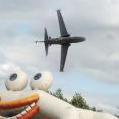
X-Plane 12 : State of the Union
virtualgaa and 2 others reacted to rcmarple for a topic
This certainly helps explain the "payware lag" that developers have had to contend with to upgrade v11 acfs to the brave new world of v12. Imagine having someone work for months fixing lighting/flight model or whatever, only to find it changes again? *** Message to developers - I DON'T MIND PAYING FOR UPDATES - keep at it 🙂 ***3 points -

Scenery Review: Antarctica Mega Scenery XP12 by HSimulators
Kiwiflyer and 2 others reacted to Dominic Smith for a topic
Scenery Review: Antarctica Mega Scenery XP12 by HSimulators By Nick Garlick Introduction I am both thrilled and privileged to return once more to share with you my insights and impressions on the newest addition to the X-Plane 12 scenery library: Antarctica Mega Scenery XP12 by HSimulators. As we embark on this new journey, let's turn our compasses southward this time, to the other forgotten extreme of our planet: Antarctica. The Antarctic, a desolate, icy wilderness at the southernmost part of the globe, has, much like its northern counterpart, been largely overlooked in the world of flight simulation. Despite its vast expanse, spanning over 5.5 million square miles and including the South Pole itself, Antarctica is practically non-existent in the default X-Plane landscape. As I previously highlighted in my review of HSimulators' Grand Arctic XP12, the default installation of X-Plane, unfortunately, offers only sparse coverage of the world's polar regions. Exploring beyond latitude seventy-four north or sixty south reveals a desolate void, filled not by the expected expanse of ice and snow but by featureless, open water. Thankfully, HSimulators once again steps into the breach with their Antarctica Mega Scenery XP12. Building upon the success of their Arctic scenery, this new package aims to provide a comprehensive solution for this neglected region of the world. It covers a vast area that includes not only the Antarctic mainland, but also numerous research stations, airstrips, and points of interest scattered across the continent. Having thoroughly enjoyed their Grand Arctic scenery, I was eager to see how HSimulators' latest offering would compare. Can it effectively fill the icy void in X-Plane's world, and will it manage to capture the harsh, but often breathtaking beauty of the Antarctic landscape? Join me as I explore these questions, and many others, in this detailed review of Antarctica Mega Scenery XP12. Installation & Documentation Considering the sheer magnitude of the Antarctic continent, the 7GB download size of the package comes as no surprise. Unzipping the files will have you carving out a hefty 31GB of space on your hard drive – hopefully, a testament to the scale and detail captured within this add-on. The installation process is as straightforward as they come, as it’s just a case of dragging and dropping the 'Custom Scenery' and 'Global Scenery' folders into your X-Plane 12 directory. HSimulators have, in this regard, stripped the process down to bare bones, making it accessible even for users new to scenery add-ons. However, this straightforwardness also presents a significant shortcoming. The absence of documentation included with the download is notable and quite disappointing. While the simplicity of the installation might mitigate this issue for experienced users, those new to X-Plane could find themselves at sea without explicit guidance. Moreover, the lack of accompanying information for the numerous locations featured in this package feels like a missed opportunity. Maps, charts, or even simple descriptions could have provided invaluable context to users venturing into these visually stunning, yet unfamiliar landscapes. Hopefully, HSimulators will address this issue in future updates. Scenery & 3D Objects Quality Any addition to the limited default scenery of the poles in X-Plane is always a noteworthy event, and HSimulators' Antarctica Mega Scenery XP12 definitely rises to the occasion. The expansive polar wilderness isn't merely a barren expanse of ice in this sim; the intricate terrain details breathe life into the Antarctic landscape. Indeed, HSimulators have skilfully painted a comprehensive picture of Antarctica, complete with visible mountains and plateaus that punctuate the ice. The coastal regions, in particular, are generally well-rendered, albeit with a few anomalies. Some shorelines might appear a bit inconsistent, and mountain spikes might be a tad conspicuous in a few spots. Still, considering the monumental task of recreating an entire continent's worth of diverse terrain, these minor aberrations within the custom mesh can be easily overlooked. When it comes to 3D objects, I would say that they are adequate and do a reasonably good job of conveying the objects seen at numerous bases. However, it's important to note that there is a degree of artistic license used in the design of these elements. Some objects that have been included may not exist in their real-world locations but serve to enhance the overall aesthetic and immersive qualities of the scenery. This is not necessarily a drawback, but rather an artistic choice that gives the scenery its unique character. Quality does vary though, with some objects being a lot better than others, with the living quarters at some of the bases being excellent examples. Some of the other objects, such as a few of the vehicles and smaller huts, could use improvement, as I noticed some subpar textures and unwanted shine on a few of them which looked rather unnatural. However, much like the mesh, the overall effect is quite pleasing. With the above taken into account, the overall impression of Antarctica Mega Scenery XP12 is of a barren and isolated landscape dotted with unique and interesting bases. Each base, with its unique set of objects and structures, lends an authentic feel to the harsh Antarctic environment. With room for improvement in some areas, HSimulators has nonetheless done a commendable job at delivering a scenery package that makes the unforgiving Antarctic landscape come alive in X-Plane 12. Key Locations The sheer breadth and diversity of this package is such, that it would be beyond the scope of a single review to explore each of the forty-four locations in detail. Instead, I have chosen to focus on eight select destinations that I believe exemplify the quality and variety of this expansive scenery pack. These locations, carefully selected from the array of available bases, stations, and airfields, offer a cross-section of the different settings and challenges you'll encounter in this Antarctic scenery. From the bustling activity of McMurdo Station to the icy runways of Williams Field, these seven locations each tell their unique story within the stark, beautiful landscape of Antarctica. Rothera Research Station (EGAR) - UK: Rothera Station, the UK's principal Antarctic hub, stands as a testament to human determination against the unforgiving Antarctic environment. The station's coastal location presents captivating vistas of stark white glaciers meeting the steel-blue sea, an experience that really stands out in the sim. As you navigate through the array of facilities, the immersive depiction of Rothera Station effectively captures the essence of its challenging climate and natural scientific intrigue. McMurdo Station (NZIR) - USA: As the largest and most complex Antarctic outpost, McMurdo Station presents a unique facet of Antarctic habitation within X-Plane. Numerous buildings, representative of the station's multifaceted operations, create a bustling hub of activity. Each structure, despite some not aligning perfectly with the custom mesh, adds to the realism and enhances the sense of being part of this essential survival outpost. Sanae IV (A22) - South Africa: In the icy expanses of Queen Maud Land, the Sanae IV base is a tangible testament to human presence amidst a stark, monochrome landscape. The sim presents an array of huts, snowploughs, and even a parked C130, giving a sense of real-world Antarctic operations. Dominating the scene is the large outpost structure with its integral helipad. Exploring this base in X-Plane 12 offers a unique insight into the challenges of surviving and working in this remote, icy wilderness. Neumayer Station III (EDDN) - Germany: Located in Antarctica's icy expanse is Neumayer Station III, Germany's primary Antarctic research facility. The station's elevated design, mounted on stilts to withstand snow accumulation, is captured quite effectively in X-Plane. The airstrip, including another static C130, plus several snowploughs and huts, add to the authenticity and intrigue of this remote location. The nearby radar dome further enriches the scene, providing a comprehensive and immersive experience for users. Halley VI Research Station AT11 (EGAH) - UK: Situated on the Brunt Ice Shelf, the Halley VI Research Station stands as a futuristic beacon amid the Antarctic wilderness. Its stilted, modular design, portrayed quite accurately in X-Plane, provides a sense of the innovative engineering necessary to withstand this harsh, shifting environment. Of all the locations in this package, Halley VI stands out as one of the most intriguing, not only for its detailed modelling but also for its modernistic, captivating design. Rodolfo Marsh Martin Airfield (SCRM) - Chile: This Chilean station, located at the edge of Antarctica, is a noteworthy addition to the sim. Its proximity to the shoreline presents an interesting contrast between the rugged airfield and the surrounding icy expanse. The airfield, with its simple yet functional features, exemplifies the practical necessities of life in this harsh environment. Williams Field (NZWD) - USA: As an essential airfield serving the McMurdo area, Williams Field effectively captures the vast and intricate landscape of this unique location. X-Plane does well in replicating the ice runway and surrounding facilities, delivering an insightful glimpse into the unique challenges faced by Antarctic aviation personnel. The scenery is teeming with numerous huts and maintenance vehicles, contributing to the sense of a bustling, fully operational outpost. Despite the presence of some minor graphical anomalies on certain objects, their impact on the overall experience is negligible. Palmer Station (NZ12) - USA: Located on the Antarctic Peninsula, Palmer Station provides a unique contrast with its coastal setting and smaller size. Its proximity to the ocean gives users a distinct Antarctic experience, differing from the predominantly inland stations. This variety makes it an intriguing component of the sim, highlighting the diverse geographic and operational challenges present in Antarctica. Conclusion In assessing Antarctica Mega Scenery XP12 by HSimulators, it's hard not to appreciate the sheer magnitude of the undertaking. The vast expanse of the Antarctic continent has been transformed into a tangible, explorable, and remarkably detailed environment. It's a change of scenery that X-Plane 12 users have long been waiting for. Performance-wise, the scenery is commendable as it offers excellent framerates no matter what the weather. The barren landscape of Antarctica, far from being a disadvantage, has contributed to making this a smooth-running addition to the sim. Even when exploring more densely populated bases, or navigating complex terrains, the performance remains consistently good, which is a testament to the efficient design and implementation of this scenery package. However, one disappointment is the lack of documentation accompanying the package. The absence of guides, maps or charts, and additional information on the various bases and locations, feels like a missed opportunity. It would significantly enhance the user experience and, I hope, is something that the developers will consider for future updates. At US$29, some might argue that the purchase price is quite steep for a scenery add-on. However, when you consider the geographical breadth of the package, over five million square miles of diverse Antarctic terrain, and the meticulous detailing of forty-four separate locations, it becomes clear that you're getting a significant return for your investment. While the inconsistencies noted in areas such as object detailing and shoreline rendering, along with the degree of artistic license employed in some parts, are worth acknowledging, they do not significantly detract from the overall experience. Given the size and complexity of the project, minor blemishes are almost to be expected. Importantly, they do not diminish the thrill of venturing into previously uncharted territories in X-Plane 12. In conclusion, Antarctica Mega Scenery XP12 is a daring and ambitious project that has largely succeeded in its goal. It offers a rare and exciting opportunity for X-Plane pilots to explore the often-overlooked Antarctic region. Whether you're captivated by the stark beauty of its landscape or intrigued by the challenge of its harsh conditions, this scenery pack is an invitation to a unique and compelling polar adventure. So, fire up your engines, adjust your flight plan southwards, and embark on an Antarctic journey that's sure to be both memorable and rewarding. _______________________________ Antarctica Mega Scenery XP12 by HSimulators is available from the X-Plane.Org Store here: Antarctica Mega Scenery XP12 Priced at US$29.00 Features Mesh terrain covering more than five million square miles (over thirteen million km2) Forty-four airports, heliports, and localities 3D Airports Tnt Rodolfo Marsh Martin - SCRM - Chile Amundsen - Scoth South Pole - NZSP _USA Sanae IV - At22 - South Africa Byrd Surface Skiway - BIRD - USA Progress Station - PGRS - Russia Zhongshan Station - China - Served by Progress Station Novolazarevskaya - AT17 - Russia Mario Zuccelli Station - AT13 - Italy Enigma Lake- AT-09 Nova Zelandia Browning Pass - AT02 - New Zealand Palmer Station - NZ12 - USA Concordia Skiway - AT03 - France / Italy Dumont d'Urville Station - AT04 - France Plough Island Skiway- PLGI - Australia Kunlun - KULU - China Davis Plateau - AT07 - Australia Davis Sea Ice - ATAU - Australia Druzhnaya 4- DRUZ - Russia Fossil Buff - AT10 - UK Halley Research Station - AT11(EGAH) - (discrepancy in navdata - EGAH) - UK Rothera Research Station - EGAR - UK McMurdo Station- NZIR - USA Kohnen Station - AT12 - Germany Marambion Base Station - SAWB - Argentina Marble Point Station - GC07 - USA Mawson Station - AT21 - Australia Mid Point Skiway - AT14 - France / Italy Molodezhnaya - AT15 - Russia Neumayer Station - AT16 - Germany Odel Glacier Skiway - AT18 - New Zealand OHiggins Station - AT19 - Chile Ohiggins Station HLPN - OGGN - Chile Patriot Hills - SCPZ - USA Willians Field - NZWD - USA Pegasus Field - NZWD - USA Phoenix Airfield - NZFX - USA Plateau Station - NZFX - USA Troll Station - AT27 - Norway 2D Airports (in development 3D) Petrel Station - SA47 - Argentina Perseu Temporary Airfield - PRSU Rumdoodle Station - AT28 - Australia S17 - JS17 - Japan Requirements X-Plane 12 Windows Mac or Linux 4 GB VRAM Video Card. 8Gb+ VRAM Recommended Download size: 7.5 GB. Current version: 1.0 (January 18th, 2023) Review by Nick Garlick 7th July 2023 Copyright©2022: X-Plane Reviews Review System Specifications: Windows 10, Intel 4790K liquid-cooled, overclock to 5GHz, 32GB DDR3 1600MHz RAM, Nvidia GTX 1070ti, Titanium HD Audio Card. (Disclaimer. All images and text in this review are the work and property of X-PlaneReviews, no sharing or copy of the content is allowed without consent from the author as per copyright conditions) All Rights Reserved3 points -
Aircraft Review: AOASimulations-T6A Texan II X-Plane 12 By Stuart McGregor Introduction The release of the AOA T-6A Texan ll was done in the change over twilight zone of a legacy version with its ground-breaking advancements that was achieved with X-Plane 11, which essentially is at the end of its commercial run, and the eagerly awaited X-Plane 12, which still had some way to go until it is in its final release state in December 2023. For us armchair pilots this can be a little frustrating in our 365, 24/7 on-the-go world, where patience isn’t a commodity you see a lot of these days, so I can only imagine the dilemma this gives commercial developers. Do you wait until all the i’s are dotted and t’s crossed in X-Plane 12, or do you continue creating and releasing in X-Plane 11, knowing the platform has been superseded by its younger brother? AOA Simulations decided not to wait to bring us their ‘Texan’, the T-6A Texan II. The aircraft was released for X-Plane 11, with a commitment of a free upgrade to X-Plane 12 for existing users when the simulator upgraded to the new version. That X-Plane 12 release has now happened, and to top off the T-6A package you get both versions for X-Plane 12 and X-Plane 11. In real life, the Texan is described as a single-engine turboprop aircraft and has been around since the late 1990s. It has been used as a training aircraft by several military organisations around the globe and more than 850 have been built to date. From what I have read, it is still very much the mainstay of the United States Air force and Navy when it comes to pilot training. It has a low wing cantilever design with the majestic Pratt & Whitney PT6A-68 1100 hp engine, tandem seating arrangement with ejector seats to allow the flight instructor and trainee to live every moment together, all topped off with a hefty four-blade constant speed, variable pitch prop. The Texan also has a retractable tricycle landing gear assembly, with many of the features being based on the original development aircraft, the Pilatus PC-9. However, don’t be fooled, because the Texan is indeed a very different aircraft in many ways. To explain this in greater detail, the AOA Simulations folks have included a very nice reference document in the manuals section of their package that describes the Texan’s development journey. This is well worth a read to see just how much it has changed from the original Hawker Beechcraft development PC-9. I personally always like additional features like this because in my opinion they bring a greater level of depth to the user experience and allow a more immersive environment when you know a bit about the aircraft, its history and how it came into being. Documentation I will be honest and say that military jets and combat aircraft are not an area I typically venture into very often, so when I had the opportunity to try out what looked a bit like a fighter jet with a prop on its nose, I was intrigued to find out more. My GA side was screaming, “Oh yes please!” The package in review comes in a 360MB download with the aircraft itself and a couple of liveries, as well as a few added extras in terms of documents. In the Manuals folder, you will find an alternative abbreviated checklist (X-Checklist plugin is required) to the one provided by default, a paper kneeboard checklist you can print, emergency procedures, a training flight tutorial with charts (KNGP to KRND), pictorial overviews of flight instruments, and if you are a MAC user, there is an explanation of a workaround if you experience issues when you first load the model. There is also a highly detailed 38-page User Guide to take you through every inch of the aircraft and that is a must-read if you really want to get the most out of the Texan. The developer has also included some contact details and links of where to request help if you get stuck. Sadly, I can’t offer any comment on how successful the MAC workaround is, as I use a PC, however it looks like the developer has put some serious thought into the issue which is good to see. The Aircraft The developers quote that their Texan has been in development since early 2020 and clearly a huge amount of work has gone into the aircraft. You get a real sense of the details and the hours of work by just reading the manual alone, so I believe it is fair to say that the Texan really does come fully loaded. I loved the fact that both the front and rear cockpits are fully functional, thus providing a unique flying experience from each seat, and it was nice to be able to have the choice. The internal details in both cockpits are well presented and bristle with features. The texturing is of high resolution and high quality, and I found reading the various dials and panels to be of no issue, even in VR, when using my Rift S. The developers even quote that the Texan has been optimised to maximise performance in VR, and I would have to admit, that when using my system, I had no issues and enjoyed a very smooth experience. When you first step into either cockpit, it is a bit daunting if you’re not used to military-style aircraft, however, the automated tutorial-level Checklist provided is very useful when navigating around the various systems. In my tests, I probably only scratched the surface of the instrument capabilities of the Texan, and you literally could spend hours and hours just working through your flows and testing out every feature, switch, lever, knob, button, panel, and fuse. As far as I could tell, everything shown works or is at least animated. If you are used to flying fast jets, I am sure the layout will come very naturally to you, however, I must admit it did take me a little time to work my way around. By the way…the ejection seat does work, so be careful with that handle!!! The unobstructed view that the glass canopy offers, is truly excellent, particularly in VR, and you really get a sense of just how compact and well-fitted everything is around you. The feeling of being in the cockpit was something I really enjoyed, and as I mentioned previously, just moving a few feet back to sit in the rear seat, adds a totally different dimension to the experience. The Texan comes with specially created FMOD sounds and the cockpit interaction sounds were nicely done, from the very subtle fuse click actions to the more distinct canopy locking mechanism. From the X-Plane main menu bar, you can access the dust lock removal option, as when in cold and dark, there are several covers protecting sensitive parts of the aircraft. Even these covers are well modeled, as they sway gently in the wind, a very nice touch and great attention to detail. From the outside when the canopy is open in cold and dark, there are no pilots visible, however, they both appear when closing the cockpit and removing the dust covers. The characteristic turbine whine as the engine starts up is very nice, and you really do have the sense of that mighty Pratt and Whitney engine roaring into life right beside or in front of you. As you move around the exterior of the aircraft, the engine tone changes as you would expect, and this is particularly noticeable when you throttle forward and set the Texan into action. The sense of power from the 1100hp engine and prop thrashing through the air as you accelerate down the runway is something you must experience to really appreciate it. The exterior details of the Texan are superb in my opinion and incorporate very high-quality textures, such as the hydraulic lines in the landing gear, through to the multitude of rivets across the shiny aircraft skin. During prefight, it is worth just taking a few minutes to walk around the aircraft and take in the quality of the modelling, and this is particularly impressive if you can do this in VR. You can literally walk up to the various parts and take a good look, reach out and almost touch the surfaces. There is a significant difference between the X-Plane 11 release version and the X-Plane 12 here. You will see far more detail added, and the surfaces are more highlighted than before, the result is a substantial and better overall realism to the aircraft. The developers really have done a wonderful job both inside and out, and in my opinion, the Texan is one of the best in terms of overall appearance, although I do still think it is a little bit of an oddball with the fighter-style canopy, dual seating arrangement, and that big old prop at the front. It does take a little bit of getting used to at first. Now, if you’re anything like me, when you get a new toy, the first thing you want to do is to try it out, so the thought of working through a full set of start-up procedures may not be top of your list. The good news is that very early on, the developers thought of us “impatient types”, and kindly provided a very nice simple 11-step process on page 5 of the User Guide to get up and flying, and this is very helpful. Now don’t get me wrong, at times there is a real sense of satisfaction about going through every step of your flow and eventually seeing the ground disappear below, however, at times I just want to start up and off I go. I like the fact that in the Texan you can do both and I did, although I must admit that just firing up and heading down the runway was my preference. This is perhaps a suitable time to mention that I am using a VKBSIM joystick and pedal set as my control inputs, and I found these to work very well both on the ground and in the air. As there are no toe-brakes with these pedals, I did use a small script to give me brakes and this worked well, although there is a stick forward option that you can use within the aircraft if you prefer. I had no complaints about the handling of the Texan, although care with the throttle is highly advised both when taxiing and when taking off. There is a mighty amount of power at your fingertips, so my advice is to use it wisely. As they say, ‘with great power comes great responsibility…’ and never a truer word was said in the Texan’s case. Remember this thing can do more than 300 knots when flat out!! The glass canopy really does give an amazing view, particularly in VR, however, if you are using flat screens the developers have included a couple of highly novel add-on features to enhance your views in the cockpit. The manual goes into quite some detail to explain what you can expect; however, the best way is just to try them out. These are actioned via buttons on the glare shield and using dedicated buttons on your controller, and the ‘Roll to See’ feature allows you to pan around while taxiing, as well as some interesting effects when doing aerobatics. The Target Track feature allows you to lock on to AI aircraft if you are flying in formation (a key skill by all accounts) and if you are familiar with other aircraft from AOA Simulations, you are likely to be at home with this feature already. As I do most of my flying in VR, these features are disabled so I didn’t spend a huge amount of time testing them out, however from what I did see, this is quite unique and adds another and different layer of immersion to the Texan. One final system feature I would like to highlight is the Flight Assistance system which allows various assistance features to be turned on and off. The button is a bit fiddly to find (highlighted in the manual on page 11) however there are eleven different features such as AOA indexer and brake cues, airspeed indication of gear and flap speed bands, wind direction and speed, through to braking using the control stick and many more. The basic idea is to make life as easy as possible for any newbie pilot or as realistic as possible by switching this off for those who would like more of a challenge. When you are new to an aircraft, this sort of thing really does help, as there is nothing worse than getting frustrated and giving up before you have even started. The lighting is basic, mostly indirect lights on the the panels and the two side wall lights on the separate consoles. You can move the instrument panel spot lights to where you want them to shine on. Externally the landing and taxi lights don't work unless you lower the gear, as they are positioned on the inner gear struts. As I mentioned earlier, the Texan is fully loaded with so many great details and features, and although this type of aircraft is not necessarily my “go-to” happy place in the sky, the more I flew it the more I came to appreciate just how good an offering this is from AOA Simulations, both in terms of the basic aircraft but also just how enjoyable the overall flying experience can be. If you also like lots of technical details, procedures and everything that goes with that side of things, then again, I believe the Texan has something to offer you. Final Thoughts The T-6A Texan II from AOA Simulations, under normal circumstances, is an aircraft I wouldn’t typically be flying, however, I am glad I had the opportunity, as it’s always good to try something new. When you factor in the excellent internal and external textures, the 3D modelling, the control and integration of features, the sounds, and of course the flying experience, I think it’s fair to say that the AOA team really has put out an excellent product. Available now for both X-Plane 11, and to be experienced in X-Plane 12, all the new features in the sim in combination with the Texan’s feature set, it is something quite special. A real synergistic masterpiece… So, should you splash out $40 on the Texan? Well as always that is down to you, your budget and what you are looking for. However, I truly believe that the Texan is well worth thinking about, especially if you have considered the fast jet challenge but have not been sure where to start. If it’s good enough for real-world pilots, then it certainly works for me! __________________________________ The T-6A Texan II by AOA Simulations is now available from the X-Plane.Org Store here: T-6A Texan II Price at time of writing US$40.00 Features: This model was developed using the official USAF 1T-6A-1 Flight Manual and SNFO (Student Naval Flight Officer) P-880 Aircraft Systems explanatory guide. Two default liveries, USAF and U.S. Navy TAW-5. 17 additional liveries will be available on the X-Plane.org freeware download manager. This is the T-6A model with federated (many small units combined into one system) glass display panels. The project has been in development since February 23, 2020 and is our most detailed model to date. The Model High quality 3D model with high-resolution, 4K PBR textures. Fully functional virtual front and rear 3D cockpits with more than 380 control manipulators. Everything works, fly from either cockpit. Both pilot and instructor models visible in cockpit views. Optimized to save FPS in VR. Ground equipment The Flight model Fully aerobatic, high performance dynamic flight model tested and approved by several former T-6A pilots. Single “Power Lever” control of engine and propeller enables "jet like" simplicity. Unique T-6 Trim Aid Device (TAD) is accurately modeled. This compensates for most engine torque effect with automatic rudder trim. Sounds Professional FMOD sound package by SimAccoustics Documentation Detailed 38 page User Guide and detailed avionics illustrated guide sheets available HERE ON OUR SUPPORT PAGE prior to purchase. Several checklists options to choose from including detailed checklist powered by Xchecklist freeware plug-in. Tutorial checklist and example Training Flight to get you up to speed with the aircraft. More details All panel displays are accurately modeled and powered by SASL plugin / lua code Complete electrical systems model. Every circuit breaker on both the battery and generator bus panels is functional. Individual systems can be isolated, failed and restored via its cockpit circuit breaker. Optional "AOA Extras" for student pilots or those who want to know a little more about what's going on with while the fly. Save load feature allows you to save some options once and they are the same on your next flight in the model. Default Laminar G1000 available to use with a custom database in the panel mounted GPS unit. Future developments This model is for X-Plane 11 only. It is not compatible with X-Plane 12. When X-Plane 12 is stable then a new version will be released as a free upgrade for existing users. Requirements: X-Plane 12 or 11 4 GB VRAM Video Card Minimum - 8 GB+ VRAM Recommended Download Size: 360 MB Current version: xp12 (March 1st 2023) Review System Specifications: Windows 10 64 Bit CPU Intel i9-9900k 64GB RAM Nvidia RTX 2080 Ti Oculus Rift S Aircraft Review by Stuart McGregor 3rd March 2023 Copyright©2023 : X-Plane Reviews (Disclaimer. All images and text in this review are the work and property of X-PlaneReviews, no sharing or copy of the content is allowed without consent from the author as per copyright conditions)3 points
-
Aircraft Update Review : Gulfstream 550 v1.10 by AKD Studio Since it's release back 28th October 2022 there has been 10 (including this one) updates to the AKD Studio Gulfstream 550, obviously four months and with 10 updates in that time period, it shows the huge amount of the development that has changed on the aircraft in those few months, a lot obviously, and the changelogs are long. I'm not going to note all the fixes here in this update review, but only the ones that are significant. I really liked the aircraft on it's release, but the G550 did however feel a little bit under developed, it is a new developer to the X-Plane platform as well in AKD Studio's so there is a lot to learn and refine, but the above changelogs shows the improvements are going in there and very quickly... Release review; Aircraft Review : Gulfstream 550 by AKD Studio After four months both the Gulfstream 550 and X-Plane 12 feel far better than they did back in October... as together they have both matured nicely. Externally there have been small changes, however not still on the front windscreen surround, as they are still missing the screws? but the side windows now show the glass reflections, and not a hollow hole, so the fuselage as a whole feels far better (the cabin windows here on the G550 are really big). Cabin window blinds/shades were added in v1.04, very nice. Biggest change in v1.10, is the addition of a cargo hold area, this is on a revised menu "Ground Handling" page noting now an opening rear door, set below the Main Door operation. Access can also be through the rear bathroom (new door) to the very well done cargo bay, I like the wire protected lights, a nice touch... you can also open and close the cargo hatch manually from the inside. More new features in v1.10 include both an AC and DC GPU's (Ground Power Units), and they are both well done, both available on the Ground Handling page. The "Fuel" or loading page has been upgraded as well. You can set your fuel load by the + or -, but also by scrolling on the REQ TOTAL to add in or off load fuel... When pressing SET you get now a well modeled tanker outside. You can also set the cargo weight (both Kgs and Lbs are available), and finally your Passenger load of up to 16 Passengers, weights are adjusted to the loading parameters. Pressing BOARDING, will activate a Tesla Car (It takes ages to turn up) and proceeds to deliver passengers and luggage to the aircraft... when done it goes away, to unload passengers you press the selection "Take Passengers to Terminal". If you had read the release review, we have seen this Tesla before, but at the totally wrong scale. It is now the right scale, but in reality it is all still a bit odd isn't it... I mean how would you get 16 passengers into a 5 seater Tesla? A Mercedes Bus would have been a better idea, the Tesla doesn't feel finished either? The Fuel truck has an annoying foible as well, it appears simply out of nowhere, then suddenly disappears again when the aircraft is refueled, so there is no animation to the jet or in leaving? Static Elements can now also be selected to appear on startup. Other external notes include... wheels now actually touch the ground! In v1.04 the internal lighting had an overhaul. There are sixteen individual sets of lights around the huge cabin, these can be all switched on or off manually at each light, or on the selections of the CABIN LIGHTS Menu page... Thankfully you can "Turn on all Lights", and do the same to turn them all off again... And very nice it all is in the cabin... there is a secondary lighting page that covers three areas, rear Bathroom and each side downwash lights... This gives you a more softer cabin feel, and lights up separately the bathroom. It does also help lighting up the galley area which was extremely dark before, and sort of the entrance, which I complained about in the release review. Oddly the Red on to the Green off selections are the opposite of the cabin lighting commands? Lighting is better, but it still doesn't quite all work? as separate galley and baggage area lighting is what is really required here, and you still some entrance lighting missing... the stairs have the inbuilt lighting elements shown, but it doesn't work... as light bleed into the cockpit with no door is a problem? External lighting was upgraded in v1.05. It is very good, if the main landing lights a bit over bright? There are Navigation, Strobe, Beacon (belly), Ice/Wing and wheelwell lights.. the tail light is too dull to be effective. Cockpit lighting is good, and it comes with a lot of adjustments, with glareshield dropdown lighting, yoke, overhead and side panel lighting. The only thing I didn't like, was that I couldn't dial out the footwell lighting... this made bright reflections upwards on to the instrument displays, so an all dark cockpit was not possible. While we are still in the cabin, the window frames are still quite average and they come with nasty gaping holes and badly fitted cabin (glass) windows. Yes while flying you do have to look through these badly made windows and I'm not in liking the view!... however the "Time to Destination" has been added to the Cabin Display. Don't get me wrong here, the lighting is now very good, but still needs more refinement to be effective, or totally realistic. Instruments The HUD (Head Up Display) now works... just touch it to drop it down. You have to adjust it, as the form and lettering is too thick and that is done via the knob above, it works, but it's not the best available, it also still feels like a WIP. "Banana" indicator is now working on the PFD. On the MAP/MFD you now have the Terrain Radar working as well. It is the DrGluck (Plugin v1.30+) tool and the plugin is required. The Terrain shows the Independent terrain display on both the left and right displays, and it also gives you a working Vertical Situation Display. I always had issues with the METAR report on the menu. Add in your ICAO code and the system would freeze, or CTD. Now it works, but not by pressing the PRINT METAR? but by doing a keystroke RETURN, still very odd? But at least you now don't freeze the Sim. Support for 8.33 kHz radios is now also available. Flying v1.10 Gulfstream 550 For updating the Skunkcraft's Updater now works with the aircraft, thankfully with so many updates it is a very useful tool. In v1.07 in December, a Manual was also delivered (by Ivan Luciani), seriously you had to wait two months for a Manual, and you wonder why reviewing is hard without developer notes. Look closely and you will find now there are pilots flying the aircraft, they are the default Laminar Pilots, but still a great addition. In v1.05, there was a lot of performance changes (a change over to SASL v3.15 was also completed) by AKD. I found the release aircraft not to bad to fly actually... but in the takeoff roll and climbout, it was even far better in this later version. Changes include engine performance, flight model and better airfoils. And the new wingflex is also very noticeable, mainly because it wasn't done before? It is worth noting that the engine performance and flight models, are tuned to each different X-Plane version, X-Plane 12 or X-Plane 11. Obviously the X-Plane 12 dynamics are better, as felt here. Added or refined is the rain effects (V1.03) on both forward windscreen and side cabin windows The AKD G550, is a quite complicated aircraft to fly, there is a lot of detail to cover in here with the Symmetry Flight Deck, and the specific glareshield "Display Controller" system. But it is well worth the effort to do so. I will admit I'm not crazy about the manuals? There is a lot of them in sixteen categories, but they are done in a drawing layout? Interesting in one way as the detail is very good... but odd in another. Specifications are; Range 6,750 nmi (7,770 mi, 12,500 km) range, with a High Speed Cruise: M0.85 at 41,000 ft (12,497 m) or the standard Long Range Cruise: M0.80 at 41,000 ft (12,497 m), and you can cover the ground with a Service ceiling: 51,000 ft (16,000 m) Flying 41,000ft at m.80 is the dream of living with the Gods, but you can easily do that with this Gulfstream, it is a great simulation with high numbers. Fixes on the the instrument panels are high; NavSource on Display Controller, squawk page in FMS3 radio panel, better RNP indicator on DU1/DU4 and fixed AoA indicator DU1/DU4, Stall warning system logic, Altitude mismatch on ALT tape and Autopilot FLCH mode. Note a confusing thing is using the Autopilot. Noteable is that the G550 does not have an Autopilot, hence the trickery here... To activate the Autopilot, which is set below the Speed selector... you press one of the screws on the left of the panel, hard to find if you don't know where it is, otherwise you get a yellow caution alert. At Mach 80, faster if you want to, you travel and arrive at your destination quickly, here I'm back at EVRA Riga, Latvia. You just like looking at the Gulfstream, because it is a very nice aircraft to look at... I still can't work out how to ARM the Airbrakes for landing, press the button, positioned rear the centre console, but it doesn't ARM? Nice 6º nose up flare, shows nice control in the flare, and you lower the power to sweetly touch the runway... nice and easy. Sounds haven't had much attention in the updates, but the reverse thrust is loud and powerful... Flaps are MASSIVE, and lower to the full 39º... The full landing configuration is shown on the PFD, and I really still can't get over how much I like this visual FLT arrangement, brake pressure is shown as well. The Gulfstream 550, puts the world at your feet, it is an intercontinental flying machine, and in v1.10 it better than ever, not totally perfect, but a great simulation. Summary In world of the elite, then the word of Gulfstream is the biggest token you can play in this upper exclusive club. The Gulfstream G600/G700/G800 Series was built upon the last series of G500/G550 Series and that series evolved out of the Gulfstream V as the GV-SP. First an almost disclaimer on the review and the aircraft. The Gulfstream G550 is a first time project by AKD Studios and obviously they have to pick an extremely complex aircraft to start with, add the release right in the middle of a new X-Plane 12 Beta run, and you can expect a lot of bugs and weird things with the aircraft. It's not like that at all in context, in fact it flies very well. But it is very hard to do development on shifting sands. This update review covers the extensive update list from the release aircraft (v1.0), to the current version v1.10. The update list here is extremely long, but the main features are a new Cargo/Baggage area, with animated door, internal detail is very good. New Fuel Tanker, Two GPU AC/DC units and a smaller (scale) Tesla car, with a lot of touchups and details externally. Cabin lighting has been totally redone, but still needs some fine tuning and stair lighting, but far better than the original set up. HUD HeadUp Display now works, as does the inclusion of DrGluck's Plugin v1.30+ that has Independent terrain display on the left and right displays, and a working Vertical Situation Display. Pilots have been added as has WingFlex, and a lot, a real lot of changes to the engine performance, flight model and custom performance for both X-Plane 12 and X-Plane 11. I still have a few quibbles, poor window surrounds, lighting still not right, default FMS, pop in/pop out Tanker and other quirks, but you have to understand to a point this aircraft (and by the extensive list of updates) is really still a work in progress, it has in reality come a very long way since it's release late October 2022, obviously released too early, but the developer has made some highly significant progress on the aircraft. Personally I absolutely love the Gulfstream G550. X-Plane has wanted a really excellent transoceanic Private Jet for decades and here it is, it is also available in X-Plane 11 and more importantly in X-Plane 12 in the same value package of just over US$30. For your money you get a lot of aircraft with it's Gulfstream related systems. ________________________________ The Gulfstream 550 v1.10 by AKD Studio is NOW available here at the X-Plane.OrgStore GLF550 - Ultimate Business Jet by AKD Studio Price is US$31.95 This aircraft is now both X-Plane12 and X-Plane 11 supported Requirements X-Plane 12 or X-Plane 11 Windows, Mac or Linux 4 GB VRAM Minimum - 8 GB+ VRAM Recommended Download Size: 1.1 GB Current version : 1.10 (February 7th 2023) Download for the Gulfstream 550 by AKD Studio is 1.03GB And the final install in X-Plane Aircraft folder with the above loaded liveries is; 2.53gb. Authorisation is required. The AviTab plugin is also required to use this aircraft, and it is deposited in your X-Plane Plugins folder. Simbrief proflie is; https://www.simbrief.com/system/dispatch.php?sharefleet=256234_1658264083720 Documents AKD GLF550 Introduction.pdf FMS_Manual.pdf GLF550 Normal Checklist.pdf GLF550_air_conditioning_system.pdf GLF550_auxiliary_power_unit_(apu)_system.pdf GLF550_electrical_system.pdf GLF550_fire_protection_system.pdf GLF550_flight_control_system.pdf GLF550_fuel_system.pdf GLF550_hydraulic_system.pdf GLF550_ice_and_rain_protection_system.pdf GLF550_landing_gear_and_brakes_system.pdf GLF550_oxygen_system.pdf GLF550_pneumatic_system.pdf GLF550_powerplant_system.pdf GLF550_pressurization_system.pdf Changelog Changelog v1.10.txt Designed by AKD Studios Support forum for the Gulfstream G550 _____________________ Aircraft Review by Stephen Dutton 18th February 2023 Copyright©2023: X-Plane Reviews Review System Specifications: Windows - 12th Gen IS1700 Core i7 12700K 12 Core 3.60 GHz CPU - 64bit -32 Gb single 1067 Mhz DDR4 2133 - PNY GeForce RTX 3080 10GB XLR8 - Samsung 970 EVO+ 2TB SSD Software: - Windows 11 Pro - X-Plane 12.01r3 (This is a beta review). Plugins: JustFlight-Traffic (X-Plane.OrgStore) US$52.99 : Global SFD plugin US$30.00 : RK Apps XPRealistic v2 - US$34.99 Scenery or Aircraft - ELLX - Luxembourg Findel Airport v2.1 by JustSim (X-Plane.OrgStore) - US$19.95 - EVRA - Riga International Airport v2 by JustSim (X-Plane.OrgStore) - US$18.50 (Disclaimer. All images and text in this review are the work and property of X-PlaneReviews, no sharing or copy of the content is allowed without consent from the author as per copyright conditions) All Rights Reserved3 points
-

Aircraft Update : Airbus A350-900 XWB Advanced v1.6 by FlightFactor/SteptoSky
Elocutioner and 2 others reacted to Stephen for a topic
Aircraft Update : Airbus A350-900 XWB Advanced v1.6 by FlightFactor/SteptoSky Since the earliest days you mostly saw FlightFactor Aero as a Boeing developer, there was the Boeing 777, then the Boeing 757 and then the Boeing 767... then out of the blue came an Airbus in the Airbus A350-900 XWB. But right from the first version of this aircraft it never felt... well very Airbus? Where as all the Boeings felt and flew like Boeings. Since the A350 FlightFactor went on to do another Airbus in the A320 Ultimate, which DOES feel like an Airbus and is still the best Airbus in X-Plane. But the FlightFactor A350XWB was a really odd aircraft from the start? Excellent on the external, the A350 always looked very nice in X-Plane. The clever six display layout with X input system is also really clever and is well done (early versions were however extremely buggy) and the airbus system depth is very good. So overall it should have been perfect for me as I like to fly Airbuses more than Boeings... but I never ever really fell in love with FlightFactor's A350XWB? Which is really odd because Long-Haul is still my favorite form of flying and also the A350 XWB is the latest of the New-Gen aircraft and X-Plane is very short of Long-Haul airlines and certainly of the New-Gen class. The FlightFactor A350 should of very easily ticked off every box for me, but in all honestly it left me cold and I rarely flew the aircraft, even the last time departing Barcelona I even stopped mid-flight (I very rarely abandon flights) because I was really not liking it at all? Why? well that is a good question... the first one in the most obvious. The FF A350 didn't have SID/STARs and the FMS was in reality the default FMS undercover. And this missing aspect really was the biggest complaint, but to be fair the A350XWB FMS (Flight Management Systems) is quite complicated and very different in input from either a Boeing and even another Airbus as only the bigger A380 has the same input and navigation system. Poor Sounds didn't help either and they were really awful, and the cockpit textures were weird in a non-Airbus way, and the aircraft always felt buggy, it never seemed to come together as a whole or as a linear simulation, it was an aircraft you simply couldn't love. The news of a v2.0 of the FlightFactor A350 was very welcome, but it became confusing in the light that the next update in v1.6.0 would be next and also include the infamous missing SID/STAR intergration, my guessing (wrongly) would that the SID/STAR intergration would only happen with the full new version of v2.0 (In selling the new version of the aircraft)... The surprise is that the SID/STAR is in this update v1.6.0 version, so that will be a free update, the better news is that the FMS is now really, really good... far better than I expected and to the point even brilliant. Nothing wrong with the way the A350 XWB looks, but this is still the v1.0 aircraft and in a few areas the v1.0 has a few niggles, the wings do have flex, but in a weird stiff flexy way, so the wing flex still looks old and outdated, and the cabin is still also old and very dated as well. A worthwhile download is the new Lufthansa A350 livery by fscabral as the cabin textures have been redone and the results seriously lift the cabin from the really drab to the really nice... and yes this cabin layout should be the default. Note in that the cabin lighting is controlled from the EFB (OIS/AIRPLANE/CABIN settings), lighting and sound settings settings are currently off at default. Ground support still has those cold war Russian vehicles, and you shake your head why as all the FlightFactor Boeings now have the updated western styled vehicles. But thankfully where it counts in the air the A350 XWB still looks very nice. Airbus 350 XWB v1.6 We will come to the big event in a moment, but first unlike other areas of the A350 the cockpit has had a very nice spruce up of the textures. The original cockpit textures were a darker Airbus blue with some wear around the edges, but somehow it didn't feel right in context as the A350 is the most modern of the Airbus fleet? These textures are now in a far lighter blue/grey Airbussy feel and are far better to the current state of a A350 XWB. The panels are still very left side pilot focused, with the right position more fixed with no display cycle active, the far right display is also fixed to a users guide page. The range and baro adjustments however do work, so it is not impossible to fly from the right seat as you can flip the FMS screen to the right middle display setting, but with no access to the menu sections unless again you move the menu selection to the middle screen. Glareshield textures are lovely, modern and very nice. Gone are the wheat coloured seats to be replaced by a very not corporate look of "stars"? A very unusual choice, but they do look better than the wheat seats with far more cloth and ripple detail.. FMS - Flight Management System The most important and the most welcome aspect of this v1.6 update is the intergration of SID/STARS into the FMS navigation, not only is SID/STAR routing now available, but it is also in how well the system has actually been done here is the biggest factor. Pilot left station is very good with most items and displays active and interactive. FlightFactor recreated the X pointer system for use on A350 displays and although very buggy in the early days (the X pointer would stray badly out of the display limits) it is now a very robust system that works well. There are two drop down menus tight together top left of the MFD (Multi-Functional Display). Top one selects your FMS route (Sorry there is still only one FMS1 route available) and below to start a new route then select INIT from the lower menu. If you are used to the usual FMS via a left or right button input key, then you will have to adjust to this different pointer system. There are a few rules to know... one is that everything is via an input and menu selection, so you select the box with the X pointer (arrowed below left)... ... put the X pointer over the box you want to input into and you get a green dash line and a flashing cursor, the display then also becomes "KEYBOARD FOCUSED" for direct key input... Type in your data, in this case Nairobi Airport "HKJK", but most IMPORTANT is to re-click to lock the data in! This is usually placed over the very first letter in the box with the pointer, if the "Keyboard Focus" line goes out and the input text sets a little to the right... then it is correctly inputted (locked in). Add in your INIT details... Flight Number, From (HKJK) to (EGLL) Alternative (EGCC) and Cruise FL (Flight Level) and Cruise (CRZ) Temp ºC. DEP and ARR locations set it is now time to do the flightplan, you access the flightplan via the "ACTIVE" menu and select F-PLN. Now comes the new SID (Standard Instrument Departures) selection... Press the departure airport (HKJK) and up comes a menu, select on the menu "DEPARTURE". Drop down menus give selection for RWY (Runway), SID and TRANS.... ... in my case it is RWY 24, SID "IBRA3D" and TRANS "KAMAS", all selections are then shown in the above Selected Departure box. Go back to the F-PLN and the SID departure route (waypoints) are now completed. Next waypoint (WPT) or AIRWAY is inserted in a similar way. Just select the last waypoint and select via thew menu either "INSERT NEXT WPT" or "AIRWAYS". For to "Insert Next Wpt" you select the selection box and insert the waypoint name (TUFTE) and make sure you click to insert, and you don't use the AIRWAY selection to add in the next WPT. For Airways then select AIRWAYS and add in the AIRWAY and the TO selections and like all FMS systems you can add in as many airways as you require. In every flightplan you get "DISCONTINUITY" breaks... to remove you just select the Discontinuity selection and then select "DELETE" from the menu. STAR (Standard Terminal ARrival) is the same procedure as the SID selection, select the arrival airport, then ARRIVAL from the menu and then use the menus to fill in the arrival data... ... the drop down menus select RWY, APPR (Approach), VIA, STAR (shown) and TRANS. All selections are shown in the upper box like with the SID selections. All changes and selections are only TEMPY or Temporary in yellow and insert via INSERT TEMPY, or backstep by ERASE TEMPY... .... and at any time while constructing the route you can make it active (Green) to see your progress on the PFD... The final full Flightplan is shown with diversions of which you can scroll up or down.... brilliant! It takes a little while to adjust to this pointer system, but it is quite easy to do once you are used to it. Overall the FMS is very versatile in creating route flightplans and I found it very refined and not buggy at all, which is very good thing with long route insertion flightplans like from Nairobi to London. Other FMS details are important as well... OIS (Onboard Information System ) Aircraft AIRPLANE/PASSENGERS gives you the A350 weights, and the AIRPLANE/PERF CALCULATOR gives you TO Performance and vSpeeds. ... and the calculated data is then transferred to the PERF (performance) page and the very important FUEL & LOAD page in the FMS... You can save your flightplan via the INIT page under "RTE SAVE", but the interesting aspect is that you have three choices of save, 1. the FULL complete flightplan, 2. SID or 3. STAR, so this makes it a very versatile system... .... the route is confusingly saved in your standard X-Plane FMS folder but not in the alphabetical order, but under a (*) moniker at the very bottom, which means a lot of scrolling. Quicker access is to use the "Filter" box lower right which reduces the flightplans to the chosen ICAO label. Wind pages have been added and it noted is that Alterative Flightplans are also now available, but I couldn't find a second flightplan? All in all it is a very extensive and detailed upgrade to the FMS in the A350XWB, I absolutely love it, yes there is more you want like a second FMS for the First Officer, but overall it is a fantastic working system... not perfect but far better than we had before. _______________________ There are no notes that the sounds have had attention in v1.6, but they certainly sound far better to me? Cockpit hum and wind noise is very good for a long haul flight and the exterior sounds far better as well, more distant in the background now is that really annoying "tring, ring" from the engines, it is still there but now highly subdued... thank god, the annoying Purser to Captain "Dings" are still as bad as ever, finding the issue is made hard by the language spoken in a gobble... usually it is the cabin that is TOO hot or TOO cold "but mister if the damn engines are switched off I can't heat or cool the cabin can I?... so go away", or the cabin lights are down, but it is really, really annoying... If any aircraft requires a specialist addon sound pack it is the A350 XWB. Contrails and and particles have now been added as well, the APU hums and breathes out exhaust air, and in the air the aircraft looks great. Another new menu page on the OIS is the "JOYSTICK ACTIONS" menu and noted to make the aircraft compatible with the new Thrustmaster TCA Airbus Throttle Quadrant. The new hardware offering from Thrustmaster, part of its new TCA Range is due to release in late September this year. This covers your joystick "Deadband" area (centre), throttle detent location and "MCT Detent" (Maximum Continuous Thrust) location. All the settings of course are for fine tuning your hardware joystick and throttle systems, but one selection is quite important... "REV ON SAME AXIS" will set your throttles with a "Beta' reverse detent. fine in some cases but horrible with my Saitek X56 Rhino setup as it set the idle position to reverse thrust, you can turn the action OFF here (arrowed below left). Radios are now 8.33 (as X-Plane11 went to this earlier). The 8.33 kHz channel spacing adds two additional channels for every 25 kHz channel. This is to overcome the frequency congestion in the medium to long term by providing more channels. Navigation ILS, VOR and ADF frequencies are under the "NAV" button, but you still have the default FMS at the rear of the pedestal and it's radio channels if you want a easier way to access any of the frequency settings or route information. _______________________ Summary Although noted as a "Advanced" version of the Airbus A350XWB, the Flightfactor version never really hit the mark in delivering a totally realistic simulation, and so in that aspect I was never yearned for the aircraft and rarely flew it, which is a shame because we need really good long haul and next generation aircraft in the X-Plane simulator. But now with this new v1.6 version of the A350XWB we have a game changer. The missing SID/STAR intergration that was missing is now part of this extensive Flight Management System. A difficult system to replicate because of it's unusual pointer and menu based input applications. But this intergration has been a huge success here in creating a master simulation of this unique Airbus FMS. Most FMS areas are now covered, but you will never ever cover everything as it is simply too complex, but the aircraft in reality should lose it's "Advanced" moniker and be now named a "Professional" aircraft because of the depth of the systems here... the only area missing is the right hand seat interaction to the OIS (Onboard Information System). A few areas have also been cleaned up including the cockpit textures which are more Airbus grey and lighter in tone and new seat (star) coverings. Over the updates the A350XWB has had a lot of behind the scenes work done and not actually noted officially, but you certainly feel in this version a far more co-ordinated and less buggy aircraft to fly, the FMS especially is really well coded and quite bug free in being versatile for corrections and data changes, a far cry from the original interface and flying conditions. So now it works, in almost every area and if not absolutely perfect the A350XWB starts to live up to it's quality standing as a very good if now excellent simulation. Over many hard flights (most Long Haul) it is an excellent aircraft to enjoy, the v1.6 update maybe on reflection small, but the aircraft has become something else than just a pretty aircraft to look at, it now a very realistic flying simulation as well. Once the outcast, the Airbus A350-900XWB can now be seen in the same context as the other aircraft from FlightFactor. A brilliant update that in the long wait users deserved... Not perfect but a free update with these enhancements will bring a lot of smiles to a lot of users faces, if you don't have the A350XWB from FlightFactor, but love long distance flying, maybe it is now time to take the plunge and enjoy this amazing aircraft. _____________________________________________ The Airbus A350-900 XWB Advanced v1.6 from FlightFactor is Available from the X-Plane.Org Store: Airbus A350 XWB Advanced Price is currently US$ 64.95 Livery packs at US$10 for ten liveries are available here: A350 Liveries Include: North America, Oceania, Africa & Middle East, Asia, Atlantic, Europe 1, Europe 2 and Pacific. If you already have purchased the A350 XWB from FlightFactor then go to your account at the X-PlaneStore and update to v1.6 Requirements: X-Plane 11 Windows - Mac - Linux - 64bit Operating System Required 4Gb+ VRAM Minimum, 8Gb+ VRAM Minimum. Release Review : Aircraft Review : Airbus A350 XWB Advanced by FlightFactor Support forum : FlightFactor A350 XWB _____________________________________________________________________________________ Update and Tutorial by Stephen Dutton 18th July 2020 Copyright©2020: X-PlaneReviews3 points -

Aircraft Updates : Airbus A319 and 321 by Toliss
AirbusMan and 2 others reacted to BernardoCasa for a topic
Hi Bob, Thanks, I am really happy to know that you are liking my articles. Both aircraft are extremely good. Personally, I like the A319 more, especially with the IAE sounds, don't forget that you need the CFM too. Independent of your decision, you will be extremely happy.3 points -

Aircraft Updates : Airbus A319 and 321 by Toliss
AirbusMan and 2 others reacted to BernardoCasa for a topic
Totally. Even though they look similar, each aircraft has its characteristics.3 points -
X-Plane Year Review 2014 and Welcoming in 2015. Well that was 2014? What did you think of it? The usual, the different or just forget the whole year happened. Well it was different in a unusual way in that it wasn't filled with the usual things that turn the simulator upside down. My view it was quite a subdued year in a way, but a lot still happened and a lot changed. But I did feel this time last year that X-Plane needed a more stable settling period to consolidate its main base and in a big way that did happen. The word "consolidate" is the key point here, and in that context for X-Plane it was a very good year. Review 2014 The year started off with loads and just loads of scenery released, The excellent LEVC - Valencia from DAI-Media started it all off and I loved this Spanish scenery. Tom Curtis had another great year with KDEN - Denver and big updates to his great packages "Final Frontier" and "Seattle - Boeing Country" and his "Las Vegas "Glitter Gulch" through out the year had a touch more magic as well. Another good solid year from Tom. Santiago Butnaru was another who gave a lot of prolific scenery releases this year with KBUF (Buffalo-Niagara) which is underrated, KFLL - Fort Lauderdale and last week KEWR - Newark. Two stood out in CZST Stewart by beti-x and EIDW - Dublin by Aerosoft were both brilliant but in their very different ways, But as scenery goes it was a really good year, a lot of really great freeware and many new faces having a go at doing some work with a lot of the usual suspects delivering outstanding work. Two points I will highlight here in the return of ISDG with a bang with Steve K and YMML - Melbourne and the simply amazing "tdg"and If one person has single-handedly changed our scenery base it is tdg. I really loved the recently released "Winter_Package" of winter scenery from Albert (xflyer) who is the person that creates the default Laminar Research autogen art... simply amazing, and Laminar has also made hints it could be included in the base simulator in a start of the seasons feature, well bring that on. Another great late in the year release is the v3 terrain files from Alpilotx, another step up in high-quality detail, but a huge just under 100gb download for the lot (It takes two days alone if you want it all downloaded now) but it does now also include Australia. I earlier had my doubts about the Laminar Research default airport scenery system, but it works very well and not as intrusive as I expected, the updated WED 1.30 is also now very, very good. Overall the scenery aspect came along in heaps and bounds this year, 2014 was a really good year for scenery and I am getting really very impressed by a lot of the images coming out of the simulator. Not perfect by a long shot, but a big and definite step forward and X-Plane is finally fixing its biggest blackhole. Laminar Research felt like it was being diverted by another presence in 2014 and that turned out to be fact in most of the development time of the year went into an upgrade of LR's other simulator business in mobile games or X-Plane 10 MOBILE for iPhone or iPad. They note that these products help the desktop version and vice-versa, and you can't argue with that philosophy, and the launch of X-Plane 10 on STEAM has again shown that LR is aiming lately at the gamer crowd for more business and users, So is X-Plane a game or a simulator? will the roads narrow as the products come closer aligned? I still see a big difference flying on my desktop to using X-Plane on my iPad (you can however fly around the room making loud aircraft noises with your steering iPad), but my only really big fun and main focus is my addictive personality of minecraft proportions of collecting and building my huge X-Plane scenery world and flying around it. One major (and only) X-Plane release for the desktop simulator form was version or v10.30 in a mid-year release in June. But it was a beauty, and its biggest feature was how well rounded it was when it was released. It didn't feel like a beta and had no really big hidden nasties, it was also brilliant from day one and a really good well rounded product. Laminar noted that they had taken their time to do this one and it showed, great quality and great features. The standout was the inclusion of an updated GARMIN 430/530 gps which was just sensational in design and operation. Created by Philipp Münzel my personal "Person of the Year" in 2013, in he had been recruited by LR to do development work directly for LR in 2014 and that took Philipp out of the daily limelight, but his brilliance was once again shown in a great feature and also gave the simulator another big push forward. He will be there for 2015, so expect more great things from him, Chris and Guru in the next year. Again v10.30 provided a very good consolidation of the desktop simulator, it refined and changed it into a more complete application that was more reliable and even smooth. There was a few missing features that had been promised like a wider visual distance that is really (really) showing now its time and age in the simulator these days and there was still no update to the average autocratic ATC system that is so badly required to make X-Plane 10 deliver on its promised features, no better water shading or cultures either, but maybe in 2015 a few of these changes will finally grace our screens. I noted in last years 2013 review that this year would be the last year for X-Plane9, that has come to pass as most developers now don't issue X-Plane9 versions with their releases, the biggest is of course Carenado and in that the v3/10.30 upgrade was completely X-Plane10 and no new product from either Carenado or Alabeo would in the future will be in X-Plane9. If you keep X-Plane9 into 2015, you are going to find it very slim pickings indeed for (payware) aircraft and a lot of quality scenery for that simulator version. X-Plane has now moved a long, long way even from its own X-Plane10 release version, in to a point it is now barely recognisable from its own small time beginnings. The biggest satisfaction for me in 2014 was the emergence of more developers that were willing to put their talent on the line and build payware. The gap from freeware to payware is simply massive, you have to be good not only in one area but many or create a stable team to produce good aircraft. It is not easy in covering this gap, as even the very best have had their moments this year. Once you cross that line and ask for payment, you are then required to deliver in every area, but the rewards are also very good if you can pull the off the project. X-Plane now requires extremely high quality, no half-measures can pass the line and it is a tough line, but it is still very highly required. In that talent and products build the simulator and the good news is X-Plane uses will pay for quality products, and that is a very good thing. As it goes both ways in that the users get great product and the developers will keep producing great product to satisfy the need. So both the users and the developers both benefit... In that area X-plane has crossed that invisible line. But quality was there even if at first the fine-tuning points are not. So basically the work was always very good, but the real work and talent is in that very last 5% to get that tuning and the quality first rate. Stephane Buon of Aerobask was a real talent this year in not only turning out interesting modern like the Lancair Legacy FG aircraft but refitting out his older work to the 10.30 requirements, and with a flourish even finished off the year with an amazing glider (Antares 20E). The X-Trident team with their amazing Bell - 412 was another great intro. X-Crafts produced his ERJ-195ER that really was a great start in quality payware and Jetsim gave us an Airbus A330-300 with CRT instruments. MLADG gave us some WW2 German fighter experience with the Me 262. And Colimata's Mig-29 blew me away, and on a modern twist AoA Simulations released just lately their F-35B Lighting ll. But the old hand operators still delivered as well. As a group they delivered very deep immersion simulation with always new tricks to get your attention. Reviewing these challenging deep system aircraft is taking longer and longer to deliver your verdict, as you have so much ground to cover. Many need not a week now but weeks to understand and get the very best from and to understand how to fly them to their best performance. Peter's (Hager) Aircraft started off the year with his 3d A320/A321 series, but I was simply a non-starter from the very start. The aircraft no matter how much I twisted my settings could they run on my computer, frame rate was always in the low single figures and I simply had to give up any chance of giving them a fair review. It was the first time I had actually gave up and moved on, something I simply don't like to do. I tried again later in the year with the same results. JARDesign did a few updates till mid-year to his A320 but then left it to focus on the A330. SSG - Supercritical Simulations Group started the year with a bang in the B748i which was a bit raw, but steady and quality time in development brought this aircraft (And the just released Freighter version) up to a very high standard and they now both now sit in that high point quality area. Jack and Joe from FlyJSim did not disappoint with their excellent Boeing 732, another really great simulation and a great companion in your hanger with the B727 Series. FlightFactor also was busy with great upgrades (including engine options) to both their Boeing 777 and 757 series aircraft, and later in the year the release of the amazing A350-900 with a menu system that is just so unique and clever. It had QPAC airbus systems as well, and the very best in airbus laws and protections that made it something really special to fly. It was delayed and frustrated by a very stubborn bug for Mac users? Not a major issue in context, but it simply refused to be hunted down and fixed, as a beta tester on the A350 I spent hours (and hours) doing loops in trying to focus it down, but it still remained elusive. It will in time be usually something very simple that fixes it, but that is not to take away the achievement this aircraft is to X-Plane's quality and position in flight simulation, and a pro version of the A350 is still coming. Hydroz and Khamsim brought out their excellent HU-16 Albatross that was a great aircraft to get your head around, and Khamsin also updated his Mitchell. And I liked the old B-29 from Virtavia and Dawson Designs, strange to fly but very rewarding if you are willing to put in the effort. Carenado had again a huge year with constant updates right through the range and great releases. Putting the updated GNS 10.30 gps into Carenado aircraft was always going to brilliant, and it was. And Carenado also created a unique manipulator system that could change the way we operate knobs and switches in the simulator. great for scroll mouse users, but I found it a bit strange with my one puck mouse. In aircraft it started with the PA-38 Tomahawk, which i simply loved as it was simply a great aircraft to fly. Then came the brilliant B200 King Air, a monster of an aircraft that was then even later over shadowed by the even bigger and more monstrous KIng Air in the 1900D that was just the ultimate King Air you can ever get in simulation. Released in-between these two giants was the Piper PA-46 Malibu and the excellent CT206H Turbo Stationair, which is really the very best single-upper wing aircraft in X-Plane bar none. So for Carenado it was a just that a huge year, and great simulation. Helicopters did exceptionally well as well. You don't get a huge amount of releases in the rotary world. But the quality is out of this world, and 2014 did not disappoint. DMO started it out with a really great update to the S92, now a major player and a great big aircraft to fly. Then came the Bell 407 by Dreamfoil Creations which is quite possibly the very best helicopter ever created for X-Plane, it was simply in every area sensational. But my overall favorite was the B412 Huey from X-Trident. It is still the most addictive aircraft I have ever flown in X-Plane... When you are still flying at 4am in the morning and still wanting to have another go after five hours of flying already means this aircraft totally has your guts and heart at its controls. I now fear going near it as I know I will lose hours or a day if I do so and reviews are then left hanging half done. It is a total love/hate relationship, but the love for the B412 will always win me over. None expected shows for the year are also to be noted. The IXEG 737 classic is still going into another year of development. Real 733's are now going to the graveyard in big numbers and X-Plane still hasn't had any hours behind the controls of one of them, it is now promised before next Christmas... 2015! But still well worth the wait (ing). The EADT x737 3d cockpit aircraft was a no show as well, but the update images show an amazing experience when it does arrive. maybe 2015 will finally be the year of the B737? I doubt the PMDG B737 will join the queue, there was a lot of noise from PMDG in the middle of the year referring to X-Plane and then nothing? So PMDG is slowly going into the "I'll believe it when I see it" zone. JARdesign didn't release his A332 either, but I doubt it is very far away in early 2015. An area I am interested in is the DC-9/MD-80, There was a great freeware release from Roger2009, but three projects were announced and going into 2015 only one in "Rotate's" MD-80 is still ongoing, but what an aircraft this is. If one aircraft should be in your hanger in 2015, it will be or should be this one... looks simply brilliant. Going into 2015 and news of new work is very thin on the ground. Developers are holding their cards closer to their chests these days. But they are all out there work and creating... we will just have to wait and see what 2015 brings us. To wrap up this review of 2014 and the year, I will now list my Best of the Year 2014: Best Aircraft : FlightFactor aero A350-900 Late in the year but an excellent, fully featured and clever aircraft. Honorable Mention : X Crafts ERJ-195LR, A great debut aircraft and expect great designs from this designer. Best Classic Aircraft : Boeing 737-200 Series - FlyJSim As good as the B727 series, but smaller. Honorable Mention : Grumman HU-16 Albatross Really different and versatile aircraft, loved it. Best General Aviation Aircraft : Carenado Beechcraft 1900D King Air Just simply brilliant... thats it. Honorable Mention : Any Aerobask aircraft Very modern and very different, and now a glider as well Best Helicopter : Bell 407 by Dreamfoil Creations/Bell 412 X-Trident Both totally brilliant and very hard to split By design it is the B407, but the B412 totally won my heart. Best Scenery : CZST - Stewart by beti-x and EIDW - Dublin by Aerosoft Both really really good scenery, but EIDW is more usable and functional for everyday use. Honorable Mention : Tom Curtis His work throughout 2014 was just excellent again in scale and detail. Person of the Year 2014 : tdg (scenery) Airport by airport and a release sometimes daily... tdg is slowly changing the face of X-Plane Airports. His facade work is simply overwhelming and sensational, his detailing is superb. How can he do all that work? and in a single day? Honorable Mentions : Philipp Münzel and Daniel Klaue Again Phillipp has touched X-Plane with his brilliance. The GARMIN 430/530 gps in X-Plane 10.30 is another master work and Daniel drives X-Plane forward with his brilliance in so many areas that you don't see... but use all the time. Best Plugin : SkyMaxx Pro Real clouds and real weather. Honorable Mention : TugMaster - JARDesign Finally a really decent pushback truck(s) Best Moment of the year 2014 : Using the GNS 430/530 GPS for the first time. Worst Moment of the Year 2014 : Monday 22nd December 2014? Biggest distraction of 2014 : The none shows that promised us an announcement that never came. Personal Favorites of 2013 : The Bell 412, CT206H Turbo Stationair, 1900D Carenado King Air, B200 King Air in fact any King Air? and the A350-900 and finally flying the CRJ-200 correctly (It is a very long story) So that was 2014... So was it a good year or a great year. Certainly X-Plane grew and even passed the significant milestone of 300,000 users on the X-Plane.org, many will of course churn over and leave, but many are also liking what they are seeing and are joining us and most importantly are contributing to the cause. So we grew as a simulator, a lot and that is a nice feeling. The X-Plane.Org shop was overhauled and ready for 2015. A very difficult and long task, but well worth the effort. So in many ways X-Plane is in great shape for 2015 and another big year in simulation. I will be back with more and a better X-Plane Reviews in 2015, but at this point I'm not sure exactly when I will be actually able to restart? The date above of 22nd December 2014 was a day of "oh hell" as my trusty iMac went into meltdown and totally blew out its graphic chip?, Yes its true, X-Plane actually blew my graphic chip to pieces and that is how hard I have pushed it this year... In fact I am proud to say "I ran X-Plane so hard I blew my computer up!" It works but only in "Slow" mode which means no X-Plane for me at all and I am in denial. When I can get it fixed depends on when the Australian workforce decides to come back from its annual holidays and I can get the parts. Hopefully in the very early days in January 2015. I have to thank Joe Charman for his huge contribution this past year, thanks Joe and to all the incredible developers that provide me with their work and and valuable information to make these reviews work and happen. I am as always in awe in what they do. Finally to Nicolas Taureau and the backing of the guys of the X-Plane.Org that keeps the site running smoothly and give great advice and assistance. So all X-Plane flyers, have a great Christmas and a Happy New Year 2015!... more to come and soon! "Anyone know of any good books to read, while I get my computer fixed?" Stephen Dutton Copyright©2014: X-Plane Reviews3 points
-
Competition! : X-Plane Reviews first anniversary competition and win either a Boeing 748i, 777 or 757! To celebrate X-Plane Reviews first year anniversary we are holding brilliant competition to win either a : FlightFactor/Vmax Boeing 777 Worldliner Professional FlightFactor/Vmax Boeing Aircraft:757 Professional SSG/Vmax Boeing Aircraft:747-8i Advanced Great prizes and well worth a few minutes of your time to enter: Well what we want to know is - "What is your favorite aircraft or add-on we have reviewed on X-Plane Reviews in the last twelve months and why?" Just write in the "comments" below what your thoughts are.... Conditions: Only one entry only, more than one will be deleted... so make it count. You must be a registered as a member with X-Plane Reviews to give a valid comment... "Guest" comments will be deleted. Keep the comment to around 350 words, monologues will be deleted. (unless very funny!) The best three will of course win one of the prizes in no order, Judges decisions are final. The winners comments will be posted as a separate post on the X-Plane Reviews site. Competition runs for 14 days till midnight 14th August 2014 (winners will be posted on the .Org) Have fun and lets us know on how really great the X-Plane Simulator really is. Stephen Dutton X-Plane Reviews Note! to sign up as a member then use the Account link : 1st August 2014 Copyright©2014:X-Plane Reviews3 points
-
My Favorite Review (probably because I'm just a C206 freak) is the CT206H Turbo Stationair review. Located Here: Awesome Detail, great layout and the amount of detail in the pictures. Very good! I really enjoyed reading the play-by-play of the flight. It was very well put together. I really appreciate it when you bring up every slightest detail in the product you are reviewing. I would have never known* that the GPS530 was in a different folder! Giving us the history of the aircraft, as well as specs,and many, many pictures just put icing on the cake. When it comes to detail, you got it for your reviews! In the CT206H Review, you went all the way to awesome when you noted this: That was a cool fact that I would have never known. Carena *Now I do not own the C206 since I have v9. But I am a C206 fan, and I wanted to look at it more for information purposes. I do, however own other Carenado Aircraft. I was impressed that you took careful note of the navigational details of the flight. Examples are: "....and track North East until I was 17nm past to a final 180º track back to RWY 24 at 1200ft." "Using the DIR (Direct) mode on the GNS530 put me on a direct course with the fix, and then when close to NEGEL I did another DIR direct back to EICK and RWY 35...." Of course, the actual play-by-play was not vital information for us who do not fly that same route, but explaining the reasons why you did what you did, I found to be good information for owners of the aircraft to know to help them better know the GPS and IFR equipment of the airplane. I found it quite adventurous reading the play-by-play of the review's flight. I do think that this review fits the bill for the best. It's a great review for a great plane. Over all, I believe that this is my favorite review. I applaud you for the detail, adventure (of the flight) and the layout of the review. Tha onli thang i fownd rong was that u speld "sumery*" rong. Thanks for the great reviews my friend! Toby Rice P.S. I have seen some good posts on this thread. I hope mine (as from my heart as it is) is "up to snuff" for one of those addons you are offering. If I win, I will donate the aircraft to a pilot of an airline of AeroFlight Alliance, through a contest.3 points
-
Hi X-PlaneReviews, congratulations on your 1st anniversary celebrating a year of great reviews. My favorite review… I would put my favorite as the 757 review, very well-done, but because I don't own the 757 in my hangar, my favorite review has to be the Carenado C208B Caravan/Cargomaster reviews. Awesome review, it made a great impression of the aircraft on me, after reading I went to buy a copy of my own. Keep up the good work X-PlaneReviews, and if I win I hope to win the 757!3 points
-

Scenery Review: LFKF - Figari, Corsica XP12 by FSX3D
skytitude and one other reacted to Dominic Smith for a topic
Scenery Review: LFKF - Figari, Corsica XP12 by FSX3D By Dominic Smith Introduction Welcome to another scenery review, this time set in the beautiful surroundings of Corsica. Unlike most youngsters, my initial curiosity about Corsica was sparked by an unlikely source, the comic book "Asterix in Corsica". While the story mainly highlighted the island as a unique spot off the coast of Italy and focused on the adventures of Asterix and Obelix, it greatly captured my interest. Since that initial discovery as a child, and despite numerous "unfortunate" geography lessons (my teacher just didn’t have Asterix’s appeal), I have come to appreciate Corsica as a place of considerable natural beauty and historical depth. This appeal extends to both the casual visitor and the avid explorer, although I have yet to visit the island outside of X-Plane. Figari South Corsica Airport, located just 3 km northwest of Figari in the scenic Corse-du-Sud département, serves as a vital hub for accessing this enchanting Mediterranean island. Since opening in 1975, the airport has become Corsica’s third-largest, facilitating connections to major cities via airlines such as Air France, British Airways, easyJet, and Ryanair. Conveniently situated 25 km southwest of Porto-Vecchio, it handles upwards of 639,916 passengers annually. More than just an airport, it serves as a gateway to exploring Corsica’s stunning coasts and ancient mountain villages. Installation & Options The main airport download size is 815MB, with an option to install additional photographic scenery tiles of the area, totaling just under 9GB. Although this might seem large at first, the tiles have been created using a reasonably high zoom level, making them a worthwhile addition, especially for users of simHeaven. Alternatively, you can choose to create your own photographic tiles with Ortho4XP. For this purpose, the developer has included patches to ensure the airport aligns correctly, applicable to users of AutoOrtho as well. There's no online activation or third-party wrappers involved, so while the installation process might differ slightly from the norm, it remains relatively straightforward. Documentation The provided documentation is quite comprehensive; it includes text documents detailing the various installation options and a full-colour chart of the main airport along with its layout. Given the relatively low cost of the scenery package, I was quite impressed with what was provided, especially considering that more expensive sceneries often offer less. Initial Impressions Upon opting to install the additional photographic tile of the area, I was immediately struck by its quality. The documentation reveals that this imagery was created using zoom level 17 (ZL17) with custom elevations. From the views provided, it was evident that this enhancement significantly surpasses the default textures and mesh included with X-Plane 12. Beyond the undulating hills, the Mediterranean Sea stretches into the distance, presenting a captivating sight even in this virtual setting. Ground Details As you descend closer to the ground, the custom orthos remains sharp and clear. This level of detail is particularly beneficial for those who enjoy flying low in general aviation (GA) aircraft. Indeed, if you’re exploring Corsica by air, there really is no better way. However, while the runway textures were sharp and clear, they appeared somewhat clinical. The asphalt's colour was overly intense and seemed unbalanced. Additionally, the transition from asphalt to grass was too abrupt, lacking a smooth blend which could potentially be refined with further development. Taxiway & Apron Textures On the flip side, the textures of the taxiways and apron were far more aesthetically pleasing. Here, the asphalt and concrete had a more subdued appearance, which seemed more fitting with their environment. The edges where the asphalt met the grass were well-executed, featuring realistic cracks and wear. Moreover, the presence of rubber marks and oil or chemical stains enhanced the authenticity, contributing significantly to the overall visual appeal. Airport Signage One of the features of the scenery I was most impressed with was the custom airport signage, particularly noticeable on the taxiways and apron. The detailed guides for taxiing aircraft are well represented. A comparison with its real-life counterpart on Google Maps shows that the layout is almost identical, which greatly enhances the authenticity of the scenery. Parking areas for both general aviation and business aircraft, as well as helicopter zones, are clearly marked. Closer to the main terminal, the stands are accurately laid out with all the correct markings. Overall, I was very impressed with the signage accuracy and detail. Airport Foliage The airport is bordered by several wooded areas that extend right up to the boundaries of the scenery before stopping abruptly. It’s worth noting that with Global Trees installed, this coverage might continue beyond the scenery’s limits; however, I haven't tested this add-on as I do not own the product. However, I did have X-World Europe installed, which might have accounted for the slight increase in tree variations. Situated around the airport buildings, particularly the terminal and control tower, are small shrubs, flowers, and a few mature palm trees. Main Terminal Building & Surroundings The main terminal at LFKF, while lacking an interior, is well-modelled and effectively represents its real-life counterpart. Along the length of the terminal, bollards and benches contribute to the overall visual appeal, and the texturing on the concrete walls shows a realistic degree of weathering. However, the terminal area lacks airport signs or posters and feels somewhat lifeless, particularly in what should be the busiest part of the airport. There are a few cars lined up for passenger drop-off and collection, but the noticeable absence of passengers diminishes the overall effect. Hopefully, future updates will address this issue, but as it stands, the terminal building, whilst impressively modelled, requires a bit more liveliness to truly come to life. Directly across from the main terminal entrance is the main airport car park, which features a variety of custom-made vehicles. These vehicles are a significant and highly welcomed improvement over the stock models typically included with X-Plane. I don’t know about you, but I get tired of seeing the same old models all the time! The vehicles, all European makes, fit the Corsican setting perfectly and add a touch of authenticity to the scenery. Close to the car park, you'll find several car rental facilities, including Ada, Hertz, Avis, National, and Europcar. These buildings are modest in size but effectively serve their purpose. Given Corsica’s expansive landscapes, renting a car is almost essential for visitors. Additional Airport Structures Adjacent to the terminal lies the control tower, which I found to be modelled to a slightly higher standard than the terminal. The control tower's numerous angles and curves lend it a quite unique appearance, and the central staircase is a welcome touch. Next to the control tower is the Terminal Aviation d’Affaires, catering exclusively to business travel. The modelling here matches the high standard of the control tower, with notably good texturing that includes realistic weathering effects. The large glass areas are particularly impressive, although it's a pity there isn’t an interior modelled. A few metres away from the main buildings, there is a small maintenance building, and next to it, a fire station. The fire truck is positioned further up on the apron, perhaps there was some emergency I missed. Nearby, several smaller buildings of various types and a fuel service area contribute to the functional diversity of the airport. Completing the scene is an animated radar dome, faithfully watching over the airport. Night Lighting The night lighting at the airport is primarily provided by dynamic lighting from street and airport lamps, which stands in stark contrast to the complete absence of lighting effects from the buildings themselves. This omission is rather disappointing, as it contributes to a rather lifeless atmosphere during nighttime hours. Much like the notable absence of 3D people, I really do hope that the developer will address this issue in future updates. Performance Overall, I found the performance at LFKF to be pretty impressive, allowing for all settings to be maxed out, apart from anti-aliasing, while running at 1440p. At this resolution, I managed to maintain roughly sixty frames per second during the day. However, during nighttime hours, there is a noticeable drop, with frame rates dipping to the mid to high thirties. This significant reduction may be more reflective of X-Plane's general performance quirks during certain times of the day, nighttime in particular, rather than a specific issue with the scenery itself. Nonetheless, it's an important consideration for those using lower-end systems, as these performance shifts could impact your experience. Conclusion Reflecting on my time at LFKF, it’s clear that the experience was, on the whole, rather enjoyable. The airport features some well-modelled buildings, especially considering its low price point, and an authentic layout which closely matches its real-life counterpart. The addition of the optional ortho tiles significantly enhances the value of this scenery package, offering a level of detail not commonly found in more expensive counterparts. However, it’s not without its shortcomings. The absence of 3D people and the inadequate night lighting stand out as the most notable flaws. Addressing these issues in future updates could transform this from a good to an exceptional scenery package. As it stands, I am happy to recommend LFKF to those who have a fondness for Corsica, and perhaps an affinity for adventure reminiscent of our beloved two Gauls. Just as Asterix and his companions would conclude their adventures with a grand feast, albeit always without the bard, this scenery too promises a delightful exploration, if not a perfect one. ________________________ LFKF -Figari, Corsica XP12 by FSX3D is now available from the X-Plane.Org Store here: LFKF -Figari, Corsica XP12 Priced at $14.99 Features Ultra detailed car parks, taxiways and track PBR on all objects Ambient occlusion (Objects and ground) Wet track effects Dynamic lighting Animated Radar Pylon Altimeter patch for Ortho4XP Compatibility AutoOrtho Requirements X-Plane 12 Windows, Mac, or Linux 8 GB VRAM Minimum Download Size: 815 MB Review System Specifications Intel i5 12400 – 32GB RAM - Nvidia Asus RTX 4070 – Windows 10 Home 64 Bit __________________________________ Scenery Review by Dominic Smith 19 April 2024 Copyright©2024: X-Plane Reviews (Disclaimer. All images and text in this review are the work and property of X-PlaneReviews, no sharing or copying of the content is allowed without consent from the author as per copyright conditions).2 points -

Scenery Review: KONT - Ontario International Airport XP12 by VerticalSim
Busair and one other reacted to Dominic Smith for a topic
Scenery Review: KONT - Ontario International Airport XP12 by VerticalSim By Dennis Powell Introduction Evoking memories of a 60s TV show, one might recall the phrase, “California is the place you ought to be. Swimming pools, movie stars.” Yet, a short journey east of Hollywood's dazzle takes us to Ontario, California. This area, less heralded but equally intriguing, hosts a sprawling suburban expanse and an airport that serves as a serene counterpart to the ever-busy LAX. Developed by VerticaliSm, Ontario International Airport emerges as a noteworthy addition to their portfolio. Situated as a gateway to Southern California's adventures, it offers an experience distinct from the frenetic pace of Los Angeles International Airport (LAX). The locale is steeped in suburban authenticity, replete with residential areas and the kind of small-scale industrial backdrop one might anticipate in a community adjacent to, yet distinctly apart from, Los Angeles. Encircled by mountains to the east and the undulating hills of Los Angeles to the west, KONT positions itself intriguingly, but how does it fare as an X-Plane destination? Well, that's what we're here to uncover. Installation Installing this scenery package is a breeze. The process involves a simple download of the 1.6GB package, unzipping the folder, and then transferring the uncompressed scenery folder into your Custom Scenery directory. It's straightforward: no complicated licensing, no codes to enter, no hassle at all. Just a quick click, drag, and drop, and you're all set to dive into this scenery experience. On a side note, while the store's description suggests that the gates require SAM3, I've found the package operates smoothly without it. Despite removing the SAM suite due to its impact on my system's performance, I faced no issues with the gates. However, it's worth noting that you'll miss out on the marshaller's guidance into the gate, which could be a consideration for those who fly airliners Documentation This scenery package includes a PDF that efficiently details setup, installation procedures, and any special features you might need to know about. In addition to the installation guide, the PDF offers an overview and some other handy pieces of information. For those interested, it also contains a link to the latest version of the SAM suite. The provided documentation is straightforward and includes necessary information about SAM3 compatibility. As previously mentioned, while I choose to fly without the SAM suite due to its effect on my system's performance, those with more robust systems might find it adds to their experience. And don't worry about being overwhelmed by the PDF, as it's a concise six pages. You’ll find it short, sweet, and refreshingly straightforward, sparing your hair from turning grey as you read. Exploration Walkthrough Situated in a semi-arid desert basin just east of Los Angeles, the airport is encircled by mountains to the east and rolling hills to the west, north, and south. The surrounding area is peppered with autogen, primarily suburban housing and light industry. Warehouses are a common sight as you approach, and the light industrial zone to the east of the airport forms part of the scenery. The local vegetation is quintessentially Southern Californian: scrub brush and palm trees, with a smattering of deciduous trees for shade. The airport features two parallel runways running east to west: 8L/26R, stretching 12,197 feet, and the slightly shorter 8R/26L at 10,200 feet. Both runways boast comprehensive centreline lighting. However, the ground texture, based on ortho photos, is where the scenery slightly falters. These photos retain time-specific shadows and include numerous 2D-rendered parked cars in the lots and conspicuous 2D junk piles around the airport. This aspect is the only notable shortcoming, but considering the airport's price point, it's a minor quibble. The runway and taxiway textures use transparent textures as their base, with custom polygons for the pavement. This technique, a holdover from X-Plane 11, ensures intricate taxi routes but precludes AI aircraft generation and landing at the airport. However, those familiar with World Editor can easily rectify this. The 3D modeling of the main terminal buildings is notably detailed, capturing the essence of their real-world counterparts with a high degree of accuracy. The terminals feature angular roofs with sharply angled glass elements, plus subtle curve that adds to the realistic portrayal. Smaller structures such as maintenance buildings and hangars are also accurately rendered, matching online photos, though lacking interior details. The exteriors, however, are painstakingly modelled, contributing to the airport's ambiance. The airport is abundant in clutter: 3D parked cars, ramp equipment, baggage trains, static aircraft, and notably, a Boeing 727 by a cargo hangar, a fixture in many satellite images. Also, present are power poles, dumpsters, bollards, concrete barriers, cargo containers, and custom signage. The gates, rendered using SAM, are not functional on my setup due to the absence of the SAM plugin, a decision influenced by its impact on my system's performance. Many gates are labelled with airline names like Southwest, Delta, and JetBlue. While not all gates are marked, it’s easy to discern airline allocations. A noticeable omission, however, is the presence of people, an increasingly common feature in payware airports that adds a vibrant, lively atmosphere. Night Lighting The night lighting at Ontario is particularly noteworthy. Surrounded by a brightly lit suburban area, accentuated by its proximity to several freeways, the airport itself doesn't overly stand out at night. Yet, it is sufficiently illuminated to be identifiable as an airport. The runways are equipped with the standard centreline, edge, and approach lights expected of a busy international airport. A unique feature that caught my attention were the taxi lights. Unlike the runway lights, which are strung in lines, these taxi lights appear custom-made and hand-placed, creating an impressive density and detail on the ground. Additionally, there's a significant cluster of wig wag lights at the points where various taxiways converge near the runways. The main terminal ramps are well lit, achieving a balance between visibility and subtlety. In contrast to some sceneries where you might notice a shift in lighting intensity from twilight to full darkness, Ontario’s lighting remains steady and constant. There’s no abrupt increase in brightness as the night deepens. Given the significant light pollution from the surrounding autogen, the airport's lighting is executed with just the right touch, noticeable but not overwhelming, perfectly complementing its environment. Performance Impact This airport marks my second venture with the recently acquired Nvidia RTX 2060, and during my exploration, frame rates consistently hovered in the mid to upper twenties. Pinpointing the exact cause of these low frame rates is a bit challenging. It could be attributed to the airport itself or potentially the extensive autogen in the surrounding area. However, given that my settings for autogen and vegetation are cranked to the max, I’m guessing I’m CPU, rather than GPU limited. What I can confidently report is that, despite the lower frame rates, the overall flying experience remained smooth. There were no hitches, hesitations, or scenery skips noted. During my testing of the scenery, I used the JRX Bell 407, which might have influenced the frame rates I observed. However, it's still too early to conclude if this particular model is a significant resource hog, as I haven't had enough time to thoroughly test its impact. It's a well-known fact though, that certain aircraft can be more demanding on frame rates than others. For those with a reasonably modern computer setup and a robust graphics card, this airport should not pose significant performance issues. Additionally, for those utilizing AutoOrthoXP and X-World America by simHeaven, you'll be happy to hear that VerticalSim's Ontario integrates almost seamlessly into the wider area. Conclusion Overall, Ontario by VerticaliSim presents a solid and well-executed scenery, effectively capturing the essence of its real-life counterpart. The numerous buildings are modelled with care, each one enhanced by a high level of texturing detail. The use of transparent textures for runways, taxiways, and ramps means an absence of AI aircraft, but this isn’t a major issue. For those desiring AI activity, it's an easily rectifiable point. At a price of just $15.99, this minor limitation doesn't detract significantly from the overall value. The only real niggle is with the ortho photos. The retention of shadows and 2D objects could have been addressed prior to their use, and in certain areas, the 2D vegetation isn't completely masked by 3D counterparts. These aspects, while minor, might slightly distract pilots who prefer low altitude flying. However, the photos do ensure accurate runway and parking lot markings. For heavy metal simmers, VerticalSim's Ontario is an excellent choice. It offers an escape from the congestion of LAX and serves as a gateway to explore the varied landscapes of Southern California: from the coast to the mountains, and yes, even those swimming pools and movie stars the classic 60's TV show alluded to. Dennis Powell, Sunset Arts LTD. ________________________ KONT - Ontario International Airport XP12 by VerticalSim is now available from the X-Plane.Org Store here: KONT - Ontario International Airport XP12 Priced at US$15.99 Features: Brand new XP12 weather maps Accurate cargo ramps 2023 Airport Layout HDR Lighting PBR on nearly all materials Moving vehicle traffic Traffic AI Routing SAM Jetways Usage of LOD’s for optimization Requirements X-Plane 12 - (not for XP11) Windows, Mac, or Linux 8 GB+ VRAM Recommended Version 1.0 (January 12th, 2024) Review System Specifications Windows 10 Intel i5-6600K 16GB RAM RTX 2060 with 12GB VRAM __________________________________ Scenery Review by Dennis Powell 31st January 2024 Copyright©2024: X-Plane Reviews (Disclaimer. All images and text in this review are the work and property of X-PlaneReviews, no sharing or copying of the content is allowed without consent from the author as per copyright conditions).2 points -
NEWS! - vSkyLabs update Rutan Model-158 Pond Racer - Test-Pilot Project to X-Plane12 It's the weird and the wonderful, it's of course a Rutan design, the Model-158 Pond Racer, now this over-powered machine is available in X-Plane 12. First is the name "Pond Racer"... it is not an aircraft designed to fly over water, but the designation is taken by the person who wanted to compete in air-races, Robert J Pond, he also created the Palm Springs Air Museum in California. Bob Pond commissioned the Model-158 design with the idea of developing a modern aircraft that could compete with the vintage warbirds in the Unlimited Class at the Reno air races. Bob Pond was concerned that each year at the Reno Air Races, valuable and historic aircraft were being crashed and destroyed, not to mention many engines being damaged or wrecked beyond repair. The Pond Racer was hoped to be an alternative to vintage aircraft like the P-51 Mustang and the Hawker Sea Fury that would be as fast and spectacular in the air as the warbirds. To do this he turned to the most avant-garde of all the aviation designers in Burt Rutan, and Scaled Composites. The Model-158 airframe was constructed of composite materials, carbon fiber and Kevlar. This resulted in a very light, strong aircraft. And to power the plane, then two Electramotive 3 liter V-6 engines were chosen. These were based on the Nissan VG30 automobile engine. The engines were originally developed for auto racing and were turbocharged to produce 1,000 hp (750 kW). However, those fitted to the Pond Racer only ever achieved a peak of around 600 hp (450 kW). The engines drove 4-bladed propellers via propeller speed reduction units. The result was something out of Star Wars or the racing machines in "The Phantom Menace" episode one of the series. Huge massive twin engines are connected to what is basically a glider cockpit, it flew, and by the results it actually flew very well, but overall it was a flying death trap. This is the full X-Plane12 version of the Model-158 XP12 - version 3.0 (25th January 2024): Deep flight dynamics engineering: PT6A-28 tune-ups to include the latest X-Plane 12.0.8+ turbo-prop engine simulation features and calibration variables (including propellers and power gradients). Overall aerodynamics tuneups to fall in line with the latest X-Plane 12.0.8+ features and calibration variables. Systems: New 3-d Heads-Up-Display. Cockpit night lighting systems re-engineering. Graphics and modeling: Remodeled cockpit compartment to include engineering improvements (lower floor, improved rudder pedals). Extensive PBR tuneups for the cockpit to fall in line with the latest X-Plane 12 lighting physics. Textures enhancements in and out. XP11 model is still available and is in version 2.1 Project's Main Features: Fully Optimized for X-Plane 12 X-Plane 11 version still available as a bonus VSKYLABS 'Test-Pilot' project. Highly defined flight dynamics model of the Model-158. Highly defined PT6 turboprop engine simulation (PT6A-28) including its associated peripheral systems. Built around the powerful, native X-Plane's 'Experimental Flight Model' environment. In-depth systems simulation: Fully equipped aircraft with deep systems simulation (electrical, lighting and warning systems, comprehensive fuel system, fire protection, bleed air and pneumatic systems, ice protection systems, pressurization system, landing gears system, flight control, oxygen system, canopy system, auto-feathering and auto-ignition systems and more). 3D Heads-up Display. VR (Virtual Reality) Ready. Multi-Layer FMOD sound pack. 50-pages, comprehensive, illustrated Pilot Operations Manual, including checklists. Skunkcraft Updater. Project updates are fast and efficient! Included Paint-Kit. X-PlaneReviews review (Early beta X-Plane12 version) is here: Aircraft Review/Tutorial: VSKYLABS- Rutan Model-158 Project Images are courtesy of vSkyLabs... Rutan Model-158 Pond Racer by vSkyLabs is now available from the X-Plane.OrgStore _____________________________________ Yes! Rutan Model-158 Pond Racer X-Plane 12 by vSkyLabs is NOW available from the X-Plane.Org Store here : Rutan Model-158 Pond Racer - Test-Pilot Project Price is US$39.00, on sale for US$29.00, You Save:$6.00(17%) Requirements X-Plane 12 or X-Plane 11 Windows, Mac or Linux 8 GB+ VRAM Recommended Current version: 3.0 XP12 (January 25th 2024) ___________________________ News by Stephen Dutton 26th January 2024 Copyright©2024: X-Plane Reviews (Disclaimer. All images and text in this review are the work and property of X-PlaneReviews, no sharing or copy of the content is allowed without consent from the author as per copyright conditions) All Rights Reserved2 points
-
Behind the Screen : Year in Review 2023 Optimism, loads of optimism. After the late release of X-Plane 12 in 2022, compiling the last Year in Review 2022, I was in an optimistic frame of mind, the worst had to be behind us after all. At that point X-Plane 12 had finished it's beta run and had gone final 16th December 2022, just clear up the few issues and by Easter we should have a very stable Simulation tool to do our flying in. I was ready for a better year and so was everyone else... then it all just as quickly fell apart. Laminar Research Within days of the New Year with a new release in v12.01r1 it was not a great start to the New Year, in hindsight, there was even a mention of it in the November Q&A, as Laminar wanted more framerate, a better smoother none dropping frames Simulator. But what we got was massive "Vulcan device loss errors", odder clouds and the high winds which were also more nastier than ever, lighting was now even darker and harder to use as well. It all felt like very backwards jump... a mess really, and costly in my case with the immediate requirement of a new graphics card. It didn't end there. GRIB Files that X-Plane 12 uses for the Simulator for downloading live global weather went wonky, .dds files also started to fail. Admittedly a lot of these spot fires were quickly fixed, but the GRIB took a few days as they were on a American national holiday weekend. So for the first time on a few occasions in the year, my X-Plane Simulator was actually non-working for a few days, the .dds files and the GRIB blackouts (yes there was two blackouts, with another later in the year) causing most of the damage. Laminar's focus however was somewhere else. It was called Zink. With the change to the Vulkan/Metal API, a lot of the original OpenGL plugins didn't work. So Zink was installed to convert (or to be a bridge) between the old OpenGL and newer Vulkan/Metal API's. I don't use Zink, mainly because I don't have a big library of plugins, but a lot of computers also needed the fix as the AMD users out there got a lot of flickering and CTD (Crash to Desktop). It was not a very good start to the year, and X-Plane 12 thoughout the next few months was a not a bundle of fun either. First relief came in 12.04b1, late in February. That release fixed a lot of the New Year problems. At the end of March 2023 came v12.05b1, and Laminar finally delivered the update for their A330-300 . Here finally it included in this release was the custom MCDU for the aircraft, which was due on the original release of XP12. v12.06/7 in Mid-August did live up thankfully to it's game-changer forecast. It fixed the weather (not completely, but far better) and came with Cirrus high level clouds and now none of those hideous pyramid shape clouds, the aircraft carrier USS Gerald R. Ford class in X-Plane now had a full complement of static aircraft, cranes, tugs and more, on deck and below in the huge deck hangar. ATC also got a huge makeover. There was another big advancement update in v12.08, this release covered Landing Gear Physics, and made aircraft easier and more realistic to land (takeoff as well). An annoying X-Plane anomaly for years was finally fixed and the flight model got improvements to the way that X-Plane simulates engine performance, projector warping/blending was also totally revised, as was networking and the “totally out of VRAM” crashes. Biggest announcement with v12.08 was that X-Plane was having an increased price of from the 1st of November 2023 to US$79.95, from US$59.95, the first in a decade, and that a new X-Plane version numbering system would be coming (after v12.08) to v12.1.0, adding in an extra digit for more frequent updates. That aspect will certainly change the way we resolve issues quicker in 2024. X-PlaneReviews started an annual new roundup review in September called "State of the Union", this was to fully detail the changes of X-Plane 12 from it's public release date, and there is a lot here to browse on the fully detailed on the X-Plane 12 changes to that yearly date. In reality 2023 ended far, far better than it started for Laminar Research. There was some magic hidden in X-Plane 12.08 that made the Simulator smoother, easier to use... finally the tool was maturing. But with X-Plane 12 already a whole year late, then another year in limbo, the Simulator per se had taken many many hits. This aspect shows below, delaying projects and keeping developers away to consume MSFS 2020, the impacts on the Simulation landscape was all to see. But X-Plane did actually and finally get there, the Simulator feeling now more better and cleaner than ever before, being more benign and thankfully usable. I have had the best six weeks flying for a long time, the relief is in my relaxed view of 2024. It might even tempt those still on X-Plane 11 to come on over? Microsoft Flight Simulator 2022 First is "Why is this here in an X-Plane site?". Because it is a reference between the Simulators, and the gap between them grew immensely wide over the year 2023. February kicked off with World Update XII New Zealand, In April Oceania, June France and Texas, July Central Eastern Europe, August Western Europe, November Nordics and Greenland, the Caribbean, and the last of the year is European Cities 1. Development updates were on average two, to three a month. Added aircraft included Antonov An-225 Mriya, Model 307 Stratoliner, Aero Vodochody Ae-45, MU-2, Dornier Do X, Saab B 17A and the Carenado 207... At the FlightSimExpo in Houston, Laminar Research was there, well sort of with just the PR Guy and Phillipp Ringlar in attendance, and they were competing with Asobo Studios/Microsoft, who arrived to announce the next installment or version of MSFS, called "Flight Simulator 2024". Austin Meyer or head developer Ben Supnic were also notably absent, as Asobo read off a load of X-Plane features including helicopters, SARS, water and fire particles, oil rig scenery and landing pad, crop dusting, wildfires and even animated skydivers... on top of that they also threw in a Ford 4-AT Trimotor for good measure. But it is the sheer gargantuan absolute volume of releases coming out on to the MS platform in 2023 that was simply gobsmacking, every person and their dog is doing something to cash in on the goldmine, but oddly they are not only mostly middle-regional scenery and odd flier classic aircraft, at really low prices. The worry as a layman with a normal income, was how could you simply buy all this? even picking the low hanging fruit, it would have a serious impact on your bank-balance... it is a marketplace that is currently creating more questions than it answers? as hundreds of brand new developers are getting in the game, they all can't survive. Trend of the year In most areas over 2023 it was divided significantly into two categories. New products of which there were few, and the main market which was the transition market of products created for X-Plane 11 being reimagined for X-Plane 12, most were upgrades (pay), but a few were also updates (free). These products dominated the year, and currently most of the quality transitioning product is now mostly all transferred to the X-Plane 12 platform. As noted last year, as a lot of product became obsolete, a majority of X-Plane 10 aircraft and even scenery that crossed over to X-Plane 11 now finally succumbed to their fate, so the results are a much more smaller scale of aircraft and scenery available for X-Plane 12, that said these products in X-Plane 12 are of a much higher quality and have far better detail than their earlier counterparts, but your hangers are certainly more than empty than a few years ago. Aircraft As major releases go, then 2023 was very, very quiet. In fact only two major releases covered the whole year, the biggest and best was the X-Crafts Family E-Jets in May. Four different variants (with the Exec still coming) it was a great vision into the X-Plane 12 dream of extreme quality and features, the ERJ Series is also coming from X-Crafts in 2024, another one to look forward to with the same high quality standards. ToLiSS was extremely busy in 2023, not only releasing an Airbus A320-271N NEO in March, but also introducing not only a new menu interface, ground vehicles, ice clearing features, many, many more circuit breakers, but then spreading the good word over each of the other ToLiSS Airbus products to the same standard. Their flag bearing certainly climbed higher in the year, consistent with brilliant features and products, they are at the top of their game at the moment. Supercritical Simulations Group (SSG) merged into Flight Procedures Simulation, and released their own version of the E-Jet. Unlike the X-Crafts, this E-195 was not totally new, but a very highly redevelopment of the earlier SSG Embraer E-Jet, it was very good, and at a much more lower price, so it was in reality an E-Jet year if you loved these regional hub-spoke busters. In reality, that was all that was new in airliners this year. For X-Plane 11 aircraft, that was transitioned to X-Plane 12 it was a bit of a feast. Early Colimata did another excellent update to the Concorde FXB v3, and the SSG Boeing 748 had loads of incremental upgrades all year. The most notable was the Rotate MD-11 with several updates and the revised Rotate MD-88 Pro was also very welcome in May. The Felis Boeing 747-200, also had many an update right throughout the year, and some quite considerable, it is a complicated Simulation but highly rewarding. The DeltaWing Simulations CRJ 1000/900/700 was always having numerous updates, and the series came to a far more better quality Simulation, as a first ever developer release it was commendable, but there is still far more refining required to be truly great. INISimulations did hold up their promise to update the A300-600, who would have thought, not a spectacular X-Plane 12 revise, but at least users were happy to see the aircraft actually available. IXEG also finally updated the Boeing 733 to XP12, and it came with a new cabin as well for your US$15, still a great Simulation, if not one of the best. FlyJSim had a very quiet year, but at the end the Boeing 732 and 727 upgrades still didn't make it into X-Plane 12, both are to be worthy additions to the Simulator, expect early 24 . FlightFactor were also nowhere to be seen in 2023. The Boeing 777 v2 was previewed a few times and a rough cut was shown at the Expo, but the promised release again never happened in Q4, but now a noted certainty for a public beta in March 2024, the still in development FF Boeing 787 Dreamliner also had a few sneak previews as well, but don't expect anything there until late 24. Notable in another release for 2024 is an ATR 72, in fact two with one noted from Deltawing, the regional prop is well overdue for the X-Plane Simulator. General Aviation Generally the trend was the same with General Aviation, a few new aircraft, but the majority were transitioning aircraft from X-Plane 11 to Twelve. Aerobask started of the the year with the Diamond DA-42 NG, to follow up their Katana DA20 late in 2022, also the Epic Victory G1000, Lancair Legacy RG and the Epic E1000 G1000 Edition all had revisions to X-Plane 12. If you like your Diamonds, the SimSolutions upgraded the DA20-C1 Eclipse and DA40NG. COWS also announced a DA-42, later to be also ported to the MSFS platform, this was August, and yet to see the light of day (a lot of promises). At the end of the year Aerobask also released the Shark UL, a genuine release for X-Plane 12, it was excellent with the custom Skyview Touch Avionics. There was the cute Van's RV-8 /8A Duo by AOA Simulations, but most of the year in GA belonged to Thranda Design. They started off early with a brand new (XP12 only) Cessna 377F Skymaster, then another new design BN-2A Islander XP12 in June. Then they upgraded in succession the Daher Kodiak 100, then weeks later the 172M Skyhawk to XP12. In October it was the turn of the XP12 upgrade of the classic DH-2 Beaver. There was also another Cessna 337G pressurised version from Skytouch of which I really liked. AirfoilLabs upgraded both the KingAir 350, and the 172SP, and later the 172SP with an Analog cockpit (again just lately). vFlyteAir only upgraded their Piper Twin Comanche PA30 to X-Plane 12, and again nothing new in 23 from these premier GA developers. Considering their backlog catalogue, JustFlight had a quiet year, the upgrades only covered the Robin DR400, and Piper PA-28-181 Archer TX/LX to X-Plane12, there seems to be a waning interest to continue to support X-Plane from this English developer. NhAdrian did the excellent cheeky Rand Robinson KR-2S, and X-Hangar updated a lot of their aircraft, mostly from as early as X-Plane 10, and finally we wrapped up the GA segement in 23 with an upgrade to the Aerostar 601P from Avio71, and a nice way to see in Christmas. Classic Aircraft Since dividing into three separate variants the DC-3. vSkylabs updated the C-47 Skytrain and the DC-3 Airliner significantly, though the analog and glass instrument versions moved them even further apart. Late in the year Khamsin and Skunkcrafts updated the P-51 Mustang to X-Plane 12. Business Aircraft This category was very quiet this year with nothing new released. Aerobask surprisingly didn't release the much vaunted Falcon 6X, it was expected, even now well overdue for release, so we will move on again to 2024 for that one. The winner of the 2020 best Bizjet the Citation C-560XL by AirSim3D was upgraded to X-Plane 12 with the serious results, really it was the only significant release of the year. The AKD Studio GulfStream 550, had almost monthly updates throughout the year, and yes the detail and quality are now showing, but it still needs that something extra to give the aircraft the polish it needs, I liked flying it though. Military This Military segment was quite busy this year. Highlight was of course the release of Colimata's supreme F-104 Starfighter, only released for X-Plane 12 later in the year, certainly a landmark release for all the right reasons. Another oddity was the He-162 Project from Vskylabs 'Test-Pilot' series. The rest were transition aircraft from X-Plane 11. MLADG revamped three aircraft for XP12 in the MiG15, Aero 29 Delfin and the Messerschmitt bf109. AoA (Angle of Attack) had three revision aircraft released, the excellent T6A Texan II, the F22 Raptor and a completely revamped T-7A Red Hawk for X-Plane 12, all great value, AoA are also releasing a V22 Tilt-rotor for 2024! There was FACO's F-15 package, and the Grumman F7F Tigercat was converted to X-Plane 12 by Virtavia. Helicopters After a few very productive years it was a quiet one with no helicopter releases in 2023 for Cowansim, he went to MSFS with his aircraft conversions, and there was no announcements if any more X-Plane 12 aircraft will be released or converted in the future. Back in full flight though was the master himself... Dreamfoil Creations, with the transition of his Schweizer S300CBi to X-Plane 12. It was a brilliant comeback, and all the rest of the Dreamfoil fleet in the AS350, B407 are all following in succession in 2024. Talking of 407's, then on the brink of Christmas Eve, JRX released their excellent Bell 407 for both X-Plane 12 and 11. Excellent also was the Eurocopter EC130 B4 for X-Plane 12 by HSF. This modern machine came with loads of options including a Medivac version, HSF also released the Alouette III as a freeware, and it is well worth the download. vSkyLabs released the Hungarocopter HC-02 in October, and it was an interesting mite of a machine. The X-Trident CH47D Chinook had a quiet update to X-Plane 12 in June. There was a few of oddities this year 23 in machines. One was the Gerry Anderson inspired Vskylab Skyscenders 76, three very different orbital bodies to master, a lot of fun as well. VSkyLabs also released the boatlike ICON A5 as well. NHAdrian produced two very different concepts in the AirCar Project, and yes it is a real flying car... the highlight though was the amazing LLTV - Lunar Landing Training Vehicle, an amazing concept to try, and fly like a Lunar Lander. Scenery I have already mentioned the colossal amount of scenery being released for MSFS 2020. It is simply mind-boggling and even overwhelming... overall even a bit silly. How much of this scenery can you actually use? Yes X-Plane scenery will never be on par with Microsoft's Flight Sim, but at least what we have released is actually usable. Sadly the cross-platform (except for a very few) pollinations between the Simulators has not emerged either, but let us see what 2024 delivers before saying the last rites. The biggest scenery story of the year was AutoOrtho or streaming ortho imagery. Some bright spark wants to recreate the Microsoft ortho steaming system in X-Plane. To a point it is very successful, but a fast internet connection and a powerful computer is required. The trick is downloading the tiles as you need them, not storing the tiles on your computer, but I'm not a fan of flat photo images, or jerky simulations. To add on top, another success this year has been SIM HEAVENS X-World scenery Series. Now far better coordinated and comes with better realism, it does start to deliver the sort of visual requirements X-Plane desperately needs. But ultimately they are both clunky additions to the simulator, requiring a lot of wasted power to work. But the enthusiasts swear by them. In the Laminar Q&A. Austin Meyer finally acknowledged that after a year or even years of consistent griping. That X-Plane does need a newer and better scenery system, and that Laminar are now evaluating ideas and theories to up the visual content. More highly (data) dense tiles are coming short term, but a complete new system to replace the DSF limitations is also finally on the white board. You would say X-Plane 13 for this, but I don't think that Laminar have that a long wait time in three years to meditate around the problem... one story to follow in 2024. There was a few gateway dumps, one in the first quarter, then another later in the year, and both were comprehensive. Suddenly we had Golf Courses everywhere, and then shipping became more realistic, but overall the promised ports and even more autogen buildings failed to materialise in 2023. They noted to be part of v12.1.0. Again like everything this year there was many conversions to X-Plane 12 from X-Plane 11, but still even quite a few good sceneries were released. Like mentioned there wasn't a lot, but the few we had were very good and highly usable. X-Codr was very, very busy. He updated his mammoth KDEN with everything you could name, it was complex but a serious statement of what X-Plane can deliver, even moving escalators and people. More importantly it was the sheer quality of the buildings that stood out. Other smaller sceneries from X-Codr also stood out, KMMH-Mammoth Yosemite, KSEZ-Sedona, Grand Canyon West - 1G4, KTEX-Telluride were all excellent. Maps2XPlane (via Aerosoft) delivered not only an (XP12) update to their sensational Faroe Islands XP, but added the even more extravagant remote Svalbard XP in July (a personal favorite). Frank Dainese and Fabio Bellini spent the year updating their earlier sceneries over to X-Plane 12, we started off with the Alps UHD package at the start of the year, Dolomites in March, Banff National Park UHD in August and finally Everest Park-Nepal 3D in late November. We left 2022 with the Taimodels EGLL-Heathrow, and we had some great experiences with Taimodel's scenery in that year, and in 2023 they didn't disappoint either. It started rather slow with KSMF-Sacramento, then VHHH-Chep Lok in Hong Kong followed in April. Another smaller scale airport with Newport News / Williamsburg, with then another biggie with Oslo Gardermoen Airport in August. Closer to home turf we had YBCS - Cairns International Airport in Australia in November. A pretty impressive output, all great value. Cami De Bellis was back after a health break to update her particular style of scenery. All projects got the X-Plane 12 treatment with both first La Tontouta Noumea and Dolpa Nepal in June, quickly followed a few weeks later by Kathmandu Tribhuvan Intl and Paro Intl Airport, Butan. New from Cami however was the excellent FHSH - St Helena Airport, the place in the South Atlantic were Napoleon ended up. HSimulators converted his FlightSim pole landscapes to X-Plane 12, with both the Grand Arctic Scenery and lower Antarctica Mega Scenery XP12 adding landmass to the X-Plane Simulator. NorthernSky Studios heavily upgraded PAJN-Juneau International and PAEN-Kenai Municipal Airport, and added in the new PAWG - Wrangell Airport, all in Alaska. His focus is now on both XP and FS Simulators, this showed in the lower release output for the year. As he broadens the mix, ShortFinals Design only up dated the magnificent EDDM-Munich to full X-Plane 12, but there are a lot of projects coming in 2024 from ShortFinal, including a completely new revolutionary bigger scale autogen system. There was two new releases from Aerosoft with Airport Marseille XP (Brilliant) and Menorca XP (not so brilliant), and Dortmund XP12 was upgraded later in the year. Sadly considering the considerable amount of Aerosoft scenery for X-Plane, very little, if any are being updated to X-Plane 12? If 2024 doesn't deliver, we could be seeing a lot quality Aerosoft scenery being abandoned in the future. Orbx did deliver a brilliant YBBN Brisbane and an addon Brisbane city scenery very early in the year... but nothing else. Other standouts included the KJAX-Jacksonville International by FS Designs, Montauk Airport by Skytitude, and two airports I used a lot in 2023 with ESGG - Göteborg Landvetter Airport by Chudoba Designs and the great effort of KPHL - Philadelphia International Airport by StarSim. So what's the summary of 2023 for scenery? Again the numbers are far better than what you expected, and a far lot of it is seriously quality scenery. X-Plane 11 turnover to X-Plane 12 is say just above the average, I expected more, so again 2024 is going to interesting to watch. Plugins I will state upfront that I am not a huge plugin connoisseur, so I only run what I call essential plugins in my simulator, running the VRAM profiler (Menu/Developer) can give you the horrors of how much these little monstrous tools can gobble up your framerate and their overall efficiency, I take out as many of these laggards as possible. Again there were a a lot of tools to adjust your skies, but the best was VisualXP Extreme, it is well worth the money. The biggest noise of the year was the new Skunkcrafts Standalone Updater Client v3.0. Moved from your plugins folder to your desktop, it was an excellent highly fast new tool. There was the Scenery Enhancement tool X-Oil Rigs Vol 1, Vol 2, and X-OilShips Vol 1, that filled up the oceans, and it gave a little more activity to your water views. Navigraph was again the king of the tools, now they added in Weather Layers to Charts 8, plus later also added Flight Telemetry, ATIS, OFP. The companion SimBrief also had a major layout overhaul, and was present directly now in a lot of the most advanced aircraft simulations. WebFMC Pro, WorldTraffic 3 and Traffic Global all had updates throughout the year. But I found major conflicts with the JustFlight tool in 2023, with time and replays that went past annoying and creating desktop crashes. X-PlaneReviews X-PlaneReviews as a site in August passed the decade busting 10th Anniversary of providing quality and detailed reviews for the X-Plane Simulator. Yes we have been here for ten and half years and in this year 2023 have delivered even more consistent reviews than any year before. The team has grown as well... besides the dynamic Dominic Smith, who also contributes immensely to the X-Plane.Org Weekly Roundups and Developer Interviews, is a major contributor in X-PlaneReviews as well, plus the extra talented reviewers of Alan Ashforth (alpeggio), Peter Allnutt, Dennis Powell, Nick Garlick, Stéphane Tolédo-Paul (Tieman68), David York (datadave), Stuart McGregor (Scottish Wings), DrishalMAC2, Michael Hayward and Joshua Moore, all genuine talented and contributors to not only X-PlaneReviews, but to X-Plane in general. Passing a major Anniversary always makes you look back, but also forward. Certainly we have met our goals in providing invaluable information and details on the X-Plane Simulator. Again this review site cannot function without all the great and exciting work by the tireless developers that give us all this exciting and incredible product to fly and use, as they and X-Plane has come a long way and created leaps in quality and complexity in the last few years, certainly in the jump to X-Plane 12, and to a point I was very proud of the work they have produced, it is world class if not the very best in simulation product ever produced, and they are all top notch and very clever. To the X-Plane.OrgStore who supports this site with review products, service and updates, a really big thanks to Nicolas Taureau, as this site just also would not function without that outstanding support. _________________________ We will finish off with the X-PlaneReviews famous best of the year awards… So I will now list my Best of the Year 2023🏅 (note the awards are given to only products I have seen and tested and so the only ones I can vouch for) Overall Best of the Year : E-Jets Family Series by X-Crafts 🏅 🏅🏅 Best Aircraft : E-Jets Family Series by X-Crafts.🏅 A look into the future of X-Plane 12 quality and design, it jumped off the screen at you in the incredible detail. Honorable Mention : Any ToLiSS aircraft, just delivers on any level. Best General Aviation Aircraft : Aerobask Diamond DA-42 NG Aerobask were very consistent with quality aircraft and interiors, almost every release was perfection, but the DA-42 NG just nudged above Honorable Mentions : All Thranda Design output was excellent with clever ideas, but lately they have become incessantly dark, externally and internally. Best Classic Aircraft : A tie here, Felis Boeing 747-200 and Colimata Concorde FXB v3 Both the B742 and Concorde FXB are not new, but seriously improved over the year with X-Plane 12, both seriously complex as well. Honorable Mention : P-51 Mustang from Khamsin and Skunkworks, glad to see new fresh blood in the water. Best Business Aircraft : Cessna Citation 560XL XP12 by AirSim3d We said it would be great in X-Plane 12, and it is, but the category overall was below par this year. Aerobask Falcon 6X anyone. Best Military : F-104 Starfighter by Colimata 🏅 Insanely clever and insane to fly, it is X-Plane at it's Skunkworks best. Honorable Mention : AoA T-7A Red Hawk, certainly the most improved of the year. Best Helicopter : Eurocopter EC130 B4 by HSF 🏅 The talented Frenchmen made a big impact on Helicopters this year with the EC130, and with the freeware Alouette III Honorable Mentions : Dreamfoil Creations, with the XP12 transition of his Schweizer S300CBi, the master was back! Best Landscape Scenery : Svalbard XP by Aerosoft Maps2XPlane🏅 Sublime and distant, all the Svalbard Islands were covered in detailed landscapes, just make sure to see them in the Summer. Honorable Mention : Dainese and Bellini condensed all their packages to make better products, brilliant in X-Plane 12, but nothing new on the shelves. Best Airport Scenery : KDEN - Denver International by X-Codr 🏅🏅 Not a new scenery, but KDEN was a totally revamped project that had everything, it was spellbinding in detail and clever animations. Honorable Mention : Taimodels delivered the most and detailed sceneries consistently, filling in areas that have been wanting for years. Best Plugin(s) : Skunkcrafts Standalone Updater Client 🏅 A plugin... it was, but still the biggest standout tool of the year, it's so fast! Special Mention(s) : Navigraph for their excellent navigation tools, and seriously clever new additions. Person(s) of the Year : ToLiSS The developer that just consistently delivers outstanding authentic ideas and systems, yes my vote goes to person that saves me days by reviving crashed or loading aircraft back to life perfectly, with the SAVE feature Best Moment of the year 2023 : Nothing really stood out, but the first viewing of X-Crafts E-Jet was mind-blowing. Worst Moment(s) of the Year 2023 : Not the worst, but the most embarrassing moment was the Asobo Studios/Microsoft reeling off the new features for FS 2024, they were almost gloating. Personally, when my Graphic Card expired because of an overloading X-Plane 12 vulkan device error, it was expensive to replace. Biggest distractions of 2023 : ... It was very dark in there.... pitchblack! Biggest overall feeling of 2023 : Tough hard year, but the outlook towards 2024 felt far better towards the end of 2023, X-Plane 12 was finally starting to shine, but it took a long time to get there. Personal Favorites of 2023 : Any ToLiSS (the save system allows ultimate flexibility) and they got the most hourly flying time, Q4XP (Dash) brilliant, Rotate MD-80 still awesome, MD-11 bigger awesome, Thranda C206G, IXEG 737 Classic returned with a cabin. Routes... Copenhagen, Copenhagen and Copenhagen, Dublin, Dusseldorf, Edinburgh, Vienna, Brussels, Barcelona, Roma, Helsinki, Oslo, Munich, Tel Aviv, London Heathrow and Dulles and Sydney. Notable is that with the newer scenery, Brisbane, Amsterdam finally came on-line in 2023. That is X-PlaneReviews for 2023, and we will be back after a very much needed recovery and the review site returns again early into the New Year on the 3rd January 2024. So Merry Christmas, and a Happy New Year 2024 Stephen Dutton 23rd December 2023 Copyright:X-PlaneReviews 2023 (Disclaimer. All images and text in this review are the work and property of X-PlaneReviews, no sharing or copy of the content is allowed without consent from the author as per copyright conditions)2 points
-
Behind the Screen : November 2023
Blueb and one other reacted to copacetic4 for a topic
Well, that was depressing - I didn’t realize I was enjoying such a flawed simulator this year. Is XP12 perfect? No. Has it continually improved since release? Yes. Does Laminar have a plan to keep improving it and address the areas that many users are still unhappy with? Yes. This is an extremely complex piece of software that simulates one of the most complex human activities. We use it for entertainment and training. It costs us what? Well under $100 with free updates between major versions. Yet we’re supposed to be despondent due to an imperfect but wholly functional, and improving, product? I love your reviews Stephen, but it may be time for a break from reviews for a while.2 points -
Scenery Review: PAWG - Wrangell Airport by Northern Sky Studio
Dominic Smith and one other reacted to rudeboy1988 for a topic
Hi @Dominic Smith! Thank you for the great review! The scenery will get a few updates next year I suppose. BTW runway lights work and can be (should be) turned on by the pilot. I should describe this in the manual. EDGE, REIL, and Taxiway lights can be enabled on 122.600 COM1 Next coming PAPG will have custom models for lights and this feature too. 122.5 for lights there.2 points -

Scenery Review: Grand Canyon West - 1G4 by X-Codr Designs
Busair and one other reacted to Dominic Smith for a topic
Scenery Review: Grand Canyon West - 1G4 by X-Codr Designs By Dennis Powell Introduction Striking geological formations and bold colors await visitors at one of America’s most iconic National Parks. The Grand Canyon, a marvel millions of years in the making, scarcely requires an introduction. Since its establishment as a National Park in 1919, this awe-inspiring canyon has captivated people, drawing attention even before the arrival of the earliest European explorers in the New World. Today, it holds deep cultural significance for at least eleven Native American tribes, with connections to the canyon tracing back to times before recorded history. Today, Grand Canyon National Park, with its multitude of attractions, draws millions of visitors annually. Nestled at the northwest corner of Arizona, the Grand Canyon West Airport is just a short flight from Las Vegas, Nevada. Owned by the Hualapai Tribe, this airport is perched almost at the canyon's edge, offering spectacular views of the vast chasm and the Colorado River, which continues to carve out the canyon to this day. In X-Codr Design’s latest offering, the experience extends far beyond just the airport. The package also includes a nearby visitor centre, complete with a skywalk balcony overlooking the canyon rim, a bustling tourist town, a trailer park, and other notable attractions scattered throughout the area. The highlight is undoubtedly the terrain mesh, which brings the canyon's unique geography to vivid life. Ortho photos enhance the natural colors, and an added X-Codr Designs library enriches the scenery with detailed plant life and more. This package offers an expansive exploration experience, bringing the Grand Canyon itself to life with extraordinary detail. Installation Installation of 1G4, Grand Canyon West, is a straightforward three-part process. The main scenery package for X-Plane 12 occupies 524 MB, while the terrain mesh and the scenery library are considerably larger, at 3.62 GB and 1.32 GB, respectively. Fortunately, the package includes an installation guide to assist with transferring all three files into your custom scenery folder. The great news is that no additional software, such as Scenery Animation Manager, is required. Everything necessary to fully enjoy this airport is contained within the initial purchase. One notable aspect during installation is the extended loading time when you first launch X-Plane after installing this scenery, primarily due to the substantial size of the terrain mesh. In my experience, it initially seemed as though the simulator had frozen. However, after this initial phase, X-Plane should adapt to the new scenery data and resume opening as usual. Documentation Turning to the documentation, you are provided with a comprehensive PDF. This document offers a brief introduction to the airport, alongside detailed installation instructions. These guidelines are designed to assist you in seamlessly integrating the airport into your custom scenery folder, ensuring that all necessary files are correctly placed. The PDF also includes steps for installing alternative versions of the airport, specifically those without vegetation. I found the instructions to be exceptionally clear and straightforward, presenting no difficulties during the process. Exploration Walk Through Thanks to the terrain mesh, miles of the Grand Canyon itself are open for exploration. In my view, the mesh significantly enhances the canyon's appearance compared to the default scenery found in X-Plane. The entire scenery package employs orthos, with X-Codr Designs meticulously eliminating the time-of-day-dependent shadows often found in other photographic sceneries. This attention to detail effectively preserves the immersive experience and is greatly appreciated. Navigating along the Colorado River at the canyon's base is a reliable way to avoid getting lost while exploring this iconic National Park. At the westernmost point near the airport lies Guano Point, home to the remnants of a mining operation that began extracting guano in 1930. The views from this old mine are spectacular, offering a 360-degree panorama of the canyon. Moving eastward towards the airport, you encounter the Eagle Point Visitor’s Centre and the renowned skywalk over the canyon. The main building features a limited interior visible through the windows. An outdoor theatre with a sculpted fabric roof and several Teepees and rudimentary buildings reflects the historical presence of Native American tribes. The visitor’s centre, with its detailed exterior, stands out as a highlight of this scenery. To the southeast of the airport is the Hualapai Ranch, a quaint tourist attraction resembling a Wild West town, complete with guest cabins and a barn with open-air stables. Nearer to the airport, a small trailer park adds intrigue, though its purpose remains unclear; possibly housing local workers or a worksite. Grand Canyon West’s main runway, a 5000-foot strip of well-maintained asphalt, is faithfully rendered. Notably, the runway's transparent texture, a holdover from X-Plane 11's requirements, means AI aircraft do not operate here, ensuring a solitary flying experience, with no chance of collisions. The airport itself focuses on helicopter tours, featuring numerous helipads accurately depicted in the scenery. The main airport and heliport are separated by a fence line with several gates for helicopter tour customers. This is the only area where the gates seem slightly overdone. Each structure within the package, especially the unique main terminal, is custom-built and modelled with impressive attention to detail. A notable feature in the parking area is a circular lot with varied textures, possibly reflecting an artistic element of the Hualapai Tribe, the airport's owners. Night Lighting I began exploring the night lighting just after sunset. During twilight, the off-airport lights posed a challenge to discern, but they grew increasingly pronounced as the darkness deepened. A prime example was the row of very bright lamps along the flight line from the FBO. In stark contrast, the lighting near the tourist town, situated just over a mile away, was so subtle that it was almost imperceptible unless one was in close proximity. Performance Impact My computer is somewhat of a 'Frankenstein' creation, assembled over the years by my son and me. It's powered by a somewhat dated CPU running at 3.5 GHz, a quad-core processor whose compatibility with X-Plane's core usage I'm not entirely sure of. We have 16 GB of RAM, and recently upgraded from an older AMD graphics card with 8 GB of VRAM to a newer Nvidia model boasting 12 GB of VRAM. To my pleasant surprise, this scenery package yielded frame rates in the mid to upper 30s, a significant improvement over my past experiences. Previously, with an older card and a different X-Codr Designs scenery package, my computer struggled to the point of being unusable. However, this package, despite its detailed terrain mesh and orthos, ran very smoothly. This leads me to believe that even moderately updated, or slightly older systems, should be able to run this package without any notable loss in performance. Conclusion Grand Canyon West Airport by X-Codr Designs offers an engaging and detailed experience of a quaint airport set against the backdrop of the Grand Canyon's awe-inspiring landscape. The airport, while not extensive in size, impresses with its meticulous details, and the added attractions enhance its appeal. It's a perfect destination for helicopter enthusiasts and the fixed-wing community alike, thanks to its proximity to Las Vegas. The effort X-Codr Designs has invested in the buildings and in achieving realistic runway textures is laudable, reflecting their commitment to authenticity. Although there are a few placement choices regarding the security gates along the fence line that might seem peculiar, this does little to detract from the overall excellence of the scenery. Additionally, the decision to use transparent textures for varied textures, more suited to X-Plane 11, is a minor point and doesn't diminish the experience for X-Plane 12 users. Overall, this scenery package stands out as a must-have, capturing the iconic essence and beauty of the Grand Canyon region in an exceptional way. Dennis Powell, Sunset Arts LTD. ________________________ Grand Canyon West - 1G4 by X-Codr Designs is now available from the X-Plane.Org Store here: Grand Canyon West - 1G4 Priced at US$14.99 Features: Detailed rendition of 1G4 – Grand Canyon West: All buildings feature ultra-high-resolution textures. All buildings feature advanced PBR normal maps for realistic reflections and bump mapping. All buildings are highly detailed, down to even door handles. Most buildings feature "lite" interiors to give windows more depth. Large scale realistic ground textures with high frequency tiled normal maps for detail. All models optimized for maximum performance. Living scenery: Integration with X-Plane 12 weather effects Ground equipment automatically serves your aircraft upon request. Local Landmarks Detailed rendition of the famous Grand Canyon Skywalk. Detailed rendition of Guano Point and the old tramway Detailed rendition of the Cabins at Grand Canyon West. Custom surroundings 30m mesh surrounding the airport covering roughly 40% of the Grand Canyon (+36-114/+35-114) ZL16 USGS NAIP Orthoimagery is used for both ortho tiles. Nearly all ugly shadows removed from Orthoimagery for a clean realistic view of the canyon. Forests procedurally placed from ortho show X-Plane 12 3d vegetation in the correct areas, and nowhere else. Alpilotx’s UHD Mesh V4 provides all other overlay elements (used with his permission). Requirements X-Plane 12 or X-Plane 11 (both versions included) Windows, Mac, or Linux 4 GB VRAM Minimum. 8Gb+ VRAM Recommended Download size: 4.8 GB XP12: September 7th, 2022 XP11: 1.01 (February 7th, 2022) Review System Specifications Windows 10 Intel i5-6600K 16GB RAM RTX 2060 with 12GB VRAM __________________________________ Scenery Review by Dennis Powell 29th November 2023 Copyright©2023: X-Plane Reviews (Disclaimer. All images and text in this review are the work and property of X-PlaneReviews, no sharing or copying of the content is allowed without consent from the author as per copyright conditions).2 points -
Aircraft Release Review : DHC-2 Beaver DGS Series XP12 by Thranda Design In aviation folklore, there are machines that have created an impact by their design alone, but a few have gone even higher into a sort of immortal status, Say Spitfire or DC-3, Concorde and even the Boeing 707. One other aircraft can also join this upper echelons of achievement, and that is the de Havilland Canada Type 2... also known as the "Beaver". Often referred to as the “best bush plane ever built”, the DHC-2 has been instrumental in developing and servicing far-reaching frontiers since it was first introduced in 1947. The DHC-2 Beaver is a single-engined, high-wing, propeller-driven, STOL aircraft that was developed by de Havilland Canada in 1946, and is known as a bush plane, in fact one of the most highly regarded bush aircraft ever created. There was 1,657 Beavers built between 1947–1967 and half are actually still flying and working hard. In fact you can currently buy a zero-time frame and just rebuild your current aircraft and keep the machine flying as long as you can service the radial engine and afford the new airframes... History de Havilland Canada hired Punch Dickins, a famous bush pilot, as Director of Sales who began an extensive program of collecting requests from other pilots and to understand what they needed in a new type of aircraft. Almost without variation, the pilots asked for tremendous extra power and STOL performance, in a design that could be easily fitted with wheels, skis or floats. When de Havilland engineers noted that this would result in poor cruise performance, one pilot replied "You only have to be faster than a dog sled". Other suggestions that seemingly sound mundane but important in the bush plane world; full-sized doors were installed on both sides of the aircraft so it could be easily loaded no matter which side of a dock it tied up on. The large doors (known as Alaska doors) were also made wide enough to allow for a 45 Imperial gallon drum to be rolled directly up and into the aircraft. On September 17, 1946, de Havilland officially put together a design team consisting of Fred Buller, Dick Hiscocks, Jim Houston and W. Jakimiuk, led by Phil Garratt. The new aircraft was designed to be all-metal in using "steel from the engine to the firewall, heavy aluminum truss frames with panels and doors throughout the front seat area, lighter trusses toward the rear and all monocoque construction aft". At the time de Havilland Canada was still a British-owned company and there were plans to fit the evolving design with a British engine. This limited power, so the wing area was greatly increased in order to maintain STOL performance. When Pratt & Whitney Canada offered to supply war-surplus 450 hp (340 kW) Wasp Jr engines at a low price, the aircraft ended up with extra power as well as the original long wing. The result was unbeatable STOL performance for an aircraft of its size. it was decided that the new bush plane was much like the hard-working beaver and so as many aircraft at the time were named after animals, the aircraft was designated after this industrious animal. The first flight of the DHC-2 Beaver was in Downsview, Ontario by Second World War flying ace Russell Bannock on August 16, 1947. The first production aircraft was delivered to the Ontario Department of Lands and Forests, a design partner, in April 1948. The Beaver was designed for flight in rugged and remote areas of the world. Its short takeoff and landing capability made it ideal for areas normally only accessible only by canoe or foot. Because it often flies to remote locations, often in cold climates, its oil reservoir filler is located in the cockpit and the oil can be filled in flight. A series of upgrades to the basic design were incorporated. One major customer introduced the use of flat steps replacing the earlier tubes, a feature that is now almost universal. In 1987, the Canadian Engineering Centennial Board named the DHC-2 one of the top ten Canadian engineering achievements of the 20th century. The current ownership of the certificates and tooling gives Viking Air of Victoria, Canada the exclusive right to manufacture new Beavers. Viking now sells a remanufactured and rebuilt DHC-2T Turbo Beaver upgraded with a Pratt & Whitney Canada PT6A-34 680 hp (507 kW) turboprop engine. With a maximum gross takeoff weight increased to 6,000 lb (2,700 kg) it can carry 2,450 lb (1,110 kg) of freight. However, Viking Turbo Beavers are only rebuilt from existing air frames, and are not new-builds, unlike Viking's own DHC-6 Series 400 Twin Otter, which is manufactured from a completely new airframe. (wikipeida) Performance - Maximum speed: 158 mph (255 km/h) - Cruise speed: 143 mph (230 km/h) - Range: 455 miles (732 km) - Service ceiling: 18,000 ft (5,486 m) - Rate of climb: 1,020 ft/min (5.2 m/s) Thranda Design This is the second Beaver for X-Plane by Thranda Design, their first release was the X-Plane 11 version released in November 2020, and this is the totally revised aircraft for X-Plane 12. Current users of the earlier Thranda XP11 Beaver can also get 30% off this new XP12 version of the DHC-2 Beaver. The older XP11 version is still also currently available, if you want to fly the aircraft in X-Plane 11 This version is the Beaver that incorporates the "Holmes Extended Engine Mount", which moves the 917lbs engine forward by almost 10 inches. This modification then moves the center of gravity of the plane forward, and in then allowing additional loads to be carried in the back without exceeding the aft CG limit. First impressions are quite impressive. This is now also X-Plane 12, so you also get that huge photographic realism from the aircraft as well with the X-Plane 12 lighting and effects. In features and detail, there is is not that much difference outward between the two XP12 and XP11 versions, on the surface they are quite the same aircraft package. It is in the hidden areas, like textures (more soon), lighting, aircraft dynamics, aircraft performance, aircraft flight models is in were they differ. One significant difference is that the extra Floats and Amphibious floats variant is already included in this XP12 package, were as with the original version release they came a short few months awhile after, you also get a canoe as well! Thranda quality is extreme in detail and fittings. As noted the new XP12 Beaver comes with 8K textures, a huge pixel area 7680 x 4320. Just because it is 8K doesn't mean that you need a 8Gb Graphic Card to run them. 4 Gb VRAM is still recommended as Minimum. And 8 Gb+ VRAM is however recommended as normal. But like with the earlier Thranda releases, they had more than one 4K texture size, sometimes two 4K textures to fill in the same 8K area. So in reality you are only using the 8K to fill the same gap of the two 4K set of textures before. So Graphic Card size is not the issue, if you can run your current Thranda aircraft with your current graphic card size, then the DHC-2 will be exactly the same, in fact even a bit more efficient in that it only has to load in only the one texture sheet, rather than the load of old 2(K)or 4(K) texture sheets. As a classic Beaver, you won't get any better in modeling and design than this one, there was the original X-Plane Beaver from SoulMade Simulations DHC-2 version a few years back, that aircraft is a pure DHC-2, but without any updates, certainly no upgrade to X-Plane 12, the SMS DHC-2 is now quite dated and in the past. The detailing is exceptional, the mapping of the precision of the rivets are simply excellent, and I love the gap in the cowling, actually done twice with the Holmes extended engine mount if you look closely. The Pratt & Whitney R-985 Wasp Junior engine, is rated at 450 BHP at sea level. This is an air-cooled, carburetted, 9-Cylinder radial engine, incorporating dual magnetos and an engine-driven single-stage supercharger. And the engine detail really jumps out at you with the coloured inner components, that aspect should not work on such an old aircraft, but it simply looks brilliant here... Undercarriage is basic, but again very well done in total authentic detail, the DHC-2 is a taildragger, so there is only a small loose swivel wheel at the rear. Notable in the detail are the excellent double metal plate reinforce plates, they are all over the fuselage and they all make the aircraft very authentic. They are beautifully done, and shows the high craftmanship of the aircraft. Rear Rudder, Elevator control surfaces reinforce work is also top notch. Wing shape and camber is perfect, again you have a highly realistic wing, realistically modeled and designed with all the correct rivets. Oddly the aileron goes only about 3º up, but 8º down, note the full barn door flap deflection of 58º, mostly used for slow water landings. There is the debate if X-Plane 12 surfaces are too "shiny, shiny". The X-Plane 11 surfaces were certainly in the opposite of being very flat, but it also bought out the intimate detail, here, or for all current Thranda Aircraft, is that every surface is shiny, reflective.... I'm not sure if I am a total fan of this look. In one aspect aircraft certainly looks realistic in X-Plane 12, but in other ways they just don't, as the shininess can hide a lot of the wear detail that presented well on the older XP11 version of Thranda's Beaver. Glass is superb, thick where it counts (windscreen), with a mottled/scratch wear in the glass. All glass is a heavy green tint, and "Bubble" windows is an option on the passenger doors. Reflections can also be turned off. There are four forward doors, Two for the pilots, and two behind for the front row passengers (note the right side door has no external handle, and can only be opened outside via a hotspot). Rear are two separate large upward opening "Alaska" doors. Space inside was created to be wide enough to allow for a 44 Imperial gallon drum to be rolled up into the aircraft. There are four passenger seats, and one large rear bench seat in the rear, all seats are beautifully done in blue canvas, with metal legs and rear plate supports. All of the five Passenger seats backs can be folded forward. You can take one or all five seats out, to create a huge cargo space. This space can then be filled with cargo, including cases, crates and (small oil drums), cargo is also put in the small baggage area behind the restriction net (bench seat if installed). You can of course also mix the passengers with cargo... Cockpit You sit up there very high at the front of the machine... Both the pilot seats are amazing, with their metal clamshell bucket rear design, and hardwearing blue patterned levi Jean look cushions. Both pilots windows can be opened, or positioned in any place, up or down... you can play with the small window air-vent as well. The Thranda Beaver cockpit is not like the antique cream version like on the SoulMade Solutions DHC-2, that is very much beloved by me as to it's reference to an early Beaver. But this version is very much a more relative version to most of the working Beavers out there and it is extremely well done. The SMS version had a single left side Yoke, but here you get the TwinBar Y double version that disappears if you press the base. The logo we all admire... all in it's chrome and black plate glory "De Havilland" and in the right lighting conditions it just glows and shines like it has just been lovingly and newly polished. The cosmetic detail here is excellent, and you simply can't believe the intimate authentic detail all around you here. There are two choices of the famous throttle quadrant, the older original classic version with the Throttle Lever left, with in order Propeller lever and Mixture right... or the more modern squared off version with the Throttle now centre, Prop left and Mixture right. Centre top are the magnificently large DHC-2 iconic Manifold Pressure and RPM gauges, and the mid-screen mounted whiskey compass. The pilot gets all the flying instruments in the form of the six standard flight instruments in the Airspeed, Artificial Horizon, Altitude, Turn/Slip Indicator, Heading Indicator and the Vertical Speed, left is the main fuel tank selector It has positions of OFF, FRONT, CENTRE, REAR. Top panel is the (very) hard too find "Avionics" switch, and the metal plate flaps indicator is a work of art. There is a sensational JOS. POLLACK CORP Ignition switch, ELT and the logo plated MaxDim panel lighting knobs lower left panel, the metal plate storage box opens as well, to revel the three faces of the Thranda Design team. Right side panel has the avionics and electrical panel... There is an altitude selector top, then an S-Tec Fifty-Five x Autopilot, KX 155 NAV/COMM Radio (NAV 1/COM 1), Garmin GMA 340 Comm radio, and a Garmin GTX 325 Transponder lower... it is to be noted that these items are the default set of avionics, but as we shall see, you can use more different units if you want to. To the far right is an OBS Course Deviation Indicator (CDI) - VOR NAV 2. Lower right panel is a fully active (Fuse) Circuit Breaker panel, with the relevant electrical switches set below for power and lighting (Avionics power switch is as noted is high up on the left side panel facia). Next to the Fuses is the AMP's gauge, and Suction Gauge, and below is a lovely PS radio volume panel. Like with the XP11 Thranda Beaver there are still the two basic panel selections, the iconic version we know so well, but also a flat metal grey facia version, with the fancy LED lights under the glareshield. Centre panel is a default X-Plane GNS 530, but it can be replaced with a Reality XP GTN 750 if you own the extra feature. Mid-Panel are the engine gauges, with the Oil temperature shown on the top of the gauge, oil pressure on the left, and fuel pressure on the right. Next right is the sublime gauges to indicate the quantity of fuel remaining in the three primary internal fuel tanks. From left to right these gauges indicate the Front tank, Rear tank, and Middle tank, and below is a CYL. (Cylinder) Temperature gauge, with a Hobbs hour meter. Three lower levers cover (LtoR) the carburetor heat control lever, the famous Fuel Wobble Pump Lever and the Fuel and Oil Emergency Shutoff Lever. To the right is the internal Oil filler (yellow cap). Detail again comes to the fore with the Manufacture's and Aircraft registration plates. The authenticity is simply mind-blowing and it keeps on coming with the ratcheting carb heat lever, the manually pumped flap system (with direction valve), and the primer system that are all faithfully modeled for maximum immersion. The fuel system is complicated, with three internal tanks Front (35 GAL/132 Lts), Centre (35 GAL/132 lts) and Rear (25 GAL/95 lts), two wing tanks (21.6 GAL/85 Lts each) and an optional Belly Fuel Tank (43.1 GAL/163 Lts)... for a total of 181 GAL/685 Lts of fuel. The main internal tanks are controlled via the red switch upper left panel, the wing tip tanks via a red switch upper door left, and the belly tank via a handle under the instrument panel (Vacuum air pressure is required). On the roof are the manual Rudder and Elevator trim wheels and indicators. Lighting is two side spot lights and ceiling LED lights, note the roof mounted temperature gauge, both (green) blinds twist and turn into place. There are loads of pumps and levers on the Beaver, one is the pump handle for the flaps, down right of the pilot's seat and another is the engine primer pump on the left of the pilot's seat, the actions of both are really well done and authentic. You are probably now thinking "This Beaver is exactly the same as the X-Plane 11 version?". It is, nothing at all is different in here except for the Thranda team image in the storage box. But there is a difference though... in the look and feel. Oddly it feels different in here with the X-Plane 12 lighting, far more grey and dark metal. The centre quadrant(s) are now all black, not the steel metal grey of before, so the aircraft feels more modern now than aged, it has also lost something from the organic feel of a Traditional Beaver in the process. Cabin Lighting You still get the post style instrument lighting, but the brightness (even when adjusted to full), is nothing as bright as the X-Plane 11 panel lighting? And the Avionics are too bright for the main instruments, thankfully you can tone them down a little. The grey metal panel facia, has those lovely LED lights, but the instrument lighting can barely be seen? A switch on the lighting panel (arrowed) will turn on all four forward cabin overhead lights... ... oddly there is STILL no lighting in the cabin? But you can turn the roof LEDs right backwards to give some illumination, but a few rear lights in the cabin would be nice. Overall the lighting although the same, is actually worse? External lighting is also worse than in X-Plane 11. Basic lights and the landing lights have no flare or floor shine? Beacon on the roof and tail light. Navigation and a very bright strobe on the wings. Floats and Amphibious floats In the X-Plane 12 package, the earlier extra Floats and Amphibious floats version are now included. Both variants can be found in the X-Plane "Configuration Menu", The Seaplane version is shown twice, under "General Aviation" and "Seaplane". Both the land (Amphibious) and standard Float design is excellent, all the usual Thranda Design quality detail, both the forward wheels, and rear rudder system, the four float supports are well intergrated into the Beaver fuselage, detail is first rate as well. Both Amphibious and Standard Floats are really well shaped and perform nicely on the water, and with the right amount of drag in the air. The wheeled floats do create more drag than the cleaner "Float", and it is noticeable (slightly) from the cockpit. Menu Thranda's Menus are very feature rich and highly detailed. There is a popout TAB under the arrow, that can be (mouse) scrolled to hide it, that is if you don't like these sort of items crowding your screen (I don't). The Menu system includes the "Dynamic Generation Series" or DGS, a Thranda speciality feature that takes full advantage of X-Plane's flexibility for in-sim, real-time modifications. As noted the "Menu" Tab (arrow) is far left middle of your screen, this will activate the Pop-Out Menu... The Menu has seven menu tabs in; GENERAL, LIVERY, WEIGHT/BAL, CAMERA, AUDIO/SLEW, PANEL and MISC (Miscellaneous). Basically it is the standard Thranda default menu. Menu - General The menu "General" sections covers quite a lot of options, the layout is highly detailed and very comprehensive. General menu selections cover; Engine Mode (Simplified/Realistic), Electric Tug, Window and Instrument Panel Reflections on/off, Startup Running on/off (sets aircraft to full running mode), External Belly Tank, Chocks and Brakes on/off, Steering (Simplified/Realistic). Three selections placed right cover group items, but any one item can be also accessed via "Click Spots" and can be individually selected or hidden via the aircraft graphic. "ALL COVERS" will select engine inlet/outlet covers and pitot covers, "ALL TIE-DOWNS" for rear fuselage and wing tie-downs and "ALL DOORS" for both the cockpit doors and the right side luggage door. All EXT - External Lights can be switched on and off as can the ALL INT - Internal lights. And finally "Radial Engine Animation". Static Items include Wheel chocks, wing pitot cover and that rugged heavy duty engine cover over the nose. The Engine cover can only be seen/hidden via the forward selection on the General-Menu page (arrowed). Engine Mode - Toggles the engine realism between "Realistic" and "Simplified". When this is set to "Realistic", the engine will require the correct amount of priming for it to start, depending on the engine's temperature. When the Engine Mode is set to "Simplified", it makes starting easier. Electric Tug can be used to move the aircraft around on the ground via your Throttle (Forwards/Backwards) and Rudder Yaw (Left/Right), brakes can be used as well. Startup Running on/off this switch will re-load the plane either cold and dark or with the engine running. EXT Belly Tank is really well done (note the filler pipe), too much weight? then remove it, but I like the extra range it adds. Steering Toggles between "Realistic" and "Simplified". In Simplified mode the tail wheel steers directly with the rudder, through a range of +- 30 degrees. In Realistic mode it functions as in the real aircraft, becoming free-castoring past +- 25 degrees of deflection. There is an exciting separate animated pop-up window that shows details of the Beaver's engine in operation. At the top of this pop-up is a graph that indicates whether the engine is properly primed for starting. A small indicator line moves horizontally along the bottom of the graph to indicate the current conditions. This graph is only active if the Engine Mode is set to Realistic. There are no pop-up checklists for the Beaver, usually set on the General page, but there is a basic set of checklists in the provided POH Documents. Menu - Liveries Second Menu option is "Liveries", there are two options here with the first being "PAINTED LIVERIES". There are altogether 10 liveries and one blank (DynamicLiveryResource) overall Eleven designs, and all the liveries are of extremely high quality and have creative flare with the package. I will note that seven liveries only loaded after I ran the Skunkscrafts Updater to v1.0.1. The X-Plane 11 Beaver is supplied with fourteen liveries, but there is now only eleven on the XP12 aircraft? with the DynamicLiveryResources being the currently selected "Dynamic" livery. Dynamic Liveries Not happy with any of those designs, then why not create your own! With their earlier release of their Kodiak then Thranda also introduced a clever feature to design your own livery.This is done by switching from PAINTED LIVERIES to DYNAMIC LIVERIES top. I created this orange, black and grey for this review... You have a menu to select on the right that can colour a certain part of the aircraft, like the Roof, Wing, Tail or Wing tips. Select which one you want, and then adjust the RGB colours for that area, it looks hard but you can easily design a very nice livery in about twenty minutes... You can also change the aircraft's registration number, or have original de Havilland logo on the tail. There are also four effects you can apply. The said "Dirt" and "Scratches", and also "Metal" and "Rough(ness)" this gives the aircraft a dirty rough appearance. So applying these Dirt and scratches on the airplane will make the surfaces rougher, this is giving you the full PBR control in creating stunning metallic liveries, or matte, sand-blasted look, and these aspects will also slightly affect the Beaver's drag, and therefore it's cruise speeds. With full dirt and scratches you can expect a loss of 2 to 3 mph of cruise speed. Cleaning the plane by setting both values back to 0 will give you a smoother and slightly faster plane. ... when done you can then "APPLY" it to the aircraft. It was all quite easy to do. Then the aircraft goes through a sort of transmogrifying process that takes around a minute and a half.... ... you can "SAVE" the livery, in that then the custom livery becomes the "DynamicLiveryResources" livery in the "Painted Liveries" selection. Altogether there are 29 optional Dynamic Liveries to change or use. New to the Dynamic Livery application is ERA options in "Modern' or "Classic".... and of course personal taste is optional! In the Float/Amphibian menu, you can also colour in the float design to your own preferences, or to match the floats in with the same aircraft fuselage design, all the same livery options (29) are available here also. Menu - Weight/Bal The Beaver also has a great Weight and Balance menu. Lbs and Kgs which can be selected and changed via the toggle... Lbs In Green, and Kgs in Blue. There is the weight selection of all the seats. The X option on each seat will toggle the seat off/on, or go from a Passenger to Cargo layout. Fuel (including the EXT Tank) can be added in and the amounts are then shown and are adjustable as well in the menu (above)... pilot, passengers and cargo can all be set for individual weights and all are selected via a scrollwheel... and then all of the CofG (Centre of Gravity) parameters are all shown on two graphs, go too far or too heavy and the CofG goes red. When done you can Save the Configuration and then later re-load it, or press Load to add back in the set weights. Working out that right CofG balance here is critical, setting just inside the parameters is just not really good enough, as you need for the aircraft to be balanced in it's fuel and load weights, or you will have difficulty in flying the aircraft. So put too much (cargo) weight aft and you are tail heavy and unbalanced in the TakeOff, and in Flight. Menu - Camera There is a camera feature under the menu "Camera" selection. The left side of the panel is the "Walkaround" views, just pick the dot for the external viewpoint you want to see to rotate around the aircraft. To the right is the default views can be selected via a menu, or press the keypad to select the internal viewpoints. The FoV or "Field of View" is adjustable via a slider. Menu - Audio/Slew Sound can be adjusted via the Audio menu. There are seven slider selections with: Master, Aircraft External, Aircraft Internal, CoPilot, Radios, Environmental and User Interface. One other sound setting is on the Flap panel... As noted, on the right and left of the panel you get the audio simulation of an active noise canceling headset, which is seen as wearing a headset. Sound quality is beyond excellent as it is a built in audio mixer, so you can individually control the audio channels in real-time and you can adjust the volumes while hearing them play. Slew mode allows you to manually move the aircraft around in a disconnected X-Plane space. It functions by temporarily overriding the various aerodynamic and physical forces on the X-Plane settings, it is to allow the user to reposition the plane as desired. This feature is however highly touchy and it is used mostly only really with the Amphibian/Floats option in docking the aircraft to say a pier or marina. Menu - PANEL The sixth "PANEL" Tab option allows you to adjust or change the instruments and dials. Scroll the "PANEL BACKGROUND" number to see all the four background preset layouts. Scroll the "Panel Preset" number to see all the five preset layouts. The layouts can include both GNS 430/530 and the Aspen EFD. Even the The Reality XP GTN 750/650 Touch can also be installed if you have that external option, as the 3d bezels are provided. Aspen EFD is a self-contained multifunction digital display that is divided into a Primary Flight Display (PFD) in the top half, and an Electric Horizontal Situation Indicator (EHSI) in the lower half. As EDF 1000 systems go it is not as highly featured with the GPSS, MAP, 360 and Menu functions all not simulated... all the lower NAV1/NAV2/GPS selections are however available, as is the TPS (Tapes) see/hide option with the MIN (Minimums) selectable as well. and the PFD can be reversed with the EHSI. The EFD 1000 PFD pops-out for convenience. Customising the panel to your own personal layout is just as easy. Just select the "3D EDIT PANEL MODE" (arrowed) that gives you access to all of the 54 individual instruments and avionic units... There some great options including the Aspen EFD 1000, S-TEC 55x Autopilot, Angle of Attack gauge and so on... For those that find instruments are not to their liking, in say, "I wish I could move that altitude meter just a bit more to the left", then here you can simply adjust and move that particular instrument, or even swap the instruments around the panel to your liking. Here I have added in a Reality XP GTN 650 Touch instrument on the right lower panel... You can even adjust the brightness of the instrument. When you can "ADD" (or Duplicate) in a new "Preset", and then "SAVE" that new layout Preset (Preset /6). So basically you can start off with a completely blank instrument panel and then create your own unique or personal instrument layout if you have the time and patience... and you can have up to or save 14 different instrument layouts. It is however very important to restart X-Plane to lock in the new instrumentation layout before flying. Panel features include; S-Tec Fifty Five autopilot and the noted Aspen EFD 1000, KR 87 ADF Radio, Garmin GMA 340, Garmin GTX325 Mode C Transponder and the usual GNS 430/530 PS/Nav/Comm units. Both GNS units also require their own installation area. Note that the "Gear Advisory" Panel for the Amphibious/Float version can also be added to the custom panel. The DGS system is certainly very clever and versatile, but a small annoyance is that to get your custom livery or panel, you have to reset everything, every time you fly? Yes the custom SAVES are all there ready for you, but not when you start/load the aircraft. Menu - MISC The Misc (Miscellaneous) page has four panels that cover External; Skis, Wheels; Tires and Mud Flaps. Internal; Windows options and Throttle Quadrant options. Notably missing here is the usual "DynaFeel" Feature. High quality designed "Skis" are available for the Beaver... Tyres can be changed from "Regular" size, to the larger "Tundra" style. The larger tundra tyres however won't work with the skis... On the rear you can have "Mud Flaps", and here they work with either the regular or tundra tyre options. Rear Door windows can be "Flat" or "Bubble"... Throttle Quadrant options include; OLD (classic) or NEW... On most Thranda Design aircraft they have a "Pilot" option in that the pilots can be changed around from Male to Female. There is no Female pilot with the Beaver, but only the Male "Beaver Dan"... he is also fully animated in the arms, legs and head movements. The Float/Amphibian MISC Menu is different. You still have the earlier Throttle Quadrant (Old/New)/Window options (Flat/Bubble). Yes, you get a canoe! Amphibian or Float option... There is a Ventral Fin, that is an option under the tail... You can Retract or Extend the rudders from the MISC Panel There are another two options to raise and lower the rudders, One is a handle and cord in the cockpit, left floor... another (the most simple) is to use the Keyboard command "Toggle Water Rudder". ________________________ Flying the DHC-2 Beaver There are two options to starting the DHC-2, the (very) easy way via the Simplified "Engine Mode" option in the Menu/General panel... and the long winded "Realistic" way. With the full engine start up procedure as is explained in the manual. Did you always want to look actually inside your engine? Well now you can and the idea is to see how the engine is primed to start... here Dan Klaue's genius strikes again! There is the option via a menu selection "Radial Engine Animation" that brings up an animated Wasp Radial engine, you can also "PreHeat" and "Prime" your Wasp ready for start, but you have to be careful not to "OverPrime" the Cylinders. You can also prime the engine via the hand pump, deep left of the pilot's seat, switch the large ignition switch on (Fuel on as well of course)... setting the Mixture to almost full RICH lever and a slight 5th throttle... then flick the left switch under the red cover to start the Wasp.... get the procedure right and the Beaver's prop will rotate then fire into action... and also the Radial Engine Animation" will erupt into activity. On the Animation the pistons are exploding, and the animation is amazing beyond belief, adjust the throttle for a some serious movement, but the animation will also react to the adjustment of not only the throttle inputs, but with the fuel mixture from "Rich" to 'Lean" adjustments as well. Just move the mixture lever (not fully back) and see changes and the weakness in the sparks. These movements and the running of the DHC-2 also compliment the amazing sound range as well, there is a consistent adjustment of the excellent engine sounds to the condition of the running of the engine, that is the "Ugh, Ugh" of low lean to the high power "roar" of the full throttle. Also no two starts will sound alike, as there is coughing, sputtering, and the clanking of valves that all contribute the full aural experience, it's clever and highly realistic as well. The sounds actually also give you clues as to what's happening under the hood as is for the shear band of extensive sound patterns available here that show no gaps or the same patterns that just gets you all tinkly down your back... it is highly, highly aurally realistic... well like a full throated real 450 hp Wasp Jr engine sounds like. As noted you can have a freewheeling rear or locked to the rudder yaw, You really need a set of rudder pedals for the Thranda Beaver with built in toe brakes to use the freewheeling option, that aspect takes a little skill to get right. Taildraggers are a feel thing, and thankfully the Beaver is one of the better taildraggers. Of course experiment with the load and trim until you get that feeling the DHC-2 is rightly balanced. Thankfully the DHC-2 Beaver is one of the easiest taildraggers to taxi, keeping the right speed though is important, otherwise it's just easy to track straight. Thank God, because you can't see anything (sh**) with the nose high profile of the aircraft, so a slight hunch up out of the seat left is needed to follow the runway. I have also become quite adept at twisting the Beaver 180º to takeoff, right speed, then a touch more throttle, and then the full yaw tight turn, then quickly off the throttle again... You sit high, and the view out is quite good for a taildragger, but a slight glance to the left will align you up with the runway... flaps are set to "Takeoff" which feels extreme here, in a very high degree setting. But the Beaver has a very wide flight dynamic in that the flaps can be set to extreme positions, but still be well within the aircraft's STOL (Short TakeOff and Landing) performance envelope. Speed builds gradually then suddenly the tail unstick's, and you need a kick of full of right rudder to maintain the straight ahead line... ... another tool is to lightly touch the right toe-brake slightly to maintain the correct aligned course, between the two movements you can keep the Beaver straight. Takeoff is usually around 90 knts, but you don't need to pull back the stick as the Beaver just glides into the air on lift alone (the heavy set flaps), and to climb, it then only requires a little pitch to meet the 600 fpm climb-out you need. You can climb-out to the extreme of 1,000 fpm, but the 600 fpm angle is perfect, the one thing that should be highly noted is the aircraft's weight and feel, it is excellent. Now a slight adjustment to 800 fpm, which is perfect with still no loss of speed, also the Flaps are now at the "Climb" marker, as I need to climb up to 6,000 ft... high? not really as the Beaver can do a ceiling of 18,000 ft (5,486 m)... impressive. Unlike other aircraft you can consistently use the flaps and even in level flight, most aircraft need the flaps in and clean as soon as possible, but not the Beaver, as if you have a slightly uneven balance (front to rear) in the aircraft you can use the flaps to even out the balance without touching the trim, it is a tool every Beaver pilot's use. Stewart River is a 533-kilometre tributary of Yukon River. And heading up river towards Hecate Strait. But I am also not going all the way to the Strait either, just far enough to climb up high to turn west, but with the high mountains surrounding me, it means a climb of at least 6,000 ft, maybe more. Obviously you don't go very fast... 158 mph (255 km/h) or 140 knts is max and your cruise speed is only 143 mph (230 km/h) or 125 knts, but you don't really care about that factor, as this DHC aircraft is an absolute dream to fly. You can see why tourists love this lower Alaskan part of the world, the views are amazing, even X-Plane 12 amazing... I'm now at 6,000 ft, but it's still not enough, so another 2,000 ft to go up to 8,000 ft. Now higher I finally see a gap in the mountains and head west... Trimming the DHC-2 out is easy, the trims are set up up on the roof (But I use keyboard commands), and the Beaver trims out the pitch beautifully, now just small stick and rudder inputs keeps DHC straight, but better still yet is if you trim out the rudder as well, and now you can take both hands and feet off the controls and the Beaver will still fly like a dream straight and level.... this is one amazing simulation of a real aircraft. Fuel management is critical... Six tanks altogether, but basically you switch between three, Front - Middle - Rear, via the big knob, far left panel. The three tanks are shown on the lower console. The Wing tanks are selected via another large knob on the left side above the door. Select Left or Right Tanks or BOTH, and all selections feed to the Front main tank, usually you would leave it on BOTH, for an even balance... The EXT (external) Tank also feeds into another tank, the Middle one. There is a lever under the pilot's instrument panel to turn on the EXT tank flow, this then moves the ancillary fuel into the Middle tank, obviously it is good idea to select the middle tank to use all the extra fuel in there... The EXT tank lever is moved vertical (down) to access the fuel, when done then shut it off by moving the lever left. it will fill up the Middle tank quite quickly. I know why I love the Beaver, as you just purr along doing the job. The Beaver is like a light truck of the aircraft world, it shifts people and cargo with a ruggedness into a wilderness. Your sitting up there high, in charge, master of your own little universe, just shuttling along... heaven is a Beaver in flight, you can easily see why any pilot loves the DHC-2 so much. Ketchikan is rear to my left, Clarence Strait is to my immediate left... ... soon the Stikine Strait comes into view on my right, a glance down and I'm horrified on how much fuel, including the extra top up amount has been used from the middle tank, I switch again to the rear tank, supping more fuel from that one instead, the whole trip distance is only 177 nm, but I'm also using a lot of fuel with that powerful Wasp. Time to turn into the Strait... I have already lost 4,000 ft as I enter, but it was a slow descent. At first the Beaver dropped altitude, then crawled to a stop? the only way to continue the descent was to pull half back on the throttle, then you were moving downwards again. As we already know, the Beaver is known as a "flap-happy" aircraft and you can see and feel that aspect of why here... That is the "Landing" setting, but you can go even slower if you go deeper with more flap and into the red zone to the full 58º degrees... Usually you would never use 58º, that aspect just gives you too much drag, but it is useful for the water landings, as it gives you a far lower speed and more lift at those almost static water approaches. Wrangell pops up now on my right. I'm down to 800 ft, and ready for the approach into PAWG Rwy 10 (6000 ft). Approach speed is around 70 knts, here your altitude is controlled only via your throttle, more power to go up and less power to go down, but even the mixture adjustments can even have an effect, so be aware if you are leaning out the engine more while reducing power. One note I will say is that the touchdown speed is still around 70 knts, dropping to 60 knts on the runway, and that feels a tad fast at full flap? but the speed does still give you full aerodynamic control on the landing and you can finely follow the centreline as good as when you took off... The landing bit is quite easy, the tricky bit is lowering the tail and keeping tracking directly straight, master that and you master the DHC-2. Part of the trick is to use the toe-brakes, but lightly and the rudder (stabs) and find that straight line... I'm not saying it is easy because it isn't, but it comes to you with practise. But let us be thankful, this is an amazing experience of an aircraft, and now the Beaver is available to fly in X-Plane 12. Summary Often referred to as the “best bush plane ever built”, the DHC-2 has been instrumental in developing and servicing far-reaching frontiers since it was first introduced in 1947. The DHC-2 Beaver is a single-engined, high-wing, propeller-driven, STOL aircraft that was developed by de Havilland Canada. This version has the "Holmes Extended Engine Mount", which moves the 917lbs Wasp Jr engine forward by almost 10 inches for a better rear load balance (Centre of Gravity). Any aircraft coming from Thranda Design is usually full of amazing features and outstanding quality design, and certainly you are not disappointed here. In the design aspect the aircraft is extremely the best yet from Thranda, the quality is overwhelming to the point of ridiculous... the DHC has full hi-res PBR realistic effects, featuring true-to-life plate deformation and to-the-rivet precision, not to mention the high quality materials internally and externally. Detailing and the modeling is absolutely first rate, this is an outstanding Beaver. Not only is the instrument Panel one of the best yet in X-Plane, it is also fully customised via the "Dynamic Generation Series" in not only giving you your own control over the way the instruments are laid out, but to swap and change other instruments as well including; Aspen EFD 1000, S-Tec 55x autopilot, RealityXP GTN 750 (these are optional addons) and a Collins 614-12 ADF. Eleven liveries are provided, but also again you can create and design your own liveries with the DGS system. Options include, Skis, mud flaps, Old and New quadrants and bubble windows, and the Amphibious/Float version is now part of the X-Plane 12 package. Sounds are outstanding, with High fidelity, multi-track sounds with smooth transitions and amazing atmospheric effects, 3D audio effects, including "blade slapping" sound when view is perpendicular to propeller, start up and engine mixture variance is also highly realistic. Menus are also extensive, with sound adjustments, weight and balance manager with visual chart, lighting, doors, views, reflections and an amazing radial engine visualisation in a pop-up window, which showcases the inner workings of the engine. Yes a lot in this review is very much like the X-Plane 11 original version, as most in the design features and menus are the same, but a lot of the hidden areas, including the flight dynamics and performance related to X-Plane 12 have all been revised. Also the textures all now 8K, up from two 4K textures for better fidelity, the Skunkcrafts Updater is also now used for direct updates. All earlier purchasers of the Thranda X-Plane 11 DHC-2 can upgrade for 30% off with the new XP12 model. This aircraft is X-Plane 12 only, but the XP11 version is available. But a few things have been affected in the transition with the Beaver. Debatable is the "Shiny, shiny feel" of XP12, although overall the aircraft looks extremely better than XP11. Lighting has lost a lot of it's shine (pun intended) Instruments are hard to read and external lighting is virtually not visible, but to note a lot of X-Plane 12 aircraft are like this, we feel that lighting needs a lot more adjustment from Laminar Research. Thranda Aircraft also extremely dark, hard to see inside and use, but that also may improve over the X-Plane 12 changes. This is the iconic de Havilland Canada Beaver as in depth simulation, with as much quality and it comes with the sheer force of ideas available here, and in reality isn't that is what simulation is really all about, brilliant aircraft with exceptional quality and flying dynamics and a huge feature list. So really want the very best then here it is.... Highly, Hugely Recommended. _______________________________ Yes! the DHC-2 Beaver DGS Series XP12 by Thranda Design is NOW! available from the X-Plane.Org Store here : DHC-2 Beaver DGS Series XP12 Price is US$34.95 Requirements X-Plane 12 (not for XP11) Windows, Mac or Linux 8 GB VRAM Minimum. Download Size: 1.2 GB Current version 1.0.1 (October 16th 2023) The plane comes with the Skunkcraft auto-updater Owners of the Thranda DHC-2 XP11 can get this new XP12 model for 30% off. Please find the coupon code in your original DHC-2 XP11 Invoice. ________________ Installation and documents: Download is 1.66Gb and the aircraft is deposited in the "General Aviation" X-Plane folder. Installation key is required on start up and is supplied with the purchased download file. Full installation is 3.27GB Documents supplied are: Changelog.txt Thranda Beaver Documentation XP12 v1.0.pdf X-Plane G430 Manual.pdf X-Plane G530 Manual.pdf Checklists and loads of Performance graphs are provided in the extensive manual. Review System Specifications Windows - 12th Gen IS1700 Core i7 12700K 12 Core 3.60 GHz CPU - 64bit -32 Gb single 1067 Mhz DDR4 2133 - PNY GeForce RTX 3080 10GB XLR8 - Samsung 970 EVO+ 2TB SSD Software: - Windows 11 Pro - X-Plane 12.07r1 (This is a release candidate review). Plugins: Traffic Global - JustFlight-Traffic (X-Plane.OrgStore) US$52.99 : Global SFD plugin US$30.00 : Skunkcrafts Updater Scenery or Aircraft - CZST - Stewart - XPORG (formally Beti-x) (X-Plane.OrgStore) - US$25.00 - PAWG - Wrangell Airport, Alaska by NorthernSky Studios (X-Plane.OrgStore) - US$16.95 ___________________________ News by Stephen Dutton 20th October 2023 Copyright©2023: X-Plane Reviews (Disclaimer. All images and text in this review are the work and property of X-PlaneReviews, no sharing or copy of the content is allowed without consent from the author as per copyright conditions) All Rights Reserved2 points
-

Scenery Review: VQPR Paro International Airport XP12 by Cami De Bellis
Cami De Bellis and one other reacted to Dominic Smith for a topic
Scenery Review: VQPR Paro International Airport XP12 by Cami De Bellis By Nick Garlick Introduction Every virtual pilot has that one destination, a place that beckons with the allure of adventure and the thrill of the unknown. For many, it's the quest for their personal Shangri-La, a utopia hidden amidst the digital landscapes of X-Plane. Shangri-La, a term immortalised by James Hilton in his 1933 novel “Lost Horizon”, speaks of an earthly Eden, untouched by time and far removed from the chaos of modern life. But what if such a place existed not just in literature but within the very confines of your flight sim world? Enter Bhutan, a landlocked gem nestled in the eastern Himalayas. A realm where the concept of time feels abstract, as if you're miles away from yesterday and yet, just a step shy of tomorrow. Bhutan, with its monasteries perched on cliff edges and valleys echoing with ancient folklore, feels like a page straight out of Hilton's masterpiece. And at the heart of this enigmatic nation lies our destination: VQPR Paro International Airport. An airport that promises not just a flying challenge but a journey into a world that celebrates serenity, culture, and nature's unbridled beauty. Cami De Bellis of CDB Sceneries has been a beacon in the X-Plane community since 2008. Her dedication to creating realistic and immersive sceneries shines through in this rendition of VQPR. This airport, initially released around six years ago, has undergone several updates. The most recent one, as of June 2023, brought further refinements, including corrections to certain objects and the addition of more dynamic elements like ground traffic vehicles and vegetation. So, fasten your seat belts as we embark on this virtual adventure, exploring the nuances, challenges, and charms of VQPR Paro International Airport for X-Plane 12. Install & Documentation Stepping into the world of VQPR Paro International Airport starts with a straightforward installation process. Once you've extracted the contents from the zip file, it's as simple as copying the folder named 'VQPR_Paro_Bhutan V3' and pasting it into your XP12 custom scenery directory. However, a crucial point to note is the dependency on Cami’s CDB Library V2.6. While the scenery package is more compact without this library, it's essential for the full experience. For ease of access, the accompanying manual provides a direct hyperlink to this library found at the Org. If you're new to this wonderful community, creating an account might be necessary to access this file. Documentation comes in the form of an easy-to-follow single PDF, and whilst it primarily offers installation instructions, it also provides guidance on how to get the most out of the scenery. Though brief, it covers all the essential points and is well worth reading. Main Airport - VQPR Paro International Nestled amongst the rugged contours of the Paro Valley, VQPR Paro International Airport is a beacon of modernity set against a backdrop of ancient mountains. The airport's location presents not just visual allure but an undeniable challenge to pilots. Its reputation as one of the world's most demanding airports is well-deserved, as the approach into VQPR is fraught with challenges, made even more intense by the sudden gusts of wind that can veer an aircraft off its course. Only a handful of real-world pilots boast the qualification to land here. Their number is so limited that they could be counted on one's fingers, perhaps with a toe or two to spare. The airport's altitude, sitting almost as high above sea level as its runways are long, adds another layer to its complexity. With a runway length of 6,500ft and an altitude of 7,300ft, even a cursory glance at the airport charts underscores the challenges posed. X-Plane's default mesh does a reasonable job at recreating the intimidating terrain that envelops the Paro valley. This serves as more than just a picturesque backdrop; it's a constant reminder of the flying challenge that awaits would-be pilots. Ground Markings The runway textures at the airport, whilst of decent quality, come off as slightly too pristine. While they feature the expected rubber marks from landings, a touch more weathering could have added to their realism, given the wear and tear runways typically experience. In contrast, the taxiways do exhibit weathering, enhancing their authentic appearance, as does the apron and the surrounding areas close to the maintenance buildings. Main Terminal and Adjacent Structures The main terminal of Paro International Airport is a blend of modern functionality and traditional Bhutanese architecture. Intricately carved wooden cornices, vibrant patterns, white walls, and a multi-coloured sloped roof reminiscent of Bhutan's fortresses (Dzongs) set the terminal apart. Directly in front of the terminal is a car park, catering to both short-term and long-term parking needs. A frequent sight here are the local buses, waiting to ferry passengers to nearby towns and landmarks, all faithfully reproduced to enhance realism. Bustling Environment Cami's trademark use of 3D characters is prominently showcased in this scenery. From locals in traditional attire to bustling passengers and diligent airport staff, the variety is commendable. Together, these diverse figures, albeit static, breathe life into the scenery, replicating the vibrant atmosphere typically associated with international airports. The inclusion of such details not only adds depth to the environment but also enhances the immersion for virtual pilots. Surrounding Area The allure of VQPR Paro International Airport doesn't end at its runways; it extends to the rich tapestry of landscapes and landmarks that envelop it. Unfortunately, X-Plane’s dated ground textures fail to do this part of the scenery justice, so I highly recommend using Ortho4XP or AutoOrtho to increase the realism. While the scenery captures the essence of Bhutan's beauty, it's important to note that certain iconic structures close to the airport, like the Paro Taktsang monastery, also known as Tiger’s Nest, are not part of this rendition, as the coverage does not extend that far. However, the Rinpung Dzong or 'Fortress of Heap of Jewels is included in the package and is beautifully represented. Improvements While the scenery largely succeeds in capturing Bhutan's unique allure, there are a few distinct areas that could benefit from further refinement. Firstly, while the landscape mostly blends seamlessly with X-Plane's default mesh, some inconsistencies are evident, especially in the surrounding hills and slopes. Secondly, expanding the ortho-photo coverage would lessen the jarring contrast between X-Plane's somewhat dated default ground textures and Cami's finely modelled structures. Lastly, incorporating X-Plane 12's advanced capabilities, such as its new 3D trees and vegetation, could elevate the level of immersion and authenticity, although this would understandably require additional development effort. Night Lighting As evening settles over VQPR Paro International Airport, Cami's attention to lighting comes to the forefront. The aprons, taxiways, and runways are well-lit, making after-dark operations straightforward. While the airport's windows rely on baked lit textures rather than dynamic lighting, the effect is still convincing. It adds a layer of realism that enhances the overall atmosphere, especially in low light conditions. Conclusion Exploring the vast horizons of the X-Plane universe reveals many hidden gems, and Cami's rendition of VQPR Paro International Airport in Bhutan undoubtedly shines among them. This scenery captures the very essence of Bhutan, a country synonymous with tranquillity, spiritual richness, and breathtaking landscapes. While many sceneries boast of high-resolution textures and an overload of pixel-perfect details, Cami's work stands out for its balance. The focus isn't on mere visual spectacle but on creating a genuine, immersive experience. VQPR is a delightful blend of simplicity and authenticity, emphasizing the serene charm of Bhutan while leveraging some of X-Plane 12's advanced features. However, just like any other scenery, there's always potential for growth. Whilst the custom buildings and landmarks mostly work well with X-Plane's default terrain, enhancing this integration could resolve some glaring inconsistencies, especially on uneven terrain like hills and slopes. Furthermore, the scenery's authenticity could be elevated by the addition of higher-resolution ortho-photos or even the use of photo-realistic textures. In the same vein, tapping into the advanced capabilities of X-Plane 12, such as its new 3D trees and vegetation, could offer an even more refined and immersive experience. But these suggestions don't overshadow the undeniable allure of this scenery. Cami's VQPR offers virtual pilots not just a landing challenge but an invitation to explore a country that celebrates happiness as a state policy. It's a journey into a world where the modern meets the ancient, where nature's raw beauty intertwines with rich cultural heritage. For those seeking a serene escape coupled with a flying challenge, VQPR Paro International Airport is an unmissable destination. As we await more such adventures from the talented Cami De Bellis, this rendition of VQPR stands as a testament to her dedication to the X-Plane community. So, until the next virtual adventure beckons, it's a heartfelt 'Pip, Pip, Tally Ho!' from me. ________________________ VQPR Paro Intl Airport, Bhutan, XP12 by Cami De Bellis is now available from the X-Plane.Org Store here: VQPR Paro Intl Airport, Bhutan, XP12 Priced at $19.95 Features Exact reproduction 3D of the airport buildings, houses, hangars, Dzong, Pagodas and others Detailed textures and custom objects Reproduction of staff and local people 3D Hand placed 3D trees Volumetric grass Complete reconstruction of the airport's lighting equipment Detailed ground markings Custom night lighting Many Animations in and around airport Very detailed 3D Models covering the whole airport Ground Traffic by Marginal Requirements X-Plane 12 Windows, Mac, or Linux 4 Gb VRAM Minimum. 8 Gb+ VRAM Recommended CDB-Library is required Current version 3.0 (June 15th, 2023) Review System Specifications Windows 10, Intel 4790K liquid-cooled, overclock to 5GHz, 32GB DDR3 1600MHz RAM, Nvidia GTX 1070ti, Titanium HD Audio Card. __________________________________ Scenery Review by Nick Garlick 19th October 2023 Copyright©2023: X-Plane Reviews (Disclaimer. All images and text in this review are the work and property of X-PlaneReviews, no sharing or copying of the content is allowed without consent from the author as per copyright conditions).2 points -
X-Plane 12 Roadmap v12.1.0 Laminar Research have issued a Roadmap on the immediate future of the X-Plane Simulator. And a very interesting Roadmap it is. First is the price increase of X-Plane. The price of the Simulator will change from US$59.99 to US$79.99 with the introduction of a new numbering system starting with version v12.1.0... yes there is an extra digit in there, but in reality it is also a start of a new era in X-Plane version numbering, with more incremental releases for quicker (smaller) and more frequent changes to the simulator. I have over the last few years asserted that X-Plane is simply too cheap, and it needed more resources to counter the growing size and complexity of the simulator. Now it looks like Laminar Research has come to the same conclusion. As the requirements of running a modern simulator have grown exponentially, increasing every year... three guys with laptops can't cover the requirements of modern systems and the software required to create a modern Simulator like it did a decade ago, and the development and run-out of X-Plane 12 has showed that the pressure was on and the old style system was now detrimental to the workings of the business. Unfortunately Microsoft's re-emergence back into Simulation with Flight Simulator, left Laminar sitting on it's laurels, the game changed, so you have to adapt and change with it, it is a welcome forward looking change. v12.08 But first there is the last version release of the old current version... v12.08. X-Plane 12.0.8 is already in beta testing, and is expected to be released in the next week or two. Flight Model Top of the list is focusing on improving the flight model, and improvements to the way that X-Plane simulates engine performance. Jets, turboprops and reciprocating engines will now follow real-world test data more closely, and used data from Pratt & Whitney will bring the numbers closer to reality. Landing Gear Physics Yeah! Finally... I have found over the last few years that landing aircraft in X-Plane is like landing and taking off on ice, it is not at all realistic, to a point it is even putting me off enjoying the simulator to it's fullest extent, plus it's not at all realistic for reviews. In v12.08 there will be changes to the ground Inertia. Wheel Inertia – which means smoother landings, winning! The wheels on the aircraft’s main gear will now reach the speed of the aircraft sooner after touchdown, resulting in less forward pitch/slam on the nose gear during rollout. Weld Modeling – this code controls each wheel’s transition between rolling and not-rolling. That sounds trivial but when you consider that it effects every transition from an aircraft being parked vs. not parked and low-speed taxi, it’s important to get it right! ABS Revisions – tweaks to the logic that the anti-lock breaking system in X-Plane uses to slow down the aircraft after landing without too much skrrt skrrtt skrrrtt. Hallelujah for all that, and finally. New Fuel Temperature Model Did you know that jet airplanes actually use their fuel to cool their oil? That’s why they don’t have any visible oil coolers like your ol’ Cessna 172! The oil heats the fuel and the fuel dissipates its heat through the skin of the wing! So, in effect, jet airplanes use their wings as their radiators. This is now fully simulated in X-Plane 12. Check out the details in the fuel temperature in data output screen to see the effects in your favorite jet aircraft. This has been debated in the forums? Fuel Oil Heat Exchangers (FOHE), are usually used where the oil is cooled while the fuel is heated? More details on this aspect is probably needed. Projector Warping/Blending The use of multiple projectors to display the world around you is the gold standard of display in flight simulation. There’s a catch though – when you point multiple projectors at a curved screen, the image from each projector looks wonky and distorted. We solve this by rearranging the pixels that X-Plane sends to the projector itself – yielding a visually correct image. Behind the scenes, this is powered by all sorts of trigonometry and calculations but the end user simply needs to align a grid pattern to their display and they’re good to go! This feature will be available with our X-Plane Professional licenses. Networking and Ex-Visual Sync …have both received a bunch of bug fixes to improve the experience when using X-Plane in setups that include multiple computers driving multiple monitors. But also a good update and welcome news for those trying to blend together three or more displays in home-build systems, of which there has been a lot of noise or complaining since the introduction of X-Plane 12. Graphics quality-of-life Bug Fixes 12.0.8 is firmly focused on the physics side of X-Plane, but the graphics team has also included two quick fixes to address pressing concerns: - The most common is the “totally out of VRAM” crashes have been resolved - Users should no longer experience a long pause when popping out windows v12.1.0 A new version numbering system will probably bring in a reset of X-Plane 12... and the focus is all on graphics. My guess the release will be around the late November and early December, to have the Simulator better packaged for Christmas 23 Real Weather Improvement No more square “Minecraft” cloud formations when Real Weather is enabled. A definite yes to that. Weather has improved enormously since the release of v12.06/7, but a lot of weird cloud formations are still visible, certainly at high altitudes. Water opacity and Cloud Shadows on Water I love the X-Plane water effects, but to be honest it's not at all totally realistic in it all being so very clear, great for tropical reflections, but not for the North Sea. So here will be a fix for that, plus real cloud shadows on the water to make the water even more visually appealing. Better Bloom Lighting Effects One area that needed more attention is "Bloom" lighting effects. Bloom is based on a real-world phenomenon that is causing bright lights to bleed over into darker areas when seen through a lens, causing fringes (or feathers) of light extending from the borders of bright areas in an image. Yes very nice and it make lighting more realistic. RCAS (Robust Contrast Adaptative Sharpening) Contrast Adaptive Sharpening (CAS) will help increase visual quality by enabling sharpening with optional upscaling to restore detail lost after TAA is applied, the result is softer, less aliased ground shadows. MSAA Improvements There has been a lot of noise around Multisample Anti-Aliasing (MSAA). In fact it is the one most complained about area of X-Plane 12. The dreaded "Jaggies", and yes they are really bad, worse are when combined with reflective water effects, and needs serious attention. Work arounds just don't work, many have turned MSAA off completely to try to get a better rendering. It works, but only from certain angles, then you get very bad large jaggies all over the objects. So fixes include.. - MSAA resolution so that is photometrically correct - MSAA of alpha-cut textures - Improved CPU Performance And a new “modern collector” – the code that the sim uses to find all the scenery necessary to draw. We know that many users are now only CPU-bound in X-Plane and this is step one to improve their experience in the sim. Looking further down the road (no pun intended) 2024 G1000 Avonics In a few areas here X-Plane has been a bit lax and is need of some updates. One area is the default G1000 Avionics system, which is feeling it's age lately. All avionics in X-Plane will always be quite generic, that is a given considering the wide variety of aircraft they have to cover. But there are many areas that could be improved, and they are. - New G1000 pages - G1000 Synthetic Vision Are what is required to bring the universal G1000 up to date, as it needs more depth and features. Airliner-style weather radar With better weather and forecasts in X-Plane 12, then you also need better (or more realistic) weather displays in the cockpit, this is coming, and not before time. Plugin-created glass avionics To allow more 3rd party avionics into the Simulator, so a plug and fly system would make your instrument panel more realistic and better avionics accessible. Graphics Graphics are still going to get a lot of attention ongoing down the road - Depth of Field effects (for pretty pictures) - CACAO (Combined Adaptive Compute Ambient Occlusion) fixes (small SSAO update) - New Particle Effects, like sparks from engines/fuselages touching the ground at speed - (better) Ground spray from wheels/engines - Helicopter Brown-Outs/White-Outs (if helicopter flying wasn't hard enough), but this is a returning feature, not used for a few years. - Virtualized VRAM – using the virtual memory capabilities of modern graphics cards, we can pack VRAM more tightly, waste less VRAM and not have to move things around like a number puzzle. This should result in sharper textures and less likelihood of out-of-VRAM crashes. Lighting Model Lighting has slowly being getting better, but it still has a long way to go. I made my thoughts quite clear on the problems of the lighting in X-Plane 12 in my Sept 2023 Behind the Screen Edition. Lighting changes or adjustments coming next year will include... - Light Level Tuning - Sky Exposure Recalibration - Clouds Affect Haze and Sky - Local Rain and Fog Affects Visibility - Foggy Lights - Fix Dark Cockpits Networking Networking is one of the huge growth areas of X-Plane, so you will see far more attention and features in this specialised area as the Simulator proceeds though the X-Plane 12 version. Focus on intergration and online gaming will see you immersed in a more 3d world. - Multiplayer Bug Fixes - Improved synchronization between external visuals monitors – ground trucks, etc. Missing? VR... a lot of users want VR or Virtual Reality to have more attention from Laminar Research. My guess is there will be attention on VR during this Roadmap. The last published Roadmap from Laminar came out in May 2023. It covered versions 12.05, 12.06, and 12.07, and that development road has now been completed. This new Roadmap with the new version numbering change will take you to about Easter 2024, if successful it will deliver significant and finally the required fine-tuning aspect the X-Plane 12 version the Simulator requires. For once it covers a lot of areas I have fussed over and covers complaints in the forums, if Laminar delivers, then it will be a very good advancement of the Simulator. But it is also a big list to cover, far bigger than the earlier May 2023 Roadmap. Laminar did do it... but only just. X-Plane 12 Minimum Requirements CPU: Intel Core i3, i5, i7, or i9 CPU with 4 or more cores, or AMD Ryzen 3, 5, 7 or 9. (Those with other CPUs should try the demo before purchasing.) Memory: 8 GB RAM Video Card: a Vulkan 1.3-capable video card from NVIDIA or AMD with at least 2 GB VRAM If your system is borderline, we encourage you to try the demo first. The full version of the simulator will perform exactly the same as the demo—neither better nor worse. X-Plane 12 Recommended Requirements CPU: Intel Core i5 8600k or Ryzen 5 3500 or better, or Apple Silicon Memory: 16-24 GB RAM or more Video Card: a DirectX 12-capable video card from NVIDIA or AMD with at least 4 GB VRAM (GeForce GTX 1070 or better, or similar from AMD) Supported Video Cards: NVIDIA: NVIDIA GeForce 900 or newer, driver version 510 or newer AMD: AMD Radeon RX 500 or newer, driver version Adrenaline 22.2.1or newer Supported Operating Systems: OS X: OS X 10.15 or newer (e.g. Catalina, Big Sur, or Monterey) Windows: Windows 10 or 11, 64-bit Linux: Varies If you want to run on Linux, you will need to try X-Plane on your distribution to see if it is compatible. We have developers using Ubuntu 20.04 LTS and newer successfully, however we don’t provide support for specific distributions. We require the proprietary driver from NVIDIA to run X-Plane. We require the Mesa drivers, version 22.0 or newer, for AMD to run X-Plane. Roadmap announcement is here: Coming in X-Plane 12.0.8 and beyond – Roadmap Update Download the free demo of X-Plane 12 and experience all of these improvements for yourself. _____________________ X-Plane 12 is purchased directly from Laminar Research for currently US$59.95 and the download file size is 82 GB X-Plane 12 Price is US$59.95, soon to be US$79.99 _____________________ X-Plane 12 Roadmap overview by Stephen Dutton 4th October 2023 Copyright©2023: X-Plane Reviews (Disclaimer. All images and text in this review are the work and property of X-PlaneReviews, no sharing or copy of the content is allowed without consent from the author as per copyright conditions) All Rights Reserved2 points
-
Aircraft Update : vSkylabs C-47 Skytrain v6.0b2 and DC-3 Airliner v2.0b2 Midway though 2017. Established developer vSkylabs released a classic aircraft for the X-Plane Simulator in the form of the Douglas Commercial 3, or DC-3 as it affectionately became known. The earlier release was of the C-47 variant, or the military "Skytrain" version that won World War ll. Well the aircraft had a big part in winning the logistics side of the war. But in reality the main success of the C-47 was post-war with the huge surplus of these ex-military aircraft becoming an aviation legacy that will never be repeated. The earlier vskylabs C-47/DC-3 aircraft was an analog design, but that all changed around Christmas 2022, when the aircraft was then divided into three separate variants... The original C-47 Skytrain, a new DC-3 Airliner and the forthcoming Tri-Turbo-Three, In context; VSKYLABS 'Test-Pilot': C-47B Skytrain: Highly defined C-47B simulation of the 30's-50's era; authentic WWII era cockpit, powered by PW1830-90C two speed supercharged engines, Astrodome, cargo loading, operational weights of the C-47's and more. Includes two variants - C-47B and XC-47C (float plane). VSKYLABS 'Test-Pilot': DC-3 Airliner: (this model) Highly defined DC-3 simulation, a modernized C-47A restoration, with modernized cockpit; 3-display G1000 cockpit, powered by PW1830-92 engines, passengers cabin configuration and loading system. VSKYLABS 'Test-Pilot': Tri-Turbo-Three: (Available soon) Highly defined DC-3 turbo-conversion based and inspired by the Conroy Tri-Turbo-Three conversion. The "DC-3 Airliner" split included a move to a glass Laminar Research default G1000 three display panel installation, which in my opinion is going away from the original philosophy of a pre-war designed aircraft. It is very good in this guise, but what if you still wanted the original "DAK". Well that is the original C-47B Skytrain variant, as the C-47B is a simulation of the 30's-50's era with an authentic WWII era cockpit, powered by PW1830-90C two speed supercharged engines, and the aircraft (unlike the DC-3 Airliner) is available for both X-Plane 11 and X-Plane 12. Both variants have now received updates a week apart, v6.0b2 for the C-47, and v2.0b2 for the DC-3 Airliner. There is a good 95% compatibility of the changes between the two aircraft, the other 5% is noted in separate changes to the Airliner variant in this update review. The vSkylab philosophy is that you are purchasing an ongoing project, so any aircraft you purchase is not fully completed or is completed to 100%, that is the deal you sign up for to get access to the aircraft, and all the development is free and ongoing throughout the X-Plane 12 version. These projects are under constant development: the development road-map is including flight model refinements, enhanced systems depth, additional liveries and other improvements. But first let us have a quick look at the two aircraft. C-47 Skytrain Over the years, the vSkylabs C-47 has evolved quite considerably since it's debut back in 2017, in fact not much of the internal design has survived. Some aspects I miss, like the very worn window surrounds, but overall the original design and great modeling has survived very much intact, that Dakota aspect is also still very strong. Bonuses currently is the much higher quality of the design with the changes and PBS effects, certainly now with X-Plane 12, were as the aircraft has a far more realistic feel to the eye. There are no menus with vSkylabs aircraft, so everything is accessed via "Hotspots", but they are cleverly done. The cockpit is the antique look of the post-war era, but if you have checked out the earlier C-47, it is a huge and significant difference in detail and change. The X-Plane 12 infused lighting is also a huge bonus on the overall feel and look of the iconic cockpit. The Sperry Type A-3A autopilot is thankfully still installed here, but added in is also a few mod-cons, like the S-Tec Fifty Five X autopilot, and the two Garmin GNS530 GPS units (they drop down mid-window)... another thankful retention from the original aircraft, which is the huge middle windscreen "bouncy wouncy" authentic whisky compass. Although a significant improvement over the original release, the cabin is still pretty basic in design, it could do (or is due) with another overhaul to make it more authentic like what was done to the "Airliner" variant, or a cargo aspect would be nice. DC-3 Airliner Put side by side and there are some quite considerable differences between the two aircraft variants. Externally it is the same "Dak", but in the cockpit it feels and looks very different with the Laminar G1000 Avionics in place, the panels eyebrows are different as well. It's also a greeny-blue in here, more than the older darker green diamond blanket look of the post-war aircraft. It is a taste thing, some will like the modern approach, a lot would probably like the earlier darker feel... the Laminar G1000 displays pop-out as well, but only one of each panel, for the PFD (Primary Flight Display) and the centre single MFD (Multi-Functional Display). In other changes the two GNS 530 GPS units are gone and so is the large whiskey compass, to be replaced by a smaller (non-floating) version on the top of the instrument panel, another item is the massive window de-mist piping, once on the C-47 (as an option) but removed to the DC-3 variant, personally I didn't like it? as it significantly blocked a lot of the view out of the front windows. Cabin has the different diamond padding and colour, and very realistic 3d passengers, very good they are as well. But the seats are actually the same as in the C-47. There is full review of the DC-3 Airliner release here; Aircraft Release : DC-3 Airliner by vSkyLabs Updates v6.0b2 C-47, and v2.0b2 DC-3 Airliner Common changes to both aircraft in these companion updates is with the New "Mixture and Carburetor" systems, here now replicating the C-47/DC-3 mixtures operation with better authenticity. Mixture levers are now set in 'steps' with; (Idle-)Cutoff, Auto-Lean, Auto-Rich and Emergency positions. So the text is still there, but now not just for show... they actually work with the mixture lever setting. Auto-lean and auto-rich are fully automatic modes, with separate control for each engine. To take advantage of the mixture lever settings, you have to set them to different axis modes... the Left-Engine mixture lever is set to the "Wing Sweep" axis, and the Right-Engine axis is set to the "Thrust Vector" axis... I set those settings here with the Saitek X-56 Throttle, I don't have extra levers on the add-on throttle, but only knobs, but it worked fine. You do have another option, that is to lock both mixture levers together. Press the area side-plate, and the right mixture lever knob turns yellow to signify that the levers are now locked, to unlock just press the side-plate again. In this locked guise, the left lever controls both. So the "Thrust Vector" action will now move both levers together. The lock set up however does also allow you to use both Saitek throttle levers, with the left "Throttle" setting, and the right "Mixture" setting, but you can't adjust both of the Throttles separately (you can't anyway) or the Mixture levers separately... of course any lever can be set manually, or to be used hands on. Personally I like my Throttles separate... the reason I found was the Dakota has a habit of drifting to the right over a longer distance, so a slight reduction of power on the right engine (or more power to the left engine) would keep you more on the heading. The new fuel system in these updates now allows you full control of all four tanks, feeding into each engine in separately... This is done by the cocks/valves each side of the pedestal, with each noting the L Main, R Main, L AUX, R AUX and OFF. Shown here in the OFF and MAINs running, with L-R cocks opposite, all four tanks all are accessible, here with accessing the only the L-Tank, and R-AUX. Reading any tank capacity is via a switch lower right Instrument Panel, which is totally authentic. Fixes in the update relate to the Fuel level indicator, which is now equipped with a shifting-plate, showing the designated tank in each mode, and the Fuel level indicator needle 3-d and animation has been changed to provide better a reading, and to be more accurate. But currently when feeding each engine from the Aux tanks (from the same side or opposite sides), the Aux tank with the higher remaining fuel quantity will feed both engines, until both Aux tanks are equal. Then, both tanks will feed both engines. This is an (X-Plane) limitation and changes are coming (from Laminar Research) to rectify this restriction. Fuel capacity is - Main tank (front) each - 202 U.S. galls. Auxiliary tank (rear) each 200 U.S. galls. Total each side: 402 U.S. galls, with total 804 U.S. galls fuel capacity. Carburetor air-intake heat controls now also work... Two levers top right pedestal controls the carburetor heating, for the left and right engines. The third (lock) lever is a dummy. Oddly it works back to front, forward is COLD, rearwards is HOT, or the rear selection brings the heated air from around the cylinder heads into the induction system to clear the ice, or for running in very cold temperatures. Carb heat is shown far right centre Instrument Panel C-47, and lower dead centre Panel DC-3 Airliner. What we are talking about here are authentic or realism in these operations. Yes a lot of aircraft have the same options, but these systems are created to be very authentic to the operation of the DC-3. The huge pitch trim wheel has been totally redone, or re-modeled to be more authentic to the real one. I personally would like more dirt, wear and tear on the wheel, it is supposed to be over 80 years old, but it looks like it came out the spares store yesterday. The cockpit PBR (Physically based rendering) and tone has been updated in both aircraft, bringing it up to X-Plane 12 specifications. We are now in X-Plane 12.06 and that comes with the better lighting adjustments, it shows in here as the detail now just jumps out at you... a far cry from the past vSkylabs cockpit environments. (note we are now actually in XP12.07r1, but it was in X-Plane 12.06 that the lighting adjustments were made). It's a quirky machine to fly is the DC-3/C-47... It is always a good idea to do a quick look through the (very explainable manual) in what is what, and how all the quirks work. Like the gear... as it is a two-operation, operation. You have to unlock (or lock) the gear up or down. This is done by the lever on the floor, before you can raise or lower the undercarriage. You also have to check (via the large Hydraulic Pressure gauges) if the pressure is working for gear operation. If all fails there is a manual gear pump to do the action, it is set behind the cockpit. There is also the two engine-driven pumps to operate the vacuum system. They provide air suction for the operation of the artificial horizon, directional gyros and turn indicator. Check suction indicator on automatic pilot instrument panel for vacuum indication of 3375" ti 4.25". Again very authentic to the post-war aircraft. It's a tricky aircraft to fly as well. You use a lot of rudder movement on takeoff to keep control, mostly far worse are the exaggerated movements required once the tail lifts. In the air it is a lot to handle as well, but you will soon get the feel of this very big taildragger design. Once you settle the "Dak", then it comes into it's own... but flights are usually long, because they are low and slow by modern, even regional propeller aircraft standards. You get a Maximum speed of 200 kn (230 mph, 370 km/h) at 8,500 ft (2,590 m), a cruise speed around 180 kn (207 mph, 333 km/h). But the range is excellent at 1,370 nmi (1,580 mi, 2,540 km) (maximum fuel, 3500 lb payload), but you get there very slowly, the Service ceiling is 23,200 ft (7,100 m), or regional propeller driven aircraft altitude... climbing is with a Rate of climb: 1,130 ft/min (5.7 m/s), but usually around 1,000 ft/min. The odd thing is I have had some really brilliant epic Journeys in this aircraft (maybe because they took so long), but thoroughly enjoyable. Maybe this is why I'm a little bit defensive on in there being too many changes away from the original concept of the DC-3. The Sperry Type A-3A autopilot is something I love. So adding in the S-Tec is going against my grain. Saying that it works very well, the Sperry is also very tricky to use... If connected to the S-Tec then the heading is adjusted by the RUD (Rudder) knob and the upper compass drum, but tricky is the alignment of the heading as the lower compass drum is adjustable... ... so the lower compass drum needs to be aligned with the main whisky compass. You do this by pressing the centre of the lower adjustment knob, known as "Cageing" or Cage, and that will align the two compasses together. If the lower drum is out of alignment, it gets seriously confusing on where your heading actually is, or set. If you want fly on the Sperry alone you still can. And the heading is adjusted manually by moving the AIL (Aileron) knob to bank the aircraft to the new heading and then adjusting it back again to keep the heading. In both adjustments the heading can still be very vague, but as noted... adjusting the throttles or power outputs on the engines can keep you on the heading a bit tighter. Odds in the updates includes a better (or brighter) tail beacon, the landing/taxi lights also now have that X-Plane 12 flare look as well... ... DC-3 Airliner only changes include Fuel pumps sounds tuneups, which now have reduced intensity (sounds overall are excellent). Also the DG sync, and a manual sync is now possible with the use of the sync-knob. Back at Keflavík BIKF, and I'm on approach. I'm not going to say the DC3 is an easy aircraft fly, because it isn't, even demanding. It takes skill to get it all right, and is a big challenge to your perspective. But that is also the attraction, the wanting to fly the aircraft again and again... .... my advice is to get in there, stay in there and learn it thoroughly. The systems, the odd handing traits, and yes... even do a lot of practise. But when the aircraft comes to you, you'll be glad you did all the time and effort... it is an authentic all round experience. Summary vSkyLabs have updated their C-47 and DC-3 Airliner to versions v6.0b2 for the C-47, and v2.0b2 for the DC-3 Airliner. This is after the earlier three way split of the original 2017 release of the C47/DC3 into three different variants; C-47 Skytrain, DC-3 Airliner and the coming Tri-Turbo-Three. The update covers about a good 95% compatibility of the changes between the two aircraft, the other 5% is noted in a separate change to the Airliner variant in this update review, these include different FMOD pump sounds and DG - Sync. The main changes are with new mixtures, carburetor system algorithm and mixture control is now also fully differential. Fully automatic. Mixture levers have now working detents (steps) for 'cutoff', 'auto-lean', 'auto-rich', emergency, and all auto-modes are fully automatic. New fuel system now allows to feed each engine from any of the four tanks, and the Carburetor heat system and levers are now also operable. Both aircraft have a lot of attention on the PBR (Physically based rendering) and tone of the internal areas to make them ultra realistic. It's sweet set of updates to an iconic aircraft. There is as noted a very authentic feel to these pre-war designed aircraft, with a few modern twists in the systems. My preference is still the analog C-47, it recreates the era, and has that Type A-3A autopilot as an added attraction. In X-plane 12, with it's more advances lighting, effects and features.... the original release C-47/DC-3 feels very far away now and the aircraft with it's current updates reflect that aspect. Go low and slow for a long flight, and you will love the "Dak" in all it's post war glory... it's an excellent simulation of the most iconic aircraft in the world. Currently both the vSkylab's C-47/DC3 Airliners are 50% off in a sale... ___________________________ The C-47 Skytrain v6.0b2/DC-3 Airliner v2.0b2 by VSkyLabs Flying Lab Project is NOW available! from the X-Plane.Org Store here : VSKYLABS C-47 Skytrain Your Price: US$34.95 Currently on sale for $17.45 or 50% OFF. Requirements X-Plane 12 or X-Plane 11 Windows, Mac or Linux 4 GB VRAM Minimum - 8 GB+ VRAM Recommended Current version: 6.02 (September 14th 2023) VSKYLABS DC-3 Airliner Your Price: US$34.95 Currently on sale for $17.45 or 50% OFF. Requirements X-Plane 12 Only (not compatible with X-Plane 11) Windows, Mac or Linux 4 GB VRAM Minimum - 8 GB+ VRAM Recommended Current version: 2.0b2 (September 19th 2023) ___________________________ Review System Specifications Windows - 12th Gen IS1700 Core i7 12700K 12 Core 3.60 GHz CPU - 64bit -32 Gb single 1067 Mhz DDR4 2133 - PNY GeForce RTX 3080 10GB XLR8 - Samsung 970 EVO+ 2TB SSD Software: - Windows 11 Pro - X-Plane 12.07b1 (This is a beta review). Plugins: Traffic Global - JustFlight-Traffic (X-Plane.OrgStore) US$52.99 : Global SFD plugin US$30.00 Scenery or Aircraft - BIKF - Airport Keflavik by Aerosoft- (X-Plane.OrgStore) - US$19.20 _____________ Update Aircraft Review by Stephen Dutton 23rd September 2023 Copyright©2023: X-Plane Reviews (Disclaimer. All images and text in this review are the work and property of X-PlaneReviews, no sharing or copy of the content is allowed without consent from the author as per copyright conditions) All Rights Reserved2 points
-
Behind the Screen : Year in Review 2022 When in writing up my review of the X-Plane 2021 year, there was a fear of 2022 for the X-Plane Simulator. In 2021 X-Plane was holding it's own and well against the onslaught of Microsoft's MSFS simulator, mostly through a lot of very high quality aircraft releases, but I knew the toy box was becoming increasingly empty coming into 2022, the feeling was not good. To a point that anxiety was very much well founded, transition years usually are. Worse the world now is not the same world pre-pandemic, as everything is now different, and getting worse month by month. As our blessed lives are being turned upside down by shortages, rising inflation, crypto failures, extreme weather temperatures and God knows what else, so who cares about Simulation? Well we do, and to a point it is our salvation from all the mess outside the home. Everything pointed to and relied on Laminar Research on to how the 2022 year went. It went good realistically, but also bad for all the other reasons. My prayers were for an early 2022 Easter X-Plane 12 release, but it didn't happen. Overall the non-release dragged on lower and lower throughout the Northern Summer, even Laminar Research ran out of promotional video's waiting, so they just made more, ten in the end. This also created a blackhole of content, nothing was going to be released pre-version, even after the release of X-Plane 12 on 6th September 2022 as an "Early Access" Beta. Developers still kept away except for the odd few, even the Upgrades to X-Plane 12 were slow in coming, but in a few cases it still allowed you fly your current aircraft in the new simulator version. Taking no chances this year, developers have been waiting for the "All Clear" of a full X-Plane 12 release before this time committing to releasing projects, rare, as in the past with any X-Plane version releases they usually went bonkers straight after the version release, in other words you now have to write the whole year off. That said the outlook going into 2023 has to be the best for years. Now X-Plane 12 has gone final... the simulator will thankfully settle down and Laminar will still be also adding in new features, better scenery is also promised for X-Plane 12, even orthophoto, but don't expect that feature for a few years until the mid-version run, but for now thankfully the changes are done, welcome to X-Plane 12. Laminar Research 2022 The 2022 year for Laminar Research was dominated by the public release of X-Plane 12 on the 6th September 2022. Released as noted as an "Early Access" Beta, it was expected to go Final just before Christmas, and in RC6 form it did, 17th December 2022. X-Plane 12 was late, really late, and by a whole year to be exact. This aspect was compounded by the Vulkan/Metal (11.50) version of X-Plane11 in the required overhauling of the core basics of the simulator, with changes over to the far more efficient APIs (Application Programming Interface) Vulkan/Metal from the original OpenGL, in other words they "ripped the guts out of it". So nothing could be done as everything in X-Plane 12 is built on or over these foundation core blocks of code, worse for Laminar was the fact that most, if not all of the major features in X-Plane 12, Environmental, Water, ATC, lighting et all, were also areas that had not been touched for years and were left in the "Too Hard" basket for far too long, mostly again related to the API construction. But Laminar had to eventually face the problem. In doing so it took a huge amount of time and effort to engineer all the ideas into a working simulator. Laminar are also not a big development team compared to most high-profile software developers, but they are thankfully seriously talented. Noises were made late February 22 that maybe an early release before the (northern) Summer was actually possible, but continuous issues with the water (meeting the land) and other niggles put paid to that. Overall all the elements were not ready even as late as August 22, a few rare viewings showed a Simulator that came with major elements that were still missing, then Austin Meyer went into full PR mode to cover the shortfall, he is good at it, but it didn't help with the crawling development speed. Personally I was expecting the worse by the release point. But the surprise was X-Plane 12 was, or is actually very good, thankfully far better than any of my expectations... everything now has a modern real life glow and feel. But it was notably still buggy through the Beta cycle, and a few new announced features are still not present at the final release like the A330 FMS, a lot of the new objects and the announced scenery features, and I am not at all impressed with the night lighting, and don't get me started on the over the top windy weather system. So after all the trials of the year, X-Plane in it's new X-Plane 12 guise is actually looking very good for next year 23, and a lot of things should fall back into place again, so basically all the upheaval was worth the end result. More good news awaits. As X-Plane 12 does cover so many outstanding aspects that have now been implemented. For the first time since the start of the Vulcan/Metal project and even far earlier, Ben Subnic finally has a clear table coming into the new year. Obviously for a fair amount of the time early on in 23 or for the first few months it will require more fine-tuning of X-Plane 12, but then a new focus will turn to better VR (Virtual Reality) via OpenXR, better Networking and the already mentioned better Ortho images. But I still think Supnic will have something new up his sleeve, something unique, clever, ideas missing from X-Plane over the last few years during the API onslaught. Microsoft Flight Simulator 2022 By it's standards Microsoft's MSFS Simulator had a quiet year. Things quietly improved on all fronts via consistent regular updates, certainly in the dynamics, as that then allowed the former FS big guns to finally ship their products, notably PMDG and their Boeing 737 Series. Regular World Updates also kept everyone happy, in areas like the USA, Canada, Italy and Malta, Iberia, Australia. It's an impressive list, and notably challenging to X-Plane in it's frail transition period. Microsoft also celebrated it's 40th Year celebration and ever since Bill Gates gave the world Flight Simulation, but still counted in also a decade of no updates and even a longer period of not actually being on sale on the market, until it was revived by Asobo only two and a half years ago, 30 Years is more realistic. The 40th Year celebration bought up the year's 2022 biggest controversy in INI-Builds. 12th June, Microsoft announced a partnership with inibuilds to release free the Airbus A310-300 as part of their 40th anniversary celebrations. A notable X-Plane 12 Developer then did a fire-sale, and cut instant ties with the X-Plane platform. To say this was a very nasty thing to do was an understatement, but not unexpected by INI-Builds, who already had an questionable history in the PR department. But users that had heavily invested in their products was to find out that basically the aircraft was going to soon outdated and relegated only to a former X-Plane (11) version, in other words any INI_Builds aircraft were unflyable in X-Plane 12 and then the "Shit hit the fan". Didn't INI-Builds realise that users that buy in X-Plane also buy their same products in MSFS, obviously not with major consequences and a reversal in late October that (Only) the A300 would now be updated to X-Plane 12 and will also be free, it is anyone's guess as when it will actually be updated, it is certainly is not going be a priority by INI-Builds. The big aspect of the whole debacle, was did Asobo buy or throw huge amounts of cash at INI-Build's for a market share grab? Like kicking X-Plane while it was down or at it's weakest point, it was all round a messy affair, that did far more damage to the whole of Simulation than help it. Aircraft 2021 was a huge year for X-Plane aircraft, as most of the big developers had releases (except FlightFactor) with Felis (B742) and FlyJSim (Q4XP) leading the pack and a big update to Colimata's Concorde FXP. So as noted I was quite fearful coming into 2022 and that aspect came to pass. New developer AD Simulations released both a CRJ700, then the larger CRJ 900 a few months later, both very good, but newbie under-developed and required the services of DeltaWing to get them both up to scratch, this was a common theme thoughout the year, with good new talented developers coming into the X-Plane Simulator which is very good thing, but still on the steep learning curve. Another annoying aspect of this was releasing the aircraft in very under-developed states. All these developers are extremely good, but ticking off the i's and t's can give you a good reception or a poor reception to the marketplace, thankfully they were very good at quickly following up the fixes, but doing serious fixes for months in the open market is not overall a good look. The biggest most anticipated release of the year 2022 came in March with Rotate's massive McDonnell Douglas MD-11. My first flight in this extremely complex aircraft was "oh my God". And it's complexity nearly did it in early. But once all the noise died down and with a few updates later, most saw through the pain and realised it for what it actually was, or is a masterpiece, or the best release of the year. Although a late 2021 release, I finally was able to review Colimata's Concorde FXP in v2 guise, again a very complex (but hugely rewarding) aircraft to fly, but after the MD-11 it brought up the question of how to cope with these ultra complex aircraft and their systems (I still have nightmares about the Felis B742), brilliant in one aspect, but overwhelming in almost every other. FlightFactor resurfaced in July with another variant of the Boeing 767, this time it was the -400ER version, I totally loved this larger B767, it works in every area. One other new heavy release was part of Laminar's X-Plane 12 fleet, with an excellent A330-300, but it didn't have the promised Airbus MCDU, but still the basic default FMS. As that aspect is (still) coming and hopefully very soon but not even with X-Plane 12 Final. All other default heavies including; B738, MD-82 were also significantly updated. But with that it put releases for heavies done for the year, the worst I can remember. Thankfully a star developer of the year was ToLiSS, with consistent (and clever) updates to the A346, A319 and A321, their extraordinary feature of excellent aircraft condition saves, was for me the absolute tool of the year. Magknight (B787, weak) and SSG (B748, strong) did a few updates throughout the year, and all the important updates came along after the X-Plane 12 release for compatibility, but that was about it for major metal. General Aviation After a very quiet 2021, General Aviation was a little bit brighter in 22. Mostly the main difference was coming from Thranda Design, now moving away from pure utility aircraft to GA Cessna's. First was the excellent Cessna 208 Grand Caravan in April, then they followed that up with the Cessna U206G Stationair in September, then to finish the year on a high came the announcement of the sensational 337F SkyMaster, the 208 and U206G also came with Amphibian/Floats variants. Their strong ex-association with Carenado, would mean far more in this vein to come in 2023. Although a late 21 release, the C172SP NG DIGITAL by AirfoilLabs was simply sensational in it's X-Plane 12 conversion. No new releases from vFlyteAir in 22, but their excellent PA28R Arrows G5-E1000 had a lot of attention with major updates in Jan, Mar and June, but to date no X-Plane 12 version, but I expect that version to come in very early Jan 23. Aerobask had a busy year. First there was the Diamond DA50RG, then the twin Diamond DA-62, and a major update to the ViperJet eX. All currently are X-Plane 12 compatible. The Dassault Aviation Falcon 8X from Aerobask was still not released again in 22, but will now be with certainty an X-Plane 12 aircraft, I have simply given up on a release date with the consistently delayed 8X... Okay sometime Q1 2023, if not then Q2. Aerosphere could be classed as a "Classic Style" developer, but two releases this year were very good, in the PA-28-180 Cherokee C and the PA-28-235 Charger / Cherokee 235. The Cessna Citation 560XL by AirSim3d was another Citation Jet, very good, sadly being only released in X-Plane 11 and that aspect it clipped it's wings a little, but one to checkout and love in X-Plane 12, as I found it a great aircraft to fly and it very quickly became a favorite. 2022 also finally gave us a decent Gulfstream in the Gulfstream 550 by AKD Studio's. Like AirSim3d, AKD are both newbie's to aircraft development, both are very to brilliantly good, but still in missing the finesse that comes with extensive experience, but both well worth watching in the future. The "Hotstart" Challenger 650 was a notable release in 2023, but at AUS $171.30 Australian Dollars (US$116), it is in silly money territory, certainly way, way out of my budget, and them some. SimSolutions had two releases, the AMD Alarus CH2000 and the Diamond DA40NG XP12, both very capable aircraft. vSkyLabs had three aircraft on cycle in 2022. The Maule M-7-235B Project XP12 (The first X-Plane 12 aircraft released), the Rutan Model-158 Project that was updated for X-Plane 12, and another X-Plane 12 aircraft with the Aeroprakt A22-LS Project XP12. Notable were the default fleet aircraft for X-Plane 12. All aircraft received significant upgrades for the new simulator version including the: Cessna 172 SP, King Air C90B, Cirrus Vision SR22, Super Cub, L-5 Sentinal, ASK 21 and Aerolite 103. New entrants included the excellent Citation X, Van RV-10 and the sensational BETA Tech ALIA-250 EVA (Electrical Vertical Aircraft) aircraft released in Beta 8. Classic Aircraft Virtavia dominated Classic Aircraft releases in 2022. Both then were upgraded old modeling only (no texture) aircraft in the Handley Page Hampden and the Short Stirling Mk1-4, but both aircraft were highly likable and fun. The Piper J3 Cub by SimSolutions was well done, but a real pain to fly without Rudder Pedals, it put me off taildraggers for life. Late 2022 was the release of C-47 conversions; The DC-3 Airliner and the coming TT-3 Turbine conversion and all for X-Plane 12. Worrying for Classic's is the departure of classic developers like Flying Iron to MSFS, will they come back to X-Plane? and the much desired Vickers VC10 conversion to X-Plane project by JustFlight was abandoned. Military The Lockheed Martin F22A Raptor from AOA had a big update in July, and AOA also released the T6A Texan II in November (X-Plane 11 only), a X-Plane 12 version of this aircraft will be very nice. vSkyLabs also released the abstract F-19 Stealth Fighter, a service design that was never to be past the prototype flying stage, but you can still fly it in X-Plane 12. Helicopters Helicopter releases were huge and plentiful in 2021, and that wasn't expected to continue into 2022... and it didn't. We started the year with the Bell 47G-2A1 by FlyInside, a great solid design, but only a modeling version of the famous bubble cockpit. CowanSim had two releases this year with the 206L LongRanger, and the excellent but extremely difficult to fly CowanSim H125 (AS350 B3e). The update to X-Plane 12 of the SA 315B Lama by Philip Ubben and Khamsin Studio showed what to expect in the future in X-Plane 12 Helicopters, I'll give you a hint, it's going to be brilliant. Scenery The report at the end of 2021 for X-Plane Scenery was not good, so it could only get worse, and it did. Notably is the loss or migration of flocks of scenery developers to MSFS, they are simply piling them out over there, too many, and all at a very low cost. Nobody knew if X-Plane 12 would actually change the landscape (no pun intended), it didn't, but nobody cared anyway. But a late release during X-Plane RC5 meant a revamp of existing scenery tiles noted as v2.1.1 Scenery Update does change your very old (decade old actually) tiles for a fresher set to incorporate X-Plane 12 elements. But you have to totally re-download the full 54.6 Gb of scenery to update. More annoyingly about this scenario is that with the new X-Plane 12 lighting, as any 3d scenery looks brilliant in the new simulator, also the added seasonal effects are sensational as well, so you just hang your head. A few noises in that some developers are creating both platform scenery MSFS/XP12, but will we or would we buy it? We are so adverse to it, in they simply won't care about X-Plane now at all, as the developers are very vocal in telling us so... so it is a very odd situation, they sell below the price rate in MSFS (or simply give it away), but don't care about us either? Doesn't look like a great business model to me. So 2023 will be a very decisive year for X-Plane Scenery. Either with X-Plane 12 now released, developers will come back with their wares, or the migration to MSFS will continue. The horrible thought here is that the market for good quality scenery, and huge scope of it to compete with MSFS... is wide open, more so in that by default MSFS already delivers most of it by default... you can see the problem. But in all the gloom there was some very good bright spots. Nimbus finally delivered a big delayed scenery in March, KIAD - Washington Dulles, one I love, but it's very (extremely) heavy on your framerates? One scenery developer I labeled in 2021, "Worst of the year : Any Taimodels airport sceneries, a lot of ambition but absolutely no talent.", but what happened in 2022! Four extensive sceneries were released by TaiModels with; YSSY - Sydney International Airport in May, OMDB – Dubai International Airport in July and the first scenery released for X-Plane 12 in OOMS - Muscat International in October. But there was more... as EGLL Heathrow, the biggest and largest scenery yet from TaiModels was released a week before Christmas 22. More shocking is that they were all very, very good. Quite brilliant in their cores, but most still weak on the boundaries... they were however a huge step forward and a most wanted collection of all four. A side note for TaiModels was the update of their earlier LFPG - Paris Charles de Gaulle International Airport to X-Plane 12 in that it was glorious, shockingly good, and as mentioned if showed on how well or how good X-Plane 12 is for scenery, or could be. Globall Art released SBGR São Paulo/Guarulhos International Airport in June, so I added in the full monty with the São Paulo Mega Scenery package of three airports, well worth checking out. Another big package was the Genova COMPLETE 5 by Grifo Creations. Basically Aerosoft were quiet in 2022, but the one airport released was the excellent DGAA - Accra XP, in Ghana, exotic and worth your while. We expected it to be good, but KSFO - San Francisco Airport Definitive by ShortFinal Design was simply outstanding in August, head and shoulders above anything else, this year and even past years. Big, complex with clever lighting effects it had it all. A new developer called Airwil Sceneries gave us three Philippines based sceneries with Davao International Airport, RPVE - Boracay Caticlan Airport and RPSP - Bohol Panglao International Airport, all nice to explore. NorthernSky Studio's were quite busy with very small but very highly detailed regional airports in Hawaii and Alaska. PHNY - Lanai Airport, Hawaii, PAWD - Seward Airport, Alaska, PATK Talkeetna Airport, Alaska. Another Alaskan scenery was PACV - Merle K Smith - Cordova, Alaska in X-Plane 12 from DC Sceneries. Notable is that NorthernSky has moved on to MSFS, hopefully not permanently. Helsinki Metropolitan Area v3 by FA Simulations gave you another nice city skyline, and a welcome (for me) destination of LROP - Bucharest Otopeni International Airport by Chudoba Designs was also in X-Plane 12 guise. But in areas LROP was a slight disappointment in being so under developed. One scenery not covered by X-PlaneReviews but very well worth checking out was YBBN-Brisbane by Orbx, my local airport is a sensational scenery, and in X-Plane 12 guise as well, yes we would like more of this please Orbx. lastly to round off the year, FlyTampa released Amsterdam Airport Schiphol (EHAM) and for X-Plane 11/12. The first or the last scenery for X-Plane 12, as the big boys are not looking our way anymore. It is not a new scenery, Alps UHD XP12 by Frank Dainese and Fabio Bellini was an extended and a repackage of four previously released Alpine scenery packages for X-Plane 12, so it's sort of new, but excellent As noted, 2023 will be a very important year for scenery with X-Plane 12 being Final. I will say that a lot of the scenery going into MSFS is still old stock (highly upgraded), and even a lot of ex-X-Plane stock. Going forward, hopefully, and scenery released will be cross-platform, as we noted with Orbx and FlyTampa, we will see. Plugins I will state upfront that I am not a huge plugin connoisseur, so I only run what I call essential plugins in my simulator, running the VRAM profiler (Menu/Developer) can give you the horrors of how much these little monstrous tools can gobble up your framerate and their overall efficiency, I took to taking out as many of these laggards as possible. Again as a rule Plugins were also quiet in 2022, but the simulator's hatus in waiting for X-Plane 12 was the biggest cause this time around. Classic Jet Simulations (Now called "Ascend Tech Simulations") released another banner v3.5 update to the WorldTraffic 3 Plugin in April (a XP12 compatibility release was also done). Traffic Global had several updates (again upgraded later to XP12) throughout the year and more aircraft were added. Both XPRealistic and WebFMC Pro both went X-Plane 12 compatible. xEnviro released v1.17, but for X-Plane 11 only. they noted that they couldn't do X-Plane 12 development because Laminar wouldn't help them, but an announcement at the start of the RC release cycle noted that Laminar will now give limited 3rd Parties access to the environmental model, so maybe that will change the situation in 23. Dark Space (xEnviro) have also released a version for MSFS, but with the average development in X-Plane over years I can't see it as being any better than the current X-Plane situation, and the high price remains. One tool I did like was ProCam XP by Aerosoft, a viewpoint tool, tricky to learn and not as flexible (or as complex) as say X-Camera. It fills in a niche for users that want a simplistic tool over a complicated one to get good views and saved views, it was a lot of fun to use. After purchasing SimBrief in 2021. Navigraph did a complete and total overhaul of their main product to Navigraph 8, plus a price increase. But the extra cost is well worth this now very expansive Navigation tool. New features include; Worldwide VFR Charts, Drag and Drop Route Construction, Seamless Zoom, 3D Globe Projection, Autopinning of Procedure Charts, Airport Crosswind and Weather Information and Vector Charts... its very impressive. X-PlaneReviews Not only in 2022 did we have expansive simulator changes, but X-PlaneReviews has also had a very revolutionary year. With the coming X-Plane 12 revolution, we had to think hard about hardware updates. If we wanted to get the best out of the new simulator version, then an (expensive) upgrade was required. I documented my journey, which was interesting, and hopefully helpful if you are faced with the same investment, notably I still will need a newer Graphic Card in 2023, but overall the foresight to upgrade was a very worthy one. Another part of the journey was also replacing my decade old iMac (2009) with a Mac Mini (M1). A forced update because of an old computer trying to run new software (Photoshop), when suddenly and abruptly Abobe made my machine obsolete. Obviously it totally blew my carefully created budget, but the final result was a total revamp of all my systems... it sort of summed up the year. X-PlaneReviews also took on a fresh look in new reviewers, six in fact. Most of the new reviewers in Dominic, Felicity, Stuart, Nick, LPNils and Joshua came over from the old FlightSim site with a few from Jude as well, so that gave our XPR site a much more varied look and feel, plus we can do far more reviews, so a big win, win. And finally we added in a new banner (header) system for more review details... it was a big year for changes, and overall for a far better site going into 2023. _________________________ It gets hard to predict a new coming year, so you go for your gut and in 2022 it was unfortunately pretty spot on. It was a major transition year and a slow one at that, as the slow release (delay) of X-Plane 12 really didn't help the simulator, but you can't right off 2022 completely. Were now done with X-Plane 12 going Final, so we can now get back in 2023 and to do some serious flying, it also means that the heavy full table is now done for Laminar Research as noted. How do I feel... It's a big question isn't it and a marked one for the X-Plane Simulator as a whole. It was easy going into 2022, but going into 2023 not so much. The huge positive is X-Plane 12, it's brilliant really, better than anything Laminar Research have ever done, their proud of it, and we love it. But how much ground has X-Plane lost in getting it all to the table, to be honest here. Momentum is my most favorite word (after Critical Mass). It's an important word here in relating to X-Plane 12 in 2023. As the simulator will need momentum and a lot of it. X-Plane certainly has a lot of aircraft waiting to be released (Upgraded), including two mega aircraft in the Boeing 777 and 787 from FlightFactor, and Thranda have noted they have also have created a substantial list, The Falcon 8x is also well past it's due date. And almost every developer will need to update their aircraft or products to X-Plane 12. It's going to be a very, very busy Q1, even a Q2 of 2023. But that word momentum is critical here, X-Plane needs to build and build quickly, and with a whole new batch of developers and users. we need a lot of both, needed to break away from the niche and embrace the mass audience out there. Those that will sample MSFS, should also try out X-Plane. As the niche is now currently too small, worse it could relegate X-Plane to just a few. Many would like/love that promise, but it comes with a deadly caveat as the serious interest will go elsewhere, and in the end the simulator will simply dry up. Dramatic, maybe, but X-Plane needs the momentum and a lot of it to go far more the other way in 2023. Laminar Research knows this. They are hiring, mostly in Public Relations or to run the X-Plane site, not coders or content developers (well two), but mostly in expanding the simulator out to a wider audience. Personally it's about time. Again this review site cannot function without all the great and exciting work by the tireless developers that give us all this exciting and incredible product to fly and use, as they and X-Plane has come a long way and created leaps in quality and complexity in the last few years, and to a point I was very proud of the work they have produced, it is world class if not the very best in simulation product ever produced, and they are all top notch and very clever. To the X-Plane.OrgStore who supports this site with review products, service and updates, a really big thanks, this site just would just not function without that outstanding support. _________________________ We will finish off with X-PlaneReviews famous best of the year awards… So I will now list my Best of the Year 2022🏅 (note the awards are given to only products I have seen and tested and the only ones I can vouch for) Overall Best of the Year : KSFO - San Francisco Airport Definitive by ShortFinal Design 🏅 🏅🏅 Best Aircraft : McDonnell Douglas MD-11 by Rotate.🏅 Complex and a total brute of a machine to fly, everything a great simulation should be Honorable Mention : Boeing 767-400 by FlightFactor, a great variant of a great aircraft Best General Aviation Aircraft : Cessna Caravan 208 and Cessna U206G by Thranda Design 🏅 Not one but two winners in this category, but both from the same developer. Innovative with buckets loads of clever ideas and waterbourne features, nobody else really came close. Honorable Mentions : Both Aerobask DA50RG and DA62 are exceptional quality, great to fly as well. Best Classic Aircraft : This category was poor this year, and the much desired Vickers VC10 conversion loss killed it completely. Honorable Mention : Concorde FXP by Colimata is excellent and highly complex, the X-Plane 12 version should be off the planet. Best Business Aircraft : Cessna Citation 560XL by AirSim3d It's a winner by default as in being for X-Plane 11 only, but will be totally brilliant when in X-Plane 12. Honorable Mention : Gulfstream 550 by AKD Studio's, great potential, but still really in development. Hotstart Challenger 650, too expensive. Best Military : T6A Texan II 🏅 Not the absolute best for the category, but reviewers loved the Texan and note it will be very good in X-Plane 12. Best Helicopter : Aérospatiale SA 315B XP12 Lama by Philip Ubben and Khamsin Studio 🏅 It nearly won in 2021, but in it's revised X-Plane 12 guise it is simply sensational. Honorable Mentions : Bell 47G-2A1 by FlyInside. It is very good, excellent to fly, but by only being modeled (but well done) and no textures the 47G just doesn't quite live up to the quality required today. Best Landscape Scenery : Alps UHD XP12 🏅 Their back, and with a revamped Alpine package by Dainese and Bellini, Briliant as usual, this time with X-Plane 12 effects. Honorable Mention : Helsinki Metropolitan Area v3 by FA Simulations, X-Plane desperately needs more city scenery. Best Airport Scenery : KSFO - San Francisco Airport Definitive by ShortFinal Design 🏅🏅🏅 A scenery the "best of the year"? yes absolutely, it is a mega scenery and by a genius. Honorable Mention : It has to go to Taimodels airport sceneries for being the most improved for YSSY, OMDB, OOMS and even EGLL, but Orbx YBBN and FlyTampa EHAM are brilliant (if expensive) X-Plane 12 filler releases. Best Plugin(s) : Navigraph 8 🏅 They asked for more money, but you got a brilliant new concept in return, essential. Special Mention(s) : None really, with no exceptional ideas released. Person(s) of the Year : Ben Supnic and the X-Plane coder team How the guy does it I just don't know. A magician that consistently just pulls rabbits out of the hat, not seen at all much this year, but the work is all there to see in X-Plane 12, no Ben Supnic, no X-Plane, simple as that, also less Austin would be a better thing all round. Best Moment of the year 2022 : Obvious, 6th September 2022 and the X-Plane 12 release, then relief as it was far, far better than expected... then came the beta. Worst Moment(s) of the Year 2022 : Austin Meyer's was up there again with his antics, but the INI-Builds, and Asobo debacle left a bad taste in my mouth, personally my Adobe software lockout? Biggest distractions of 2022 : ... Updates, and more updates... more updates! Biggest overall feeling of 2022 : Under developed aircraft... released far to soon, with the development being made in public and in not using beta testers anymore, new developers need to lift their game if they want our money. Personal Favorites of 2022 : Any ToLiSS (the save system allows ultimate flexibility), Q4XP (Dash) brilliant, FlightFactor A320U, good but badly needs updating, Rotate MD-80 still awesome, Thranda C206G, IXEG 737 Classic (until X-Plane 12 put it in the hangar). Notable is I really love the Rotate MD-11, Colimata Concorde and the Felis Boeing 742, but their high complexity (mostly in setting up the aircraft) limits flying time. Routes... Copenhagen, Copenhagen and Copenhagen, Dublin, Dusseldorf, Edinburgh, Vienna, Brussels, Barcelona, Roma, Helsinki, Oslo, Munich, Tel Aviv, London Heathrow and Dulles. Notable is that with the newer scenery, Brisbane, Amsterdam will come on-line in 2023. That is X-PlaneReviews for 2022, and we will be back after a very much needed recovery and the review site returns again early into the New Year on the 4th January 2023. So Merry Christmas, and a Happy New Year 2023 Stephen Dutton 19th December 2022 Copyright:X-PlaneReviews 2022 (Disclaimer. All images and text in this review are the work and property of X-PlaneReviews, no sharing or copy of the content is allowed without consent from the author as per copyright conditions)2 points
-
I've never yet tested it, but the PM 2.0 should work for both, as it is independent of X-Plane, working with the X-Jet framework.2 points
-

Aircraft Update: B 747-8 Series Anniversary Edition X-Plane 12
Anthony96 and one other reacted to Dominic Smith for a topic
Aircraft Update: B 747-8 Series Anniversary Edition X-Plane 12 Since its first flight on February 9, 1969, the Boeing 747 family of aircraft has become an icon of the skies. Dubbed "The Queen of the Skies", it has served for well over 50 years since its first iteration of -100 in 1969 with four generations following subsequently. A legend in aviation, it adores the hearts and minds of passengers and crew that have flown it. The -8 is the latest and final variant of the Boeing 747 which at the time of writing this review, has only one more delivery to be fulfilled in early 2023, meaning sadly we find ourselves right at the very end of its production lifespan, but certainly, with a few decades more to go for it to fly under commercial and freight operation. I was fortunate enough to have flown on the -8 myself back in September, traveling with Lufthansa from Frankfurt to New York. I always said that my first visit to America would be on a Boeing 747, so as soon as they took their aircraft out of storage and back on the pecking order, I just knew I had to take it on the first opportunity I got! Supercritical Simulations Group (SSG) are a well-respected developer within X-Plane and has recently updated their aircraft to include all the features and extras available to them for X-Plane 12. In this review, we take an in-depth look at the Boeing 747-8 and see how it stands as a fully-fledged simulation of one of the most iconic aircraft to ever grace the skies. Aircraft Specification ● Crew: 2 ● Length: 250ft 2in (76.25m) ● Wingspan: 224ft 7in (68.5m) ● Height: 63ft 6in (19.4m) ● Empty Weight: 485,300lb (220,128kg) ● Maximum Takeoff Weight: 975,000lbs (442,253kg) ● Powerplant: 4xGEnx-2B67 Aircraft Performance ● Range: 7,730nmi (14,320km) ● Service Ceiling: 43,100ft (13,137m) ● Max Cruising Speed: Mach 0.86 (504kn, 933km/h) Download & Install After purchase of the SSG B748, you are given a download page with two versions of the aircraft, one for X-Plane 11 and another for X-Plane 12. Select your chosen version (in this case we opted for XP12), download the file and extract it into your X-Plane “Aircraft” folder. On the first launch of the aircraft, you are asked to input your Serial Number. This can be copied and pasted from the download page to the pop-up. Then, after an aircraft reload, you are good to go. The SSG B748 comes with two PDF files and several text documents. These include a 238-page in-depth analysis and operations manual for the aircraft, a 45-page step-by-step quick start guide for the aircraft illustrated with pictures and screenshots as well as several change logs and license agreements. The Operations Manual I found rather special as while it marks each page as not for use in real-world flying, you can see that SSG took the time to analyse the real-world operators' handbook for the Boeing 747-8 and translate this into simulator terms, bridging the gap between their product and reality. The two guides are certainly worth a read as these go into great detail about the operation of this aircraft as well as tips and tricks on how to get the best performance out of it. When it came to start-up and procedures, I found these guides more than helpful in pushing for the best out of the 747. Exterior Model SSG have included both the -8i passenger and -8F freighter variants of the Boeing 747-8 family. The biggest difference between the two is the upper deck which has been stretched for the passenger variant to include seats, while the freighter sticks to the original length (this also slightly lowers the weight of the aircraft as there are no seating requirements). The -8F also features a nose opening for cargo, but apart from that, everything else from the wings back is nearly identical. From the get-go, I have to say the models look fantastic, as within the X-Plane 12 environment, you really do get a sense of the scale of this incredible aircraft. The Boeing 747 is the second largest commercial aircraft in the world, and as such, when you stand up close to it, you certainly get a feeling of its immense size, something I can attest to, having stood next to the real thing only a few months ago! Detailing on the SSG 747 includes 4K resolution textures across the body, allowing for warning labels and text to be both clear and visible. There is also bump mapping across the fuselage where panel gaps and bolts will sit in place, as well as several animations across the aircraft - this also includes the freighter variant of the 747-8. As per real-world operation, cargo is loaded through the front nose of the aircraft. To allow for this, Boeing made the entire front portion of the aircraft in front of the cockpit raise up, thus providing ground crews unparalleled access to the cargo bay of the aircraft. This is quite some spectacle to see in real life and is well recreated within X-Plane 12. Looking up close at the engines, the GEnx units used by the Boeing 747, share the same diameter as the entire body of the 737! These are extremely well-detailed, with the ability to see inside the engine through the fan blades and vents that appear when the reverse thrust is active. When combined with the wing and flex when in the air (remember, the Boeing 747 uses tungsten bricks in the wings to counteract flutter when airborne!) you can appreciate the size and weight of the aircraft as it flies. Cockpit and Interior The Boeing 747-8 gets its designation from the 787, with many displays and systems crossing over from Boeing’s newest jet to their longest in production. This means several digital displays as well as several backup EICAS units. Having once required three pilots to operate, there is now a lot of space behind the pilots where the flight engineer once was, giving you a lot of room to move around. The 747 is also the only Boeing aircraft of this generation to use the brown cockpit colours, as opposed to the grey they now use within their jetliners. Boeing used brown as it was light and pleasing to the eye of the pilots and SSG has certainly replicated this within their own rendition of the aircraft. Textures are done at 4k resolution, with text, panels, and gauges all clear and easy to read. The overhead panel can appear cramped at first, especially with all the systems in which to manage and maintain the four engines, but I found myself having no issues whatsoever when it came to reading and manipulating the various systems of the aircraft. The 747-8 is also surprisingly well-optimised for what it is too. A lot is going on both inside and out, so it was pleasing to see that everything performed smoothly when it came to framerates. You also have a different interior for both the passenger and cargo variants of the aircraft, and as such, the 747-8i includes a full passenger cabin interior for you to explore. This is both the upper and lower deck modelled in a tri-class configuration, textured and detailed to the same level as you would find inside the cockpit. I decided to position one of X-Plane’s custom camera points on the seat I had occupied when flying on this type myself. When up at cruise altitude, I was taken aback by how the cabin looked and felt - it was almost as if I was back onboard the 747 I had used just a few months previously! The detailing on offer, combined with the sound (something we will cover later in this article), really helps bring this aircraft to life and is something I have really appreciated. The 747-8F features the entire lower deck with cargo box mountains and trails for the movement of containers. This once again looks superb within the simulator environment and fits with the scale of the aircraft. The space is indeed massive, with a number of containers modeled into the aircraft, sitting two-by-two towards the centre of the cabin where the centre of gravity would be. You can decide on the number of containers and load factor and adjust this in the EFB tablet. The upper deck has also been modeled into a small crew rest area, making use of the small hump behind the cockpit. This includes a toilet, beds, galley, and seats for the crew – somewhere to enjoy a bit of shut-eye when flying ultra-long haul. Buttons, Gauges & Functionality For an aircraft of this size and complexity, I think it’s fair to say that a lot is going on within the SSG Boeing 747-8. Your core panel features your main Primary Flight Display, Navigation Display and EICAS screens as you would expect, but with several buttons and switches surrounding it that control your lights, displays and other features within the cockpit. The glare shield is also massively used with all of your autopilot systems sitting ready to take over once your aircraft is airborne and en route. This will be familiar to you if you fly Boeing (and even Airbus) jets often, but it’s the overhead panel that really takes time to learn. The overhead is littered with switches and buttons that maintain each aspect of your flight. Here you will find your lights, anti-icing and engine systems to keep all four power plants alive and burning. With the development of the previous 747-400 which removed the need for a flight engineer, the overhead panel became a lot busier with extra engine management systems included. This was carried over to the -8 and SSG has utilised this well. Everything is laid out in order of use, with most checklists on the aircraft starting in the top-left and slowly working their way down section by section. The Flight Management Computer is also custom-made and developed for the 747-8. This includes all of the route inputs and calculations that the pilot would make on the real aircraft as well as system management and planning that helps you in guiding the aircraft through each stage of flight. This has been well-developed and shows in operation when planning your different phases, allowing for each detail of your flight plan to be tweaked and perfected before you depart. Getting to grips with the 747-8 took a few moments to get going but having spent a lot of time in virtual Boeing jetliners, as well as having flown the -8 that comes packaged with Microsoft Flight Simulator, I didn’t find myself too out of depth. Familiarity with the aircraft is key, especially when planning to take it long-haul, which can take up most of your day. I would certainly advise spending time just looking around the cockpit and gaining an understanding of where different systems are located so that when it comes to flying, you know exactly where to look and know what you are expecting to see and do. As with any aircraft, the more practice you put into it, the better and easier you will eventually find the operation to be. SSG has also included an EFB tablet within the cockpit which serves as the loadmaster of the aircraft, allowing you to input your fuel and payload as well as interact with ground services and calculate your departure speeds. It also allows you to control the doors and exits on the aircraft which in the case of the freighter, includes the nose rising to allow for cargo to enter via the front. As more developers include these within their add-ons, I find them incredibly useful to procure my Flight Management Computer with the numbers it needs to programme a perfect departure and landing. Sound To put it simply, the SSG 747-8 sounds fantastic! There’s no other way of putting it, you can sense that a lot of time was spent recording audio samples from both within and outside of the aircraft, with fine-tuning in which to replicate the actual environment of the real aircraft. The spool-up of the engines sounds great when making that take-off run or listening to the rumble behind you as you start to pull back on the yoke and take the aircraft to the sky. The whir of the engines during start-up is also really well-defined, especially when you focus on all four engines being activated during the pushback procedure of the aircraft. One thing I have always enjoyed and appreciated about X-Plane is its fly-by-camera view. Not only is it visually appealing, but it also enables you to hear the sound variations from around the aircraft as well as the Doppler effect that is applied. Listening to the engines purr as the aircraft glides past your camera is great and a real testament to the time that SSG has put into getting that effect right for their aircraft. The immersion doesn’t just end within the cockpit. Moving my camera over to the passenger cabin and sitting myself down on one of the seats, I found the audio to be rather immersive; I was back in the seat of that Lufthansa 747 flying to New York! Flight Dynamics The SSG 747-8, as expected, feels very heavy when in the air. I find myself putting a lot of input on the yoke to bank and make turns. I haven’t had the pleasure of flying the real-life aircraft myself, but you can certainly (as a passenger) get a feeling for how the aircraft behaves, especially since using far more nimble jets and props in X-Plane in the past. As the 747 grew with each generation, and despite advancements in fly-by-wire technology to make control easier, I can still imagine it takes a lot of input from the pilot to tame the aircraft. The aircraft has a strong rate of climb too, more than you would perhaps expect for its sheer scale and mass. The GEnx-2B67 is a powerful engine and having four of these, helps propel the 747 into the sky. Descent too is quite something as the 747 can drop like a brick, especially with flaps and spoilers to help slow you down. When trying it out on a hop from Frankfurt to New York following the same flight plan as my trip in real life, I had one or two late descents which I could easily manage by dumping the spoilers and watching the altitude go without much movement from the pitch. During cruise, the aircraft is a joy to fly. With the autopilot on and FMS navigation in control, it will glide through the sky getting you to your destination with ease. This especially comes into play when performing a landing with crosswinds involved. You need to make a lot of small corrections to keep the aircraft on course, but the moment those rear wheels touch down and you find yourself gliding down the runway to come to a halt, you can certainly feel the sense of accomplishment of having performed an expert landing. Taxiing the 747-8 is also worth commenting on. It’s the longest commercial aircraft in the world (beating the Airbus A380 by 3 meters) and you’re looking out from the upper deck. This means you have very little coverage of the ground below you, with little sense as to where your nose gear is. Airbus achieved the ground control of the A380 by placing the cockpit on the lower deck, but with Boeing, and using 1960s technology, combined with the need for the cargo variant to load through the nose, this was never going to be the case for the “Queen of the Skies”. The more you practise ground movement the better you will get at positioning the aircraft, as well as learning to fine-tune and steer the aircraft with the throttles, adding power towards the direction you want to go. It’s certainly a beast in that regard! Liveries SSG has also included several liveries for the Boeing 747-8, both freighter and passenger variants, while there are also several more available on the org ready to download. The sets included are as follows: Intercontinental • Air China • BBJ • Boeing Family • Boeing Sunrise • Korean Air • Lufthansa Freighter • Atlas Air • Boeing Family • Boeing Light • Cargolux • Cathay Pacific • Silkway Cargo They are a nice selection of liveries, but all are new. Again there has been a change to the file structure, and so the sets of older liveries don't work anymore, they have to be v2.5+ or higher to work with the X-Plane 12. There are six Internationals liveries and six cargo liveries included. Opinion & Closing Remarks Overall, I have had an absolute blast flying the SSG 747-8 within X-Plane 12. The aircraft is a joy to fly and while it does take some practice getting used to, especially when performing banking turns once airborne, I have enjoyed virtually every minute since adding it to my virtual hangar. With an extremely well-defined model, cockpit, cabin, and audio, what SSG have is a complete package for one of the world’s most popular aircraft, with their passion for this project showing in every detail they have included. A great deal of time and effort has been put into getting the best they possibly could out of the X-Plane platform, and it certainly shows. The Boeing 747 has been around for well over 50 years now, and whilst not necessarily a ‘rare’ aircraft type to fly on (especially between popular destinations), I just knew I had to fly on it. Being able to recreate my two real-world flights within X-Plane 12 has been a wonderful experience and I am very impressed by the end product that SSG have managed to create. The aircraft is also very much in active development, meaning we will likely see updates and improvements for it for some time to come. SSG’s 747-8 is a product that I would be more than happy to recommend to anyone looking to fly the Boeing 747 within X-Plane 12. ______________________________________ Yes! the Boeing 747-8 Inter Anniversary Edition X-Plane 12 By Supercritical Simulations Group is available from the X-Plane.Org Store here B 747-8 Series Anniversary Edition Price is US$69.00 (currently on SALE for US$54.90) Features: Officially licensed by the Boeing Corporation. The entire external 3D model for v2 has been redone, including the following: All new fuselage closely modeled on the real one with added details Each door can be opened individually and is more detailed dded animations and details (almost all parts that can open/move on the aircraft are modeled). New external details such as a satellite antenna and tail camera New cut passenger windows instead of textures New vertical and horizontal stabilizers with added details New nacelles and engines with more details and new animations Reworked and more detailed landing gear/gear doors with additional animation Improved and more detailed leading and trailing edge flaps and added flap mechanisms Upper deck interior with seats/galleys and stairs to lower deck New wing flex and nacelle animations The textures for the entire aircraft have been redone to match the new model, along with decals for certain detailed areas, right down to most of the external placards, working closely with our technical advisors to ensure all the main details are present and that we have gotten them right. COCKPIT The entire cockpit 3D model has been largely redone and completely retextured. New overhead panel and buttons/switches New forward panel and buttons/switches New pedestal and buttons/switches/handles New miscellaneous panel and buttons/switches Side panels and window frames completely redone New cockpit seats Various added details SYSTEMS/FMC Almost all switches function properly and independently IRS alignment process implemented More realistic fuel system with different pumps and tanks along with FUEL TANK / ENG logic Realistic AUTOSTART and RUNNING indicators on secondary engine displays Improved and more realistic air conditioning system and logic Better track representation on ND Clock and chronometer on ND working like on the real aircraft More realistic baro pressure logic (STD, preselected, transition altitude) Captain and First Officer FMCs are now independent FMC FIX page added FMC Route 2 function added FMC Diversion function added Librain rain effects (currently not working on Macs) Skuncraft Updater Now with Skunkcraft updater. No need to download anything for updates, the plane will automatically be updated Requirements: X-Plane 11 or X-Plane 12 Windows , Mac and Linux 4 GB MB VRAM Minimum - 8 GB+ VRAM Recommended Current version : XP12: 2.6b4 (December 21st 2022) XP11: 2.5.1 (June 7th 2022) NOTE: Framerate requires a decent graphic card, minimum of 8gb is RECOMMENDED, so I would also recommend a power machine as standard. Installation : Download is 1.17gb which is unzipped and is inserted in your Heavy Aircraft folder as: 1.80gb Key authorisation is required. Documentation : includes SG 747-8 V2 FCOM.pdf SSG 747-8 V2 Quick Start Guide.pdf SSG License Agreement.txt SSGCUSTOMLIST.TXT ______________________________________________________________________ Aircraft Review by Michael Hayward 13th January 2023 Copyright©2023: X-Plane Reviews (Disclaimer. All images and text in this review are the work and property of X-PlaneReviews, no sharing or copy of the content is allowed without consent from the author as per copyright conditions) The Technical Bit Review PC Spec • Windows 10 Professional • AMD Ryzen 5 3600 Processor • 32GB RAM • Palit GeForce RTX™ 3080 GamingPro2 points -
Aircraft Update : Airbus A340-600 v1.1 by ToLiSS One of the most successful releases of 2021 was the Airbus A340-600 from TolIss. Users love the deep Airbus systems and clever intergrated features. Since that initial release back in October 2021, there have already been some significant updates to the aircraft (the A346 was already nicely fully formed on release) and here is the fourth, and quite a significant update to v1.1 it is. First off the base is that A346 v1.1 is now compatible with the coming X-Plane12 version, so you will be able to fly the ToLiSS A346 straight out of the box, which is a very nice premise indeed (although expect an update to switch on the X-Plane12 features). ToLiSS has also put out their pricing with the conversion to X-Plane12. And first is that the earlier A319 and A321 will have an add-on upgrade cost of US$10.99 each, however if you have the ToLiSS A321 + NEO addon and/or this A346, then the upgrade to X-Plane12 is free. Which is a very fair deal. As we know with the release of the Airbus A346. ToLiSS took control of it's modeling side of the project. The released A346 was certainly a far better design, but not actually perfect (but a very good effort for a first attempt). So to bring the modeling more into it's quality/price, here is already a rework of the original. The focus is on the rear section which has been totally remodeled along with new textures for all of the aircraft. Visually the change includes the upward sweep of the rear most windows on the fuselage... .... it is harder to achieve than it looks, because internally you just don't have the up sweep of the window line, but also the curve of the rear cabin going inwards and also upwards into the tail. ToLiSS has done a really nice job here. Because of these cosmetic changes the older liveries now don't work with the new customised tail? (hence the house livery here). The painkit has been adjusted to v.1.1, so expect the livery changes to come quickly. But it is all in the aim of authenticity. The A330 rear is very much the same configuration. The cockpit/instrument panel textures have been overhauled as well, with more wear around the knobs and switchgear and more to the blue/grey Airbus colour (cabin stays the same with no changes). While we are here, the knobs and switches have also been given improved switch geometry, so they work better from your seating angles. The flightdeck forward windows now also open... nice! Pull the handle and the window will track rearwards to reveal an open window (something I love on arrival to let fresh air into the cockpit). Notable is when you do this the air-pressure will change on the COND (Air-Conditioning) lower ECAM Screen. The air-pressure and temperature in the adjacent zone will also change if you open the any of the passenger doors. To close the side window(s), there is a little stick buffer in the lower window frame that has to be switched to do so. Don't you love arriving in the cockpit ready for a flight! Well one of the nice things to do is getting into your seat and adjusting it. In v1.1 you can now move the seats rearwards and to the side to insert yourself into the seat, when done you can then move the seat into position of to the position of where you want it to be. The seat is moved forwards and backwards via the correct switch on the lower side of the chair (arrowed), here also the armrests are in the stored position, again you can also rise or lower the armrests as well. The seat is positioned well forward here, so there is a lot of adjustment to your taste. The folding retracting armrests are perfectly done. ACARS/Simbrief All major commercial aircraft have ACARS or "Aircraft Communications Addressing and Reporting System". Which is a digital datalink system for transmission of short messages between aircraft and ground stations via airband radio or satellite, it is a sort of airborne text system. In v1.1 the ACARS system has been implemented in two areas. One is with the excellent Navigraph SimBrief and secondly with the aircraft's TISCS menu system. First to use the ACARS system here you will need to have SimBrief and an account. It is still free, but I recommend it with your Navigraph account. To use then set up a route and generate a Flight (Sim)Brief. Like in a real aircraft you activate ACARS by tuning into VHF3 and it's "Data" uplink. If the link is active, then the "SEL" light is on. To access SimBrief you have to authorise it in the TISCS menu, under your SimBrief account settings, and use your Pilot ID (second row). And in the TISCS menu on the SOUND/ADDON ACCOUNTS tab in "ACCOUNT IDS", it will take a minute, then two options come up with... ... "Ignore AIRAC/AC Type mismatch", If this option is OFF, the flight plan download will fail if the active AIRAC cycle in the FMGS does not match the AIRAC cycle used by Simbrief for planning. In other words your AIRAC cycles (data) on the X-Plane/Aircraft and Simbrief have to match. "Set Payload + Fuel to Simbrief", If you select this option, the cargo, payload and fuel on board in the ISCS will be set immediately to the Simbrief values. This ensures that the data on the INIT B page match the actual weights, but removes one step from flight preparation, which of course you can still get from the TISCS. Loading the Data into the MCDU Looking at your INIT page on the MCDU. There is now a "INIT REQUEST", press RK2 (Right Key 2) and it will send a request for data for you, then if acquired the data is returned via "F-PLN DATALINK IN PROG" note in the scratchpad, and when done (transferring the data) it shows PERF DATA UPLINK to show the link is still open. And "wah, Wah"... all the data is filled in from the (Sim)Brief, including the Flightplan all fuel, weights, FL No., PAX, CRZ Altitude... even the Flight Number. Fuel Prediction is also ready on both INIT PRED and FUEL PRED. Notable is that the data does not include (insert) the Departure and Arrival details, so the RWY/SID/VIA and RWY/STAR/VIA approach details still have to be added in, or any approach editing can still be adjusted as normal. If you want to go to the core and load in the data directly this can also be done. You access the data by pressing the "DATA" key, and then ACARS/PRINT... FUNCTION RK6. All the data is stored here including the F-PLN INIT data, TO (TakeOff) DATA and WIND DATA. WIND REQUEST however only works with the INIT Request active and that X-Plane is set to real weather conditions (which will be very interesting with X-Plane12). Takeoff Performance Data You can fill in the PERF/TAKE OFF data by pressing the TO DATA LK6 button, and this action brings up the "REQUEST" on the RK6. Then the "TAKE OFF DATA UPLINK", will fill in your Performance TakeOff data, again very, very cool. It will however not fill in the FLEX TO TEMP category, which you still have to get from the TISCS menu (set runway), here it is F69. So much time is saved here in transferring the data, and totally brilliant at getting the aircraft quickly ready for flight. The two CPDLCs - Controller Pilot Data Link Communications are also part of the ACARS system are still not active, but next on the to-do list. Debatable is the fact do you like to do the full aircraft data set up, and could this (as really good as it is) be a sort of cheat sheet? Sometimes you really just want to fly and not go through the full setup rigmarole. In this case it is quite brilliant. Interactive Audio Control Panel The TISCS menu is big, and a few users have complained as it can't be scaled either. So ToLiSS has come up with the "Interactive Audio Control Panel" or ACP panels. These are two pop-up menu panels set out on the "Intercom" and "Cabin Communication" buttons. There are five page selections under "Intercom"; Services, Pushback, Refuel/Defuel, Cargo Handling, and Ground De-Ice • Services: Enable/disable external power, LP or HP air connections and chocks • Pushback: Request pushback • Refuel/Defuel: Change the amount of fuel on board. When using this feature, the fuelling/defueling will take time according to the refuel/defuel rate listed in the FCOM. • Cargo handling: Open and close cargo doors/change amount of cargo in the hold • Ground deice: A simple feature to prevent ice accumulation on the wings while on ground, as the wing anti ice does not work for more than 30s on ground. There are two page selections under "Cabin Communication" in Doors, and Passengers (PAX) ToLiSS notes that "For the future, we plan to include a TO calculator, a landing distance calculator and a weight and balance sheet in the EFB in order to eliminate completely the need to interact with the TISCS during a normal flight." New failure modes On the OHP (OverHead Panel), not only are the in-cockpit RESET switches (Airbus long range equivalent to in-cockpit circuit breakers) are now working, but they are also active in “recoverable computer failures” from the "Fault Scenarios". ToLISS explains how this works, "Two failure modes CPC 1 and CPC 2 are or can be permanent failures, whereas CPC 1 (R) and CPC 2 (R) are modes that can be recovered by resetting the computer. This is particularly interesting with random failures where you do not know beforehand if a reset will work or not. To reset the computers, you can use the reset switches in the Overhead panel". With the addition of these new new failure modes there is now a total of 249 different failure modes. Including also these new engine failure modes; "recoverable flame out", "engine failure with damage" and "hot start". ____________________ I did my A346 test route of EGKK (Gatwick) to LLBG (Ben Gurion) which is a 4h 4m flight. Although the A346 simulation per se is deep in flying and systems wise with ToLiSS aircraft. But because it is done so well the simulations from these aircraft can be quite easy to use. It is not only in the setting up of the aircraft (more so now in v1.1 because of the auto Simbrief data loading in route and performance). But because also the aircraft is quite sweet to fly, as is the Airbus way if you know the smaller intricate European philosophy. I have grown in X-Plane with the Airbus QPAC and now ToLiSS designed aircraft, so to me it is second nature, but that is not to say you can't learn and fly these aircraft more easily in simulation than say a Boeing, it is the difference between driving an automatic to a manual setup car. But I will emphasize again the deep existence in the systems and fault/failure detail you have here, that aspect the aircraft is extraordinary. In reality you have the best of both worlds. Now the passenger and fuel are loaded and we are ready to go. Open window is great to check everyone has boarded. Climbout of EGKK, shows the A340-600 is a big aircraft, the last of the four-engined generation as well. In v1.1 the engine model has been adjusted for more realistic thrust and fuel flow values (to follow the SimBrief numbers more accurately) and you feel the difference... ... Climb, climb, climb, it is a long way up to 35,000ft (FL350) then a step to cruising altitude of 37,000ft (FL370). Speed is per SimBrief at m.83, sky is clear and the flying is breathtaking. The significant changes of the textures and in areas of the modeling really shows. The engines and around the main inlet cowls are now also more smoother and cleaner with refined grids, internally in the pods you can now see through the High-Bypass fans. Internally in the office we are in long-haul cruise mode, and a very nice place to be it is (always a good thing on Long-Hauls)... I particularly like the animated armrests, a small thing but you can access the radios and pedestal much more easier, it feels more authentic as well... ... You can now put on the oxygen mask by removing it from its container and database holds are now also available. ProCam views! Cockpit detail and textures look far better, a small change, but a very worthy one. Arrival at LLBG (Ben Gurion) is on time and on numbers, very nice... I like to hit the numbers almost perfectly. It is a quick in landing on RWY 12 at 10,210ft (3112m) long, but the A346 copes well with the shorter runway... easy peasy. There is now a sound option to over-ride or adjust the default X-Plane sounds called "OVRD XP INT/EXT VOL" from the TISCS/SOUND/ADDON ACCOUNTS tab, this gives you more control over the Master Volume, Internal and External Sounds. Like here I want to hear those fantastic Rolls-Royce Trent 556s in reverser mode sounds louder. How good is simulation today! So this is all round a very good update for the lovers of ToLiSS A346, as noted what was really good before is now even better. As a note I redid the SimBrief briefing to go on to Barcelona, and I was re-setup (turned around) within twenty minutes and ready to fly again. So that shows the ACARS system is a very worthy addition! And oh yes, I opened the side window to let in the hot Middle-Eastern air. Comprehensive release review of the ToLiSS A340-600 is here: Aircraft Review : Airbus A340-600 by ToLiSS _______________ Summary This is the fourth update to the ToLiSS Airbus A340-600 since it's release in the Q3 2021, and the biggest and most significant update yet. v1.1 covers the intergration of ACARS or "Aircraft Communications Addressing and Reporting System" into the MCDU. Which is a digital datalink system. It connects direct data transfers from Simbrief (Navigraph, but free) and from the data (PERF) on the TISCS menu. Also new are the Interactive Audio Control Panels, that are really short cut panels to "Ground Operations" and "Cabin Comm" or doors and passenger loading. Failure modes (Fault Scenarios) have been increased with the now working "Reset" (Circuit Breakers/OHP) and different failure modes. On the aircraft there has some nice visual changes, most up the rear with a new upward window belt-line, and matching curved rear cabin, engine inlet and internal Hi-Bypass fan changes are also highly noticeable. Internally the forward cockpit windows now open and the pilots chairs are now animated in forwards and rear movement and the armrests can now be folded away. All external and internal textures have been redone and look more realistic and work style authentic (new liveries are however are required to be updated to v1.1). All in all there are a lot of changes and fixes here, and most importantly the aircraft is now also ready for X-Plane12 (A small update for the new features will be released at the same time as the new X-Plane12 Simulator). Extremely popular, the ToLiSS Airbus A340-600 is one of the very best Airbus Simulations in the X-Plane Simulator, even exceptional. And they haven't finished yet. Now also X-Plane12 ready is a big step forward, and to be flying in X-Plane12 from day one is certainly a great attraction, and also a great current investment in that the changeover for the aircraft to X-Plane12 will be free to all current purchasers. "Highly Recommended!" _______________________________ Yes! the Airbus A340-600 v1.1 by ToLiSS is available from the X-Plane.Org Store here : Airbus A340-600 by ToLiSS Price is US$89.99 Most accurate system functionality for any A340 aircraft in the flight simulation world Requirements X-Plane only - not available for MSFS Support for X-Plane 11 and X-Plane 12 when available Windows, Mac or Linux 4 GB VRAM Minimum - 8 GB+ VRAM Recommended Download Size: 1.2 GB Current version: 1.1 (June 20th 2022) Changelog v1.1 A340-600_changelog.txt Full changelog details are here _____________________ Update Review by Stephen Dutton 22nd June 2022 Copyright©2022: X-Plane Reviews Review System Specifications: Computer System: Windows -S1700 Core i7 12700K 12 Core 3.60 GHz CPU / 64bit -32 Gb single 1067 Mhz DDR4 2133 - ASUS GeForce GTX 1080 8Gb - Samsung Evo M2 2TB SSD - Sound : Yamaha Speakers YST-M200SP Software: - Windows 10 - X-Plane 11.55 Plugins: Global SFD plugin US$30.00 : RK Apps XPRealistic v2 - US$34.99 Scenery or Aircraft - EGKK - London Gatwick Airport v2 by Pilot+Plus (X-Plane.OrgStore) - US$21.00 - LLBG - Airport Ben Gurion XP by Aerosoft (X-Plane.OrgStore) - US$24.99 - Full review availble here: Scenery Review : LLBG - Airport Ben Gurion XP by Aerosoft (Disclaimer. All images and text in this review are the work and property of X-PlaneReviews, no sharing or copy of the content is allowed without consent from the author as per copyright conditions) All Rights Reserved2 points
-

Aircraft Updates : Airbus A319 and 321 by Toliss
Bob. and one other reacted to BernardoCasa for a topic
Aircraft Updates : Airbus A319 and 321 by Toliss A few days ago Toliss released updates for both A319 and A321, changing and improving many things in the aircraft. Systems were the main focus, adding new features and usabilities. Let's check out what changed. Airbus A319 v1.4 by Toliss The A319 is ToliSS's first add-on for X-Plane 11, which was released in early 2018. This update brought some improvements for the aircraft, like the addition of the Secondary Flight Plan, Fix Info page and a complete rework of the flight path. This last feature resulted in a more accurate computed path. The A319 received other new features which made the aircraft even more realistic. The most noticeable are the cockpit door, which can be opened now, and the addition of a standby whisky compass. This compass is very well made, giving you now the option to show or hide it. Another great change was the ISCS, it was reorganized to be more intuitive. Now you can change the performance calculator between the Active and Secondary, as well as use TOGA thrust. Most people that own the A319 already used the ToteDeMacs textures, so Toliss decided to include them as default in the new version. They are pretty nice, even though I prefer using a grey cockpit texture replacement which will be linked at the end of the review. The PFD colors were reworked, as well as the landing symbology, increasing realism. Toliss also made a few minor additions and changes. For those who don't use the incredible BSS sounds, Toliss reworked the sound balance for better immersion. Brake pedal function with a single axis is now allowed, Pause at T/D now pauses the simulation one minute before T/D, FD and AP now have smoother behavior in managed descent. Small changes to make your simulation better. Airbus A321 v1.03 by Toliss One of the most popular and awaited add-ons for X-Plane now receives its third update, which includes a few minor improvements to make it a better aircraft. Most of the new features are the same as from the A319, smoother FD and AP, reworked PFD colors and a warning, to prevent you from using Experimental Flight Model. The A321 received a few exclusive features like the Tailstrike Warning, which shows up in the PFD during landing. The Engine EPR indication was improved (IAE engine), as well as many other improvements related to the engines. Summary Toliss proved to be one of the best add-on producers for X-Plane, first with the A319 and now with the longer A321. Updates are very important, they prevent the aircraft from getting outdated, at least buys you more time, and always improves it. Both A319 and A321 both received mostly very similar features and improvements in this update, and even though they weren't big or many, they manage to make the add-on better. Probably the main additions in these updates are for the A319 to reflect the changes on the more modern A321. Opening cockpit door, functional compass, better textures and the systems changes that were were awaited for a while, and the wait was certainly worth it. All these features are very nice and make the overall simulation more enjoyable. Now that Toliss has been around for a good time and proved to have very high-quality products, there is no reason for not having one of these incredible birds in your hangar, they are 100% recommendable. ________________________________________________________ Both Airbus A319 v1.4 and Airbus A321 v1.03 by Toliss are available in the X-Plane.Org Store here : Airbus A319 Price is US$69.00 v1.4 Changelog A319_changelog.txt Airbus A321 Price is US$79.00 v1.03 Changelog A321_changelog.txt ______________________________________________________________________ Aircraft Update by Bernardo Pierdoná Casa 19th May 2020 Copyright©2020: X-PlaneReviews ToteDeMacs - Grey cockpit mod for A319 and A321 (Threshold) (Disclaimer. All images and text in this review are the work and property of X-PlaneReviews, no sharing or copy of the content is allowed without consent from the author as per copyright conditions)2 points -

Aircraft Updates : Airbus A319 and 321 by Toliss
CX_Fan and one other reacted to BernardoCasa for a topic
Hi, I would get the A330, even though the A319 is way better. I don't have the A320, and won't get it in a while. Payware add-ons here are almost 6x more expensive. But I have the A330, which is one of my favorites. If I was you, I would get the A330, because it is different from both A319 and A320, which are very similar. One thing is for sure, you need to buy the BSS sounds, independent of the aircraft. Your simulation will get WAY better.2 points -
Aircraft Review : BAe Systems Hawk T1/A Trainer by JustFlight - Thranda Design The Folland Gnat T.1 was the mainstay of RAF jet training onwards from 1959. The aircraft was a nimble and extremely good training aircraft for pilots moving into military jet aircraft and then moving on upwards to the heavier Hawker Hunters and English Electric Lightings. But in the early 70's the RAF realised that the next generation of jet fighters would require a more advanced trainer and a two-seater to accommodate the Sepecat Jaguar and the Panavia Tornado. The result was the Hawker Siddeley Hawk T1 (Trainer Mk1). In reality the relationship of the Hawk to it's predecessor the Gnat is actually very close and highly related. Hawker Siddeley had bought out Folland in 1959, as British Aerospace Systems (BAe) would also merge with Hawker Siddeley in 1977, however the Hawk was built and still assembled in Hamble at the old Folland factory where the Gnat had also been produced. The Hawk also followed the Gnat in being the mainstay of the RAF British Aerobatic Team, known as the "Red Arrows" and still holds that coveted position today. JustFlight - Thranda Design It is just under a year in that the partnership of JustFlight and Thranda Design released their first aircraft for X-Plane11, that was the PA28R Piper Arrow III and since then there has also been the PA28R Turbo Piper Arrow III/IV in February and the TB10 Tobago & TB20 Trinidad in May and finally the excellent Cessna 152 ll in June. All aircraft I thought brought far more to X-Plane in features and to the general aviation category, but more so in the highly realistic handing of the aircraft. They are not cheap aircraft and all sit on the top of the scale in price for general aviation aircraft, but they also do deliver in another level in quality as well. This is JustFlight's and Thranda's next release with the BAe Systems Hawk T1. First it is a radical change from the usual general aviation style of aircraft and it also took a long time to get released? The aircraft was initially first announced back in February earlier this year, then another promotion in the middle of the year sent our heart's a flutter again but then it all went very quiet, this time it is actually here... so was it worth the wait? That is what reviews are for, so let us see. BAe Systems Hawk T1/A Trainer We have come to now expect a very high quality aircraft from JustFlight/Thranda, as it should be in this price range as that is what you are paying for, in high very high quality and for loads of features. There is no doubt the Hawk stands out there in the quality stakes, the level here is extremely high, if the best fighter/trainer now in in X-Plane11. To be fair there is not a lot of competition to compare the Hawk with as very few modern fighters have yet made the transition from X-Plane10, coming and in the same category is X-Trident's Harrier AV8B, so that aircraft will be a better benchmark. Would this aircraft pass the Airshow walkaround test? you know the one where you walkaround the aircraft noting it's details and equipment points, take a few pictures to remind you of the aircraft... in this case yes. The quality of the detailing is phenomenal, and I am set at a lower resolution setting. Another level of detail again for X-Plane? If not then it is close... aircraft modelling is absolutely first rate, perfection, not a 3d bump out of place. In realism you have glass and reflections that really deliver (note the explosive cord for seat ejection on the canopy glass)... again are you looking into a real jet at an airshow? if not then you are pretty well close to it. It is the smaller details that create a believable realism, note the slightly worn landing light nose glass and wingtip lighting enclosures, the tail leading edge material and the correct accurate layout of rivets and paneling. As a note, the Hawk uses the Rolls-Royce/Turbomeca "Adour 151" non-afterburning turbofan with 2,360 kilograms (5,200 pounds) thrust. It is a more expensive engine, but also more economical to use; like the Specate Jaguar it also uses the "102" version of the Adour in a twin-engine installation. The engine drops down out of the Hawk's belly just behind the wings for service, and in principle can be replaced in one and a half hours. The Hawk is built with ease of serviceability in mind, and almost a third of the aircraft's surface is covered by access panels. There is a "Microturbo 047 Mark 2 Gas Turbine Starter/Auxiliary Power Unit (GTS/APU)" that is installed above the engine to permit self-starting, and to assist in relights after an in-flight flameout. If the aircraft loses power in flight, a ram-air turbine can also automatically pop up in front of the vertical tailplane to provide emergency electrical power and the RAM is featured here and works realistically on the aircraft. The Hawk has two main and one forward strut trailing link undercarriage assemblies... .... detailing is the very best as you would expect in this class, but even more so. Every joint, component, hydraulic line, hydraulic piston, nut and bolt is here, even the strut labels and markings are also correctly applied. Animations in ground movement and retraction/extraction are perfect, even more so as the trailing link assembly can give the taxiing of the aircraft a feel that is quite different from normal, but perfectly authentic. Back to the airshow... usually you stand in line, and usually for a long wait. But your turn does come and you have a fleeting few moments... ... you can look of course but can't touch! but what would you give to sit in there? "sit in the real jet"... The aim of the ultimate in simulation is break down that barrier, and to be able to not only sit in the aircraft but to actually flying this expensive complex machine as well, to live the dream. But for to that to work in simulation then the detail must above and beyond, you thought what was excellent even a few years ago, but here with this Hawk you see the level go higher again, and in a few years it will go even higher... but for now this is the best of the best current standard. First glance inside the Hawk cockpit is the usual overwhelming complexity. But usually as you decipher and break the detail up and work it all out it all comes to make sense... Panels are grouped as: Left console – throttle, engine starting, electrical and flying control systems Left main panel – weapon selection and radio Centre main panel – flight instruments and weapon sighting Right main panel – engine instruments Right console – avionics equipment You can't expect every switch or button and knob to work in the cockpit, but I would guess the number is still very high in here at around 90%. In the rear seat that percentage is around 70%, not bad, but you still miss a few things you would like to control. Cockpit detail is to the extreme. Many fighter cockpit have been exceptional in detail, but don't convey that realism factor, but that is not the case here, it is about as real as it gets, every seat belt, material stitching, pipe, metal panel, screw, nut and bolt is visible and all have highly realistic textures... ... the highlight is the instrument panel glareshields, they have that dusty, not touched since installed look about them, you just want to move your fingers in the dust to create a mark, perfection. Menu/Features The menu is fully featured and positioned via the usual JustFlight left screen side arrow, scrolling on the arrow will make it transparent. This menu layout is far better than the earlier menus, as they had just a red transparency when selected and they looked very dated. This version has coloured items for selection and looks the business. There are 21 selections and features to choose from, and not in any order we will start with the pilots. There are two animated realistic pilots that you can select via the menu, you can also select if you want their visors up or down... ... one note is that if you put the front seat pilot's visor down the screen image goes slightly darker, but the rear visor does not create the same effect? also the pilots selection is only external, so if you are seated in the front or rear seat, then the other seat internally is empty, which is a bit odd as you can select if you want this feature or not? (arrowed) Why not show the internal pilot if you so wish for realism? Overall the pilots are excellent in detail. Selections include static elements like: chocks (rear wheels), tags and pitot and engine inlet/outlet covers, and a very nice work maintenance step frame... ... another ingress option is the aircraft's built in steps, or pop out extensions that are well done (arrowed above). Options include the external diesel tank carried by display aircraft, or the M61A1-Vulcan 6,000 rounds per minute centre mounted cannon... Four armament racks allow a variety of weapons, that are selected via the X-Plane "Weapons" menu, here we have the AIM-9 Sidewinder and AIM120-AMRAAM, but bombs can be carried as well, but just watch their excessive weight are balanced! Nice detailing on the armament racks that will change to the correctly selected armament. Forward locker opens to reveal the avionic equipment racks. There are two Hawk versions to choose from in the T1 or the T1a. This is noted via the extension over the exhaust outlet... ... but in reality it is a bit useless? The difference between the T1 and T1a versions is that the T1 is the trainer, and the T1a is the armed or fighter version? so why not use the selection to denote the different types by having the armament off for the T1 and the aircraft armed for the T1a version? Menu options internally include the aiming gunsight, and two left and right flip up frequency display panels... ... they don't actually display any frequencies? but there is a fix by MatthewM that adds in the frequencies via an texture file. The same display fix is also in the Red Arrows display livery by Christophe, and here you also get with the livery the lovely Red (Arrows) flying suits as well! With the external diesel tank attached you get a double panel of a set of coloured lights on top of the glareshield (yellow arrows), but there are no notes on if they work, or why? There is a good kneeboard for checklists that pops up. It can be moved around the screen, but it is not scalable, which makes it a bit of a blocking visual distraction in the air (as you can't see anything forward!) as the menu itself is also locked to the left side of the screen and again not scalable.... joysicks front and rear can be hidden and note the "Rudder Lock" (arrowed) Final menu options include a "Cold and Dark" to ready (electrical on/off) and a full engine start up that starts the engines and configures hydraulic and electrical systems so that you are ready to taxi feature, you could call it a "Scramble mode!". There is a feature that configures the aircraft so that weapons are live (ready to fire) and you can select/change the livery from the menu. Instrument panels Power up and the Hawk comes to life. Panel lighting is excellent and adjustable for the left, right and main instrument panels. Annunciator warning panel (CWS - Central Warning System) can be tested. Main cluster of flying instruments covers clockwise... Turn-and-slip indicator, Main Artificial Horizon, Backup Artificial Horizon. Main Altimeter, Vertical speed indicator (VSI), Horizontal situation indicator (HSI) or heading indicator, Directional gyro indicator (DGI), Combined speed indicator (CSI)... top centre left is the Accelerometer. Right front panel is clockwise: Standby altimeter, Cabin Altimeter, Oxygen supply contents, Fuel gauge, TGT indicator (Turbine Gas Temperature), Engine LP shaft rotation indicator/RPM indicator. The Oxygen flow indicator will flip on and off if the oxygen is flowing correctly. lower right is the electrical switchgear and panel lighting adjustment knobs. Depending on if the Hawk is armed or not (T1a) then the firing panel is located upper left... The Lock/Live switch is upper right (magenta arrow). Pylon (rack) selection and armament selection is on the Weapon Control panel, but don't for "heaven's sake" fire it off on the ground like I did... ... as it is not pretty and I suppose that is what the "Safety" is for! The Hawk has a CCS or Communications Control System which provides overall control of the elements of the communications system. The CCS integrates the VHF transmit facilities and the audio signals from this equipment and from the ILS and TACAN receivers. It also integrates the audio tone of the tone generator in the Central Warning System. The radio below the weapons panel is the UHF radio set, but with X-Plane11 you can't access UHF, so the Hawk uses regular VHF frequencies. This radio will control the COM 1 frequencies. It is very nicely done anyway, and super easy to set and use. There are also 20 preset frequencies you can use and if you want a certain frequency, it can be set via the ‘manifest.json’ file with a text editor. Right Console Right panel has the other radio set and this unit is again a UHF unit, but set to the regular VHF (X-Plane) frequencies. This radio controls the COM 2 frequencies. Again the radio can be preset to frequencies and details on the correct insert order (‘manifest.json’) can be found in the manual. The radio panel layout and detail here really good and quite authentic (to a point with X-Plane restrictions). An ILS installation is comprised of a localiser and glideslope receiver and a marker receiver, there is no autopilot, so the ILS is a visual reference only. The Hawk is fitted with an IFF/SSR (Identification Friend or Foe/Secondary Surveillance Radar) system which provides identification facilities and IFF, and civil SSR including ‘Mode S’. The system provides facilities for an IFF or SSR ground radar station to interrogate the aircraft and for the aircraft to rapidly and automatically transmit an identifying reply. The system replies to Mode 1, 2, 3/A, 4, C and S interrogations, including civil and military emergency interrogations. The IFF/SSR control display unit (CDU) is used to control the operation of the IFF/SSR transponders. It works in this aircraft in the MODE 4 interrogations 4A and 4B and for civilian M3/A or auto selection. Note the oxygen valve (yellow arrow above right). Lower panel known as the "Leg" panel is on the upper panel is the AHRS (Attitude and Heading Reference System) control unit, and the lower is the ISIS control unit (Ferranti ISIS Century Series Gunsight). The AHRS is used to calibrate the artificial horizon or align, and if the balls (both main and standby) are lazy then you haven't done this before flying the aircraft. The Ferranti ISIS Century gunsight is adjusted via the left and right knobs (arrowed above right), but I can't see any brightness adjustment, so the sight is quite hard to see? Mode selections include: GA – for air-to-air firing, G – this mode is for air-to-ground gun attacks. With G selected, the aiming mark is then depressed to cater for the gravity drop of the shell, R – same as G, but drift control will adjust the horizontal position of the sight, B – when B is selected, the sight is initially depressed, but can still be moved with the depression control. S – same as B, but the sight is not initially depressed. M - air-to-air missile attack mode is not available. Left Console On the left the console covers the aircraft's throttle, engine starting, electrical and flying control systems. Note first the rearward and slightly hidden main fuel cock lever. Engine start and aircraft (electric) trim switches are rear panel. The lovely stubby throttle is excellent, but note the catch? (arrowed), to move the throttle and the catch needs to set in the up position, but be careful if you hit the catch in flight to click down, as then if you go back to idle the throttle will then lock, unless you release the catch again to up... not the best idea to do if you are on an approach? A set of five gauges cover: No. 1 and No. 2 hydraulic system pressure, Brakes supply pressure and Left and right brake pressures. Left lower main panel are buttons to raise and lower the undercarriage, "UP" is retraction, and "DOWN" is extraction, very different from the usual lever... a manual gear release for both the nosewheel and main gear is here as well. More unusual is a switch (arrowed above right) to lower the flaps between: Up - Mid - Down. and confusing is the flap setting of 0 -5 x10 (degrees). The battery "Volts" gauge is on this side panel as well. Rear position has a few items removed... ... with the ISIS Gunsight panel which is missing and AHRS is disconnected, and the left upper armament panel (T1a) shows the weapon activity, but there is no access to the switchgear.... side consoles lose the IFF/SSR panel right and the engine startup panel left. Overall I think the aircraft finds the right balance on providing a realistic immersion in the cockpit, without that overkill of the minute of details. Flying the BAe Hawk T1a Back to the airshow... you know when the air display is going to start, and everyone runs to the fence by the runway. Usually I go the other way and run to the parc fermé, as there is nothing, I mean nothing like a jet aircraft or helicopter starting up it's engine(s). (hint turn up your sound volume a little) Starting up the Hawk is actually quite easy. The T1 has a Microturbo 047 Mark 2 Gas Turbine Starter/Auxiliary Power Unit (GTS/APU) installed above the engine to permit ground self-starting and to assist in relights after an in-flight flameout. So there is no ground power cart (GPU). The system is comprised of a gas turbine air producer and a free turbine starter motor. The air producer (GTS) is at the top of the fuselage, forward of the ram air turbine. It supplies air via a solenoid-operated start valve, and when the dump valve is closed it supplies air to the starter motor which is fitted to the engine external gearbox and drives the HP shaft through the gearbox. It is really a bleed system, but a sort of that it builds up the pressure and then blows it into the starter motor, and that then turns the engine. The GTS also automatically supplies fuel to the nozzles in the combustion chamber containing two igniter plugs, then when you light the match.. oh, ignite the fuel it starts up the Adour jet engine. So fuel cock off, and switch on the fuel pump... Then you press the Start/Relight button forward on the throttle, which is a sort of primer button, but it is building up the air pressure ready to flow it into the turbine starter, and priming the fuel into the engine. When ready or primed you get a green light GTS lit up ready on the right panel... Then you just flick the start switch to "Start". The Adour's startup sounds and start sequence is amazing, highly realistic and the sort of a grin of ear to ear of excitement! Loud, keep it loud... bugger the neighbours sort of loud. Engine LP shaft rotation indicator and RPM indicator wizz around into action... then you get a "Rotation" light come on! At this point you need to nudge the throttle slightly forward, and you get the same sort of fire up that you get in an airliner when you turn on the fuel switches at around 18-20 N2, but then the Adour powers up to full power. The CWS will show HYD and AC (1-3) warnings so you have to reset them on the upper left panel by pressing the buttons (arrows upper right). And you are good to go... remember there is an easy start feature in the menu that does all this for you, but in reality it isn't that hard... If you get the start sequence wrong though it is 3 min wait to retry for another engine start. Remember to turn on the oxygen (switch right middle console), if working correctly the flow is seen via a flicking on/off flow meter upper right panel... however the rear seat oxygen switch and flow meter does not work? Ready to fly... The parkbrake lever is hard to access (or find) far right down by the seat. When moving then be aware of the front nosewheel. First it has a very long trailing link, but it can be very flickery as well (It flickers badly even when standing still?), and so it is very easy for it to go quickly at an odd angle... it works and works fine, but you have to get used to it when taxiing, it is a bit like the A320's remote tiller feel. Sounds when taxiing are excellent, with all that turbine power but whistle flow aural. Note the mirror reflections of the explosive cord. Usually I find these internal mirrors are quite poor, but in here they are the opposite and have very good and realistic reflections. Flaps are set to "Mid" for takeoff, and required if you are carrying a lot of fuel and full armaments. Your forward view is quite restricted at the normal FOV setting (73º), you could make it higher, but that is not realistic either, but it is hard to look forward and read the lower instruments at the same time at this FOV... ... throttle up and you give the aircraft about 80% RPM, not too much to make sure at first the front gear is tracking correctly... gradually to 90% then a third down the runway you give the Hawk the full 100% thrust. You want to feel that punch in the back, you certainly get the thrust but it is more slower building up speed than you would think it would be... ... I found 160 knts to rotate (officially JF note 190 knts?), and you quickly need to get the flaps to zero 0º (500 ft!) and the gear up, so I flick both switches at the same time, but remember to counter the flap lift loss! Ground and air gear animations are excellent, aural retraction (and extraction) gear sounds are also top notch, and the aircraft's excellent FMOD 360º sound externally and in the cockpit is as expected at this level are extremely good.... and yes the hairs on you neck will stand up and get quickly prickly. The Hawk's feel depends on the weight, you feel the extra weight of the T1a fully loaded compared to the far lighter T1 trainer, and although you felt it a bit sluggish on the ground the aircraft will accelerate very quickly to 300 knts in the air, and even while climbing set at 90% thrust. The T1 can climb at a whopping usual 9,300 fpm and one aircraft was known to climb at 11,800 feet per minute, light of course, but that is still phenomenal. Other statistics are still overwhelming with a maximum speed of 1,040 Kph 658 Mph/572 Knts and a service ceiling of 50,000ft and a range of (with only internal fuel) 2,400 kilometers 1,490 MI/1,295 NMI. That acceleration can deceive you, if you don't watch your artificial horizon, as with a quick glance at the Vertical speed indicator it will surprise you, for when you think you are flying nice and level as but the Hawk is still actually climbing easily upwards, so you will need to be aware of the aircraft's tendency to keep on lifting even when you want level flight and the required need adjust to that flight pitch angle and thrust requirement. There are no helpers in here to fly the aircraft for you, so this is all stick and rudder flying. To make it a bit more easy than relaxing then adjust the trim... ... the main tailplane trim is hidden under a safety cover rear left console (arrowed) and it is tricky to use as it is electric, but to be honest I have struggled with all JustFlight trims as the Arrow lll was a nightmare to trim easily. The far back position makes it hard to use as well visually (Any keyboard/joystick trim ideas are even worse), but if you do finally get the vertical trim set then the Hawk feel nicely balanced and requires only slight adjustments to it's flight path, but still watch those wide vertical speed swings with any adjustment of thrust (certainly more power). This is an aircraft to fly in the focus and fine movements as than the chucking it all around the sky, although it is a lovely almost aerobatic machine. If you want to fulfill your Airshow fantasies then this is the best aircraft into doing so... Approaching EGOV (RAF - Valley) RWY 14, you keep the Hawk at 170 knts and 200 ft off the deck, and don't forget to wave as you flypast, then just power up and climb away at 2000fpm, yes it is all as good as you thought it would be! Getting the speed down can be tricky though. You do have a two-stage airbrake far rear under the fuselage, but remember if the wheels are down, it doesn't activate? So any serious rub off of speed has to be done before you extend the gear. The aircraft systems included here are very comprehensive. Most of the major systems are covered including... Fuel system, Electrical systems, Central Warning systems (CWS), Hydraulic systems, Flight Control systems, Communications Control System (CCS), Air-Conditioning systems and Oxygen systems, Engine systems (Including the comprehensive start up system) and all systems have built in failures, and in most cases more than one system can fail at a single time. Full details of each system are well detailed in the manual. Lighting Internal cockpit lighting is excellent, as three knobs adjust the main panel and the two side consoles front and rear... ... there is "Emergy" panel dim switch, but in reality you adjust the panel lighting down anyway from the very bright full panel setting. Note the great night glass canopy reflections and to also note the reflections on the instruments and glass cannot be switched off, which may annoy a few fliers. External has both (the same) taxi and landing light in the nose, that X-Plane wise is highly visible, navigation lights and selectable Anti-Collision red or white strobes. The white flashing strobes at night are highly visible in the cockpit, but realistic. Landing Time to land... fighter jets can be tricky to land, as they are built for the extremes of speed and manoeuvrability and not the basic areas of flying. 150 knts is a nice approach speed clean, but once the flaps are down full and the gear is extended then your goal is 130 knts, but be aware of the fall in performance below the 130 knt zone as it is severe... .... I have found several times at this point in the approach the aircraft will start to behave oddly, of which I call the "Wobbles", power percentage is critical in staying out of the zone, because if the aircraft starts doing the "wobble" then in over correcting, you can lose it... more power or stopping the stall doesn't really fix it either, but helps, so the best way to get out of it is just to abandon the landing, go around and get it better and cleaner in the next approach and not in trying to fight it. It is groove thing in that when you get the aircraft into that fine groove of approach and then controlling the speed, then it can all come clean... power off to around 110knts and let the Hawk sink down, but be aware that the final stall speed is around 106 knts which is very close to the 110 knts required. Flare and touchdown has to be smooth as the gear is very supple, get it wrong or hit the tarmac to quickly or too hard and the T1 will bounce, so there is a fair bit of skill required to land the Hawk smoothly and professionally, but then again this aircraft is not for the average flier. Liveries There is a bonanza of liveries available. Twelve are provided with the aircraft package, and another twelve are available as a separate livery pack. Focus is totally on the RAF and RAF Valley, with a few international airforce users, but no Australian livery version, which is an odd one? Blank is default... The free Christophe Red Arrows "Flag" is noted here (below right) as it is a great livery. _________________________________________________ Livery pack has some excellent RAF celebration and production factory designs... Summary X-Plane has had some very good fighters or military aircraft of this category, the best is the AMX jet, FA-18F Super Hornet, X-Trident Panavia Tornado and MiG-29. But all fall short mostly now, as in most cases they are still all X-Plane10 (or with minor X-Plane11 modifications) aircraft and in reality all are very dated, only the GR4 Tornado is really what you would call modern... also they are all not in this price range or quality class, so that leaves this Hawk T.1 all in a category on it's own. The price in the mid-40's of US Dollars is to be considered in this summary. Again no fighter has cost this much, so you are expecting a high level of quality and a load of features. Yes you get both, as the quality here is exceptional and there is a realism with the cockpit from the external and internal views that is certainly a new level of real world reflection and hence the exceptional glass. So the aircraft in design is certainly top notch, and so does the custom sounds live up to their high expectations as well, the start up engine noises are simply the best yet for a small jet engine. Features are very good as well, with the expected static elements, quick engine starts, aircraft stands, opening canopy and equipment bay and yes the animated pilots are also highly lifelike and can be inserted or not, and you can also have their visors up or down, shame you can't have one in the other seat while you are flying in the front or the rear. Also the menus are good, and better than the earlier JustFlight/Thranda menus, but are not movable or scalable. The version change from T1 to the T1a is a bit of an odd one, where as the T1 is the trainer, the T1a is the armed version, the menu option just adds on a small tail extension? So there are a few quirks with the aircraft, but all are rather minor. Aircraft dynamics are excellent, but require skill and focus, but that is what you need when flying a fast small jet, and it is all physical manual flying as well... the aim here is to out fly yourself, and fly the aircraft to the best of your ability to do so, then the rewards will come. It would have been or even will become even more interesting when the aircraft acquires the X-Plane 11.30 new particle effects, as that was one feature that really kept on coming back to me as I reviewed the aircraft.. I hope we don't have to wait too soon for an 11.30 update for the Hawk as those dynamics would be excellent here. The development process for this Hawk was quite long, but the results have been well worth the wait, and the aircraft is certainly more highly refined for that wait, and overall JustFlight/Thranda are bringing a very much more highly refined and detailed aircraft to X-Plane, yes they cost more, but to have this level of quality and design, then that is also required in the new higher level of simulation that is now available to X-Plane, and it is a level we only dreamed of a few years ago, and more so. So to that person who stood looking at an aircraft and wonders what is it REALLY like to sit in that display aircraft at an airshow, and to actually fly it... well now and here with this excellent JustFlight/Thranda Hawk Trainer you now finally have that answer... Highly Recommended. _____________________________________________________________________________________ The BAe Systems Hawk T1/A Trainer by JustFlight - Thranda Design is a new release for X-Plane11 and NOW available here at the X-Plane.OrgStore BAe Systems Hawk T1/A Trainer Price is US$44.95 Hawk T1/A Advanced Trainer Livery Pack is also available... Price is US$14.99 This aircraft is a noted aircraft for X-Plane11 only. The aircraft is directly available from JustFlight as well. Features Model Accurately modelled Hawk T1 and T1A, built using real-world aircraft plans Numerous animations including a storage hatch, ram air turbine (RAT), canopy and crew ladder Ground equipment including chocks, access steps and engine intake covers 4096 x 4096 textures are used to produce the highest possible texture clarity PBR (Physically Based Rendering) materials with real-time environment reflections for superb quality and realism Detailed normal mapping for down-to-the-rivet precision of aircraft features Cockpit A truly 3D virtual cockpit right down to accurately modelled ejector seats and screw heads - every instrument is constructed fully in 3D with smooth animations Cockpit textures feature wear and tear based on reference photos taken in the real aircraft to produce an authentic environment Interactive checklists for every stage of flight Aircraft configuration system that will allow you to choose between 'cold & dark' or 'ready for take-off' (if aircraft is stationary on the ground) Fully functional and comprehensive IFR-capable avionics fit, including AN/ARC 164 UHF radio, plus a retrofitted modern AN/ARC-232 UHF/VHF unit and TACAN/ILS radio units Authentic head-up display (HUD) Interactive logbook panel for logging your flight details (X-Plane native) GoodWay compatible Adjustable canopy mirrors with real-time reflections of the environment Animated toe brakes Radio knob animations routed through plug-in logic, for optimum movement fidelity and sound synchronisation Aircraft systems Custom-coded electrical system with AC and DC resets and loads Realistic landing gear with slow/fast tyre rotation animation (blurry when rotating fast), precise shock absorber animation and wheel chocks Custom-coded hydraulic systems, including functioning RAT Realistic lighting system with rheostat controls Custom external light logic with custom strobe light pattern and custom light halos for added realism Capable of loading and firing X-Plane's default weapons. The currently selected loadout is automatically saved for the next flight. Requirements: X-Plane 11 CPU: Intel Core i5 6600K at 3.5GHz or faster 8GB RAM or more DirectX 12-capable graphics card from nVidia, AMD or Intel with at least 4GB VRAM (GeForce GTX 1070 or better or similar from AMD) Windows 10 / 7 / Vista / XP, MAC OS 10.10 (or higher) or Linux 2GB hard drive space _____________________________________________________________________________________ Installation: Download for the BAe Systems Hawk T1/A Trainer is 629.40mb and the unzipped file is deposited in the "General Aviation" X-Plane folder at 1.12gb (including all 24 liveries) Key authorisation and a restart is required. Documents: Highly detailed manual covers installation and all instrument notes, systems details, panel and menu guides and a basic tutorial flight. Hawk X-Plane manual (93 pages) ____________________________________________________________________________________ Review by Stephen Dutton 29th September 2018 Copyright©2018: X-PlaneReviews (Disclaimer. All images and text in this review are the work and property of X-PlaneReviews, no sharing or copy of the content is allowed without consent from the author as per copyright conditions) Review System Specifications: Computer System: Windows - Intel Core i7 6700K CPU 4.00GHz / 64bit - 16 Gb single 1067 Mhz DDR4 2133 - ASUS GeForce GTX 1080 8Gb - Samsung Evo 512gb SSD Software: - Windows 10 - X-Plane 11.25 Addons: Saitek x56 Rhino Pro system Joystick and Throttle : Sound - Bose Soundlink Mini Environment Engine by xEnviro v1.07 US$69.90 : XPRealistic Pro v1.0.9 effects US$19.95 Scenery or Aircraft- EGOV - RAF Valley for X-Plane 11 1.0.0 by RCMarple (X-Plane.Org) - Free! 2 points
-
Aircraft Review : C208B Grand Caravan HD Series XP11 by Carenado The single Turbo-Prop Cessna 208B Grand Caravan was one of the earliest X-Plane aircraft releases back then in mid-year 2012, that is five years ago now to date. The first Carenado releases were really average to good, basically test pieces for X-Plane. Both the Mooney and the PA 32 Satatoga felt old before their release, but then in May we got some release images of the Caravan and then in June 2012 the aircraft was released in X-Plane. Finally X-Plane users got the glimpse and a taste of why in Flight Sim Land of all the reverence and praise that was lavished on Carenado. It was back then and to a point still now a great aircraft, but we also saw Carenado for what they really were and more importantly they were also taking X-Plane as a simulation platform seriously. That gamble paid off massively for Carenado as they now dominate most General Aviation releases in X-Plane, although I will admit a few other developers like vFlyteAir and Aerobask are now pushing them harder in quality in what was once only a Carenado domain. There is no doubt that the C208B Caravan has been a huge seller if not their best seller year in and year out for Carenado, and it is not hard to see why. It is an amazing aircraft but versatile as well. The aircraft is basically a workhorse, a short hop regional gap filler for two pilots and eleven passengers, or a single pilot and twelve passengers, and it's speciality is island hopping. Carenado also then broadened the C208B's already great attraction by an add-on and an extra in the form of a cargo version called the "Super CargoMaster", so now not only could you move your passengers point to point, but also cargo was now also the go. The great suddenly became the brilliant. I am not going to hide the fact that in the last five years I have done a huge amount of flying of both the passenger and cargo versions in this brilliant aircraft, the hours spent in the C208B's left seat are simply to large to count, but it must be a lot. So of the many aircraft I have spent flying in X-Plane then the Caravan must be at the top of my list and it is in my all time list as it came in at number 3. But I will admit with the transition to X-Plane11 the old bird was starting to feel a little worn around the edges, and that is despite a few nice upgrades (v2/v3) in the X-Plane10 run. So here is the X-Plane11 upgrade. And now this C208B aircraft is now X-Plane11 compatible. You will have repurchase the aircraft in full as well, but the cost covers all updates throughout the X-Plane11 run or about four to five years and Carenado have noted that there will be some great new features coming to the Caravan but not until the other listed aircraft have been upgraded as well, and don't forget that there is still the G1000 Executive version still waiting in the wings. C208B Grand Caravan HD Series XP11 This is both a light overall review and an upgrade review in one, because the original X-PlaneReviews Caravan review is now quite old from 2013 and so I think it requires an update and refresh on the aircraft. The first most significant detail is that the original add-on "Super CargoMaster" package is now part of the overall package. In other words you don't have to purchase a separate package and merge it with the main Carenado C208B Grand Caravan purchase to get both versions, and you can also change to both versions from within the one aircraft and not have two separate aircraft to switch between or reload. The standard three Carenado left lower screen tab menus are still here with C for the Views, Field of View and Sound adjustment which the same as usual for Carenado. D covers "Doors" in the Pilots and Co-Pilots door(s) (with a great swing down ladder) and a double (upper and swing lower) main Cargo door and on the passenger version a passenger door on the right rear side of the aircraft. The Caravan comes with a detachable lower cargo pod with opening doors, but the selection of opening the pod doors is a separate selection on the cargo, however the pod doors can then only be opened with the right side passenger door on the passenger version which is slightly odd. You can also switch to each the passenger or the cargo version here on this menu tab as well, via the lower left tickbox. (if you change the livery to either a passenger or a cargo version the type will also change automatically). Livery selection can also be done from this menu in selecting left or right to go through the options, personally I use the XP11 menu as it was quicker. O covers the "Options" on the lower third tab. First selection is the optional cargo pod and the then the static elements of Chocks, Tow Tractor, Pivot Cover, Engine and Prop covers. Lower selection allows you to have tinted or clear windows. This options menu also allows you on the passenger version to select the rear seating arrangements with either single seating for eight or single/double seating for eleven. I usually use the eleven seater. The option menu on the cargo version is the same except that there is no seating but cargo options. “Load Configuration 1” is with the parcels loaded and that adds “1607” Pounds to the aircraft’s weight. “Load Configuration 2” is with the parcels removed and no penalty of weight. The cargo area is very well presented with the webbing hanging with the space empty and everything tied down tightly with the load on board and when not used the hand aircraft puller is strapped to the rear bulkhead, there is a nice touch to the cockpit rear with a net over the the entrance to keep the cargo in place. External Detail I usually fly with the pod off, my flying in the Caravan is mostly passenger sightseeing or point to point airport connection services. The Caravan style is between a pure utility aircraft, but still has a miniature airliner feel as well with all those side windows (seven). For the job it is about perfect and in the real world it is extremely popular and would be a very hard aircraft to replace and most operators usually don't but with another Caravan. Since its first flight on December 9, 1982 and into service in 1983 there has now over 2,500 Caravans built and flying at a cost of US$1.95 million each (2017 costing). External detailing is phenomenal. Every rivet is counted for, all latches, hinges and handles are perfect, (ice) lighting surrounds, lovely flap tracks, vents, animated static wicks and antennas. Glass is superb with great reflections and a very slight convex look. In reality the earlier detailing on the Caravan is not much different here, but it has been totally enhanced with X-Plane11 features and of course with PBR or Physical Based Rendering (material shines and reflections) and the textures are all 4K and have been reprocessed for the best quality to FPS (framerate) optimization. So the most noticeable factor from the earlier Caravans to this version is the sheer gloss on the aircraft and the highlighting of the aircraft's construction. This is mostly highly noticeable with the wing construction and detailing, it is beautiful work, almost perfection. But in certain lighting conditions you get a frazzled feel, it can be a little over shiny for the eye, a slightly more wear and tear feel would be more authentic, but don't get me wrong this is the best of the best in detailing. The spinner is now chrome, real chome. Carenado always did do great chrome fittings but the extra shinyness now adds to the effect (X-Plane11 metalness effects). This shinyness is highlighted by the lovely curves of the lower fuselage and the air cooling vents. The Caravan has a powerful Pratt & Whitney PT6A-114A engine connected to that lovely crafted Hartzell 3-Blade Metal, Constant Speed - full feathering propeller... great stuff. Note that huge if slightly ugly right sided exhaust, but it does give off a great whine sound. The aircraft undercarriage support is also superb, there is a lot of animated flexibility and dynamic loading/unloading of the gear that adds amazing authenticity to the simulation. Minor detailing on the internal construction of all the wheels and braking systems are pinch perfect. Open the doors and the extreme detailing is even more evident. Looking into the cockpit you are immediately reminded on why the Caravan was such a big deal back when Carenado first released the Caravan. It was a modern cockpit (mid-80's compared to the other far older Mooney and the PA 32 Satatoga cockpits). Internal Detail That light on dark panel was and still is amazing as is the whole of the Caravan's cockpit. The panel is now even more dynamic with the X-Plane11 dynamic lighting effects, more realism and even more of a great place to be. All instrument and glass is reflective, instruments are all of the highest quality Checking around the panel there hasn't been much changed or added except that those tree style manipulators have been replaced by the standard half-moon style manipulators, this is for another reason as well as for just easier manipulation as they are required for the coming VR interaction. Those lovely hide away yokes do also have a working elevator trim, which is very usable. And above your head is still the standard tank switches and oxygen switch and dial readout. Your workplace seating still looks very comfortable and the quality is mindblowing, again the dynamic lighting brings something new to this already very familiar cockpit. Instrument Panel In reality this is not a really over complicated instrument panel and I think that is the overall sweetness on flying and using the Caravan. The row of engine status dials on the top row are (left to right) Torque, RPM Prop, ITT (Interstage Turbine Temperature), Gas Generator RPM, Oil Pressure PSI & Oil ºc Temperatures, Fuel Flow and both L&R fuel tank gauges dominates the panel, the lovely set of excellent annunciators that can be set for day and night visual brightness or test mode. Full Standard Six instruments for the flying pilot and the co-pilot with the Airspeed Indicator, Artificial Horizon and the Attitude Indicator on the top row and the ADF dial, Heading Dial/HSI and Vertical Speed Indicators set out directly below. Pilot has added Turn/Slip indicator below and Radar altitude (x100) meter. Left of SS is a VOR OBS pointer and Bendix King VOR data panel below. Far left is Prop Anti-Ice dial, Clock, and Engine Suction dial and approach marker lights. A nice working feature is the Voltage dial that has four switchable selections with Gen (Generator), Alt (Alternator), BATT (Battery) and Volt lower left is the external lighting switches and lower panel is six switches that covers the aircraft's Anti-Ice protection. There are also four rotary knobs for the instrument lighting which is in-direct and not back lighting, also here is the bottom brake pull and the Inertial Separator T handle that blocks debris coming into the main engine inlet. Air-conditioning and cabin heat switches and knobs are lower panel as well. There is a stand alone electrical and fuse raised box structure to the pilot's left... ... switches cover top - External Bus (GPU), Main Battery, Generator and fuel boost. Lower panel - Standby Power, Ignition, Engine Starter, Avionics Standby, Avionics Bus Tie and Avionics 1&2 OFF/ON. By today's standards the avionic package here is quite basic for a working aircraft. Top is a Bendix King KMA 24 radio set, with below a default X-Plane GNS 430 (COMM 1 and NAV1) settings. Mid-panel is a Bendix King KX 165 COMM 2 and NAV 2 (VOR) radio and a Bendix King RDR 2000 weather radar with the X-Plane radar overlaid below. Right stack has top a Garmin GTX 320 transponder then below a Bendix King KR87 ADF radio with finally the Bendix King KFC 150 autopilot. The autopilot has a indication panel and altitude adjustment, vertical speed adjust panel on the pilot's side top right. Throttle Pedestal Mid lower panel is a nice throttle pedestal. Left to right there is a power lever to be used only in emergencies, then a single main "Throttle" lever with a "beta" reverse gate. The "Prop" lever is for MAX and MIN RPM and gated lower is the feather adjustment. Then there is the "Condition" lever again gated with High and Low idle and the lower gate is the shutoff. Far right is the "Flap" setting in Up - 10º (150knts) - 20º Full (125 knts). Left pedestal is the elevator trim wheel and front panel is the aileron trim knob and rudder trim wheel. There is the main fuel shutoff pull knob as well. Flying the C208B Grand Caravan I have done this YMLT (Launceston) to YMHB (Hobart) route about twenty times so I know it backwards, with a few heading notes I don't even have to put into the GNS430 a flightplan. It is my usual passenger transfer with a little bit of sightseeing thrown in to the deal. I tank up per tank of 765lbs or 1531lbs total with a full weight of 7840lbs, a fair bit of fuel, but then I wanted to return to YMLT directly without refueling at Hobart. A glance around and all the seven passengers are in and the baggage is loaded. I have asked (nicely) for Carenado to put their excellent animated pilot and co-pilot as passengers for years, but still we have to pretend that there people in the rear. Starting up of the Caravan is still one of the great aircraft engine starts in X-Plane. You don't get FMOD sounds here (yet), but Carenado's 3D 180º controlled sounds are just as good if not better for all the different sound ranges and bass depth. Put the ignition switch on and set the starter... you get nothing for a short while and then that familiar faint whine grows from somewhere deep in the front of the aircraft, still the whine grows louder until finally the propeller starts to turn in to action. The start sequence is full automation, hit the switch and just wait. Even after years of flying the Caravan I still question if the External (GPU) actually works? I have pressed the switch (arrowed) but there seems to be no action and the battery has a habit of quickly discharging, so my guess is no. Once the engine temps are good I pull the condition lever back to idle and a RPM of around 650RPM. The original Caravan was a little bit faster in the idle, but it looks the new X-Plane11 performance settings have settled it down a little, for taxiing you don't have to fight it as much as you did in the past with far too much power. In fact the 208B feels quite perfect now. Power up and the whine builds, but so does also the deeper turbo grind, so familiar but still neckline hair raising fantastic, this is the Caravan we totally love. As noted the 208B is far easier to taxi without fighting the too powerful thrust now in the condition low idle setting, a big nice change... but don't forget to put the condition lever into the "High Idle" position before takeoff... or you won't, well takeoff. The asymmetric thrust will still pull you really hard to the left with all that very powerful 675shp Pratt & Whitney pushing you forward. So you have to be aware right from the point you let the brakes go to give only a little thrust until you can lock the nose-wheel in straight and then give it full power after a certain speed and usually around 45knts. It works but still with a little deft right rudder. The C208B will however still try to wander and you are working hard with the yoke and the rudder to keep it sweet on the centreline I’m also very heavy here ( 7840lbs) so that slightly helps, but the speed climbs quickly to a rotate at around 95knts. Climbing out and into a turn to the due southwest (210º) I settle in at a 1000fpm (feet Per Minute) climb as 1,234 ft/min (6.27 m/s) is the maximum. But even with this weight the Caravan takes the tight turn and climb all in it's stride. As I am so familiar with the Caravan I know its limits, I know how far to push the aircraft before it will fail me, and the 208B has a fair bit of slack in that area, it is a very sturdy aircraft, sweet to fly and manoeuvre but you need a firm straight hand on the yoke and rudder. One thing I do notice more on this XP11 version is the green window tint is quite strong in the glass reflections, it is highly noticeable if not slightly distracting. There is the short straight route to YMHB, or the scenic route which is going straight southeast out from Launceston and hitting the coast around the spectacular Freycinet National Park and the famous Wineglass Beach, clients don't mind the extra cost or time as the Tasmanian east coast views are worth the detour. But first you have to climb high to clear the Ben Lomond National Park, and so I set the altitude to 7500 AMSL. My passengers were also not getting a lot of views for their cash either as the cloud cover was pretty extensive... The Caravan has a Cruise speed of around 197 mph (171 kn; 317 km/h) and a Range of 1,240 mi (1,078 nmi; 1,996 km) with max fuel and reserves. Your ceiling is an amazing 25,000ft as you have oxygen on board, but I have never really flown over 15,000ft. The Bendix King KFC 150 autopilot is a treat to use, quite simple but effective. Vertical speed can be a simple up or down, or you can set the separate digital display in the rate of climb and then ARM the altitude you want to hold. I found that you can't have the manual trim set (via your joystick or in my case x56 throttle twist knobs) as it interferes with the aircraft's trim systems, so I had to disconnect the x56 controls. As I neared the east coast I could descend down through the thick cloud to see if the views would be better and more effective. But I would still have to be careful as there is still a fair bit if land elevation around the Wineglass Bay area, in other words it is hilly. Note the blue ignition on warning light? I have lived with this one for years, in the fact that if you start the Caravan with the engine running then the ignition light stays off, but start the 208B from cold it stays on even if the ignition switch is now off, it is more annoying than you think. Coming out of the lower 4000ft cloud base I got a real "whoa" moment. It wasn't dangerous in a sense of the word, but it still needed a hard turn south so it wouldn't become an issue, my altitude was set at 3500ft for the sightseeing. My passengers only got a quick glimpse of Wineglass Bay, the weather is nothing I can control, and thankfully the further south I flew the brighter the weather became. You get a great view out of the Caravan's cabin windows, that is why these aircraft are great in the sightseeing role, but in some lighting conditions the the glass reflections can be very strong. In the new strong light you can see the excellent X-Plane11 PBR lighting effects and how beautiful they are on the Caravan, it certainly is glossy and the light is fantastic (I popped the pod back on for the full dynamic effect) but I will admit to debating (with myself) if the Caravan is too glossy in this form, sometimes it feels like there is to much gloss and other times it is just right, so I am in neither camp. I have spent countless hours over the years looking over this view out of the Caravan, I still totally love it and you still admire how great an aircraft it is. The Caravan is one of Carenado's greatest successful aircraft even after all these years, that actually comes with no great surprise, and now in X-Plane11 form it certainly goes up a notch again. Time is getting on and the light is starting to fade. I usually go further south and around the peninsula and give the patrons a view of the Port Arthur Convict site as part of the deal, but today I am taking a short cut over Blackman Bay and directly to Dunalley Bay which leads into Frederick Henry Bay. The views are still spectacular, and once over the passage I see YMBH's lights far to the west of Frederick Henry Bay . I drop the altitude another 1500ft to 2000ft and start the approach phase as the light faded more... The Caravan's amazing instrument panel in-direct lighting (the main Standard Six dials are also backlit) is still spectacular, it is adjustable as well. Overhead lighting is provided by a single roof mounted light that gives the cockpit area and the panel a more workable light, the adjustments knobs though even with the new manipulators can still be hard work, you have to grab and pull hard to make the knobs turn, there is also plenty of spaces for extra lighting switches on the lighting panel. But the lighting overall is disappointing. Carenado pioneered great lighting effects that allows spot lighting to be adjustable, fade in and out and manoeuvrable in aircraft cabins. But here it is just plain dark back there, and the external Ice/Wing light doesn't work either? Externally you have taxi and landing lights on both outer front wing edges, and the standard beacon and great strobe effects. It may or may not be correct per the performance of the C208B but I always put the condition lever to the "low Idle" position before landing, yes you lose a slight bit of performance... but rather that than the huge fight to control the speed after landing with the thrust level too high to stop you cleanly and without wavering all over the runway and then losing direction in trying to bring "that damn lever back" to control the aircraft, I find I still have enough power and more control with it set even in the "low idle" position. I am learning that the performance of aircraft in X-Plane11 is quite different than before in X-Plane10. Certainly in the final landing phase. In the Caravan that sense is heightened. The area in question is throttle management, the ratio of speed to power. The stall point of the Caravan is 70knts, but let the airspeed drop below 100knts here on approach and you suddenly lose height, this is becoming a common theme if you have been reading other reviews since X-Plane11's release. The control is there and luckily the flap limits are quite high on the Caravan with 150knts for 10º and full (20º) at 125kts, so you drop 10º then adjust your speed then later the full 20º to 75knts on final approach. But by controlling the throttle (which you do a lot) can gain you either more height with more power or with less throttle to lose height, pure aircraft control. Certainly this effect was there before in older X-Plane versions, but the effect in X-Plane11 is certainly more finer and more noticeable now in the feel factor. I find it quite exciting and I feel I am having more control over the aircraft in flight, a fine tuning area but a very important one and the Caravan really brings that effect out more than other aircraft I have flown lately in the past. In other words you are flying far more by you throttle inputs as much as your hand and feet input. Get it right and you will boast about your landing for days, but it does take a fair bit of practise to be perfect. One highly noticeable change in the XP11 version is the "beta" or reverse thrust position that gives you full reverse thrust after landing. It still works as usual by the gauge (arrowed) on the Prop dial, but you don't get that "roar" of sound you used to have? It is now more of a whimper? (I checked both high and low idle positions). Passengers note the trip as "exciting" and "amazing" but I have flown the route in better conditions, but there is overall a more intimate feel with this X-Plane11 version than I can remember in the past with the older X-Plane versions of the Caravan, and that is a really great thing. Liveries The sets of liveries for both the Passenger and Cargo versions are the same as in the past, and any older liveries that you have collected don't work either. Included is for the Passenger version the: standard blank, Camo (camouflage), Exec 1, Exec 2 and that excellent GoTropical. There are three Super CargoMaster liveries with the: Civil, FedEx and DHL. You get the Civil Cargo livery with the package and the two other liveries in the FedEx and DHL can be downloaded here.: Carenado FreeLiveries Summary This Cessna 208B Grand Caravan and optional Super CargoMaster has been one of the most successful Carenado aircraft in X-Plane to date, and it is really not hard to see why. I have loved the Caravan and more than most aircraft in X-Plane over the last four years because it is so versatile and just really a great aircraft to fly. The release of the Caravan in X-Plane11 bring certainly all the great features of the new platform including PBR (Physical Based Rendering) and the performance enhancements that are really noticeable in the pilots seat. The added feature of both the passenger and super cargomaster versions together in one package also adds hugely into the appeal. A lot of work has gone into the quality of the detailing for X-Plane11 and quality is what Careando are known for. But in another point of view, if you know the Caravan really well you won't really notice anything new or different in new features, from the pilot's seat you have the same position as you always have had but just only now in X-Plane11 with its excellent features, that is a positive but also a slight negative. The lighting feels old, because internally it is compared to most later Carenado releases and the no Ice/wing light is highly noticeable, no new liveries over four years is not going to be fun either and since now the older custom ones now don't work either. (I lost fifteen liveries, gulp) Carenado have noted though that FMOD audio, full VR support, SASL 3.0 upgrade, re-vamped pop-up windows and more are coming along in the update path, so my advice is to enjoy now and that more changes and features will come along as part of the overall package. This is as noted a new purchase of the aircraft in full as well, but the cost does cover all updates throughout the X-Plane11 run or for about four to five years and any new features that Carenado have promised to add in to the overall package and I think that is overall a very good deal. So here is one of the greats, and the Grand Caravan now comes in X-Plane11 clothes and performance. If you have read this full review, then you would know how important this aircraft is to my X-Plane flying, now in X-Plane11 the flying can now go on (and on) and I know I will absolutely love every moment of it, as a validation of a great aircraft this Grand Caravan is then one of the very best and you simply can't go any higher than that... _____________________________________________________________________________________ The C208B Grand Caravan HD Series XP11 by Carenado is NOW available! at the X-Plane.OrgStore 208 Grand Caravan HD Series Price is US$34.95 Notes: For WINDOWS users: Please ensure that you have all the Microsoft Visual C++ Redistributables downloaded and installed (click here) Features: Specially designed engine dynamics for XP11. Flight physics designed for XP11 standards. Ground handling adapted for XP11 ground physics. Physically Based Rendering materials and textures. PBR materials authored with industry-standard software used by the film and gaming industries. X-Plane GNS430 (FPS friendly) Ice and rain effects VR compatible click spots. Goodway Compatible. Realistic behavior compared to the real airplane. Realistic weight and balance. Tested by several pilots for maximum accuracy. Dynamic loading/unloading of 3D parts and plugin logic for FPS optimization. Requirements: Windows XP - Vista - 7 -10 or MAC OS 10.10 (or higher) or Linux X-Plane 11 CPU: Intel Core i5 6600K at 3.5 ghz or faster. Memory: 16-24 GB RAM or more. Video Card: a DirectX 12-capable video card from NVIDIA, AMD or Intel with at least 4 GB VRAM (GeForce GTX 1070 or better or similar from AMD) 570MB available hard disk space Installation and documents: Download for the C208B Grand Caravan HD Series is 498.40mg and the unzipped 589.20mb file is deposited in the "General Aviation" X-Plane folder with this aircraft version X-Plane11 only. Documents C208B GC Normal and Emergency Procedures PDF C208B SC Normal and Emergency Procedures PDF C208B GC Reference document PDF C208B SC Reference document PDF KFC150 Autopilot PDF Recommended Settings XP11 PDF _____________________________________________________________________________________ Review by Stephen Dutton 16th August 2017 Copyright©2017: X-PlaneReviews (Disclaimer. All images and text in this review are the work and property of X-PlaneReviews, no sharing or copy of the content is allowed without consent from the author as per copyright conditions) Review System Specifications: Computer System: Windows - Intel Core i7 6700K CPU 4.00GHz / 64bit - 16 Gb single 1067 Mhz DDR4 2133 - GeForce GTX 980/SSE2 - Samsung Evo 512gb SSD Software: - Windows 10 - X-Plane 11.02 Addons: Saitek x56 Rhino Pro system Joystick and Throttle : Sound - Bose Soundlink Mini Plugins: Environment Engine by xEnviro US$69.90 : XPRealistic Pro v1.0.9 effects US$19.95 Scenery or Aircraft - YMLT - Launceston, Australia 1.2.0 by CDG (X-Plane.Org) - Free - YMHB - Hobart International Airport & YCBG Cambridge Aerodrome 1.0 by tdg (X-Plane.Org) - Free - AustraliaPro 2.03 Beta by Chris K (X-Plane.Org) - Free (recommended for any Australian flying!)2 points
-
X-Plane Reviews, Congratulations on your one year anniversary. Though I am very new to this website, I have read a couple of your reviews, and I am impressed with their accuracy and exhaustive description of every detail. This attention to detail is most evident in your review of the freeware A-4 Sky Hawk by Midnight7. Personally, I think this is one of your most brilliant reviews because of its accurate description of the airplane's agile flight characteristics, and because of the amount of time you spent talking about the real aircraft's historical significance. You describe the airplane as being so sensitive and agile that you could fly it with your "finger and thumb on the stick." This nails the sensation you get while flying this plane. Also, I appreciate that you gave us so much background information about the real airplane: its historic significance and role in naval aviation. As an aspiring naval aviator, I love to find out as much as possible about a naval aircraft's history before I fly it in the sim. As an X-Plane enthusiast, I appreciate the time you spent reviewing this freeware aircraft. I am grateful of the detail included in your description of one of my favorite airplanes available for the sim, and I look forward to reading more of your pay ware and freeware reviews. When I read a X-Plane Reviews review, I know exactly what I am buying before I make my purchase. Sincerely, Swimmer Pilot2 points






















































